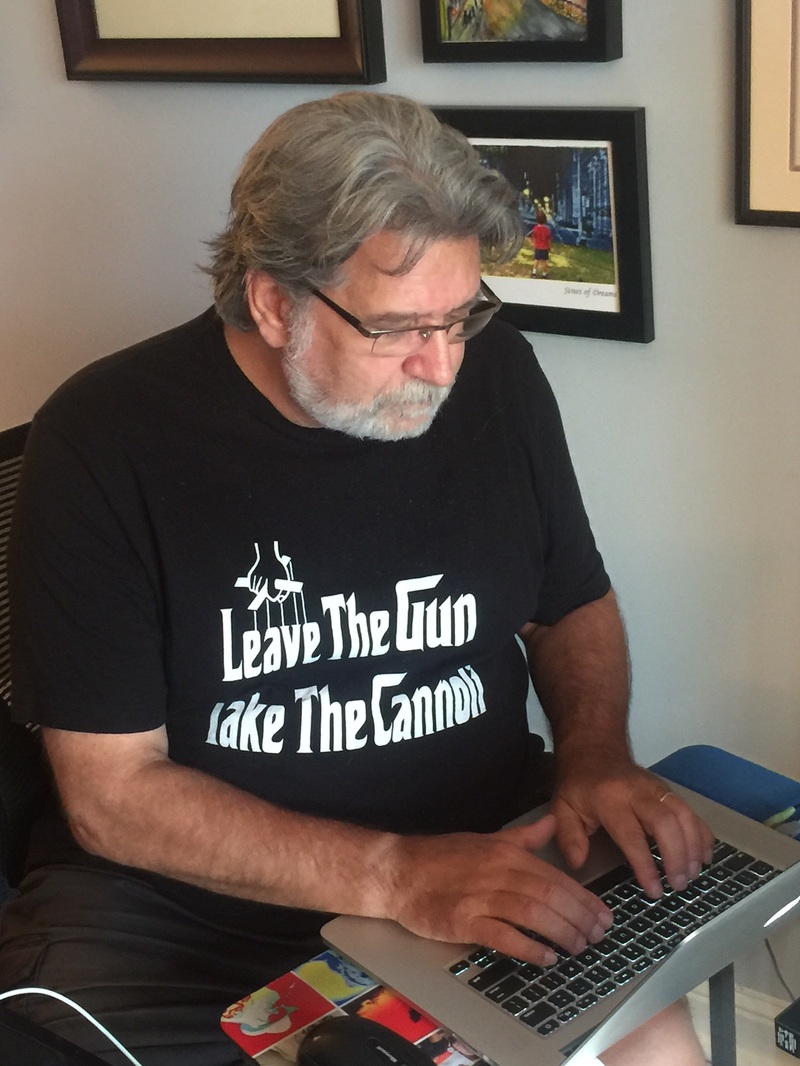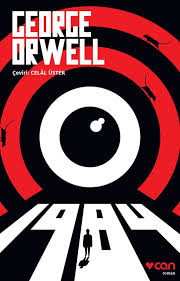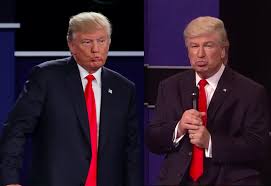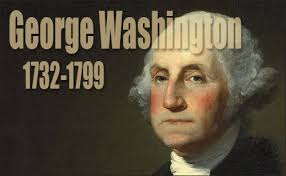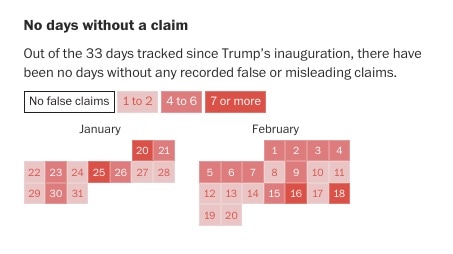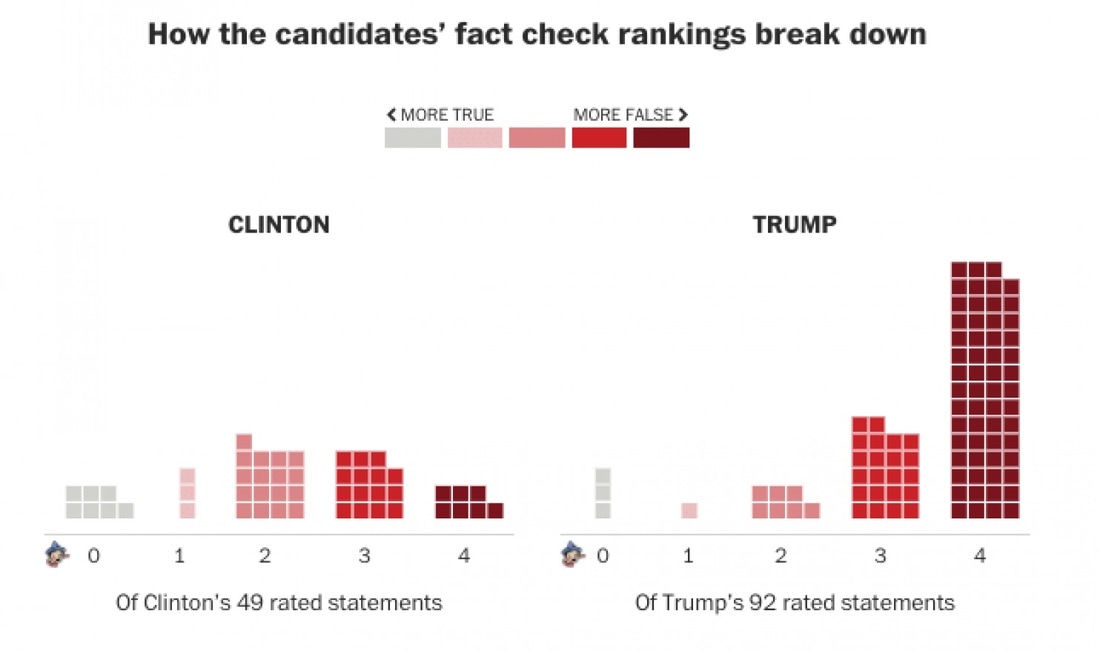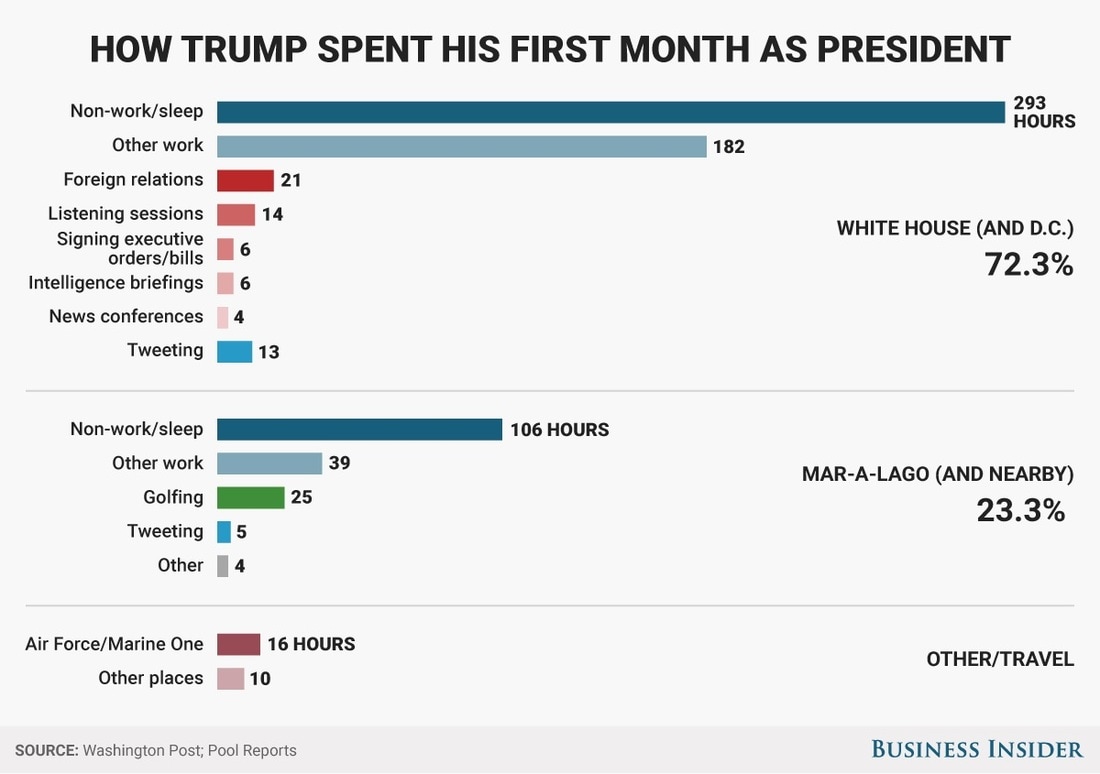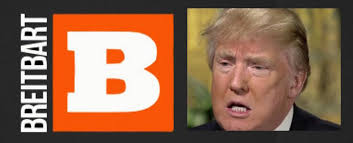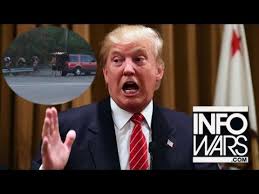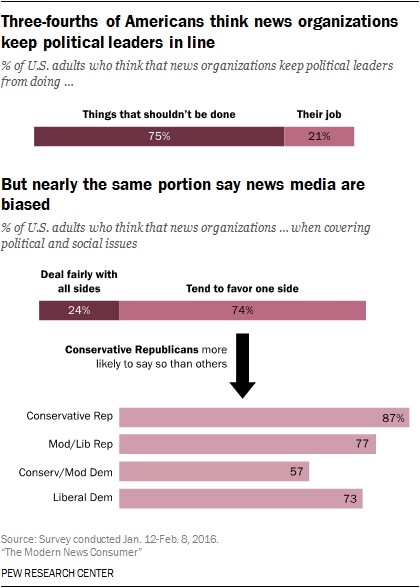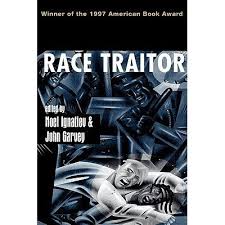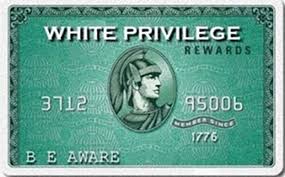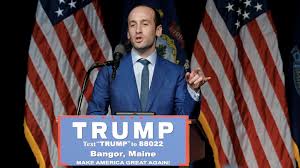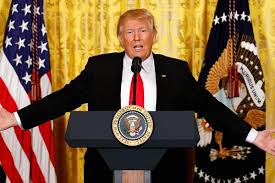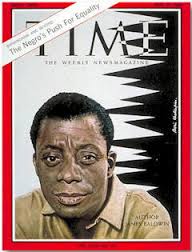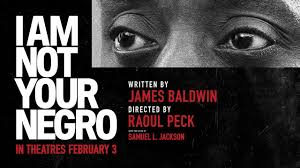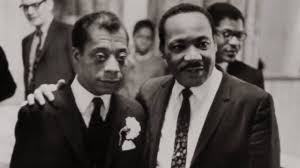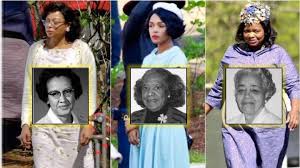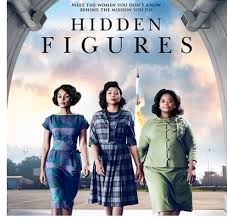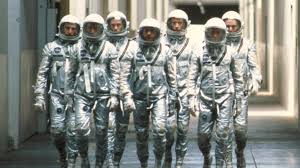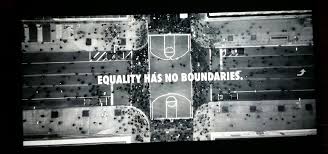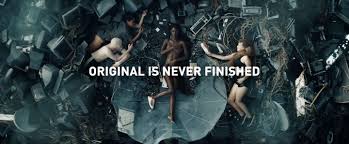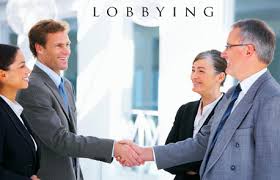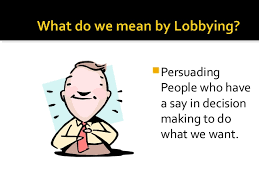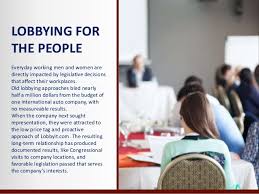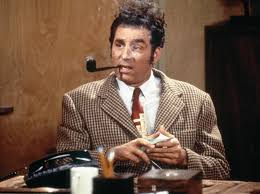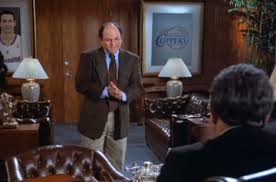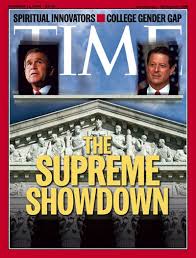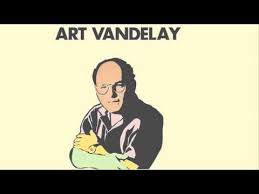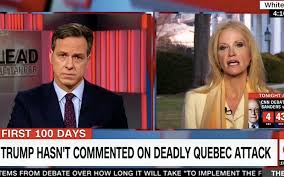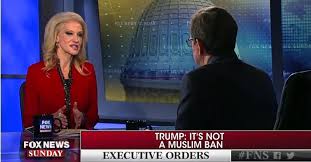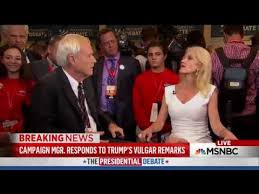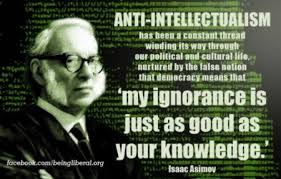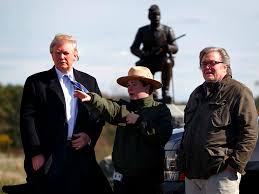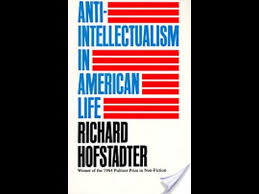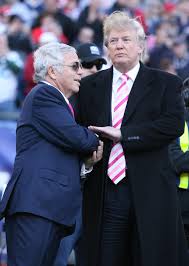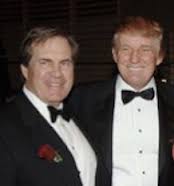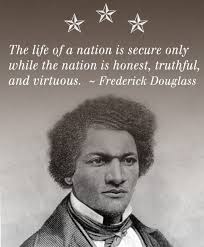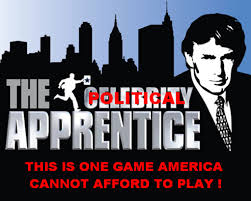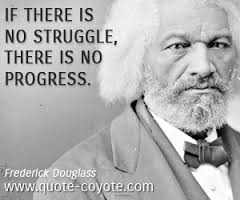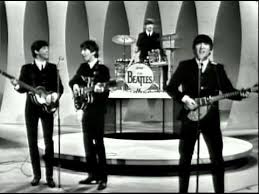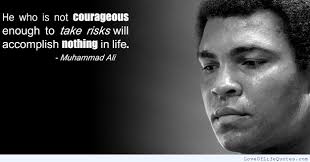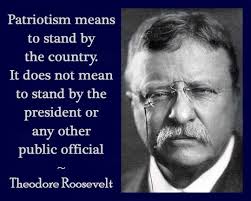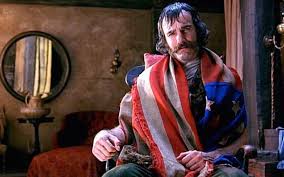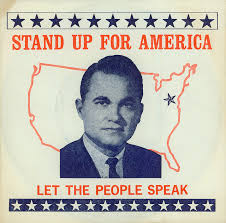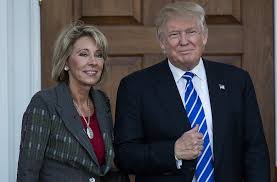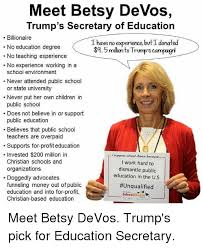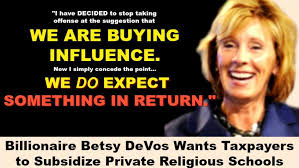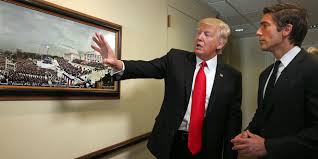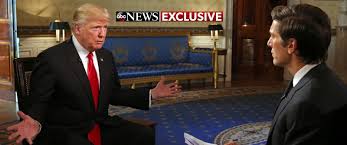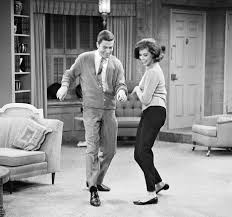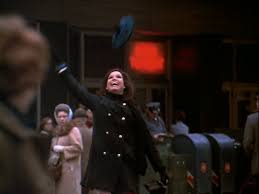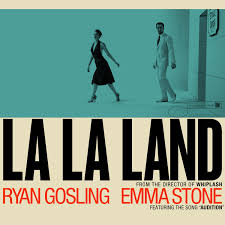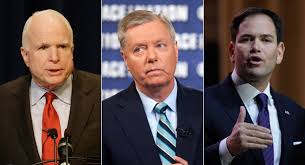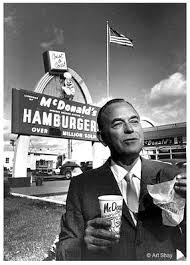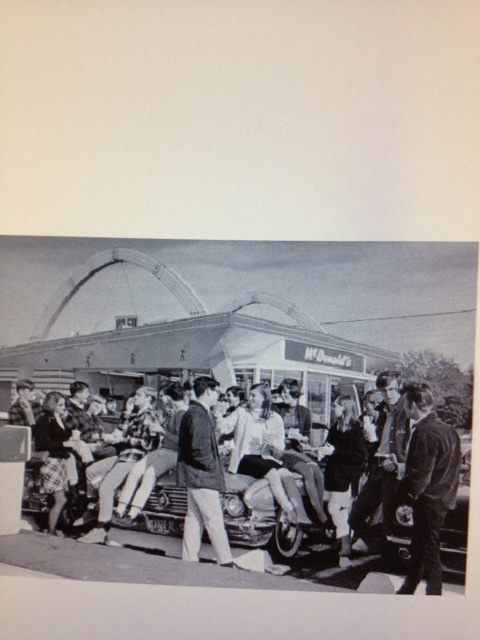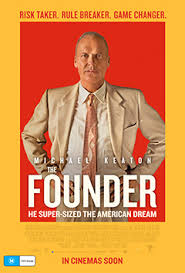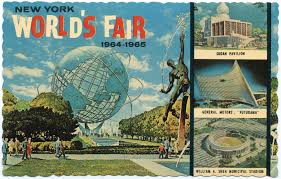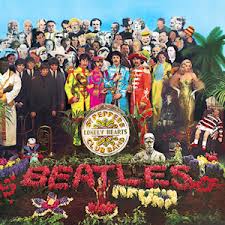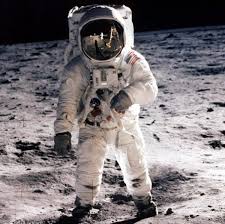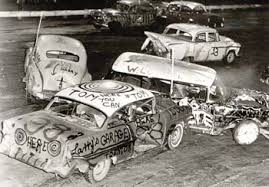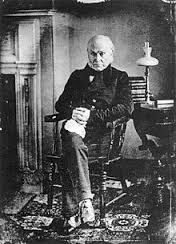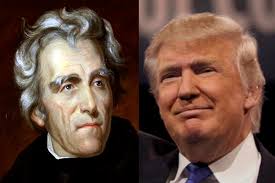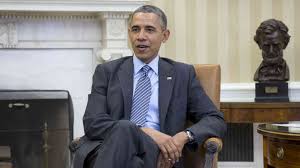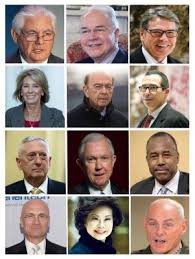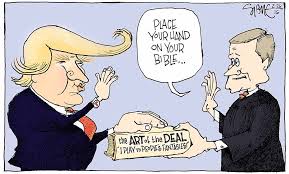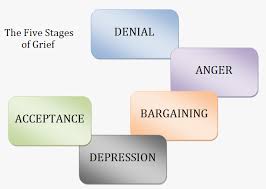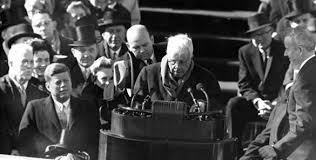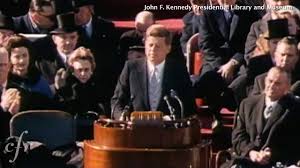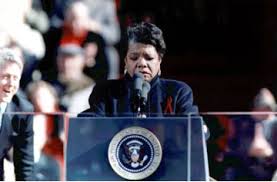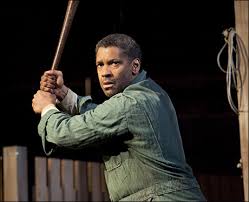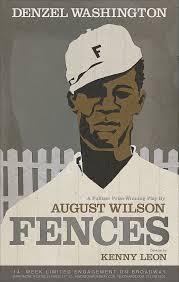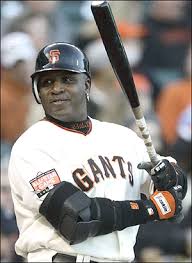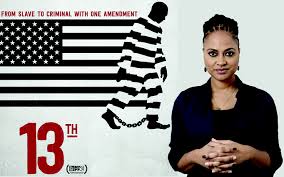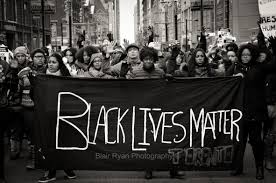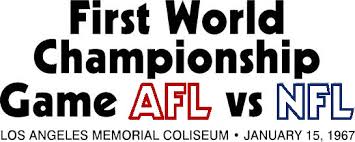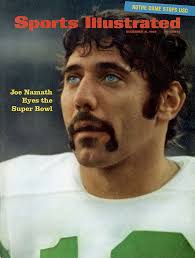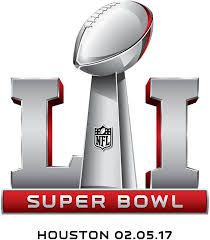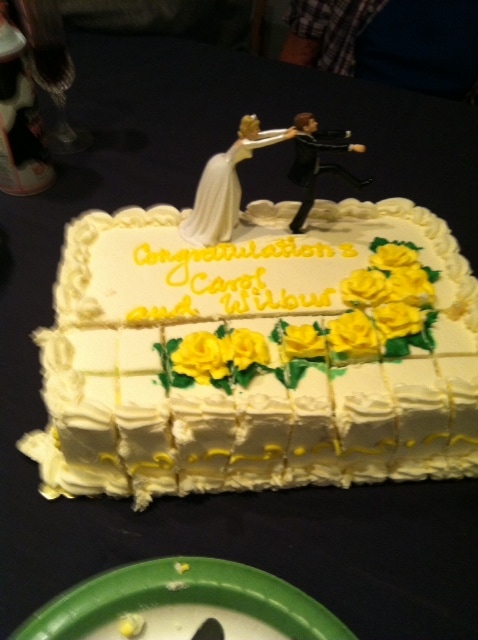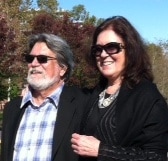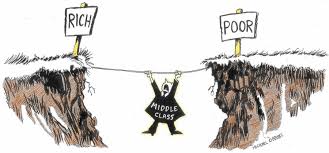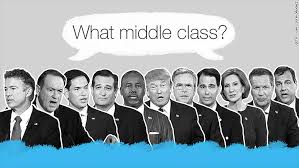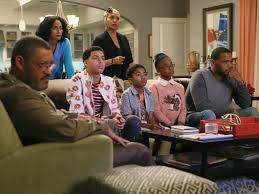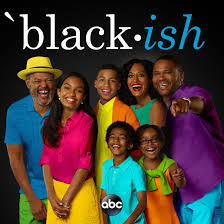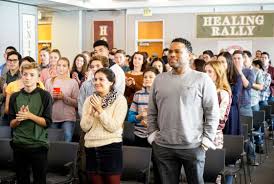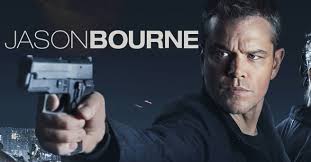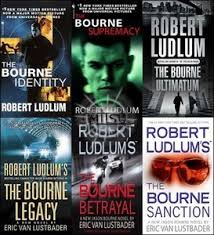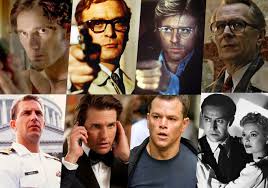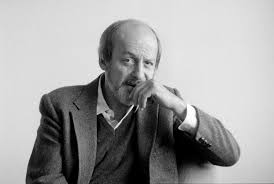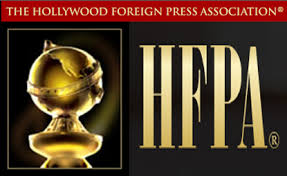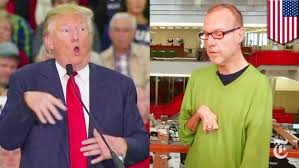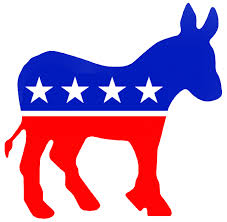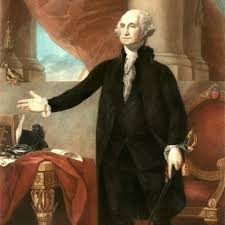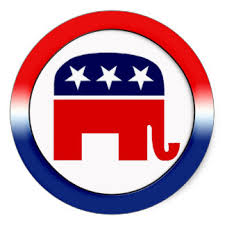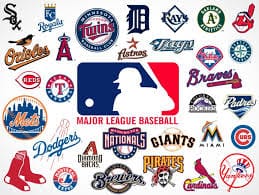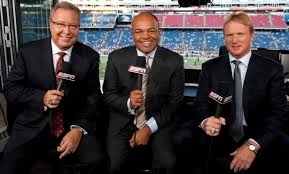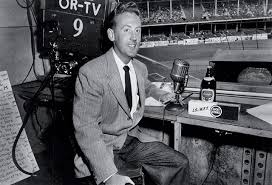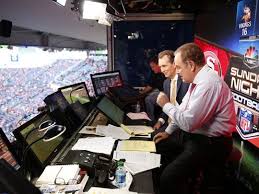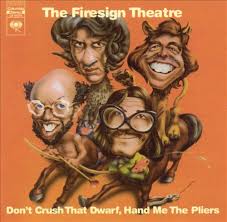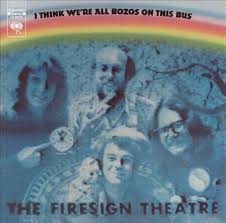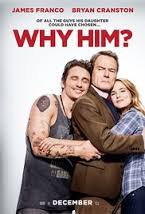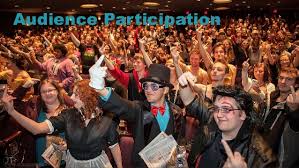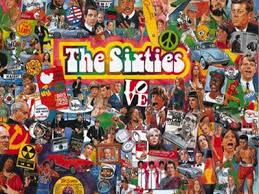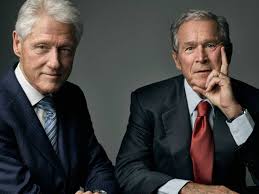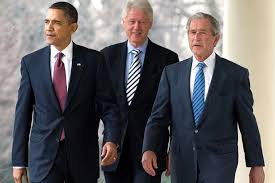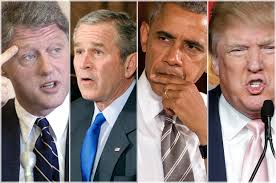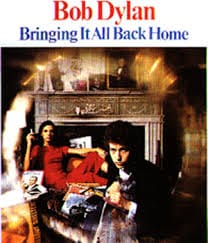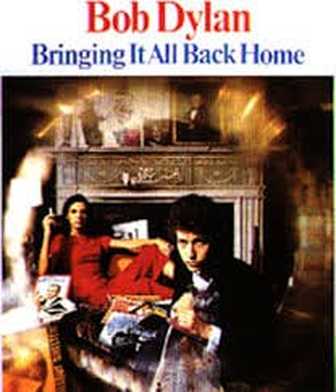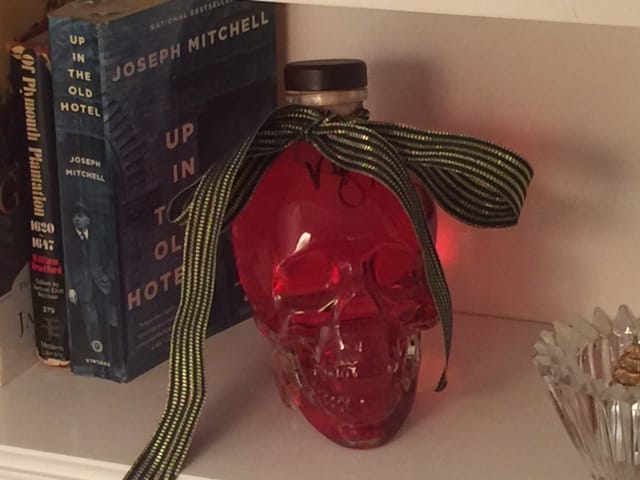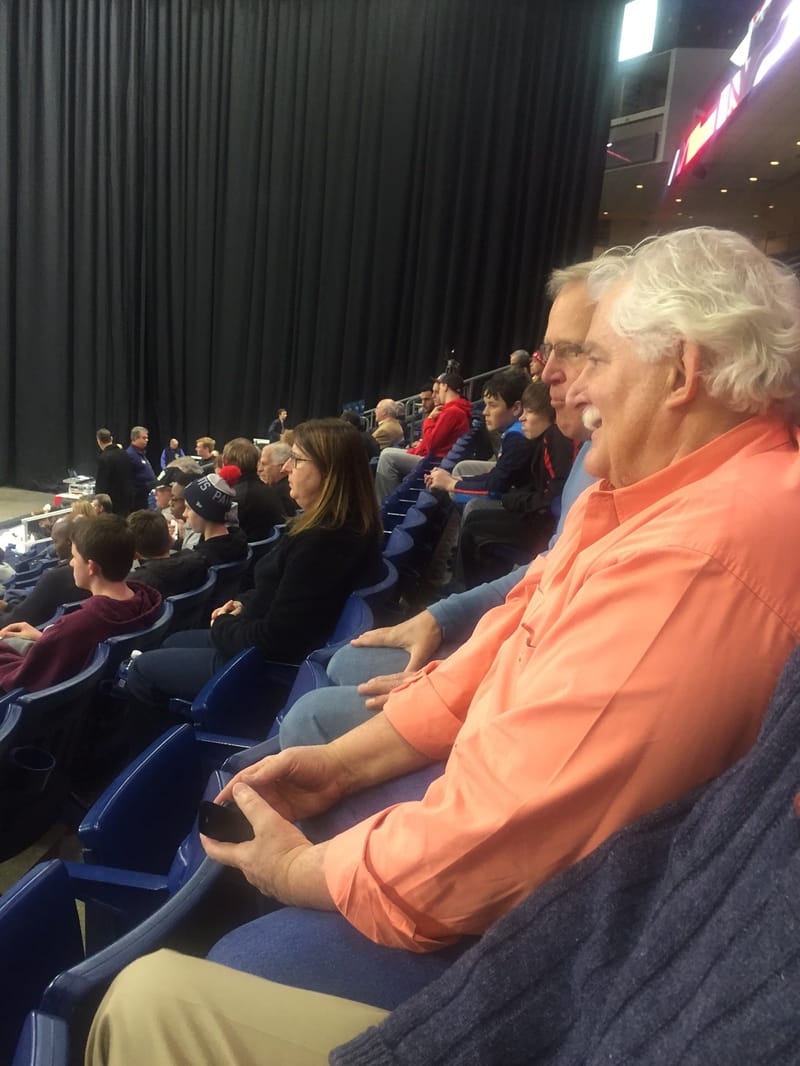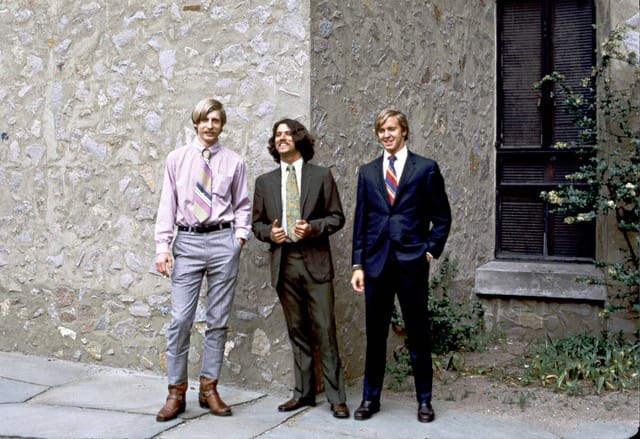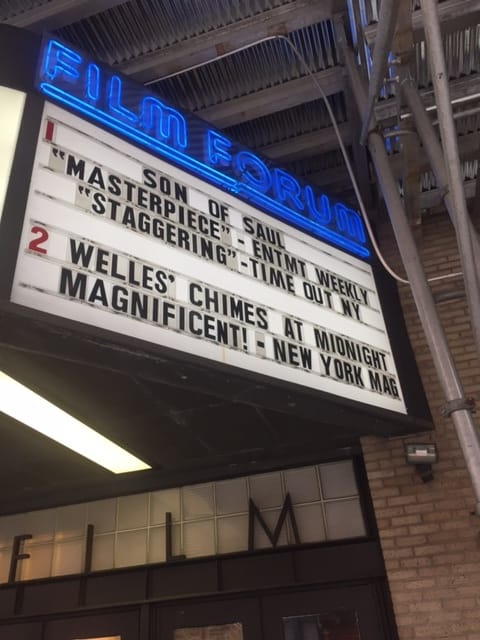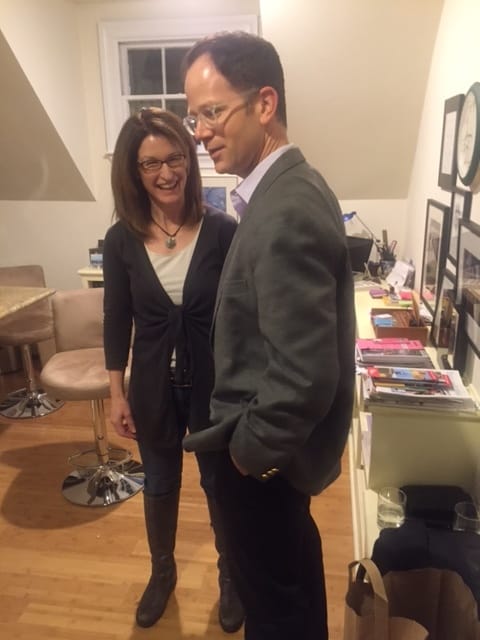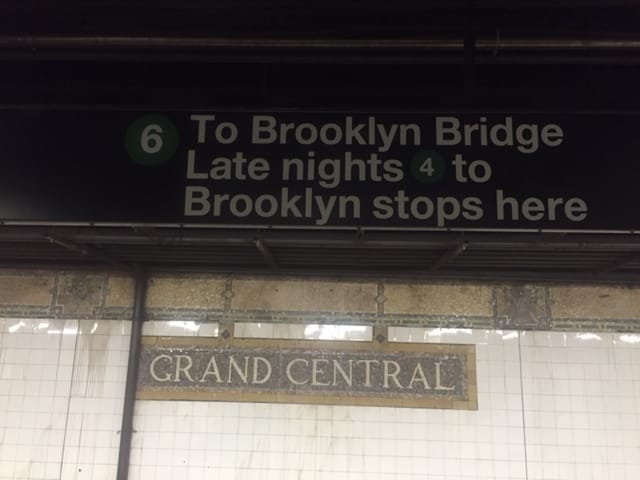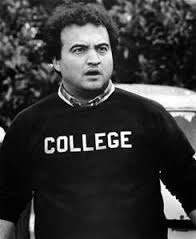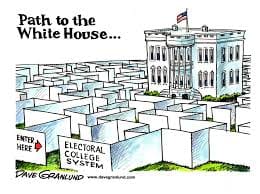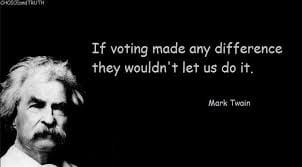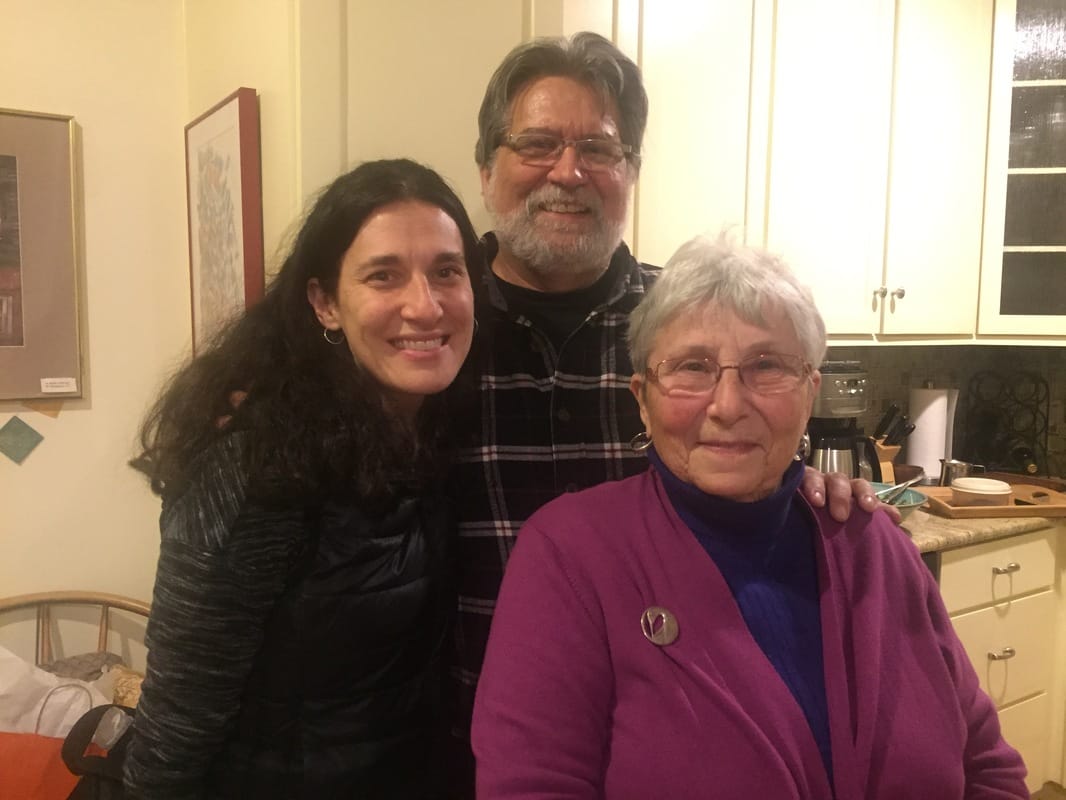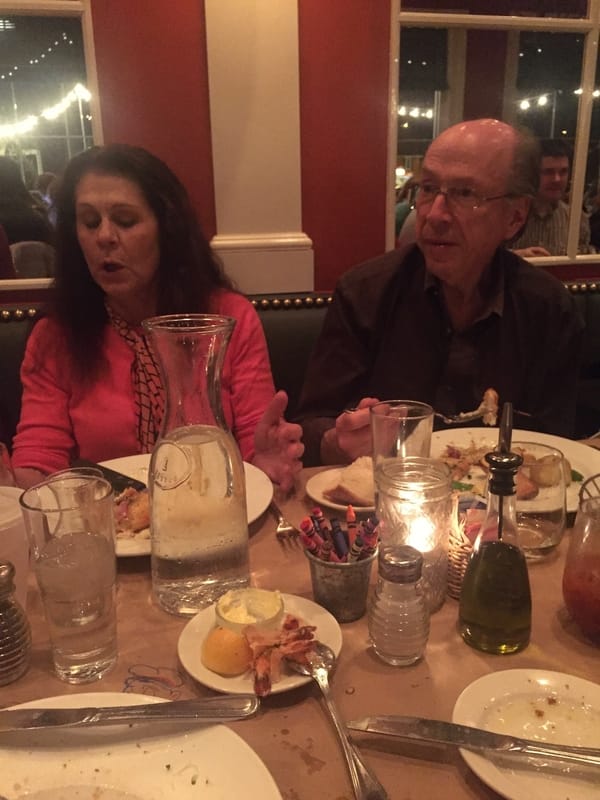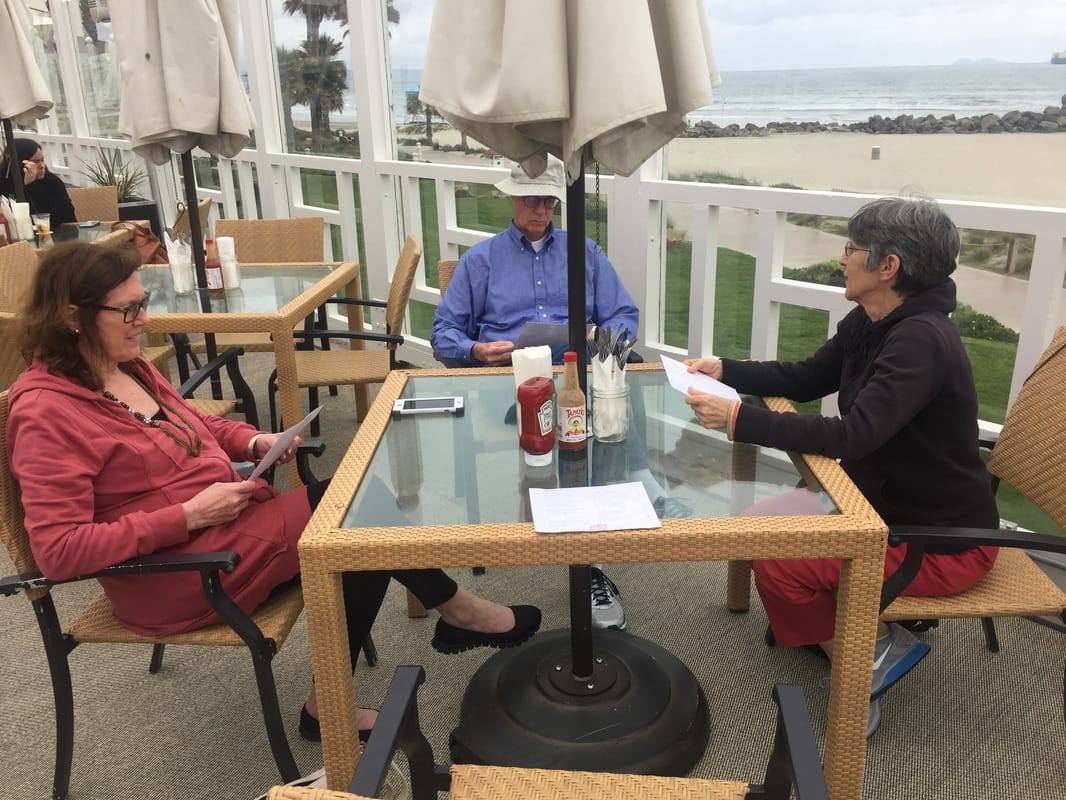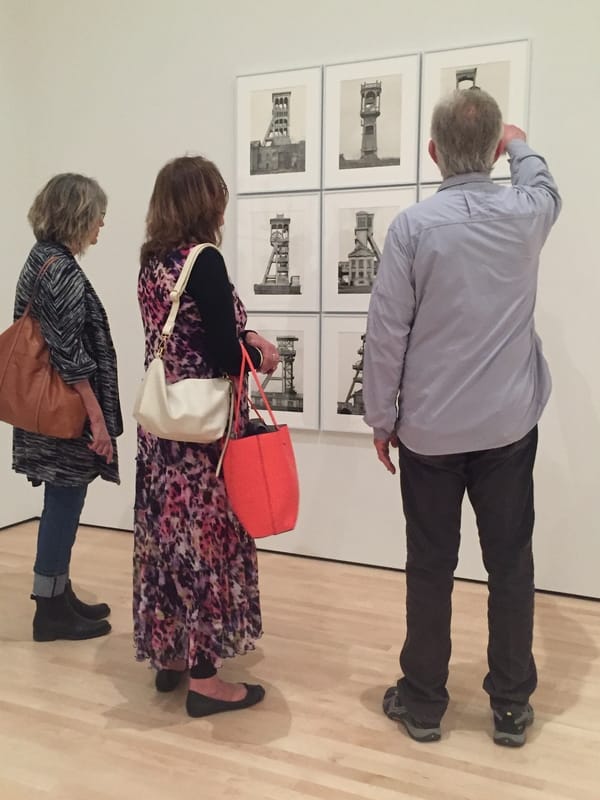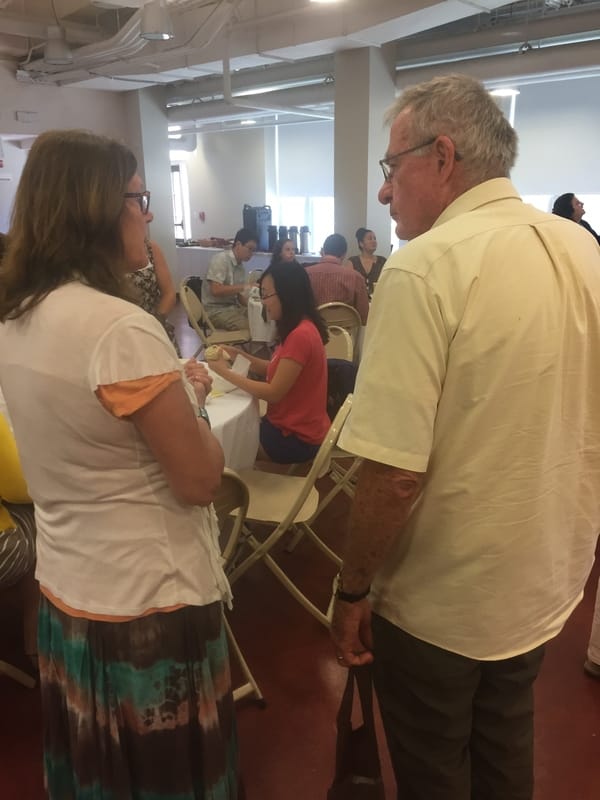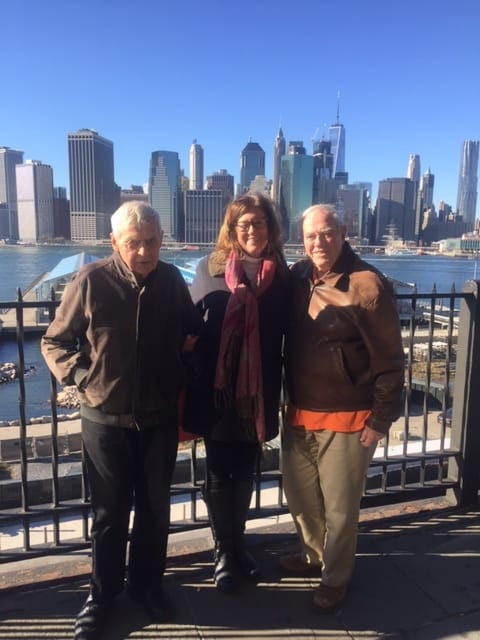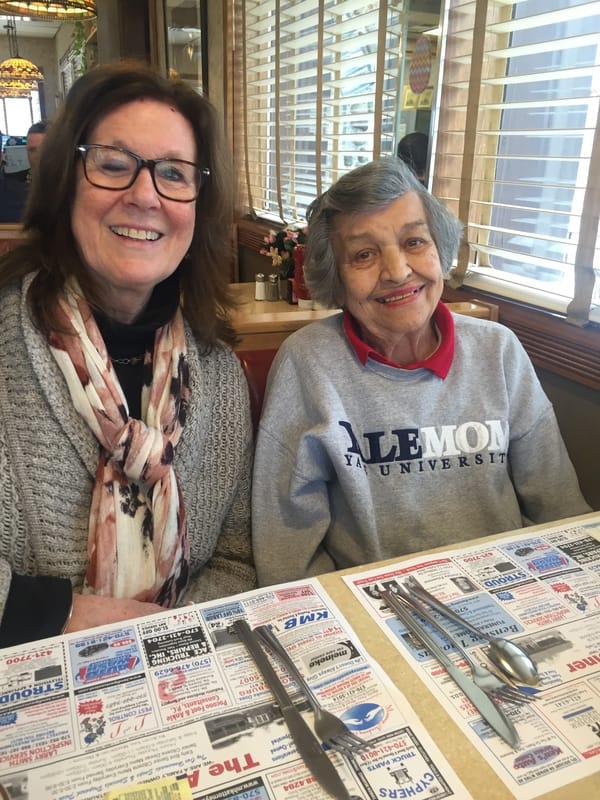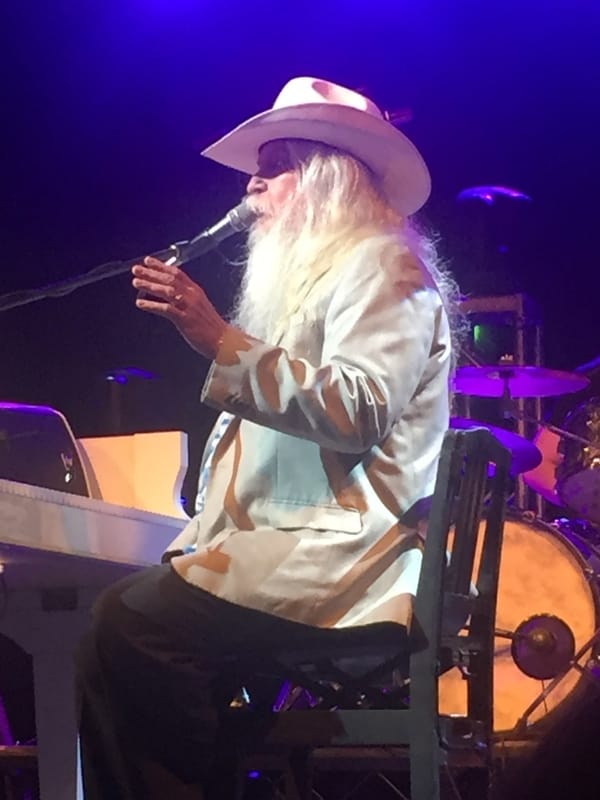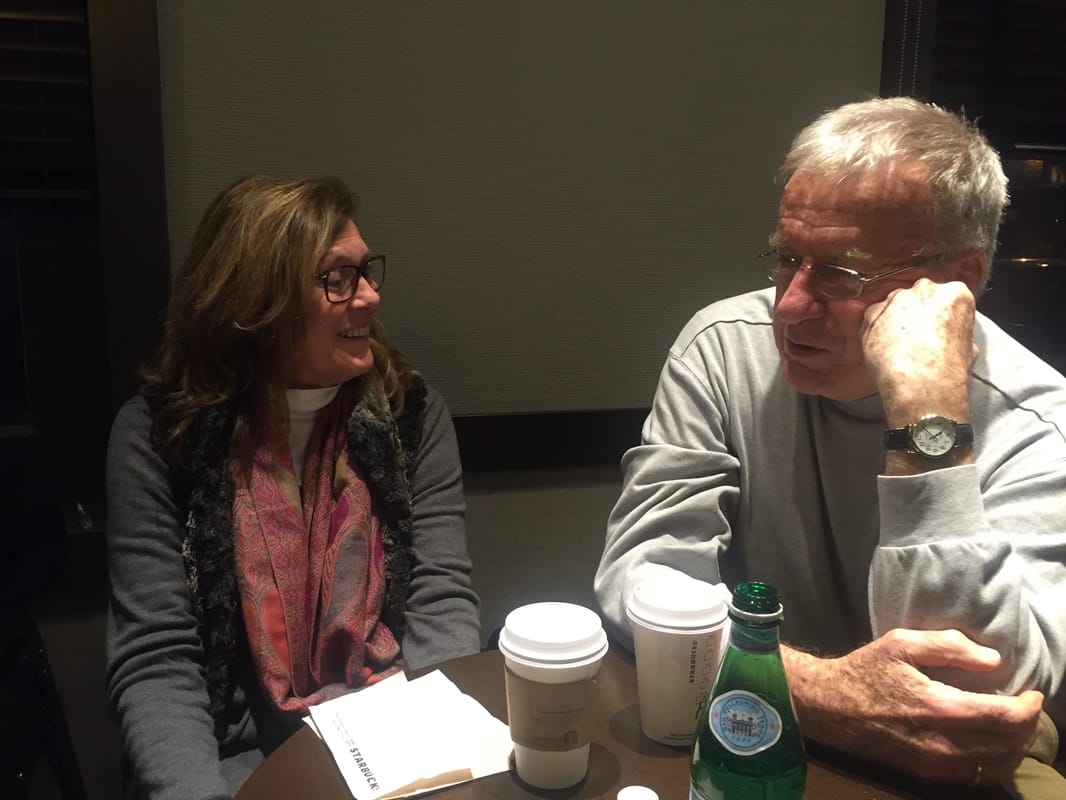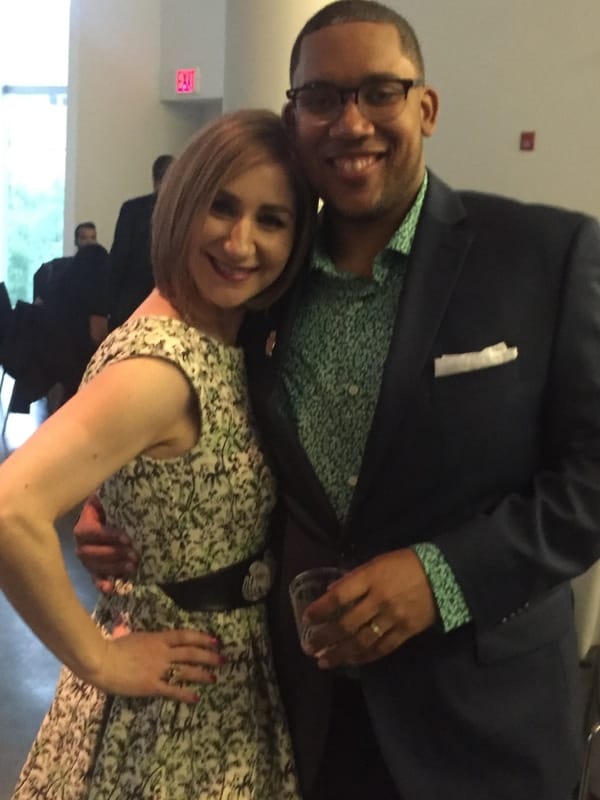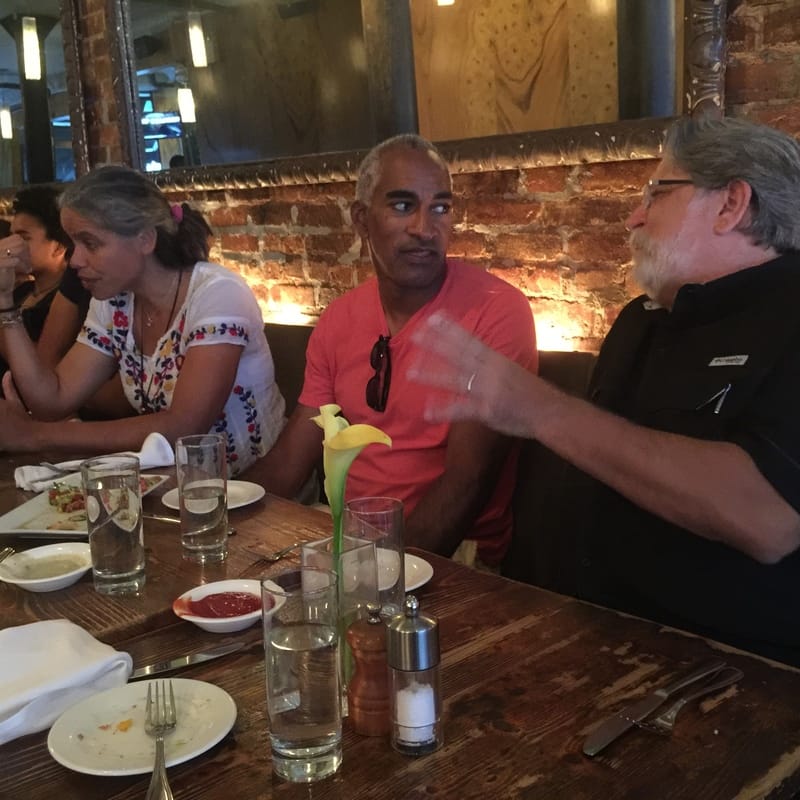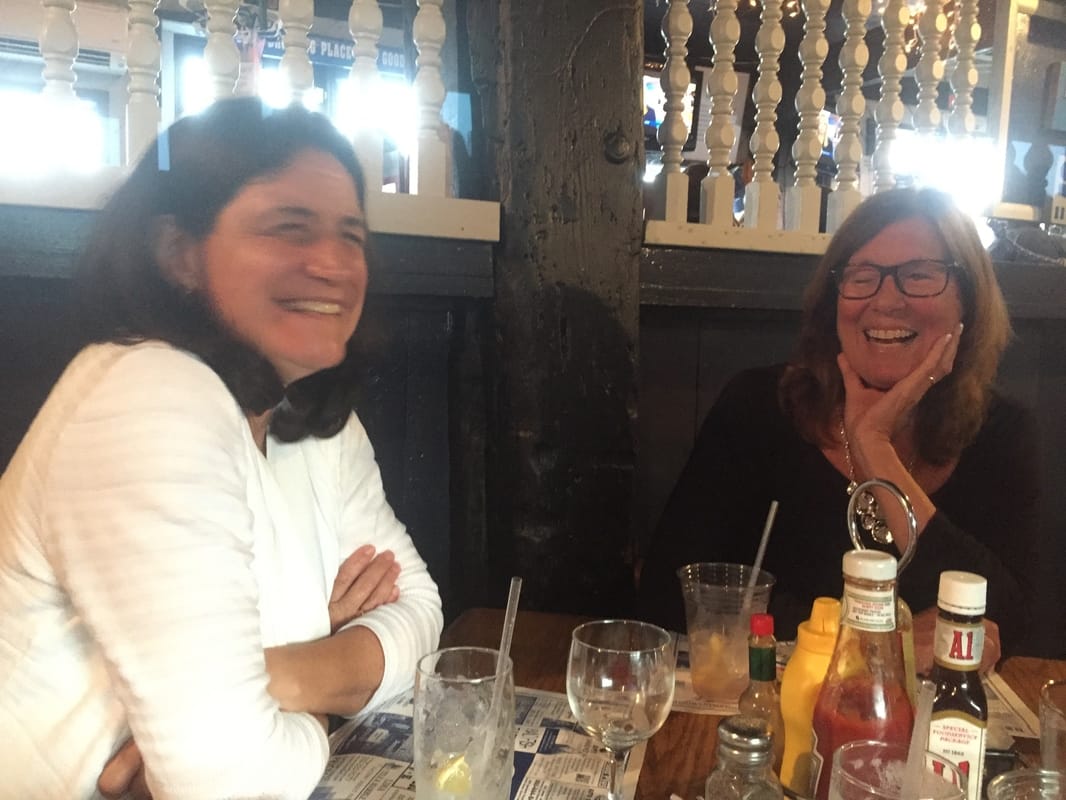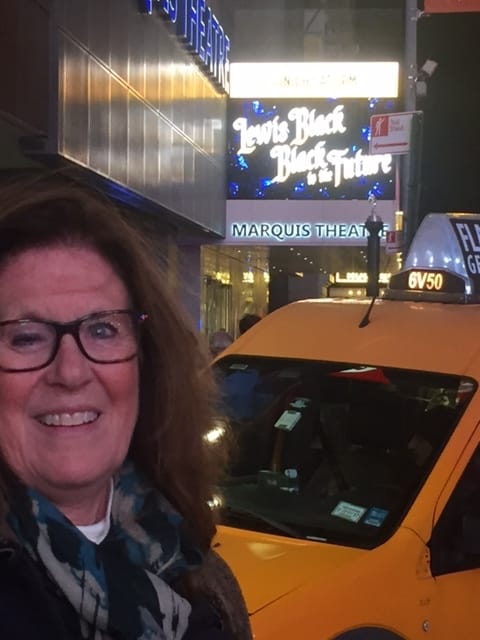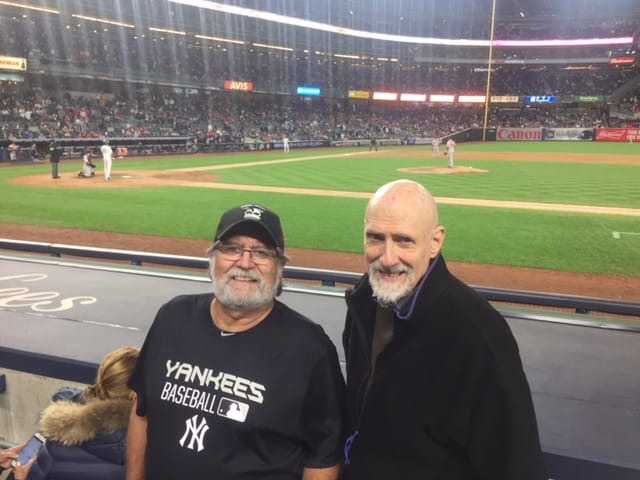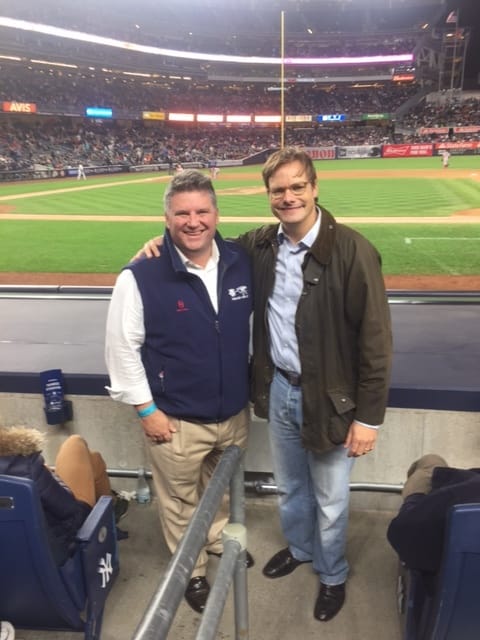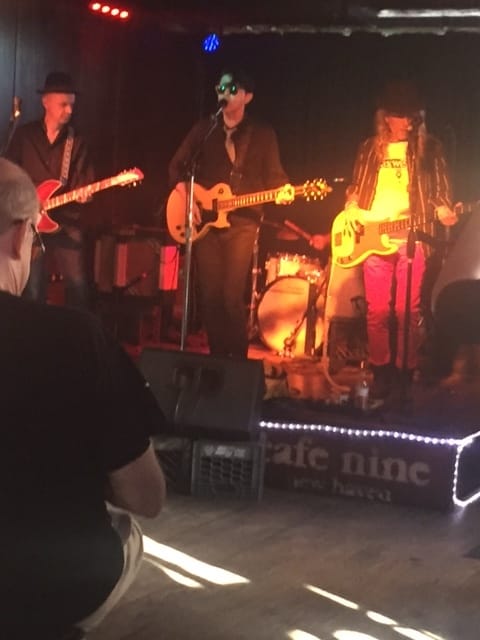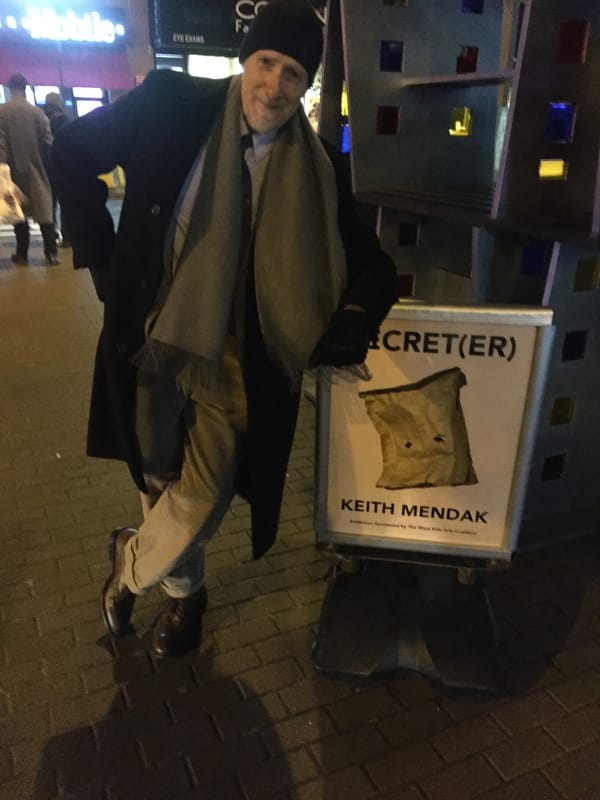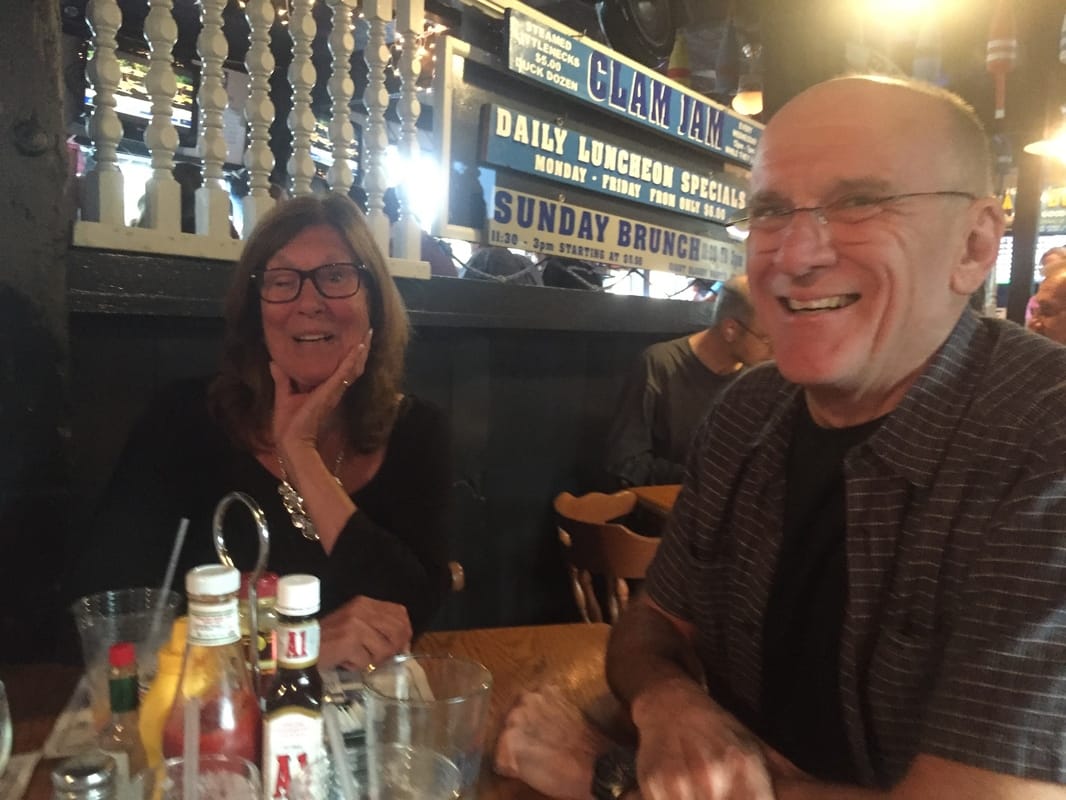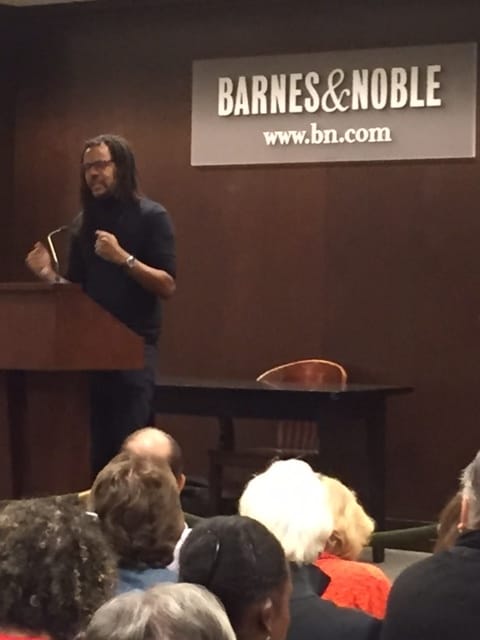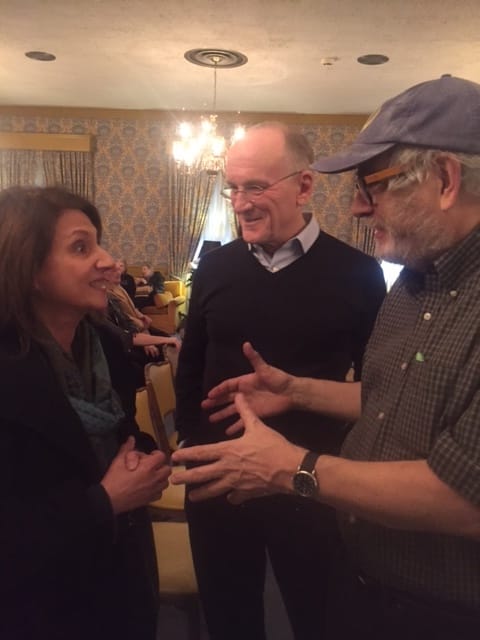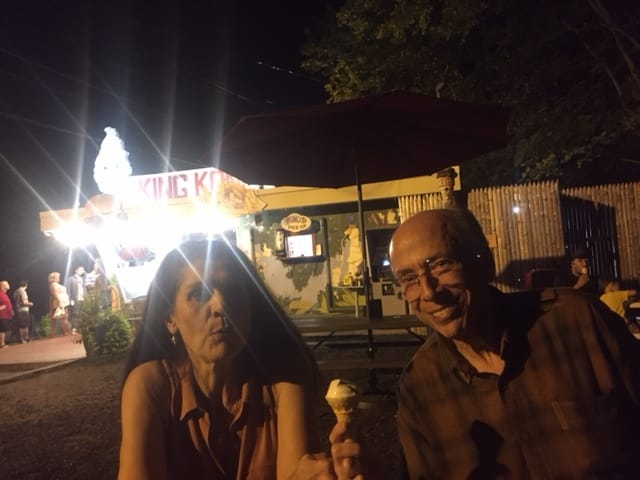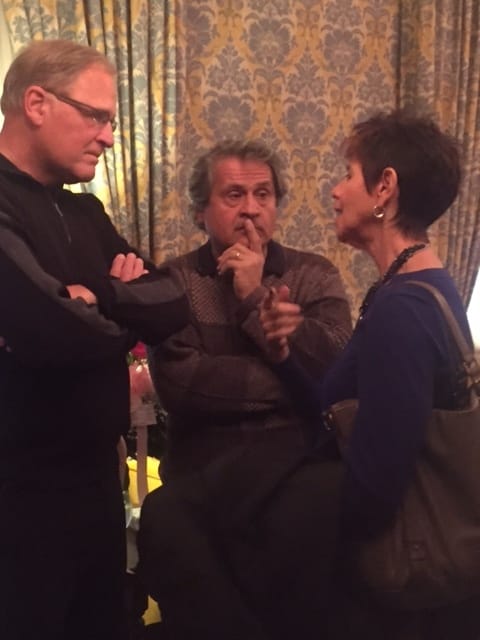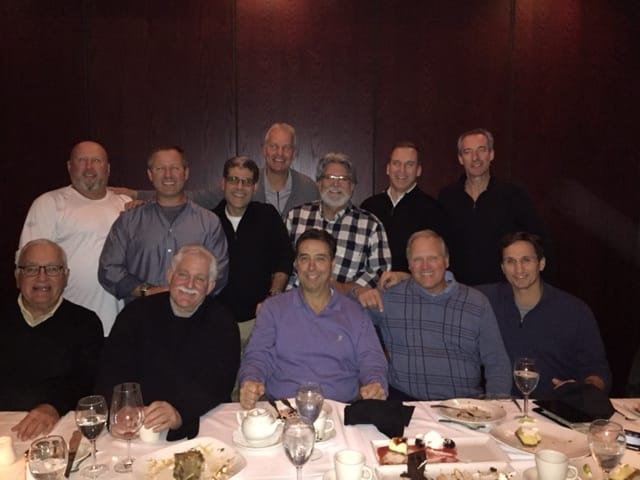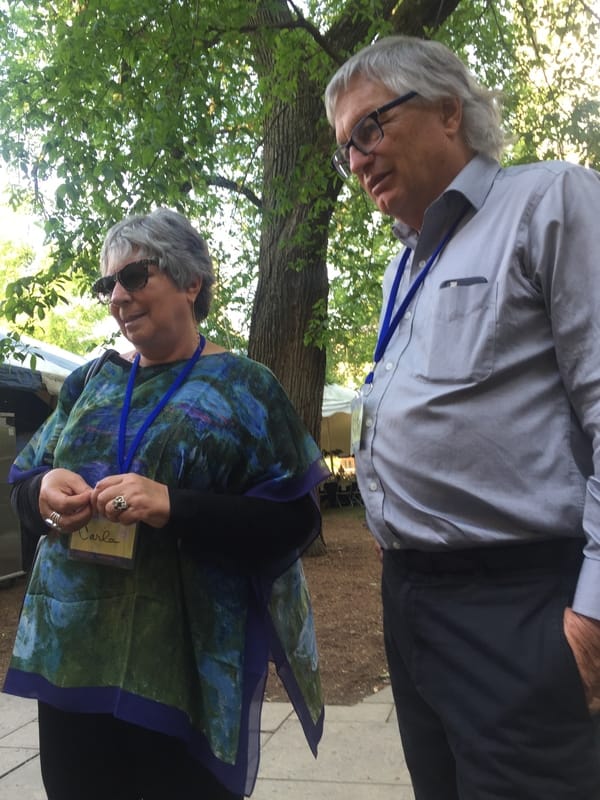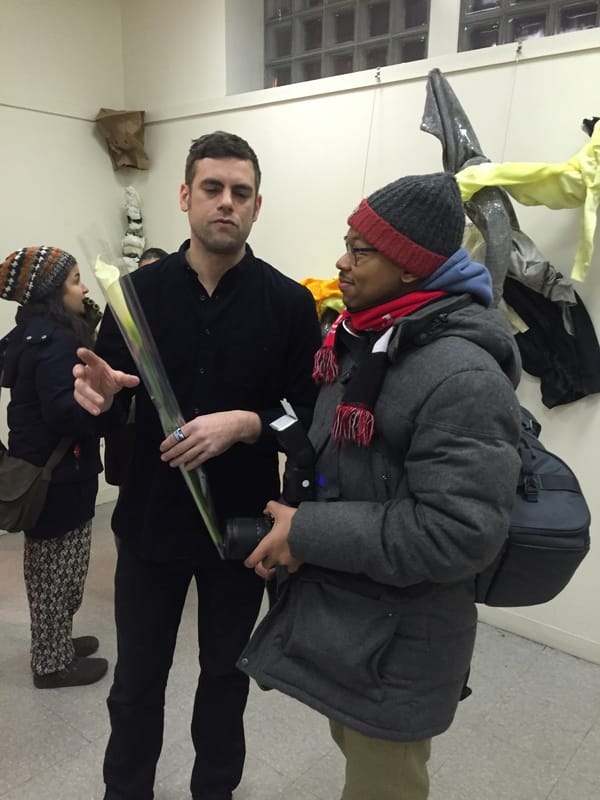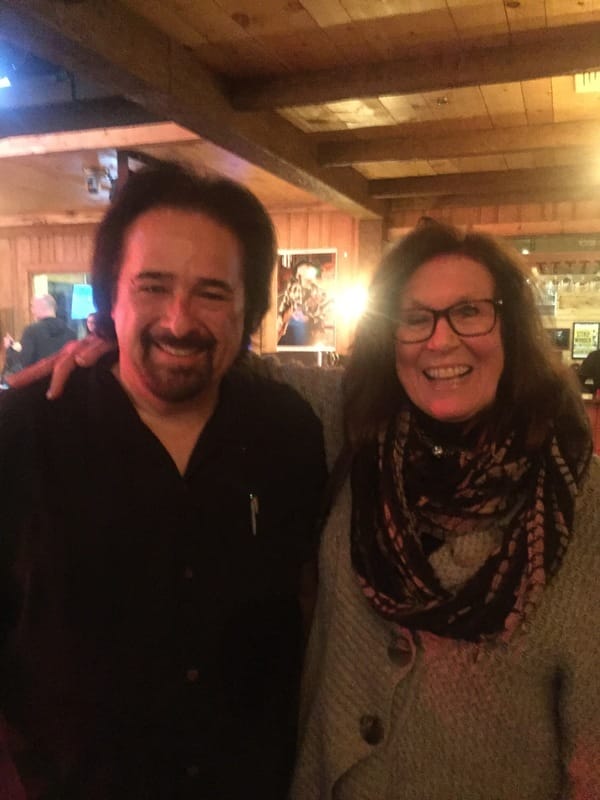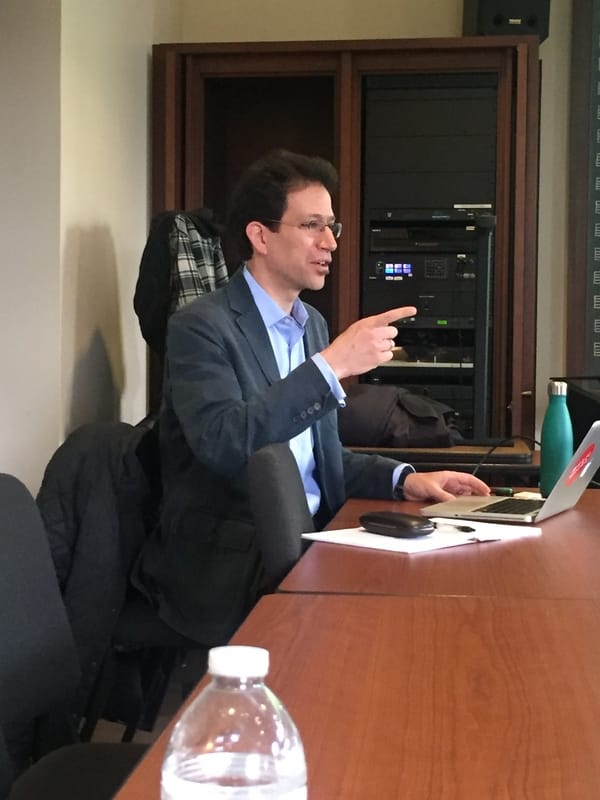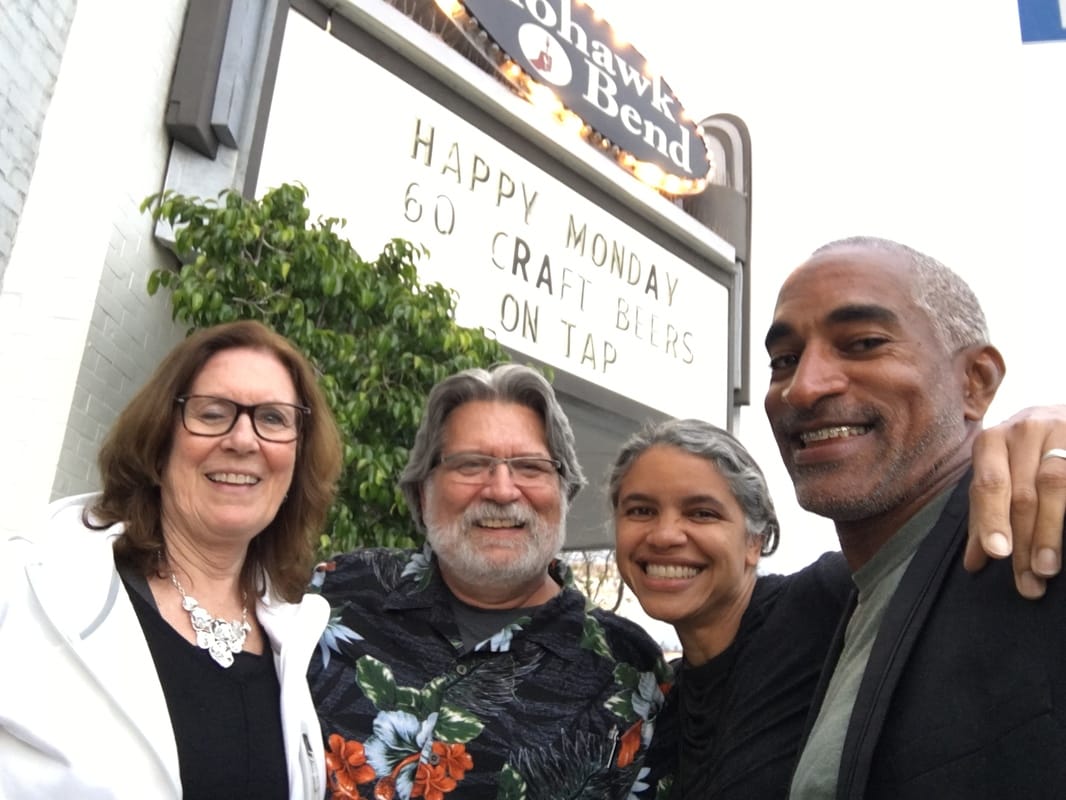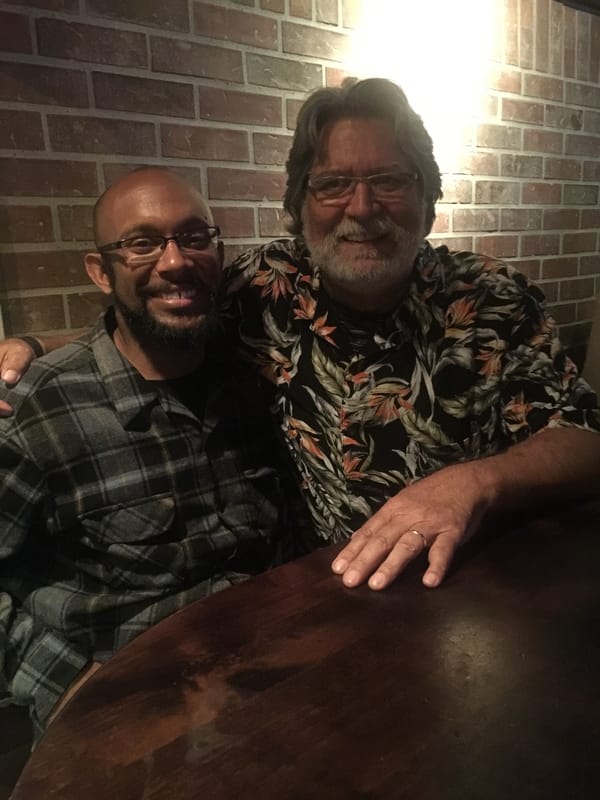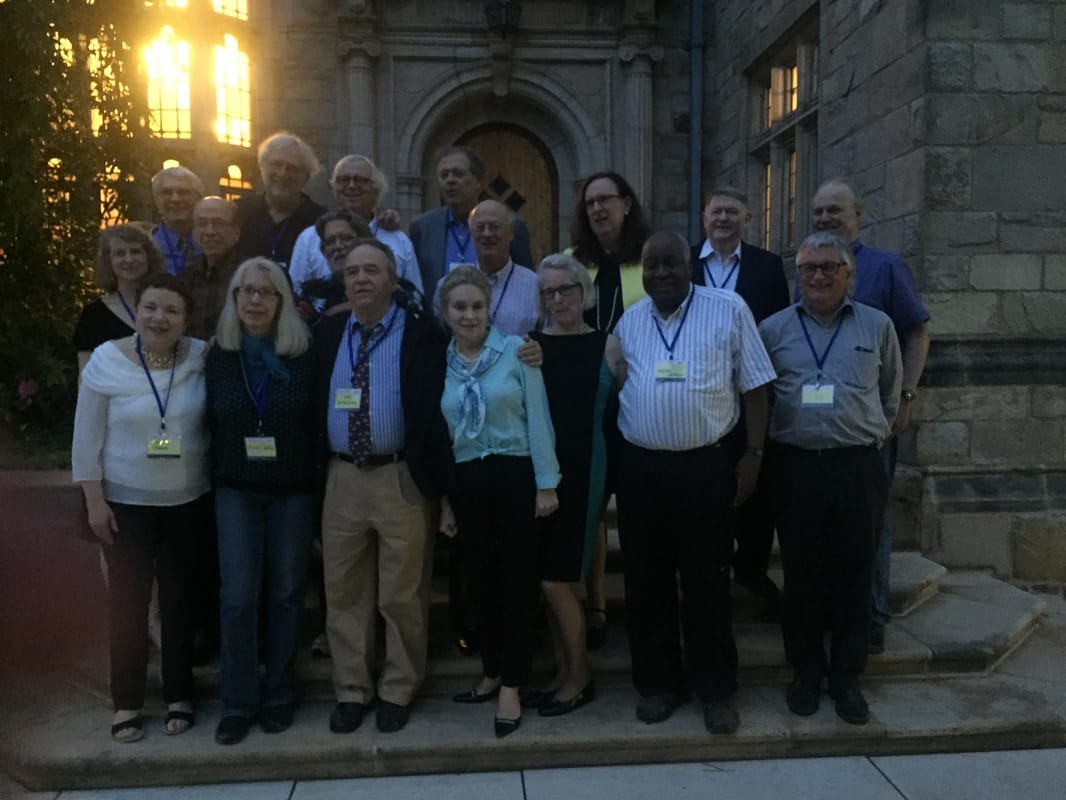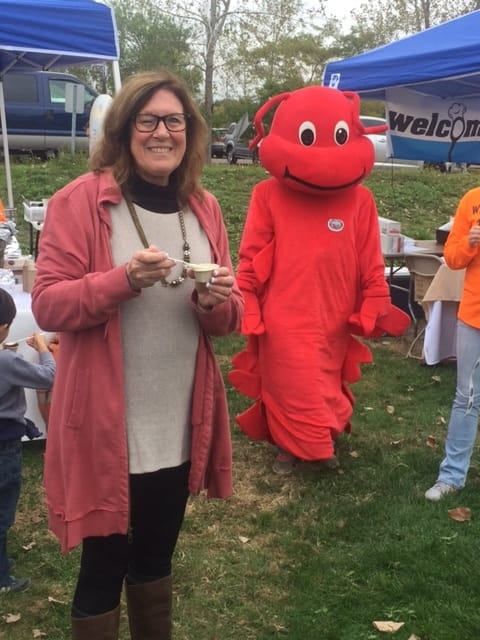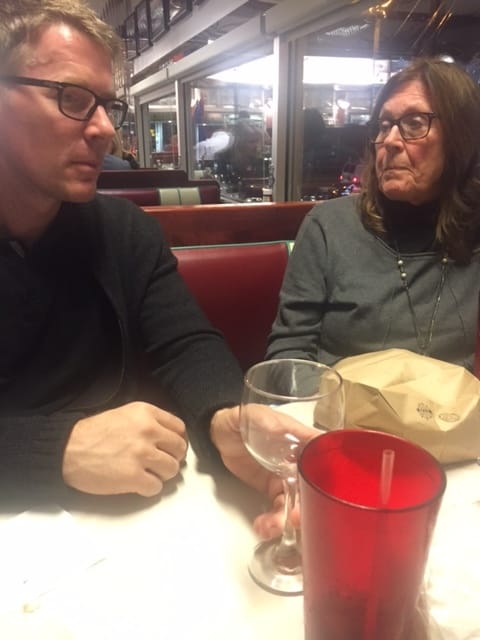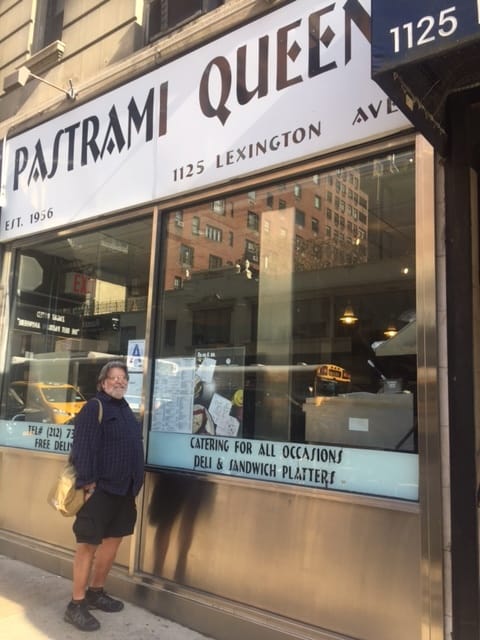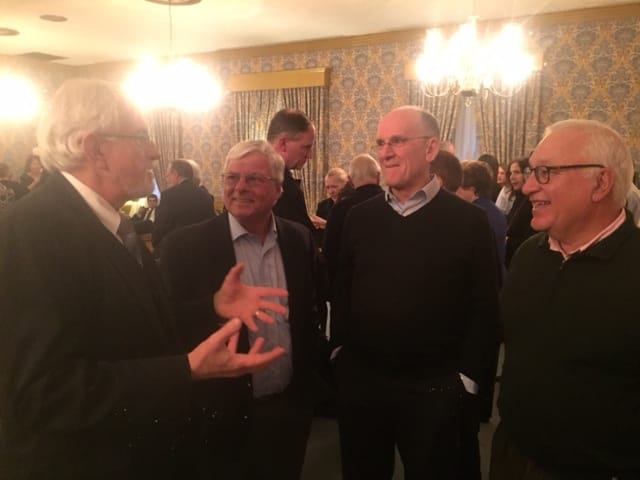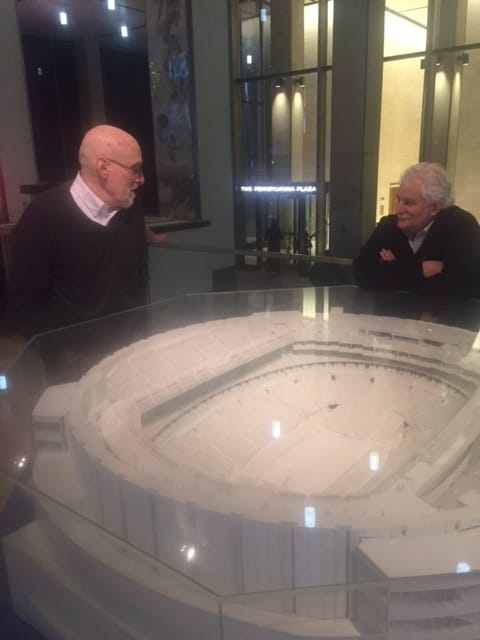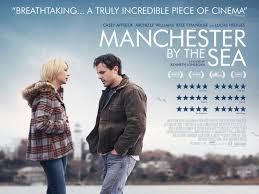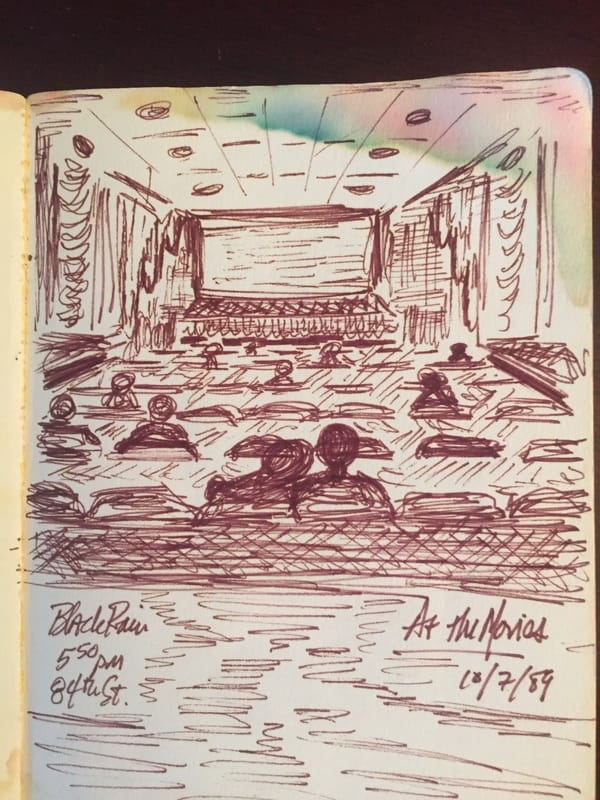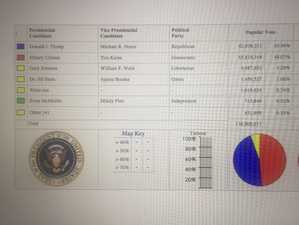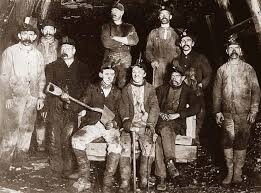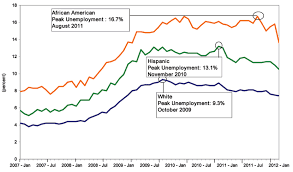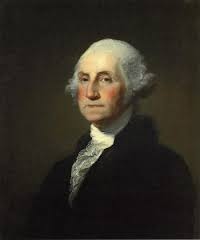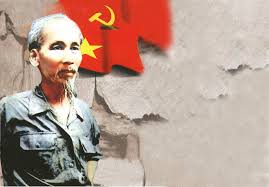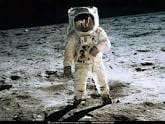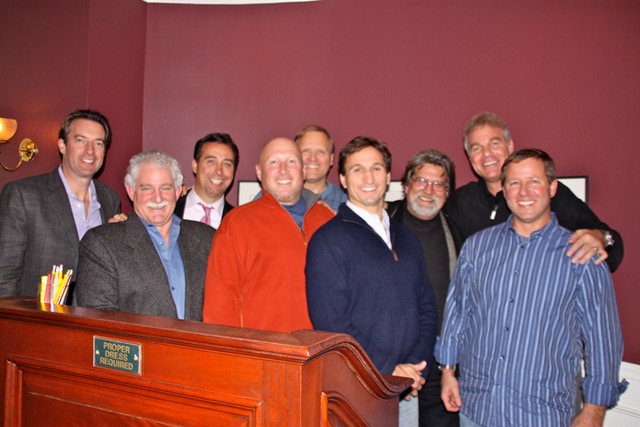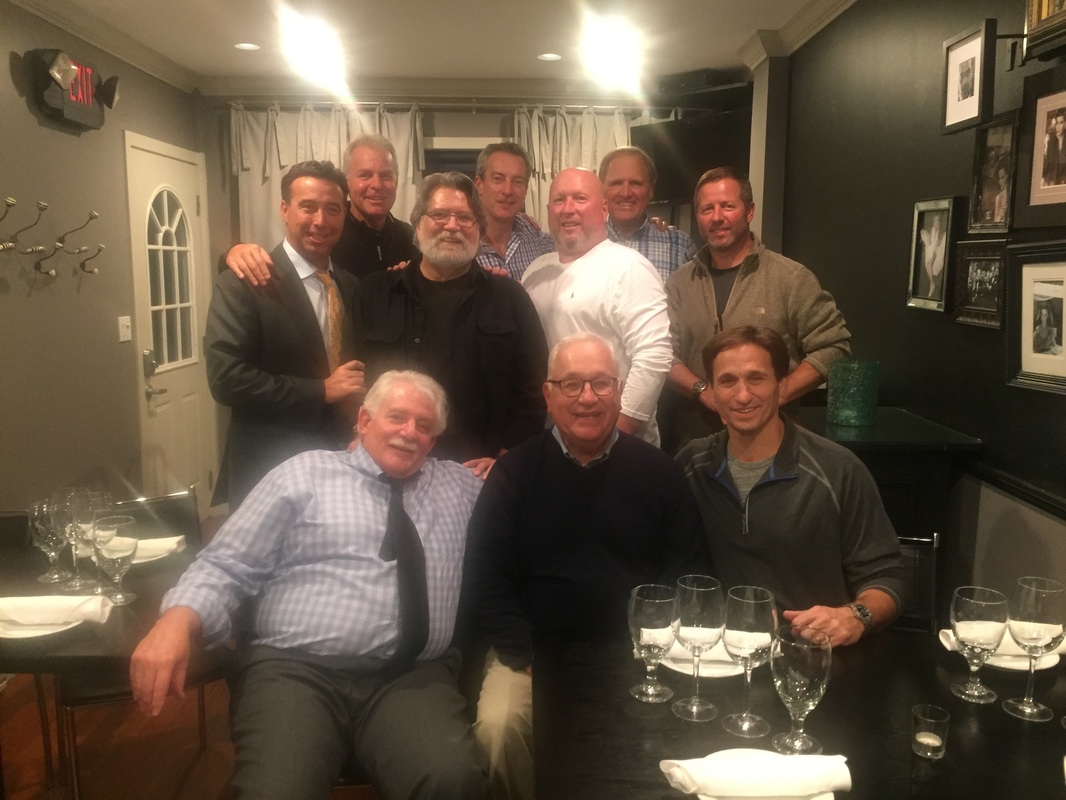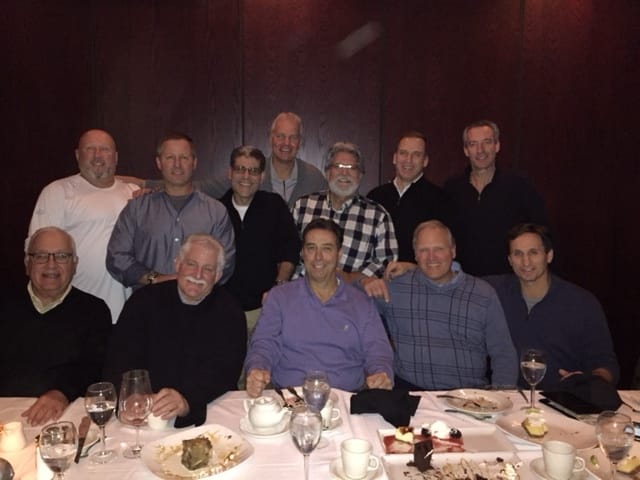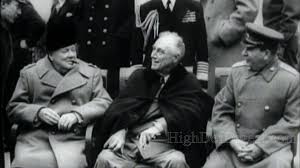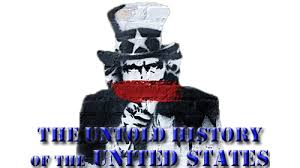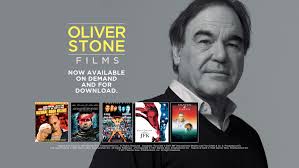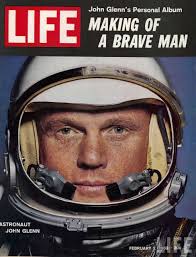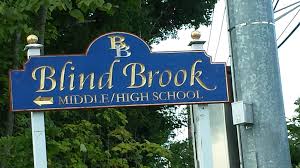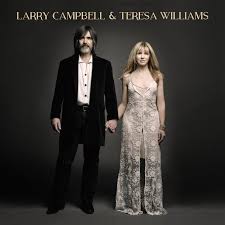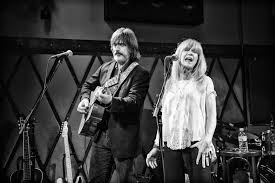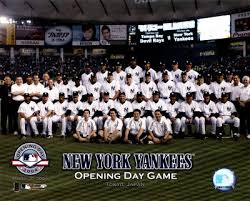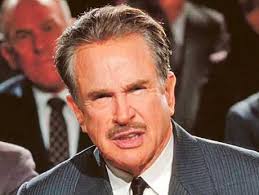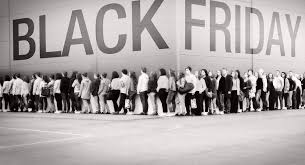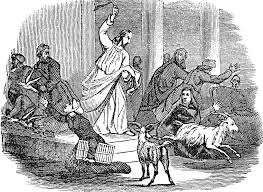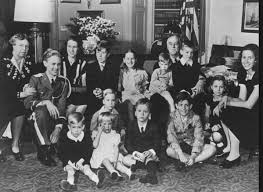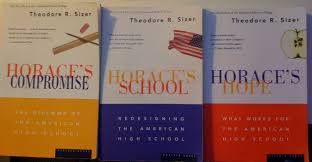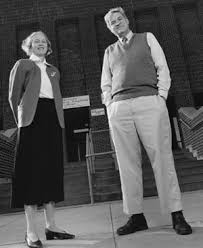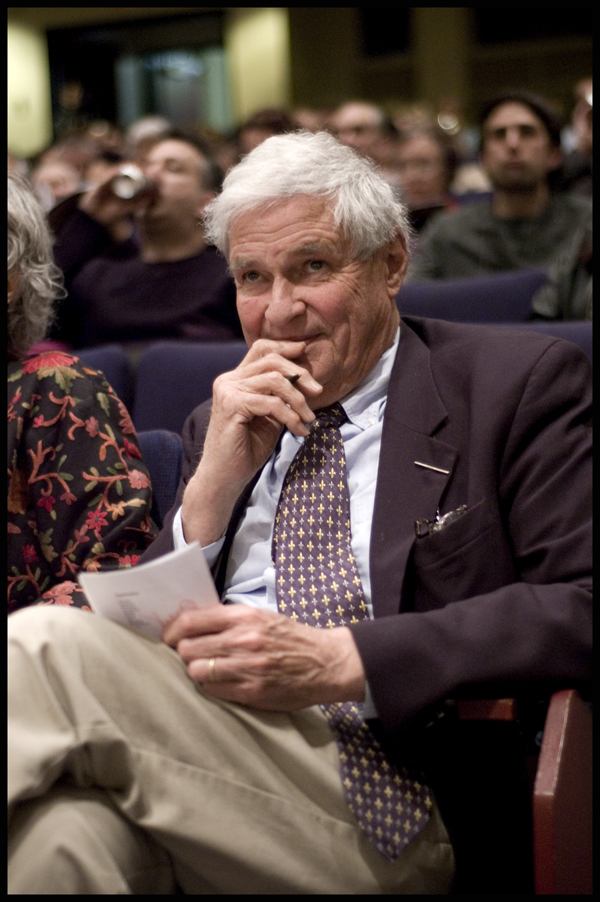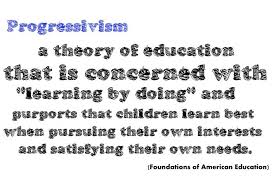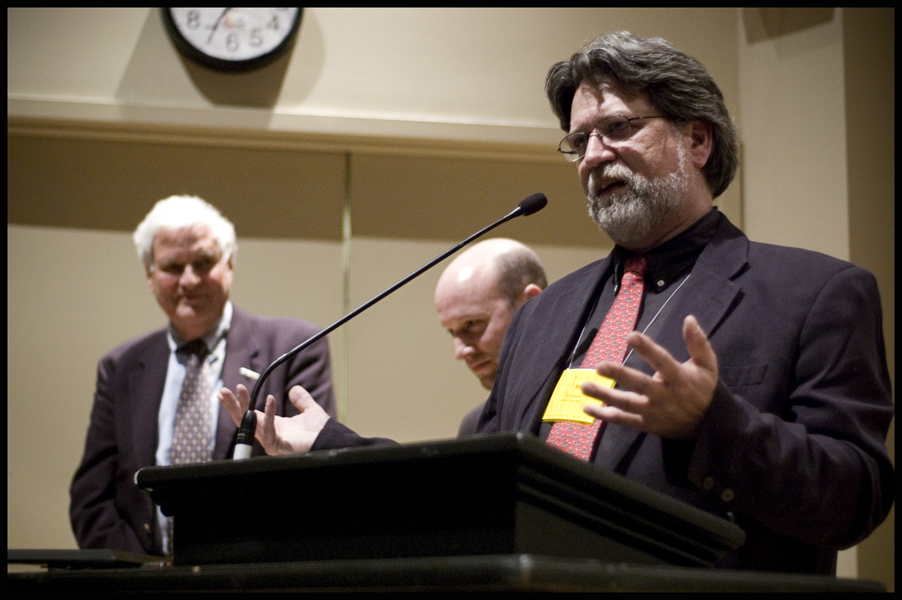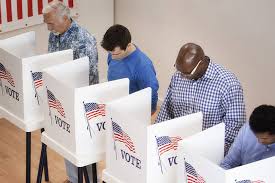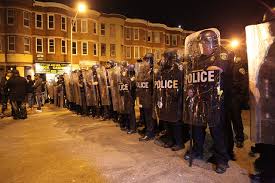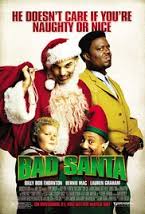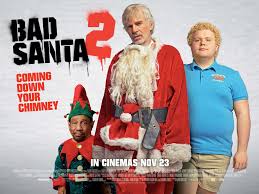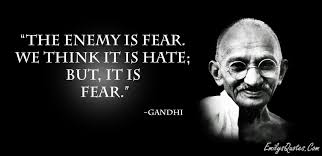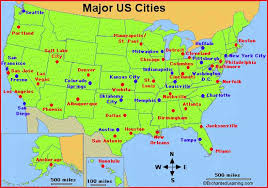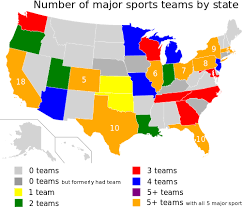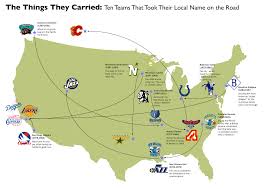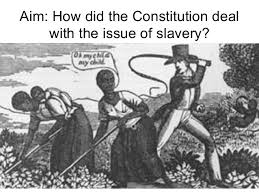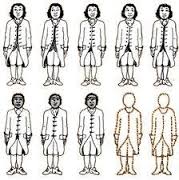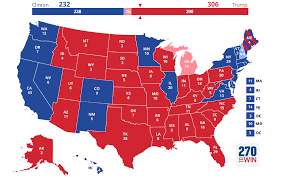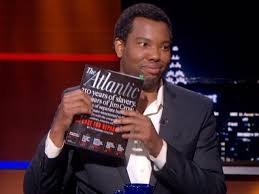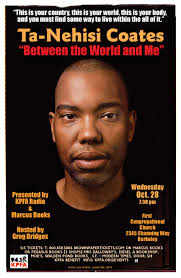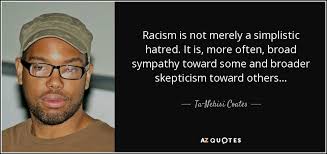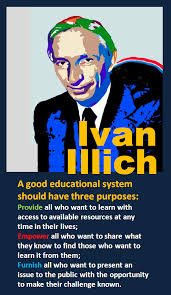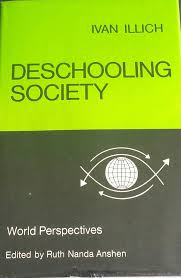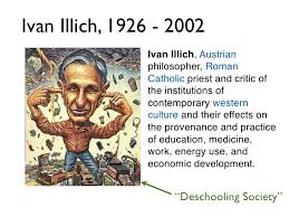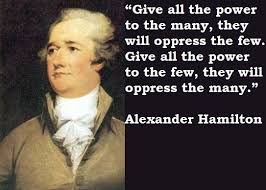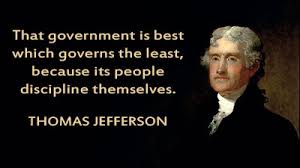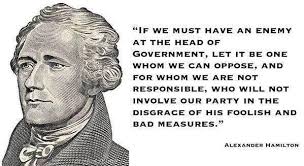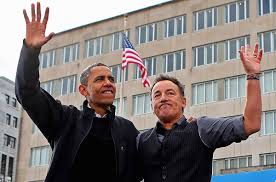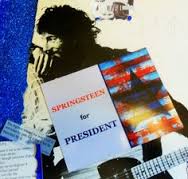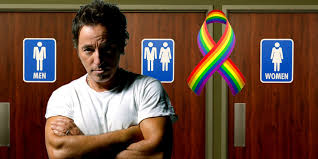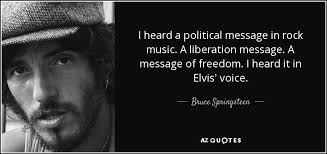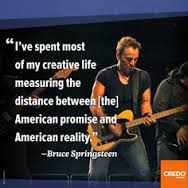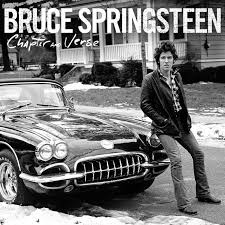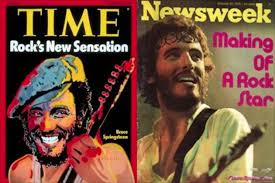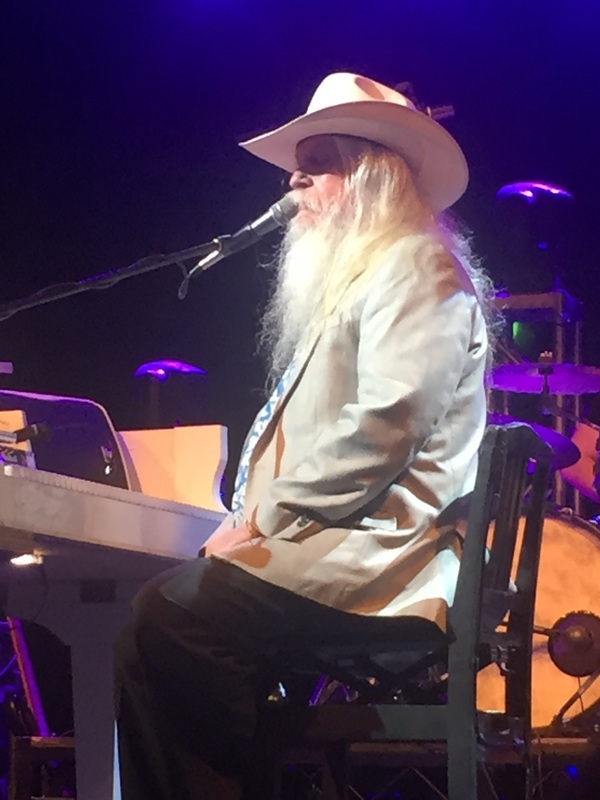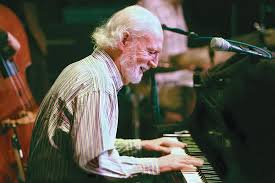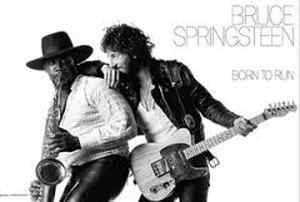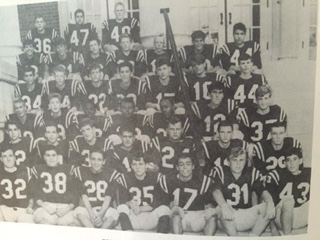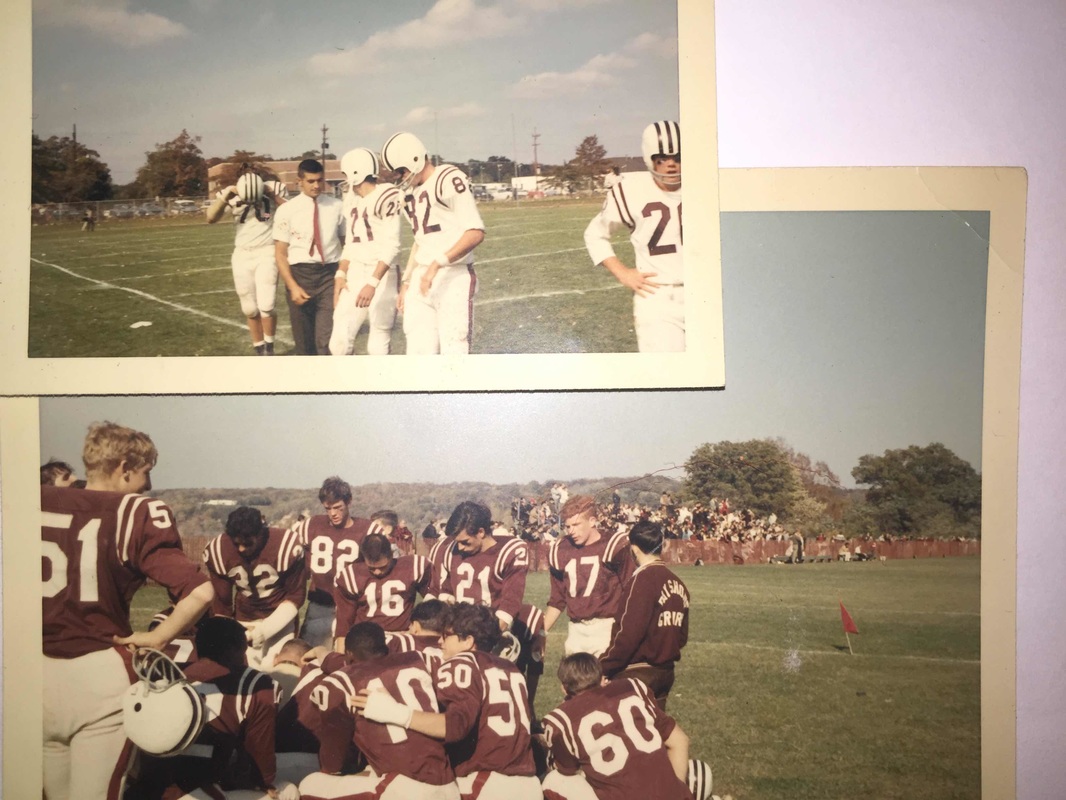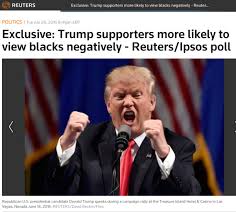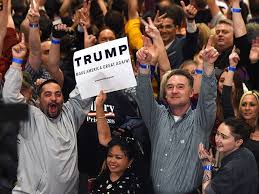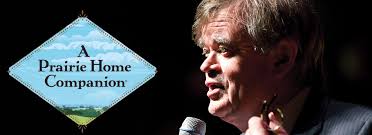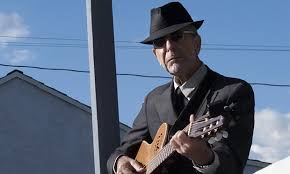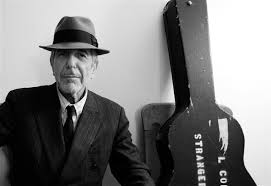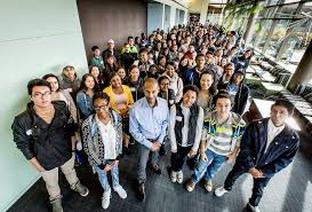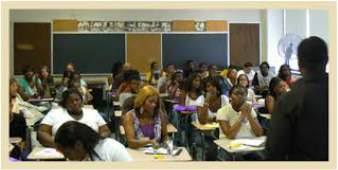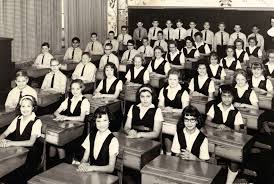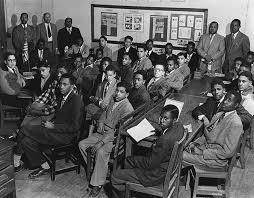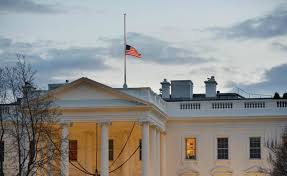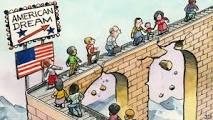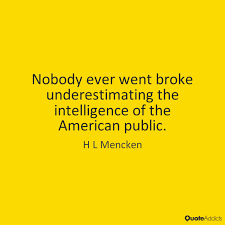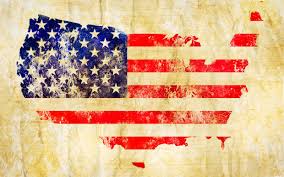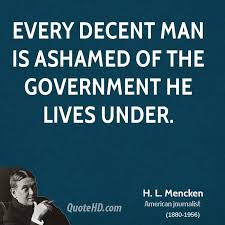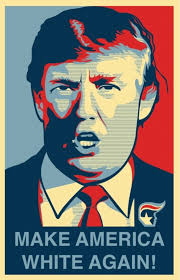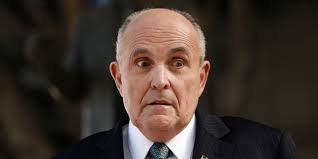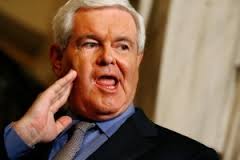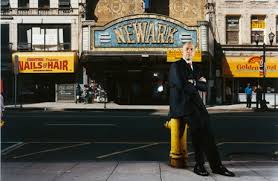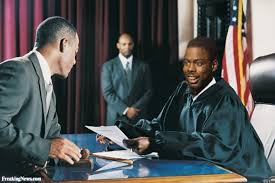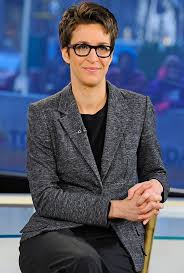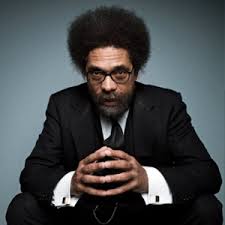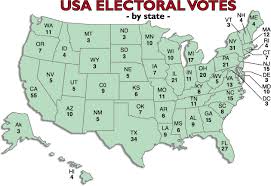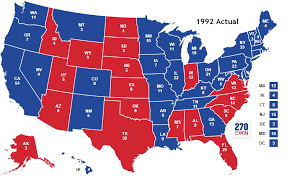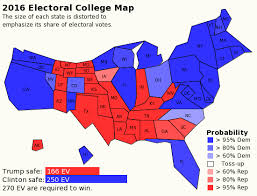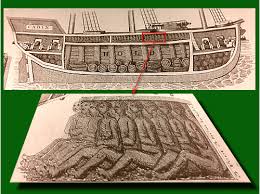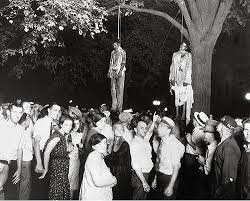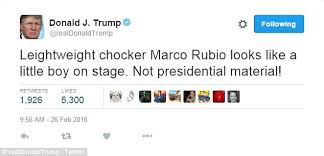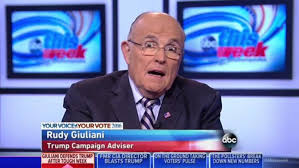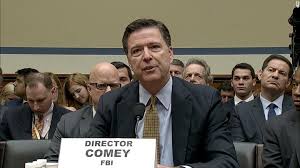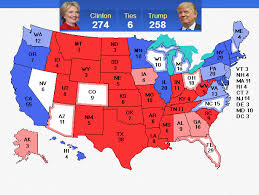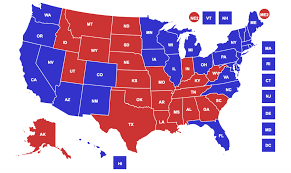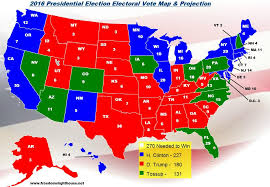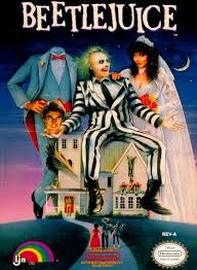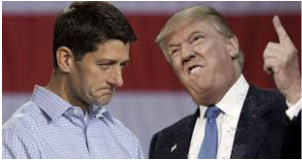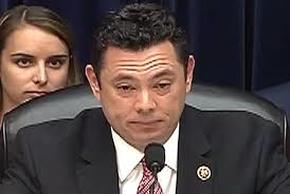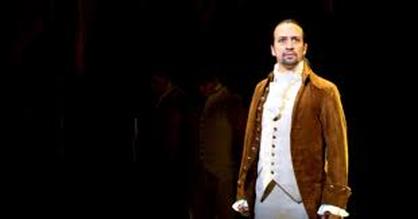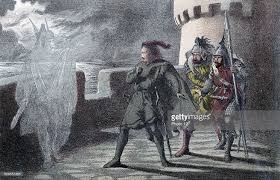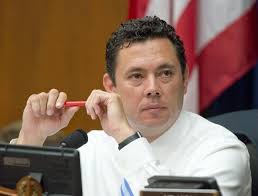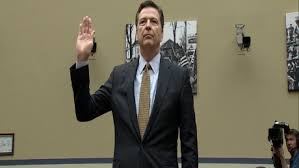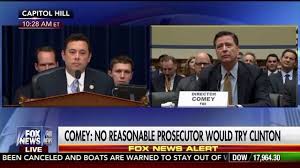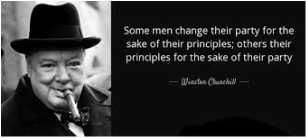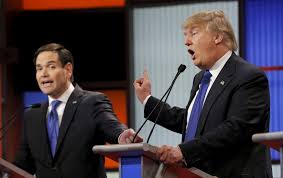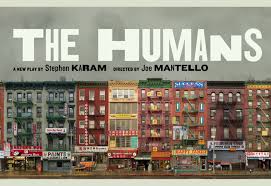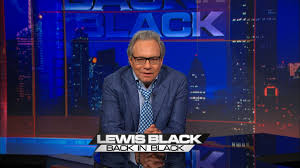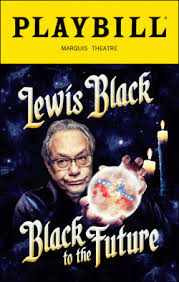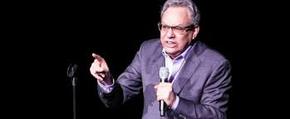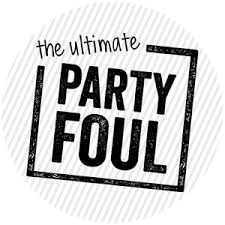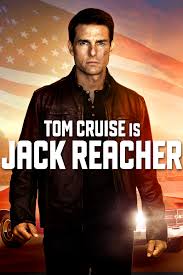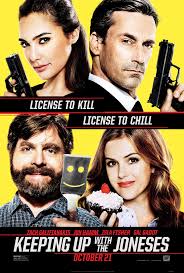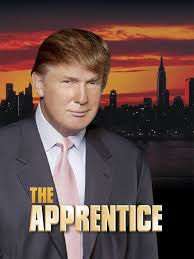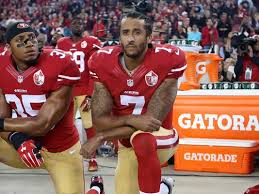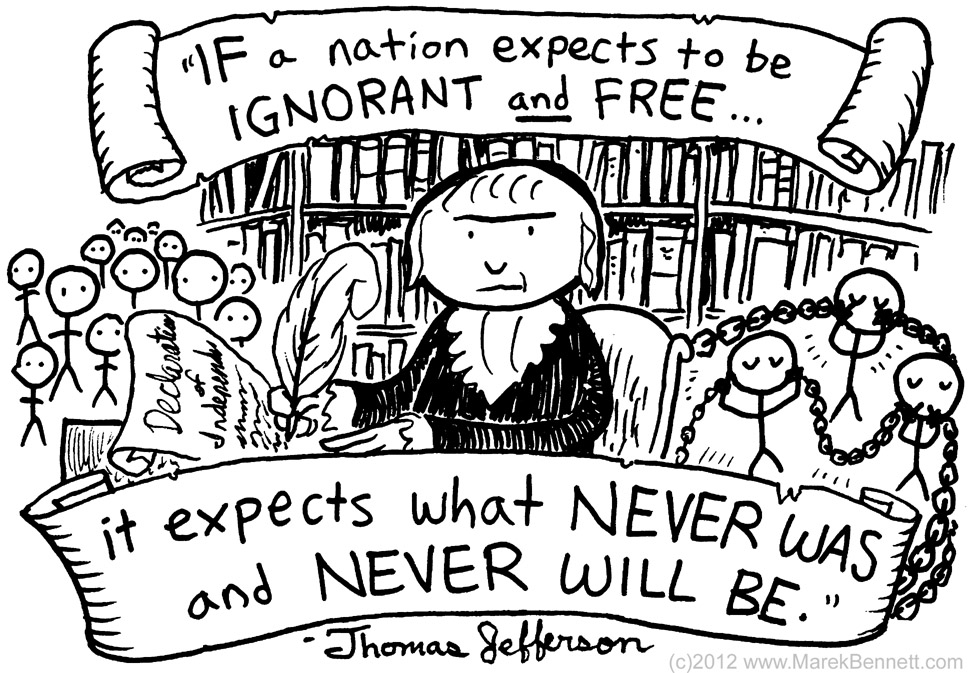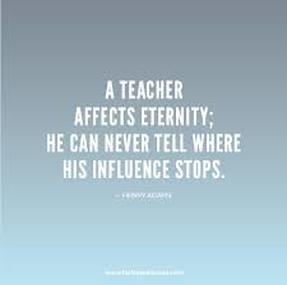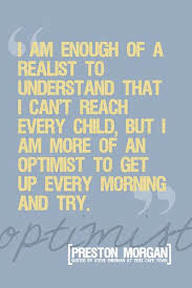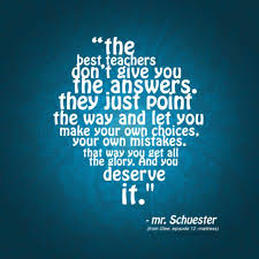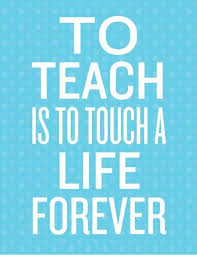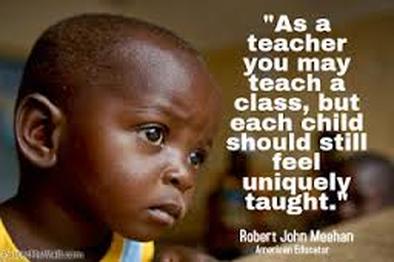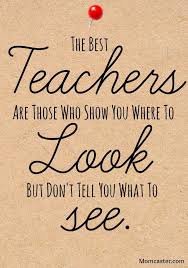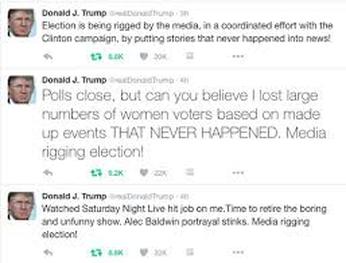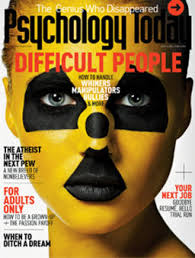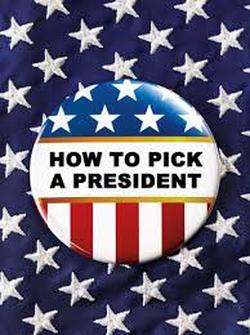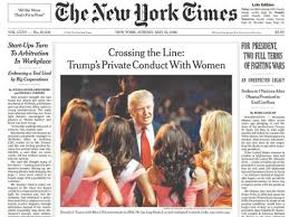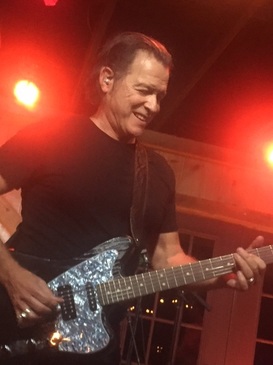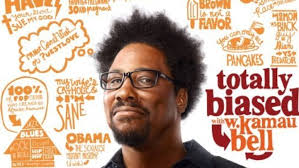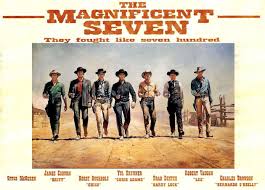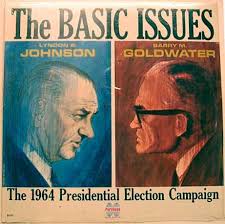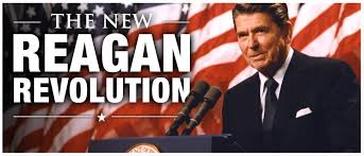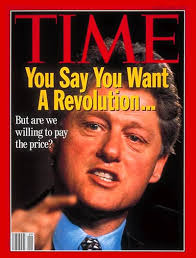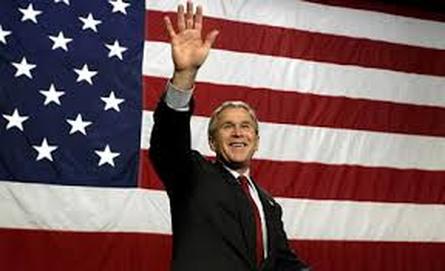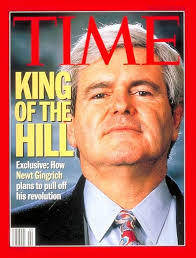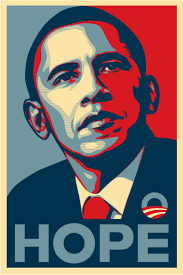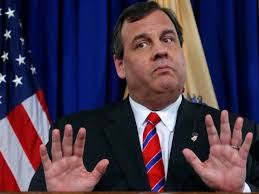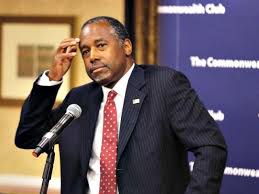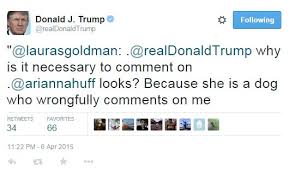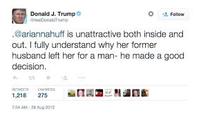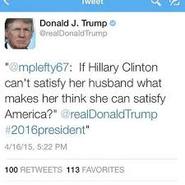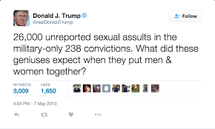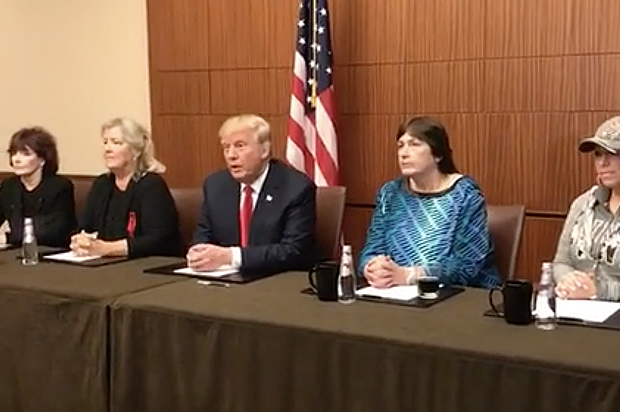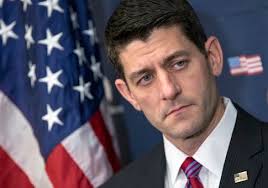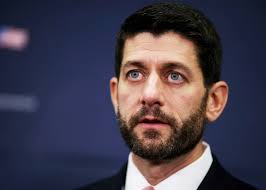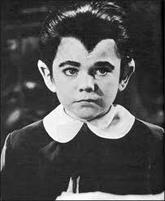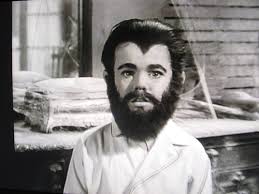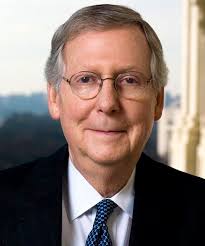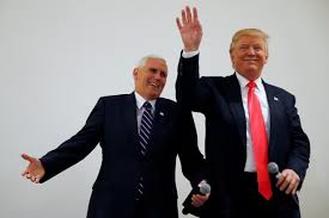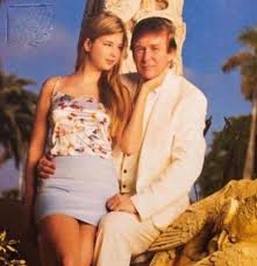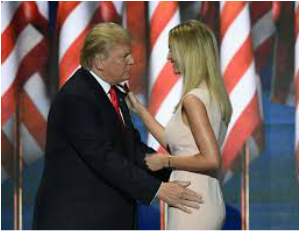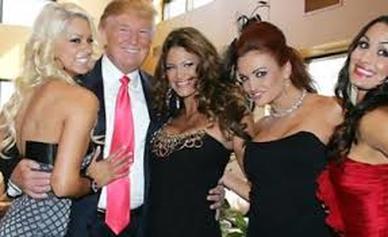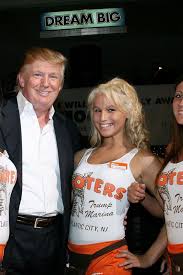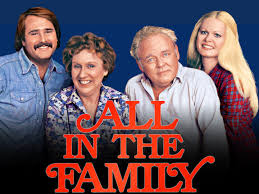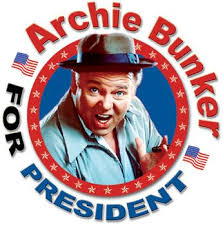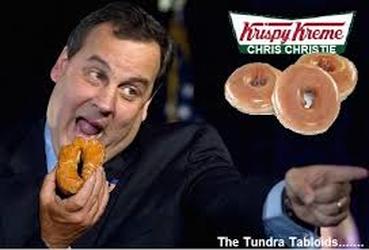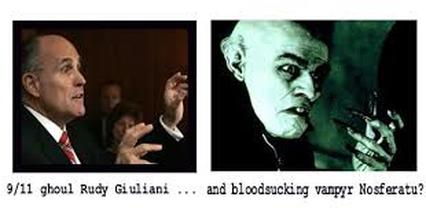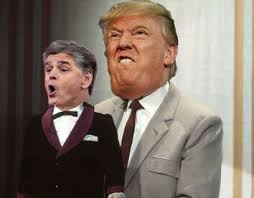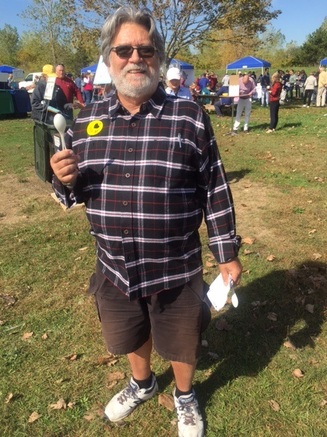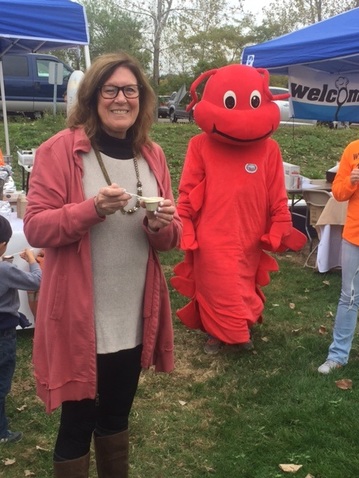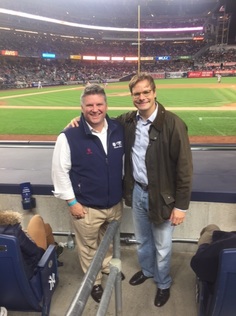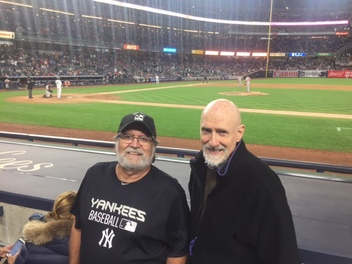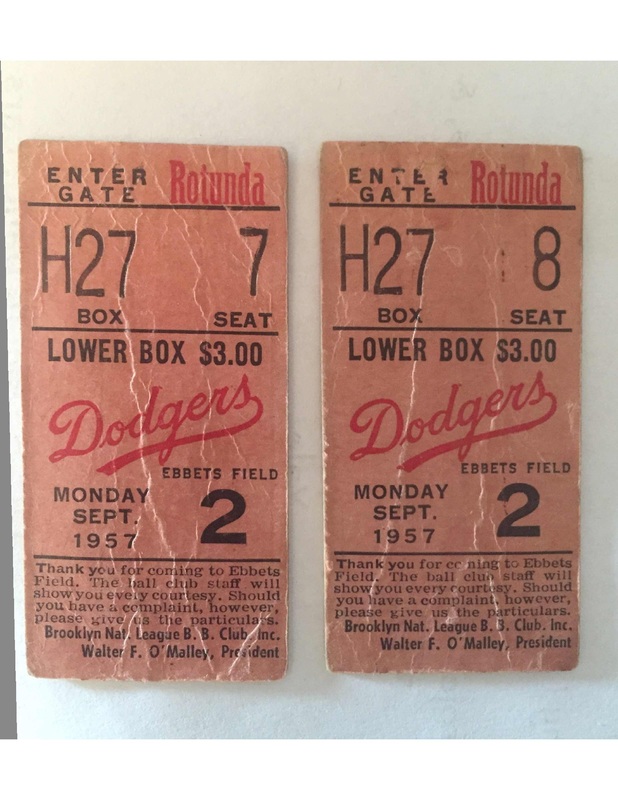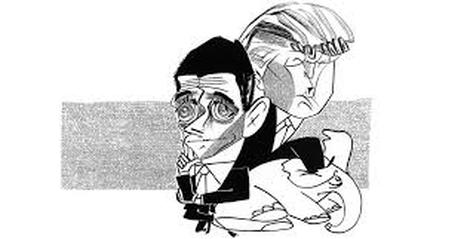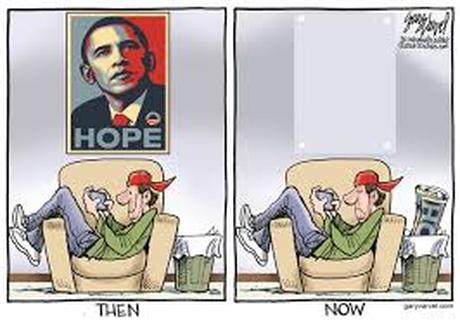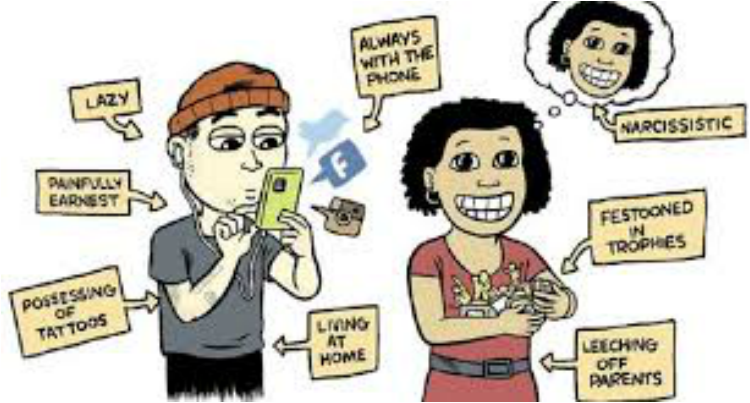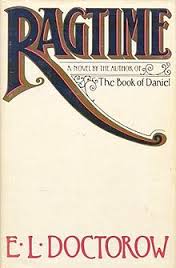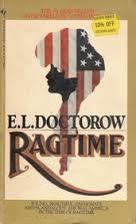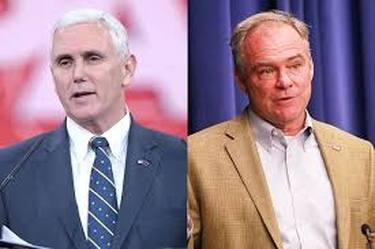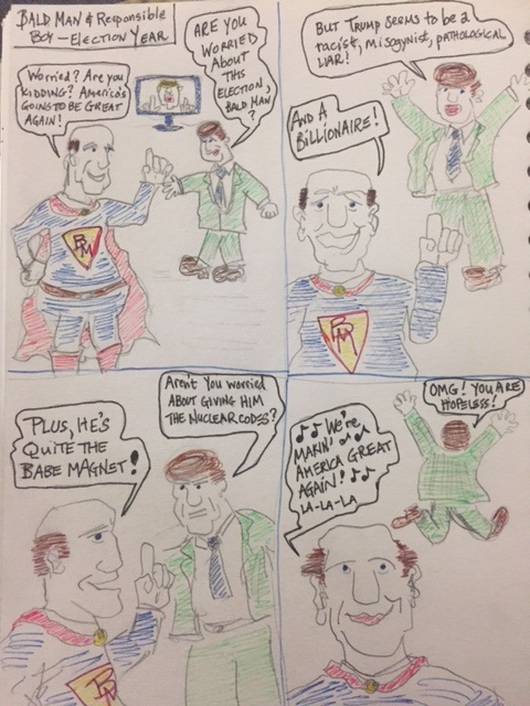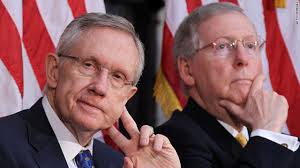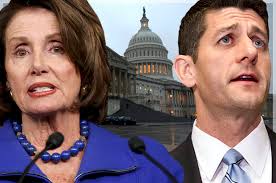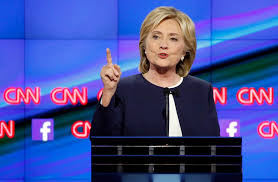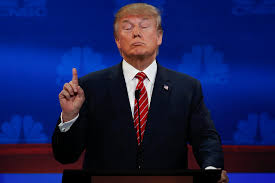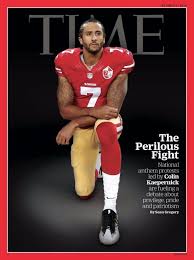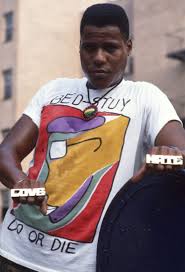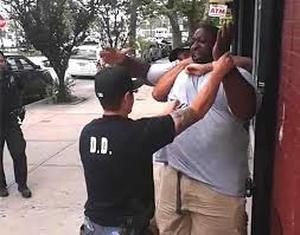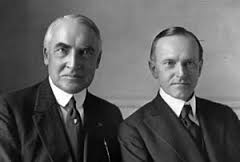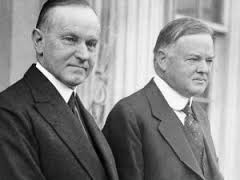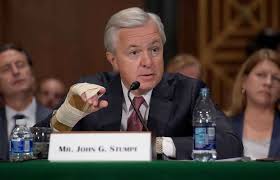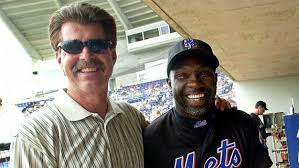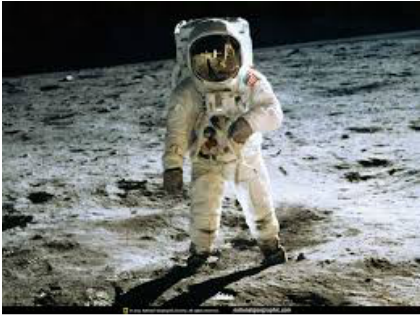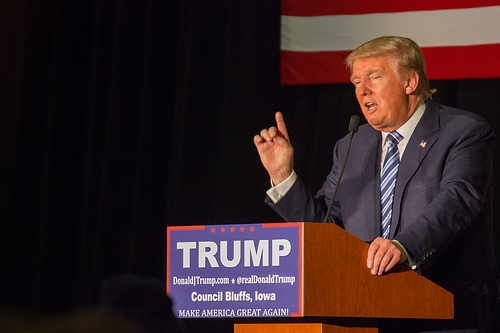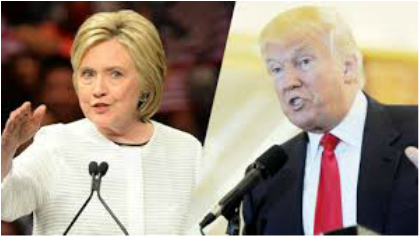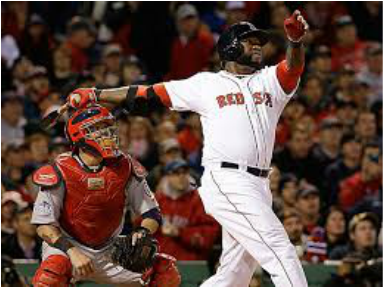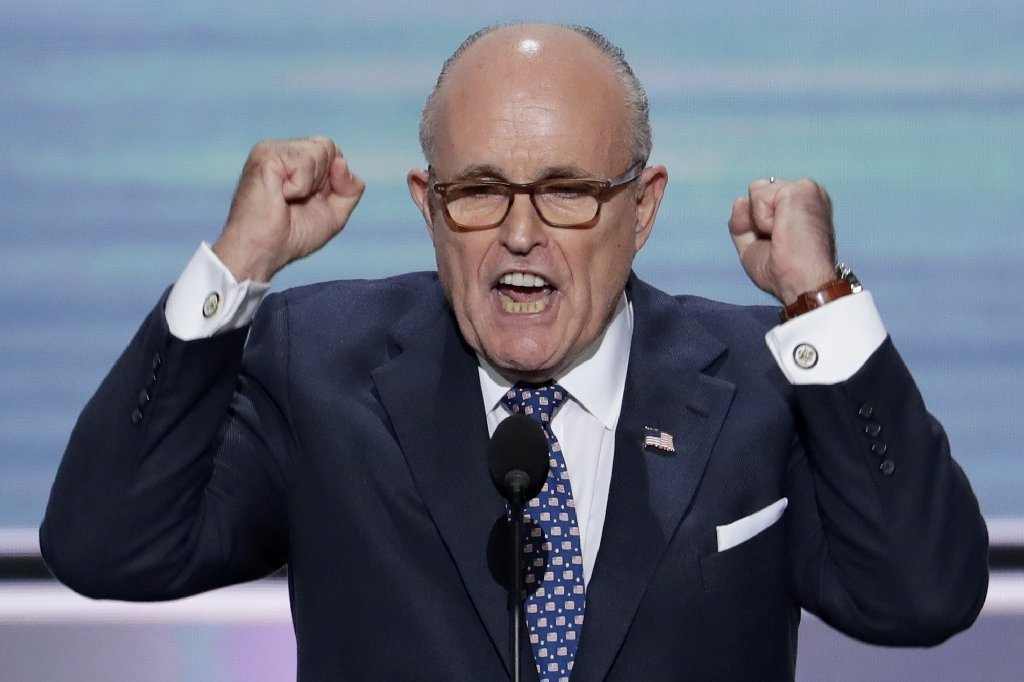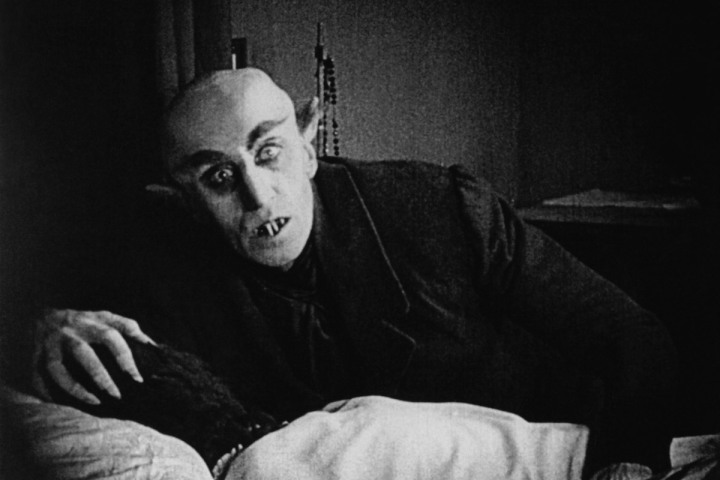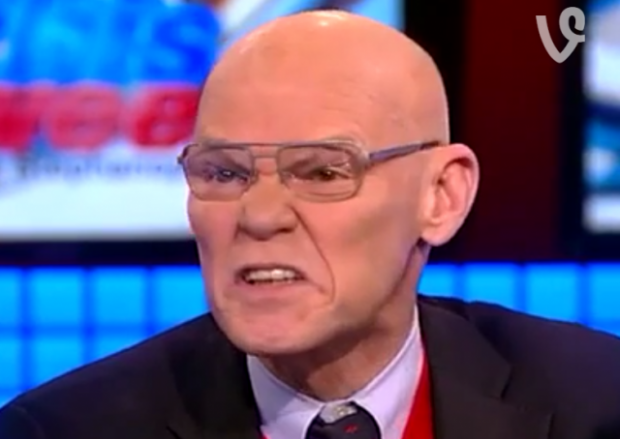Friday
February 24th
Blast #152
In Case You Missed This
I ran across the following item on Facebook and tracked it down to a February 19th posting on Politico (by Terre), with attribution to Susan Keller. Feels like perfect material for a Friday BLAST.
I can't believe I'm saying this, but it looks like Trump is actually making America great again. Just look at the progress made since the election:
1. Unprecedented levels of ongoing civic engagement.
2. Millions of Americans now know who their state and federal representatives are without having to google.
3. Millions of Americans are exercising more. They're holding signs and marching every week.
4. Alec Baldwin is great again. Everyone's forgotten he's kind of a jerk.
5. The Postal Service is enjoying the influx cash due to stamps purchased by millions of people for letter and postcard campaigns.
6. Likewise, the pharmaceutical industry is enjoying record growth in sales of anti-depressants.
7. Millions of Americans now know how to call their elected officials and know exactly what to say to be effective.
8. Footage of town hall meetings is now entertaining.
9. Tens of millions of people are now correctly spelling words like emoluments, narcissist, fascist, misogynist, holocaust and cognitive dissonance.
10. Everyone knows more about the rise of Hitler than they did last year.
11. Everyone knows more about legislation, branches of power and how checks and balances work.
12. Marginalized groups are experiencing a surge in white allies.
13. White people in record numbers have just learned that racism is not dead. (See #6)
14. White people in record numbers also finally understand that Obamacare IS the Affordable Care Act.
15. Stephen Colbert's "Late Night" finally gained the elusive #1 spot in late night talk shows, and Seth Meyers is finding his footing as today's Jon Stewart.
16. "Mike Pence" has donated millions of dollars to Planned Parenthood since Nov. 9th.
17. Melissa FREAKING McCarthy.
18. Travel ban protesters put $24 million into ACLU coffers in just 48 hours, enabling them to hire 200 more attorneys. Lawyers are now heroes.
19. As people seek veracity in their news sources, respected news outlets are happily reporting a substantial increase in subscriptions, a boon to a struggling industry vital to our democracy.
20. Live streaming court cases and congressional sessions are now as popular as the Kardashians.
21. Massive cleanup of Facebook friend lists.
22. People are reading classic literature again. Sales of George Orwell's "1984" increased by 10,000% after the inauguration. (Yes, that is true. 10,000%. 9th grade Lit teachers all over the country are now rock stars.)
23. More than ever before, Americans are aware that education is important. Like, super important.
24. Now, more than anytime in history, everyone believes that anyone can be President. Seriously, anyone.
Susan Keller -- posted by
by Terre in Politico
Sunday Feb 19, 2017
Thursday
February 23rd
Blast #151
Quick Takes
1. Spring Training and Baseball
Spring training baseball games begin today and, far more than Punxsutawney Phil, that is the sure sign that Spring is here for me. I have attempted to wax poetic about baseball in earlier BLASTs (#’s 4, 12, 26, 38, 64, 83, & 91) so I will not belabor those points here. Let me only say that the Ritual of Spring Training --- the first look at new, young players, watching pitchers get their arms ready, checking to make sure veterans are rounding into shape --- like springtime itself, brings a wonderful renewal in spirit. Before the games begin in earnest in April, this could be our year! There is an optimism that accompanies pitchers and catchers reporting (as they did last week) and watching news reports from the Sunshine State and Arizona (the aptly named Grapefruit and Cactus Leagues) that is connected to over a century (spring training in Florida began in 1913 --- before that it was in Hot Springs, Arkansas!) of baseball and American history. Some of that is dicey, of course, (integration in 1947 led to problems in Florida spring training sites right through the 1960s) but it’s part of our history and another reason baseball is so much a reflection of that history. So, Spring Training is here and it gives us something to be optimistic about in these less-than-optimistic times.
2. The Oscars
Sunday night we get to the end of “Award Season” with the Oscar presentations, hosted by Jimmy Kimmel. I have already railed against La La Land being the front-runner for “Best Picture” so I won’t belabor that issue. Given all the lead-in award festivals (Golden Globes, BET, Writers Guild, S.A.G., Independent Films, MTV, Peoples Choice, et al) all kind of prognostication ensues. It seems La La, Casey Affleck, Viola Davis, and Moonlight (screenplay) are the odds-on favorites, but we’ll see. How important are the Oscars? Well, let me put it this way: who won last year? If you’re not sure or you don’t know, that’s probably an indication that your mind is focused on far more important things --- and good for you!
3. March Madness
As a retired (highly unsuccessful) high school basketball coach I have to admit that this is one of my most favorite times of year. I was an NBA basketball fan in the late 60s/early 70s when the Knicks were playing great team ball and winning championships. As I coached high school, though, I became more and more a fan of the college game --- probably because the coaches are the stars at the college level. The NBA (even more so today) is player dominated and the skills are ridiculous --- these are some of the most incredible athletes anywhere. College basketball involves far less skilled players and requires much more strategy and game-time decisions by coaches, making it a more interesting spectacle. As we head into the lead-in tournaments (ACC, Big East, SEC, Big Ten, Big 12, Pac-12, et al) and the always controversial Selection Sunday (March 12th) every game becomes significant --- will your favorite schools make it to “the Big Dance” or be relegated to the NIT (formerly a prestigious tourney but now an “also-ran,” but still good caliber, basketball, tournament)? Whatever the case, if you are a diehard college hoops fan, this is your time of year and I’m gearing up for weeks of watching great college hoops (much to the chagrin of the Lovely Carol Marie – a woman of endless patience when it comes to my sports vices). So, join your office bracket pool and make your picks! March Madness, here we come.
Wednesday
February 22nd
Blast #150
(George Washington's Birthday)
“I Cannot Tell the Truth”
It’s February 22nd and, when I was a boy, we used to get this day off for “Washington’s birthday.” Washington was actually born on February 11, 1731 (in Virginia --- a native-born American!) but when the British Empire updated to the Gregorian calendar in 1752 his birthday was “corrected” to February 22, 1732 (I won’t bore you with the mathematical details). The most famous George Washington myth, of course, is that he chopped down a cherry tree and, when his father demanded to know who did it, young George purportedly replied, “I cannot tell a lie . . . “ We’ve certainly come a long way in the 228 years of the United States Presidency. We have gone from the hero of the American Revolution, who essentially invented the Office of President, to an ignorant and self-aggrandizing serial liar. Let’s not forget how important Washington was to the office before we examine how far we have fallen.
There was no blueprint for the Presidency when Washington took office in 1789. He had the Article Two guidelines in the Constitution, but those are quite (intentionally) vague. From that he fashioned a model of the Executive that has stood the test of time. He invented the notion of a Cabinet, with specific “Secretaries” to run departments. Following Hamilton’s lead, he established a National Bank and strengthened the power of the central government (see: The Whiskey Rebellion). Washington determined he would be called “Mr. President” (though he would not shake hands with anyone --- maybe our first germophobe Chief Executive?) and established the two-term tradition (he could have easily been elected to third and fourth terms, if he chose to run). He set the policy of neutrality in foreign affairs that maintained the infant U.S.’s sovereignty, as well as establishing an alliance with Great Britain (through Jay’s Treaty) --- a partnership that has been maintained (with some “bumps,” like the War of 1812) over generations. Washington’s Farewell Address is still noted in history books and is yet another precedent established between 1789 and 1797. Quite an imposing figure, really, who left the office with clear parameters and institutions to be followed.
And what do we have today? In 2017 we have a man who is incapable of telling the truth sitting in the Oval Office. Chris Cilizza, in yesterday’s Washington Post used the Post’s fact-checking department to see how Donald J. Trump has done in his first 33 days in office and here is what he found:
“I Cannot Tell the Truth”
It’s February 22nd and, when I was a boy, we used to get this day off for “Washington’s birthday.” Washington was actually born on February 11, 1731 (in Virginia --- a native-born American!) but when the British Empire updated to the Gregorian calendar in 1752 his birthday was “corrected” to February 22, 1732 (I won’t bore you with the mathematical details). The most famous George Washington myth, of course, is that he chopped down a cherry tree and, when his father demanded to know who did it, young George purportedly replied, “I cannot tell a lie . . . “ We’ve certainly come a long way in the 228 years of the United States Presidency. We have gone from the hero of the American Revolution, who essentially invented the Office of President, to an ignorant and self-aggrandizing serial liar. Let’s not forget how important Washington was to the office before we examine how far we have fallen.
There was no blueprint for the Presidency when Washington took office in 1789. He had the Article Two guidelines in the Constitution, but those are quite (intentionally) vague. From that he fashioned a model of the Executive that has stood the test of time. He invented the notion of a Cabinet, with specific “Secretaries” to run departments. Following Hamilton’s lead, he established a National Bank and strengthened the power of the central government (see: The Whiskey Rebellion). Washington determined he would be called “Mr. President” (though he would not shake hands with anyone --- maybe our first germophobe Chief Executive?) and established the two-term tradition (he could have easily been elected to third and fourth terms, if he chose to run). He set the policy of neutrality in foreign affairs that maintained the infant U.S.’s sovereignty, as well as establishing an alliance with Great Britain (through Jay’s Treaty) --- a partnership that has been maintained (with some “bumps,” like the War of 1812) over generations. Washington’s Farewell Address is still noted in history books and is yet another precedent established between 1789 and 1797. Quite an imposing figure, really, who left the office with clear parameters and institutions to be followed.
And what do we have today? In 2017 we have a man who is incapable of telling the truth sitting in the Oval Office. Chris Cilizza, in yesterday’s Washington Post used the Post’s fact-checking department to see how Donald J. Trump has done in his first 33 days in office and here is what he found:
“NO DAYS without any recorded false or misleading claims.” I’m sure George Washington would be pleased to know that our 45th President cannot go ONE DAY without saying something that is, at best, misleading. 17 days (more than half!) have seen Trump make 4 or more false or misleading claims. If we look back to the campaign trail, of course, we should not be surprised. When the Washington Post was assigning its Pinocchio’s for falsehoods, here is how Trump stacked up against Hillary Clinton.
As noted by Cilizza in the Post: “During the course of the campaign, nearly two-thirds of his claims that The Post's fact-checking team looked into were rated Four Pinocchios — meaning that they were found to be totally and completely false. By comparison, 14 percent of Clinton's fact-checked statements received four Pinocchios.” So, we should really not be surprised the we now have a Prevaricator-in-Chief in the city named for the man who couldn’t tell a lie.
One of Trump’s statements during the campaign has now moved into the Four Pinocchio category and reflects how hard Trump has been working for the American people since taking office. According to yesterday’s Politico, “Trump said last August that if he became president, he wouldn’t have time for golf. ‘I'm going to be working for you, I'm not going to have time to go play golf,’ he said at an event in Virginia.” So, in his first 33 days he has played golf no less than Six times! In fact, Business Insider has broken down exactly how much our new President is “working for” us and it looks like this:
One of Trump’s statements during the campaign has now moved into the Four Pinocchio category and reflects how hard Trump has been working for the American people since taking office. According to yesterday’s Politico, “Trump said last August that if he became president, he wouldn’t have time for golf. ‘I'm going to be working for you, I'm not going to have time to go play golf,’ he said at an event in Virginia.” So, in his first 33 days he has played golf no less than Six times! In fact, Business Insider has broken down exactly how much our new President is “working for” us and it looks like this:
If we look closely at those numbers, Trump has spent 424 out of 744 hours asleep or “non-working” with an additional 25 hours on the golf course! --- from the man who told the voters he wouldn’t “have time to play golf.” (Not to mention 18 HOURS Tweeting!)
The enormity of Trump’s lying would be fatal for any other politician (or businessperson?) --- yet he gets away with it. And part of that is because the Bannon strategy is an age-old authoritarian blueprint: de-legitimatize the mainstream media (the creators of “fake news”) and erode their First Amendment power to deliver the truth to the American people, leaving a vacuum for Trump to fill with his lies. In this age of too much content, where a report in today’s New York Times shows that people simply avoid reading stories that will challenge their beliefs (people on all sides of the spectrum), we are already hard pressed to hold this narcissist accountable. Without reliable sources being believed as credible and having veracity with the public, we open the gates for Bannon and Stephen Miller (aptly named “Baby Goebbels” by Malcolm Nance on Bill Maher’s Real Time last Friday) to tell us this President should go “unquestioned.” As Trump proclaimed at the RNC, after listing America’s problems, “I alone can fix them.” It is hard to imagine George Washington making such a statement when he could have. The only man to win a unanimous Electoral College victory (twice!), he could have shaped the office of the Presidency very differently, if he lacked integrity and vision --- but he didn’t and he probably couldn’t tell a lie, either. That’s how far we’ve fallen.
Happy Birthday, George!
The enormity of Trump’s lying would be fatal for any other politician (or businessperson?) --- yet he gets away with it. And part of that is because the Bannon strategy is an age-old authoritarian blueprint: de-legitimatize the mainstream media (the creators of “fake news”) and erode their First Amendment power to deliver the truth to the American people, leaving a vacuum for Trump to fill with his lies. In this age of too much content, where a report in today’s New York Times shows that people simply avoid reading stories that will challenge their beliefs (people on all sides of the spectrum), we are already hard pressed to hold this narcissist accountable. Without reliable sources being believed as credible and having veracity with the public, we open the gates for Bannon and Stephen Miller (aptly named “Baby Goebbels” by Malcolm Nance on Bill Maher’s Real Time last Friday) to tell us this President should go “unquestioned.” As Trump proclaimed at the RNC, after listing America’s problems, “I alone can fix them.” It is hard to imagine George Washington making such a statement when he could have. The only man to win a unanimous Electoral College victory (twice!), he could have shaped the office of the Presidency very differently, if he lacked integrity and vision --- but he didn’t and he probably couldn’t tell a lie, either. That’s how far we’ve fallen.
Happy Birthday, George!
Tuesday
February 21st
Blast #149
News, “Fake” News
&
“The Enemy of the People”
The bedrock of any democracy is a free, uncompromised, and unimpeded press. In the United States, from its inception, the First Amendment was established to guarantee the right of citizens to acquire information untainted by those in political power, i.e., the government. The First Amendment was also intended to protect the rights of individuals and reporters to say what they will in an unobstructed, unrestricted manner. The assumption always has been, of course, that putting all the ideas into the "marketplace," an educated citizenry could then sort out what was what, pick and choose facts from opinion, and keep or discard what seemed relevant/irrelevant or important/unimportant. But we have entered a new era of “journalism” and reporting --- one in which “fake” news spreads like wildfire and we have a Chief Executive who does not read (I am beginning to wonder how well he can --- if he can at all). Both of these items create serious problems in a democracy. When the President of the United States declares the free press “the enemy of the people” while blatantly lying to those people, we have a serious problem.
A 2016 Pew Research Survey indicated the following
We can see from this information that getting one’s information from a screen (tv or online) is the most common way news is now transmitted and, most significantly, we can see 18 to 49 year olds are much more active online consumers than the 50-65+ group. (That certainly fits with our (nearly) 71 year old President getting almost all of his information from cable (particularly Fox) news.)
Another significant aspect of the Pew study had to do with “bias.” Even though 75 % of people surveyed think the news serves an important “Watchdog” role, an almost equal number believe it is biased.
Another significant aspect of the Pew study had to do with “bias.” Even though 75 % of people surveyed think the news serves an important “Watchdog” role, an almost equal number believe it is biased.
I would not dispute that the media has a bias. Most informed readers are clear about what the particular bias of a publication is. Here in New York, we know the Times and the NY Daily News have a liberal bent while the Murdoch NY Post and Wall Street Journal are conservative. The problem we have should have deep concern about, though, has several facets to it that are disturbing.
#1. There is an underlying distrust of those who deliver “Mainstream” news.
Breitbart News refers to this as “MSM” – the MainStream Media --
and stirs the pot among its readers to never trust the “MSM.”
Alex Jones, on InfoWars goes even further --- while producing
outrageous "fake" news (Sandy Hook was a fake, the gov't. was
behind 9/11, etc.) Frighteningly, he is a source of information for the
President, who has called this conspiracy nut, "amazing."
#2. “Fake” news. We now have a President (whose chief strategist ran
Breitbart) who has not only declared Mainstream Media as “fake” but keeps
pounding on that message, while fueling the problem (#3).
#3. Our President is a source of “fake” news: terror attacks in Sweden?
Terror in Atlanta? The “massacre” at Bowling Green? Those are
just the latest LIES in what has been a clear pattern by the Uninformed
in Chief since long before he ever ran for office.
We need to understand the gravity of a situation where the Leader of a nation makes a full frontal assault on the free press. When Trump supporters shout “Lugenpresse” (Nazi Germany’s “lying press” cry) at rallies, when Trump puts the press in an isolated “holding area” --- using them as a prop at his rallies, a group he can easily single out and deride --- it is easy to see the direction this is headed. His admiration for Vladimir Putin, who has eliminated (literally) opposition, seems to reflect Trump’s vision of leadership. “Regarding the press: in 2013 Russia ranked 148th out of 179 countries in the Press Freedom Index from Reporters Without Borders. In a 2015 Freedom House report Russia got a score of 83 (100 being the worst), mostly because of new laws introduced in 2014 that further extended the state control over mass-media.” (Wikipedia- emphasis mine) Limiting the power of the press and de-legitimatizing it are the age-old tools of tyrants and authoritarian rulers.
In a country where our devotion to a free press allows a Breitbart and an InfoWars.com to flourish, we more and more need an informed and literate public --- and a Leader who READS! We know, pretty clearly, that the latter is not the case, and that will probably not change so we, the people, must become the guardians and champions of the free press and encourage citizens to seek the truth, to demand evidence, and to hold those in power accountable . Without that, our Republic will be in grave danger
Weekend Blast
February 18th/19th/20th
(Happy President's Day)
Blast #148
Cinema 101
(A quick course on White Privilege)
In 1996 I bought a small paperback book entitled Race Traitor, edited by Noel Ignatiev and John Garvey, who had been publishing a magazine by that name since 1992. The book was a compilation of the best essays from the magazine, whose stated purpose was to “abolish the white race.” Now, before you flip out and think this is some kind of alternative universe KKK, let me put that idea in context. Ignatiev, a lecturer at Harvard at the time who now teaches at the Massachusetts College of Art, and Garvey, who taught at the City University of New York, saw the struggle for Black equality needing to ascend to the level of John Brown’s abolitionist fervor. In their words: “ When we say we want to abolish the white race, we do not mean we want to exterminate people with fair skin. We mean that we want to do away with the social meaning of skin color, thereby abolishing the white race as a social category. Consider this parallel: To be against royalty does not mean wanting to kill the king. It means wanting to do away with crowns, thrones, titles, and the privileges attached to them. In our view, whiteness has a lot in common with royalty: they are both social formations that carry unearned advantages.” (Race Traitor Oct 5, 2002 – emphasis mine). I know there are people who dispute the notion of “white privilege” but if you look at the history of Western Europe and the United States it is hard to deny that the rules of those societies are designed to favor white men --- period. If you consider Ignatiev's and Garvey's analogy --- whiteness is like royalty --- you may be able to accept the notion that, like a king or queen, if you are white, you have certain privileges and advantages at birth that you have not earned! It is what I have always referred to as “genetic good fortune.” In my own case, what’s better than being born a blue-eyed white guy named “Johnson” in the United States in 1949? (The correct answer is: NOTHING!) To try to put this in better perspective, I’ll offer a simple course in (current) Cinema 101 that makes a compelling case for a better understanding of white privilege and African-American history in the United States.
There are six Oscar-nominated films this year, each providing insight to the “Black Experience” in America, thereby providing equal insight to white privilege. (Of course if you believe in Eugenics --- that breeding humans as you might canines, to sort out the “best,” because some races are naturally superior to others --- you will never buy into “white privilege.” However, if you see that “whiteness” is a social category created by those in power who created the rules society operates by, you naturally reject Eugenics --- which, by the way, is also thoroughly disproven by DNA). Three feature films (Fences, Hidden Figures, and Moonlight) and three documentaries (13th, I Am Not Your Negro, and O.J.: Made in America) all provide vivid views into the experiences of African-Americans in U.S. history on concrete and visceral levels. From my perspective they all should be advertised as “Educational” material for white audiences. (I would also add Nate Parker's Birth of A Nation as another film to watch, along with the 2014 Oscar winning 12 Years A Slave). Films about race are not new, of course, but they have seldom appeared in quantity the way we have them this year. That they coincide with the “Make America Great Again” movement and its white supremacist undertones may not be a coincidence.
What makes this year’s crop of films significant, I believe, is that they do not deal with the overt racism we are used to seeing in movies like Mississippi Burning (1988) or A Time to Kill (1996) or Free State of Jones (2016) --- and are not movies that feature white men as the focus & heroes. Birth of a Nation and 12 Years A Slave both portray the slave experience, of course, (as did the TV remake of Roots and the Underground Railroad show) and, because cinema in the 21st century can be more graphic, we get a far more realistic view than ever of the vicious cruelty Black people endured for their first 246 years in captivity in North America. Beatings, lynchings, and rapes were commonplace, not isolated instances, and to not think that the mentality that allowed for that kind of behavior --- that whites could do what they wanted to Blacks because the “master” was "naturally" superior --- is a mindset that has not been abolished from our world (read some of Dylan Roof’s prison journaling). But Fences, Hidden Figures, and Moonlight reveal how cruel and biased our modern system of Jim Crow has been.
Chronologically, Fences relates the tragedy of Troy Maxson, a former star baseball player who works as a garbage collector in mid-1950s Pittsburgh (see Blast #124 for a review). While no white people appear in the movie, their presence is felt through Troy, who didn’t get a fair shot at playing in the Major Leagues because of segregation and then denies his son a football scholarship, believing he will face the same discrimination, or worse. The insidious jackboot of prejudice is seen and felt throughout the play/screenplay, while always showing us (particularly through Viola Davis’s Rose) the humanity and resilience of people who know the playing field is not equal. In the same way, Hidden Figures (Blast #145) puts 1950s/1960s Jim Crowism in high relief, as we watch perfectly bright and capable Black women receive less than fair treatment simply because of their race (and gender). As I noted in my review, Taraji P. Henson’s running a half-mile to use a “colored” bathroom emphasizes the cruel (bordering on inhumane) treatment of Blacks, which occurred within the lifetime of many current viewers! Moonlight presents a more personal look at the difficulty of growing up in a world where being a second-class citizen quite naturally leads to criminal behavior. Without elaborating (and I highly recommend you see this movie!), the humanity and dignity of Mahershala Ali’s drug-dealing Juan character, along with the tragedy and desperation of Naomie Harris (as Paula, the drug addicted mother) provide yet another educational insight (possibly) for a white audience. That the main character (Little/Chiron/Black) somehow survives (although on the wrong side of the law, and has done time) with some ray of hope --- an astonishing feat.
The Oscar nominated documentaries are all must-see material. I have already written about 13th and I Am Not Your Negro (Blasts #123 & #146, respectively) and cannot recommend them highly enough. Read those Blasts and I think you will clearly see how those films make up the core of Cinema 101. O.J.: Made in America is a fascinating documentary because filmmaker Ezra Edleman moves far beyond just examining the murder/trial of the former Heisman Trophy winner and really investigates why Black people were elated by O.J.’s acquittal and why that dumbfounded white people. Again, it’s where the veil of white privilege provides the cluelessness we white folks have to the Black experience.
Black people were not cheering that O.J. got away with murder. They were cheering that the L.A. police department, the L.A. prosecutor’s office, and the politics of the City of L.A. were finally beaten. In a NY Times review, the critic A.O. Scott wrote: “The jury’s verdict, which struck many white observers at the time as inexplicable, is situated against a background of longstanding resentment and mistrust that the prosecution misjudged and the defense successfully exploited.” In the long shadow of the Rodney King videotape, the O.J. verdict seemed to vindicate the notion that the L.A. police were guilty and not all those Black people who had been mistreated over the years. Putting all this in perspective, along with Simpson’s denial of his Blackness (“I’m not Black, I’m O.J.” is his quote). provides another window of insight into the complex and complicated world of U.S. race relations.
In all, these movies provide a way for white people to begin to not just see but also feel, on some level, what the Black experience has been. My point is not that one should become more sympathetic or even empathetic (though that would not be a bad thing) --- one should become more deeply and critically thoughtful about the world we live in here in these United States. The playing field is not even and never has been. If you can do nothing more than own up to your privilege and begin trying to live an "abolitionist’s" life, that would be significant. If you’re still not convinced about the notion of white privilege, I’ll share with you an example sent by my old friend, the now-retired Federal Magistrate Judge (from Louisville, KY), Jim Moyer.
The analogy I use for white privilege is this. Suppose two kids are interested in tennis. The white kid is from an upper middle class family and his mother played on her high school tennis team. They belong to a club that has tennis courts and a pro. The white kid has tennis lessons, goes to tennis camp, and participates in high school tennis and on a Division III college team.
The African-American kid is from a middle class family. No one in his family has played tennis and the family belongs to no club. He learns on a public court, with no lessons. His high school doesn't have tennis courts, but he keeps playing with a group informally organized by a neighborhood sports activist for minority kids. He goes to a local public university and doesn't play college tennis.
Talent always prevails, according to American mythology. But the chance of the black kid becoming a college scholarship athlete for tennis, or a tennis pro, or even a lifelong player, are much lower than the chances of the white kid.
To me, this is one example of white privilege. No one hated the black kid or tried to keep him from playing tennis, but the white kid had access to many more opportunities. The USTA is probably dying to have more minority athletes, but the structure of the system is stacked to favor the white kids.
This is an important conversation to engage in these days, with a President who, when questioned, doesn’t even know what the CBC (Congressional Black Caucus) is and believes the reporter, being black, must be “friends” with them. That kind of isolated, ignorant thinking (that also wants to "Make America White Again") does not see the strength and power an inclusive nation wields.
Friday
February 17th
Blast #147
Believing Don’t Make It So
Watching the Presidential press conference meltdown yesterday I couldn’t help but think of students I had, particularly when I taught in the Westchester suburbs, who were not particularly bright but who had been told, from Day One, by their parents, that they were “special.” So they couldn’t believe it when they got “C’s” on their work, and the parents would come in and harangue, attacking the teachers and the principal --- and the child would be told that “’those people’ don’t know what they’re talking about, you are very special and your work is excellent!” I witnessed such students get into fairly decent universities because parents donated buildings or made huge contributions to the endowment and I never really gave them a second thought once they had graduated. But now I’m confronted with one of them, standing at a press conference as President of the United States and his grasp of reality is similar to those students and their families --- it is delusional.
When asked about proof of Trump’s claimed voter fraud, Sean Spicer repeatedly said “The President does believe that,” and “the president has believed that for a while.” What we are seeing is a naked Emperor who “believes” wild conspiracy theories and thinks “believing it” makes it so! When confronted with the fact that his 306 Electoral votes were not the “largest margin since Reagan” Trump simply says, “That’s the information that I was given.” Really? As usual, we don’t know who gave him this information (No One!) and it will not stop him from repeating this ridiculous lie again and again. This is serious, people!
I would never compare Trump to Hitler (he is not as cunningly diabolical, as we are seeing). At best, he is like Marshall Petain in Vichy France --- and it is easy to visualize someone like Putin pulling the strings on this puppet. I would make a Third Reich comparison, though, to Steve Bannon (Goering) and Stephen Miller (Goebbels). Bannon, of course, is the real puppeteer in this new administration and his paranoid, aggressive nationalism (with a good dose of white, Christian supremacist fervor) are, at the very least, trying to shape the direction of this administration. Miller, of course, is the blindly loyal extremist who is capable of a statement like this:
our opponents, the media and the whole world will soon see as we begin to take further actions, that the powers of the president to protect our country are very substantial and will not be questioned.
Hmmm…..not questioning the President’s actions because his power is substantial? I’m clicking my jackboots and raising that arm to “Heil!” when I hear a statement like that. All kidding aside, several of the news outlets (fake ones like MSNBC & CNN, of course) noted that there doesn’t seem to be anyone in the White House who will tell Trump that he can’t continue to lie in public or that he should know what the CBC is and not assume the Black reporter who asked a question about his meeting with the Congressional Black Caucus is “friends” with them and should be the one to “set up a meeting.” What? (By the way: the Congressional Black Caucus sent Trump a letter on January 19th requesting a meeting as soon as he could arrange it after taking office) This is serious . . . and scary.
Yesterday’s presser was clearly red meat for Trump’s base but are we really going to hold the country hostage because about 37% of the people believe this guy is the “real deal?” Are the Republicans so bereft of conscience and so greedy for power that they will endanger the country and our future? Have we reached that point, as all Empires do, where the string that unravels the entire skein has been pulled?
People are protesting and Senators and Congresspeople, especially, are going home this week and will face huge crowds --- many bi-partisan --- demanding positive action as well as resistance to the demagoguery and posturing of this Incompetent. During the campaign the Democrats, and even some Republicans (though we can’t seem to find them now), kept saying that Trump was “unfit” to hold the office and now we are seeing that, on almost a daily basis. The press conference was a culmination of a month of chaos and mismanagement. Yet Trump, in his usual deluded manner, stood there reading a laundry list of “accomplishments” and claiming he had the largest Electoral win in recent memory. He claimed drugs are cheaper than candy bars and reiterated what disasters and dangerous places our cities are while warning us that a nuclear holocaust “would be like no other.” No other what?
This man is incoherent and obsessed with ratings, polls, and numbers about himself! We have gotten just what we saw in the campaign. There has been no “pivot.” There has been no ascension to becoming “presidential.” For all those moderates and women and independents who couldn’t bear the idea of Hillary Clinton in the White House, take a good look at who we have as a result.
In 2000, Al Gore won the popular vote but lost the election in the Supreme Court. Think about what a difference that has made in our lives: two senseless and needless wars that are still going on, as well as an environment desperately in need of thoughtful human stewardship. In 2016 Hillary Clinton won the popular vote but lost the election to a narcissistic man-child and now, only one month into his tenure, we are getting a glimpse of the unreal leadership of a Reality Show star. Trump believes certain things, whether they are true or not. Neither Bannon nor Miller, nor Preibus, nor Pence will disabuse him of these notions. The Republican Congress will not investigate the ties to Russia, or demand full disclosure of his taxes, or require nominees for the Cabinet to have even the most basic qualifications. It is hard to imagine where or how this will all end up but if yesterday’s press conference is any indication, we better strap in tight, resist with all our might, and fight the good fight!
Thursday
February 16th
Blast #146
I Am Not Your Negro
(A Review)
Went to see Raoul Peck’s documentary about James Baldwin (I Am Not Your Negro) last night --- it is a powerful statement about race relations and United States history. This is not a documentary about Baldwin’s life. Rather, it grew out of a piece of unfinished writing (started in 1979 --- Baldwin died of stomach cancer in 1987) entitled Remember This House; Baldwin’s personal recollections of Medgar Evers, Malcolm X, and Martin Luther King, Jr., all of whom were his friends. Using that manuscript and other writing by Baldwin, Peck knits together a powerful political and cultural statement, clearly illustrating what life is like for a “Negro” in America. With clips from old Dick Cavett shows, as well as film of Baldwin debating William F. Buckley, Jr. at Cambridge University in 1965 (I highly recommend seeing the entire debate – you can “YouTube” it --www.youtube.com/watch?v=oFeoS41xe7w) interspersed with newsreel footage from the 60’s and today along with still photos, the film is compelling --- and made me wonder why we haven’t heard people quoting Baldwin more often.
A leader in the Civil Rights movement, Baldwin did not see it as a “revolution” (he later called it “another slave rebellion”) and seems frustrated (although he’s described as “bitter,” which he challenges) by the fact that people do not see what is at the heart and soul of the problem, which is morality. Baldwin consistently makes a persuasive case that Western/European/U.S. civilization has no moral authority because its success (primarily material success, btw) is the result of subjugating people --- particularly people of color. Baldwin describes separate American realities --- the world of Gary Cooper and Doris Day in juxtaposition with Ray Charles. There are two levels of experience in America, he asserts, one enjoyed by white people and another endured by Blacks. He says that “the story of the Negro is the story of America --- and it is not a pretty story.” In looking at the American landscape in 1979 Baldwin concluded “The American way of life does not make people happier or better” and, indeed, that may well be true today. Certainly this past election revealed the deep well of unhappiness in the country and the results of the election seem to point to our not being “better.”
Baldwin’s insights, read in measured tones by Samuel L. Jackson, are as rich as they are disturbing. In briefly discussing Medgar, Malcolm, and Martin, he makes it clear that their assassinations are nothing new (Peck’s visuals, still photos of lynchings, makes this all the more powerful) and that only Blacks (“Negroes,” in ‘60s parlance) were feared and criminalized when/if they took up arms. He points out that it’s quite fine for a white man to exclaim, “Give me Liberty or give me Death!” but any Black man saying the same thing is seen as a threat to our democracy. Time and again (the examples are too numerous to quote here) Baldwin cuts to the core of the problem --- and America’s soul is laid bare by his words. Peck finishes the documentary with Baldwin admonishing white America: "What white people have to do, is try to find out in their hearts why it was necessary for them to have a nigger in the first place. Because I am not a nigger. I'm a man. If I'm not the nigger here, and if you invented him, you the white people invented him, then you have to find out why. And the future of the country depends on that. Whether or not it is able to ask that question." (http://www.npr.org/2017/02/03/513311359/i-am-not-your-negro-gives-james-baldwins-words-new-relevance) That statement is as powerful --- and true --- in 2017 as it was when Baldwin made it in 1963.
I Am Not Your Negro is a must-see film, for white and black people. It is shocking, really, that Baldwin’s powerful, articulate voice has not been heard more often in our current dialogue about race --- except that it may still be too radical, or too uncomfortable (particularly for white people). When he says to white people, “I know more about you than you know about me” there is an eerie truth that stings the white ear to hear it. In the debate with Buckley he very astutely turns the dehumanization of slavery around on whites by asking what has happened to the soul of a man (in this case, Sheriff Clark in Alabama) that would allow him to push a cattle prod into a woman’s breast? And Baldwin says it with compassion, wondering what kind of system can breed such inhumanity. He sees, and wants us to see, that this system has been in place for 400 years and it divides us intentionally, and for the profit of a few. He points out that Malcolm and Martin were moving closer to each other by 1965, philosophically & tactically, as they began to change their focus from race as the primary issue and began focusing on class. In many ways, James Baldwin was a voice in the wilderness, crying out. This wonderful documentary gives that voice a stage and one can only hope that people will listen and hear it --- and think about the brilliance of the man and his words. They are quite relevant because, as he said, “the story of the Negro is the story of America" --- making it a story we must all incorporate into the narrative of today.
I Am Not Your Negro
(A Review)
Went to see Raoul Peck’s documentary about James Baldwin (I Am Not Your Negro) last night --- it is a powerful statement about race relations and United States history. This is not a documentary about Baldwin’s life. Rather, it grew out of a piece of unfinished writing (started in 1979 --- Baldwin died of stomach cancer in 1987) entitled Remember This House; Baldwin’s personal recollections of Medgar Evers, Malcolm X, and Martin Luther King, Jr., all of whom were his friends. Using that manuscript and other writing by Baldwin, Peck knits together a powerful political and cultural statement, clearly illustrating what life is like for a “Negro” in America. With clips from old Dick Cavett shows, as well as film of Baldwin debating William F. Buckley, Jr. at Cambridge University in 1965 (I highly recommend seeing the entire debate – you can “YouTube” it --www.youtube.com/watch?v=oFeoS41xe7w) interspersed with newsreel footage from the 60’s and today along with still photos, the film is compelling --- and made me wonder why we haven’t heard people quoting Baldwin more often.
A leader in the Civil Rights movement, Baldwin did not see it as a “revolution” (he later called it “another slave rebellion”) and seems frustrated (although he’s described as “bitter,” which he challenges) by the fact that people do not see what is at the heart and soul of the problem, which is morality. Baldwin consistently makes a persuasive case that Western/European/U.S. civilization has no moral authority because its success (primarily material success, btw) is the result of subjugating people --- particularly people of color. Baldwin describes separate American realities --- the world of Gary Cooper and Doris Day in juxtaposition with Ray Charles. There are two levels of experience in America, he asserts, one enjoyed by white people and another endured by Blacks. He says that “the story of the Negro is the story of America --- and it is not a pretty story.” In looking at the American landscape in 1979 Baldwin concluded “The American way of life does not make people happier or better” and, indeed, that may well be true today. Certainly this past election revealed the deep well of unhappiness in the country and the results of the election seem to point to our not being “better.”
Baldwin’s insights, read in measured tones by Samuel L. Jackson, are as rich as they are disturbing. In briefly discussing Medgar, Malcolm, and Martin, he makes it clear that their assassinations are nothing new (Peck’s visuals, still photos of lynchings, makes this all the more powerful) and that only Blacks (“Negroes,” in ‘60s parlance) were feared and criminalized when/if they took up arms. He points out that it’s quite fine for a white man to exclaim, “Give me Liberty or give me Death!” but any Black man saying the same thing is seen as a threat to our democracy. Time and again (the examples are too numerous to quote here) Baldwin cuts to the core of the problem --- and America’s soul is laid bare by his words. Peck finishes the documentary with Baldwin admonishing white America: "What white people have to do, is try to find out in their hearts why it was necessary for them to have a nigger in the first place. Because I am not a nigger. I'm a man. If I'm not the nigger here, and if you invented him, you the white people invented him, then you have to find out why. And the future of the country depends on that. Whether or not it is able to ask that question." (http://www.npr.org/2017/02/03/513311359/i-am-not-your-negro-gives-james-baldwins-words-new-relevance) That statement is as powerful --- and true --- in 2017 as it was when Baldwin made it in 1963.
I Am Not Your Negro is a must-see film, for white and black people. It is shocking, really, that Baldwin’s powerful, articulate voice has not been heard more often in our current dialogue about race --- except that it may still be too radical, or too uncomfortable (particularly for white people). When he says to white people, “I know more about you than you know about me” there is an eerie truth that stings the white ear to hear it. In the debate with Buckley he very astutely turns the dehumanization of slavery around on whites by asking what has happened to the soul of a man (in this case, Sheriff Clark in Alabama) that would allow him to push a cattle prod into a woman’s breast? And Baldwin says it with compassion, wondering what kind of system can breed such inhumanity. He sees, and wants us to see, that this system has been in place for 400 years and it divides us intentionally, and for the profit of a few. He points out that Malcolm and Martin were moving closer to each other by 1965, philosophically & tactically, as they began to change their focus from race as the primary issue and began focusing on class. In many ways, James Baldwin was a voice in the wilderness, crying out. This wonderful documentary gives that voice a stage and one can only hope that people will listen and hear it --- and think about the brilliance of the man and his words. They are quite relevant because, as he said, “the story of the Negro is the story of America" --- making it a story we must all incorporate into the narrative of today.
Wednesday
February 15th
Blast #145
Go Figure
I finally got around to seeing Hidden Figures, the movie about African-American female mathematicians who worked for NASA during the early years of the Space Race. As one old enough to remember the launch of Sputnik (1957) and Yuri Gargarin’s first orbit of the earth (1961), the film brings back the sense of fear and urgency that pervaded the era (one of the reasons the Cuban Missile Crisis was so frightening!). What it also reveals is another chapter of U.S. History we were unaware of at the time (the Space Program was lily-white to us) while providing a visceral sense of the cruelty of segregation. Director Theodore Melfi (who co-wrote the script with Allison Schroeder) does a fine job of briskly presenting the stories of three Black women who helped propel our country into space.
Taraji P. Henson, as Katharine G. Johnson, is the math genius who directly worked on the Shepard sub-orbital flight, the John Glenn orbital mission, and, later, the moon landing. Dorothy Vaughn (Octavia Spencer) became the first African American supervisor in NASA's Computer Division, while Mary Jackson (Janelle Monae) became the first Black, female engineer at NASA. The movie is accurate enough, historically, for Katherine Johnson to have said, “It was well done,” and Margot Lee Shetterly, who wrote the book the film is based on, to endorse it wholeheartedly. Even better, Bill Barry, NASA’s chief historian, has said, “the movie is true to the stories of the main characters," he said. "On the whole I was very happy with the outcome." (Space.com) This is not to say the film is a documentary by any means. Kevin Costner’s Director character is a conflation of three people, according to Melfi, and the time frame of events is compressed to work within a two-hour movie. It all works to create an excellent cinematic experience.
Henson’s Katharine Johnson carries the main storyline, as she is involved in the biggest project (the Glenn launch). Her struggles with racism and sexism abound and her half-mile runs to use a “colored only” ladies room in the West (“colored”) Computing Building graphically symbolizes the discrimination of the Jim Crow South. Spencer’s character, who teaches herself Fortran when NASA buys an IBM room-size mainframe, butts heads with her superior, a thoroughly unlikable Kirsten Dunst. Jackson (Monae) faces her own challenges, needing extension courses at the “whites-only” high school (the state of Virginia resisted Federal orders through the early 1970s – if you saw “Remember the Titans,” you might remember it was set in 1971 Virginia!) to become a full-fledged NASA engineer. In a very well written scene, she argues for her right to attend class in court --- and wins.
In all, the movie runs the viewer through a gamut of emotional peaks and valleys while telling an inspirational story. But there’s a significant contemporary message in this film and the timing is definitely right. In one of the final scenes, Dunst’s “Mrs. Mitchell,” Dorothy Vaughn’s nemesis throughout the film, says, “Despite what you think, I have nothing against you,” and Spencer/Vaughn replies, quite sincerely, “I know you probably believe that.” To me, that exchange perfectly characterizes America’s 21st century race relations. That a significant percentage of the white population believes they have “nothing against” Black people, the fact is that institutional and economic racism is still pervasive in our society and, indeed, colors how white people perceive (and act toward) African-Americans. Watching the blatant Jim Crowism of 1961 Hampton, Virginia, should not be seen as a distant past that we overcame long ago . The film intersperses references (in dialogue & visually) to the Civil Rights movement of the time, showing police dogs facing off against demonstrators, newsreel footage of Dr. Martin Luther King, Jr, and a mention of the North Carolina lunch counter sit-ins. It’s hard not to think about Ferguson and Black Lives Matter as you see these clips and hear those references.
What I found most compelling, from the very first scene, when the women’s car is broken down and a police cruiser pulls up (to interrogate, not necessarily help), is how the expectation of mistreatment is front and center for the Black characters. Between themselves they discuss what and when they might use appropriate resistance. The advent of phone cameras has made mistreatment of Blacks by law enforcement (and elsewhere) more visible than ever, but many white people are still skeptical “that it’s all that bad.” Failing to look at the history of ingrained racism in this country (North, South, East, and West) is what keeps our wheels spinning on this issue. To not see the opposition’s treatment of Obama throughout his tenure --- from the denial of his Supreme Court nominee, to a House member shouting “You Lie!” during a speech to a joint session of Congress, to our current President’s hectoring demands for producing a birth certificate --- as race based is naïve, at best, or simple denial. Where have any of those actions --- or anything like them --- happened to a white President? No individual taunts from the House floor during a Presidential address have ever been recorded (though there have been some “communal” disapproval --- head-shaking and tsk-tsking--- and outright “boo’s” for W.). The fact that we are being reminded to “respect the office, not the man,” now seems hypocritical after Obama’s treatment which, I believe, can be ascribed to his being the first African American President.
The other prong of discrimination that is blatantly on display in Hidden Figures is sexism --- again, particularly relevant in light of our recent election. When Taraji Henson first walks into the Space Task Force workroom --- filled with white men in white shirts and black ties --- the silence is deafening; everything stops to stare at this interloper. When they set up a separate coffee pot, labeled “colored,” the sexism and racism blatantly intersect. That the black women are referred to as “girls” throughout (just as men were denigrated by the sobriquet “boy”) reminds us of the racism and sexism of the time. But, in our 77 cents to the dollar female/male wage disparity world, how much have times really changed? Dunst’s Mrs. Mitchell character oozes disdain and white privilege in the most polite fashion (we are reminded of The Help) --- blacks, and particularly black women --- are, simply put, “lower.”
Now I know there are folks who will claim I sound like a typical “bleeding heart liberal” but I think it’s too easy to shrug off racism, sexism, and white privilege as the majority has done for almost four centuries. If people look objectively at the history of this nation, at the systems of privilege and deprivation (even if you only look at the “haves/have-nots” aspect of that, black & white notwithstanding) it is hard to deny that we live in a world that has been intentionally designed to work best for people like myself --- white males. Hidden Figures looks that system squarely in the eye and presents a story that is not only inspirational but should also be aspirational.
A note on racism & sexism: If you have not read Peggy McIntosh’s “White Privilege: Unpacking the Invisible Backpack,” please do (especially before writing a comment). After researching sexism vs. women, McIntosh, a professor at Wellesley (ah, yes, those “elite” schools), applied her work to racism. You can find it by simply cutting and pasting the URL below into Google:
https://www.deanza.edu/faculty/lewisjulie/White%20Priviledge%20Unpacking%20the%20Invisible%20Knapsack.pdf
Tuesday
Feburary 14th
Blast #144
Happy Saint Valentine’s Day
February 14th --- Valentine’s Day, a celebration of love and a bonanza for the Hallmark Company (it is second only to Xmas for the number of cards sent). But where did this whole notion come from --- and who was Saint Valentine anyway? The historical record is muddy, at best, about Valentine and there are several saints who actually claim the name. The one that seems most associated with the holiday was actually purged from the registry of Saints in 1969 and relegated to martyr status. There are two interesting stories concerning that “Saint” Valentine. The general belief is that he was a Catholic priest during the reign of the Roman Emperor Claudius Gothicus (Claudius II), a particularly vicious leader. By some accounts Valentine was marrying Catholic couples, a crime in the Empire at that time (you didn't have to serve in the Imperial army if you were married, so Claudius was upset with this "marrying priest,"), and was not only arrested but sentenced to death by way of clubbing and stoning. Apparently Valentine was a fairly “bad hombre” and survived the clubbing and stoning --- so he was beheaded. Pretty romantic stuff, eh? The other part of that story, though, is that while imprisoned he actually cured the jailer’s daughter of blindness (and maybe fell in love with her), sending a note to her before his execution signed, “Your Valentine.” None of this is verifiable, of course, as it seemed to have happened during the third century (his execution is listed as a variety of possible dates --- 269, 273, 278 … take your pick). Apparently, the popularity of Valentine, and his association with the notion of “love,” was first promoted in the mid 1400s in Chaucer’s Parliament of Fools and given further currency by the Nuremburg Chronicle (1493), a German book (widely published thanks to Gutenberg) which was an illustrated “world history” with a paraphrasing of “biblical” stories. Whatever the case, by the 1700s it seems Valentine’s Day was already seeing cards and notes exchanged on February 14th.
There’s more to the story, though. If you are aware of Roman Imperial history, you know that when the shift to the Holy Roman Empire occurred and Catholicism (now Roman Catholicism) became the religion of the realm, they needed to adapt their old polytheism to fit the new monotheistic system. Not wanting to lose their holidays (the Romans did love to party, after all), the people who brought us aqueducts, Senators, coliseums, calendars, etc. also adapted their numerous gods and holidays to fit into a new Catholic calendar (with a patron saint for every day). Hence, the Winter Solstice becomes Christmas, Spring fertility Bacchanals become Easter, and the Ides of February, formerly the feast of Lupercalia (another fertility god), becomes St. Valentine’s Day. Any Catholic also knows that Saints were patrons for those of us here on earth so St. Jude, of course, becomes the Patron Saint of Lost Causes or the Impossible and St. Francis becomes the Patron Saint of Animals, Birds, and, now, Ecology. Saint Valentine’s patronage includes the following: Patron Saint of Affianced Couples, Patron Saint against fainting, Patron Saint of Beekeepers, Parton Saint of Happy Marriages, Patron Saint of Love, and Patron Saint of Epilepsy! So, you’re really in great Valentine’s Day shape if you are a non-fainting, affianced (or happily married) beekeeping epileptic, I guess.
So, as you enjoy this “holiday” with your special someone, just think of that wonderful, martyred priest who (literally) lost his head so that Russell Stover and Hallmark would have at least one day a year in the black!
Happy (Saint) Valentine’s Day!
Happy Saint Valentine’s Day
February 14th --- Valentine’s Day, a celebration of love and a bonanza for the Hallmark Company (it is second only to Xmas for the number of cards sent). But where did this whole notion come from --- and who was Saint Valentine anyway? The historical record is muddy, at best, about Valentine and there are several saints who actually claim the name. The one that seems most associated with the holiday was actually purged from the registry of Saints in 1969 and relegated to martyr status. There are two interesting stories concerning that “Saint” Valentine. The general belief is that he was a Catholic priest during the reign of the Roman Emperor Claudius Gothicus (Claudius II), a particularly vicious leader. By some accounts Valentine was marrying Catholic couples, a crime in the Empire at that time (you didn't have to serve in the Imperial army if you were married, so Claudius was upset with this "marrying priest,"), and was not only arrested but sentenced to death by way of clubbing and stoning. Apparently Valentine was a fairly “bad hombre” and survived the clubbing and stoning --- so he was beheaded. Pretty romantic stuff, eh? The other part of that story, though, is that while imprisoned he actually cured the jailer’s daughter of blindness (and maybe fell in love with her), sending a note to her before his execution signed, “Your Valentine.” None of this is verifiable, of course, as it seemed to have happened during the third century (his execution is listed as a variety of possible dates --- 269, 273, 278 … take your pick). Apparently, the popularity of Valentine, and his association with the notion of “love,” was first promoted in the mid 1400s in Chaucer’s Parliament of Fools and given further currency by the Nuremburg Chronicle (1493), a German book (widely published thanks to Gutenberg) which was an illustrated “world history” with a paraphrasing of “biblical” stories. Whatever the case, by the 1700s it seems Valentine’s Day was already seeing cards and notes exchanged on February 14th.
There’s more to the story, though. If you are aware of Roman Imperial history, you know that when the shift to the Holy Roman Empire occurred and Catholicism (now Roman Catholicism) became the religion of the realm, they needed to adapt their old polytheism to fit the new monotheistic system. Not wanting to lose their holidays (the Romans did love to party, after all), the people who brought us aqueducts, Senators, coliseums, calendars, etc. also adapted their numerous gods and holidays to fit into a new Catholic calendar (with a patron saint for every day). Hence, the Winter Solstice becomes Christmas, Spring fertility Bacchanals become Easter, and the Ides of February, formerly the feast of Lupercalia (another fertility god), becomes St. Valentine’s Day. Any Catholic also knows that Saints were patrons for those of us here on earth so St. Jude, of course, becomes the Patron Saint of Lost Causes or the Impossible and St. Francis becomes the Patron Saint of Animals, Birds, and, now, Ecology. Saint Valentine’s patronage includes the following: Patron Saint of Affianced Couples, Patron Saint against fainting, Patron Saint of Beekeepers, Parton Saint of Happy Marriages, Patron Saint of Love, and Patron Saint of Epilepsy! So, you’re really in great Valentine’s Day shape if you are a non-fainting, affianced (or happily married) beekeeping epileptic, I guess.
So, as you enjoy this “holiday” with your special someone, just think of that wonderful, martyred priest who (literally) lost his head so that Russell Stover and Hallmark would have at least one day a year in the black!
Happy (Saint) Valentine’s Day!
Monday
February 13th
Blast #143
The Best Four Minutes
at the Grammys
The Grammy Awards began when I was 9 years old and I have to admit that I have paid little or no attention to them over the years --- mostly just reading the result’s in the next day’s newspaper (remember those?) and not thinking much about them, other than that they were not especially “valid”, the same way the Oscars could be skewed. Yet, for some perverse reason (maybe it’s this whole “Age of Trump” thing) the Lovely Carol Marie and I watched the entire Grammy broadcast last night, from start to finish, foregoing John Oliver’s season opening “This Week Tonight” on HBO at 11:00 p.m. (isn’t that what “On Demand” is for?). Was it three and a half (plus) hours that I will never get back? Not entirely (maybe 3). I’m sure there are people who would disagree --- and just as many who could care less. This is not a review of the program but more an impressionistic report of what struck me about it --- which, I’m sure, speaks to my own eccentricities and predilections more than anything else.
Held at the Staples Center in Los Angeles (which has a capacity for 19,000 for concerts and certainly had a huge crowd for these Grammys) the show was hosted by James Corden (of “Carpool Karaoke” fame), who made one of the great slapstick entrances of all time (https://www.youtube.com/watch?v=twFtUtNrhlU). Not being familiar with the Grammys at all, it was interesting to see how the show worked, as well as what the categories were. There are a host of awards (jazz, “historical,” composing, etc.) that are, at best, mentioned in passing on the televised program --- otherwise it would be a show lasting several days, given the breadth of music consumed by the public these days. I found it interesting there was a category entitled “Best Urban Contemporary Album.” Is this simply euphemistic for “Black” or “African-American?” Does that mean “Country & Western” is “rural?” We now have best “Rap” album, of course, but I’m not clear why that is separate from “Urban Contemporary.” Given that race is such a hot-button issue since the Election campaign, these categories fascinate me.
There was quite a bit of political commentary, as one might expect, starting early on with Jennifer Lopez quoting Toni Morrison: "As Toni Morrison once said, 'This is precisely the time when artists go to work, there is no time for despair, no place for self-pity, no need for silence, and no room for fear. We do language. That is how civilizations heal.'" (http://www.wmagazine.com/) and more statements were made as the night went on. Busta Rhymes, appearing with A Tribe Called Quest, started “We the People” with a warning to “President Agent Orange” before Anderson.Paak & the Tribe kicked down a stone wall at the back of the stage. This had followed a more tame Katy Perry (wearing a “Persist” armband & a pantsuit) finished her number with a graphic of the Constitution’s Preamble emerging behind her and Slim Marley. Beyonce had made a reference, earlier in the show, about the importance of her children, and children of every race, seeing representations of themselves everywhere, including the White House, and that we should “learn from the past and recognize our tendencies to repeat our mistakes” --- a message for this President, for sure. The Grammys, from what I’ve read, have a long history of being edgier and more political than the Oscars, so not much of this was all that surprising, I suppose. But it was good to see this exercise of free speech amid the high couture (some of which struck us as barely disguised lingerie) and pretentious glitz, amid Chance the Evangelist winning 3 awards (do those who lose curse God?) and lots of body ink. It was also good to see William Bell, the writer of the blues classic, “Born Under a Bad Sign,” get his moment --- and a Grammy for best “Americana” album ---with Gary Clark, Jr. (a great young blues guitarist and singer). But my lasting impression of last night’s Grammy Awards program was four minutes of commercials.
One was just a pure fun ad for Apple Music streaming James Corden’s “Carpool Karaoke.” What made the commercial’s one minute of entertainment so much fun was the “interesting” pairing of carpool singers. Starting with Shaquille O’Neal (driving) and John Cena, who create a beat, we then run through Ariana Grande with Chris Noth (hitting one note on a French horn), Metallica offering a shout, Michael Strahan & Jeff Gordon providing an “Uh-oh,” ad then Corden, with Will Smith, versing, “Oh, hell, no.” We then get cuts of Chelsea Handler and Blake Shelton, Alicia Keys and John Legend, and then rapid fire “candid” videos in a Laundromat, at a wedding, on an outdoor basketball court, in a bakery, a helicopter, and racing pedal rickshaws, all to the invented rhythm and sounds. Pure fun and very enjoyable, a great, entertaining distraction.
Adidas and Nike, however, each made one-minute, thirty second “movies,” with definite statements. The Adidas spot, entitled “Original is Never Finished” is a series of quick cuts (mostly in color) of provocative and sometimes disturbing scenes, all with a variety of interpretations of the Frank Sinatra classic, “My Way,” being sung (and spoken)in the background. Using Kareem Abdul-Jabbar, Snoop Dog, and a send up of Botticelli’s “The Birth of Venus,” the commercial is an exhilarating statement about music, art, film, and sports clearly appealing to freedom and originality (http://tvadvertsongs.com/adidas-originals-original-is-never-finished/) A definite highlight of the Grammys for me.
Even more striking, and far more political, was Nike’s “Equality Everywhere” black and white spot, featuring LeBron James, Serena Williams, and Kevin Durant. As a bluesy piano plays in the background, there is a narration (with intermittent aerial shots of a basketball court, tennis courts, and a soccer pitch) about one’s ability, nothing else, determining your value “between the lines.” As the piano builds, we are told, “Equality should have no boundaries.” As we watch Kevin Durant and other athletes spray painting lines for playing courts, an organ swells behind the piano and we begin to hear Alicia Keys singing, “It’s been a long time, coming….” We are told “the ball should bounce the same for everyone” as we see women in hijabs running, Alicia standing by her piano, and a gathering on courthouse steps with “Equal Justice Under Law” emblazoned on the building’s pediment. “Work should outshine color,” is the narration just before we are presented with that steely LeBron visage simply stating, “We Can Be Equal Everywhere” and the music crests with a graphic saying, “Equality Has No Boundaries.” The spot closes with a little girl atop a parent’s shoulders lifting up her fist (and the Nike swoosh appearing briefly).
Yes, brashly commercial, obviously, but also quite effective and clearly a statement for these times. And maybe that’s good. Maybe the fact that the commercials (I didn’t even touch on Lil Yachty & Carly Rae Jepsen for Target or Sam Smiths’s “Stay with Me” Starbucks piece) were most memorable, given their statements is a good thing. If advertisers are becoming activist resisters we may truly be seeing the beginning of a genuine movement against President Agent Orange.
Sunday
February 12th
Blast #142
(Happy B'day, A. Lincoln, 1809)
Local Lobbying Tips
Sometimes, when you're just surfing around your "Inbox" or "Promotions" you run into something quite useful. I periodically get email from li.st weekly, an interesting & somewhat entertaining app you can get (free) where you can read (or contribute) lists of ideas --- some funny, some parctical. It was there I found the following, submitted by Mary Kathryn Paynter, who seems to be a Texas teenager. It is good advice about acting locally and some of it can be applied to lobbying in D.C., too. Here's what she posted on li.st.
Last week, my mom took me to the Texas Capitol to show me how to lobby for myself. My mom was a lobbyist in Texas for many years, with friends on both sides of the aisle. Here's what I learned:
How to Lobby Your State Government as a Citizen
1. • You don't have to be important to show up
I was so nervous feeling like I didn't have a good reason to be there, a good reason for anyone to listen to me. But my mom explained, legislators pretty much ONLY listen to the people who show up in person. Which is pretty concerning if you're on the left. The right is SUPER organized and not lazy and can often afford big time lobbyists and they show up A LOT.
2. • Look up your representatives before going and write down their office numbers.
Look up the heads of committees that will hear about legislation you're interested in, and write down their office numbers, too.
Check out a map of your capitol and plan your route. The Texas capitol is huge and it was a trek but it was worth going in person to representatives' offices and being heard.
3. • If you want to Lobby on a specific issue, email ahead of time.
This gets you a sit-down with a staffer or, if they're a newly elected official, sometimes your representative. They have to hear you out on the issues. Be respectful and stay calm but you can make an impassioned case. Even better if you can make a financial case, or tell an anecdote about how you personally will be affected.
4. Make small talk with everyone and bring business cards.
The best connections I got were people we met in the halls. Don't take any of the back stairwells, take the main elevators and main stairs. This is how you interact with the big wigs. And I forgot business cards so I had to scramble every time I wanted to leave my info with someone. Even still, I met a group who needed someone like me to testify at a hearing. I met a lobbyist who got us an important meeting. Work.
5. Find out who the lobbyists are on issues you care about, look up their picture, and look for them in the hallways.
See above point. It's okay to be creepy, these people are being paid to change your government.
6. Hit up the cafeteria.
This was BY FAR the best place to network. Get a table in the middle, as close to a main walkway or cash register as you can. Everyone goes to the cafeteria at some point in the day.
7. Go early in the session and try to meet all the brand-new representatives and Senators.
Before committees are assigned, legislators have less on their plate and can make more time to hear from constituents. Go, let them know who you are, what's important to you, and that you're willing to show up.
8 . Sign up for email lists.
If you've read the Indivisible guide, you know that the way the Tea Party took over the Republican Party is by showing up at in-district town halls, openings, photo ops, and events and calling out representatives on their actions, embarrassing them in front of the press and taking over that photo op. Reps don't usually publicly announce these kinds of things but they will put them in their email newsletter. So go to the offices of EVERYONE, especially the opposition, and ask to be on the list.
9. Show up to hearings.
This is HUGE and another great reason to get on the email lists. You don't have to testify at a hearing (although the hearing cannot legally end until everyone testifies, so you have a right to), but you can attend, sign in, and (very important!!!) write whether you are for or against the legislation. This can keep bad legislation from ever getting out of the committee if you get enough people on your side to go with you!
10. Tell your story and be open to sharing it.
It feels a little sales-y, but if you are being personally affected by proposed legislation, find a way to get your story down to an elevator pitch. Then share it, *followed with exactly what you are asking legislators to do* with everyone you meet. You're fishing for someone that can help you or put you in touch with the right people.
Lastly, RUN FOR OFFICE!
State house and senate seats are a much easier reach than bigger elections! You can do it! Your voice is important and we need you!
In short, federal news and Trump is distracting, but all of this craziness STARTS at the state level. The first step to a better government is taking back state governments and teaching the electorate how to be more directly involved with what they do.
Saturday
February 11th
Blast #141
The Seinfeld Presidency
As we approach the end of the first month of the Trump Administration I am struck, more and more, at how chaotic things seem to be at 1600 Pennsylvania Avenue. But I believe I have some insight into the situation, thanks to the popular 1990s sitcom, Seinfeld. Truth be told, I did not watch the show when it was on the air from 1989 to 1998, even though friends I respect told me it was quite funny. I just wasn’t watching much television in those days. Now that I’m enjoying my retirement, however, I’ve had time to catch up on the syndicated reruns (it’s hard to imagine how much money the people from that show are still making --- though we know it was Steve Bannon’s original Golden Goose --- a deal he stumbled into when he was running “Bannon & Co.” an investment banking firm in 1990). The show is pretty funny but the characters (Jerry, Elaine, Kramer, & George) are really not very likable people. According to Wikipedia,
A major difference between Seinfeld and sitcoms that preceded it is that the principal characters never learn from their mistakes. In effect, they are indifferent and even callous towards the outside world and sometimes one another.
Entertainment Weekly’s TV critic Ken Tucker has described them as "a group dynamic rooted in jealousy, rage, insecurity, despair, hopelessness, and a touching lack of faith in one's fellow human beings.”
And that’s where the parallel to the current denizens of our Executive Branch begins. Certainly those descriptors seem quite apt for Trump and Bannon.
After watching the botched rollout of the “travel ban” and then the challenges to the Court ruling made by the Chief Executive, I could only think of Cosmo Kramer and George Costanza and their attempts at working at jobs they had no experience or qualifications for. For example, in episode #137, The Bizarro Jerry:
Kramer accidentally gets a job at a company called Brandt/Leland when he aids an employee in the hall (fixing a broken copying machine) and starts going to meetings. He soon finds out he fits right in and starts working there for no pay, stating his reason as doing it "just for me." When Jerry asks Kramer what he does, Kramer responds, "TCB - you know, taking care of business!" A montage of his office work includes scenes of Kramer eating crackers at lunch and shining his shoes at the water cooler. By the end of the episode, Kramer gets fired by Leland (despite the fact that Kramer doesn't really work at Leland) because of his shoddy work ("It's almost as if you have no business training at all"). {Wikipedia summary}
That last line, “It’s almost as if you have no . . . training at all , “ seems to fit much of what’s going on right now in Washington. There are numerous people who seem to have accidentally stumbled upon a “broken system” (their Boss’s description) and are now “taking care of business.” The problem is, they have no clear idea of how the business is supposed to be taken care of. The President’s staggering ignorance of the Constitutional principle of separation of powers is a prime example of this, but Kellyanne Conway’s (unethical/illegal?) endorsement of Ivanka’s products, Sean Spicer’s citing “Atlanta” terrorism (three times), and Rick Perry’s thinking he was an ambassador for the oil and gas companies as Secretary of Energy, all reflect the Seinfeld quality of the new administration. (Of course, Seinfeld did have better ratings than The Apprentice, so maybe that’s why the White House is proceeding in this fashion)
In much the same manner, episode #72, The Barber, might well be a parable for predicting the upcoming reign of the Department of Education’s Betsy DeVos. In the episode we see the following:
The episode begins with George at a job interview. His future employer, Mr. Tuttle, is cut off mid-sentence by an important telephone call, and sends George away without knowing whether he has been hired or not. Mr. Tuttle told George that one of the things that makes George such an attractive hire is that he can "understand everything immediately", so this leaves a puzzling situation. In Jerry's words: "If you call and ask if you have the job, you might lose the job." But if George doesn't call, he might have been hired and he will never know. George decides that the best course of action is to not call at all and to just "show up", pretending that he has been hired and start "work", all while Mr. Tuttle is out of town. The thought behind this was that if George has the job, then everything will be fine; and if George was not hired, then by the time Tuttle returns, he will be "ensconced" in the company and hopefully not be fired.
George, who has absolutely no idea of what his duties are at his new place of work, is handed the "Penske File" and ordered to work on it. George manages to do nothing for a week. When Mr. Penske comes to inquire about the progress of his file, he begins to make George an offer for a job at his company, but is again interrupted mid-sentence, leaving George to once again draw his own conclusions. When Mr. Tuttle arrives from a week's vacation, he reprimands but does not fire George. Instead, George quits, thinking Mr. Penske has a space for him, much to the disbelief of Mr. Tuttle. When he visits Mr. Penske, it turns out that the entire board of the company has been indicted and the company can't hire anyone. (Wikipedia summary)
In typical Seinfeld fashion, George blusters his way into something until it is obvious he is in way over his head. While time will be the judge, we already know that Secretary DeVos has no background, no experience, and no working knowledge of public schools, assessment practices, or policy issues aside from the vouchers/school choice/for-profit charters she has burdened Michigan with as a result of her lobbying and billionaire leverage.
So, clever media manipulator that the Donald is, I believe he’s designing his administration to follow the Seinfeld template. Let’s face it, if we look at the Nielsen’s for The Apprentice and The Celebrity Apprentice, the shows only made it as Top-Ten rated programs ONCE and spent ELEVEN seasons at #37 or lower! Seinfeld’s last five years were all #1,2, or 3 finishes. The Donald knows a winning formula when he sees one, so keep your eyes out for more Seinfeldian moves from the White House!
Friday
February 10th
Blast #140
A Series of Unfortunate Historical Events
by
Brick Plumlee, esq.
I am writing this because, as I scroll through my Facebook page lately (where I have 17 “friends”), I’ve noticed a number of people gleefully enjoying making fun of “liberals,” particularly since the election of Orange Crush, the infamous crotch-groping Richie Rich. This is confusing, of course, because, if you check my Wikipedia page (under Briquette I. Plumlee) you will see that, even though I have a law degree (from the prestigious MD Kirk School of Law in Los Angeles – the best correspondence school in the legal profession!), I have built my reputation as a post-postmodern Historian, matched only by the equally (in)famous, Art Van DeLay. Specializing In United States history since the 2000 Election (when post-postmodernism was truly ushered in), Van DeLay and I have had a running debate as to the notion of whether classic “liberalism” has been dead or simply in an historic coma since the unprecedented election of 2000, where 5 people decided who the President would be, dispensing with the notion that the country is, in fact, a democracy at all. When Senator Al (Gutless) Gore prematurely threw in the towel (rather than “bog down” the country in a legitimate recount and “dragging” the electoral process on for a few more weeks) we watched the stiff and chilling body of liberalism being kicked into an open grave. Since that time, we have basically seen one shovelful after another thrown on top of the corpse of liberalism until we could hardly hear those choked gasps for breath beneath the topsoil.
Van DeLay contends, of course, that the election of Obama resurrected the corpse in some kind of Christ-like imagery but I believe if you study the “Obama years” you can see clearly that “Liberalism” simply pushed its fist up through the earth --- like a cheap horror film zombie --- only to be covered again and never exhumed. Yes, the Affordable Care Act was passed, but with no single payer option and a chaotic rollout as well as continual verbal abuse from Republican and Tea Party snipers. Where else, I ask Van DeLay, did Obama succeed in “pushing through his ‘liberal’ agenda?” Which brings me back to the low information Facebook fiends gloating over “liberal” impotence: what have you been looking at for the past 17 years? Like our new Prevaricator-in-Chief, you clearly are grossly ignorant and have no clear conception of what the labels “liberal” and “conservative” truly mean --- like 75% of the American public (and that is, of course, a conservative estimate).
The point here is simple, really: why are people crowing that the “liberals” are whining because they have “finally” lost? If you have a pulse and a capacity to read at about the level of an 8th grader, you should be able to see that, since 2000, the country has been anything but “liberal”! Starting with the 5-4 conservative Supreme Court election gift to a “Legacy” who proclaimed he was proud to be a “C” student (“but, shucks, my Daddy was President”) U.S. politics have been dominated by the right, despite some periods where the Democrats actually had control of the house (2007-2011) and/or the Senate (2009-2015). It has been clear that the Republicans have had enough leverage to deny a perfectly qualified jurist his rightful Supreme Court seat and to reduce a President to using Executive Orders to try to enact a so-called “liberal” agenda (which did not really work). The big complaint has been about Obamacare (the Affordable Care Act) that many people actually see in a favorable light, and very few left-wingers would call “liberal” by any stretch. Even if we went back to the 1990s, you would have to characterize the Democrats (Clinton/Gore led from ’93-01) as “moderate” at best. So, again, remind me what the crowing over “liberal” corpses is all about?
Now, if we want to focus on another Unfortunate Historical Event, we could set our sights on the Tea Party. Driven by an anarchistic desire to tear down the Federal government, these Breitbart fed mouth-breathers would like to go back to the “good old days” when the most powerful government citizens would have to deal with would be at the State level – in other words, a Jefferson Beauregard Sessions nocturnal emission. It doesn’t take much historical knowledge to recall that when the nation was dominated by Dixiecrats (the ancestral Tea Party) and “States-Rights” fanatics we were treated to Civil Rights protesters being fire-hosed or having police dogs set loose on them. The “good old days” kept women in the kitchen and gays in the closet. As it is, these “right to work” states ban labor unions, oppose minimum wage, pension plans, and workers’ rights. Yet, a shocking percentage of Americans support these politicians ---who work against their own best interests! We have seen the genius of Ted Cruz leading the fight to “shut down” the Federal government --- and the disastrous results that followed.
More than one-third of the populous thinks that “Obamacare” and the Affordable Care Act are different forms of Health Insurance! 53% of White women voted for a thrice married, admitted p*&^y-grabbing misogynist --- who has appointed one woman (a huge donor!) and one Black person (an idiot savant) to his Cabinet to sit with a gaggle of old, white millionaires and former Goldman Sachs employees. Getting back to the original premise, however, aren’t we watching the culmination of a decade and a half of further rightward swing? For those who are crowing about “liberals” losing, please learn how to read history (or read, period). There hasn’t been a genuinely “liberal” President since Lyndon Johnson (and that Vietnam thing obscured his domestic legacy). Since Nixon’s election in 1968 the United States has steadily moved to the right (with Clinton/Gore contributing to that movement by changing the Democratic “brand” to “centrist”). The great concern for all of us should not be watching the final headstone being placed on the “Liberal” grave. We need to rouse the populous to be prepared to take action as we watch --- and wonder --- how far right an ahistoric, ignorant, and megalomaniacal Commander-in-Chief (who admires authoritarian heads-of-state) may try to take us. Tune in tomorrow!
Thursday
February 9th
Blast #139
The Mistress of Doublespeak
How America is being Con-waylaid
Of course, while expressing my concern over the creeping Trump/Bannon authoritarian bandwagon, I forgot to mention the Lady Macbeth in the room, Kellyanne Conway. The Mistress of Doublespeak, who introduced us to the notion of “alternative facts,” seems to love the camera as much as her boss and is able to speak almost as fast as John Moschitta in the old Federal Express commercials (https://www.youtube.com/watch?v=NeK5ZjtpO-M). Conway, of course, has been the primary spokesperson for Trump in defending --- or even propagating --- lies from first, the candidate, and now, the President. So, when Trump lies about the nation’s murder rate, Conway defends it. On Tuesday night, Michelle Wolf was introduced as the Daily Show’s “resident Liar” by Trevor Noah and did 5 plus minutes of satire that perfectly summarized how Conway has raised lying to an art form. (URL for the video is below)
Wolf likened Conway to a porn star who “only has four or five moves, but I still love watching her give it to people.” She then introduced three levels of lying that Conway has consistently used. The first is Shifting Blame. In a beautiful employed clip from a CNN interview on September 16, 2016, Conway was asked if Trump would supply any evidence of being audited by the IRS. Within seconds, Conway has shifted the story to be about Hillary Clinton “lying” about having pneumonia, totally diverting the interview. Hilariously, Michelle Wolf comments, “She could be Bill Cosby’s lawyer. The trial would take 15 minutes and the jury would come out angry at Mariah Carey’s sound guy!” What Wolf didn’t not point out is that Conway speaks so quickly, the interviewer does not have a chance to interject and get things back on track. Brilliant doublespeak.
Wolf’s second category is called Fake Truth, Real Problems. In this instance, she says Conway will make up a lie and then use real facts about an unrelated issue to derail the interview or questioning. The example Wolf presents is a January 29th Fox News clip, where Chris Wallace asks Kellyanne about the cancelled meeting with Mexico’s President. After claiming that Trump actually called for cancelling the meeting in a Tweet (a lie), Wallace says “That’s a great thing?” The fast-talking Kellyanne shifts gears and peppers Wallace with statements about the U.S. trade deficit with Mexico, the disrespect of our border sovereignty, and parents grieving opiate use by their children – that’s what’s “not great, Chris!” Wow….verbal legerdemain of the highest order! Wolf notes that politicians have always lied to us but Kellyanne has changed the game, “like when black guys starting playing basketball, or when steroids starting playing baseball.”
Finally, Wolf presented what she calls The Beautiful Lie ---this is Conway’s “fib d’resistance.” Interviewed by Chris Matthews on MSNBC (February 2nd) Conway uncorked her Bowling Green Massacre fiction --- in which she claimed Obama had instituted a “6 month” Muslim ban after two Iraqis had come here, were radicalized, and were the “masterminds” behind the Bowling Green Massacre . . . and “it didn’t get covered.” Of course, it didn’t get covered because it didn’t happen! Interestingly, what did go uncovered (until the MSNBC gaffe blew up) was that Conway had already told this lie on January 29th in a Cosmopolitan magazine interview, so it’s hard to believe she “misspoke” and meant “Bowling Green terrorists” with Matthews, as she later claimed. No, like her boss, Kellyanne believes her own bullshit to such an extent that there is no line between fact (or “alternative facts”) and fiction/lying.
In her final riff, Michelle Wolf pulls off a brilliant response to Noah saying, “I can’t believe you think we should be celebrating Kellyanne Conway.” Starting with “Oh, you don’t think we should celebrate Kellyanne Conway but you want to celebrate a Patriots win at the Super Bowl. . . “ and then twisting and turning through "children starving and being shot in Chicago," with the media not reporting it, Wolf confuses Noah completely and then exclaims, “You just got Conwayed.” This might be a term we adopt as we watch the verbal gymnastics of the surrogate Liar-in-Chief as she supports her Twitter happy prevaricating boss. Although I think the compound Con-waylaid is also a sweet descriptor.
The video can be viewed at: http://www.cc.com/video-clips/96eydx/the-daily-show-with-trevor-noah-kellyanne-conway-s-artful-deceptions
Wednesday
February 8th
Blast #138
You Have Everything to Fear!
Trump’s Toe-in-the-Water Authoritarian Moves
In establishing the reign of King Donald the First, the Bannon Administration is using some age-old tactics to undermine those who are legitimately empowered to challenge the power of the Executive branch of government: the judiciary and the press. By pounding the public, on a daily basis, about the “fake news” being distributed by, in fact, legitimate news agencies --- agencies which historically have used their First Amendment right to “speak truth to power” --- the Bannon Administration is hoping to increase its support among the (large?} information-challenged. Breitbart/Fox News members of the Republic so that the outrageous lies made by the administration cannot be dispelled through the press. In the same fashion, referring to a duly-empowered member of the judiciary as a “so-called judge,” the effort to de-legitimize an unfavorable ruling also plants the seeds of doubt and encourages the idea that “the establishment” and “the system” needs to be torn down. These are the stepping stones to authoritarian rule.
In the past week U.S. District Court Judge James Robart suspended the clearly discriminatory travel ban, established by Executive Order, which led to Trump’s tweeting that Robart was a “so-called judge.” At the same time, in Joe McCarthy like fashion, the administration produced a “list” of 78 un-reported or under-reported terrorist attacks (in which they spelled “attackers” wrong 18 times!) to distract us from things like Betsy DeVos’s confirmation and other nefarious attempts at using Executive Orders to negate democracy. It is important for people to keep perspective, remain activist, support the press and the judiciary, and recognize the enemy we are engaged with here --- a group dedicated authoritarian leadership a la Putin.
“There is a cult of ignorance in the United States, and there has always been. The strain of anti-intellectualism has been a constant thread winding its way through our political and cultural life, nurtured by the false notion that democracy means that ‘my ignorance is just as good as your knowledge.” ― Isaac Asimov
(Thanks to Tucker Fitzgerald via Yvette Nachmias-Baeu for this quote)
I visited my brother yesterday and he related a story that basically went as follows. John was at the Laundromat with his son, Nic, who has a developmental disability. Everyone in the Laundromat knows and loves Nic (he is an extremely kind and sweet person). A man, the son of my brother’s late neighbor, was extolling how Trump and the Republicans would get rid of all that government interference and waste in our lives. My brother pointed out that Nic received Medicaid support (and I believe the man may have also had someone who was receiving such aid) and the man made a comment to the effect that Nic was one of those “good people” who deserved it, not like all those fraudulent Medicaid recipients. My brother, always a rational person, pointed out that less that 1% of Medicare/Medicaid was found to be fraudulent but was challenged by the man, who said something to the effect of, “Oh, is that what the government says?” John pointed out that these were studies done by independent --- probably university --- researchers. The man, at that point, threw up his arms and essentially, said, “Well, there you go --- those people,” as if this were more “fake news.” My brother ended the “debate” at that point, saying they’d simply have to “agree to disagree” but I wish he had pushed it one step further and asked the man: “Where’s your evidence? Where are the facts you are using to prove there were millions of fraudulent voters?” Of course, it probably would not have made a difference because, as the Asimov quote notes, “my ignorance is as good as your knowledge.”
That’s the dilemma right now, for those of us living in the Coastal Bubbles of America. We believe that thoughtful, rational arguments should win the day! However, we are living in denial. For the historical moment, the ignorant and anti-intellectualism of someone like Donald Trump has prevailed. What we have ignored, over the years, was the growth of this movement --- long before the Tea Party raised its malformed head. The core of what we now see as a political “movement” began back in the 1990’s at Ruby Ridge and Waco and Oklahoma City, but leftist intellectuals refused to believe that white supremacist misogynism could gain enough momentum to become a political force. Yet the Second Amendment people like the Weavers at Ruby Ridge and Timothy McVeigh In OKC, along with religious extremists like David Koresh in Waco, targeted the U.S. Government as Public Enemy #1 and a political movement has now emerged which truly represents those interests. This administration is about as extreme right as we can imagine and the Republican Party, so happy to have finally gotten that African-American out of the White House, will play along until something truly egregious happens (and it will).
It is interesting to note that the list of “78 un- or under reported” terror attacks do not include Dylan Roof’s Charleston massacre, Robert Dear’s Colorado Springs Planned Parenthood attack, or Eric Frein’s Pennsylvania State Trooper barracks shooting. Maybe the James Holmes Aurora, Colorado movie theater shooting was too long ago (2012) to include in their list, too. Or maybe the fact that all those assassins were white excluded them from the McCarthy-like list the administration published. This goes hand-in-hand with the Southern Poverty Law Center’s identification of 202 militia groups that are now present in the U.S. --- predominantly rural and white. These groups, as defined in Wikipedia:
have a variety of ideologies and objectives including anti-tax, ANTI-IMMIGRATION, survivalist, sovereign citizen, libertarian, land rights and southern restoration tendencies, they generally share a common belief in the imminent or actual rise of a tyrannical government in the United States that, they believe, must be confronted through armed force
While not the majority of Trump voters, these people are ideologically aligned with those in Washington today --- whether we like it or not. If we look at the Trump Cabinet appointees (particularly DeVos, Pruitt, and Pudzer) we see people who hate the Department they are now leading! This is the Tea Party on steroids. While we must resist these “worst angels of our Nature,” we must also recognize this is not entirely a new phenomena in U.S. History.
In a September/October, 2014, Nicolas Lemann, in the Columbia Journalism Review, wrote a piece called TheTea Party is Timeless and reviewed Richard Hofstadter’s 1964 Pulitzer Prize winning gem, Anti-Intellectualism in American Life. For those who have not read it, I will only say it can be a slog at times but it is a classic in American history/political science reading. Of course, it was written in 1963, before Civil Rights, anti-War, feminist, or gay rights movements had really picked up any steam. Nonetheless, according to Lemann, the book holds up and he points out:
Of the many forces arrayed against intellectualism, Hofstadter returns most often to evangelical religion—an almost constantly strong influence through all of American history--and business, especially the cheerleading tendency in business that produces the enthusiastic type Hofstadter calls the “hundred percenter.” Education, the main institutional countervailing force to anti-intellectualism, has been continually invaded by anti-intellectual ideas, especially the idea that practical training should take precedence over book-learning, and the idea that schools should attend more closely to the emotional well-being of their students than to their instruction. (emphasis, mine)
As we survey the current scene, Trump and the Congress (House & Senate), are clearly dominated by evangelicals and business people, the core of the anti-intellectual tide that has swept these people into office. Combine that with the Tea Party inspired anti-government rage that has built up since the early 1990s and you produce the constellation of malevolence that we now see churning out Executive Orders, claiming that legitimate reporting is “fake news,” and attempting to twist the branches of government into a one-headed Gorgon. 53.9% of the popular vote was NOT for Trump in the November election --- and we must not let this administration, or the American people, forget that.
Post script: I highly recommend reading “Intolerant Liberals” at https://medium.com/@tuckerfitzgerald/intolerant-liberals-4ecd712ac939#.vyl4fsg8r
thanks again to Yvette for putting that on my radar.
Sunday
February 5th
Blast #137
Special Dispensation Sunday
Growing up as a good Catholic boy I learned that there were certain times the Church would offer "special dispensation" to a parishoner. According to Wikipedia, this dispensation is described as follows:
In the jurisprudence of canon law of the Catholic Church, a dispensation is the exemption from the immediate obligation of law in certain cases.[1] Its object is to modify the hardship often arising from the rigorous application of general laws to particular cases, and its essence is to preserve the law by suspending its operation in such cases.[2]
Given that it is Super Bowl Sunday and the Lovely Carol Marie and I are preparing to host our annual Super Sunday Spectacular I am granting myself a Special Dispensation from writing a Blast today.
However, I will offer one suggestion if you are watching The Game --- and that regards which team to root for. The pictures of the Patriots quarterback, owner, and coach below speak volumes.
Happy Super Sunday!
Friday
February 3rd
Blast #136
TV or Not TV?
Never a Question for Trump
Well, the President's kickoff Black History Month "listening session" proved pretty revealing, didn't it? Trump's clear ignorance about Frederick Douglass once again reinforced how clueless this President is. In case you missed it: “He mentioned Douglass as ‘an example of somebody who has done an amazing job and is being recognized more and more, I notice.’”(Lisa Gutierrez, Kansas City Star) As Paste.com commented: “Everything about the quote, including the tenses, makes it sound like Trump sees Douglass as a tireless activist whose good work is being noticed more and more as his life goes on. The description makes him sound like a man who is just now emerging from obscurity, and is still fighting the good fight, and definitely didn’t die in 1895.” A New York City recluse who only works with white people, he once said of his Atlantic City accountants: “Black guys counting my money! I hate it. The only kind of people I want counting my money are little short guys that wear yarmulkes every day.” (The Daily Beast, June 30, 2105) So, racist and anti-Semitic all in one juicy sentence.
It's not surprising that Trump hasn't been driven far enough North in Manhattan to have ever noticed Frederick Douglass Boulevard -- which is 8th Avenue (to 59th Street), then Central Park West (59th to 110th Street), and then Frederick Douglass Blvd (110th to 155th Streets)! We know, of course, that Trump does not travel into the war-torn "ghetto" sections of New York for fear of walking down the street and getting shot. But this whole ignorance-on-display-show we saw Wednesday speaks to the larger issue of Trump's attention span, his lack of curiosity, his total reading abstinence, and his conception of what the role of POTUS is. And there is one simple symptom that explains those maladies: television!
I mentioned in yesterday's Blast that Trump did not share the values of those Baby Boomers who grew up in the 1960s and were part of the so-called "counterculture" (yours truly included). What Trump does share with a striking number of those Boomers, however, is a very serious television addiction. In an August Washington Post interview, Trump interrupted the conversation FIVE times to note what was on television. (http://www.mediaite.com/print/trump-pauses-washington-post-interview-five-times-to-watch-tv/) Just as Bill Clinton couldn't stop himself from ogling women in a reception line (I have a personal, reliable, unnamed journalistic source for this info!), Trump cannot stop himself from watching TV. We know that he most loves Fox News but it seems he'll watch almost anything that's on --- and apparently his aides are a bit concerned about it. (mediaite.com, August 16, 2016) What I would posit is that Trump's entire conception of "how to be President" is based on some amalgamation of television fantasy that he has constructed in his addled little mind and exhibits itself in actions like hanging up on the Prime Minister of Australia or inviting the Japanese President to play a round of golf (like he's still just running Country Clubs) or casually telling the British PM to "drop by" if she's in the neighborhood. His putting Iran “on notice” and the threat to invade Mexico are also like the rough-tough cowboy heroes of his youth. His callous and callow characteristics are irrefutable and I think we have TV to thank for that, to some degree.
My guess is that Trump's conception of being President is some combination of Harrison Ford in Air Force One (yes, the "action hero" President!) and the stars of 1950s/60s westerns (Gunsmoke, The Rifleman, Cheyenne, Maverick, Wanted:Dead or Alive, and, most especially, The Lone Ranger). For many of us, it's more like an episode of The Twilight Zone. If we look at the way Trump likes to present himself to the public, it totally fits this simplistic TV formula idea of what a "hero" is, without any of the compassion or sense of humor many of those characters exhibited. There's a lot of big talk about "cleaning up the mess" (draining the swamp?) that "others" (Black Presidents, in particular --- but also the "elite establishments") have left him. He's the new Sheriff in Town, here to protect the downtrodden and underserved --- as long as they're white and cheer him to the heavens!
While Trump's supporters are unwavering, it is going to become more and more obvious, as this Administration grinds along, that this man's shallow conception of what goes on in world politics, his limited perspective of politics based on the TV in his office in Trump Tower, as well as that incredibly short attention span, will create grave problems for our nation. While Trump may believe it's all about "deals" and that you can solve problems in an hour (as Law and Order does), the reality of working with others, and not simply "firing" people or hanging up the phone, should soon present a reality this man is totally unqualified to deal with. And then what?
We can only speculate as to who will actually be making decisions in this Administration. The Cabinet appointees, of course, come laden with personal agendas they hope to inflict on their Departments and the country (DeVos's privatization of public education, Pruitt's handing over the E.P.A. to lobbyists, Sessions running roughshod over years of legal progress for minorities, women, and the LGBTQ community). We already know that Steve Bannon, a character straight from an M. Night Shymalan script, is the President's foremost advisor. And we have this President whose TV addiction has created a 70 year old toddler with the worst case of arrested development since that series was cancelled. Like so many who watch too much TV and who were left with the Electronic babysitter as a child, Trump shows no capacity for deferred gratification, no patience for not getting his way, no sensitivity to others, and no curiosity about anything that doesn't directly involve him as the centerpiece.
None of this is news, of course. What I think the hand-wringing Left must understand is that strategies must evolve to figure out how to appeal to at least some percentage of Trump supporters --- or at least those Trump voters who "held their nose" on November 8th. Trump is a master of television manipulation because that is ALL he really knows about --- it's why "The Apprentice" was such a natural fit for him. This is not a man who has ever worked a day in his life based on someone else's schedule --- and he does not understand that the President's job #1 is working on a schedule for the American people! His distorted, TV conception of the world is based on a cathode ray youth and flat screen present --- and that's what we're up against until 2020, dear friends, so let's figure out some way to turn this show off.
Thursday
February 2nd
(Happy Groundhog Day)
Blast #135
Those Were the Days
Jerry Seinfeld’s latest foray into TV comedy, Comedians in Cars Getting Coffee, is an amusing show --- definitely worth a look if you haven’t seen it. The format is simple: Seinfeld finds a classic car that he believes fits the personality of the “comedian” he will conduct his 15 to 20 minute “interview” with, he picks up the show’s guest, they drive around a while and then stop somewhere for a cup of coffee. Set in L.A. and New York City, the show is now in its 9th “season” (“Seasons” run about 10 episodes, have two short Acura commercials per, and can be binge watched on Crackle ---though it’s moving to Netflix next year). In the past, Jerry has interviewed old Seinfeld show colleagues like Michael Richards and Larry David, as well as a number of Saturday Night Live personalities (Lorne Michaels, Seth Myers, Kristen Wiig), and some great stand-up comedians like Chris Rock, Colin Quinn, and Lewis Black. He has also interviewed some “non-comedians” who simply have great sense of humor --- like the actor Christoph Waltz & President Obama.
In a Season 9 episode we watched last night, Jerry picked up Cedric the Entertainer in a Caribbean blue Bentley at a posh NYC hotel. The episode was, indeed, entertaining (as one might expect, given the guest) but a particular moment in the show incited this Blast. Cedric is wearing a “The Greatest --- Muhammad Ali” tee shirt (the show was filmed the week after Ali died) and Jerry comments on how, when he was 15 or so (he was born in 1954), “our heroes seemed so much larger than life --- Ali, the Beatles, MLK.” Because he was so young, Jerry explains, he thought “that’s just the way it will always be,” that our society’s heroes would always be these “larger than life” exceptional people --- and that’s what struck me as both a true and revelatory observation! Indeed, if you were a teen-ager in the mid-1960s, entering your twenties by the early 1970s, you grew up in an exceptional time with the kinds of heroes, celebrities, and stars that were “one of a kind” and “larger than life.” I know, I know, --- every generation feels that way about the time they grew up in but I want to make a case here for why the Baby Boomer years were, in fact, exceptional and, as a result, skewed how many of us see the world today.
One of the points Seinfeld makes is that Ali was a beacon for many because he did things you would never see done today. Number one, he changed his name right after winning the Heavyweight Championship (“You can’t change your brand” Jerry exclaims)and, number two, he gave up the prime years of his career over a principle! Neither of those are things we have seen in the years since (and if we did, they were often pale imitators of The Greatest). Along those lines, we haven’t experienced a leader like Dr. Martin Luther King, Jr., whose oratory skills, incisive intellect, and quiet, powerful leadership were palpable --- even through a television set. And that’s the piece of the equation that pulls it all together. Television!
When Boomers wax nostalgic about the Sixties, particularly now that most of us are in our 60’s (when did that happen?), I’m sure it sounds “corny” or “stupid” (or whatever adjective younger people now use to deride us). Just as I was, like, “enough already!” with Tom Brokaw and his “Greatest Generation,” I’m sure younger folks will be glad to see us go, along with all our stories about the Sixties and how great things were. But they weren’t always great --- but they were often history making/changing, and that’s the point. Again, it was the fact that it was televised (with apologies to Gil Scott-Heron) that had a great deal to do with it. Unlike our parents’ generation (those “greatest”), who grew up hearing about world (radio), we grew up watching it all. We might not have seen the first Clay-Liston fight, but we saw the highlights the next day and we saw and heard the brash young champion proclaiming he was the “prettiest” and the “greatest.” We saw and heard “I have a dream.” We saw the moonwalk. I saw Jack Ruby shoot Lee Harvey Oswald on live television! The civil rights battles, the Vietnam War, the Beatles were all piped into our living rooms on a daily basis.
For many (most?) of us, TV was a natural part of growing up and, just as natural, as the 60s progressed, there was a sense that we lived in a world of exceptional people. I wrote about having a snow day from school on January 20, 1961, and watching (live!) JFK’s now famous Inaugural Address. As Seinfeld noted on his show, in so many words, we came to think of these kinds of things as commonplace, as the way the world worked. It’s only now, as you look back over a half-century, that you begin to recognize just how unique the times were and how that kind of confluence of exceptional people --- across the arts, and sports, and the world stage --- is not an “every generation” occurrence.
Having taught U.S. History quite a bit during my 42 years as an educator, it’s easy for me to glibly summarize the evolution of the country in “eras” or “periods,” with certain, obvious highlights. If we were to sum up the 20th century (now that it’s over) there are the cataclysmic events (World Wars, Depression), the political events (TR’s “Square Deal” progressivism & FDR’s New Deal, the Civil Rights movement) and the social/cultural earthquakes (the 20s and the 60s). Living through any of those periods made an impact on the citizens of its time. My grandfather fought in WWI and sent a son off to WWII. My parents survived the Depression and WWII to ride the rising tide of post-war America into the suburbs of their dreams. My generation watched the world that we then became a part of --- sometimes watching ourselves march, demonstrate, perform, etc.
That the heroic figures and icons of the Sixties were in our living rooms cannot be understated. Nowadays, YouTube makes everyone a star. You can write a blog like this, put it out there, and claim that you’ve “published.” The “new” now is a video game or app that is more sophisticated than its last iteration, but really isn’t that "new." Steve Jobs and Bill Gates? Genius icons, in my book, but Mark Zuckerberg? Hardly. A Muhammad Ali is a tough act to follow, as are the Beatles, and MLK/JFK/RFK, John Glenn/Neil Armstrong, Walter Cronkite (“the most trusted man In America”) and even people like the late Mary Tyler Moore. It was an exciting and revolutionary time, in many ways, and it does make me sound like the old man that I’ve become: “Back in our time . . . “ It made me reflect on the opening song (beautifully parodied on Family Guy) to another revolutionary work from that time, All in the Family.
Boy, the way Glen Miller played,
Songs that made the Hit Parade,
Guys like us we had it made,
Those were the days.
Girls were girls and men were men,
And you knew who you were then,
Mister, we could use a man
like Herbert Hoover again.
Didn’t need no Welfare State,
Everybody pulled his weight,
Gee, our old LaSalle ran great. (a LaSalle was a brand of automobile)
Those were the days.
At the time (1971) that song typified the relationship between me and my dad --- and my generation and his, as I saw it. Writing this, I realize that waxing nostalgic about the Sixties may sound a lot like Archie and Edith sitting on the piano stool, lamenting how much better the world was in their youth. But this is not a lament. I’d like to think it’s more an observation about history and how it shapes who we are (beyond the usual damage family and friends incur). As I watch our new President, who essentially missed the Sixties when he was in Military School and Business School while staying true to his 1950s Playboy Advisor ethos, I wonder how things, right now, might be different if he had any sense of history and had actually lived through the Sixties the way many of us did.
Wednesday, February 1st
(Black History Month begins!)
Blast #134
Looking Back,
Looking Ahead
For those who may have been living under a rock for the past 18 months or so, you may have missed the radical turns United States politics have taken. While the election of Donald J. Trump has been “disruptive,” to say the least, there are deeper changes afoot that require investigation, scrutiny, and analysis. If you survey the political landscape carefully what you will see are two political parties that are in disarray and, possibly, in the last throes of their current incarnations. Both the Republican and Democratic parties have fractured into significant disparate groups --- neither of which appears ready to compromise and meld together cohesively as we move forward.
Presently, if we examine the Republican Party we see three subsets that identify quite differently, beyond falling under a broad “conservative” banner. There are the Old Guard Republicans of John McCain and Lindsay Graham, the free traders, limited Federal government advocates who are big military $pender$. Then we see the Paul Ryan, Ted Cruz, Sarah Palin Tea Party segment who essentially want to dismantle the Federal government and privatize everything, letting business have a free hand to continue making astronomical profits (the Koch wing). Finally, we have this new, alt-right Trumpist strain of “Republicans” whose core is uneducated white working class voters along with disenfranchised Tea Baggers and radical “anti-Eastern elite/establishment” types who would like to wind the historical clock back to the 1950s, when the Don Drapers of the world were clearly "in charge."
The Democrats, for their part, seem to have split into two segments and, while trying to claim being “liberal” or “progressive,” seem a philosophically confused party at present. There are remnants of the old “New Deal” Democrats who believe the Federal government should take care of everyone, that deficit spending is not a sin, and the “working class” (especially minorities) must be protected from Big Business. That faction has been superseded by the Clinton Democrats who moved the party closer to the political “center,” thereby making it look like “Republican Lite.” Reliant on a large urban minority turnout at the polls, the Clinton Democrats are free-traders (like Republicans), and originally had Southern and Western (“Blue Dog”) support but, by 1994, the “New Wave Democrats” power center shifted to Wall Street, Hollywood, and Silicon Valley (the left-wing “donor” class), dispensing with the white working class. Should the Democrats produce an “autopsy” of the 2016 election, as the Republicans did after 2012 (which Trump ignored and managed to win without!) two of the burning issues will have to be: (1) how can Democrats regain the white working class voters that used to be a lock for the party? (2) Why did 53% of white women vote for a misogynist over a woman candidate? The Democratic Party does not need a “makeover,” it needs major reconstructive surgery. There may well be a need to consider the emergence of a new party, featuring a progressive coalition that incorporates minorities, women, LBGTQ, Millennials, and old-school liberals along with some segment of the white working class. Not an easy chore.
Historically, America has seen political parties come and go. While there has been a core to political philosophy which is based on “strict” and “loose” Constitutional interpretation (going back to Hamilton and Jefferson), there have been party “permutations” along the way, with some actually making it to the White House (which might be our object lesson about Trump)! By the time George Washington warned against political factions emerging in U.S. politics in his Farewell Address (1797) it was already too late. Hamilton’s Federalists, who believed in a strong central government (with a National Bank), implied powers of the Constitution (that is, a flexible /“loose” interpretation of the text), and a friendly relationship with Great Britain were opposed by Jefferson’s Democratic-Republicans --- who were strict interpreters of the Constitution (strict/literal, word-for-word reading of the text), who believed in States rights over Federal power (the state government is “closer to the people”), and were inclined to favor France as an international partner. There was an element of urban (Hamilton) vs. agrarian (Jefferson) division at the heart of the first parties. After the election of 1800 and Jefferson’s victory, America became a one-party system for a quarter century, with the “Virginia Dynasty” (Jefferson, Monroe, Madison – 1801-1825) monopolizing America’s politics.
The 1824 election saw the emergence of the American/Democratic-Nationalist Party, led by Henry Clay. Essentially created to oppose Andrew Jackson, the rough hewn war hero who championed the “common man” against the “Eastern elites,” the American/Dem-Nationalist Party promoted the “American System” economic plan (high tariffs and internal manufacturing and trade to spur the U.S. economy, along with federal infrastructure projects). Winning the 1824 election under a cloud (“the corrupt bargain” – see Blast #127, The Lens of History) the Democratic-Nationalist Party died by Jackson’s second term (1833-1837) and was replaced by the Whig Party. The Whigs took their name from a British/Scottish opposition party (the Whiggamores) and based their party on the old Federalist principles with an anti-Masonic plank and some claim to protecting minorities vs. the “tyranny” of the majority (a plea to northeastern, urban citizens). The Whigs actually produced three Presidents: William Henry Harrison, Zachary Taylor, and Millard Fillmore --- none of whom distinguished himself in office. Harrison, of course, died after one month in office (he gave the longest inaugural address -- 8,445 words --ever on March 4, 1841 in cold, possibly rainy weather, without wearing an overcoat and died from an illness on April 4th). He was succeeded by John Tyler, a Virginia Democrat in Whig’s clothing, who was expelled from the Whig Party (and also failed to gain the Democratic nomination in 1844, having alienated both major parties). In 1848 the Mexican War hero, General Zachary Taylor (“Old Rough and Ready”), a Louisiana slave owner, was elected, serving inauspiciously before dying in office (apparently a Whig characteristic) in 1850, being succeeded by Millard Fillmore of New York. Fillmore lost the 1852 election and the Whigs faded into oblivion by 1854 when Lincoln’s Republican Party emerged.
It was also in the late 1840s and 1850s that the American (“Know-Nothing”) Party emerged. If you’ve seen Martin Scorsese’s Gangs of New York you know about the “Know-Nothings.” Bill “the Butcher” Cutting (Daniel Day-Lewis) represents the hyper-patriotic, white Protestant, male political party that opposed German and Irish-Catholic immigration to America. It started as a secret society (with members, when asked if they belonged to the “American” party, would say they “know nothing”) and ended with the outbreak of the Civil War in 1860.
Other parties appeared and faded quickly in U. S. history, particularly leftist “progressive”/ “populist” (farmer/worker coalitions) parties, with only Teddy Roosevelt’s Progressive (“Bull Moose”) Party winning any electoral votes (88 – more than the Taft led Republicans 8 --- to Wilson’s 435 for the Democrats). Right wing --- particularly one-issue (“segregationist”) parties --- also garnered some attention in the 20th century. In 1948 Strom Thurmond’s States Rights Democrats won 39 electoral votes (1,169,000 popular) and in 1968 George Wallace’s American Independent party won 46 electoral (and 9.9 million popular) votes. After that, however, Richard Nixon’s “Southern Strategy” turned what used to be “Solid South” Dixiecrats into a bloc of Red state Republicans (LBJ’s Civil Rights and Voting Rights Acts did, in fact, lose the South for the Democrats after 1965). We have seen little in the way of third-parties (Ross Perot won 19.1 million popular votes but 0 electoral votes in 1992) since Wallace but we have seen the parties mutate over that time, as described in the early part of this Blast.
Is it time for a new permutation --- particularly of the Democratic Party? At the State level, the Republicans now have 33 governors and 32 legislatures. The U.S. Senate is 52-48 Republican controlled and the House of Representatives is 240-193 Republican. Progressives don’t like to hear (or believe) that the United States is a majority-conservative nation and that the Republican talking points/whipping boys (“identity politics”/”political correctness”) resonate with a large swath of the country. A Reuters poll on Monday showed Trump’s Muslim ban receiving support, 49% to 41%, from adults polled (interestingly, though, a plurality – 46% to 42% -- believed Syrians fleeing ISIS should be allowed in). The point here is that Democrats can’t ignore that there is a segment of the electorate/populous who simply are not buying into the way “liberal” or “progressive” ideas are being pitched. That’s a harsh reality --- but a reality, nonetheless.
It is time for left-leaning people to begin working on ways to expand their reach into communities that they have ignored (or abandoned, in some cases). If you believe that those who support a Muslim ban are doing so out of fear or ignorance, what needs to be done to overcome that fear or ignorance? The issue of economics has not even addressed here (because, ultimately, it is the economy, stupid!) but that’s a topic for another time and day. For now, if you a liberal or progressive, if your values are left-of-center, you need to begin to think about what a party that represents your views and values might look like, as well as how it needs to market itself to win over the majority of citizens by the 2018 midterm elections.
Looking Back,
Looking Ahead
For those who may have been living under a rock for the past 18 months or so, you may have missed the radical turns United States politics have taken. While the election of Donald J. Trump has been “disruptive,” to say the least, there are deeper changes afoot that require investigation, scrutiny, and analysis. If you survey the political landscape carefully what you will see are two political parties that are in disarray and, possibly, in the last throes of their current incarnations. Both the Republican and Democratic parties have fractured into significant disparate groups --- neither of which appears ready to compromise and meld together cohesively as we move forward.
Presently, if we examine the Republican Party we see three subsets that identify quite differently, beyond falling under a broad “conservative” banner. There are the Old Guard Republicans of John McCain and Lindsay Graham, the free traders, limited Federal government advocates who are big military $pender$. Then we see the Paul Ryan, Ted Cruz, Sarah Palin Tea Party segment who essentially want to dismantle the Federal government and privatize everything, letting business have a free hand to continue making astronomical profits (the Koch wing). Finally, we have this new, alt-right Trumpist strain of “Republicans” whose core is uneducated white working class voters along with disenfranchised Tea Baggers and radical “anti-Eastern elite/establishment” types who would like to wind the historical clock back to the 1950s, when the Don Drapers of the world were clearly "in charge."
The Democrats, for their part, seem to have split into two segments and, while trying to claim being “liberal” or “progressive,” seem a philosophically confused party at present. There are remnants of the old “New Deal” Democrats who believe the Federal government should take care of everyone, that deficit spending is not a sin, and the “working class” (especially minorities) must be protected from Big Business. That faction has been superseded by the Clinton Democrats who moved the party closer to the political “center,” thereby making it look like “Republican Lite.” Reliant on a large urban minority turnout at the polls, the Clinton Democrats are free-traders (like Republicans), and originally had Southern and Western (“Blue Dog”) support but, by 1994, the “New Wave Democrats” power center shifted to Wall Street, Hollywood, and Silicon Valley (the left-wing “donor” class), dispensing with the white working class. Should the Democrats produce an “autopsy” of the 2016 election, as the Republicans did after 2012 (which Trump ignored and managed to win without!) two of the burning issues will have to be: (1) how can Democrats regain the white working class voters that used to be a lock for the party? (2) Why did 53% of white women vote for a misogynist over a woman candidate? The Democratic Party does not need a “makeover,” it needs major reconstructive surgery. There may well be a need to consider the emergence of a new party, featuring a progressive coalition that incorporates minorities, women, LBGTQ, Millennials, and old-school liberals along with some segment of the white working class. Not an easy chore.
Historically, America has seen political parties come and go. While there has been a core to political philosophy which is based on “strict” and “loose” Constitutional interpretation (going back to Hamilton and Jefferson), there have been party “permutations” along the way, with some actually making it to the White House (which might be our object lesson about Trump)! By the time George Washington warned against political factions emerging in U.S. politics in his Farewell Address (1797) it was already too late. Hamilton’s Federalists, who believed in a strong central government (with a National Bank), implied powers of the Constitution (that is, a flexible /“loose” interpretation of the text), and a friendly relationship with Great Britain were opposed by Jefferson’s Democratic-Republicans --- who were strict interpreters of the Constitution (strict/literal, word-for-word reading of the text), who believed in States rights over Federal power (the state government is “closer to the people”), and were inclined to favor France as an international partner. There was an element of urban (Hamilton) vs. agrarian (Jefferson) division at the heart of the first parties. After the election of 1800 and Jefferson’s victory, America became a one-party system for a quarter century, with the “Virginia Dynasty” (Jefferson, Monroe, Madison – 1801-1825) monopolizing America’s politics.
The 1824 election saw the emergence of the American/Democratic-Nationalist Party, led by Henry Clay. Essentially created to oppose Andrew Jackson, the rough hewn war hero who championed the “common man” against the “Eastern elites,” the American/Dem-Nationalist Party promoted the “American System” economic plan (high tariffs and internal manufacturing and trade to spur the U.S. economy, along with federal infrastructure projects). Winning the 1824 election under a cloud (“the corrupt bargain” – see Blast #127, The Lens of History) the Democratic-Nationalist Party died by Jackson’s second term (1833-1837) and was replaced by the Whig Party. The Whigs took their name from a British/Scottish opposition party (the Whiggamores) and based their party on the old Federalist principles with an anti-Masonic plank and some claim to protecting minorities vs. the “tyranny” of the majority (a plea to northeastern, urban citizens). The Whigs actually produced three Presidents: William Henry Harrison, Zachary Taylor, and Millard Fillmore --- none of whom distinguished himself in office. Harrison, of course, died after one month in office (he gave the longest inaugural address -- 8,445 words --ever on March 4, 1841 in cold, possibly rainy weather, without wearing an overcoat and died from an illness on April 4th). He was succeeded by John Tyler, a Virginia Democrat in Whig’s clothing, who was expelled from the Whig Party (and also failed to gain the Democratic nomination in 1844, having alienated both major parties). In 1848 the Mexican War hero, General Zachary Taylor (“Old Rough and Ready”), a Louisiana slave owner, was elected, serving inauspiciously before dying in office (apparently a Whig characteristic) in 1850, being succeeded by Millard Fillmore of New York. Fillmore lost the 1852 election and the Whigs faded into oblivion by 1854 when Lincoln’s Republican Party emerged.
It was also in the late 1840s and 1850s that the American (“Know-Nothing”) Party emerged. If you’ve seen Martin Scorsese’s Gangs of New York you know about the “Know-Nothings.” Bill “the Butcher” Cutting (Daniel Day-Lewis) represents the hyper-patriotic, white Protestant, male political party that opposed German and Irish-Catholic immigration to America. It started as a secret society (with members, when asked if they belonged to the “American” party, would say they “know nothing”) and ended with the outbreak of the Civil War in 1860.
Other parties appeared and faded quickly in U. S. history, particularly leftist “progressive”/ “populist” (farmer/worker coalitions) parties, with only Teddy Roosevelt’s Progressive (“Bull Moose”) Party winning any electoral votes (88 – more than the Taft led Republicans 8 --- to Wilson’s 435 for the Democrats). Right wing --- particularly one-issue (“segregationist”) parties --- also garnered some attention in the 20th century. In 1948 Strom Thurmond’s States Rights Democrats won 39 electoral votes (1,169,000 popular) and in 1968 George Wallace’s American Independent party won 46 electoral (and 9.9 million popular) votes. After that, however, Richard Nixon’s “Southern Strategy” turned what used to be “Solid South” Dixiecrats into a bloc of Red state Republicans (LBJ’s Civil Rights and Voting Rights Acts did, in fact, lose the South for the Democrats after 1965). We have seen little in the way of third-parties (Ross Perot won 19.1 million popular votes but 0 electoral votes in 1992) since Wallace but we have seen the parties mutate over that time, as described in the early part of this Blast.
Is it time for a new permutation --- particularly of the Democratic Party? At the State level, the Republicans now have 33 governors and 32 legislatures. The U.S. Senate is 52-48 Republican controlled and the House of Representatives is 240-193 Republican. Progressives don’t like to hear (or believe) that the United States is a majority-conservative nation and that the Republican talking points/whipping boys (“identity politics”/”political correctness”) resonate with a large swath of the country. A Reuters poll on Monday showed Trump’s Muslim ban receiving support, 49% to 41%, from adults polled (interestingly, though, a plurality – 46% to 42% -- believed Syrians fleeing ISIS should be allowed in). The point here is that Democrats can’t ignore that there is a segment of the electorate/populous who simply are not buying into the way “liberal” or “progressive” ideas are being pitched. That’s a harsh reality --- but a reality, nonetheless.
It is time for left-leaning people to begin working on ways to expand their reach into communities that they have ignored (or abandoned, in some cases). If you believe that those who support a Muslim ban are doing so out of fear or ignorance, what needs to be done to overcome that fear or ignorance? The issue of economics has not even addressed here (because, ultimately, it is the economy, stupid!) but that’s a topic for another time and day. For now, if you a liberal or progressive, if your values are left-of-center, you need to begin to think about what a party that represents your views and values might look like, as well as how it needs to market itself to win over the majority of citizens by the 2018 midterm elections.
Tuesday, January 31st
Blast #133
Trump’s Gepetto
While the staggering ignorance of Donald Trump has now been on display for almost two weeks, it has quickly become clear who is really in control in the White House these days. If you watched Trump (painfully)slowly read the title of his Muslim ban Executive Order Friday (twice) –“Protecting the Nation From Foreign Terrorist Entry Into The United States” – it looked as though he hadn’t even seen the words before! And that could well be the case. As with much of what we have seen signed by our naked emperor it has become more and more obvious that Steve Bannon is cleverly pulling the strings.
With Trump’s executive order mandating Bannon’s inclusion at National Security Council Meetings, essentially demoting the Director of the NSC and the Chairman of the Joint Chiefs of Staff, two experienced military and security leaders, it is clear that the fox is now in the henhouse and our need for activist vigilance must be accelerated and intense. Anyone who does not believe Steve Bannon is a dangerous character has clearly not been following the news.
"Darkness is good: Dick Cheney. Darth Vader. Satan. That's power. It only helps us when they get it wrong. When they're blind to who we are and what we're doing." That November 19th quote on CNN was calculating and fits a pattern we have to become not just aware of but alert to. Bannon, beyond being Trump’s Svengali/Gepetto/Rasputin, is also a master at bait-and-switch legerdemain with the media. By pre-empting the Cheney (or worse) comparisons and flippantly appearing to be a power monger, Bannon distracts the audience while he drafts more Executive Orders for Pinocchio to sign.
Let’s not get this wrong. Bannon makes claims to “everyman” status --- but that's hardly the case. He told Bloomberg News (as reported in Cosmopolitan) “I come from a blue-collar, Irish Catholic, pro-Kennedy, pro-union family of Democrats. I wasn’t political until I got into the service and saw how badly Jimmy Carter f---ed things up. I became a huge Reagan admirer. Still am. But what turned me against the whole establishment was coming back from running companies in Asia in 2008 and seeing that Bush had f---ed up as badly as Carter. The whole country was a disaster.” His reaction, and solution, was to develop virulent, anti-establishment, and extreme views, as expressed in Breitbart News. To deny that Breibart is not xenophobic, white supremacist, and misogynistic is to put one’s head in the sand (as Trump has clearly done). Here is a small sample of Breitbart headlines issued under Bannon’s watch.
Bill Kristol: Republican Spoiler, Renegade Jew
There’s no Hiring bias Against Women in Tech, they just suck at interviews
Planned Parenthood’s Body Count under Cecile Richards is Half a Holocaust
Birth Control Makes Women Unattractive and Crazy
Roger Stone: Huma Abedin “Most likely a Saudi Spy” with “Deep inarguable
Connections” to “Global Terrorist Entity”
The Solution to Online Harassment is Simple: Women should Log Off
Trump 100% Vindicated: CBS reports “Swarm” on Rooftops Celebrating 9/11
That all these ridiculous headlines had news (?) stories that supposedly supported their outrageous claims speaks to the danger of fake news and how easily the populous can be fooled. That Trump has been trying to normalize the Bannon narrative and make the “mainstream media” the purveyors “fake” news is one of the great dangers this new administration is promoting, right from its start. And make no mistake, Bannon is behind it all. Remember, this is a man who promoted proudly raising the Confederate battle flag only two weeks after the Charleston, S.C. shootings by Dylan Roof.
The weekend “Muslim” ban, giving preferential treatment to Christian immigrants, plays right into the hands of ISIL/ISIS and other terrorist organizations, of course, confirming their claims that the United States does, in fact, hate Islam and is “the Great Satan.” The Mexican Wall and leaving TPP is already sending ripples around the world about the stability and reliability of the U.S. as an economic partner, just as the go-ahead on pipeline construction is a signal that climate science and environmentalism will be dismantled over the next four years. The gag order issued to Federal agencies begins to step into the realm of authoritarianism that would appear to be Bannon’s goal --- and, again, Trump is a perfect, unwitting puppet in all this. Surrounded by sycophants, manipulated by his Richelieu, King Donald plods ahead in his fact-averse world listening only for applause and publicly castigating any opposition.
So, how might we dispense of Bannon and Trump? While many may already be speculating about the possibility of impeachment (Article II, Section 4) that requires not only some kind of “high crime or misdemeanor” but also public outcry that truly scares elected officials about their job security. There is a chance, however, if Bannon/Trump continue the way they are going, that members of the Executive branch (like the demoted NSC officials), as well as members of the House and Senate, could invoke the lesser known mechanism found in Amendment XXV, Section 4.
Whenever the Vice President and a majority of either the principal officers of the executive departments or of such other body as Congress may by law provide, transmit to the President pro tempore of the Senate and the Speaker of the House of Representatives their written declaration that the President is unable to discharge the powers and duties of his office, the Vice President shall immediately assume the powers and duties of the office as Acting President.
I know Mike Pence might be loathe to act in such an instance but if enough members of the Republican Party begin to read the writing on the wall (2018 disaster at the polls) one never knows. As we see more and more of Trump’s attempts at implementing Bannon’s agenda, it will be incumbent upon responsible citizens to not only express outrage and opposition to our elected officials, but to offer “suggestions” (Article 2, Section 4; Amendment 25, Section 4) for the removal of a man who is clearly committing “high crimes and misdemeanors” and/or is “unable to discharge the powers and duties of his office” (due to mental instability and Steve Bannon!). Pressure needs to be brought to Republicans who must choose their country over their party. (Democrats are a whole other story that I’ll write about in the coming days --- oy, what a mess that one is) Email addresses and Congressional phone numbers are easy to get (www.house.gov/representatives/) and it is time to make Republicans and Democrats alike responsible to the people --- because Steve Bannon sure doesn’t care about anything but his agenda.
Tuesday, January 31st
Blast #132

There will be a "real" Blast later today. The delay is related to the development of a BLAST Directory (a labor intensive, time consuming thankless task). If you look at the titles in the Website Header(above) you will notice "Home," "The Blast," and, now, "Blast Directory." While Weebly does not allow simple highlight and click functions that would let you instantly get to a specific Blast, you can now at least identify the number (and date) of a specific Blast and then simply scroll down the Blast page to find a previous column. Thanks for your patience, a new Blast is on the way.
The Management
The Management
Sunday, January 29th
Blast #131
Two Oxymorons:
1) For-profit Schools
2) Betsy DeVos: Secretary of Education
Since most adults in our society went to school at some time, they seem to believe they have expansive knowledge of what teaching and learning entails. As a professional educator for 40-plus years, I would beg to differ. Saying that you know how school works because you went to school is like saying you understand surgery because you’ve been operated on or you know what it takes to be a lawyer because you watch Law and Order. Nonetheless, the myth persists that “those who can, do; those who can’t, teach.” Certainly there are teachers out there who are not great, but that is true in any profession. Few of your “great” doctors, lawyers, or, dare I say it, businesspeople, would be where they are today if not for teachers. I have made this argument before (scroll down for Blasts #52, 88, 94) but it bears repeating because the first step in appointing Betsy DeVos as our next Secretary of Education is happening on Tuesday, January 31st. Action needs to be taken.
It is not shocking, of course, that a wildly unqualified President would nominate people equally unqualified to fill his Cabinet. Ben Carson’s name springs to mind, of course, but maybe worse than that is the notion that Betsy DeVos should be our next Secretary of Education. Even with Senate Republican chairman Lamar Alexander (a former Secretary of Education himself) limiting the questioning to only 5 minutes per Committee member DeVos showed herself to be a font of ignorance with no knowledge of even basic concepts of education. During her hearing she appeared totally ignorant about the Individuals with Disabilities in Education Act (IDEA) and clearly didn’t understand the difference between measuring growth and proficiency in student progress. Of course her defense of allowing guns in schools provided her classic defense that in Wyoming there are grizzly bear threats. The tragic aspect to that response was that she was asked the question by Senator Chris Murphy of Connecticut, where the Sandy Hook massacre of schoolchildren occurred.
As a classic Christian conservative (who never attended public schools and never sent her own children to public schools), Ms. DeVos believes in “limit(ing) the role of government in America's schools and trust(ing) that the free market — and parent choice — will lead to innovation and improvement.” (NPR) So much so, in fact, that she has poured millions of dollars into lobbying the state of Michigan to adopt charter school legislation that requires little or no oversight or accountability for those schools. DeVos strongly supports the notion of “for profit” public schools. According to the Washington Post:
DeVos is a former Republican Party chairwoman in Michigan and chair of the pro-school-choice advocacy group American Federation for Children, and she has been a shining light to members of the movement to privatize public education by working to create programs and pass laws that require the use of public funds to pay for private school tuition in the form of vouchers and similar programs. She has also been a force behind the spread of charter schools in Michigan, most of which have recorded student test scores in reading and math below the state average. (Valerie Straus, December 8, 2016)
For those not familiar with “for-profit” schools I will ask you to try to remember Chris Whittle --- a wealthy media entrepreneur --- who started the for-profit “Edison Schools” in 1992. Like Ms. DeVos, Mr. Whittle had no background in education but hired former Yale President Benno Schmidt, former Secretary of Education Bill Bennett sycophant Chester Finn, and Tom Ingram (Lamar Alexander’s campaign manager and chief of staff when Alexander was Governor and Senator of Tennessee) to oversee this endeavor, promising to improve school districts and make a profit for shareholders in “EdisonLearning.” Districts like Philadelphia and Milwaukee climbed on board. Here is the Wikipedia summary of the Edison performance.
Edison's stock was publicly traded on the NASDAQ for four years. The company reported only one profitable quarter while it was publicly traded.[9] After reaching a high of close to USD$40 per share in early 2001, shares fell to 14 cents. Also in 2001, the Securities and Exchange Commission charged that Edison failed to disclose that as much as 41 percent of its revenue that year consisted of money that it never saw: $154 million. By 2002, Edison was courting Roger Milliken for a possible bailout. The company was eventually taken private in 2003, in a buyout facilitated by Liberty Partners on behalf of the Florida Retirement System, which handles pension investments for the state's public school teachers; The deal valued the company at $180 million[10] or $1.76 per share.[11]
After losing many contracts,[12] Edison diversified away from the management of public schools and into marketing conventional supplemental services such as testing, summer school and tutoring. Most of its new business involves providing such services rather than trying to manage schools.[13]
In 2008, the School District of Philadelphia, Edison's largest single client with 20 schools (Edison was originally planned to take over the entire district), later announced plans to dismiss the company as a manager, noting that it and other private firms would be eligible to reapply.[14] By June 18 that year, Philadelphia's School Reform Commission voted to seize six schools from outside contractors— four of them run by Edison— citing lack of improvement.[15]
In much the same manner, DeVos’s attempt at creating a school voucher and privatized school system in Michigan has proven equally unsuccessful. As Stephen Henderson noted in the Detroit Free Press on December 3, 2016:
DeVos isn’t an educator, or an education leader. She’s not an expert in pedagogy or curriculum or school governance. In fact, she has no relevant credentials or experience for a job setting standards and guiding dollars for the nation’s public schools.
She is, in essence, a lobbyist — someone who has used her extraordinary wealth to influence the conversation about education reform, and to bend that conversation to her ideological convictions despite the dearth of evidence supporting them.
The DeVoses have helped private interests commandeer public money that was intended to fulfill the state’s mandate to provide compulsory education. The family started the Great Lakes Education Project, whose political action committee does the most prolific and aggressive lobbying for charter schools.
Betsy DeVos and other family members have given more than $2 million to the PAC since 2001. GLEP has spent that money essentially buying policy outcomes that have helped Michigan’s charter industry grow while shielding it from accountability.
This summer, the DeVos family contributed $1.45 million over two months— an astounding average of $25,000 a day — to Michigan GOP lawmakers and the state party after the Republican-led Legislature derailed a bipartisan provision that would have provided more charter school oversight in Detroit.
Largely as a result of the DeVos’ lobbying, Michigan tolerates more low-performing charter schools than just about any other state. And it lacks any effective mechanism for shutting down, or even improving, failing charters.
We’re a laughingstock in national education circles, and a pariah among reputable charter school operators, who have not opened schools in Detroit because of the wild West nature of the educational landscape here.
And in Michigan, you can operate a charter for profit, so even schools that fail academically are worth keeping open because they can make money. Michigan leads the nation in the number of schools operated for profit, while other states have moved to curb the expansion of for-profit charters, or banned them outright.
Betsy DeVos and her husband (appropriately named Dick), came by their millions honestly --- they inherited it (his father originated the greatest pyramid scheme of all time: AmWay) and they have used their money to bludgeon Michigan to align with their beliefs. She now sits awaiting confirmation for a position that oversees education policy for the nation --- without a clue as to the knowledge that position genuinely requires. As Henderson further noted in his Free Press article:
DeVos and her family have stood in the way of improving what we have. They’ve stood for the charter industry and its middling results, over our kids.
I’m certain she’ll try to make the nation’s charter landscape look more like the chaos we face here in Detroit, and less like it does in states like Tennessee or Massachusetts or Maryland — all much better performers who have tighter reins on charter creation and proliferation.
Her lobbying hasn’t been good for Detroit, or Michigan.
It won’t be good for the nation.
As a co-founder of an excellent charter school in Massachusetts (www.theparkerschool.org), a lifelong public school teacher, and a school reform advocate, I know the issues we are confronting in education and I know that Betsy DeVos hasn’t got a clue! It is important to contact members of the Senate --- Republicans in particular --- to not allow this person to become our next Secretary of Education.
Ultimately our public schools reflect not only who we are as a people but also how we think and feel about our children. Betsy DeVos is an ideologue who cares only about her narrow and short-sighted agenda. She should not become our next Secretary of Education Period.
Friday, January 27th
Blast #130
This, That, & the Other
It’s the end of the first week of “45’s” administration (On last night’s Daily Show Laurence Fishburne said he won’t use the new president’s name and I think that’s a fun idea) and we’ve lost Mary Richards while La La Land got a ridiculous 14 Oscar nominations so this Blast is going to take some time to address each item.
THIS: Our 6th Sense President
Well, ol’ #45 still can’t get over losing the popular vote and, like the kid in the movie, he “sees dead people.” In an interview with ABC anchor David Muir, he said, "You have people that are registered, who are dead, who are illegals who are in two states,”. . . "You have people registered in two states. They're registered in a New York and a New Jersey. They vote twice. There are millions of votes, in my opinion. Now, I'm gonna do an investigation." {There was no question from Muir, or mention by 45, that it seems both Steve Bannon {chief advisor to the President} and Steve Mnuchin {nominee for Secretary of the Treasury} are registered to vote in two states.} In the same way, 45 insisted on showing Muir a photograph of the Inauguration, claiming the media underreported the size of the crowd. Later in the interview, discussing his speech at the CIA in front of the wall for fallen heroes, 45 made this assertion:
I then spoke to the crowd. I got a standing ovation. In fact, they said it was the biggest standing ovation since Peyton Manning had won the Super Bowl and they said it was equal. I got a standing ovation. It lasted for a long period of time.
As in his campaign “they said” continues to pepper the new President’s speech. And, as in the campaign, there is a total lack of specificity (was there a standing O for Manning after the Super Bowl? During a parade in Denver? Of course, there is no record anywhere of a Manning standing ovation!) The Prevaricator in Chief did not hear any of Muir’s follow up questions, trying to inject reality and facts. Nope, reason is not part of this commander-in-chief’s world.
When Ronald Reagan was in office many of us believed those around him were manipulating him. Being a competent actor, Reagan was being given his lines and would trot them out there --- occasionally getting caught off guard by things like the Iran-Contra Scandal and so on. This president, of course, is not reading any lines because he doesn’t read! His information comes from television and from only one source: Fox News. After Bill O’Reilly featured a story (with statistics about shootings) on Chicago, those exact figures showed up on guess-whose Twitter feed (verbatim) with the warning “I will send in the Feds.” And here’s my favorite characteristic of 45’s: after years as a “realty” television star, he believes the world operates like a TV show! So, “sending in the Feds,” is a cliché we have heard in dozens of movies and television programs --- which, of course, is designed to put the fear of god into criminals (read: Black people) and the like. In this case, as with so much that spews out of this man’s mouth, it is meaningless! Is he going to send in Federal Troops? Hundreds of armed FBI agents? Which “Feds,” exactly, is he referring to? Of course only he knows and what does it matter? A new show will be on in 30 minutes or so and Mr. Short Attention Span Theater will be tweeting something else --- and seeing more "dead people."
This, That, & the Other
It’s the end of the first week of “45’s” administration (On last night’s Daily Show Laurence Fishburne said he won’t use the new president’s name and I think that’s a fun idea) and we’ve lost Mary Richards while La La Land got a ridiculous 14 Oscar nominations so this Blast is going to take some time to address each item.
THIS: Our 6th Sense President
Well, ol’ #45 still can’t get over losing the popular vote and, like the kid in the movie, he “sees dead people.” In an interview with ABC anchor David Muir, he said, "You have people that are registered, who are dead, who are illegals who are in two states,”. . . "You have people registered in two states. They're registered in a New York and a New Jersey. They vote twice. There are millions of votes, in my opinion. Now, I'm gonna do an investigation." {There was no question from Muir, or mention by 45, that it seems both Steve Bannon {chief advisor to the President} and Steve Mnuchin {nominee for Secretary of the Treasury} are registered to vote in two states.} In the same way, 45 insisted on showing Muir a photograph of the Inauguration, claiming the media underreported the size of the crowd. Later in the interview, discussing his speech at the CIA in front of the wall for fallen heroes, 45 made this assertion:
I then spoke to the crowd. I got a standing ovation. In fact, they said it was the biggest standing ovation since Peyton Manning had won the Super Bowl and they said it was equal. I got a standing ovation. It lasted for a long period of time.
As in his campaign “they said” continues to pepper the new President’s speech. And, as in the campaign, there is a total lack of specificity (was there a standing O for Manning after the Super Bowl? During a parade in Denver? Of course, there is no record anywhere of a Manning standing ovation!) The Prevaricator in Chief did not hear any of Muir’s follow up questions, trying to inject reality and facts. Nope, reason is not part of this commander-in-chief’s world.
When Ronald Reagan was in office many of us believed those around him were manipulating him. Being a competent actor, Reagan was being given his lines and would trot them out there --- occasionally getting caught off guard by things like the Iran-Contra Scandal and so on. This president, of course, is not reading any lines because he doesn’t read! His information comes from television and from only one source: Fox News. After Bill O’Reilly featured a story (with statistics about shootings) on Chicago, those exact figures showed up on guess-whose Twitter feed (verbatim) with the warning “I will send in the Feds.” And here’s my favorite characteristic of 45’s: after years as a “realty” television star, he believes the world operates like a TV show! So, “sending in the Feds,” is a cliché we have heard in dozens of movies and television programs --- which, of course, is designed to put the fear of god into criminals (read: Black people) and the like. In this case, as with so much that spews out of this man’s mouth, it is meaningless! Is he going to send in Federal Troops? Hundreds of armed FBI agents? Which “Feds,” exactly, is he referring to? Of course only he knows and what does it matter? A new show will be on in 30 minutes or so and Mr. Short Attention Span Theater will be tweeting something else --- and seeing more "dead people."
THAT: MTM
Despite living in New York City for many years, I had few “celebrity” encounters. Kevin Kline and Phoebe Cates passed me on West 67th one evening, John Oliver walked past when I was at the bus stop in front of Lincoln Center one morning, and I actually broke New York protocol to talk to W. Kamau Bell on Broadway and 82nd Street a couple of years ago. Back in the late 1980’s, when I was living on West 75th and Riverside Drive I was heading over to West 70th to visit my old friend Jay Fasold and, at the junction of 70th, where Amsterdam and Broadway converge, I saw a Golden Retriever sitting with his owner, who had her back to me. Having just lost my Golden, Beau, several years before, I strolled over and kneeled down and starting petting the dog, asking “Do you mind if I pet your dog?” (something I tend to do a lot, actually) As I asked, I looked up to see the dog’s owner was Mary Tyler Moore! Mary looked down and said, “No,” and we had a lovely conversation about Golden Retrievers and what great dogs they are, how their personalities are so sweet, etc. I had choked back an instinct to say, “Oh, hi, Mary” when I first looked up --- because that’s what you would say, right? But, sticking to the New York protocol that says, “Don’t make a big deal about meeting a celebrity on the street” I tried to keep it casual, just making some "dog talk," and move on. Which I did. She was gracious and lovely in that brief conversation and I appreciated sharing a conversation with someone who was also a dog lover.
And that was the first thing I thought of when I heard that Mary Tyler Moore had passed away at age 80. My memories of “Mary” go back to the Dick Van Dyke show, of course, and Laura Petrie in the house in New Rochelle. From 1961 to 1966 the show was a staple in the Johnson household and the characters were part of our lives. When Mary moved on to Minneapolis I was in college but later (probably from ’73 to ’77) she was part of our pre-cable viewing habit, along with All in the Family and M*A*S*H*. The Mary Richards character was revolutionary and reflected the power television, as a medium can have on the culture --- for good or ill (our present reality show).
R.I.P. MTM
THAT: MTM
Despite living in New York City for many years, I had few “celebrity” encounters. Kevin Kline and Phoebe Cates passed me on West 67th one evening, John Oliver walked past when I was at the bus stop in front of Lincoln Center one morning, and I actually broke New York protocol to talk to W. Kamau Bell on Broadway and 82nd Street a couple of years ago. Back in the late 1980’s, when I was living on West 75th and Riverside Drive I was heading over to West 70th to visit my old friend Jay Fasold and, at the junction of 70th, where Amsterdam and Broadway converge, I saw a Golden Retriever sitting with his owner, who had her back to me. Having just lost my Golden, Beau, several years before, I strolled over and kneeled down and starting petting the dog, asking “Do you mind if I pet your dog?” (something I tend to do a lot, actually) As I asked, I looked up to see the dog’s owner was Mary Tyler Moore! Mary looked down and said, “No,” and we had a lovely conversation about Golden Retrievers and what great dogs they are, how their personalities are so sweet, etc. I had choked back an instinct to say, “Oh, hi, Mary” when I first looked up --- because that’s what you would say, right? But, sticking to the New York protocol that says, “Don’t make a big deal about meeting a celebrity on the street” I tried to keep it casual, just making some "dog talk," and move on. Which I did. She was gracious and lovely in that brief conversation and I appreciated sharing a conversation with someone who was also a dog lover.
And that was the first thing I thought of when I heard that Mary Tyler Moore had passed away at age 80. My memories of “Mary” go back to the Dick Van Dyke show, of course, and Laura Petrie in the house in New Rochelle. From 1961 to 1966 the show was a staple in the Johnson household and the characters were part of our lives. When Mary moved on to Minneapolis I was in college but later (probably from ’73 to ’77) she was part of our pre-cable viewing habit, along with All in the Family and M*A*S*H*. The Mary Richards character was revolutionary and reflected the power television, as a medium can have on the culture --- for good or ill (our present reality show).
R.I.P. MTM
& The OTHER: 14 Nominations?
Really?
The New York Post’s Kyle Smith has beaten me to the punch here with his column: Academy Embarrasses Itself with 14 ‘La La Land’ Nominations”. As I noted in an earlier Blast, this movie is mediocre, at best, and how it could attain two more nominations than West Side Story reflects just how far things have sunk on both coasts (D.C. & Hollywood). Of course, we know Hollywood loves itself as a subject in films, so it’s understandable La La would get some attention --- but 14 nominations? Please. I love Emma Stone and Ryan Gosling but this is NOT the best work from either --- not even close. I’ll use Mr. Smith’s words in the Post here because they perfectly capture my thoughts:
Plagued by mediocre songs, a kewpie-doll lead performance by Emma Stone, a flat one by Ryan Gosling and the nonstop sensation that every idea the film has was better executed in the movies it’s imitating, “La La Land” isn’t nearly the best picture of this year, much less one of the all-time greats.
That two songs are in contention for “best song” is ridiculous. I defy anyone who saw the movie (only once, as repeated viewing of anything allows for recall) to hum a few bars of these “best” songs. You can’t. Think West Side Story. Think Sound of Music. Bet you can hum those tunes --- and you could as you left the theater.
Yes, the #OscarsSoWhite are less so this year, for sure, with significant nominations going to non-white performers, but I’m going to bet dollars to doughnuts that La La Land comes away with a boatload of Oscars and that’s what we’ll be reading about on Monday morning, February 28th. Is L.A. a sanctuary city? Maybe --- but not Hollywood.
& The OTHER: 14 Nominations?
Really?
The New York Post’s Kyle Smith has beaten me to the punch here with his column: Academy Embarrasses Itself with 14 ‘La La Land’ Nominations”. As I noted in an earlier Blast, this movie is mediocre, at best, and how it could attain two more nominations than West Side Story reflects just how far things have sunk on both coasts (D.C. & Hollywood). Of course, we know Hollywood loves itself as a subject in films, so it’s understandable La La would get some attention --- but 14 nominations? Please. I love Emma Stone and Ryan Gosling but this is NOT the best work from either --- not even close. I’ll use Mr. Smith’s words in the Post here because they perfectly capture my thoughts:
Plagued by mediocre songs, a kewpie-doll lead performance by Emma Stone, a flat one by Ryan Gosling and the nonstop sensation that every idea the film has was better executed in the movies it’s imitating, “La La Land” isn’t nearly the best picture of this year, much less one of the all-time greats.
That two songs are in contention for “best song” is ridiculous. I defy anyone who saw the movie (only once, as repeated viewing of anything allows for recall) to hum a few bars of these “best” songs. You can’t. Think West Side Story. Think Sound of Music. Bet you can hum those tunes --- and you could as you left the theater.
Yes, the #OscarsSoWhite are less so this year, for sure, with significant nominations going to non-white performers, but I’m going to bet dollars to doughnuts that La La Land comes away with a boatload of Oscars and that’s what we’ll be reading about on Monday morning, February 28th. Is L.A. a sanctuary city? Maybe --- but not Hollywood.
Wednesday, January 25th
Blast #129
Time to Act
It’s January 25th and I’m already tired of going on Facebook, which I only do briefly to announce my posting of the Blast. The level of whining and handwringing is insufferable! Yes, we lost the election and, yes, he’s actually doing all those things he said he would. I’m baffled by everyone’s shock. It’s like going to an NFL game and being horrified by the concussions or attending Madison Square Garden and expecting to see the Knicks play good basketball (it’s not going to happen!). There’s no doubt that Trump’s a horrible person --- we knew that. And now we’re seeing that he is, in fact, going to try to do everything he said he would --- did we not know that? Despite the millions who marched on Saturday, it will take more than marches to even remotely rein this (potential) tyrant in. (Just as an aside --- it’s great that we had millions of people, mostly women, marching on Saturday but how do we explain that 53% of white women voted for Trump? The seeds of sexism run deep and, just as there are anti-Semitic Jews and Black-hating African-Americans, we need to understand more fully why so many females would not vote for “that woman”) So, what can we do?
One excellent suggestion that has appeared all over Facebook and bears posting here ---let's follow Senator Elizabeth Warren’s recommendation that we harass the agencies in charge of investigating/auditing Trump’s finances --- and his conflicts of interest and/or violations of law. Here’s what I’ve cut and pasted from Facebook.
Support Senator Warren's request to audit President Trump's finances for conflicts of interest. The woman who answered the phone at the Comptroller General of the Government Accountability Office said the most effective way to be sure our support counts is to email two administrators, Katherine Siggerud and Timothy Minnelli.
Their email addresses are:
[email protected]
[email protected]
There is a third email address through which they're tracking people who are urging support for the audit.
[email protected]
Or, you can send ONE email addressed to:
[email protected], [email protected], [email protected]
Subject line: Re: Audit for President Trump's financial concerns
Dear Ms. Siggerud and Mr. Minnelli,
I’m writing in support of Senator Elizabeth Warren's request for an audit of President Trump's finances to detect conflicts of interest that would prevent him from carrying out the responsibilities of the office without corrupt influence.
Sincerely,
(Your name & info here)
I would recommend that you simply have this set up to send every day for the next four years, if necessary.
Next, we need to remember that the Senate, right now, is 52 Republicans to 48 Democrats. That means we only need THREE (3) Republicans to move across the aisle on any given issue. If all of Saturday’s marchers, and all of us who simply sat back and watched, begin to make our voices heard, maybe we can swing Senate votes to obstruct and frustrate Trump the way Obama was denied so much of his agenda. Here are the logical Senators to contact, with their websites (the websites contain simple instructions with how you can email the Senator --- generally with this disclosure: Please be aware that as a matter of professional courtesy, many Senators will acknowledge, but not respond to, a message from another Senator's constituent.)
Here are the Republican Senators to target.
Sen. Rand Paul (Ky.) www.paul.senate.gov/connect/email-rand
Sen. Lindsey Graham (S.C.) www.lgraham.senate.gov/public/index.cfm/e-mail-senator-graham
Sen. John McCain (Ariz.) www.mccain.senate.gov/public/index.cfm/contact-form
Sen. Susan Collins (Maine) www.collins.senate.gov/contact
Sen. Ben Sasse (Neb.) www.sasse.senate.gov/public/index.cfm/email-ben
Sen. Jeff Flake (Ariz.) www.flake.senate.gov/public/index.cfm/contact-jeff
Sen. Lisa Murkowski (AL) www.murkowski.senate.gov/public/index.cfm/contact
Sen. Marco Rubio (FL) www.rubio.senate.gov/public/index.cfm/contact
Now, these are still Republicans and someone like “Little Marco” did endorse Trump in the general election --- but he has been popping off about some of the Cabinet nominees and might be persuaded to actually follow his conscience (particularly since he might still want a shot at a 2020 nomination after Trump’s impeachment or resignation and Pence’s bumbling around). Sasse, Flake, and McCain have made no bones about not liking Trump and Graham, Paul, and Collins have all made noises about being uncomfortable, at the very least, with the new President’s ideas. For what it’s worth, of this group, only Susan Collins attended the Republican Convention that nominated Trump. Appealing to country over party, in a rational, sincere way might actually have an impact.
My recommendation is this: during that time you’re sitting at the computer writing your daily outrage about Trump on Facebook, use that time to send a DAILY email to the GAO and the Senate, expressing your desire to see them take action against the disastrous policies Trump is trying to enact, as well as auditing/investigating his finances. That’s at least one thing we can all do as a follow up to Saturday’s marches. It’s a first step --- but that’s where any journey begins, right?
Tuesday, January 24th
Blast #128
A Little of This
(A review)
Michael Keaton is one of my favorite actors and I’ve said I’d watch him read the phone book because I know he’d somehow make it entertaining. He didn’t let me down watching The Founder, the “based on a true story” rendition of Ray Kroc’s development of the McDonald’s fast food empire. Keaton is so charming, in fact, you almost overlook that Kroc is frighteningly unscrupulous in stealing McDonald’s out from under the brothers who designed the fast food industry’s prototype. My first reaction, at the film’s conclusion, is that this is a pretty perfect movie to usher in the new Trump administration.
When we meet Ray Kroc in 1954 he is selling Prince 5-spindle milkshake machines to drive-in/car-hop diner owners across Illinois --- without great success. When he receives an order for six machines, for one location, he makes a call assuming it’s a mistake --- who would ever order six 5-spindle milkshake machines? Getting Dick McDonald on the phone he is told there is, indeed, a mistake --- the McDonald brothers need eight of Ray’s machines! And that’s where this biopic kicks into gear. Driving old Route 66 (remember, it’s 1954, before the Eisenhower Interstate Highway system was created) Ray goes all the way out to San Bernardino, California, where “Mac” and Dick McDonald are running a wildly successful hamburger stand that is not a drive-in. This is a “walk-up” self-service hamburger stand and when Ray gets in line the woman in front of him says, “This won’t take long.” Keaton, who can express so much with just a look, indicates his doubt, with a bit of cynicism thrown in. Before you know it, though, he’s up to the window and placing his order. Within 30 seconds, the confused Ray receives his burger, fries, and coke. After introducing himself to Mac, Ray gets a tour of the Ford assembly line approach to producing a quality product and, at dinner that evening, hears the origin story --- with a wonderful scene of the brothers designing their efficiency kitchen in chalk-outlines on a tennis court. The next day Ray tells the brothers they have to franchise this. They demur, citing their attempt at it, the failure of their initial franchises at keeping up their standards and the resulting health problems Mac suffered from the ordeal. Ray leaves but is obsessive in thinking he’s found his Golden Goose.
Upon returning to Illinois he tells his put upon wife (wonderfully played by Laura Dern) about what he’s discovered and heads back out to California, determined to sell the McDonald Brothers on the idea of franchising their product, with Ray overseeing the quality control. Through a contract that strictly hamstrings Ray’s control, McDonald’s begins franchising in the Midwest. We learn Ray has gone to bankers with other “entrepreneurial” schemes (that have not gone well) and he has to mortgage his own home to get his franchise business up and running. Within several years Ray has numerous franchises around the Midwest up and running --- and has continuing battles with the McDonald brothers over changes he believes would make the business more profitable. Over time, we watch Ray devise a way to steal the business (through real estate ownership) from the brothers (he pays them $2.7 million for their name, essentially, and then never lives up to his “handshake deal” to pay them royalties which would have netted the brothers $100 million over time). He also steals a wife (Joan) away from one of his franchise owners. In the end, Ray becomes wealthy beyond his dreams and even twists the knife in the brothers’ backs by opening “his” McDonald’s across the road from theirs in San Bernardino, driving them out of business.
The Founder is a good movie, driven by Keaton’s bravura performance with excellent support from Nick Offerman and John Carroll Lynch as Dick and Mac McDonald, respectively. Laura Dern is perfect as Ray’s first wife, Ethel, and Linda Cardellini is luminous as Joan (somehow Kroc’s second wife, Jane Green, is left out of the picture, literally). B.J. Novak is very good as Ray’s financial mastermind, Harry Sonneborn. Like many “based on a true story” scripts, Robert Siegel provides a well-paced tale that clearly “embellishes” or invents facts. John Lee Hancock’s direction is adequate, with a few too many aerial shots (are we “God” watching Ray?) and hokey collages of flags & steeples. Carter Burwell’s music, particularly the piano pieces, is a bit intrusive and probably unnecessary. In all, however, it is an interesting film and well worth seeing.
As it relates to the new administration: Ray Kroc is a businessman and cannot fathom how the McDonald brothers do not want to make more money. As he explains in one of his many heated discussions with Dick McDonald, it’s about “winning.” In a graphic moment, Ray tells Dick that if his competition were drowning, he’d “put a hose down his throat.” Behind those cheeseburgers and Big Macs was a man who had a vision and was determined to see it through, even if it meant screwing the men who invented the vehicle for his success. The unkindest cut of all, of course, is that Ray designates himself “Founder” and even appropriates the creation of the “golden arches” as his idea (it was Dick McDonald’s). Such is life in the world of business, the world our President grew up in. I couldn’t help but hear the quote, “You’re going to get tired of all the winning” as Ray Kroc voiced his frustration with Dick McDonald over exactly that, “winning.” The question always is, of course, “winning” at what cost? Ultimately, I think that’s the question viewers are left with after seeing The Founder.
Note: Middle photo above is at the McDonald's in Islip, Long Island, on Montauk Highway, circa 1966 (thanks to Doug Tagner!)
A Little of This
(A review)
Michael Keaton is one of my favorite actors and I’ve said I’d watch him read the phone book because I know he’d somehow make it entertaining. He didn’t let me down watching The Founder, the “based on a true story” rendition of Ray Kroc’s development of the McDonald’s fast food empire. Keaton is so charming, in fact, you almost overlook that Kroc is frighteningly unscrupulous in stealing McDonald’s out from under the brothers who designed the fast food industry’s prototype. My first reaction, at the film’s conclusion, is that this is a pretty perfect movie to usher in the new Trump administration.
When we meet Ray Kroc in 1954 he is selling Prince 5-spindle milkshake machines to drive-in/car-hop diner owners across Illinois --- without great success. When he receives an order for six machines, for one location, he makes a call assuming it’s a mistake --- who would ever order six 5-spindle milkshake machines? Getting Dick McDonald on the phone he is told there is, indeed, a mistake --- the McDonald brothers need eight of Ray’s machines! And that’s where this biopic kicks into gear. Driving old Route 66 (remember, it’s 1954, before the Eisenhower Interstate Highway system was created) Ray goes all the way out to San Bernardino, California, where “Mac” and Dick McDonald are running a wildly successful hamburger stand that is not a drive-in. This is a “walk-up” self-service hamburger stand and when Ray gets in line the woman in front of him says, “This won’t take long.” Keaton, who can express so much with just a look, indicates his doubt, with a bit of cynicism thrown in. Before you know it, though, he’s up to the window and placing his order. Within 30 seconds, the confused Ray receives his burger, fries, and coke. After introducing himself to Mac, Ray gets a tour of the Ford assembly line approach to producing a quality product and, at dinner that evening, hears the origin story --- with a wonderful scene of the brothers designing their efficiency kitchen in chalk-outlines on a tennis court. The next day Ray tells the brothers they have to franchise this. They demur, citing their attempt at it, the failure of their initial franchises at keeping up their standards and the resulting health problems Mac suffered from the ordeal. Ray leaves but is obsessive in thinking he’s found his Golden Goose.
Upon returning to Illinois he tells his put upon wife (wonderfully played by Laura Dern) about what he’s discovered and heads back out to California, determined to sell the McDonald Brothers on the idea of franchising their product, with Ray overseeing the quality control. Through a contract that strictly hamstrings Ray’s control, McDonald’s begins franchising in the Midwest. We learn Ray has gone to bankers with other “entrepreneurial” schemes (that have not gone well) and he has to mortgage his own home to get his franchise business up and running. Within several years Ray has numerous franchises around the Midwest up and running --- and has continuing battles with the McDonald brothers over changes he believes would make the business more profitable. Over time, we watch Ray devise a way to steal the business (through real estate ownership) from the brothers (he pays them $2.7 million for their name, essentially, and then never lives up to his “handshake deal” to pay them royalties which would have netted the brothers $100 million over time). He also steals a wife (Joan) away from one of his franchise owners. In the end, Ray becomes wealthy beyond his dreams and even twists the knife in the brothers’ backs by opening “his” McDonald’s across the road from theirs in San Bernardino, driving them out of business.
The Founder is a good movie, driven by Keaton’s bravura performance with excellent support from Nick Offerman and John Carroll Lynch as Dick and Mac McDonald, respectively. Laura Dern is perfect as Ray’s first wife, Ethel, and Linda Cardellini is luminous as Joan (somehow Kroc’s second wife, Jane Green, is left out of the picture, literally). B.J. Novak is very good as Ray’s financial mastermind, Harry Sonneborn. Like many “based on a true story” scripts, Robert Siegel provides a well-paced tale that clearly “embellishes” or invents facts. John Lee Hancock’s direction is adequate, with a few too many aerial shots (are we “God” watching Ray?) and hokey collages of flags & steeples. Carter Burwell’s music, particularly the piano pieces, is a bit intrusive and probably unnecessary. In all, however, it is an interesting film and well worth seeing.
As it relates to the new administration: Ray Kroc is a businessman and cannot fathom how the McDonald brothers do not want to make more money. As he explains in one of his many heated discussions with Dick McDonald, it’s about “winning.” In a graphic moment, Ray tells Dick that if his competition were drowning, he’d “put a hose down his throat.” Behind those cheeseburgers and Big Macs was a man who had a vision and was determined to see it through, even if it meant screwing the men who invented the vehicle for his success. The unkindest cut of all, of course, is that Ray designates himself “Founder” and even appropriates the creation of the “golden arches” as his idea (it was Dick McDonald’s). Such is life in the world of business, the world our President grew up in. I couldn’t help but hear the quote, “You’re going to get tired of all the winning” as Ray Kroc voiced his frustration with Dick McDonald over exactly that, “winning.” The question always is, of course, “winning” at what cost? Ultimately, I think that’s the question viewers are left with after seeing The Founder.
Note: Middle photo above is at the McDonald's in Islip, Long Island, on Montauk Highway, circa 1966 (thanks to Doug Tagner!)
A Little of That
(spoof)
Now that we have moved into an era of “hyperbolic truth” (see The Art of the Deal) and “alternative facts,” I would like to submit several items to my newly revised resume, which has corrected the old, “un”-alternative facts and relied on plain old regular “truth,” as opposed to our new “hyperbolic” and “alternative" standards.
Height: 6’2”
Weight: 175 lbs.
Graduation Honors: Summa Cum Laude, with Distinction, from Yale College
College Athletics: Varsity letters in Football, basketball, and lacrosse
Publications: New York Times #1 bestselling books – The Performance Assessment Handbook (Volumes One & Two) and The Student-Centered Classroom Handbook
Awards: Teacher of the Year, AFT 1973-2014 and NEA, 1973-2014
Philanthropic Work: Salvation Army Man of the Year, 2014, 2015, 2016
Board Positions: Yale Corporation, Southern Poverty Law Center, American Civil Liberties Union
Advisory/Consulting: Association for Supervison and Curriculum Development (ASCD) , U.S. Department of Education, New York State Department of Education, Connecticut Department of Education, Pennsylvania Department of Education
Monday, January 23rd
Blast #128B
As History Turns
While this weekend’s news was filled with stories about the Inauguration and the Women’s Marches/Protests around the world, our weekend focused more on the birthday of the Lovely Carol Marie (Saturday). Sunday we went out to brunch with her daughter (Jessica) and son (Mark), their spouses (Craig & Cristina, respectively) and the four grandchildren (Jessica’s boys --- Cody, 10, Casey, 7, Luke, 5 and Mark’s daughter, Grace, 1). What this led me to think about was the confluence of Trump’s inauguration and the lives of those children. They are too young to really appreciate the details of the politics at hand (though the boys, echoing their parent’s concerns, are very anti-Trump) and that got me to thinking what this birthday brunch might be like a decade from now, when the grandchildren will be 20, 17, 15, and 11 --- as well as what might be in store for them from that point (2027) on. Reflecting on American history that occurred during my life (between ages 10 to 20 and then beyond) seemed a way to square the impending Trump presidency with some kind of “sanity” and potential calm.
For me, the journey of the United States between 1959 and 1969 was, overall, somewhat scary, but not without some great highlights. I’ve already written about the 1960 election and my family’s love for JFK but my first recollection of the Kennedy presidency was the Cuban Missile Crisis in October of 1962. I was in 8th grade and clearly remember all the grown-ups being afraid a nuclear war was imminent! My parents, my teachers, everyone on television --- it was THE only story being discussed. There was, as we know, a collective sigh of relief when the Russian ships turned around but, for a few days, everyone was on edge, to say the least. 1963 was memorable for Dr. King’s famous speech and JFK’s assassination, of course. But December, 1963 also ushered in “I Want to Hold Your Hand” and that year, 1963-64, has as many memories of playing football, baseball, and basketball for Bay Shore High School as it does worldwide political events and the emergence of Cassius Clay/Mohammad Ali on the national stage (and we were all talking about the brash young champion!). There was also the World’s Fair in Flushing, which I attended regularly in the summer of 1964 ( a Long Island Railroad train from Babylon went directly to the Fair –-- and the new Shea Stadium), particularly to see Michelangelo’s Pieta, having read Irving Stone’s The Agony and the Ecstasy.
1965 was memorable for the Selma March, cities on fire that summer (the Watts riots in LA were the big news), and the Northeast blackout in November (I was in the Bay Shore High locker room after football practice when everything went black!). 1966, from my perspective, was the beginning of a national anti-war movement (it was getting news coverage almost nightly) but I was preoccupied with popular culture (the Beatles & mini-skirts) and sensationalist stories about Richard Speck and Charles Whitman (mass murderers). As I look back on it now, most of my world was focused on (high school) sports (quarterbacking our undefeated football team), music (I was in a band, The Durations), and getting ready for college (first in the family!).
1967 was a breakout year starting with the first Super Bowl in January and continuing through Aretha Franklin’s release of “Respect” (a theme song for the Bay Shore High School track team) and Sgt. Pepper’s Lonely Hearts Club Band (in June). The anti-war movement was heating up, particularly sparked by Ali’s refusal to be inducted, and we saw Thurgood Marshall appointed to the Supreme Court. There was a 6-day War in the Middle East but the biggest news for me, of course, was getting accepted at Yale and starting school in New Haven that September. Football, new friends, new music (Hendrix, the Doors, Cream) and what seemed a whole new world was emerging for me!
1968 and 1969 were crazy, fun, turbulent times. What do I remember? Playing football and lacrosse for Yale, hearing lots of great music live (Jefferson Airplane at Woolsey Hall, Poco in the Commons), an acceleration of both the civil rights and anti-war movements. The Black Panthers became a presence in New Haven. The announcement by LBJ that he wouldn’t run for re-election and the assassinations of MLK, Jr. and Bobby Kennedy (and standing in line 8 hours to pass his casket at St. Patrick’s cathedral). Then there was the election of Richard Nixon (and the candidacy of George Wallace --- who received 46 electoral and almost 10 million popular votes). That capped off 1968, of course --- and I’m sure I believed bad things were on the way, as I do now with Trump in office.
1969 saw the Woodstock Festival (which I attended, skipping out on my Fire Island waiter job), a walk on the moon, the Joe Namath led NY Jets winning Super Bowl III, and my greater and greater involvement in campus and national politics (trips to DC to protest, etc.). The My Lai massacre and Ted Kennedy’s Chappaquiddick incident were big stories but not as big as the Manson Family headlines. 1969 made it appear that the U.S. was, indeed, coming apart at the seams --- and certainly things did not calm down for several more years.
As I look back on time since then, 1969 to the present, there certainly was a rollercoaster ride through the history so maybe I shouldn’t fear so much for the grandchildren. When I reflect on it all, I tend to remember the highlights far more than the low. Yes, there were the assassinations, the Nixon & Reagan & W. presidencies, the slow progress of equality for minorities, gays, and women, but one tends to remember the personal first as we review our life and, in that realm, I have been quite fortunate. A good family, great friends along the way, a profession I loved, entertaining times with sports and music (as a spectator and participant) and now a happily-ever-after retirement --- all in all, I can only hope that the grandchildren get as good a ride. And maybe that will help me keep perspective as we buckle up for the next four years in what could be a demolition derby or simply a high-speed dash down through Independence Pass. We’ll see.
Saturday, January 21st
Blast #127
Today is the Lovely Carol Marie's Birthday
The Lens of History
There has been a lot of talk lately about how Donald Trump’s “populist” style resembles Andrew Jackson’s back in the 1820s and 1830s. The Donald has mentioned it himself, along with Steve Bannon, Rudy Giuliani, and Newt Gingrich. Articles have been written about it in the Washington Post and The Atlantic. There are certainly elements of Trump’s persona and proposals that echo Jackson but for every echo there’s a discordant note, too, so the parallel is attractive on the surface but fails the depth test. Whatever the case, I think that if people are going to compare Trump to Jackson they might also consider comparing the outgoing President to Jackson’s predecessor. Both Barack Obama and John Quincy Adams were Presidents who came to office with a distinct vision for the country and both were thwarted by a hostile legislative branch, making their time in the White House difficult, to say the least.
Adams, of course, took office under the cloud of the 1824 “corrupt bargain” election that saw Jackson win a plurality of the popular and electoral votes --- but not a majority of electors, throwing the election to the House of Representatives. Once in the House, the Speaker, Henry Clay, a deft politician and a political rival of Andrew Jackson, swung the winning votes to Adams and was rewarded with the Secretary of State position in the Adams administration. While there is no evidence that a deal was struck, Clay’s maneuvering certainly did not pass the smell test and Adams paid the price. (The Secretary of State position, in the early 19th century was the stepping stone to the White House: Washington’s Secretary, Jefferson, Jefferson’s Secretary, Madison, Madison’s Secretary, Monroe, and Monroe’s Secretary, Adams, all succeeded to the Presidency --- making Clay believe, no doubt, that he was on his way. The 1828 election ended the Secretary stepping-stone and Clay’s chances.)
John Quincy Adams had an ambitious agenda for the country called the “American System.” He wanted to institute high import tariffs to pay for infrastructure development (national roads and canals) as well as creating a national bank (to develop a uniform national currency), a national university (to develop the arts and sciences), and a national observatory. Beyond that, Adams was a staunch abolitionist and defended the rights of Native Americans to their tribal lands. Adams had been sworn in not on a Bible but on a book of constitutional law. A hardheaded idealist, he faced immediate opposition to his agenda and, after gaining some headway on some national roads and railways, the Congress turned overwhelmingly Democratic (Jacksonian) in the midterm elections and dismissed Adams’s plans, leaving his presidency with little or no legacy. Adams, of course, after leaving the White House, went on to serve as a U.S. Representative from 1830-1848 (the year he died), fighting slavery and other injustice (and being lionized in Steven Spielberg’s Amistad).
Aside from Barack Obama’s background as a constitutional law professor creating an interesting connection to Adams’s swearing in ceremony, the notion of an idealistic president facing off with a recalcitrant Congress is all too familiar to most who have followed the news the past 6 years. After the 2010 election and the Tea Party’s hostile takeover of a wing of the Republican Party, President Obama faced a tsunami of resistance from the Republicans controlling the House and Senate. Enacting his agenda through Executive Orders, we are already seeing Trump unraveling Obama’s work and, quite possibly, throwing the nation into chaos in the process (what is the plan for replacing the Affordable Card Act?). There is no doubt that this Congress and President will do everything in their power to eliminate any trace of an Obama legacy.
In those ways, the parallels between Adams and Obama are similar and, possibly, more apt than Trump/Jackson. Although, we should note that Jackson’s Indian removal policies bear a striking similarity to Trump’s Muslim ban and Mexican wall proposals and Jackson’s elevation of the “spoils system” (granting political positions to your $upporter$) to an art, along with his reliance on a “Kitchen Cabinet” (unelected advisors who had the President’s ear --- like Bannon & Kushner) while declaring his undying dedication to the “common man,”
are all very Trumpian. Nonetheless, the slave-owning, genocidal Jackson is often listed among our “great” presidents by historians while JQ Adams falls somewhere in the lower third of the ratings, primarily because he couldn’t get his proposals enacted. While it is hard to imagine Trump will somehow oversee a presidency that will be considered “great” in the future, you never know (there are some who classify Reagan that way and I would certainly beg to differ!). It is equally hard to predict where Obama will fall on the “presidential ranking” list in the future: the first Black president, eliminating Bin Laden, getting us off the economic mat the banking/mortgage disaster had laid us out on, resuscitating the U.S. auto industry, completing the Iranian nuclear treaty, making progress against climate change while introducing new energy sources to the national economy, and instituting a national health care system is a pretty solid list of accomplishments. Not ending our Middle East entanglements, failing to close Guantanamo, and not developing a working relationship with the Congress (though that may be seen as a two-way street, given Mitch McConnell’s 2008 vow to make Obama a “one-term president”) could all be seen as negatives, I suppose. But historians will be the judges. This Blast is speculative and looking for historical frames we can hang today’s picture in. We are in a landscape that looks unfamiliar and feels alien. Moving forward unsteadily, I look to see if, in fact, the past is prologue. Stay tuned. Film at 11.
Friday, January 20th
Blast #126
My Kubler-Ross Inauguration
I have not written about politics much since November 9th and I have mentioned a few times that we stopped watching MSNBC and CNN at that time as well. As we now face the inauguration of Donald J. Trump, I have to be honest and admit that I am in the throes of the first item in Elisabeth Kubler-Ross’s stages of grief, denial. If you are unfamiliar with Ross’s On Death and Dying, she describes five stages of grieving: denial, anger, bargaining, depression, and acceptance. Given the events of November 8th, I realize, and have to own up to, being in Stage One (denial), even as I write.
Denial: The first reaction is denial. In this stage individuals believe the diagnosis is somehow mistaken, and cling to a false, preferable reality.
While Kubler-Ross frames her scale around the way we humans deal with the death of a loved one, I believe it clearly applies to me since November 8th. Even now, hours before the oath of office is issued and the peaceful transfer of power is made, I am clinging to a “false, preferable reality” believing “the diagnosis is somehow mistaken.” How could my fellow citizens elect this man? A charlatan, a man of boundless ignorance and ego, a vindictive and shallow huckster? No, I’m still denying that it happened and that the American people are going to allow a man whose approval rating is 40% will take over the leadership of this great nation today.
Of course denial can only last for so long, so I have to believe that, some time soon, my grief will morph into Stage Two, anger.
Anger - When the individual recognizes that denial cannot continue, they become frustrated, especially at proximate individuals. Certain psychological responses of a person undergoing this phase would be: "Why me? It's not fair!"; "How can this happen to me?"; "Who is to blame?"; "Why would this happen?".
It’s pretty clear that some of the anger phase has already crept into my psyche: “Who is to blame? Why would this happen?” are certainly two phrases that continue to plague my thinking. I’m pretty sure as we watch some of the grossly incompetent Cabinet secretaries (DeVos, Carson, & Perry spring to mind) begin their work anger will mount, along with screaming to the heavens: Why would this happen? Yet, the Republic is strong and anger, as we know, gets us nowhere, so I’m guessing that by the end of the summer I’ll move on to the next stage, bargaining.
Bargaining – The third stage involves the hope that the individual can avoid a cause of grief. Usually, the negotiation for an extended life is made in exchange for a reformed lifestyle. People facing less serious trauma can bargain or seek compromise. For instance: "I'd give anything to have him back." Or: "If only he'd come back to life, I'd promise to be a better person!"
By the time leaves are changing color I’m guessing that I’ll be hoping that there will have been enough screw-ups, ethics investigations, anger over repealing Obamacare without replacing it, along with no bricks being laid for “the Wall,” that there might be a ray of hope for some compromise. Maybe enough Republican Senators will “cross the aisle” to shift policies back toward moderate and sane positions. It’s also possible that the public, in general, will begin to see Trump and the congressional Tea Party monkeys for the ignorant con men they are --- but we’ll see. Because I’m a cynic by nature, I’m pretty sure that by next Christmas I will have moved on to Stage Four, depression.
Depression– "I'm so sad, why bother with anything?"; "I'm going to die soon, so what's the point?"; "I miss my loved one, why go on?"
During the fourth stage, the individual despairs at the recognition of their mortality. In this state, the individual may become silent, refuse visitors and spend much of the time mournful and sullen.
Since I find the holidays pretty depressing to begin with, I’m guessing that by December, 2017, I’m going to be down a pretty deep well, realizing that we still have three years to go and, worse case scenario, the U.S. is being manipulated by Putin, we are engaged in scary saber-rattling with the Chinese in the South China Sea, the economy has plunged to record lows, and the Supreme Court is trying to turn the clock back to 1953. Despairing at that reality, I will don my “Bah Humbug” black Santa hat and vow to wear it until there is, to my mind, a reason not to. I am not sure if I will ever even come close to Stage Five of Ross’s scale in the next four years: acceptance.
Acceptance - In this last stage, individuals embrace mortality or inevitable future, or that of a loved one, or other tragic event. People dying may precede the survivors in this state, which typically comes with a calm, retrospective view for the individual, and a stable condition of emotions. – "It's going to be okay." "I can't fight it; I may as well prepare for it."
It’s hard to imagine acquiring a “calm, retrospective view . . . and a stable condition of emotions” while Trump is in office. I hope, of course, that I will be proven wrong but his actions since the election --- the continuation of the petty, vindictive tweets, the appointment of people to Cabinet positions who are clearly unqualified (please don’t try to tell me that Betsy DeVos knows anything about Education! The woman who noted “some schools — like those in Wyoming — need weapons ‘to protect from potential grizzlies [bears].’” Really? Rick Perry, as Energy Secretary, “was under the impression that he would be taking on an ambassador role for the US oil and gas industries, according to The Times.” Ben Carson? No comment. ) and the mounting evidence that there are --- and will continue to be --- innumerable conflicts of interest (starting on Inauguration Day with the Federal lease on the Trump International Hotel/D.C., the former Post Office building). Trump’s disregard for the truth, his willingness to thumb his nose at his own supporters (how does appointing FIVE Goldman Sachs alums square with “draining the swamp?”), and his petty attacks on anyone who criticizes him are not attributes that work well in politics or diplomacy. But maybe we are watching the dawn of a new age, when Reality Television and fake news are the order of the day, when globalism proved to be a meteor, not a comet, and has crashed and burned, when “the better angels of our nature” have flown off to simply observe without intervening on our behalf.
The world will definitely change starting at 12 noon today and we will watch as the Age of Trump, for as long or as short as it lasts, has its impact on the United States and around the globe. I will keep tabs of where I am in my Stages of Grief and attempt to continue as best as I can, given the circumstances. As one who taught U.S. history for many years, I know we have survived many crises and that, in fact, most Presidents are not very notable. But it is an office that can have a huge impact on the country and the world, particularly in the 21st century --- so, grief notwithstanding, I will hope for the best while I fear the worst --- the King is dead! Long live the King!
Thursday, January 19th
Blast #125
Ask Not?
January 20, 1961, was a Friday and I remember it clearly because the Bay Shore Schools were closed due to a ferocious nor’easter that had left well over a half-foot of snow across Long Island. What the snow day meant for me, a 6th grader at the Bay Shore Junior High School, was that I would be able to stay home and watch the inauguration of John F. Kennedy on our black and white television. In retrospect, it was a day that changed my life. I was not quite 12 years old and had, for the first time, taken an interest in a presidential election campaign. We had watched the televised debate between the Senator from Massachusetts and the Vice President. I had actually gone to Nixon campaign headquarters in Bay Shore and gotten some campaign buttons (several of which I still have, along with at least one Kennedy button) and initially thought the VP’s experience would make him a better choice. As we neared Election Day, however, Kennedy’s oratory and telegenic charm had moved me to support the challenger. My parents talked little about the election and didn’t vote (“My life’s the same no matter who’s in office,” was my father’s quote until the day he died) so they had no particular influence on me.
I clearly remember January 20, 1961, watching the clouds of breath emanating from the new President (it was 22 degrees in D.C. that day) as he gave his inspiring speech. I also recall someone using a hat in an attempt to block the unrelenting January sun from the text of “The Gift Outright,” as Robert Frost tried to read the poem he had written for this inauguration. Then we heard: “Ask not what your country can do for you --- ask what you can do for your country.” Spoken toward the conclusion of his riveting and brilliant speech, the phrase was electrifying to me --- making a deep impression on my prepubescent mind. After all, it fit with the philosophical foundation instilled by that same Catholic Church that JFK belonged to --- being your brother’s keeper, caring for the sick and the poor, the self-sacrifice exhibited in the crucifixion. While religion was not primary in my life, the values I had learned were and Kennedy’s inaugural challenge struck an extremely responsive chord in my young soul and mind.
While my parents were working class people, their values were relatively liberal and they quickly became huge JFK fans. The only time in my entire childhood we would not have dinner at precisely 6:00 p.m. was when Kennedy held a press conference. These were family viewing events that we loved --- his intelligence, his wit, his charisma --- we were hooked. And I decided, long before the assassination, that I would become someone who would do something “for my country.” Years later, as I matriculated, there were thoughts of going to law school but, faced with the reality of courses in “Trusts and Estates” and “Torts,” I just couldn’t picture myself grinding it out. The most logical place for me would be the environment I was most comfortable in, where I wouldn’t have to make (m)any political compromises and where I could feel I was “giving back” and contributing to my society: teaching. So, the die was cast. JFK’s inaugural that cold January “Snow Day” had directed the course of my ship.
As we look at another Friday, January 20th inaugural, I was trying to remember if any other inaugurations I have lived through stuck in my mind or had any impact on my thinking. Reflecting on it, I could only dredge up memories from three other January 20th’s. I remember Reagan saying “government is not the solution to our problem, government is the problem” and thinking, “Boy, we’re in for some bad times now.” I know Reagan is a revered figure for many in this country but he certainly did not influence me in any positive way and I will argue (with facts!) that he is hugely overrated. My second inaugural memory is of Bill Clinton, in 1993, having Maya Angelou read a poem. Always trying to be the “new JFK,” Slick Willy was also giving a nod to being “the first Black President” (if you’re not familiar with that notion, do the research; it’s pretty interesting). As with Frost’s “The Gift Outright,” “The Pulse of Morning” is not necessarily the poet’s best work (and at least Frost’s poem was brief). Again, the only other inaugural moment I recall is with another poet, Richard Blanco, reading at Obama’s 2013 ceremony and, while his “One Today,” like the third little bear, seemed “just right,” it was not remarkably memorable.
My point here is that presidential inaugurations are not particularly memorable --- aside from Kennedy’s, only FDR’s “fear itself” and Lincoln’s second inaugural’s “with malice toward none” are the speeches most noted in U.S. history. So, I’m not expecting we’ll get a particularly memorable quote from our new President tomorrow. The weather forecast is favorable (thanks, quite possibly, to global warming) and there will be the pomp, circumstance, and celebration (along with protests) that these events always feature.
I no longer look forward to “Snow Days,” which always give teachers the same thrill they do students. As the eminent Mr. Steve Jones told me when I asked him how retirement was: “Every day’s a Saturday.” And so, too, will be inaugural Friday. It is another day off for the retirees. We may or may not watch it (probably not) but will surely be informed of what is said. As someone who has immersed himself in the history and culture of this nation (I was an Intensive Major in American Studies) I am always interested in “next chapters.” I’ll admit to a lot of apprehension for this next chapter but, like it or not, it’s here and it begins tomorrow. God bless America.
Ask Not?
January 20, 1961, was a Friday and I remember it clearly because the Bay Shore Schools were closed due to a ferocious nor’easter that had left well over a half-foot of snow across Long Island. What the snow day meant for me, a 6th grader at the Bay Shore Junior High School, was that I would be able to stay home and watch the inauguration of John F. Kennedy on our black and white television. In retrospect, it was a day that changed my life. I was not quite 12 years old and had, for the first time, taken an interest in a presidential election campaign. We had watched the televised debate between the Senator from Massachusetts and the Vice President. I had actually gone to Nixon campaign headquarters in Bay Shore and gotten some campaign buttons (several of which I still have, along with at least one Kennedy button) and initially thought the VP’s experience would make him a better choice. As we neared Election Day, however, Kennedy’s oratory and telegenic charm had moved me to support the challenger. My parents talked little about the election and didn’t vote (“My life’s the same no matter who’s in office,” was my father’s quote until the day he died) so they had no particular influence on me.
I clearly remember January 20, 1961, watching the clouds of breath emanating from the new President (it was 22 degrees in D.C. that day) as he gave his inspiring speech. I also recall someone using a hat in an attempt to block the unrelenting January sun from the text of “The Gift Outright,” as Robert Frost tried to read the poem he had written for this inauguration. Then we heard: “Ask not what your country can do for you --- ask what you can do for your country.” Spoken toward the conclusion of his riveting and brilliant speech, the phrase was electrifying to me --- making a deep impression on my prepubescent mind. After all, it fit with the philosophical foundation instilled by that same Catholic Church that JFK belonged to --- being your brother’s keeper, caring for the sick and the poor, the self-sacrifice exhibited in the crucifixion. While religion was not primary in my life, the values I had learned were and Kennedy’s inaugural challenge struck an extremely responsive chord in my young soul and mind.
While my parents were working class people, their values were relatively liberal and they quickly became huge JFK fans. The only time in my entire childhood we would not have dinner at precisely 6:00 p.m. was when Kennedy held a press conference. These were family viewing events that we loved --- his intelligence, his wit, his charisma --- we were hooked. And I decided, long before the assassination, that I would become someone who would do something “for my country.” Years later, as I matriculated, there were thoughts of going to law school but, faced with the reality of courses in “Trusts and Estates” and “Torts,” I just couldn’t picture myself grinding it out. The most logical place for me would be the environment I was most comfortable in, where I wouldn’t have to make (m)any political compromises and where I could feel I was “giving back” and contributing to my society: teaching. So, the die was cast. JFK’s inaugural that cold January “Snow Day” had directed the course of my ship.
As we look at another Friday, January 20th inaugural, I was trying to remember if any other inaugurations I have lived through stuck in my mind or had any impact on my thinking. Reflecting on it, I could only dredge up memories from three other January 20th’s. I remember Reagan saying “government is not the solution to our problem, government is the problem” and thinking, “Boy, we’re in for some bad times now.” I know Reagan is a revered figure for many in this country but he certainly did not influence me in any positive way and I will argue (with facts!) that he is hugely overrated. My second inaugural memory is of Bill Clinton, in 1993, having Maya Angelou read a poem. Always trying to be the “new JFK,” Slick Willy was also giving a nod to being “the first Black President” (if you’re not familiar with that notion, do the research; it’s pretty interesting). As with Frost’s “The Gift Outright,” “The Pulse of Morning” is not necessarily the poet’s best work (and at least Frost’s poem was brief). Again, the only other inaugural moment I recall is with another poet, Richard Blanco, reading at Obama’s 2013 ceremony and, while his “One Today,” like the third little bear, seemed “just right,” it was not remarkably memorable.
My point here is that presidential inaugurations are not particularly memorable --- aside from Kennedy’s, only FDR’s “fear itself” and Lincoln’s second inaugural’s “with malice toward none” are the speeches most noted in U.S. history. So, I’m not expecting we’ll get a particularly memorable quote from our new President tomorrow. The weather forecast is favorable (thanks, quite possibly, to global warming) and there will be the pomp, circumstance, and celebration (along with protests) that these events always feature.
I no longer look forward to “Snow Days,” which always give teachers the same thrill they do students. As the eminent Mr. Steve Jones told me when I asked him how retirement was: “Every day’s a Saturday.” And so, too, will be inaugural Friday. It is another day off for the retirees. We may or may not watch it (probably not) but will surely be informed of what is said. As someone who has immersed himself in the history and culture of this nation (I was an Intensive Major in American Studies) I am always interested in “next chapters.” I’ll admit to a lot of apprehension for this next chapter but, like it or not, it’s here and it begins tomorrow. God bless America.
Wednesday, January 18th
Blast #124
Over the Fence(s)
We went to see Fences yesterday with our dear friends the Shortliffes (Jean & Delbert) and today the voting for who will be in the Baseball Hall of Fame Class of 2017 will be revealed. Given the way my wormy mind works and through some intellectual legerdemain, I’m going to try to connect the two topics in this Blast. You can be the judge as to how well it works (or doesn’t).
Fences, written by August Wilson and first produced in 1987, won both the Pulitzer Prize and the Tony Award that year. Wilson, who died in 2005, is the only credited screenwriter for the 2016 movie, having completed the film version of his play before his death --- insisting a black director make the movie. Denzel Washington and the rest of the cast (with the exception of Jovan Adepo as Cory) appeared in the Broadway production staged in 2010 and it was after that Mr. Washington determined he would bring Wilson’s work to the screen. Released on December 16, 2016, it has received critical approval, with Viola Davis winning the Golden Globe for her performance as Rose, the embattled wife of Troy Maxson (Denzel). Maxson is the driving force of the play, set in mid-1950s Pittsburgh (Fences was the sixth of Wilson’s 10-play “Pittsburgh Cycle”) and he is a bowed and embittered anti-hero. As the story proceeds we learn that Troy was a star baseball player in the Negro Leagues (“Seven home runs off Satchel Paige”) who believes he was denied a shot at the Major Leagues because of his race, not his fading abilities. He clashes with his younger son, Cory, over the possibility of the boy receiving a football scholarship, believing his son will be used and abused by white people (and possibly fearing he will outshine him on the athletic field). He has an older son, Lyons (Russell Hornsby), from a different mother (not Rose), who is an aspiring musician and who Troy sees as “irresponsible,” the cardinal sin. The movie follows the play’s basic bones, with Troy raging at the Grim Reaper, commiserating with his best friend, Jim Bono (played beautifully by Stephen McKinley Henderson), denouncing white discrimination (but becoming the first Black driver of sanitation trucks after filing a grievance), and then betraying his devoted Rose, having a child with another woman. Ultimately, the family frays, with Rose agreeing to raise the new baby (the mistress dies in childbirth) but dismissing Troy from her life, Cory enlists in Marine Corps, and Troy is left to finish building the allegorical fence --- to keep the Grim Reaper out and Rose’s family in, as we are told at different points. A sub-plot involves Troy’s brother, Gabe (a fabulous Mykelti Williamson!), who was disabled in WWII and whose government pay-out Troy took to buy the house where the story transpires. Troy, due to illiteracy, signs Gabe into a VA hospital unwittingly, yet another log on the fire burning down Troy’s life.
Fences, as a movie, is well done and worth seeing. Some of Mr. Washington’s direction is heavy-handed but the performances, up and down the line, are excellent. I was impressed with how Denzel was willing to physically transform his usually trim and muscular frame into the sagging flab of a fading athlete in his mid-50’s (Washington is 62). Viola Davis is beyond good in her portrayal of Rose, the aggrieved wife --- the passion of her performance is definitely award-worthy. All of the supporting cast are excellent, too, and while the movie moves beyond the confines of a “stage play,” physically, it still feels like one. Another excellent feature of the film is the sparse and effective use of music in the background, leaving the storytelling to the actors without cues to the audience from some orchestra. The story itself is compelling, certainly capturing aspects of Black culture and history that illustrate the toll an oppressive dominating culture can have on those below. Even with that, however, when Delbert asked me whether I found Troy a “sympathetic” character (as we sat at the Post Road Diner after viewing the film) I said, “No, not at all. He is a pretty unlikable and unattractive person.” I think it speaks to the power of Wilson’s writing --- that he can put a man in whom it is difficult to find any redeeming features at the center of this drama --- and you still become deeply invested in the story. And that’s where I’ll make a leap to the Hall of Fame voting that will be revealed today.
For me, Barry Bonds is a real world version of Troy Maxson. He was a man who had been a great player (won two MVP awards while a Pirate --- in Pittsburgh, ironically) but felt a need to cheat to inflate his image and statistics. Just as Troy moves through Fences with a huge chip on his shoulder (the burden of being Black in America), Bonds, too, seemed to feel he had to do whatever he could to show us he was better than the best. The parallel I see between the two characters --- one fictitious, the other wanting to be larger-than-life --- is the hubris and the ultimate self-centered view of the world. (I think all this applies to Roger Clemens as well but how can I pass up using Bonds as the Troy parallel, right?) Troy wins his battle to become a driver, not a trash can hauler (Bonds’s first MVP award?) but that doesn’t make him less bitter or angry. During his career, Bonds had a tumultuous relationship with the press and was described as “a difficult person, surly, standoffish and ungrateful” (Wikipedia), certainly words that could also describe Troy Maxson. Returning to the notion of hubris, the tragedy of Troy Maxson has to do with a man who was unable to live out his dreams (unfairly, as he saw it, due to his race --- not an unjustified belief) and became embittered, visiting his frustration on his family, in particular. With Barry Bonds, the denial of the Hall of Fame (which I agree with whole-heartedly) is the result of his refusal to admit to taking performance-enhancing drugs to boost his numbers (something he didn’t need to do, being a two time MVP before the steroids). Beyond not admitting to taking the PED’s, though, is the attitude Bonds conveys to the public and press as an unrepentant and ego-driven individual. That he may remain in baseball purgatory, never achieving Hall of Fame status is a tragedy, too, and parallels, in its own way, Troy Maxson’s.
Over the Fence(s)
We went to see Fences yesterday with our dear friends the Shortliffes (Jean & Delbert) and today the voting for who will be in the Baseball Hall of Fame Class of 2017 will be revealed. Given the way my wormy mind works and through some intellectual legerdemain, I’m going to try to connect the two topics in this Blast. You can be the judge as to how well it works (or doesn’t).
Fences, written by August Wilson and first produced in 1987, won both the Pulitzer Prize and the Tony Award that year. Wilson, who died in 2005, is the only credited screenwriter for the 2016 movie, having completed the film version of his play before his death --- insisting a black director make the movie. Denzel Washington and the rest of the cast (with the exception of Jovan Adepo as Cory) appeared in the Broadway production staged in 2010 and it was after that Mr. Washington determined he would bring Wilson’s work to the screen. Released on December 16, 2016, it has received critical approval, with Viola Davis winning the Golden Globe for her performance as Rose, the embattled wife of Troy Maxson (Denzel). Maxson is the driving force of the play, set in mid-1950s Pittsburgh (Fences was the sixth of Wilson’s 10-play “Pittsburgh Cycle”) and he is a bowed and embittered anti-hero. As the story proceeds we learn that Troy was a star baseball player in the Negro Leagues (“Seven home runs off Satchel Paige”) who believes he was denied a shot at the Major Leagues because of his race, not his fading abilities. He clashes with his younger son, Cory, over the possibility of the boy receiving a football scholarship, believing his son will be used and abused by white people (and possibly fearing he will outshine him on the athletic field). He has an older son, Lyons (Russell Hornsby), from a different mother (not Rose), who is an aspiring musician and who Troy sees as “irresponsible,” the cardinal sin. The movie follows the play’s basic bones, with Troy raging at the Grim Reaper, commiserating with his best friend, Jim Bono (played beautifully by Stephen McKinley Henderson), denouncing white discrimination (but becoming the first Black driver of sanitation trucks after filing a grievance), and then betraying his devoted Rose, having a child with another woman. Ultimately, the family frays, with Rose agreeing to raise the new baby (the mistress dies in childbirth) but dismissing Troy from her life, Cory enlists in Marine Corps, and Troy is left to finish building the allegorical fence --- to keep the Grim Reaper out and Rose’s family in, as we are told at different points. A sub-plot involves Troy’s brother, Gabe (a fabulous Mykelti Williamson!), who was disabled in WWII and whose government pay-out Troy took to buy the house where the story transpires. Troy, due to illiteracy, signs Gabe into a VA hospital unwittingly, yet another log on the fire burning down Troy’s life.
Fences, as a movie, is well done and worth seeing. Some of Mr. Washington’s direction is heavy-handed but the performances, up and down the line, are excellent. I was impressed with how Denzel was willing to physically transform his usually trim and muscular frame into the sagging flab of a fading athlete in his mid-50’s (Washington is 62). Viola Davis is beyond good in her portrayal of Rose, the aggrieved wife --- the passion of her performance is definitely award-worthy. All of the supporting cast are excellent, too, and while the movie moves beyond the confines of a “stage play,” physically, it still feels like one. Another excellent feature of the film is the sparse and effective use of music in the background, leaving the storytelling to the actors without cues to the audience from some orchestra. The story itself is compelling, certainly capturing aspects of Black culture and history that illustrate the toll an oppressive dominating culture can have on those below. Even with that, however, when Delbert asked me whether I found Troy a “sympathetic” character (as we sat at the Post Road Diner after viewing the film) I said, “No, not at all. He is a pretty unlikable and unattractive person.” I think it speaks to the power of Wilson’s writing --- that he can put a man in whom it is difficult to find any redeeming features at the center of this drama --- and you still become deeply invested in the story. And that’s where I’ll make a leap to the Hall of Fame voting that will be revealed today.
For me, Barry Bonds is a real world version of Troy Maxson. He was a man who had been a great player (won two MVP awards while a Pirate --- in Pittsburgh, ironically) but felt a need to cheat to inflate his image and statistics. Just as Troy moves through Fences with a huge chip on his shoulder (the burden of being Black in America), Bonds, too, seemed to feel he had to do whatever he could to show us he was better than the best. The parallel I see between the two characters --- one fictitious, the other wanting to be larger-than-life --- is the hubris and the ultimate self-centered view of the world. (I think all this applies to Roger Clemens as well but how can I pass up using Bonds as the Troy parallel, right?) Troy wins his battle to become a driver, not a trash can hauler (Bonds’s first MVP award?) but that doesn’t make him less bitter or angry. During his career, Bonds had a tumultuous relationship with the press and was described as “a difficult person, surly, standoffish and ungrateful” (Wikipedia), certainly words that could also describe Troy Maxson. Returning to the notion of hubris, the tragedy of Troy Maxson has to do with a man who was unable to live out his dreams (unfairly, as he saw it, due to his race --- not an unjustified belief) and became embittered, visiting his frustration on his family, in particular. With Barry Bonds, the denial of the Hall of Fame (which I agree with whole-heartedly) is the result of his refusal to admit to taking performance-enhancing drugs to boost his numbers (something he didn’t need to do, being a two time MVP before the steroids). Beyond not admitting to taking the PED’s, though, is the attitude Bonds conveys to the public and press as an unrepentant and ego-driven individual. That he may remain in baseball purgatory, never achieving Hall of Fame status is a tragedy, too, and parallels, in its own way, Troy Maxson’s.
Tuesday, January 17th
Blast #123
It’s About Race,
Stupid!
In the afterglow of Dr. Martin Luther King, Jr. Day, with the impending inauguration of a president who, from a historical point of view, exhibits most closely the characteristics of Andrew Johnson (look it up!), it seems appropriate to focus a Blast on Race. As homework, I watched Ava DuVernay’s compelling 13th for the second time, assiduously taking notes. If you are not familiar with 13th, the jumping off point for its examination of the state of race relations in America in 2016 is the 13th Amendment of the U.S. Constitution --- particularly the clause stating: Neither slavery nor involuntary servitude, except as punishment for a crime, . . . shall exist in the United States. Tracing the history of race in the U.S. starting with “convict leasing” after the Civil War (the first application of the 13th to maintain white control of black bodies) to the Jim Crow segregation of the first half of the 20th Century, through our current mass incarceration that began in the 1970s with Richard Nixon’s “law and order” administration, DuVernay presents a clear portrait of how America’s racism has manifested itself from our earliest history.
Using a variety of narrators who present their ideas in a viewer-friendly “interview” format, DuVernay illustrates that there can be “no understanding of American political culture without race at the center of it.” (unidentified narrator) While the documentary is propelled by our current prison crisis, the step-by-step evolution of the crisis is clearly outlined for the viewer --- and it is a story all Americans should know. When Newt Gingrich says, “No one who is white understands the challenges of being Black in America,” it is time to sit up and listen! Even with the recent explosion of videos illustrating police violence against black citizens, there is still a strong current of belief that courses through this society insisting that Black men, in particular, are dangerous and criminal by nature. 13th traces the roots of that mythology from its genesis in the post Civil War South, when 4 million freed slaves could no longer be compelled to work for free to maintain the Southern economy. The loophole in the 13th Amendment was seized upon quickly by Southern legislatures and law enforcement: “except as punishment for a crime.” Involuntary servitude, in the form of chain gangs and forced labor, became the order of the day in rebuilding the South’s economy. That, combined with the terrorism of groups like the KKK, continued the oppression of African-Americans in the U.S.
It is noted that Blacks who moved to northern cities in the Great Migration of the first half of the 20th century should not been seen as “immigrants” but as “refugees” --- people fleeing an oppressive society which constantly threatened them with incarceration or terror. We see photographs from the early 20th century where public lynchings are featured in local newspapers and the myth of the Black male rapist promoted the notion of Black criminality. D.W. Griffith’s “Birth of a Nation,” portraying the KKK as the saviors of the South, actually introduced cross-burning to that group (Griffith thought it was a dramatic cinematic element). The 1924 Democratic Convention had 350 KKK members as delegates on the floor. More significantly, in all this storytelling, we see how the threads of racist myths and stereotypes were woven into the core fabric of our country, simply morphing and adapting as times changed while maintaining its guarantee that Blacks would remain second class citizens.
The Jim Crow South, of course, introduced all kinds of restrictions on voting rights and political participation, along with its ubiquitous “whites only” signage. It was not until the 1950s and television that the nation had to literally see the abusive treatment nonviolent Blacks received while protesting for their Constitutional rights. What 13th does best throughout its narrative is show how the white window dressing has changed over time but the foundation of our racist home has remained intact. Once the terrorism, violence, and police brutality against the Civil Rights movement was exposed, there was a need to shift tactics and 13th clearly follows the path that began with Richard Nixon’s “Law and Order”/“Southern Strategy” in 1968, and led to to Bill Clinton’s 1994 mass incarceration Crime Bill, featuring “mandatory minimums” and “three strikes (felonies) and you’re out.” Along the way we see how Ronald Reagan gutted social and health services to the poor and how H.W. Bush used Willie Horton as the divisive racial linchpin of his 1988 campaign. Clinton and Gore, of course, supported the Death Penalty and promised to be “tough on crime” as a way of stealing the Republican's thunder and Slick Willy’s denunciation of “Super-predators” became the sound bite the media most repeated.
Going back to Nixon, we are given an incriminating quote from John Ehrlichman, the Assistant to the President for Domestic Affairs. In an interview years after leaving D.C., Ehrlichman noted: “Nixon had two enemies: the antiwar left and black people. . . . (if we could) associate hippies with marijuana and blacks with heroin, criminalizing both heavily, we could disrupt those communities. Did we know we were lying? Of course we did!” Similarly, Reagan was able to use the Crack cocaine epidemic of the late 1980’s to decimate the black community. The punishment for possessing one ounce of crack cocaine was equal to the punishment for possessing 100 ounces of powdered cocaine. Everyone knew, then and now, crack was a poor (black) person’s drug and powder was a rich (white) person’s drug of choice. The escalating numbers of the prison population that are periodically displayed in the documentary speak most clearly to the use of the 13th amendment to maintain the political and social advantages for white society.
In a nutshell, the United States has 5% of the world’s population but 25% of the world’s incarcerated criminals. The U.S. prison population has risen from 357, 292 in 1970 to 2,306,200 in 2014. While 1 in 17 white men can expect to spend some time in prison in his lifetime, 1 in 3 Black men face the same fate. And, while Black men make up only 6.4% of the population of the United States, they make up 40.2% of the prison population! Now, we could, of course, simply subscribe to the myth that would have us believe that Black men are clearly criminal in nature, thereby accounting for that 40.2% figure. Or, we might consider that 95% of prosecutors in the United States are white and that the system is designed (because of “mandatory minimums”) to “convict” through plea bargaining, resulting in many innocent people admitting to crimes they didn’t commit because if they can’t prove their case in court (a long, expensive process which most poor folks can’t afford) they will serve maximum time. Of course, once you have served time you will, once out, face “40,000 collateral consequences” (Cory Booker) that include those questions on job applications or deny your voting rights (30% of the Alabama Black male population cannot vote, even though they served their time).
All of this --- and more --- is brilliantly brought to our attention in 100 minutes, integrating powerful musical segues connecting historical narratives while presenting an array of compelling speakers who clearly explain the inequities of our society. In its opening, a white professor, Kevin Gannon, notes: “History is not just stuff that happened, by accident. We are the product of the history our ancestors chose, if we are white.” Of course, if you are a Black person, you, too, are a product of choices America’s white ancestors made. “We, together, are the products of that set of choices.” We are now faced with an incoming administration in which its only Black cabinet nominee does not believe that statement! Like Clarence Thomas before him, Ben Carson thinks that one only need to focus and work hard, no matter what your circumstances, and you can achieve greatness. 13th intercuts video from Trump rallies with Civil Rights footage, and they are eerily familiar: shoving Black people, spitting on them, blindsiding them with a forearm shiver --- scenes we may have thought were ancient history but which we may again be seeing on the nightly news. Trump’s declaration that he is the “Law and Order candidate”, while encouraging his supporters to “get him out of here,” or telling a rally that “guys like that would be carried out on a stretcher” or “I loved the old days, in the good old days they’d rip him out of that seat so fast. . . law enforcement acted a lot quicker than this.” We can only wonder what might be in store for us as a nation and for the minority population in particular.
Watching 13th made me think about Michel Foucault’s Discipline and Punish: The Birth of the Prison, a brilliant philosophical/historical tract about the evolution of the modern prison system. The book starts with a primary source account of a torturous public punishment where the convicted criminal is physically ripped apart, first by a pincer-wielding executioner and then quartered by a team of six horses pulling in different directions. Far more gruesome than the public lynchings in early 20th century America but certainly conveying the same message. Foucault continues to show how the “modern” prison developed first as a place where the state totally controlled your body but evolved in such as way that, as Foucault argues quite persuasively, it ultimately also imprisons your soul. Your very spirit is defeated by the system. I originally read Discipline and Punish because the parallels --- which Foucault is quite explicit about at times --- to the modern schoolhouse are striking --- particularly in the notions of controlling the body and spirit of the “inmates.” What 13th presents is an extension of Foucault’s treatise, illustrating that the state’s power to imprison goes far beyond the confining walls of the institution, that it creates the idea that there is a permanent “criminal” class in our midst (and, DuVernay points out, some Blacks believe this, too). That class, the descendents of the kidnapped Africans brought to North America against their will and brutally enslaved for 246 years, then virturally enslaved for another century are now the victims of systematic incarceration and criminalization that denies the equal rights of citizenship in this country.
As we look toward Friday and the peaceful transfer of power from the first African-American President who was mercilessly and baselessly harassed by the man who is now his successor, we can only wait and see what will transpire. Of course, this is not new to Black people. Van Jones, the CNN pundit, when discussing the inherent racism of America, notes: “We don’t know the next iteration, but we have to be vigilant.” For those of us “race traitors” who believe it is our obligation to support all our fellow citizens, we, too, have to be vigilant.
Monday, January 16th
Blast #122
Yikes!
Where the Hell Did
That Half-Century Go?
On January 15, 1967, I was sitting in the insulated sun porch at Billy Harrison’s house on the Brightwaters Canal on the South Shore of Long Island. It was a Sunday afternoon and Billy, Michael Lynch, and I had gathered to watch the first ever “Super Bowl” (though it was not called that yet). The Green Bay Packers of the National Football League were about to play the Kansas City Chiefs (formerly the Dallas Texans) of the American Football League. The three of us were 17 years old (Billy & I would turn 18 in May, Michael in October), we hadn’t yet registered for the draft and we were all waiting to hear from various colleges to see where we would be in September. Martin Luther King, Jr. was alive and well, as was Robert Kennedy. Lyndon Johnson was president and the Vietnam anti-war movement was just heating up. Sgt. Pepper’s Lonely Hearts Club Band wouldn’t be released until June 1st and America, in my eyes, was still a pretty bright and shining place, full of promise.
All that would change, of course, and it’s difficult to sort it all out when trying to view it through the miasma of a half-century. What does one remember clearly and what has been warped or embellished by the years? Worse, what is totally forgotten? I had hardly taken a drink by 1967 and drugs were still awaiting me in the years ahead --- who knows how that has addled the recollections. But fifty years in a person’s life is a pretty long stretch of time and the world always undergoes serious changes in a half-century.
Trying to put it in perspective, having been born in 1949, I can conveniently set up a simple comparative. How much did the world (particularly the United States of America) change between 1901 and 1950? Similarly, I can look at what the changes were from 1949 to 2000 --- but more particularly 1967 to 2017 --- with my personal point of view deftly inserted. Taking the broad view, the U.S. went from an “emerging” international power (politically, economically, militarily) in 1901 to a “superpower” by 1950. The nation experienced two World Wars, a Great Depression, and dropped two atomic bombs in that time --- that’s a hell of a half-century. The advances in technology were staggering: the personal automobile, heavier than air flight, the radio morphing into television, with an array of home appliances and office “tools” we now take for granted. The U.S., by 1950, was riding the crest of a wave that created a large (white) middle class and was just beginning to truly wrestle with its original sin (thank you, Jackie Robinson). It was, by any account, a marvelous half-century and, by 1950, our parents’ generation, the “greatest generation” (a questionable moniker, but we’ll go with it for now) was striding forward and producing the Baby Boom --- erstwhile successors who are now limping into their Medicare and Social Security years.
Big Picture-wise, Baby Boomers have seen air travel evolve into space flight, the decline and resurrection of great cities, an explosion of the “entertainment” industry (sports, music, cinema, television, streaming), wars without end, economic roller-coastering and stunning political scandals. There’s more, of course, historically, politically, economically, militarily, etc. but I’m going to use this Blast to simply trace some highlights I recall between that first Super Bowl on January 15, 1967, and the NFL Divisional Playoffs of January 15, 2017. The easiest way to do that is to “chunk” time periods as they connected to my development over the last half-century (Yes, this is a totally self-indulgent Blast.)
1967-1973. After that first Super Bowl (the Packers won, 35-10) the world moved very quickly for me --- April 15th I was accepted to Yale and that changed my life forever (I was totally planning on going to Rutgers, where I had a nice scholarship offer). The years at Yale sped by --- playing football & lacrosse & intramural sports morphed into more and more political activism, including helping to organize the MayDay, 1970, protests in New Haven. (The Super Bowl highlight of this time, of course, was Joe Namath leading the Jets to victory in Super Bowl III and bringing about the merger of the two leagues.) The MayDay activity led to a summer job with the Yale Council on Community Affairs where I worked with people starting the New Haven High School in the Community (an “alternative” school) and my lifelong commitment to education started in earnest. I dodged the draft (high blood pressure), spent the year after graduation working as a carpenter’s apprentice and substitute teacher and then went to Colgate, in upstate New York, to get a Master of Arts in Teaching degree, landing a job at a brand new school in Rye Brook, New York, starting in September, 1973. I had also gotten married that June to a beautiful, intelligent, and lovely woman.
1973-1984. I worked at Blind Brook High School for eleven years and it was a great time in many ways --- great colleagues, honing my skill as a teacher, fabulous students, and coaching sports. I became far more interested in basketball and baseball than football and, while continuing to watch “The Super Bowl” every year, did not follow the NFL much at all. The first year teaching was the height of the Watergate scandal and we (my friends/colleagues & I) were pretty obsessed with the entire affair. As an American History teacher it was a perfect vehicle for teaching about the workings of the U.S. government and integrating history. As the 70s moved into the 80s and we lived through Gerald Ford, Jimmy Carter’s malaise, WIN (Whip Inflation Now), gas shortage lines at the pump, and the election of Reagan (thanks to the Iranian Hostage Crisis, which created a 20 year gig for Ted Koppel) I discovered that I was not “the marrying type” (my marriage dissolved). Over time, as I grew older, I realized that for me (and maybe others?), when you’re in your 20s you are really trying to figure yourself out (who am I?) --- so taking on life with another person (who is doing the same thing) can be disastrous (let’s not even talk about bringing kids into that equation). In my 30s I was getting a real bead on my profession and becoming a pretty good teacher. By my 40s I had a pretty good handle on my personal/professional duality and clearly realized that I was more interested in my career and being able to pick and move at a moment’s notice than in being a “family man.” Wisdom comes slowly.
1984-1994. The beginning of the “urban years” for me. As the Reagan presidency proceeded into the Bush 41 administration, the Challenger had exploded, we ventured into Desert Storm, cable television was “uniting” national culture (to some degree) and we had begun using personal computers. I lived in Boston and then New York City. The Boston years were crazy --- working full time as a high school English teacher (and coach, and fall drama producer/director), teaching part time at a Greek Orthodox college, and bartending on Boylston Street three nights a week, plus Sunday Brunch . In 1987 I celebrated the Giants winning the Super Bowl and moved to NYC (teaching in the affluent suburb of Bronxville so I could afford my studio on West 75th Street) living through the Koch/Dinkins years --- rejoicing in a second Super Bowl win --- and leaving as Giuliani took over. For me, connecting with the Coalition of Essential Schools, a reform organization working out of Brown University, became the focus of obsessive work for the remainder of my career.
1995-2008. Like many of my generation, I was seduced by Slick Willy Clinton back in 1992 and hoped that a fellow Baby Boomer would bring about the kind of changes we were making so much noise about in the 1960s. As I watched Bubba move the Democrats more and more to the center of the political spectrum, I threw myself deeper into my work, helping to found a charter school (theparkerschool.org) and publishing a two-volume book on performance based assessment. I was also traveling around the country a lot, doing consulting, and marveled at the diversity this country possesses on so many levels --- geography, population, economy, topography. Teaching at Brown in the Education Department’s Teacher Preparation Program in Providence, Rhode Island, I was once again lucky to be working with great colleagues and students --- who taught me a little about social media as we moved into the age of the smart phone. We had survived 9/11 and were distressed by the “W” administration but tried to stay focused on how to make the public schools work better. As departmental political issues became more and more troublesome at Brown I decided (in 2007-2008) to return to Yale. It was interesting to see how much New Haven and my alma mater had changed (one for the better, the other less so). I enjoyed watching the Giants win another Super Bowl, hosting a party in my spacious New Haven apartment in 2008. Finally, though, after 13 years of teaching people to be teachers, I needed to see if I was, in fact, telling the truth. I believed it was time to go back into a high school classroom to make sure that I had been giving my student-teachers good advice.
2008-2014: Teaching in the New York City schools for my final six years as an educator was a wonderful and heartbreaking experience on almost a daily basis. The city itself, of course, was thriving and I lucked out by finding a great place on West 82nd St. off Broadway (thanks, housing crisis!). It was there I celebrated yet another Giants Super Bowl victory in 2012. My students and colleagues reinforced, every day, why I loved being a teacher. The dedication of my (far younger) colleagues and the energy of the students was compelling. As we moved into the Obama Years (I voted for him in Brooklyn in 2008, when I was living in Bed-Stuy. There was a long line at 6:00 a.m. --- everyone excited to be voting for the first black president) I was confronted with the inequities of a system that privileges some and deprives others daily. It’s not a matter of “throwing money” at the problem --- although I know our computer labs were nothing like the ones in the suburban schools I had taught in. That our students didn’t have wi-fi access or computers at home, that they went back to families who didn’t speak English after school, that many were only guaranteed decent meals at school, were just the tip of the iceberg in terms of the challenges students and their teachers faced. What’s truly remarkable to me, and a genuine testimony to the human spirit, is how those kids and teachers show up every day to attempt to make the system work, trying to live out an American Dream they honestly believe in!
2014-2017: Despite all those glowing words, when the opportunity arose, in 2014, to retire (it all had to do with a contract settlement that had been “in negotiation” for SIX years --- five of which were ignored by Mayor Bloomberg!), I did. After 42 years in all varieties of classrooms, living up and down AmTrak’s Northeast Corridor, starting schools and writing books, it was time to take a break and reflect. Luckily for me, the Lovely Carol Marie was at a similar juncture in her life, so we are now living happily ever after. I had, over this fifty year span (1967-2017), seen every Super Bowl ever played --- with varying degrees of personal interest and emotional investment. It certainly has been interesting watching the NFL go from a sports league that couldn’t fill the Los Angeles Coliseum on January 15,1967, to become the Church of America with millions and millions of worshippers around the country attending "services" every Sunday. We’re 20 days out from the Super Bowl (but only 28 from pitchers and catchers reporting to Spring Training!) and I can guarantee I’ll have the game on come February 5th. Hell, I haven’t missed one yet so I’m not going to start now. It’s a national ritual and, as we head into the clearly uncharted waters of the Trump administration, the Super Bowl should provide the bread and circus we need.
Sunday, January 15th
Blast #121
NYT “Vows” Section
If you are familiar with the Sunday New York Times you are undoubtedly aware the Sunday Styles section always contains the “Vows” segment --- the wedding announcements for couples tying the knot (or about to) in the New York metropolitan area. The former mayor of Baltimore, Kurt Schmoke, introduced me to this part of the Sunday Times when we were freshman at Yale in 1967. Our Sunday morning ritual, initiated and overseen by future Mayor Schmoke, was to go through the wedding announcements and tally how many Yale graduates were getting married, as compared to how many men (remember it was 1967, Yale was still an all-male institution) from Harvard were getting hitched. It was fun and funny and we enjoyed our sarcastic “we’re better than this” counter-cultural moment each week.
David Brooks in the 2000 book, Bobos in Paradise, a sociological look about bourgeois bohemians (“bobos), which begins brilliantly but then fizzles into homilies, starts his study by describing the state of the “Vows” page in the 1990s. Brooks notes that the Times wedding announcements, through the 1950’s, was confined to “noble birth and breeding," focusing on family lineage, prep schools, and inherited wealth. As the “Vows” section became less popular due to the cultural shifts of the 1960s the Times struggled to break from the old and figure out “the new.” Until the “bobos” of the 1990s (successors to the yuppies of the 1980s), that is, who changed the landscape of the wedding announcements. According to Brooks, “when you look at the Times wedding page, you can almost feel the force of the mingling SAT scores. It's Dartmouth marries Berkeley, MBA weds Ph.D., Fulbright hitches with Rhodes, Lazard Freres joins with CBS, and summa cum laude embraces summa cum laude (you rarely see a summa settling for a magna - the tensions in such a marriage would be too great). The Times emphasizes four things about a person - college degrees, graduate degrees, career path, and parents' profession - for these are the markers of upscale Americans today." (Chapter One, Bobos in Paradise) And the announcements do, in fact, follow a simple formula: a photo of the happy couple, then a paragraph announcing the wedding date and place, as well as the official conducting the ceremony. That is followed by two paragraphs about the bride --- the first describing her age, occupation, and educational background, the second a description of her parents and their occupations. The next two paragraphs describe the bridegroom (or partner, in our age of same-sex marriages) the same way: age, current occupation, educational background and then a paragraph on family. The final paragraph usually describes how, where, and when the couple met. A simple formula and a fun read for a snowy Sunday morning in January 2017.
As I perused today’s announcements I jokingly said to the Lovely Carol Marie, “You know, we should have sent an announcement to the Times when we got married.” She, of course, laughed heartily and agreed: “How could we have forgotten to do that?” So, since we failed to do it then, I’m going to post it here in the Sunday, January 15, 2017 Blast, for the entire world to read and enjoy.
|
Carol Bjork Elefante Lacerenza Mathews Bjork, Wilbur Johnson, Jr. Carol Bjork Elefante Lacerenza Mathews Bjork and Wilbur Johnson, Jr. were married on October 26, 2014 in Norwalk, Connecticut, outdoors and overlooking the fragrant Norwalk River. The ceremony was officiated by Ms. Bjork’s brother, Eric, who is, we believe, a Justice of the Peace in Easton, Connecticut. Only immediate family members attended the simple ten-minute exchange of vows. The bride, 64, married 3 previous times (never a widow) will not be taking her husband’s name. She is a retired educator, having worked 25 years in the public schools of Stamford, Connecticut with the last five serving as the Assistant Principal at Westhill High School, withstanding enormous amounts of grief from the schools’ students and parents over that time. Ms. Bjork also founded a very successful charter school (Trailblazers) in Stamford, CT. She received a B.A. & M.A. from Sacred Heart University (Fairfield, CT), as well as a Sixth-Year Degree after a sketchy start at Centenary College in New Jersey in the late 1960s and a checkered career in the private sector. This is her fourth marriage (hence the numerous last names in the announcement above) and her daughter, Jessica, and son, Mark, as well as her four grandchildren, are all hoping this will her final foray into the swamps of matrimonial bliss. Ms. Bjork is the daughter of the late Ruth (Nelsen) Bjork of Bay Ridge, Brooklyn, (Miss Brooklyn, 1943)and the late Merwyn (Mal) Bjork, also of Brooklyn. The bride’s mother was a homemaker in the “Ozzie and Harriet” years and, later, a secretary. Her father was a business executive who tragically died in a plane crash outside of Cincinnati, OH in 1965. Mr. John Covington, a prominent corporate accountant ,was the bride’s stepfather for 32 years before passing away in Florida in 2005. Mr. Johnson, 65, is also a retired educator, having plied his trade in numerous venues starting in the early 1970s. Mr. Johnson was a public, secondary school teacher in Rye Brook, NY, Winchester, MA, Bronxville, NY, Devens, MA (where he co-founded one of the first charter schools in that state), and Manhattan (at two different schools). He also taught at Brown University for 12 years and one year at Yale in the teacher preparation programs. Mr. Johnson received a B.A. from Yale in 1967 (with no honors) and a Master of Arts in Teaching from Colgate in 1973. He completed the coursework for an Ed.D. at Columbia but failed to write a dissertation, joining the thousands who never quite clear that last hurdle. This is his second marriage, having been widowed in 1997. Mr. Johnson’s mother, Grace (DiGangi) Johnson, 89, lives in Stroudsburg, PA and was a homemaker and secretary for a variety of civil service agencies during her “career.” His late father, Wilbur, Sr., was a policeman, auto mechanic, auto parts & service manager, a drill core operator for New York State and a stoic presence in the household. The couple met in 1991 (when Ms. Bjork was called “Carol Lacerenza”) in Providence, Rhode Island. While they both describe there initial encounter during a week long school reform institute as “electric,” they put off engaging in a serious relation for 21 years because of personal confusion, Mr. Johnson’s peripatetic lifestyle and Ms. Lacerenza’s child-rearing responsibilities (which Mr. Johnson has neither the talent, interest, nor ability for). They remained close friends over those 21 years, often working together and even spending parts of holiday seasons in each other’s company. Ms. Bjork was particularly fond of Mr. Johnson’s longtime companion, Jack, the Black Lab, who passed away in 2012. Since the nuptials the couple has lived happily ever after in Norwalk, CT, with Mr. Johnson trying to crank out “the Blast,” an attempt at humor and commentary on a website/blog page while Ms. Bjork dotes on her children and grandchildren as much as possible and puts up with Mr. Johnson, whose primary contribution to the relationship was bringing along Haley, the mixed breed mutt formerly belonging to his mother. |
Friday, January 13th
Happy Triskaidekaphobia!
Blast #120
A Guide for the Middle Class
As the wealthiest President prepares to take office, many of us are still reeling from the 2016 campaign, concerned over the divisions in our society. We heard a great deal about the “middle class,” starting in the primaries, and the concern over their plight continues to draw the attention of the media and politicians. According to CNN Money in “What is middle class, anyway?” (http://money.cnn.com/infographic/economy/what-is-middle-class-anyway/) we can use any number of characteristics to define who, exactly, is in the “middle class.” Using income, wealth, consumption, aspiration, or demographics CNN says you can render your own definition of “middle class” --- but I’m going to recommend a way you can create a scale to personalize a definition that will put you on the “middle class” spectrum.
Here's a simple criteria for gauging where you are on the “middle class” continuum. Now, if you’re rich, you know it. Believe me, I went to Yale, taught in Bronxville, New York, and lived in New York City, so I’ve seen rich people in their natural habitats. And if you’re poor, you pretty much know that, too. But “middle class?” What exactly is it? Here’s a pretty simple way to figure it out (assuming you know you’re not rich or poor). Two simple questions can help you figure out your status.
#1. What is it I do that rich people don’t?
#2. What is it I do that poor people don’t?
Looking at the first question, here are some of the items I came up with that I’m pretty sure I do that rich people do not (ever) do. For example, I look at my checking account balance every day (to make sure I know where my “break point” is). Or, I’m pretty sure rich people don’t cut out coupons to go grocery shopping (and certainly don’t return their bottles for the 5 cents each). My guess is that not (m)any rich people get their oil changed at Valvoline (with a $5 coupon from the internet). And I doubt you’ll see many rich people riding that #1 Train or the M11 bus, my preferred modes of travel in NYC. Do rich people only eat at “fine dining” establishments during NYC Restaurant Week, as I do? One's lack of membership in Tennis, Golf, Country, and other “clubs” might also be a clear indication you are not rich. If you get your theater tickets through the Theater Development Fund ($34 yearly membership fee), you probably aren’t rich, either. If you’re always looking for that Senior Discount on the first Tuesday of the month at Walgreens, you’re probably not a 1%er. Finally, if you are like me and have never owned anything larger than a car --- no house, no property, no equity --- you can make a pretty solid case for not being rich.
If you run through that criteria, as we just did, it’s easy to conclude: “You are not rich.” But does that make you “middle class?” Maybe not. What you need to do is put that list of items into high relief with a similar inventory of what you do that poor people don’t (or, more appropriately can’t) do. For example, I told my brother years ago that one distinguishing characteristic of wealth (or lack thereof) is teeth. Dental care is expensive and it doesn’t take a genius to see that going to the dentist is not something poor people can do (and I can). In the same way, the Lovely Carol Marie and I take a vacation every year --- and stay at hotels --- a luxury poor folks can’t afford. Making car payments with little or no stress, going to live theater, sports, music events on a regular basis (not with those primo seats that rich folks get, of course, but we’re there), taking a cab if we really need to --- these are "luxuries" no genuinely poor person can afford. Eating at the local diner at least once a week, not worrying about heat in the winter or a/c in the summer, are the comfortable “middle class” amenities that many poor people do not have. Shopping regularly at Trader Joe’s is not something a poor person is be able to do. Finally, I own a Macbook, iPhone, and an iPad Pro --- a lot of technology worth a pretty nice chunk of change. Of course that’s nothing to the rich, but it’s out of reach for the poor, so that puts me right there in the middle, doesn’t it?
So, as we are about to enter a period of “wealth ascendant” and we keep hearing about how much help the “middle class” needs, how they have been overlooked and “left behind.” Let’s make sure we clarify our terms and focus on who, exactly, we’re talking about. My guidelines for being “middle class” aren’t ironclad, of course --- in fact, they are totally personal and probably a bit frivolous but the underlying issue here is serious and important. There’s no doubt that there are “middle class” people facing challenges and struggling with problems but more than 45 million people (14.5% of our population) live below the poverty line ($24,300 per annum for a family of 4). As a member of the middle class, I aspire to living even better than I do but I believe we, as a society, need to think about how to help those who are suffering under the weight of crushing poverty. I’m not talking about some social welfare system on steroids but finding ways to deliver quality education and decent, safe housing to the millions trapped in what seems an endless cycle of poverty. I know this sounds like a classic “bleeding heart liberal” screed but we know that the gap between the top 1% (as well as "the rich," & the "very rich") and the rest of us has continued to grow as the 21st century has progressed. So, whether you are “middle class” or “rich,” where do you want to see us go, as a society, and how do you want us to get there?
Thursday, January 12th
Blast #119
Pretty Funny-ish
We do not watch much broadcast television (ABC, NBC, CBS, Fox). Our viewing leans toward NetFlix, HBO, sports, PBS, and documentaries. Before November 8th we were addicted to MSNBC and CNN but --- and this is the honest truth --- we have not watched one minute on those stations since November 9th. And last night’s episode of black-ish on ABC provided the explanation for our behavior, but also brought a lot more to the table.
While I have seen a few episodes of black-ish we are not regular viewers by any means. Any allegiance we may have is based on the fact that Larry Wilmore, one of our political comedy heroes, is a co-creator of the show with Kenya Barris (no relation to Chuck). However, in my Wednesday morning New York Times reading ritual, I checked out their “What’s On Wednesday” list of television programming. The first show summarized (with a photo --- above right) for last evening was black-ish and their summary read as follows:
Dre and his colleagues find they can’t get any work done after the
presidential election. And Pops gives a history lesson when Junior is
asked to deliver the Rev. Dr. Martin Luther King Jr.’s “I Have a Dream”
speech at his school in his role as class president.
Knowing the show has a reputation for tackling tough (particularly racial) issues, I thought it would be worth watching and made sure I was tuned to ABC at 9:30 p.m. If you didn’t happen to see it, I recommend you “On Demand” it and watch it.
The episode, entitled “Lemons,” is a bit didactic at times but does manage to blend comedy with some very serious talking --- and thinking --- points. The 2016 election storyline revolves around three set pieces, the two mentioned in the NY Times blurb (work & school) as well as scenes between Tracee Ellis Ross (Mom, “Rainbow”) and Yara Shahidi (older daughter, Zoey) in which Zoey is making homemade lemonade for the “Healing Rally” that will be held at the older kids’ prep school, where Junior will be making the King speech. We open in the present day --- January, pre-inauguration --- but flash back to Election Day and its immediate aftermath in Dre’s workplace, which sets up the “teachable moments” in that setting. The “school” segment involves the brilliant Laurence Fishburne (granddad “Pops”) informing Junior that the “I Have a Dream” speech included much more than the signature statement everyone tends to remember and was, in fact, quite an indictment of white society. Throughout the show we get powerful black and white documentary images of the Civil Rights movement.
The “home” segment, involving the lemonade, includes a great exchange between Ross and Shahidi in which Mom tries to find the “meaning” in her daughter’s creation of the lemonade (“Like, when you get lemons, you make lemonade?” “No.” “Ah, like Beyonce’s statement ‘Lemonade’ about female empowerment?” “No.”) Zoey explains, quite eloquently, that it’s about the “love” that goes into making the drink and sharing it with everyone. Not quite a bludgeoned lesson (but close) yet this cast (and Barris’s writing) make it quite palatable.
Similarly, Pops’s exchanges with Junior (as the old man sips his scotch, at one point offering it to the teen and then pulling it away in a beautiful piece of business by Mr. Fishburne) about the King speech are clearly intended to inform the (predominantly white?) audience about the heart and soul of King’s speech. Without going into great detail, Pops teaches Junior that the speech was mostly about that “promissory note” the Founders had written and never cahsed. The old man points out that Martin’s speech had quite a bit of “Malcolm” in it, inspiring the youngster to give a stirring rendition of the speech (with Dre in attendance), knowing its full meaning, to close the episode.
The bulk of the program takes place in Dre’s office, at the advertising agency he works for. The seven characters involved --- 3 whites & 4 Blacks --- all represent a separate political point of view, characterizing the election through these different lenses: Peter Mackenzie (Mr. Stevens), the head of the agency and a Republican who didn’t vote for Trump, Jeff Meacham is Josh, the young white liberal, Catherine Reitman (Lucy) is the white girl who voted for Trump and then Allen Maldonado as Curtis, plays the young Black man, Deon Cole (Charlie) is the older, ill-informed Black man, and Wanda Sykes as Daphne portrays the older (somewhat angry) Black woman. Dre, of course, is the central character in the show, a 40-ish well-educated, creative Black man who is wrestling with being Black in a white world (hence, the shows title) --- “making it” financially (his wife is a doctor), sending their kids to “good” prep schools, living in the “right part” of town, but not wanting to lose the “hard core” Black identity his father (Fishburne ) represents.
The “office” segment of the episode revolves around the fact that a big account landed on November 8th has lain fallow well into January as a casualty of the hangover from the Clinton loss. We get flashbacks from Nov. 8th, 9th, 10th, 11th to show the paralysis that has overtaken the office. Finally, their “pitch” meeting with the client is due and the advertising team has to kick it in gear to get it all ready to go. Before that can happen, however, the air must be cleared: who was “responsible” for Trump winning (Black people & white women are candidates) and why would anyone vote for Trump? (Lucy provides a credible answer) and what can we do going forward? These scenes are the heart of the show’s deeper content and they work. Barris states in this morning’s NYTimes, “We wanted to tell an honest story that there are two sides to this, and it’s not about my opinion or Anthony’s opinions. As a show, we were trying to show the opinions the country has on both sides.” And they do it very well (even if it is, at times, a bit didactic).
There is still comedy amid the sturm und drang (the whole notion of the school’s “Healing Rally” is quite humorous --- very SoCal, very entitled, very funny) which speaks to the quality of the show and Barris’s writing. I know there were episodes during the election season that took on police brutality and the Trump campaign and, after watching “Lemons,” I’m probably going to check out the “On Demand” viewing option. The final point of “Lemons” is that we need to begin a dialogue with those we don’t agree with ---- that, in fact, we’ve ended up in this situation because that dialogue ceased a while ago (with the election of a Black president?) and is something we desperately need as we go forward.
Wednesday, January 11th
Blast #118
The Bourne Presidency
For fans of the Robert Ludlum/Eric Van Lustbader/Matt Damon Jason Bourne franchise you’ll be glad to know that a novel outlined by Ludlum years ago and drafted by Van Lustbader might finally see the light of day --- and, eventually, a theater in your neighborhood. The Bourne Presidency is an arcane thriller which has the eponymous hero globe-trotting between New York, Moscow, Paris, London, and Washington, D.C., as he tracks down the devious agents working for the KGB and its malevolent leader, Sergei Hadinov. Ludlum’s outline (written just before his death in 2001) was set in the fall of 2008 with its centerpiece being the U.S. Presidential election of that year.
In Ludlum’s fictitious world one of the candidates for President is a self-made millionaire who became popular hosting a television show, So, You’d Like to be Rich? which pitted contestants against each other to execute demeaning tasks for “the Boss” in hope of winning his favor and a million dollars. The millionaire, Richard Crass, had been a well-known public figure in New York City before his television success, having built an empire when he got in on the ground floor of the cable broadcasting monopoly granted by the City in the early 1980’s. He had a reputation as a bon vivant man-about-town and had been through several marriages but, according to Ludlum’s outline, the country in 2008 was ready for a radical change and Richard Crass had been publicly railing about the government and public figures for almost a decade, even suggesting the current president had fostered some “mulatto” children in his youth. Running against the first African-American female candidate (Morgana Freedman), no holds are barred and the country takes a turn down some dark roads, electing Crass by a slim margin in the Electoral College (though he loses the popular vote!).
And that’s where the novel picks up steam (as fleshed out by Van Lustbader). During the election the C.I.A. suspected that the Russians were tampering with information --- hacking government sites, using the Internet to disseminate false information, and planting operatives at rallies and press conferences to disrupt the proceedings. As other intelligence agencies are brought in to investigate it starts to become clear that the Russians are trying to tip the scales for Crass. In a related subplot, there is a flashback to the Mogul spending time in Moscow and striking multi-million dollar deals to deliver cable television & internet to the Russian people, while cozying up to the Russian President, Gregori Volkov --- with Hadinov always lurking in the background. During the presidential campaign, Crass made statements that concerned many old Cold Warriors and intelligence professionals because of his favorable comments about Russia and Volkov.
In January of 2009, shortly before the inauguration, Ludlum’s/Van Lustbader’s plot kicks into high gear. The combined U.S. intelligence agencies reveal that the Russians not only interfered in the U.S. election in November but also had some very “delicate” information about the president-elect (involving finances and sexual activity) that could throw the new administration into unprecedented turmoil, de-stabilizing the entire United States government and political system! Enter Jason Bourne. Secretly traveling to Moscow, Bourne learns that Hadinov’s right hand man, Alexander Otsho, has been behind the entire plot and now controls the information that could send the Free World plummeting toward catastrophe. Even as Bourne finds the president-elect a despicable and arrogant womanizing egomaniac, he has a duty to protect and serve his country at all costs --- and he does.
Hop-scotching the globe, from Moscow to London to Paris to Istanbul, Bourne pursues the calculating Otsho, just missing him at each stop. Knowing that Otsho is planning on releasing the most crushing information on January 19th, the pressure mounts on Bourne to catch him as the days tick by. A furious chase in New York ending in Otsho’s base-jumping leap off Crass’s 55 story headquarters in the Financial District leaves Bourne cooling his heels and having to delve into the devious mind of his opponent to anticipate the final move.
The chilling final scenes occur in Washington, D.C. on January 19th and I won’t reveal the ending here but I will note that it is unlike any other Bourne novel or movie we have seen. In its art-reflects-life aspects, this is a timely Bourne story, of course, and it should make us take a step back and consider what might happen if, in fact, a foreign power actually manipulated an American election so that their chosen candidate would win --- and then be blackmailed into submission! How de-stabilizing would that be for the United States and how would we cope with such an impossible story? Only from the mind of a Ludlum/Van Lustbader novel, of course, could such a crazy plot emerge. Can’t wait to see how Damon and Paul Greengrass adapt it --- see you at the movies!
The Bourne Presidency
For fans of the Robert Ludlum/Eric Van Lustbader/Matt Damon Jason Bourne franchise you’ll be glad to know that a novel outlined by Ludlum years ago and drafted by Van Lustbader might finally see the light of day --- and, eventually, a theater in your neighborhood. The Bourne Presidency is an arcane thriller which has the eponymous hero globe-trotting between New York, Moscow, Paris, London, and Washington, D.C., as he tracks down the devious agents working for the KGB and its malevolent leader, Sergei Hadinov. Ludlum’s outline (written just before his death in 2001) was set in the fall of 2008 with its centerpiece being the U.S. Presidential election of that year.
In Ludlum’s fictitious world one of the candidates for President is a self-made millionaire who became popular hosting a television show, So, You’d Like to be Rich? which pitted contestants against each other to execute demeaning tasks for “the Boss” in hope of winning his favor and a million dollars. The millionaire, Richard Crass, had been a well-known public figure in New York City before his television success, having built an empire when he got in on the ground floor of the cable broadcasting monopoly granted by the City in the early 1980’s. He had a reputation as a bon vivant man-about-town and had been through several marriages but, according to Ludlum’s outline, the country in 2008 was ready for a radical change and Richard Crass had been publicly railing about the government and public figures for almost a decade, even suggesting the current president had fostered some “mulatto” children in his youth. Running against the first African-American female candidate (Morgana Freedman), no holds are barred and the country takes a turn down some dark roads, electing Crass by a slim margin in the Electoral College (though he loses the popular vote!).
And that’s where the novel picks up steam (as fleshed out by Van Lustbader). During the election the C.I.A. suspected that the Russians were tampering with information --- hacking government sites, using the Internet to disseminate false information, and planting operatives at rallies and press conferences to disrupt the proceedings. As other intelligence agencies are brought in to investigate it starts to become clear that the Russians are trying to tip the scales for Crass. In a related subplot, there is a flashback to the Mogul spending time in Moscow and striking multi-million dollar deals to deliver cable television & internet to the Russian people, while cozying up to the Russian President, Gregori Volkov --- with Hadinov always lurking in the background. During the presidential campaign, Crass made statements that concerned many old Cold Warriors and intelligence professionals because of his favorable comments about Russia and Volkov.
In January of 2009, shortly before the inauguration, Ludlum’s/Van Lustbader’s plot kicks into high gear. The combined U.S. intelligence agencies reveal that the Russians not only interfered in the U.S. election in November but also had some very “delicate” information about the president-elect (involving finances and sexual activity) that could throw the new administration into unprecedented turmoil, de-stabilizing the entire United States government and political system! Enter Jason Bourne. Secretly traveling to Moscow, Bourne learns that Hadinov’s right hand man, Alexander Otsho, has been behind the entire plot and now controls the information that could send the Free World plummeting toward catastrophe. Even as Bourne finds the president-elect a despicable and arrogant womanizing egomaniac, he has a duty to protect and serve his country at all costs --- and he does.
Hop-scotching the globe, from Moscow to London to Paris to Istanbul, Bourne pursues the calculating Otsho, just missing him at each stop. Knowing that Otsho is planning on releasing the most crushing information on January 19th, the pressure mounts on Bourne to catch him as the days tick by. A furious chase in New York ending in Otsho’s base-jumping leap off Crass’s 55 story headquarters in the Financial District leaves Bourne cooling his heels and having to delve into the devious mind of his opponent to anticipate the final move.
The chilling final scenes occur in Washington, D.C. on January 19th and I won’t reveal the ending here but I will note that it is unlike any other Bourne novel or movie we have seen. In its art-reflects-life aspects, this is a timely Bourne story, of course, and it should make us take a step back and consider what might happen if, in fact, a foreign power actually manipulated an American election so that their chosen candidate would win --- and then be blackmailed into submission! How de-stabilizing would that be for the United States and how would we cope with such an impossible story? Only from the mind of a Ludlum/Van Lustbader novel, of course, could such a crazy plot emerge. Can’t wait to see how Damon and Paul Greengrass adapt it --- see you at the movies!
Tuesday, January 10th
Blast #117
My Kind of Town
One belongs to New York instantly, one belongs to it as much in five minutes as in five years.
Tom Wolfe
Whoever is born in New York is ill equipped to deal with any other city: all other cities seem,
at best, a mistake, and, at worst, a fraud. No other city is so spitefully incoherent.
James Baldwin
For me, New York is comfortable, not strange.
Karl Lagerfeld
When I lived in New York City I used to describe it this way: Everyday, when I walk outside, I feel like I’m in a movie that someone forgot to give me the script to --- so I have to spend the rest of my day improvising, working with others to make sense of the story we’re in today. Having now been exiled to the Connecticut suburbs for several years, I miss the city but we go in as often as possible --- to see friends or shows (music, drama, comedy) or sporting events (baseball, basketball). Monday night we went to the iconic 92nd Street Y (Lexington & 92nd Street on the Upper East Side) for “A Celebration of E.L. Doctorow,” with readings from noted writers TaNehisi Coates, Jennifer Egan, and Don DeLillo. Since Coates and DeLillo are particular favorites of the Lovely Carol Marie and mine, we were anticipating an interesting evening --- and we were not disappointed.
One might think that going to an auditorium to listen to other people read aloud is not the most exciting way to spend an evening. In fact, it is an age-old tradition and when it occurs in New York City I would contend it is an extraordinary event --- because of the talent New York attracts and the audience that will show up. Where else, I would ask, can you attract almost 1,000 people on a raw & frigid Monday night to hear a trio of excellent writers reading the words of another writer? Yet New York does this all the time. And to have three New Yorkers (Coates was born in Baltimore and Egan in Chicago but both have lived in Brooklyn long enough now to be New Yorkers --- just read the Tom Wolfe quote above) reading from the works of a writer whose narratives capture, like no other, the City at various historical junctures in its development is a genuine treat.
Part of the wonder associated with an event like this, for me, is the people watching that is integral to the experience. Lord knows, if you are going to be in the daily New York Movie you need to be a careful observer of your cast-mates who may, at any given moment, throw you a line! Here are my hastily scribbled notes, taken as the Kaufman Auditorium was filling up between 7:00 & 7:30 p.m. on January 9th.
A mixed crowd, leaning toward the older --- very, very white, except for the hipster (20ish) couple yammering to our right. She (black) sipping on a drink (with a straw) and tittering, he, a ginger with a Rollie Finger’s waxed moustache, smiling oafishly and drinking from his sippy cup, too --- non-stop talking since arriving (first date?)
30-ish guy on immediate left reading what appears to be a paperback novel entitled Authority (I find out later these are X-File-ish sci-fi books). 30/40ish couple in front of us next to a Dad & very preppy son.
Everyone is in their bulky winter wraps & accompanying silly hats. An East Side Lady in full-length fur with parka-ed friend arrive (40-ish) . . . LOTS of bald men --- more fur arrives (3/4 length on a 60-ish matron with hubby in tow)…lots of dyed hair, mostly blonde but some shoe-polish black, too …Some professorial East Side gents and many older couples. A gaggle of what can only be East Side Book Club Damsels/Dames.
Many 40ish bespectacled couples….white and gray hair sprinkles the auditorium like altocumulus clouds . . . The balcony is filling up and this is truly an NYC phenomena --- capacity here must be almost 1,000 and it’s going to almost fill up!
And then, the program began. A man named John Greenwood, whose family sponsors these readings (this was the 3rd Annual Greenwood Reading) gave a short introduction to a wonderful tape recording of E.L.Doctorow (when he was right there at the 92nd St. Y in 2009) telling a story of how, at Bronx Science High School, he took a journalism class and, for an interview assignment, managed to write about talking to “Carl,” the doorman at Carnegie Hall --- and how Carl was acquainted with all the great conductors and musicians who performed there. The journalism teacher was so impressed with the piece that she wanted to put it in the school newspaper and asked Doctorow if he could accompany a student photographer to Carnegie Hall to take Carl’s picture for the school paper as well. At that point, young E.L. had to admit to the teacher that he had made up the entire story! “It was so much more interesting than the tedious business of interviewing,” he explained --- and there was the beginning of one of the great chroniclers of New York City.
New York City, for me, is the greatest teacher in the world. Your entire time on the streets of New York, in its theaters and auditoriums, at its arenas and ballparks, are teachable moments if you’re looking for them. So, when TaNehisi Coates came out to a wall of applause last night, I was ready to learn something, and I did. He explained how E.L. Doctorow was influential and inspirational to him as a writer --- and then shared some ideas that, as an aspiring writer, I thought were extremely useful and important. He likened Doctorow to the best writers in the “Golden Age of Hip-Hop” when he (Coates) was growing up. The novelists and hip-hop artists of the '90's were both great at “sentence-crafting,” using emotion, feeling and rhythm to drive their work. “Sentence crafting is a lost art,” Coates said, “the rhythm of a sentence” is seldom the goal of today’s writers. He then explained that “how sentences are organized, long and short, etc.” determine the power and effectiveness of a piece of writing --- and Coates believed Doctorow was a master of that. He then read a segment from Waterworks, a lesser-known Doctorow novel, and the natural glee in Coates’s reading, interrupting himself to say, “How did he think of that?”, was wonderfully ingenuous and endearing.
Jennifer Egan, a Pulitzer Prize winning novelist (A Visit from the Goon Squad), described the debt she owed to Doctorow by teaching through example how a historical novel could go beyond the simple research and “telling” of a story. Her reading from Ragtime illustrated her point, as the opening chapter she selected introduces not just characters but the world of early 20th century America (particularly around NYC) and seamlessly weaves historic events with Doctorow’s fiction in a fashion that can only be described as brilliant.
Don DeLillo, the reclusive novelist, took a little time to describe the late-in-life friendship he and Doctorow developed. Looking a bit frail (he’s 80), with a voice that is reminiscent of Clint Eastwood’s rasp, DeLillo talked about the “energy of language” that Doctorow infused in his work, how “the word ‘and’ serves as a kind of hinge that generates the narrative.” That kind of insight, that writer’s insight to another writer, are the moments you wait for, the little pearls you put in your pocket as you leave the auditorium. Doing a “free-form” reading of excerpts from Billy Bathgate, the Bronx native DeLillo clearly enjoyed reading about his home borough as Doctorow portrayed it. He chose passages that highlighted the novelist’s keen eye for detail and wonderful sense of humor. Finishing with a simple “Thanks,” DeLillo closed his folder and ambled stage right, stopping briefly to acknowledge and wave to the audience, a totally endearing gesture from a brilliant and humble writer in what could be one of his last public appearances (for all we know).
The evening of "listening"/learning was incredibly energizing and we hit the cold street with our minds racing --- ideas bouncing around, thoughts flying here and there. Cold though it was, we also were commenting on the walk down Lexington Avenue, how it was so different from our “home turf” on the Upper West Side (and not as good, in our eyes) --- yet it just increased the wonder that always accompanies our time in New York. For us, it’s all summed in a Robert DeNiro quote:
I go to Paris, I go to London, I go to Rome, and I always say, “There’s no place like New York.”
It’s the most exciting city in the world now. That’s the way it is. That’s it.”
My Kind of Town
One belongs to New York instantly, one belongs to it as much in five minutes as in five years.
Tom Wolfe
Whoever is born in New York is ill equipped to deal with any other city: all other cities seem,
at best, a mistake, and, at worst, a fraud. No other city is so spitefully incoherent.
James Baldwin
For me, New York is comfortable, not strange.
Karl Lagerfeld
When I lived in New York City I used to describe it this way: Everyday, when I walk outside, I feel like I’m in a movie that someone forgot to give me the script to --- so I have to spend the rest of my day improvising, working with others to make sense of the story we’re in today. Having now been exiled to the Connecticut suburbs for several years, I miss the city but we go in as often as possible --- to see friends or shows (music, drama, comedy) or sporting events (baseball, basketball). Monday night we went to the iconic 92nd Street Y (Lexington & 92nd Street on the Upper East Side) for “A Celebration of E.L. Doctorow,” with readings from noted writers TaNehisi Coates, Jennifer Egan, and Don DeLillo. Since Coates and DeLillo are particular favorites of the Lovely Carol Marie and mine, we were anticipating an interesting evening --- and we were not disappointed.
One might think that going to an auditorium to listen to other people read aloud is not the most exciting way to spend an evening. In fact, it is an age-old tradition and when it occurs in New York City I would contend it is an extraordinary event --- because of the talent New York attracts and the audience that will show up. Where else, I would ask, can you attract almost 1,000 people on a raw & frigid Monday night to hear a trio of excellent writers reading the words of another writer? Yet New York does this all the time. And to have three New Yorkers (Coates was born in Baltimore and Egan in Chicago but both have lived in Brooklyn long enough now to be New Yorkers --- just read the Tom Wolfe quote above) reading from the works of a writer whose narratives capture, like no other, the City at various historical junctures in its development is a genuine treat.
Part of the wonder associated with an event like this, for me, is the people watching that is integral to the experience. Lord knows, if you are going to be in the daily New York Movie you need to be a careful observer of your cast-mates who may, at any given moment, throw you a line! Here are my hastily scribbled notes, taken as the Kaufman Auditorium was filling up between 7:00 & 7:30 p.m. on January 9th.
A mixed crowd, leaning toward the older --- very, very white, except for the hipster (20ish) couple yammering to our right. She (black) sipping on a drink (with a straw) and tittering, he, a ginger with a Rollie Finger’s waxed moustache, smiling oafishly and drinking from his sippy cup, too --- non-stop talking since arriving (first date?)
30-ish guy on immediate left reading what appears to be a paperback novel entitled Authority (I find out later these are X-File-ish sci-fi books). 30/40ish couple in front of us next to a Dad & very preppy son.
Everyone is in their bulky winter wraps & accompanying silly hats. An East Side Lady in full-length fur with parka-ed friend arrive (40-ish) . . . LOTS of bald men --- more fur arrives (3/4 length on a 60-ish matron with hubby in tow)…lots of dyed hair, mostly blonde but some shoe-polish black, too …Some professorial East Side gents and many older couples. A gaggle of what can only be East Side Book Club Damsels/Dames.
Many 40ish bespectacled couples….white and gray hair sprinkles the auditorium like altocumulus clouds . . . The balcony is filling up and this is truly an NYC phenomena --- capacity here must be almost 1,000 and it’s going to almost fill up!
And then, the program began. A man named John Greenwood, whose family sponsors these readings (this was the 3rd Annual Greenwood Reading) gave a short introduction to a wonderful tape recording of E.L.Doctorow (when he was right there at the 92nd St. Y in 2009) telling a story of how, at Bronx Science High School, he took a journalism class and, for an interview assignment, managed to write about talking to “Carl,” the doorman at Carnegie Hall --- and how Carl was acquainted with all the great conductors and musicians who performed there. The journalism teacher was so impressed with the piece that she wanted to put it in the school newspaper and asked Doctorow if he could accompany a student photographer to Carnegie Hall to take Carl’s picture for the school paper as well. At that point, young E.L. had to admit to the teacher that he had made up the entire story! “It was so much more interesting than the tedious business of interviewing,” he explained --- and there was the beginning of one of the great chroniclers of New York City.
New York City, for me, is the greatest teacher in the world. Your entire time on the streets of New York, in its theaters and auditoriums, at its arenas and ballparks, are teachable moments if you’re looking for them. So, when TaNehisi Coates came out to a wall of applause last night, I was ready to learn something, and I did. He explained how E.L. Doctorow was influential and inspirational to him as a writer --- and then shared some ideas that, as an aspiring writer, I thought were extremely useful and important. He likened Doctorow to the best writers in the “Golden Age of Hip-Hop” when he (Coates) was growing up. The novelists and hip-hop artists of the '90's were both great at “sentence-crafting,” using emotion, feeling and rhythm to drive their work. “Sentence crafting is a lost art,” Coates said, “the rhythm of a sentence” is seldom the goal of today’s writers. He then explained that “how sentences are organized, long and short, etc.” determine the power and effectiveness of a piece of writing --- and Coates believed Doctorow was a master of that. He then read a segment from Waterworks, a lesser-known Doctorow novel, and the natural glee in Coates’s reading, interrupting himself to say, “How did he think of that?”, was wonderfully ingenuous and endearing.
Jennifer Egan, a Pulitzer Prize winning novelist (A Visit from the Goon Squad), described the debt she owed to Doctorow by teaching through example how a historical novel could go beyond the simple research and “telling” of a story. Her reading from Ragtime illustrated her point, as the opening chapter she selected introduces not just characters but the world of early 20th century America (particularly around NYC) and seamlessly weaves historic events with Doctorow’s fiction in a fashion that can only be described as brilliant.
Don DeLillo, the reclusive novelist, took a little time to describe the late-in-life friendship he and Doctorow developed. Looking a bit frail (he’s 80), with a voice that is reminiscent of Clint Eastwood’s rasp, DeLillo talked about the “energy of language” that Doctorow infused in his work, how “the word ‘and’ serves as a kind of hinge that generates the narrative.” That kind of insight, that writer’s insight to another writer, are the moments you wait for, the little pearls you put in your pocket as you leave the auditorium. Doing a “free-form” reading of excerpts from Billy Bathgate, the Bronx native DeLillo clearly enjoyed reading about his home borough as Doctorow portrayed it. He chose passages that highlighted the novelist’s keen eye for detail and wonderful sense of humor. Finishing with a simple “Thanks,” DeLillo closed his folder and ambled stage right, stopping briefly to acknowledge and wave to the audience, a totally endearing gesture from a brilliant and humble writer in what could be one of his last public appearances (for all we know).
The evening of "listening"/learning was incredibly energizing and we hit the cold street with our minds racing --- ideas bouncing around, thoughts flying here and there. Cold though it was, we also were commenting on the walk down Lexington Avenue, how it was so different from our “home turf” on the Upper West Side (and not as good, in our eyes) --- yet it just increased the wonder that always accompanies our time in New York. For us, it’s all summed in a Robert DeNiro quote:
I go to Paris, I go to London, I go to Rome, and I always say, “There’s no place like New York.”
It’s the most exciting city in the world now. That’s the way it is. That’s it.”
Monday, January 9th
Blast #116
Around the World
with
Meryl Streep
If you didn’t watch the Golden Globes you really didn’t miss much. As predicted, La La Land, a wildly overrated “old wine in new bottles” musical, ran away with the field and some other predictable winners were announced. The showstopper of the evening, as she often has been throughout her career, was Meryl Streep, who received a “Lifetime Achievement Award.” After a glowing introduction from Viola Davis, along with an array of clips from Streep movies that reminded us of what a long and varied career “Dame” Streep has had (Sophie’s Choice to Mama Mia and the like!), Meryl took time to enumerate what a wonderful melting pot Hollywood is. She scanned the room and enumerated who was there and where they were from, emphasizing how the diversity in the film/television industry is what makes it so compelling and powerful. And then she shifted gears and, without naming “he who shall not be named,” drew a bead on Washington and issued the following statement.
They gave me three seconds to say this, so: An actor’s only job is to enter the lives of people who are different from us, and let you feel what that feels like. And there were many, many, many powerful performances this year that did exactly that. Breathtaking, compassionate work.
But there was one performance this year that stunned me. It sank its hooks in my heart. Not because it was good, there was nothing good about it. But it was effective and it did its job. It made its intended audience laugh, and show their teeth. It was that moment when the person asking to sit in the most respected seat in our country imitated a disabled reporter. Someone he outranked in privilege, power and the capacity to fight back. It kind of broke my heart when I saw it, and I still can’t get it out of my head, because it wasn’t in a movie. It was real life. And this instinct to humiliate, when it’s modeled by someone in the public platform, by someone powerful, it filters down into everybody’s life, because it kind of gives permission for other people to do the same thing. Disrespect invites disrespect, violence incites violence. And when the powerful use their position to bully others we all lose. O.K., go on with it.
O.K., this brings me to the press. We need the principled press to hold power to account, to call him on the carpet for every outrage. That’s why our founders enshrined the press and its freedoms in the Constitution. So I only ask the famously well-heeled Hollywood Foreign Press and all of us in our community to join me in supporting the Committee to Protect Journalists, because we’re gonna need them going forward, and they’ll need us to safeguard the truth.
One more thing: Once, when I was standing around on the set one day, whining about something — you know we were gonna work through supper or the long hours or whatever, Tommy Lee Jones said to me, “Isn’t it such a privilege, Meryl, just to be an actor?” Yeah, it is, and we have to remind each other of the privilege and the responsibility of the act of empathy. We should all be proud of the work Hollywood honors here tonight.
As my friend, the dear departed Princess Leia, said to me once, take your broken heart, make it into art.
Now, we know Hollywood, in general, is a “liberal” place and we know Streep, in particular, has been an active progressive --- particularly in her support of Hillary Clinton in the past year. All that aside, as we approach January 20th and our peaceful transition of power, it is important to realize that we are entering a phase of American history that is truly untested waters. Yes, in 2008 Barack Obama was the first black man to be elected president --- but he was a rather predictable politician who, as we learned, erred on the side of caution (far too much, for my blood). What we are about to see in the next four years is impossible to predict, whether in the foreign or domestic realm. Based on what we have seen not just in the last 18 months but also in the last few decades, is that we will be led by a man who is thin-skinned and petty (his Twitter response to Streep – “one of the most over-rated actresses in Hollywood” and “a Hillary flunky” -- was predictable), who cannot bear to be criticized, who is shockingly ignorant about domestic and world affairs, and who is nominating people like himself (that is, rich, white, older men) for his Cabinet.
We can only hope that the press --- far beyond the Hollywood Foreign Press who sponsor the Golden Globes (see note below) --- will, in fact, do a far better job telling truth to power in the next few years than they did in the last two. It may be time, too, for citizens to become far more activist to insure our rights are protected and our voices heard as we proceed through the end of the twenty-teens.
A quick note on The Golden Globes:
The Hollywood Foreign Press Association is comprised of 90 members who conduct interviews and try to view all the movies and television shows released in any given year. Scuttlebutt has it that these 90 are wined and dined ferociously by the nominated studios as the GG voting approaches. Certainly, some of their offbeat selections over the years (including this year’s awarding Best Supporting Actor to Aaron Taylor-Johnson/Nocturnal Animals over Mahershala Ali /Moonlight –WTF?) do lead to questioning their judgment. The Globes as predictors of Oscars are usually pretty good at forecasting nominations (which most of us can do at home with reasonable accuracy) but less so at winners. Keep in mind, the Oscars are voted on by thousands of members of the “Academy” and the Globes are selected by 90 kooky foreign journalists who happen to be living and working in Hollywood (which explains a world view that would love La La Land while also having the luxury of nominating it in the “Musical/Comedy” category --- remember Matt Damon won “Best Actor” in the Musical/comedy category last year for The Martian! --- and then selecting Moonlight (totally deserving!) as the best Drama. I’m just sayin’.
Around the World
with
Meryl Streep
If you didn’t watch the Golden Globes you really didn’t miss much. As predicted, La La Land, a wildly overrated “old wine in new bottles” musical, ran away with the field and some other predictable winners were announced. The showstopper of the evening, as she often has been throughout her career, was Meryl Streep, who received a “Lifetime Achievement Award.” After a glowing introduction from Viola Davis, along with an array of clips from Streep movies that reminded us of what a long and varied career “Dame” Streep has had (Sophie’s Choice to Mama Mia and the like!), Meryl took time to enumerate what a wonderful melting pot Hollywood is. She scanned the room and enumerated who was there and where they were from, emphasizing how the diversity in the film/television industry is what makes it so compelling and powerful. And then she shifted gears and, without naming “he who shall not be named,” drew a bead on Washington and issued the following statement.
They gave me three seconds to say this, so: An actor’s only job is to enter the lives of people who are different from us, and let you feel what that feels like. And there were many, many, many powerful performances this year that did exactly that. Breathtaking, compassionate work.
But there was one performance this year that stunned me. It sank its hooks in my heart. Not because it was good, there was nothing good about it. But it was effective and it did its job. It made its intended audience laugh, and show their teeth. It was that moment when the person asking to sit in the most respected seat in our country imitated a disabled reporter. Someone he outranked in privilege, power and the capacity to fight back. It kind of broke my heart when I saw it, and I still can’t get it out of my head, because it wasn’t in a movie. It was real life. And this instinct to humiliate, when it’s modeled by someone in the public platform, by someone powerful, it filters down into everybody’s life, because it kind of gives permission for other people to do the same thing. Disrespect invites disrespect, violence incites violence. And when the powerful use their position to bully others we all lose. O.K., go on with it.
O.K., this brings me to the press. We need the principled press to hold power to account, to call him on the carpet for every outrage. That’s why our founders enshrined the press and its freedoms in the Constitution. So I only ask the famously well-heeled Hollywood Foreign Press and all of us in our community to join me in supporting the Committee to Protect Journalists, because we’re gonna need them going forward, and they’ll need us to safeguard the truth.
One more thing: Once, when I was standing around on the set one day, whining about something — you know we were gonna work through supper or the long hours or whatever, Tommy Lee Jones said to me, “Isn’t it such a privilege, Meryl, just to be an actor?” Yeah, it is, and we have to remind each other of the privilege and the responsibility of the act of empathy. We should all be proud of the work Hollywood honors here tonight.
As my friend, the dear departed Princess Leia, said to me once, take your broken heart, make it into art.
Now, we know Hollywood, in general, is a “liberal” place and we know Streep, in particular, has been an active progressive --- particularly in her support of Hillary Clinton in the past year. All that aside, as we approach January 20th and our peaceful transition of power, it is important to realize that we are entering a phase of American history that is truly untested waters. Yes, in 2008 Barack Obama was the first black man to be elected president --- but he was a rather predictable politician who, as we learned, erred on the side of caution (far too much, for my blood). What we are about to see in the next four years is impossible to predict, whether in the foreign or domestic realm. Based on what we have seen not just in the last 18 months but also in the last few decades, is that we will be led by a man who is thin-skinned and petty (his Twitter response to Streep – “one of the most over-rated actresses in Hollywood” and “a Hillary flunky” -- was predictable), who cannot bear to be criticized, who is shockingly ignorant about domestic and world affairs, and who is nominating people like himself (that is, rich, white, older men) for his Cabinet.
We can only hope that the press --- far beyond the Hollywood Foreign Press who sponsor the Golden Globes (see note below) --- will, in fact, do a far better job telling truth to power in the next few years than they did in the last two. It may be time, too, for citizens to become far more activist to insure our rights are protected and our voices heard as we proceed through the end of the twenty-teens.
A quick note on The Golden Globes:
The Hollywood Foreign Press Association is comprised of 90 members who conduct interviews and try to view all the movies and television shows released in any given year. Scuttlebutt has it that these 90 are wined and dined ferociously by the nominated studios as the GG voting approaches. Certainly, some of their offbeat selections over the years (including this year’s awarding Best Supporting Actor to Aaron Taylor-Johnson/Nocturnal Animals over Mahershala Ali /Moonlight –WTF?) do lead to questioning their judgment. The Globes as predictors of Oscars are usually pretty good at forecasting nominations (which most of us can do at home with reasonable accuracy) but less so at winners. Keep in mind, the Oscars are voted on by thousands of members of the “Academy” and the Globes are selected by 90 kooky foreign journalists who happen to be living and working in Hollywood (which explains a world view that would love La La Land while also having the luxury of nominating it in the “Musical/Comedy” category --- remember Matt Damon won “Best Actor” in the Musical/comedy category last year for The Martian! --- and then selecting Moonlight (totally deserving!) as the best Drama. I’m just sayin’.
Saturday, January 7th
Blast #115
Weekend Potpourri
For 2017’s first weekend I’d like to use a “magazine” approach and present several topics in one Blast. This might become a weekly feature but it might just be a passing event --- we’ll see. This week will take a quick look at politics, culture (sports), and a personal idea. Enjoy!
The Moscovian Candidate
Well, it’s official --- the Russians, led by Vladimir Putin, very intentionally interfered with the 2016 presidential election, in support of Donald J. Trump’s candidacy. Despite that unanimous conclusion from the C.I.A., F.B.I., and the National Intelligence Agency, the president-elect, of course, still does not buy into the report’s statement of clear Russian hacking and manipulation. While we’ve come to accept Trump’s alternate universe thinking, there are deeper concerns we should have here. Michael Morell, a former deputy director of the CIA, notes in the Saturday NY Times (Jan.7th), Mr. Trump’s repeated attacks on the C.I.A. (and other intelligence agencies) is not only bad for morale (Morell predicts wide scale resignations as Trump takes office) but also dangerous for our national security. If the president and the intelligence community are in an adversarial posture there is a great danger that our commander-in-chief will be operating without all the information necessary to make intelligent decisions in the best interests of the American people. If wide scale resignations do occur, as Morell predicts, we may also lose experienced agents around the world whose skill and connections are vital to U.S. security. Morell also notes that we need to maintain our intelligence alliances (with countries like Great Britain, for example) and Trump’s undermining the CI.A. may affect that, too.
Finally, cozying up to Putin simply cannot be good for the long-term interests of the United States. Not to sound like a Cold Warrior but this is not Mikhail Gorbachev and it is not 1991. KGB Putin is a devious and crafty autocrat who clearly understands that flattering Trump works in Russia’s favor. Of course, the appointment of Rex Tillerson, winner of Russia’s “Order of Friendship” for his favorable oil dealings, as Secretary of State may be another cause for concern, particularly in concert with the hacking scandal. It all remains to be seen, of course, and we can hope for the best --- but I believe we should also fear for the worst.
It’s all a Fantasy World
I do not participate in any ”Fantasy” football or baseball leagues and am, by my own admission, relatively ignorant about what they are and how they work, though I have done some research over the years to try to figure out the appeal of such “leagues.” I only know a few people who participate in this growing industry ($26 billion in 2015) but I do, of course, have opinions about it --- and they are all negative.
That “fantasy” sports (football, in particular) have fostered the growth of a huge online gambling industry (DraftKings, FanDuel, etc.) is the most blatant criticism I can offer, knowing thousands of people (mostly men, of course) are risking hard earned money to feed a gambling addiction that is encouraged by the easy access to online sites coupled with an advertising bombardment promising “instant” wealth. With the number of gambling addicts in this country growing, these sites are the last things we need. A November 22, 2015, NY Times report (“For Addicts Fantasy Sites can Lead to Ruinous Path” – Walter Bogdanich & Jacqueline Williams) noted:
Fantasy contests have become so popular, and their advertisements so ubiquitous, that gambling counselors say young children are now playing with their fathers or, in some cases, by themselves. Neva Pryor, who counsels gamblers in New Jersey, said that at a recent conference, teachers were saying that on Monday mornings, “all the students talk about is fantasy sports.”
That these sites are now being “legalized” means the sports betting “industry” will continue to make upwards of $20 billion each year --- often at the expense of those who can least afford it.
What bothers me more about “fantasy” sports leagues, however, is how they work against the spirit of community that sports teams naturally engender. My colleague at Brown, Eileen Landay, could never understand the childlike devotion another colleague (Larry Wakeford) and I had for the New York Yankees --- referring to it as “tribal,” and I think there’s a great deal of truth to that. I can’t help but believe, though, that if Larry and I had been involved in a baseball “fantasy” league and had members of the Red Sox, Orioles and Blue Jays in our “fantasy” lineup, we would then root for those players to do well, quite possibly to the detriment of our beloved Yanks! By breaking team sports down to individual accomplishments (and statistics) there is an undermining of the basic philosophy of each sport --- and as the “manager” or “coach” of one’s “fantasy” team you become more invested in individuals than teams. There is something quite wrong with that equation and it is the second deep, black mark against “fantasy” sports in my book.
My Ideal App (and I Hope Someone is Developing It Right Now!)
My guess is there is someone in Silicon Valley or Silicon Alley (NYC) already working on my “dream” app. As I grow older, my eyes (and mind) seem to tire more quickly than they used to when reading, causing me to put down a book sooner than I’d like at times. That got me to thinking about “books on tape,” of course, which led me down another path. For me, “books on tape” (or streaming, nowadays) are associated with being in the car and driving --- particularly a long distance (two or more hours). Reflecting on the drive to Florida and back that the Lovely Carol Marie and I made in 2014 --- seldom taking the Interstate and mostly using “blue highways” --- I began to think about what a wonderful combination those “books on tape” and a “virtual reality” road-trip might make, particularly for older people. When we visit my mother in her assisted-living facility in Pennsylvania there are always a dozen or so people (many in wheelchairs) watching television --- usually some mindless show an attendant has put on. That got me to thinking: wouldn’t it be great if each of these people had a Virtual Reality headset with some nice ear buds so that they could take a “trip” (like our drive) and listen to a book (or music) of their choosing while they “traveled?” It seems we could equip people with those headset cameras like Google Earth drivers use, to create Trip Content (here’s the NYC to Montreal Road Trip or the Chicago to Seattle Road Trip, etc.) and we already have all the music and literary content we need. Personally, I know I would just bliss out sitting there, in my eighties, listening to the latest Richard Price novel and driving from Jacksonville to New Orleans --- now that’s a (virtual) life!
Friday, January 6th
Blast #114
What George Said
For anyone who thinks Donald Trump’s scolding of the Republican Congress shows some sign of “hope” for the president-elect, please read Frank Bruni’s Wednesday (Jan.4) op-ed piece in the New York Times, Trump’s Disastrous Example. Bruni likens Trump’s congressional reprimand to “a crackhead dad fuming at his kids for smoking a little weed.” The larger point is that Trump’s tone --- and the messages he has been sending since Day One of his campaign --- has emboldened the lesser angels of the Republican Party’s nature, as well as a certain segment of the populous. A Facebook posting by one of my former students (also Wednesday) showed grotesque graffiti scrawled on a Jewish headstone (F . . .ing Jew) as hate crimes reported in New York City doubled (compared to one year earlier) after the election. My grandfather, a Sicilian immigrant, loved to use the phrase, “The fish stinks from the head” when talking politics and we’re seeing a pretty clear example of it here. But I want to use this opportunity to illustrate how prescient our first president was when warning us about political parties.
George Washington, by any account, was a pretty amazing president (overlooking the slave-owning, of course). He created the office and many of his actions can be seen in the Chief Executive we know today. Washington instituted the cabinet (there’s nothing in the Constitution dictating Secretaries of this and that, Attorneys General, etc.). He insisted on a two-term tradition (only broken by FDR & then officially legalized by the 22nd amendment) to show that we were a democracy based on peaceful transitions of power. Washington also declared he would be called “Mr. President,” and not “your Excellency” or “your highness.” His shaping of the office was far-reaching and precedent setting and when he left office the presidency was an articulated head of state position. His contribution to the creation of the office is immeasurable. And his Farewell Address is still studied in every U.S. History class for the wisdom and foresight he shared with the new nation.
By the time Washington issued his Farewell Address in Philadelphia’s Daily Advertiser on September 19, 1796 political parties, led by Hamilton and Jefferson, were already well established. Nonetheless, the Founding Father offered his thoughts --- and particular concerns --- about the negatives associated with the creation of such parties. Consider this statement by our first president as he left office:
The alternate domination of one faction over another, sharpened by the spirit of revenge, natural to party dissension, which in different ages and countries has perpetrated the most horrid enormities, is itself a frightful despotism. But this leads at length to a more formal and permanent despotism. The disorders and miseries, which result, gradually incline the minds of men to seek security and repose in the absolute power of an individual; and sooner or later the chief of some prevailing faction, more able or more fortunate than his competitors, turns this disposition to the purposes of his own elevation, on the ruins of Public Liberty.
Certainly the election of 2016 was focused on “disorders and miseries” which were the result of “the spirit of revenge” in our political party system (not holding hearings on a Supreme Court Justice, attempting to repeal the Affordable Care Act, etc.) --- and now the Democrats will display “party dissension.” But it seems we have already moved toward Washington’s prediction that people, in the election of 2016, sought “security and repose in the absolute power of an individual.” Again, Washington’s foresight regarding “the chief of some prevailing faction (political party), more able or more fortunate than his competitors, turns this disposition to the purposes of his own elevation, on the ruins of Public Liberty.” (Italics & bold, mine) This certainly appears to be a description of what we witnessed November 8th. A candidate (certainly “more able” to manipulate the media) seeking to elevate himself, above all else, leveraged the political party system to deliver the presidency to himself.
In the same vein, Washington issued this warning in the Farewell Address as well:
However [political parties] may now and then answer popular ends, they are likely in the course of time and things, to become potent engines, by which cunning, ambitious, and unprincipled men will be enabled to subvert the power of the people and to usurp for themselves the reins of government, destroying afterwards the very engines which have lifted them to unjust dominion.
If we consider this statement in light of what the House Republicans just attempted to do, Washington, again, seems to clearly see the long-term negative effects of political parties. Since the Obama election in 2008, in particular, the deep party divisions that started in earnest with Newt Gingrich’s “Contract with America” in 1994 have come to reveal that “cunning, ambitious, and unprincipled men . . . subvert the power of the people.” The congressional vote to pull the teeth of an independent ethics investigator is simply a blatant manifestation of what we have in store for at least the next two years.
Washington, while warning of the ills of political parties, also offered a prescription for action.
The common and continual mischief's [sic] of the spirit of party are sufficient to make it the interest and the duty of a wise people to discourage and restrain it. It serves always to distract the public councils and enfeeble the public administration. It agitates the community with ill founded jealousies and false alarms, kindles the animosity of one part against another, foments occasionally riot and insurrection. It opens the door to foreign influence and corruption, which find a facilitated access to the government itself through the channels of party passion.
Our first Chief Executive, then, reminds us that it is in “the interest and duty of wise people to discourage and restrain it.” The barrage of phone calls and emails reacting to the congressional ethics bill, not Trump’s reprimand, caused the Representatives to reverse themselves. But this was a minor skirmish, a flare, a shot over the bow. We already saw, in the election, how “the door to foreign influence and corruption” was, indeed, opened (though the president-elect seems to prefer Julian Assange’s analysis over our own intelligence agencies).
It is amazing, really, how prescient Washington was 221 years ago.
Of course, political parties couldn’t be stopped, even as Washington issued these warnings in 1796. Hamilton’s loose constructionist Federalists and Jefferson’s strict constructionist Democratic-Republicans had already built strong and committed followings. It is interesting that the basic philosophies instituted during the dawn of our Constitutional republic are still the basic threads that determine whether one is liberal (loose) or conservative (strict)(See "clarifying note," below). But the machinations of party politics have gone far beyond the philosophical and, beginning with the 1960’s, slowly frayed and divided us into more and more extreme caricatures of their original models. As we progressed through Carter’s malaise, Reagan’s revolution, and then the Clinton/ Bush years, culminating with the Obama administration, U.S. party politics became so divisive as to essentially destroy the political (governing) system, leaving the voting electorate and populous at large worlds away from what goes on in Washington, D.C. Trump may well want to “drain the swamp” --- and with good cause --- but it will be interesting to see how a self-aggrandizing narcissist of questionable moral character can lead these political parties to some kind of higher ground that will make the government actually work for the American people. In the long run, it may have taken 221 years to ultimately prove Washington right --- one more time.
-----------------------------------------------------------------------
A clarifying note (in case people are rusty about U.S. political philosophy):
Loose contructionists believe the Constitution was intended to be a “living” document designed to be interpreted over time. For example, the 8th Amendment’s phrase “cruel & unusual punishment” would apply to the Death Penalty --- death is cruel & unusual and the Government should not kill people. The concept of implied meaning, due to historical change & ciricumstances, undergirds loose construction. (Loose leans toward liberal ideas with a large role for the Federal Government)
Strict construction is a literal reading of the Constitution --- if it says it, you do it; if it doesn’t say it, the State’s decide for themselves. So, when the 2nd Amendment says you have a “right to bear arms” there is no touching that clause.
The Constitution does not specifically say “no death penalty,” therefore, the States get to decide (NOT the U.S. Supreme Court)
(Strict leans toward conservative ideas with a belief in States' Rights over Federal power)
Thursday, January 5th
Blast #113
What’s in a Name?
I’ve written about team names before --- particularly those that don’t jibe once a franchise has changed locations (the “Utah Jazz” moving from New Orleans being the most obvious example). I caught a segment of an MLBTV show last week in which the commentators were discussing possible team name changes because of updated circumstances or locations and it got me thinking about how I might re-name franchises so that the team nickname became more appropriate for their 2017 setting --- politically, culturally, geographically, or historically.
What was being bandied about on MLBTV was the Los Angeles Dodgers name. The Dodgers, of course, got their nickname when they were in Brooklyn and the residents of that borough were “trolley-dodgers” --- people avoiding the mass transit in the streets. Clearly that isn’t applicable to 2017 Los Angeles. The discerning characteristic of today's Los Angeles is GRIDLOCK, so I was thinking a great name for the team might be the Los Angeles (Traffic) Jams. Just as “trolley” was dropped from Brooklyn’s original name, we could drop “traffic” from the new moniker and simply call the team, The Jams. Likewise, the NBA Lakers (having moved from Minneapolis --- but keeping their name), once dubbed Showtime (the James Worthy 1980’s group) might be better called “The Stars” (like the Walk of Fame) or the “Idols” (as movie stars are known . . . matinee idols).
If we move up the west coast, to San Francisco we know the NFL’s 49ers have a historically appropriate name, given the 19th century gold rush. Since we’re in the 21st century, however, and things have changed, it might be time to rejuvenate the franchise with a new nickname and what could be more appropriate, given the proximity of Silicon Valley, than to ring in the new San Francisco (Micro)Chips? If we continue up to Seattle, and stay with our NFL franchises, calling the football squad “Seahawks” doesn’t really characterize the national image of the city. We might want to consider manes like the Seattle Baristas, as homage to Starbucks, or the Seatlle Grunge, to keep Kurt Cobain’s spirit alive. The baseball team may want to use the name Slackers until they make it to a World Series.
We’ve already taken note that nothing could be more inappropriate than a team in Utah being called the Jazz. But how about this: The Utah (Choir) Boyz? Given that they are in the NBA the identification with the iconic Boyz in the Hood film cross-pollinated with the local Tabernacle Choir seems a stroke of genius. Why should the NFL’s Dallas franchise be the only ‘Boys on the block, right?
While we’re out west, two other teams that might want to reconsider their nicknames are MLB’s San Diego Padres and the NFL’s Arizona Cardinals. In the Padres case, like the 49ers, we’re dealing with an historical reference (the Spanish colonization and “Christianizing” of the natives) that we might want to shed in 2017. It seems, given the aura of San Diego, that the Beachcombers, Windsurfers, or Forecasters (based on their incredible weather!) might be more appropriate names. As far as Arizona’s Cardinals go --- their original name, when the franchise started in Chicago, was the result of ordering maroon jerseys (like the University of Chicago) and having cardinal red jerseys delivered by mistake. The team kept the jerseys and adopted the nickname, keeping it through moves to St. Louis and then Phoenix. Looking at how, in other cities you have Lions and Tigers, Bears and Cubs, the NFL team may want to play off baseball’s Diaamondbacks with their Phoenix franchise and have the team become the Arizona Rattlers --- a more intimidating name for an NFL team.
While we’re in Arizona, the NHL team there is the Coyotes, which might be fitting for the area’s ecology but certainly leaves something lacking regarding a team on skates. Given the population of Phoenix, and the sport involved, it might be pretty cool to call the team the Arizona Snowbirds. Attendance might soar if they start their games at 6 pm after an all-you-can-eat $9.95 4:30-6:00 pm buffet. Oh, and while we’re in Phoenix, it’s pretty common knowledge the NBA Suns have tried to keep their team 50/50 white/black in terms of player personnel (for fan attendance purposes --- like Boston) so they might want to change their name from the Suns to the Phoenix Eclipse.
Today’s last segment focuses on a touchy nickname area --- those teams that use Native American oriented nicknames for their squads. You know whom we mean --- The Atlanta Braves, the Cleveland Indians, the Washington Redskins, the Golden State Warriors, the Kansas City Chiefs. In each case, it would be fairly easy to substitute an appropriate and clever new name, ending all controversy. The Redskins, who have the most vitriolic controversy, could easily become the Diplomats, or the Supremes (for the Court), which fans would love, I’m sure. With the Braves, Atlanta’s football and basketball teams are the Falcons and Hawks, so why not become the Owls --- another bird of prey but, like baseball itself, older and wiser. The Cleveland team could re-name itself for its best known tourist attraction and become the Rockers (for the Rock and Roll Hall of Fame, of course). The Chiefs, in Kansas City, could choose between the Jazz (which would be far more appropriate there than in Utah!) or, given that KC is Jesse James’s hometown, the Outlaws --- a pretty cool name. Finally, Golden State, which dragged its “Warriors” nickname all the way from Philadelphia, has many possibilities for nicknames. Hipsters might be a good one, the Start-ups would fit the current mood of the Bay Area and the Splashers matches the unofficial nickname of the Curry-Thompson led team. Historically, Bay Area teams have been called Seals, Oaks, and Missions but those don’t have the pizzazz a 21st century nickname needs.
There are a number of teams out there that could probably use renaming (the Phillies, the NBA's Spurs & Pelicans, the NHL's Islanders, Avalanche, & Sharks, and those teams that simply use colors --- Reds, Browns --- or socks --- Red, White) but I'll leave that up to reader recommendations or another, later Blast. Please send ideas to [email protected]. Thanks.
What’s in a Name?
I’ve written about team names before --- particularly those that don’t jibe once a franchise has changed locations (the “Utah Jazz” moving from New Orleans being the most obvious example). I caught a segment of an MLBTV show last week in which the commentators were discussing possible team name changes because of updated circumstances or locations and it got me thinking about how I might re-name franchises so that the team nickname became more appropriate for their 2017 setting --- politically, culturally, geographically, or historically.
What was being bandied about on MLBTV was the Los Angeles Dodgers name. The Dodgers, of course, got their nickname when they were in Brooklyn and the residents of that borough were “trolley-dodgers” --- people avoiding the mass transit in the streets. Clearly that isn’t applicable to 2017 Los Angeles. The discerning characteristic of today's Los Angeles is GRIDLOCK, so I was thinking a great name for the team might be the Los Angeles (Traffic) Jams. Just as “trolley” was dropped from Brooklyn’s original name, we could drop “traffic” from the new moniker and simply call the team, The Jams. Likewise, the NBA Lakers (having moved from Minneapolis --- but keeping their name), once dubbed Showtime (the James Worthy 1980’s group) might be better called “The Stars” (like the Walk of Fame) or the “Idols” (as movie stars are known . . . matinee idols).
If we move up the west coast, to San Francisco we know the NFL’s 49ers have a historically appropriate name, given the 19th century gold rush. Since we’re in the 21st century, however, and things have changed, it might be time to rejuvenate the franchise with a new nickname and what could be more appropriate, given the proximity of Silicon Valley, than to ring in the new San Francisco (Micro)Chips? If we continue up to Seattle, and stay with our NFL franchises, calling the football squad “Seahawks” doesn’t really characterize the national image of the city. We might want to consider manes like the Seattle Baristas, as homage to Starbucks, or the Seatlle Grunge, to keep Kurt Cobain’s spirit alive. The baseball team may want to use the name Slackers until they make it to a World Series.
We’ve already taken note that nothing could be more inappropriate than a team in Utah being called the Jazz. But how about this: The Utah (Choir) Boyz? Given that they are in the NBA the identification with the iconic Boyz in the Hood film cross-pollinated with the local Tabernacle Choir seems a stroke of genius. Why should the NFL’s Dallas franchise be the only ‘Boys on the block, right?
While we’re out west, two other teams that might want to reconsider their nicknames are MLB’s San Diego Padres and the NFL’s Arizona Cardinals. In the Padres case, like the 49ers, we’re dealing with an historical reference (the Spanish colonization and “Christianizing” of the natives) that we might want to shed in 2017. It seems, given the aura of San Diego, that the Beachcombers, Windsurfers, or Forecasters (based on their incredible weather!) might be more appropriate names. As far as Arizona’s Cardinals go --- their original name, when the franchise started in Chicago, was the result of ordering maroon jerseys (like the University of Chicago) and having cardinal red jerseys delivered by mistake. The team kept the jerseys and adopted the nickname, keeping it through moves to St. Louis and then Phoenix. Looking at how, in other cities you have Lions and Tigers, Bears and Cubs, the NFL team may want to play off baseball’s Diaamondbacks with their Phoenix franchise and have the team become the Arizona Rattlers --- a more intimidating name for an NFL team.
While we’re in Arizona, the NHL team there is the Coyotes, which might be fitting for the area’s ecology but certainly leaves something lacking regarding a team on skates. Given the population of Phoenix, and the sport involved, it might be pretty cool to call the team the Arizona Snowbirds. Attendance might soar if they start their games at 6 pm after an all-you-can-eat $9.95 4:30-6:00 pm buffet. Oh, and while we’re in Phoenix, it’s pretty common knowledge the NBA Suns have tried to keep their team 50/50 white/black in terms of player personnel (for fan attendance purposes --- like Boston) so they might want to change their name from the Suns to the Phoenix Eclipse.
Today’s last segment focuses on a touchy nickname area --- those teams that use Native American oriented nicknames for their squads. You know whom we mean --- The Atlanta Braves, the Cleveland Indians, the Washington Redskins, the Golden State Warriors, the Kansas City Chiefs. In each case, it would be fairly easy to substitute an appropriate and clever new name, ending all controversy. The Redskins, who have the most vitriolic controversy, could easily become the Diplomats, or the Supremes (for the Court), which fans would love, I’m sure. With the Braves, Atlanta’s football and basketball teams are the Falcons and Hawks, so why not become the Owls --- another bird of prey but, like baseball itself, older and wiser. The Cleveland team could re-name itself for its best known tourist attraction and become the Rockers (for the Rock and Roll Hall of Fame, of course). The Chiefs, in Kansas City, could choose between the Jazz (which would be far more appropriate there than in Utah!) or, given that KC is Jesse James’s hometown, the Outlaws --- a pretty cool name. Finally, Golden State, which dragged its “Warriors” nickname all the way from Philadelphia, has many possibilities for nicknames. Hipsters might be a good one, the Start-ups would fit the current mood of the Bay Area and the Splashers matches the unofficial nickname of the Curry-Thompson led team. Historically, Bay Area teams have been called Seals, Oaks, and Missions but those don’t have the pizzazz a 21st century nickname needs.
There are a number of teams out there that could probably use renaming (the Phillies, the NBA's Spurs & Pelicans, the NHL's Islanders, Avalanche, & Sharks, and those teams that simply use colors --- Reds, Browns --- or socks --- Red, White) but I'll leave that up to reader recommendations or another, later Blast. Please send ideas to [email protected]. Thanks.
Wednesday, January 4th
Blast #112
Talking Heads Run Amok
Still in the thrall of Bowl Games and Week 17 of the NFL, I have to write one more “sports” Blast. With the turning of the New Year we heard a great deal about those artists, celebrities, politicians and newsmakers we “lost” during 2016. As a sports fan, the greatest loss we had was the retirement of Vin Scully and even a passing look at this weekend’s football insanity was ample proof that any moron can be a “sportscaster.” I’ve complained before about the New York Yankee broadcasters (gasbags and dimwits all) but I believe the football community deserves equal time on the subject and, having spent far more hours watching football over the New Year’s Holiday than I should have, it’s time to hold their feet to the fire.
Let’s start with Joe Buck and Troy Aikman, the Fox Sports #1 NFL broadcast team. Watching a game while listening to the two of them confirms that they live in an alternate universe. Buck, who recently published a memoir entitled “Lucky Bastard,” wouldn’t even have a job if his father hadn’t been the voice of the St. Louis Cardinals --- and is enshrined in both the Baseball and Football Halls of Fame! “Lucky Bastard” indeed. Aikman is in the booth because he quarterbacked “America’s Team” to two Super Bowls in the early ‘90’s and is, therefore, an “expert” color commentator. The fact is, together, these two have an IQ (sports or otherwise) which strains to reach triple digits. Their cliché-riddled “commentary” is as vacuous as an overheard conversation on the M11 bus on 9th Avenue (which might actually be far more interesting, when I think about it). They prattle for two-plus hours every weekend, adding no insight to the game you are watching and often screwing up with their words, what you know you have just seen with your eyes (do they not have monitors to show what the viewers see?)! “Did he go out of bounds there, Troy? Do you think McAdoo will challenge that?” “Well, Joe, it’s hard to tell and I don’t know if the coach wants to risk his time out on that one.” Okay, we all can see that the receiver’s foot was clearly out of bounds --- but these two numbskulls think silence is the worst thing that can happen in a game. Someone should let them know it’s called television, not teletalking, so they would just leave us in peace.
And now, for some commentary on the Bowl game genuises. I’m not going to cite who the announcers were (because I didn’t write it down) but the following quotes (and the commentary they generate) are the result of watching The Capital One Orange Bowl (Florida State 33, Michigan 32), The Rose Bowl (USC 52, Penn State 49), The Chick-fil-A Peach Bowl (Alabama 24, Washington 7) and the Playstation Fiesta Bowl (Clemson 31, Ohio State 0). Across the board --- and this holds for many NCAA basketball announcers, too --- could we please get these imbeciles to stop referring to “the young freshman” player? It would be news, indeed, if we were watching an old freshman but I believe we can assume, even if the athlete spent a year on the practice squad (redshirt) he is still only 19/20 years old and qualifies, automatically, as young. We can also do without hearing, time and again, about the “legendary programs” of Alabama, Ohio State, Penn State, USC, etc. the same way we do not need to hear that the Rose Bowl is the “granddaddy of them all.”
I heard some new nuggets this weekend that made me sit up and take notice (that is, write them down!). For example, there was this gem: “Your offensive line has to show up all four quarters.” Now, there’s a piece of insight I’m sure every coach in the country will be lapping up in the offseason! In the “Really?” department, the comment by an announcer that “I’m looking forward to seeing that (January 9th Championship) game” was a real "this just in bulletin" moment! Why should we have the slightest care or concern about what some dope that sits on his butt making inane commentary is “looking forward to?” But that’s how important these guys (and, yes, 100% of those in the booth are men --- women are relegated to “sideline interview” window dressing) think they are --- like we care about what they’re looking forward to! I also love the “code” spoken during the college games. Generally, when they go to great lengths to point out that someone is “a fine young man” that generally means --- no felony arrests (yet). Watching a few minutes of the beginning of the Allstate Sugar Bowl game the announcers went on and on about how Oklahoma’s star running back had really become an outstanding citizen after being suspended the entire previous season for a misdemeanor assault in which he punched a woman, breaking four bones in her face. Speculation is that he will be scooped up in the NFL draft which, of course, makes perfect sense given Roger Goodell’s domestic policy record with the league.
Back to announcer clichés and the like: During an injury time out we heard the classic: “The last guy you’d want to see down like that is . . . “ Now, there’s a comment we haven’t thought of or heard before. During the Rose Bowl the announcers (Chris Fowler and Kirk Herbstreit) were waxing poetic about the USC “young freshman” quarterback, with one of them finally pronouncing: “Some people are put on Earth to do one thing . . . and he’s a quarterback.” Now, I’m sure the player --- and possibly his family --- may be shocked and surprised by the limited options this young man will have in his future (god forbid an injury). This type of pontificating is par for the course by these yammering idiots, though, and that quote, given the holidays, had me thinking about a quiet “Quarterback Nativity” scene, with the infant USC quarterback in the Manger, his proud parents greeting three major college football coaches who brought gifts to recruit him (little “USC onesies?") and the Trojan Marching Band playing “Come, All Ye Faithful” while fireworks exploded in the Southern California heavens.
My only disappointment was that at the end of the Rose Bowl, which was a high scoring, back-and-forth contest, no one used the classic cliché, “Well, whoever has the ball last will win this one” (which proved to be true!) So, I, of course, said it to the Lovely Carol Marie, so she could have the complete, cliché experience to finish our New Year’s Weekend off properly. With the NFL playoffs and the NCAA Bowl Championship on deck for Monday, you might want to get your pads out to jot down some of the “classic” comments you will hear from all those Mensa members in the (fill in the name of the sponsor) Broadcast Booth this weekend. Happy listening!
Talking Heads Run Amok
Still in the thrall of Bowl Games and Week 17 of the NFL, I have to write one more “sports” Blast. With the turning of the New Year we heard a great deal about those artists, celebrities, politicians and newsmakers we “lost” during 2016. As a sports fan, the greatest loss we had was the retirement of Vin Scully and even a passing look at this weekend’s football insanity was ample proof that any moron can be a “sportscaster.” I’ve complained before about the New York Yankee broadcasters (gasbags and dimwits all) but I believe the football community deserves equal time on the subject and, having spent far more hours watching football over the New Year’s Holiday than I should have, it’s time to hold their feet to the fire.
Let’s start with Joe Buck and Troy Aikman, the Fox Sports #1 NFL broadcast team. Watching a game while listening to the two of them confirms that they live in an alternate universe. Buck, who recently published a memoir entitled “Lucky Bastard,” wouldn’t even have a job if his father hadn’t been the voice of the St. Louis Cardinals --- and is enshrined in both the Baseball and Football Halls of Fame! “Lucky Bastard” indeed. Aikman is in the booth because he quarterbacked “America’s Team” to two Super Bowls in the early ‘90’s and is, therefore, an “expert” color commentator. The fact is, together, these two have an IQ (sports or otherwise) which strains to reach triple digits. Their cliché-riddled “commentary” is as vacuous as an overheard conversation on the M11 bus on 9th Avenue (which might actually be far more interesting, when I think about it). They prattle for two-plus hours every weekend, adding no insight to the game you are watching and often screwing up with their words, what you know you have just seen with your eyes (do they not have monitors to show what the viewers see?)! “Did he go out of bounds there, Troy? Do you think McAdoo will challenge that?” “Well, Joe, it’s hard to tell and I don’t know if the coach wants to risk his time out on that one.” Okay, we all can see that the receiver’s foot was clearly out of bounds --- but these two numbskulls think silence is the worst thing that can happen in a game. Someone should let them know it’s called television, not teletalking, so they would just leave us in peace.
And now, for some commentary on the Bowl game genuises. I’m not going to cite who the announcers were (because I didn’t write it down) but the following quotes (and the commentary they generate) are the result of watching The Capital One Orange Bowl (Florida State 33, Michigan 32), The Rose Bowl (USC 52, Penn State 49), The Chick-fil-A Peach Bowl (Alabama 24, Washington 7) and the Playstation Fiesta Bowl (Clemson 31, Ohio State 0). Across the board --- and this holds for many NCAA basketball announcers, too --- could we please get these imbeciles to stop referring to “the young freshman” player? It would be news, indeed, if we were watching an old freshman but I believe we can assume, even if the athlete spent a year on the practice squad (redshirt) he is still only 19/20 years old and qualifies, automatically, as young. We can also do without hearing, time and again, about the “legendary programs” of Alabama, Ohio State, Penn State, USC, etc. the same way we do not need to hear that the Rose Bowl is the “granddaddy of them all.”
I heard some new nuggets this weekend that made me sit up and take notice (that is, write them down!). For example, there was this gem: “Your offensive line has to show up all four quarters.” Now, there’s a piece of insight I’m sure every coach in the country will be lapping up in the offseason! In the “Really?” department, the comment by an announcer that “I’m looking forward to seeing that (January 9th Championship) game” was a real "this just in bulletin" moment! Why should we have the slightest care or concern about what some dope that sits on his butt making inane commentary is “looking forward to?” But that’s how important these guys (and, yes, 100% of those in the booth are men --- women are relegated to “sideline interview” window dressing) think they are --- like we care about what they’re looking forward to! I also love the “code” spoken during the college games. Generally, when they go to great lengths to point out that someone is “a fine young man” that generally means --- no felony arrests (yet). Watching a few minutes of the beginning of the Allstate Sugar Bowl game the announcers went on and on about how Oklahoma’s star running back had really become an outstanding citizen after being suspended the entire previous season for a misdemeanor assault in which he punched a woman, breaking four bones in her face. Speculation is that he will be scooped up in the NFL draft which, of course, makes perfect sense given Roger Goodell’s domestic policy record with the league.
Back to announcer clichés and the like: During an injury time out we heard the classic: “The last guy you’d want to see down like that is . . . “ Now, there’s a comment we haven’t thought of or heard before. During the Rose Bowl the announcers (Chris Fowler and Kirk Herbstreit) were waxing poetic about the USC “young freshman” quarterback, with one of them finally pronouncing: “Some people are put on Earth to do one thing . . . and he’s a quarterback.” Now, I’m sure the player --- and possibly his family --- may be shocked and surprised by the limited options this young man will have in his future (god forbid an injury). This type of pontificating is par for the course by these yammering idiots, though, and that quote, given the holidays, had me thinking about a quiet “Quarterback Nativity” scene, with the infant USC quarterback in the Manger, his proud parents greeting three major college football coaches who brought gifts to recruit him (little “USC onesies?") and the Trojan Marching Band playing “Come, All Ye Faithful” while fireworks exploded in the Southern California heavens.
My only disappointment was that at the end of the Rose Bowl, which was a high scoring, back-and-forth contest, no one used the classic cliché, “Well, whoever has the ball last will win this one” (which proved to be true!) So, I, of course, said it to the Lovely Carol Marie, so she could have the complete, cliché experience to finish our New Year’s Weekend off properly. With the NFL playoffs and the NCAA Bowl Championship on deck for Monday, you might want to get your pads out to jot down some of the “classic” comments you will hear from all those Mensa members in the (fill in the name of the sponsor) Broadcast Booth this weekend. Happy listening!
Tuesday, January 3rd
Blast #111
Bread and Circuses?
Nope,
Bowl Games and Pizza!
Okay, it’s January 3rd and we have almost finished College Football season. For those who are not football fans, I’m sure you will be glad to see it go and even for those who are, there has to be some sense of, “Whew, thought that would never end.” The final “National Championship” Bowl game will happen on Monday night, January 9th, crowning either Alabama or Clemson as the best team in collegiate football. That’s not the focus here, of course, as we look for the larger issues attached to such phenomena in our society. And the Bowl Game phenomena is quite a story, indeed, with a long history that has become quite twisted and perverted by, what else, corporate money!
College football bowl games began in the first half of the 20th century primarily to promote tourism and business in warm-weather cities. The first, now incessantly referred to as “the granddaddy of them all” by moronic announcers, was the Rose Bowl in Pasadena, California. It started as an outgrowth of the New Year’s Day Rose Parade and it began in earnest in 1916 (there had been a 1902 game) as the “Tournament East-West Game,” inviting what was considered the best team from eastern U. S. colleges to play the best of the west. In those pre-WW II years eastern teams from Brown, Penn, Columbia, and Washington & Jefferson colleges made appearances at the Rose Bowl. In 1935, three more cities created New Year’s Day Bowl games --- Dallas (Cotton), New Orleans (Sugar), and El Paso (Sun). In 1938 Miami hopped on the bandwagon with the Orange Bowl. Thus, the tradition was born and Bowl Games became a staple of New Year’s Day American culture. (They were scheduled on New Year’s to give teams and fans enough time to travel --- by rail --- to the warm weather destinations in winter. Almost all bowl games still are played below the 36th parallel which, if you remember your U.S. History, is pretty much the southern border of the state of Missouri --- the 1820 Missouri Compromise Line was 36-30” --- check it out on a map.)
After World War II, with the advent of commercial air travel, we began to see big changes in the U.S. economy and culture, and the Bowl Game picture became part of that. Those initial 5 Bowl games became 8 by 1960 (and I remember watching Terry Baker, Oregon’s left-handed Heisman Trophy winning quarterback --- an idol and role model for me --- playing in the Liberty Bowl in Philadelphia) and 11 by 1970. By 1980 they had climbed to 15 when a more significant innovation than air travel struck our culture --- cable television! With the advent of cable TV and its lucrative advertising-money driven contracts, Bowl games expanded to 25 by 1990, 35 by 2010 and now, in 2016-17, we have seen 41 games since December 17th --- with one more on deck. To put this all in perspective, there are only 128 teams in the Football Bowl Subdivision, an official designation by the NCAA. That means there are 128 Division One football schools eligible for the National Championship game. Four now play in a "semifnal" round (this year in the Fiesta & Peach Bowls) before competing for the National Championship a week or so later.
Let’s do some math here. If there are 41 Bowl games that means 82 teams are playing in them. That’s 82 out of a possible 128 which means 64% of eligible schools are going to Bowl games! You don’t have to be Stephen Hawking to figure out that some of those teams might actually have records that are .500 at best --- or may even be below .500! And here’s where the corporate money comes into the picture. Between televising ALL the games (“Capital One” Bowl Week began on December 17th & ran through New Year’s) and creating games with corporate sponsors named in their title, the universities involved and the sponsoring venues make a boatload of money. It doesn’t matter any more if the stadium sells all its seats, as long as there are sponsors paying for the televised airtime! “Naming rights,” of course, are the other big-ticket item for the sponsors and the schools. So, you can go to Montgomery, Alabama on December 17th to the Raycom Media Camellia Bowl to see Appalachian State (9-3) play Toledo (9-3) --- or watch it on ESPN. Or, if you were in Orlando on the 17th, you could go to Camping World Stadium to the AutoNation Cure Bowl to watch Arkansas State (7-5) square off with the University of Central Florida (6-6) --- or watch it on CBS Sports Network. If you were vacationing in southern Florida you could have gone to the Miami Beach Bowl on December 19th to watch the Tulsa Golden Hurricanes(10-3) take on the Central Michigan Chippewas ( 6-6) and on the 20th you could go to the Boca Raton Bowl to watch the Western Kentucky Hilltoppers (10-3) take on the Memphis Tigers (8-4). Both of those games were on ESPN if you just felt like staying home. My favorite bowl game name this year was the San Diego County Credit Union Poinsettia Bowl played at Qualcomm Stadium, pitting BYU (8-4) against the Wyoming Cowboys (8-5) --- also on ESPN.
With the exception of the Rose Bowl, even the oldest Bowl games now have sponsor names, too: the Goodyear Cotton Bowl, the Allstate Sugar Bowl, the Capital One Orange Bowl, and the Hyundai Sun Bowl. There are two points here which reflect a serious flaw in our society. The first, and most obvious, is that money calls the tune. Schools love to promote themselves through their football programs and citing a Bowl Game appearance is both prestigious and a recruiting tool --- and, oh, yeah, they (or their conference) get between $400,000 and a million dollars or more for going to the game. Beyond that rather cra$$ nature of Bowl games, there is also the “participation trophy” aspect to it all.
Having grown up as a sports fan when there were only 8 Bowl Games and 16 Major League Baseball teams, 12 NFL teams, 8 NBA teams, and 6 NHL teams --- before “wild-cards” and rounds & rounds of playoff games --- today’s sports landscape is a bit dizzying, indeed. We now see more than half of the NHL teams, and almost as many NBA teams “making the playoffs.” Baseball now has 10 teams eligible for the World Series, when it used to be 2. Likewise, the NFL used to be a simple “East” champ playing the “West” Champ for the NFL title. Now, 12 teams are eligible for the Super Bowl. And, while college football is trying to create a playoff system for their national champion that has not at all stopped the rampant creation of more and more Bowl Games. Like the suburban Little Leagues that give everyone a trophy (for “participation”) we more and more see mediocrity rewarded! God forbid we spend a summer playing baseball on a miserable team when we’re 10 years old and not go home with a trophy to show for our “participation.” Ridiculous --- the same way having 41 Bowl Games is absurd.
But that’s what it’s come to. On December 26th you could have tuned in to ESPN & ESPN2 to watch the St. Petersburg Bowl, featuring the 5-7 Mississippi State Bulldogs playing the 6-6 Miami(OH) Redhawks followed by the Camping World Independence Bowl (from Shreveport, LA) to see the 6-6 North Carolina Wolfpack take on the 6-6 Vanderbilt Commodores. Now that’s how I want to spend my Boxing Day! Clearly, we have lost our senses and every aspect of our society is being driven by money. Collegiate football is simply another platform to be used to sell a name, a product --- and Bowl games have no particular special quality to them --- they are participation trophies universities can use for their own purposes to fatten their coffers.
My question is simple: is there a saturation point? Will we simply end up with 64 bowl games because there are 128 Football Bowl Division teams? Will we resurrect the 1947-55 Phoenix Salad Bowl? Can New York, aside from its Yankee Stadium Pinstripe Bowl (Dec. 28th), have room for a CitiField Toilet Bowl in Flushing --- maybe sponsored by Charmin? With room for creating 23 new bowl games, who knows what we might see. There must be sponsors for Bowl Games with titles like Stainless Steel, Wood, Glass, Copper, Tupperware, Plastic, and the like. And imagine the wonderful trophies the schools would get for winning the game, as well as all the keen participation trophies for all the players, win or lose.
Sunday, January 1st
2017
Happy New Year!
The Department of Redundancy Department
Some old-timers, like me, may recognize the title of today's Blast as being stolen from The Firesign Theatre, one of the greatest guerilla comedy groups of the late Sixties and early 70s. You might also note that today's Blast has no # on it and that's because, even though it is the first Blast of 2017, I am simply repeating Friday's Blast #109 --- encouraging readers to provide feedback. That said, you may want to Google or Wikipedia or YouTube The Firesign Theatre for some pretty good laughs and otherwise enjoy the first day of 2017!
I want to thank everyone who's been reading the Blast --- particularly if you read it on a regular basis --- and I would like to bring in 2017 (which promises to be a doozy, right?) by asking for audience participation as this New Year begins. Here's what I've got in mind.
#1. If you have only read the Blast section of the Leave the Gun website, I'd like to invite and encourage you to check out other parts of this website. The Politics & Culture tabs as well as Reviews, are all items that were written before the Blast was created, so they are "Blast-like" and might be interesting reading. The Art and Songs tabs are self-indulgent but fun, I think, and may be worth a look and listen. The New Writing and Old Writing Tabs are exactly that, with the Old Writing being short stories written in the 1980s. The Archives & the rest of the "More" tabs are generally old, but possibly fun to check out.
#2. I would like to hear from YOU. If there are particular Blasts you liked --- and would like to see more of --- and/or if there are other parts of the website you have some reaction to (positive or negative), please feel free to let me know: [email protected].
I'm hoping your feedback will help me shape The Blast for 2017 and the future (if there are things in other Tabs you think should be "Blast-ed," let me know, for example).
So, that's my New Year's Blast. I hope everyone had a great New Year's Eve and that we have an interesting, exciting, productive, and happy 2017 --- and I look forward to hearing from you!
And thanks for reading!
Saturday, December 31st
Happy New Year's Eve
Blast #110
Ha-Ha-Ha
&
Oh-Oh-Oh
Xmas Movie Reviews
Office Christmas Party and Why Him? are Xmas movies with some definite similarities. Both films have all-star casts, both involve the technology sector of our economy, both revolve around a difficult family dynamic, and both features use a failing business scenario to propel the action. Yet, for all those similarities, one film works and the other doesn’t and it’s not the fault of the actors in the latter case. Office Christmas Party is a goofy, no-holds-barred slapstick romp that delivers a lot of laughs while Why Him? wastes some talented performers with a puerile script and barely competent direction.
Why Him? is the product of John Hamburg --- the man who brought us the “Meet the Parents/Focker” movies (Ben Stiller is a producer of Why Him?) and it seems he believes sticking to the tried and true formula of those films, but amped up a bit, will leave us laughing. Wrong! It is almost painful to watch Bryan Cranston, a truly gifted actor who can certainly do comedy well, wasted in his role as 55 year old Ned Fleming, the owner of a failing Michigan printing company. The plot, for what it’s worth, revolves around Ned and his wife Barb (Megan Mullaley, wasted here, too) and youngest son Scotty (Griffin Gluck, a ray of sunshine in a gloomy landscape) travel to Palo Alto to visit Stephanie, their daughter, a student at Stanford (competently played by Zoey Deutch). What they do not know is that Steph has had them come out to California to meet her boyfriend, Laird Mayhew (James Franco, in a horribly forgettable performance), a 32-year-old millionaire (video game app $$$). If you saw DeNiro & Stiller dueling in Meet the Parents imagine all that in Silicon Valley with a tattooed & foul-mouthed boyfriend character vying with a mugging, exasperated father. An attempt at lightening the action is introduced when we meet Laird’s right-hand-man, concierge, parkour/martial arts trainer, Gustav --- played by the wildly talented Michael-Keegan Key and proving that John Hamburg can truly waste any talent put before him. For the most part, the characters are cartoonish caricatures (yes, that redundancy is intentional) and Gene Simmons and Paul Stanley only emphasize that with a guest appearance in full Kiss regalia! Cedric the Entertainer picks up a paycheck in this disaster, too, playing Ned’s longtime employee and friend. The attempts at humor are lame throughout and the Rogerebert.com site points out that Gustav’s surprise attacks on Laird are like “Cato” and “Inspector Clouseau” in the old Pink Panther movies --- but they go to great lengths in this film to explain that point, over and over again. A joke is not funny if you have to explain it to the audience. Which pretty much sums up Why Him? If you’ve seen the trailers, you’ve seen enough. Don’t waste any money (like the $9.50 senior admission I flushed at the Bow Tie 8 in South Norwalk) on this piece of dreck.
Office Christmas Party is a pretty hilarious romp that makes no bones about being a full out, slapstick comedy in which directors Josh Gordon & Will Speck maximize the talents of their excellent cast. I have to say, up front, that I pretty much will laugh the minute I see T.J. Miller or Kate McKinnon ---so, having both of them featured in this movie had me smiling as I took my seat. And they did not disappoint. However, they received excellent support from the always reliable, incredibly versatile Jason Bateman (who doesn’t like this guy?) as well as Jennifer Aniston, who is pretty excellent at playing a bitch these days. Supporting cast members like Courtney B. Vance, Rob Coddry, Randall Park, Vanessa Bayer, Jillian Bell, and Olivia Munn help put this film over the top. The story is pretty simple, Clay and Carol (Miller & Aniston), have inherited their father’s tech company. She is the CEO and he runs the Chicago branch of the firm. Carol is determined to make the company “leaner” and plans on closing Clay’s shop --- emphasizing there will be no Christmas Party this year. The rest of the story, of course, revolves around not only getting the party up and running but creating a bacchanal that leaves the two floors of the Chicago branch in rubble. In the meantime, a little romance is struck between Bateman & Munn, McKinnon’s H.R. director loosens up, Vance’s staid business man flies across the room like Tarzan (almost), and Aniston arrives, too late, to shut it all down. There is more going on that you should simply go see and enjoy. Office Christmas Party is pretty non-stop and even though it has aspects that are way over the top, they are executed in a fashion that do not grate but tickle, unlike Why Him? So, if you want some laughs as 2017 begins, check out Office Christmas Party --- it was more than worth the $6 Tuesday Special price we paid at the Bow Tie 8!
&
Oh-Oh-Oh
Xmas Movie Reviews
Office Christmas Party and Why Him? are Xmas movies with some definite similarities. Both films have all-star casts, both involve the technology sector of our economy, both revolve around a difficult family dynamic, and both features use a failing business scenario to propel the action. Yet, for all those similarities, one film works and the other doesn’t and it’s not the fault of the actors in the latter case. Office Christmas Party is a goofy, no-holds-barred slapstick romp that delivers a lot of laughs while Why Him? wastes some talented performers with a puerile script and barely competent direction.
Why Him? is the product of John Hamburg --- the man who brought us the “Meet the Parents/Focker” movies (Ben Stiller is a producer of Why Him?) and it seems he believes sticking to the tried and true formula of those films, but amped up a bit, will leave us laughing. Wrong! It is almost painful to watch Bryan Cranston, a truly gifted actor who can certainly do comedy well, wasted in his role as 55 year old Ned Fleming, the owner of a failing Michigan printing company. The plot, for what it’s worth, revolves around Ned and his wife Barb (Megan Mullaley, wasted here, too) and youngest son Scotty (Griffin Gluck, a ray of sunshine in a gloomy landscape) travel to Palo Alto to visit Stephanie, their daughter, a student at Stanford (competently played by Zoey Deutch). What they do not know is that Steph has had them come out to California to meet her boyfriend, Laird Mayhew (James Franco, in a horribly forgettable performance), a 32-year-old millionaire (video game app $$$). If you saw DeNiro & Stiller dueling in Meet the Parents imagine all that in Silicon Valley with a tattooed & foul-mouthed boyfriend character vying with a mugging, exasperated father. An attempt at lightening the action is introduced when we meet Laird’s right-hand-man, concierge, parkour/martial arts trainer, Gustav --- played by the wildly talented Michael-Keegan Key and proving that John Hamburg can truly waste any talent put before him. For the most part, the characters are cartoonish caricatures (yes, that redundancy is intentional) and Gene Simmons and Paul Stanley only emphasize that with a guest appearance in full Kiss regalia! Cedric the Entertainer picks up a paycheck in this disaster, too, playing Ned’s longtime employee and friend. The attempts at humor are lame throughout and the Rogerebert.com site points out that Gustav’s surprise attacks on Laird are like “Cato” and “Inspector Clouseau” in the old Pink Panther movies --- but they go to great lengths in this film to explain that point, over and over again. A joke is not funny if you have to explain it to the audience. Which pretty much sums up Why Him? If you’ve seen the trailers, you’ve seen enough. Don’t waste any money (like the $9.50 senior admission I flushed at the Bow Tie 8 in South Norwalk) on this piece of dreck.
Office Christmas Party is a pretty hilarious romp that makes no bones about being a full out, slapstick comedy in which directors Josh Gordon & Will Speck maximize the talents of their excellent cast. I have to say, up front, that I pretty much will laugh the minute I see T.J. Miller or Kate McKinnon ---so, having both of them featured in this movie had me smiling as I took my seat. And they did not disappoint. However, they received excellent support from the always reliable, incredibly versatile Jason Bateman (who doesn’t like this guy?) as well as Jennifer Aniston, who is pretty excellent at playing a bitch these days. Supporting cast members like Courtney B. Vance, Rob Coddry, Randall Park, Vanessa Bayer, Jillian Bell, and Olivia Munn help put this film over the top. The story is pretty simple, Clay and Carol (Miller & Aniston), have inherited their father’s tech company. She is the CEO and he runs the Chicago branch of the firm. Carol is determined to make the company “leaner” and plans on closing Clay’s shop --- emphasizing there will be no Christmas Party this year. The rest of the story, of course, revolves around not only getting the party up and running but creating a bacchanal that leaves the two floors of the Chicago branch in rubble. In the meantime, a little romance is struck between Bateman & Munn, McKinnon’s H.R. director loosens up, Vance’s staid business man flies across the room like Tarzan (almost), and Aniston arrives, too late, to shut it all down. There is more going on that you should simply go see and enjoy. Office Christmas Party is pretty non-stop and even though it has aspects that are way over the top, they are executed in a fashion that do not grate but tickle, unlike Why Him? So, if you want some laughs as 2017 begins, check out Office Christmas Party --- it was more than worth the $6 Tuesday Special price we paid at the Bow Tie 8!
Friday, December 30th
Blast #109
Thanks for Reading:
Time for Audience Participation!
I want to thank everyone who's been reading the Blast --- particularly if you read it on a regular basis --- and I would like to bring in 2017 (which promises to be a doozy, right?) by asking for audience participation as this New Year begins. Here's what I've got in mind.
#1. If you have only read the Blast, I'd like to invite and encourage you to check out other parts of this website. The Politics & Culture tabs as well as Reviews, are all items that were written before the Blast was created, so they are "Blast-like" and might be interesting reading. The Art and Songs tabs are self-indulgent but fun, I think, and may be worth a look and listen. The New Writing and Old Writing Tabs are exactly that, with the Old Writing being short stories written in the 1980s. The Archives & the rest of the "More" tabs are generally old, but possibly fun to check out.
#2. I would like to hear from YOU. If there are particular Blasts you liked --- and would like to see more of --- and/or if there are other parts of the website you have some reaction to (positive or negative), please feel free to let me know: [email protected].
I'm hoping your feedback will help me shape The Blast for 2017 and the future (if there are things in other Tabs you think should be "Blast-ed," let me know, for example).
So, that's my New Year's Eve Blast. I hope everyone has a great New Year's Eve and that we have an interesting, exciting, productive, and happy 2017 --- and I look forward to hearing from you!
And thanks for reading!
Thursday, December 29th
Blast #108
A Blast Primer
on
The “Sixties”
Yesterday’s Blast mentioned the “counterculture” during the discussion of Baby Boomer presidents and it got me thinking about “The Sixties.” Since the term, “the ‘60’s,” has many different meanings to people, I thought I’d provide a simple, straightforward explanation here --- so that if the term, Sixties, is used in future Blasts it will be totally clear what I’m referring to. Okay? Here we go.
Years ago some historian (whose name I can’t recall --- early Alzheimers?) said the Sixties, to him, were the years between the Kennedy assassination (November 22, 1963) and Richard Nixon’s resignation (August 4, 1974) --- and I agree. I think it was during that span of years that a significant number of political, cultural/social, and artistic shifts occurred that altered American life for the next 50 years --- and beyond. The strife and energy of the period generated repercussions felt to the present day. So let’s take a look at November ’63 to August ’74 through the prism of categories.
While the Cuban Missile Crisis (October 1962) pre-dates our designated “Sixties,” the Cold War that generated the crisis was front and center throughout the ’63 to ’74 period, most noticeably in the Vietnam War. The political drivers of the Sixties were the War and the Civil Rights movement, which gained huge momentum after the August ’63 March on Washington. The anti-War movement was propelled by a new generation of college students --- many of whom were the “first in the family” to go beyond high school --- while the Civil Rights crusade was led by many old-school lefties and religious leaders like Martin Luther King, Jr. As the Sixties progressed, the two anti-Establishment movements became more aligned, drawing more than a little attention --- and ire --- from J. Edgar Hoover’s FBI. The key to both groups was disruption --- a legacy that instigated the reactionary right political swing that continues to the present day. The rise of the “Reagan Revolution” in the 1980’s rested on rolling back the “evils” of the Sixties --- particularly the “reckless” protesting against the Establishment. The student anti-war movement and the Civil Rights movement were both vilified in propaganda that exaggerated --- and sometimes blatantly lied --- about the violence these groups perpetrated against society. The Black Panthers and SDS/Weather Underground were portrayed as soulless villains focused on destroying the existing order. We can see how long the shadows of that vilification have been cast when we look at the 2008 Obama campaign being attacked because the candidate “consorted with” a “domestic terrorist,” Bill Ayers --- a former member of the Weather Underground. Ayers has been a dedicated school reform and social justice educator for the last 30 years, with a doctorate in education from Columbia. His connection to Obama had to do with work they did in connection with the Chicago schools during the early aughts and have nothing to do with his radical activism of the Sixties. Just as an aside, Ayers won Chicago’s “Citizen of he Year” Award in 1997! The power of the Sixties was in clear view in 2008. Similarly, the reaction to the Black Lives Matter movement is eerily similar to the film footage we see from the Sixties, when Civil Rights marchers faced virulent opposition. Watching militarized police forces brought out to quell BLM protests strongly echoes the Sixties. Tentacles from the 1963-1974 era are far-reaching, indeed.
When we look at the social/cultural landscape (which naturally overlaps with the political) that surrounds us --- particularly concerning womens’ and LGBTQ rights, the direct connection to the Sixties is pretty clear. The Gay Rights movement began in New York City in June of 1969 with the Stonewall Riots and, even with the Supreme Court’s approval of gay marriage rights, the subject is still controversial, to say the least --- another direct legacy of the Sixties. As regards women’s rights, the presidential election certainly reflected some of the inherent sexism that still permeates our world. Beyond Trump’s clear objectification and degradation of women (with many voters simply looking the other way --- it’s just “locker room talk”) the characterizations of Hillary Clinton by the media (“shrill,” “shrieking” her “laugh”, etc.) emphasizing the phony bromide of “I’ll vote for a woman, but not that woman” reflects just how sexist our society remains. That women still only receive 77 cents for each dollar a man in the same position earns does not seem to deeply trouble large numbers of the populous. It is telling, I think, that America elected a black man before they have elected a woman to the presidency. While women make up more than 50% of our population they only comprise 19% of the Senate and House of Representatives. So, the issues originally raised in the Sixties --- particularly regarding LGBTQ and women’s rights are still front and center in our 21st century U.S. society.
When it comes to “the arts” the Sixties proved to be a revolutionary time in music and literature --- with some artists mingling the two (this year’s Nobel Laureate in Literature is Bob Dylan, of course). New directions in music --- in rock and jazz --- are still front-and-center in 2016/17. There is little we hear today that can’t be directly traced back to Sixties legends like Hendrix, Jim Morrison/The Doors, Miles Davis, Weather Report, the Beatles & Rolling Stones (of course), the Who, etc., Stevie Wonder, Marvin Gaye, Aretha Franklin, etc.,
Joni Mitchell, The Band, Simon & Garfunkel, etc. The emergence of “country & Southern rock” with the Byrds, Poco, The Flying Burrito Brothers, The Allman Brothers, etc. totally foresaw today’s C& W music scene. Needless to say, Bob Dylan’s influence on songwriting --- both lyrics and composition --- is still that rock in the pond sending out ripples into the 21st century. In literature, the Sixties proved a watershed not only for “traditional” (read: white, male) writers but also for women, African Americans, and international authors and poets. The creativity and brilliance of Norman Mailer, Tom Wolfe, Ken Kesey, Toni Morrison, Malcolm X (and Alex Haley), Gabriel Garcia Marquez, Ralph Ellison (rediscovered as a result of the civil rights movement), Hunter S. Thompson, Amiri Baraka, Joseph Heller, and Kurt Vonnegut, to name a few --- as well as playwrights like Edward Albee, Sam Shepard, and Tom Stoppard (not to mention Hair on Broadway!) --- exploded on the scene in the Sixties, breaking barriers and creating stunning works of art that are still emulated in today's world.
There was also a revolution in the visual arts of movies and television during the 1963 to 1974 period. On the big screen we saw our reflection (Baby Boomers) in The Graduate, Easy Rider, Midnight Cowboy and our “issues” in 2001: A Space Odyssey, Dr. Strangelove, In the Heat of the Night, Guess Who’s Coming to Dinner? and irreverent comedy like Blazing Saddles or piercing satire in Robert Altman's M*A*S*H*. Television experienced a sea change from the early ‘60’s to the mid-70’s. What started with predictable, happy (white) sitcoms like Father Knows Best, Ozzie and Harriet, etc. in the early ‘60’s transformed into the Norman Lear shows like All in the Family, The Jeffersons, and Maude, as well as a small screen anti-war weekly t.v. show in M*A*S*H* and a feminist Mary Tyler Moore program. Satiric programming was first presented on Laugh-In and The Smothers Brothers shows, which took weekly potshots at politics and culture. With today’s glut of cable and streaming television services we can see all the Sixties issues as part of our daily lives --- just grab the remote and find your issue!
So, if you lived through the ‘60’s, I hope this Blast was a short, pleasant stroll down Memory Lane and, if you weren’t there, maybe this elucidates why the Baby Boomers are a little off-center. There’s no doubt that “The Sixties” were a turbulent and revolutionary period in U.S. History --- like the “Roaring Twenties” --- and the long term repercussions are around us every day --- if you simply step back and take a look.
Wednesday, December 28th
Blast #107B
Not with a Boom(er)
But a Whimper
As we approach January 20, 2017, I was reflecting on the fact that Donald J. Trump will be our fourth, and possibly last, Baby Boomer President of the United States. George H. W. Bush (1989-1993) finished off the “Greatest Generation” (who are now 89 or older) and the Boomers --- born between 1946 and 1964 --- are probably reaching their presidential expiration date, too. We may squeeze out one more for the 2020 or 2024 elections, but I’m guessing not. More likely we’ll see “ Generation X” (1965 – 1982) taking the stage with the Paul Ryan (born, 1970) cohort stepping forward. So, as the Donald prepares to ascend to his position (will he really occupy the White House, with its noticeable lack of gold and bling?) I thought it might be interesting to look back on what the Baby Boomers wrought, something my generation might collectively ruminate about it. One note I would insert here is that none of the four Baby Boomer Chief Executives were genuine counterculture Sixties kids. Bill Clinton would like you to believe he was (without inhaling and "not really" dodging the draft), but he wasn’t. So, for those of us who consider ourselves countercultural Baby Boomers (and there aren’t that many left, particularly as we proceeded through the ‘70’s --- with Law and Med School --- the ‘80’s --- with stock markets and new families --- the 90’s--- with “middle age”, mortgages, college costs, and “responsibilities”) none of these guys ever truly represented us. I will freely admit that I took Frost’s
"less traveled” path so certainly do not at all speak for the Baby Boom generation. But I offer observations and commentary from that 1946-1964 perspective and this one is close to home.
Coming of age in the late-Sixties, the Baby Boomers were, from their start, a divisive group. And certainly no one represented that better than our first Boomer President, “Slick Willy,” William Jefferson Clinton. Winning with a 43% plurality in our last legitimate 3-caniddate race (against George H.W. Bush & Ross Perot, in an all left-handed pool of candidates). Clinton had his great origin story, coming from Hope, Arkansas. Taking the name of his adoptive father, young Bill went to American Legion Boys' Nation in the summer of 1963 and shook the hand of his idol, Jack Kennedy. After attending Georgetown, winning a prestigious Rhodes Scholarship, and graduating from Yale Law School, the draft dodging, “I didn’t inhale” political novice became Arkansas’s Attorney General in 1976 and Governor in 1978. In the interim, of course, he married fellow Boomer, Hillary Rodham, the Wellesley and fellow Yale Law School graduate. Clinton then lost and re-won the governorship before throwing his hat in the presidential ring in 1992. Those who are old enough to remember can recall that, from the outset, the Clintons were beset with scandals --- Gennifer Flowers, Whitewater, Travelgate, Vince Foster, Paula Jones, etc. Some may also remember Clinton campaigning on MTV, wearing sunglasses and playing the saxophone on the Arsenio Hall talk show, and portraying himself as the "new" alternative to the staid, “greatest generation” H. W. Bush. In the long run, of course, we got a balanced budget, a boatload of scandals culminating in the Monica Lewinsky affair, and a deep divide between Republicans and Democrats, despite Clinton’s own effort at making his party a version of “Republican Lite," moving the Democrats much closer to the center than the left on the political spectrum. He proved to be an albatross for his former VP and fellow Boomer Al Gore (born, 1948) in the 2000 election which cluminated in the Supreme Court annointing another Boomer as victorious.
Enter George W. Bush (July 6, 1946), a "legacy" at Andover, Yale, Skull & Bones, and the White House. Not a draft dodger like Clinton, Bush spent the Vietnam years protecting Texas as part of the Texas Air National Guard, an appointment he got through family favors. He received an M.B.A. from Harvard Business School in the mid 1970’s and then, after some notorious episodes involving alcohol and drugs, “W” found Laura and Jesus, cleaned up his act, and became his one of his dad’s campaign managers in 1988. After becoming a successful partner in the Texas Ranger baseball team operation, he was elected governor of Texas in 1994 and 1998 which, of course, led to his nomination and "election" (via Supreme Court fiat) as president in 2000. Early in his administration, of course, terrorists attacked the nation on 9/11 and much of what followed for the next eight years had to do with our involvement in wars in Iraq and Afghanistan, where we still have a significant presence. The use of torture (at Abu Ghraib and other “black sites”), the creation of the prison at Guantanamo Naval Base, and the administration’s inaction/reaction to the disaster that was Hurricane Katrina left black marks on the Bush presidency as he left office with a 25% approval rating in 2008. The devastating housing market/ financial crash in 2007 added to the woes of the Boomer in Chief as his second term ran out.
In 2008 America did what many thought was impossible (myself included) and elected a black man as president. Promising “Hope and Change” Barack Obama won a convincing victory over John McCain in 2008 and then re-election over Mitt Romney in 2012. While he did improve the nation's financial situation, the big banks remain intact and our financial footing may not be quite as firm as it should be. Obama got the Affordable Care Act passed, a far more limited package than he (and some of us) hoped for and, since 2010, has faced a more and more obstructionist congress --- which wouldn’t even hold hearings for a Supreme Court Justice, setting a bizarre and possibly dangerous precedent for future political issue hostage-taking (by both parties). I don’t think most people see Obama as a Baby Boomer, but he was born in 1961 and, therefore, qualifies. Plus, he was born and raised in Hawaii, which literally puts him out of the mainstream! Where Clinton was Elvis and “W” was Hank Williams, Jr., Obama is more Wynton Marsalis and cool jazz. The controversy about his nativity, forcefully raised by our now president-elect, stirred a pot of “otherness” throughout Obama’s tenure and, like his Boomer predecessors, he certainly did not accomplish nearly as much as he set out to.
So now we have what might be our final Boomer. Born the same year as Clinton and Bush (1946), a disciple of the Playboy Philosophy of Hugh Hefner, it will be interesting to see where this (probably final) Boomer takes us. His background, of course, is pure New Yawk. Born in Queens, the scion of a real estate mogul, he attended a Military Academy (to learn discipline his family couldn't instill in the belligerent middle schooler) before starting college at Fordham, in the Bronx. He transferred to the University of Pennsylvania’s Wharton School of Business, where he got his B.A. in 1968 and then moved back into the family business. The rest, as we know, is history --- the Trump Brand, The Apprentice, and now, the presidency. For those of us on the Left, Trump is, of course, a nightmare incarnate. His proposed cabinet appointments raise questions about “draining the swamp" offering mostly rich, white, male resumes --- but there is a bizarre disdain for “elites” and “the establishment" (who tend to reject them, as they do their Boss). It will be interesting to see how this administration goes about tearing down the house they live in (though my money’s on Trump residing on Fifth Avenue with the White House only serving a perfunctory, ceremonial purpose for the next four years.) We’ll see, of course --- and hope for the best.
So, as we review our Baby Boomers "at the helm" timeline we pretty much see what most of American History shows us about U.S. Presidents. Scanning the 44 Chief Executives to date, it is an array of mostly mediocre administrations with only a few really great leaders and several truly terrible ones. Those debates, of course, are reserved for historians and you can look them up. There may be a future Blast on it, but not today. It will be interesting to see how one more Baby Boomer leads the way in what could well be the last stand for our generation.
With that in mind, and not to be too apocalyptic, it makes me think of what T.S. Eliot told us in The Hollow Men (and I recommend you read the entire poem) – which starts with an homage to Joseph Conrad's Heart of Darkness (another MUST read):
This is the way the world ends
This is the way the world ends
This is the way the world ends
Not with a bang but a whimper.
However, with the recent talks about increasing our nuclear arsenal, we may just get the Big (Baby Boomer) Bang! Who knows?
Monday, December 26th
Blast #107
A Reminder about Genius
Quickly referring to yesterday's Blast -- Bringing It All Back Home was a breakthrough for Bob Dylan and all of us who were fans. One side was completely electric, a departure for the folk legend. It was released in March, 1965 and I got to see him in February, 1966 at The Island Garden in Hempstead, Long Island --- and half the crowd walked out when he came back from an intermission with his electric band (The Hawks --- later to be The Band). Here are the liner notes from that 1965 album release --- maybe a look at the future Nobel Laureate in Literature. The final line about "a poem is a naked person" became the title of Les Blank's 1973 documentary about the late, great Leon Russell. Enjoy.
Bob Dylan
Bringing It All Back Home
Columbia Records
CK 9128
_________________________________________________________________
1. Subterranean Homesick Blues (2:21)
2. She Belongs To Me (2:47)
3. Maggie's Farm (3:54)
4. Love Minus Zero / No Limit (2:51)
5. Outlaw Blues (3:05)
6. On The Road Again (2:35)
7. Bob Dylan's 115th Dream (6:30)
8. Mr. Tambourine Man (5:30)
9. Gates Of Eden (5:40)
10. It's Alright, Ma (I'm Only Bleeding) (7:29)
11. It's All Over Now, Baby Blue (4:12)
Produced by Tom Wilson
_________________________________________________________________
By Bob Dylan
i'm standing there watching the parade/ feeling combination of sleepy john estes. jayne mansfield. humphrey bogart / mortimer snurd. murph the surf and so forth/ erotic hitchhiker wearing japanese blanket. gets my attention by asking didn't he see me at this hootenanny down in puerto Vallarta, mexico / i say no you must be mistaken. i happen to be one of the Supremes / then he rips off his blanket an suddenly becomes a middle-aged druggist. up for district attorney. he starts screaming at me you're the one. you're the one
that's been causing all them riots over in vietnam. immediately turns t a bunch of people an says if elected, he'll have me electrocuted publicly on the next fourth of july. i look around an all these people he's talking to are carrying blowtorches / needless t say, i split fast go back t the nice quiet country. am standing there writing WHAAAT? on my favorite wall when who should pass by in a jet plane but my recording engineer “i'm here t pick up you and your latest works of art. do you need any help with anything?"
(pause)
my songs're written with the kettledrum in mind / a touch of any anxious color. unmentionable. obvious. an people perhaps like a soft brazilian singer … i have
given up at making any attempt at perfection / the fact that the white house is filled with leaders that've never been t the apollo theater amazes me. why allen ginsberg was not chosen t read poetry at the inauguration boggles my mind / if someone thinks norman mailer is more important than hank williams, that's fine. i have no arguments an i never drink milk. i would rather model harmonica holders than discuss aztec anthropology / english literature. or history of the united nations. i accept chaos. i am not sure whether
it accepts me. i know there're some people terrified of the bomb. but there are other people terrified t be seen carrying a modern screen magazine. experience teaches that silence terrifies people the most ... i am convinced that all souls have some superior t deal with / like the school system, an invisible circle of which no one can think without consulting someone / in the face of this, responsibility / security. success mean absolutely nothing ... i would not want t be bach. mozart. tolstoy. joe hill. gertrude stein or james dean / they are all dead. the Great books've been written. the Great sayings have all been said / I am about t sketch You a picture of what goes on around here sometimes. tho I don't understand too well myself what's really happening. i do know that we're all gonna die someday an that no death has ever stopped the world. my poems are written in a rhythm of unpoetic distortion/ divided by pierced ears. false eyelashes / subtracted by people constantly torturing each other. with a melodic purring line of descriptive hollowness – seen at times thru dark sunglasses an other forms of psychic explosion. a song is anything that can walk by itself / i am called a songwriter. a poem is a naked person … some people say that i am a poet
(end of pause)
an so i answer my recording engineer "yes. well i could use some help in getting this wall in the plane"
© 1965 by Bob Dylan. All Rights Reserved
Sunday, December 25th
Blast #106
Happy Hanukkah & Merry Christmas
Seasons Greetings & I hope everyone has a peaceful and happy day. I'm happy that I won't have to hear those "holiday" songs after today. Today's Blast is a simple visual pun, thanks to Michael's Art Supply store, where I ran across half-price Vivitar snap-on smartphone lenses, including a fisheye, one of my favorites --- and an inspiration for the Holiday card the Lovely Carol Marie & I are sending (late) this year.
Inspired by the fisheye lens and Bob Dylan's winning the Nobel Prize in Literature, I thought about the Bringing It All Back Home album, a vinyl disc my borther and I played incessantly (to our father's displeasure) after its March, 1965, release. The iconic cover, shot by Daniel Kramer in upstate New York, had that fisheye effect along with many elements that prompted endless discussion and speculation about what it all "meant" --- something Dylanophiles always searched for ad nauseum. Nonetheless, it inspired us to parody the cover, incorporating it into our Holiday greeting. (Thanks to old pal Delbert Shortliffe for taking the picture!) Enjoy.
Saturday, December 24th
Blast #105
Merry Xmas Eve & Happy Hanukkah
It's a Saturday. It's Christmas Eve. It's the beginning of the Jewish Festival of Lights, Hanukkah, this evening as well. So, I'm going to finish the Blast year up with pictures from April through December --- random, sometimes nonesensical, all designed to entertain and/or amuse.
Have a great Holiday and tomorrow will be the special Holiday Blast.
p.s. Once again, I'm going to use the "Slideshow" app available on the Weebly website tool bar
Have a great Holiday and tomorrow will be the special Holiday Blast.
p.s. Once again, I'm going to use the "Slideshow" app available on the Weebly website tool bar
Friday, December 23rd
Blast #104
Lost in Translation
or
What DID Jesus do?
While I’ve been known to rail about the crass commercialism the Holiday Season brings, I also have to admit that I honestly do love the Christmas and Hanukkah (Chanukah) stories. Given that I was raised as a Roman Catholic, the stories about Jesus --- his nativity and his miraculous life --- particularly resonate at this time of year. A recent viewing of some Netflix special really got me to thinking about something that I want to share, though. The comedian (and I can’t remember who) was saying that Jesus was a carpenter and yet, no one thought to keep anything he made! “You’d think, someone would have had the idea --- hey, that guy Jesus made our chair, this could be worth something!” A funny concept, of course, but it caused me to reflect on the stories I most remember about Jesus and a revelation about the possibility of Biblical mistranslation. Let me explain.
The stories I remember best about Jesus are several miracles he performed. One of the most prominent for me has to do with the Sermon on the Mount (the Beatitudes), one of Christ’s most beautiful statements (“Blessed are the poor . . . etc.”) After the Sermon, of course, the concerned Apostles pointed out to Jesus that there were about 5000 people, whom the Apostles thought should move on to local towns to buy food, particularly since they (the Apostles) only had five loaves and two fishes. Jesus, of course, told the disciples not to worry --- he blessed and broke the bread, gave it to his Apostles, and told them to feed the crowd. The miracle, of course, was that not only were the 5000 fed but there were 12 baskets of food leftover! (Matthew, Mark, Luke & John Gospels)
Similarly, there is another story, generally referred to as “The Feeding of the 4,000” (In Matthew’s & Mark’s Gospels) in which Jesus duplicates this feat. A quick summary (by way of Wikipedia) goes as follows:
"Where could we get enough bread in this remote place to feed such a crowd?"
"How many loaves do you have?" Jesus asked.
"Seven," they replied, "and a few small fish."
"Jesus told the crowd to sit down on the ground. Then he took the seven loaves and the fish, and when he had given thanks, he broke them and gave them to the disciples, and they in turn to the people. They all ate and were satisfied. Afterward the disciples picked up seven basketfuls of broken pieces that were left over. The number of those who ate was four thousand men, besides women and children. After Jesus had sent the crowd away, he got into the boat and went to the vicinity of Magadan (or Magdala)."
Not only does he feed everyone but, once again, leftovers!
Finally, anyone familiar with the Gospels of Jesus is aware of the Marriage Feast at Cana story. For those who may not remember, here’s The English Standard Bible version, John 2: 1-10:
2: 1 On the third day there was a wedding at Cana in Galilee, and the mother of Jesus was there. 2 Jesus also was invited to the wedding with his disciples.3 When the wine ran out, the mother of Jesus said to him, “They have no wine.”4 And Jesus said to her, “Woman, what does this have to do with me? My hour has not yet come.” 5 His mother said to the servants, “Do whatever he tells you.”
6 Now there were six stone water jars there for the Jewish rites of purification, each holding twenty or thirty gallons. [a 7 Jesus said to the servants, “Fill the jars with water.” And they filled them up to the brim. 8 And he said to them, “Now draw some out and take it to the master of the feast.” So they took it. 9 When the master of the feast tasted the water now become wine, and did not know where it came from (though the servants who had drawn the water knew), the master of the feast called the bridegroom 10 and said to him, “Everyone serves the good wine first, and when people have drunk freely, then the poor wine. But you have kept the good wine until now.”
So, here we have three miracles that, clearly, have nothing at all to do with carpentry. That got me to thinking. Now, full disclosure: I have NO knowledge of either the Aramaic or Greek languages that the original Gospels were written in and my one year of Latin in 9th grade is pretty rusty BUT, given those three miracles --- and with no physical evidence of Jesus’s carpentry and no Gospels about woodworking --- I believe there was a clear mistranslation of Biblical texts. It seems rather obvious, if you just look at those miracles, that Jesus was a caterer! (The fishes & loaves --- pate & toast points!) Now, just looking at the word --- caterer --- you can see how it is very similar to carpenter, so it’s quite understandable that the translation was bobbled. An “r” here, a “t” there.. . what the heck? And, if you look a little deeper --- here’s Jesus, a Jewish guy traveling around to these big events with his mother and his crew (was Peter the chef de cuisine?) in tow --- hardly sounds like a carpenter to me. No, I’m betting Jesus was a caterer and I think that adds another, even more festive note to the Christmas stories. Mary was probably baking some sweet treats for the Nativity and his later birthday parties, the ones we missed in those "lost Gospels" --- we can only imagine what a spread must have been put out there!
So, as you celebrate this holiday season, re-consider those old stories we know so well, with an eye toward interpreting them for this new century --- and as you chow down on your holiday feast, don’t forget to give thanks to Jesus the caterer!
Thursday, December 22nd
Blast #103
What, More Pictures?
Okay, it's kind of a cop-out, I know, but I love pictures --- our Dad was an avid amateur photograph, in the days when you actually had "dark rooms" and all that --- so, as we head to 2017 I thought another array of photos might be fun. Most of these were taken between January and April of 2016, but there are few oldies but goodies thrown in, too, for nostalgia's sake. Enjoy!
Okay, loading ALL those pictures individually is really a long, slow process. I'm going to experiment with a "Slideshow" app here to install the rest of the photos. With luck it will work and prove just as entertaining. Please send feedback to let me know: [email protected]
Thanks.
Thanks.
Tuesday, December 20th
Blast #102
La La La
Before reading this “review” of La La Land, which I saw yesterday, you may want to check out Richard Brody’s December 8th New Yorker critique (pretty negative) and Peter Travers December 6th Rolling Stone opinion (“best film of the year”). Seeing the musical at my local Bow Tie 6 Cinema in Norwalk at a Monday matinee, I fall somewhere between those two critics. I came home and read their reviews, as well as several others, as kind of “tuning” for my own thoughts. So, here’s where I came down.
First and foremost, Ryan Gosling and Emma Stone are real Movie Stars --- and director Damien Chazelle plays that to the hilt. Miss Stone’s performance, in particular, with her wonderfully emotive/fluid face, steals the show. But, before going any further, let me put my cards on the table: with the exception of West Side Story I don’t just dislike musicals --- I loathe them. From the Jazz Singer on, I have no use for the musical as a genre. My contention is that the only reason Broadway, and Hollywood came up with musicals was because it took so long to invent television --- because producers believed there was a great need for mindless entertainment with little redeeming value. If you like the music from Oklahoma or Les Miz, fine, buy the CD or iTunes version and listen to it. La La Land, in fact, has pretty good music throughout but the movie could have easily been made without any of it, other than the usual background score.
Of course, that is not the point here. From the opening visual, in which the word CINEMASCOPE is vividly splashed across the screen, just like in the ‘50’s, you know this is an homage to all those “great” musicals from the past. With two huge production numbers in the first 30 minutes, Chazelle shows he has done his homework. But, like many of the diligent students I had over the years, he is only adept at replicating what has gone before without creating much that is original. The opening number, filmed on a closed freeway ramp (I learned) is quite spectacular, with hundreds of people getting out of their cars to dance, skateboard, and execute Parkour leaps and bounds throughout the long, seamless shot (Touch of Evil or Citizen Kane, anyone?) while “Another Day in the Sun” (a perfect L.A. topic) is sung throughout. It is during this scene that we meet aspiring actress Mia Dolan (Stone) and struggling jazz pianist Sebastian Wilder (Gosling) --- who exchange third finger salutes before driving off on their separate ways.
The stars next have a coincidental meeting when Mia, leaving another failed audition, is drawn into a restaurant/supper club when she hears some alluring piano playing from the street. She goes in to see Sebastian finish his tune and watches the pantomime between the pianist and the restaurant owner (J.K. Simmons in a small but quite effective role), leading to Sebastian’s being fired on the spot. As he storms out she walks up to compliment him but he blows by her, rudely bumping shoulders. Some time passes and the main characters reconnect as Mia is dragged to a Hollywood party (after a Bye Bye Birdie-ish apartment/bedroom/bathroom scene in the shared confines of four aspiring actresses). Sebastian is playing keyboards in a cover band and, in maybe the best moment of the movie, Mia requests they play “I Ran” (the Flock of Seagulls “classic” --- and the bane of any good keyboard player, as we learn through Gosling’s expressions). Miss Stone’s sarcastic and hilarious lip-synching of the song clearly clinches why Sebastian will fall for this young woman.
After that we get a fairly standard & predictable romantic story about two aspiring artists, their ups and downs, their happy/sad/difficult relationship, and a poignant, somewhat bittersweet conclusion. What I kept wondering was: Do we really need the singing and dancing? Gosling and Stone prove themselves adept as hoofers (if you remember Stone’s star turn in Broadway’s Cabaret you should not be shocked by her talent) and Gosling is quite impressive on the keyboards (yes, he did all the playing you see). But the pervasive music and dancing --- even with its fantasy flying and other cinematic legerdemain --- does not enhance the story or make it any better, in my view.
As I noted, the music, composed & orchestrated by Chazelle’s Harvard classmate, Justin Hurwitz, is very nice --- with some particularly clever lyrics from the team of Pasek and Paul (currently garnering rave reviews on Broadway for Dear Evan Hansen) but a nice soundtrack album, separate from the Mia/Sebastian story, would have worked just as well for me.
There are items I could pick on about the film but I’d simply recommend reading Brody’s review for that (http://www.newyorker.com/culture/richard-brody/the-empty-exertions-of-la-la-land) --- he does a pretty good job eviscerating the entire film, and not without justification if you understand his point of view. But I enjoyed my time in the theater. As one who appreciates the history of the cinema, without being a fan of this particular genre, I liked the Cinemascope intro and the final “The End” (in classic script) with the notes along the bottom of the screen saying “Panorama” and “Made in Hollywood” --- a classic night time shot of Hollywood, with searchlights and all, in the background. This is a clear homage to the musicals of old. Is it the year’s best picture, as many are claiming? Hardly. With Moonlight and Manchester by the Sea in theaters right now it is difficult for me to see how this rather superficial romance can even be mentioned in the same breath. If there were solely a “best musical” category, then it should be considered but, as a “best movie?” Never.
Simply put, it was worth about $7.50 of the $9.50 senior admission I shelled out. Worth a look, a nice piece of light entertainment with two excellent performances, but not a “best picture” nominee at all.
Monday, December 19th
Blast #101
The Electoral College Votes Today
If you haven't read, or forgot you read, BLAST # 82 about the (insidious) history of the Electoral College please scroll down and check it out. The Electoral College votes today, taking us one step closer to the Presidency of Donald J. Trump.
Sunday, December 18th
BLAST #100
Looking Back/Looking Ahead
Yesterday was my dear friend Gil Schaeffer's birthday, so I called to wish him a "happy" and we both reflected on how our minds and bodies don't coincide --- something I also hear from my soon-to-be 90 year old mother quite a bit. We can clearly remember Little League games we played in, specific plays from high school football contests, the late Sixties, and all the rest as if it were yesterday! In looking ahead, we both agreed a "wait and see" attitude was the best we could muster at the moment, given the circumstances. There were some other things Gil said that I'll incorporate in future Blasts (he's certainly one of the smartest people I know!) and I'll cite his input appropriately.
But this is BLAST Number 100 --- and this past week readership reached an all-time high of 944 (take that, New York Times!) and I thought I'd "celebrate" number 100 with a kind of "Year in Review" in pictures. There is not much rhyme or reason to what's being placed here --- it's all based on whimsy as I flipped through the iPhoto files. The intent is less informative than amusing, but if you actually glean any meaning from it, please write and let me know ([email protected]). Beyond that, have a happy, healthy, and safe Holiday Season (yes, I'm waging war on Christmas) and please keep checking in at The Blast. And thanks for reading!
(A note on viewing: The photos are arranged in groups of 6 from January through about August, then all hell breaks loose and they are wildly random.)
Saturday, December 17th
Blast #99
Not Much Cheer Here
(but well worth a look)
Well, “‘tis the season to be jolly” and I’m sure Office Christmas Party and La La Land are the kind of feel-good movies that coincide nicely with the gaiety of approaching New Year’s celebrations. And I’ll probably write something about those movies if/when I see them. In the meantime, there are two movies more appropriate to the post-election blues many folks are feeling these days, and I highly recommend checking them out. Manchester by the Sea has already garnered the rave reviews and “Oscar buzz” that it deserves and I’ll throw my two cents in on that below. As interesting, to me, is Nocturnal Animals, a film written and directed by Tom Ford, who may be better known as a fashion designer to some (I, of course, was oblivious to this aspect of Mr. Ford’s talents). Nocturnal Animals is a fascinating and disturbing movie --- but not exactly full of Christmas cheer.
Starting with Manchester by the Sea, Casey Affleck has received accolades for his performance as Lee Chandler, a man whose life of tragedies is borne out in his very carriage. Kenneth Lonergan’s screenplay and direction is impressive, using a crosscutting storytelling style that reveals the back-story of the main character while proceeding with his in-the-moment narrative. The basic plot, which many probably already know, is that Lee’s older brother Joe, a single father, succumbs to a heart attack, leaving Lee as the guardian to Joe’s 16-year old son, Patrick (brilliantly played by Lucas Hedges!). Lee lives just outside of Boston, in Quincy, and works as a janitor/handyman for several apartment buildings. Lonergan provides us with several wonderful, and revealing, scenes of Lee at work, dealing with tenants. For those not familiar with Massachusetts’s geography (and why would you be if you didn’t live there?), Quincy is about 45 miles from Manchester and it takes a little over an hour to make the trip, depending on the vagaries of Route 128, in particular. I bring this up because it is the first of many issues Lee has to face when presented with the dilemma of becoming Patrick’s guardian. While that story unfolds, we are given flashbacks to Lee’s earlier life, when he was married to Randi (Michelle Williams) in a few endearing and raucous scenes, where we learn he has three children (two young girls and a baby boy). Michelle Williams has limited screen time as Randi but proves once again to be one of our most compelling actors. Having seen her powerful work on stage (in Blackbird) it was no surprise to watch her bring an equal amount of strength and emotion to the screen. A centerpiece of the movie is the relationship between “Uncle” Lee and Patrick, as we are first given flashbacks to show the youngster fishing with his father and uncle on the small, commercial boat named for Lee’s and Joe’s mother. Affleck and Hedges are endearing, charming, bellicose, sensitive, and callous, in turn, but never boring in the slightest. They both deserve recognition (Oscar nominations) for their work here --- with Williams in the running, too. Without revealing more of the plot, let me just say that Manchester by the Sea is a disturbing and sad movie but one well worth seeing --- certainly worth our $9.00 Senior admissions at the Garden Cinema in Norwalk on a Monday night.
Nocturnal Animals is an entirely different kettle of fish, plot wise, than Manchester but is also a marvelous piece of work with several outstanding performances. Amy Adams, who was excellent in Arrival, makes her second appearance for the holiday season in this noir-ish thriller that also stars Jake Gyllenhall, who is certainly one of our most diverse and talented leading men these days. Tom Ford adapted the screenplay from a novel (Tony and Susan) by Austin Wright and his direction is interesting at every turn. Nocturnal also uses a crosscutting storytelling style but, in this case, it is not only flashbacks to Adams’s and Gyllenhall’s characters earlier lives but also to showing us the novel that Edward (Gyllenhall) has written --- a disturbing thriller entitled Nocturnal Animals and dedicated to Susan (Adams). In weaving the three stories together, the present, past, and fiction, Ford uses an array of techniques that owe a debt to film noir, particularly as regards lighting and music. What is particularly striking is that in Susan’s envisioning the novel (thus creating our point of view) the main characters --- a husband, wife, and daughter ---as portrayed by Ford, are played by Gyllenhall, Isla Fisher (who can pass for Amy Adams’s fraternal twin), and Ellie Bamber (who bears a striking resemblance to Adams’s Nocturnal daughter, played by Andrea Riseborough). It is more than clever because it interlocks Susan’s present with her past and the novel in a way that is both compelling and disturbing. Again, without revealing important elements of the plot, let me only note that Michael Shannon, playing a West Texas lawman, once again proves himself to be one of the finest actors we’ve got, turning in, yet again, a brilliant performance. Aaron Taylor-Johnson proves to be a memorable and creepy/scary villain, and Armie Hammer, in a small part, is perfect for his role. Likewise, Laura Linney, brought in to replace Kim Basinger, creates a memorable scene that drives home an important plot point. Nocturnal Animals is taut, compelling, and interesting from start to finish --- another movie well worth the $9.50 paid at Bow Tie 8 in South Norwalk on a Thursday afternoon.
So, that’s my Holiday viewing so far but there will be more coming in the next week or so. Office Christmas Party is high on my list, though I’m afraid I’ve already seen all the funny scenes in the previews. I’m also hoping to check out Miss Sloane, the Jessica Chastain lobbyist movie, as well as Loving (even though I feel as though I’ve seen it, by way of the HBO documentary). Not being a big fan of musicals, I’m not sure I’ll see La La Land but the rave reviews and Ryan Gosling may get me in a theater. I’m eagerly awaiting the Christmas Day release of Fences with Denzel Washington and Viola Davis but have zero interest in the science fiction of Passengers or Rogue One. There may be a review of Hidden Figures, the NASA movie focusing on the contributions of African American female mathematicians breaking barriers. So, that’s the movie landscape I’m surveying at the moment --- have a great holiday season and, despite their sad and disturbing elements, go see Manchester by the Sea and Nocturnal Animals.
Friday, December 16th
Blast #98
,
It’s STILL the Economy, Stupid!
(How the Democrats made an Ass out of U and Me)
Based on what I see posted on Facebook these days, many of my friends remain extremely distraught about the election results. That’s understandable, of course, but most of what I’m reading takes the form of “Wait and see, you Trump voters, you’re not going to like what happens!” Now, that may well be true, but I don’t think castigating those folks, no matter how misguided you may believe they are, is where we need to be at this point, particularly if you are a progressive, a liberal, or a Democrat. The fact of the matter is this: while you can argue that Clinton got 2.8 million more popular votes than Trump, she still only got 48% of the popular vote. Beyond Donald Trump’s 46% (and 62-plus million votes) eight million voters chose third party or write-in candidates! That means 70 Million Voters did not want Hillary Clinton. It’s time for those on the left to recognize that having “the most qualified, prepared candidate who has ever run for President” means nothing if: a) that person is perceived as arrogant and entitled (and has been perceived as such for about a quarter of a century) and b) that candidate does not recognize that a large swath of the population (white, primarily rural) has not benefitted from the eight years of economic growth that transpired.
Wednesday’s New York Times ran an article that showed Trump “Found Votes Where the Jobs Weren’t.” Today’s Times describes how Tom Vilsack, the Secretary of Agriculture and former governor of Iowa, tried to get Mrs. Clinton to pay more attention to rural America but found his entreaties fell on deaf ears. As Vilsack notes, “Rural America is 15% of the population . . . It’s the same percentage as African-Americans; it’s the same percentage as Hispanics.” (A21, NYT, December 16) More telling, in the Wednesday article was a chart that displayed “Jobs added or lost since Nov.2007, by race or ethnicity.” In terms of millions of jobs gained or lost in that nine-year period, Hispanics gained almost 5 million, African-Americans gained over 2 million, Asians gained over 2 million and Whites lost about three-quarters of a million. The article, which cites much of its research from the Brookings Institute, points out that jobs in large cities grew throughout the period --- most significantly in “service” occupations. But whites make up only 56% of large metropolitan populations, as compared to their making up 78% of non-metropolitan areas and 71% of small cities. Clinton’s strategy of primarily campaigning in large metro areas explains, at least in part, a failed strategy.
I am not going to give the media a free pass in this election --- or Russian hacking, or James Comey & his alt-right appearing F.B.I. --- but I believe when you are beaten by 5 million votes, total, a long, hard look must be taken at WHY? Just as the Republicans conducted an “autopsy” after the 2012 election, it's time for those on the Left to examine what’s going on here. Certainly the focus for the Democrats was on identity politics and, over time, that will surely favor the Left but does that justify progressive/liberal politics maintaining its elitist and arrogant stance toward the rural and working white voters? The Democrats, incorrectly, assumed (making an ass out of “u” and me), that the old New Deal/LBJ white working class coalition would turn out in sufficient numbers to handily defeat Trump. There was no sense that the anger and disaffection with this candidate in particular was great enough to swing 77,000 voters in Michigan, Wisconsin, and Pennsylvania to tip the scales for a clearly unqualified candidate. Hubris: a failure to sense that large scale anger and white backlash exists in the country proved the undoing of Clinton and the Democrats.
Having had conversations, in person and through email, with people I respect --- people whose political views do not coincide with my own --- I have learned that Trump (or Stein/Johnson/McMullen/Write-in) voters are not all a mass of bigoted, racist, ignorant, ill-informed people. Some who are lifelong Republicans --- who found Trump distasteful, at the very least --- could not bring themselves to vote for Hillary Clinton. As I said to the Lovely Carol Marie recently, “I believe committed right-leaning and right-wing Republican types feel about Hillary Clinton the way we feel about Donald Trump (or Mitch McConnell, or Paul Ryan).” As a result, I think many of those people were among the 8 million who voted “other.” Some, though, probably pulled the lever for Trump. Whatever the case, I believe those of us on the Left must face the reality that there are a huge number of Americans --- and not just ignorant, racist, rednecks --- who do not see the world through the Coastal multicultural inclusive lens that permeates our view of things.
In 1992, Bill Clinton won with 43% of the vote propelled by a simple phrase: “It’s the economy, Stupid.” Somehow, blinded by statistics, perhaps, Hillary Clinton and her staff neglected to note that a significant percent of the old Democratic base (the white working/rural class) had not shared in the Obama recovery. Again, I’m not trying to soft-pedal Trump’s dog whistles or the disgraceful actions of the Republicans, led by Mitch McConnell and Paul Ryan, vowing to “rid” the country of Obama in 4 years and then obstructing every action emanating from the White House for two terms. I am not going to downplay the immediate rise in hate crimes since November 8th, and I will not deny that inherent, institutional racism is still the great problem facing this nation (and one that will be exacerbated by the new President). But I believe those on the Left, if they hope to regain a footing in the legislative and executive branches of our government, must take a good, hard look at who, in fact, their possible candidates are --- on local, state, and national levels --- and they must understand that America is changing demographically but you cannot simply --- and crassly --- leave people behind.
Social media and the Internet have changed the world and the gap between the “informed” and the “ill-informed” is wide, permeated by "fake" news and the like. But there is an economic gap, too, that has left people behind. I doubt the Trump administration will do much to close that gap, given the list of Cabinet appointees we’re seeing and hearing what proposals the McConnell/Ryan led legislature are proposing. Nonetheless, those on the Left need to wake up to the harsh reality that this election was lost by 5 million votes. Whether Clinton got more votes than Trump, at this point, is rather immaterial. Blaming Gary Johnson and Jill Stein and Evan McMullen will not rectify anything. Where do we go next --- and whom do we go there with? Let’s start to focus on those questions while we mount a strong “Loyal Opposition” campaign for the next two to four years.
(A quick note for the Bernie Sanders people: I think you have to seriously consider the campaign Trump would have waged against a Socialist Jew who is 74 years old --- Bernie's economic message may have worked but I think if we consider what Trump would have been Tweeting about Bernie --- and the media’s obsession with covering that --- would have brought the same result we got. Just my opinion, of course.)
It’s STILL the Economy, Stupid!
(How the Democrats made an Ass out of U and Me)
Based on what I see posted on Facebook these days, many of my friends remain extremely distraught about the election results. That’s understandable, of course, but most of what I’m reading takes the form of “Wait and see, you Trump voters, you’re not going to like what happens!” Now, that may well be true, but I don’t think castigating those folks, no matter how misguided you may believe they are, is where we need to be at this point, particularly if you are a progressive, a liberal, or a Democrat. The fact of the matter is this: while you can argue that Clinton got 2.8 million more popular votes than Trump, she still only got 48% of the popular vote. Beyond Donald Trump’s 46% (and 62-plus million votes) eight million voters chose third party or write-in candidates! That means 70 Million Voters did not want Hillary Clinton. It’s time for those on the left to recognize that having “the most qualified, prepared candidate who has ever run for President” means nothing if: a) that person is perceived as arrogant and entitled (and has been perceived as such for about a quarter of a century) and b) that candidate does not recognize that a large swath of the population (white, primarily rural) has not benefitted from the eight years of economic growth that transpired.
Wednesday’s New York Times ran an article that showed Trump “Found Votes Where the Jobs Weren’t.” Today’s Times describes how Tom Vilsack, the Secretary of Agriculture and former governor of Iowa, tried to get Mrs. Clinton to pay more attention to rural America but found his entreaties fell on deaf ears. As Vilsack notes, “Rural America is 15% of the population . . . It’s the same percentage as African-Americans; it’s the same percentage as Hispanics.” (A21, NYT, December 16) More telling, in the Wednesday article was a chart that displayed “Jobs added or lost since Nov.2007, by race or ethnicity.” In terms of millions of jobs gained or lost in that nine-year period, Hispanics gained almost 5 million, African-Americans gained over 2 million, Asians gained over 2 million and Whites lost about three-quarters of a million. The article, which cites much of its research from the Brookings Institute, points out that jobs in large cities grew throughout the period --- most significantly in “service” occupations. But whites make up only 56% of large metropolitan populations, as compared to their making up 78% of non-metropolitan areas and 71% of small cities. Clinton’s strategy of primarily campaigning in large metro areas explains, at least in part, a failed strategy.
I am not going to give the media a free pass in this election --- or Russian hacking, or James Comey & his alt-right appearing F.B.I. --- but I believe when you are beaten by 5 million votes, total, a long, hard look must be taken at WHY? Just as the Republicans conducted an “autopsy” after the 2012 election, it's time for those on the Left to examine what’s going on here. Certainly the focus for the Democrats was on identity politics and, over time, that will surely favor the Left but does that justify progressive/liberal politics maintaining its elitist and arrogant stance toward the rural and working white voters? The Democrats, incorrectly, assumed (making an ass out of “u” and me), that the old New Deal/LBJ white working class coalition would turn out in sufficient numbers to handily defeat Trump. There was no sense that the anger and disaffection with this candidate in particular was great enough to swing 77,000 voters in Michigan, Wisconsin, and Pennsylvania to tip the scales for a clearly unqualified candidate. Hubris: a failure to sense that large scale anger and white backlash exists in the country proved the undoing of Clinton and the Democrats.
Having had conversations, in person and through email, with people I respect --- people whose political views do not coincide with my own --- I have learned that Trump (or Stein/Johnson/McMullen/Write-in) voters are not all a mass of bigoted, racist, ignorant, ill-informed people. Some who are lifelong Republicans --- who found Trump distasteful, at the very least --- could not bring themselves to vote for Hillary Clinton. As I said to the Lovely Carol Marie recently, “I believe committed right-leaning and right-wing Republican types feel about Hillary Clinton the way we feel about Donald Trump (or Mitch McConnell, or Paul Ryan).” As a result, I think many of those people were among the 8 million who voted “other.” Some, though, probably pulled the lever for Trump. Whatever the case, I believe those of us on the Left must face the reality that there are a huge number of Americans --- and not just ignorant, racist, rednecks --- who do not see the world through the Coastal multicultural inclusive lens that permeates our view of things.
In 1992, Bill Clinton won with 43% of the vote propelled by a simple phrase: “It’s the economy, Stupid.” Somehow, blinded by statistics, perhaps, Hillary Clinton and her staff neglected to note that a significant percent of the old Democratic base (the white working/rural class) had not shared in the Obama recovery. Again, I’m not trying to soft-pedal Trump’s dog whistles or the disgraceful actions of the Republicans, led by Mitch McConnell and Paul Ryan, vowing to “rid” the country of Obama in 4 years and then obstructing every action emanating from the White House for two terms. I am not going to downplay the immediate rise in hate crimes since November 8th, and I will not deny that inherent, institutional racism is still the great problem facing this nation (and one that will be exacerbated by the new President). But I believe those on the Left, if they hope to regain a footing in the legislative and executive branches of our government, must take a good, hard look at who, in fact, their possible candidates are --- on local, state, and national levels --- and they must understand that America is changing demographically but you cannot simply --- and crassly --- leave people behind.
Social media and the Internet have changed the world and the gap between the “informed” and the “ill-informed” is wide, permeated by "fake" news and the like. But there is an economic gap, too, that has left people behind. I doubt the Trump administration will do much to close that gap, given the list of Cabinet appointees we’re seeing and hearing what proposals the McConnell/Ryan led legislature are proposing. Nonetheless, those on the Left need to wake up to the harsh reality that this election was lost by 5 million votes. Whether Clinton got more votes than Trump, at this point, is rather immaterial. Blaming Gary Johnson and Jill Stein and Evan McMullen will not rectify anything. Where do we go next --- and whom do we go there with? Let’s start to focus on those questions while we mount a strong “Loyal Opposition” campaign for the next two to four years.
(A quick note for the Bernie Sanders people: I think you have to seriously consider the campaign Trump would have waged against a Socialist Jew who is 74 years old --- Bernie's economic message may have worked but I think if we consider what Trump would have been Tweeting about Bernie --- and the media’s obsession with covering that --- would have brought the same result we got. Just my opinion, of course.)
Thursday, December 15th
Blast #97
Would Studying History Help?
(Probably not . . . but . . .)
There is no evidence that teaching U.S. History in a purely chronological fashion (you may recall plodding through facts and dates, starting in 1492 --- probably in your junior year of high school) is any more effective than teaching it thematically or conceptually. Personally, my preference as a U.S. History teacher (often teaching “Advanced Placement” classes) was to look for parallels in history, hoping students would see connections that would help them make more sense of the world. So, as we look forward to the beginning of what will be a new era in our history come January 20, 2017, I’m trying to see if there is anything in our past that might inform the present.
Using examples to illustrate what we’re searching for, let’s examine past parallels that seem particularly apt, thereby highlighting what we might look for as we move forward. One historical parallel that seems blatantly obvious in hindsight --- and was even pointed out by some at the time, to no avail --- is the American Revolution and the Vietnam War. Even though the revolutionary Vietnamese leader Ho Chi Minh was referred to as “the George Washington” of Vietnam (seemingly a dead giveaway) we, nonetheless, engaged in a protracted war of attrition that was doomed to failure, just as the British Empire did in the 18th century. If we look at the wars in parallel, here’s what we see: the leading worldwide empire (Great Britain/United States) engages in a war against an “oppressed” population (Vietnamese people/North American Colonials) who are fighting on their own terrain, a great distance from the homeland of the empire (3000 miles for G.B. in 1780,/8,000 miles for the U.S. in 1970). The leader of the revolutionaries (George Washington/Ho Chi Minh) knew that simply keeping an army in the field (war of attrition) would ultimately insure victory, as the expense in lives and treasure would lead to protest and dissent in the empire’s homeland. Couple all that with a belief of the empire’s troops that the enemy had particular advantages (the British knew the Colonials were sharpshooters with Kentucky rifles; US troops knew Vietcong in South Vietnam were booby trapping their vehicles, etc.), led to a widespread loss of morale and you have the unmaking of an empire.
Similarly, if we look at the 1920s and the 1960s in United States History, the parallels are quite striking. By simply examining an array of “topics” we can see how one era echoes the other. (Note: I would define the “60’s” as JFK’s assassination in November, 1963 to August, 1974, with Nixon’s resignation as the "real" Sixties) For example, both periods trumpeted the arrival of big-time/big $$$ sports (baseball/Babe Ruth & Jack Dempsey in the 20’s, NFL football/Jim Brown & Muhammad Ali in the 60’s). “Heroic” moments were provided by Charles Lindbergh’s transatlantic flight in 1927 and Neil Armstrong’s Moonwalk in 1969. The prohibition (and attempted enforcement) of alcohol in the 20s was quite comparable to the first “war on drugs” (particularly marijuana) in the 60s. Likewise, in music, the 20’s Jazz Age was paralleled by the 60’s Beatles and the “rock” revolution. Political scandals (Teapot Dome in the 20s, Watergate in the “60s”) were similar and there was also a revolution in communication with the 20’s ushering in the era of Radio while the 60’s saw the advent of a (color) television in every home. The beginning of equality movements also created some significant parallels, with the Harlem Renaissance (and race riots) in the 20’s paired to the Civil Rights movement of the 60’s. And, of course, there was women’s suffrage (the 19th amendment) and “Flappers” in the 20’s compared to the bra-burning “Women’s Lib” of the 60’s. Finally, we see how the automobile became accessible to everyone in the 1920’s (thanks, Henry Ford) and then created the suburbs that began to see massive “white flight” in the 1960’s. In all, very comparable times.
Looking at 1865 to 1900 in parallel with 1965 to 2000 shows how the history of our past can inform the present. Historically, of course, 1865 to 1900 in “historian’s” terms encompasses “Reconstruction,” “The Age of Conservative Reaction,” along with the seeds of the “Progressive Era” and America’s entry into Imperialism. In simpler terms, it is a period of wide scale Jim Crow segregation and racism, there is the growth of monopoly capital concentrated in a small group of people (Carnegie, Rockefeller, Morgan); we see a huge wave of immigration, and there is a rise of “populism” with the growth of labor unionism as well as increased concern for the “common man.” There is also, at the end of the period (the 1890’s) a surge in global expansion by the U.S. How does that measure up with 1965 to 2000? Well, we see the “triumph” of the Civil Rights movement (like the “triumph” of the Civil War) lead to “white flight” and increasingly segregated neighborhoods & schooling; wealth in the late 20th century becomes concentrated among the top “1%,” and the United States is the dominant world power, particularly in light of the U.S.S.R.’s demise. As in the 1865 to 1900 period, where Thomas Edison and Alexander Bell ushered in a new world of technology, 1965 to 2000 saw the accelerating growth of the Digital Age, radically altering our day-to-day world, just as Edison & Bell did theirs. And, of course, the Southern & Eastern European immigration in the late 19th century is paralleled by the Asian & Latino immigration of the late 20th, met wth equal animosity and nativist reaction. Again, looking at the periods side by side, we can see how history doesn’t necessarily repeat itself but it surely follows certain patterns that might enlighten us when dealing with our own world.
Again and again in United States history we see parallelism that might be used to help anticipate problems or search for solutions to current situations. So, as we approach the inauguration of Trump on January, 20, 2017, would it be any help for us to examine the 1900 to 1920 period as a parallel to 2000 to 2020? If we look at the international adventurism of Teddy Roosevelt (“Speak Softly & Carry a Big Stick”) --- with his “gunboat diplomacy” and virtual takeover of Panama to create the Canal; his wielding control over the Philippines and Cuba; his sending the “Great White Fleet” around the world to impress/intimidate others; and his “Roosevelt Corollary” to the Monroe Doctrine (the U.S. would be the “policeman” of the Western Hemisphere) --- we can see some parallels to the George W. Bush administration’s Iraq/Afghanistan forays, even comparing the 9/11 attack with the explosion of the U.S.S. Maine in Havana Harbor, leading to the Spanish American War (TR, as Assistant Secretary of the Navy ordered Admiral Dewey to attack Manila Harborin 1898).
Of course, TR did win the Nobel Peace Prize, like Obama, so we might be smudging the historical parallel a bit --- though less than we might believe. TR and his successor Taft, and their successor, Woodrow Wilson, all spoke about “hope” and “change” for the common American, reflecting the Progressive Movement of the early 20th century. Certainly we might look at Obama’s attempts at recovery from the economic crash of 2007 and his Affordable Care Act as similar to some of the Progressive movement's legislation. The drive for minimum wage (and now, its increase), the push for equality by women and minorities, talk of breaking monopolies, are certainly parallel topics in the early years of both centuries. And, as in the 1920's, we again see racial unrest and a rise of nativism (the KKK membership surpassed 4 million at its peak in the 1920's).
The question is, will Donald Trump’s “Make America Great Again” administration parallel Warren G. Harding's “Return to Normalcy” and Calvin Coolidge’s “America’s Business is Business?” Certainly the conservative turn away from Progressivism at home and War abroad in the 1920's focused on limiting the role of the Federal government and letting the business people "get on with their work" --- something that sounds and feels quite familiar today, just as Trump's "neo-isolationist" rhetoric parallels that period, too. We all know how the 20's ended, of course, with a Great Depression followed by New Deal liberalism --- neither of which is appealing to 21st Century America voters. While hoping the economy does not crash, of course, the question still remains: “Can keeping an eye in our historical rear-view mirror actually help us avoid “accidents” ( repeating mistakes) as we drive ahead in the 21st century?”
Guess we’ll just have to wait and see.
But I’d recommend keeping an eye in that rear-view.
Would Studying History Help?
(Probably not . . . but . . .)
There is no evidence that teaching U.S. History in a purely chronological fashion (you may recall plodding through facts and dates, starting in 1492 --- probably in your junior year of high school) is any more effective than teaching it thematically or conceptually. Personally, my preference as a U.S. History teacher (often teaching “Advanced Placement” classes) was to look for parallels in history, hoping students would see connections that would help them make more sense of the world. So, as we look forward to the beginning of what will be a new era in our history come January 20, 2017, I’m trying to see if there is anything in our past that might inform the present.
Using examples to illustrate what we’re searching for, let’s examine past parallels that seem particularly apt, thereby highlighting what we might look for as we move forward. One historical parallel that seems blatantly obvious in hindsight --- and was even pointed out by some at the time, to no avail --- is the American Revolution and the Vietnam War. Even though the revolutionary Vietnamese leader Ho Chi Minh was referred to as “the George Washington” of Vietnam (seemingly a dead giveaway) we, nonetheless, engaged in a protracted war of attrition that was doomed to failure, just as the British Empire did in the 18th century. If we look at the wars in parallel, here’s what we see: the leading worldwide empire (Great Britain/United States) engages in a war against an “oppressed” population (Vietnamese people/North American Colonials) who are fighting on their own terrain, a great distance from the homeland of the empire (3000 miles for G.B. in 1780,/8,000 miles for the U.S. in 1970). The leader of the revolutionaries (George Washington/Ho Chi Minh) knew that simply keeping an army in the field (war of attrition) would ultimately insure victory, as the expense in lives and treasure would lead to protest and dissent in the empire’s homeland. Couple all that with a belief of the empire’s troops that the enemy had particular advantages (the British knew the Colonials were sharpshooters with Kentucky rifles; US troops knew Vietcong in South Vietnam were booby trapping their vehicles, etc.), led to a widespread loss of morale and you have the unmaking of an empire.
Similarly, if we look at the 1920s and the 1960s in United States History, the parallels are quite striking. By simply examining an array of “topics” we can see how one era echoes the other. (Note: I would define the “60’s” as JFK’s assassination in November, 1963 to August, 1974, with Nixon’s resignation as the "real" Sixties) For example, both periods trumpeted the arrival of big-time/big $$$ sports (baseball/Babe Ruth & Jack Dempsey in the 20’s, NFL football/Jim Brown & Muhammad Ali in the 60’s). “Heroic” moments were provided by Charles Lindbergh’s transatlantic flight in 1927 and Neil Armstrong’s Moonwalk in 1969. The prohibition (and attempted enforcement) of alcohol in the 20s was quite comparable to the first “war on drugs” (particularly marijuana) in the 60s. Likewise, in music, the 20’s Jazz Age was paralleled by the 60’s Beatles and the “rock” revolution. Political scandals (Teapot Dome in the 20s, Watergate in the “60s”) were similar and there was also a revolution in communication with the 20’s ushering in the era of Radio while the 60’s saw the advent of a (color) television in every home. The beginning of equality movements also created some significant parallels, with the Harlem Renaissance (and race riots) in the 20’s paired to the Civil Rights movement of the 60’s. And, of course, there was women’s suffrage (the 19th amendment) and “Flappers” in the 20’s compared to the bra-burning “Women’s Lib” of the 60’s. Finally, we see how the automobile became accessible to everyone in the 1920’s (thanks, Henry Ford) and then created the suburbs that began to see massive “white flight” in the 1960’s. In all, very comparable times.
Looking at 1865 to 1900 in parallel with 1965 to 2000 shows how the history of our past can inform the present. Historically, of course, 1865 to 1900 in “historian’s” terms encompasses “Reconstruction,” “The Age of Conservative Reaction,” along with the seeds of the “Progressive Era” and America’s entry into Imperialism. In simpler terms, it is a period of wide scale Jim Crow segregation and racism, there is the growth of monopoly capital concentrated in a small group of people (Carnegie, Rockefeller, Morgan); we see a huge wave of immigration, and there is a rise of “populism” with the growth of labor unionism as well as increased concern for the “common man.” There is also, at the end of the period (the 1890’s) a surge in global expansion by the U.S. How does that measure up with 1965 to 2000? Well, we see the “triumph” of the Civil Rights movement (like the “triumph” of the Civil War) lead to “white flight” and increasingly segregated neighborhoods & schooling; wealth in the late 20th century becomes concentrated among the top “1%,” and the United States is the dominant world power, particularly in light of the U.S.S.R.’s demise. As in the 1865 to 1900 period, where Thomas Edison and Alexander Bell ushered in a new world of technology, 1965 to 2000 saw the accelerating growth of the Digital Age, radically altering our day-to-day world, just as Edison & Bell did theirs. And, of course, the Southern & Eastern European immigration in the late 19th century is paralleled by the Asian & Latino immigration of the late 20th, met wth equal animosity and nativist reaction. Again, looking at the periods side by side, we can see how history doesn’t necessarily repeat itself but it surely follows certain patterns that might enlighten us when dealing with our own world.
Again and again in United States history we see parallelism that might be used to help anticipate problems or search for solutions to current situations. So, as we approach the inauguration of Trump on January, 20, 2017, would it be any help for us to examine the 1900 to 1920 period as a parallel to 2000 to 2020? If we look at the international adventurism of Teddy Roosevelt (“Speak Softly & Carry a Big Stick”) --- with his “gunboat diplomacy” and virtual takeover of Panama to create the Canal; his wielding control over the Philippines and Cuba; his sending the “Great White Fleet” around the world to impress/intimidate others; and his “Roosevelt Corollary” to the Monroe Doctrine (the U.S. would be the “policeman” of the Western Hemisphere) --- we can see some parallels to the George W. Bush administration’s Iraq/Afghanistan forays, even comparing the 9/11 attack with the explosion of the U.S.S. Maine in Havana Harbor, leading to the Spanish American War (TR, as Assistant Secretary of the Navy ordered Admiral Dewey to attack Manila Harborin 1898).
Of course, TR did win the Nobel Peace Prize, like Obama, so we might be smudging the historical parallel a bit --- though less than we might believe. TR and his successor Taft, and their successor, Woodrow Wilson, all spoke about “hope” and “change” for the common American, reflecting the Progressive Movement of the early 20th century. Certainly we might look at Obama’s attempts at recovery from the economic crash of 2007 and his Affordable Care Act as similar to some of the Progressive movement's legislation. The drive for minimum wage (and now, its increase), the push for equality by women and minorities, talk of breaking monopolies, are certainly parallel topics in the early years of both centuries. And, as in the 1920's, we again see racial unrest and a rise of nativism (the KKK membership surpassed 4 million at its peak in the 1920's).
The question is, will Donald Trump’s “Make America Great Again” administration parallel Warren G. Harding's “Return to Normalcy” and Calvin Coolidge’s “America’s Business is Business?” Certainly the conservative turn away from Progressivism at home and War abroad in the 1920's focused on limiting the role of the Federal government and letting the business people "get on with their work" --- something that sounds and feels quite familiar today, just as Trump's "neo-isolationist" rhetoric parallels that period, too. We all know how the 20's ended, of course, with a Great Depression followed by New Deal liberalism --- neither of which is appealing to 21st Century America voters. While hoping the economy does not crash, of course, the question still remains: “Can keeping an eye in our historical rear-view mirror actually help us avoid “accidents” ( repeating mistakes) as we drive ahead in the 21st century?”
Guess we’ll just have to wait and see.
But I’d recommend keeping an eye in that rear-view.
Wednesday, December 14th
Blast #96
'Tis the Season for Nostalgia?
One of the enduring mysteries high school teachers experience is that you spend a year, sometimes two, with countless students, many of whom you grow attached to and see real promise in --- and then they’re gone! That yearly parade continues throughout a career and, if you do it for 42 years, there are thousands of adolescents passing through your life. Reflecting on your own life as a student, how many high school teachers did you (or do you?) still have contact with? In our age of Facebook and Twitter and Instagram the possibilities, of course, are far greater than ever for connection and, therefore, more likely. But “virtual” connections, ultimately, are superficial --- you know what someone looks like, where they live, something about their family, perhaps, but I would question how much genuine connection truly exists. I am reflecting on this because last night I was at Morton’s Steakhouse in White Plains, New York, attending a dinner with three of my former teaching colleagues and eight of our former students. What made the dinner unique, I believe, is that it was the 7th year in a row having this reunion, with the four former teachers now all retired (and in their mid to late 60’s) and the eight former students in or approaching their mid-fifties. The ostensible connection is that the students played on a high school basketball team that I coached, but it really goes much deeper than that.
On Monday I wrote about Cora Lattanzio’s passing and the significance of Cora in the history of Blind Brook High School, a very special place in the 1970’s and early 1980’s. The dinner at Morton’s last night is the real testimony to how unique and unusual Blind Brook was in those years. All school’s have a “mission statement” but most of them sound pretty familiar (“Anyplace High School seeks to create a safe and secure environment that will allow every student to attain his/her maximum potential to become a successful and productive citizen in a democratic society.”) Not that there is anything wrong with such statements but when I was consulting with schools throughout the ‘90’s and early aughts I would ask: “Where’s the evidence that you’re attaining your Mission Statement?” I would also want to know if the school was doing anything right now that a visitor might observe illustrating the school was, indeed, creating an environment where students were attaining their potential or becoming a responsible, democratic citizen. Many schools, of course, when faced with that challenging question, would march the visitor into an “Honors” or “Advanced Placement” class to show off the school’s “best.” Anyone who has been around schools (or has attended school, for that matter) knows that, very often, the “Honors” or “Advanced Placement” students are the overachieving, compliant, goody-two-shoes kids (I know, I’m stereotyping and being a bit unfair, but not by much!) and are not necessarily representative of the student body.
I’m not sure what Blind Brook Junior/Senior High School’s explicit Mission Statement was when we opened in September of 1973 but I do know that there was a clear commitment, from Principal Dave Schein down through the ranks of the teaching staff, to make sure that every student was known well and given a chance to live up to his/her potential, even if it wasn’t necessarily academic. As a result, we didn’t have “Honors” classes and, when the community pressured us for “Advanced Placement” courses, as the only 11th Grade United States History teacher I said, “Fine, everybody in our 11th grade will be taking Advanced Placement United States History starting next year.” That amounted to about four classes of 25 students each, with a wide range of talents and abilities. They didn’t have to take the A.P. exam if they didn’t want to but they were all going to get the high school equivalent of a college freshman U.S. History class.
What’s significant about things like no “honors” and “everyone takes A.P.” is that 1) you avoid the tracking that creates “elitist” cliques (students are pretty good at doing that by themselves) and 2) everyone has a shared educational experience (for better or worse) with that crazy history teacher! By trying to reach the potential of every student at Blind Brook, the Industrial Arts and Music programs became areas of excellence, teeming with students. Because the school was small (400 students 9-12) almost everyone found a place that made them special --- or at least well known by one or more of the adults on the staff. The Nurse’s office was a beehive of activity because our colleague there was a generous and welcoming presence. Cora and Dave, in the Main Office, took in all kinds of “strays” --- kids who just needed to sit and work on a jigsaw puzzle (in the principal’s office) or wanted a quiet place to read. The Media Center/Library was another area where the Director and her assistant always had staff and/or kids in their office.
The architecture of the place was unique, too, with a huge, wide-open Commons Area dominating the entrance to the building. Glass walls looked into the Science classrooms as teachers conducted Labs for all to see. There were no permanent interior walls in the “Humanities” teaching areas --- only rolling partitions and it took us a while to learn how to deal with “ambient” noise. Much of the teaching staff was young --- almost none of Dave’s “new hires” (starting in 1973) were even approaching 30 and there was a preponderance of Colgate and Columbia Master’s of Arts in Education graduates --- teachers whose preparation was based on a large dose of what was then called “Humanistic Education," taking its cues from John Dewey, John Holt, Jonathan Kozol, and Paolo Freire, which put students at the center of the educational institution.
That was the world where the four now-retired teachers truly learned to hone their craft and the eight former students grew from 7th graders to high school graduates. Going full circle, it is hard for me to describe the incredible sense of joy, satisfaction, pride, and, yes, love generated by this yearly dinner. As you grow older and watch friends pass away as new life enters simultaneously (Steve Jones’s second grandson joined the world as Cora left), you begin to appreciate the little gifts you are given along the way. This holiday season our family made a commitment to not get presents for any of the adults but to spend more time with our families instead.
So, yes, this is a very sentimental Blast, to thank the Blind Brook High School graduates from the classes of ’78, ’79, ’80, and ’81 who were at last night’s dinner. Seeing the “product” of work you put your heart and soul into 40 or more years ago is a rare blessing, indeed, and when that “product” is such an admirable, generous, and caring group of people, it is all the more satisfying. So, I hope others get the best gift possible during this Holiday Season --- TIME with people who make a difference in your life, and in whose lives you hope you’ve made a difference in as well.
'Tis the Season for Nostalgia?
One of the enduring mysteries high school teachers experience is that you spend a year, sometimes two, with countless students, many of whom you grow attached to and see real promise in --- and then they’re gone! That yearly parade continues throughout a career and, if you do it for 42 years, there are thousands of adolescents passing through your life. Reflecting on your own life as a student, how many high school teachers did you (or do you?) still have contact with? In our age of Facebook and Twitter and Instagram the possibilities, of course, are far greater than ever for connection and, therefore, more likely. But “virtual” connections, ultimately, are superficial --- you know what someone looks like, where they live, something about their family, perhaps, but I would question how much genuine connection truly exists. I am reflecting on this because last night I was at Morton’s Steakhouse in White Plains, New York, attending a dinner with three of my former teaching colleagues and eight of our former students. What made the dinner unique, I believe, is that it was the 7th year in a row having this reunion, with the four former teachers now all retired (and in their mid to late 60’s) and the eight former students in or approaching their mid-fifties. The ostensible connection is that the students played on a high school basketball team that I coached, but it really goes much deeper than that.
On Monday I wrote about Cora Lattanzio’s passing and the significance of Cora in the history of Blind Brook High School, a very special place in the 1970’s and early 1980’s. The dinner at Morton’s last night is the real testimony to how unique and unusual Blind Brook was in those years. All school’s have a “mission statement” but most of them sound pretty familiar (“Anyplace High School seeks to create a safe and secure environment that will allow every student to attain his/her maximum potential to become a successful and productive citizen in a democratic society.”) Not that there is anything wrong with such statements but when I was consulting with schools throughout the ‘90’s and early aughts I would ask: “Where’s the evidence that you’re attaining your Mission Statement?” I would also want to know if the school was doing anything right now that a visitor might observe illustrating the school was, indeed, creating an environment where students were attaining their potential or becoming a responsible, democratic citizen. Many schools, of course, when faced with that challenging question, would march the visitor into an “Honors” or “Advanced Placement” class to show off the school’s “best.” Anyone who has been around schools (or has attended school, for that matter) knows that, very often, the “Honors” or “Advanced Placement” students are the overachieving, compliant, goody-two-shoes kids (I know, I’m stereotyping and being a bit unfair, but not by much!) and are not necessarily representative of the student body.
I’m not sure what Blind Brook Junior/Senior High School’s explicit Mission Statement was when we opened in September of 1973 but I do know that there was a clear commitment, from Principal Dave Schein down through the ranks of the teaching staff, to make sure that every student was known well and given a chance to live up to his/her potential, even if it wasn’t necessarily academic. As a result, we didn’t have “Honors” classes and, when the community pressured us for “Advanced Placement” courses, as the only 11th Grade United States History teacher I said, “Fine, everybody in our 11th grade will be taking Advanced Placement United States History starting next year.” That amounted to about four classes of 25 students each, with a wide range of talents and abilities. They didn’t have to take the A.P. exam if they didn’t want to but they were all going to get the high school equivalent of a college freshman U.S. History class.
What’s significant about things like no “honors” and “everyone takes A.P.” is that 1) you avoid the tracking that creates “elitist” cliques (students are pretty good at doing that by themselves) and 2) everyone has a shared educational experience (for better or worse) with that crazy history teacher! By trying to reach the potential of every student at Blind Brook, the Industrial Arts and Music programs became areas of excellence, teeming with students. Because the school was small (400 students 9-12) almost everyone found a place that made them special --- or at least well known by one or more of the adults on the staff. The Nurse’s office was a beehive of activity because our colleague there was a generous and welcoming presence. Cora and Dave, in the Main Office, took in all kinds of “strays” --- kids who just needed to sit and work on a jigsaw puzzle (in the principal’s office) or wanted a quiet place to read. The Media Center/Library was another area where the Director and her assistant always had staff and/or kids in their office.
The architecture of the place was unique, too, with a huge, wide-open Commons Area dominating the entrance to the building. Glass walls looked into the Science classrooms as teachers conducted Labs for all to see. There were no permanent interior walls in the “Humanities” teaching areas --- only rolling partitions and it took us a while to learn how to deal with “ambient” noise. Much of the teaching staff was young --- almost none of Dave’s “new hires” (starting in 1973) were even approaching 30 and there was a preponderance of Colgate and Columbia Master’s of Arts in Education graduates --- teachers whose preparation was based on a large dose of what was then called “Humanistic Education," taking its cues from John Dewey, John Holt, Jonathan Kozol, and Paolo Freire, which put students at the center of the educational institution.
That was the world where the four now-retired teachers truly learned to hone their craft and the eight former students grew from 7th graders to high school graduates. Going full circle, it is hard for me to describe the incredible sense of joy, satisfaction, pride, and, yes, love generated by this yearly dinner. As you grow older and watch friends pass away as new life enters simultaneously (Steve Jones’s second grandson joined the world as Cora left), you begin to appreciate the little gifts you are given along the way. This holiday season our family made a commitment to not get presents for any of the adults but to spend more time with our families instead.
So, yes, this is a very sentimental Blast, to thank the Blind Brook High School graduates from the classes of ’78, ’79, ’80, and ’81 who were at last night’s dinner. Seeing the “product” of work you put your heart and soul into 40 or more years ago is a rare blessing, indeed, and when that “product” is such an admirable, generous, and caring group of people, it is all the more satisfying. So, I hope others get the best gift possible during this Holiday Season --- TIME with people who make a difference in your life, and in whose lives you hope you’ve made a difference in as well.
Tuesday, December 13th
Blast #95
Parallax View of History
While we’re reading a lot about all the conspiracy theorists on the right these days (and they are legion) I’m going to turn my attention to my favorite left-wing conspiracy theorist, Oliver Stone. JFK, of course, was an incredible example of one man’s vision of the always controversial Kennedy assassination, implicating the CIA, the military, the Mob, and Cubans in one fell swoop. Personally, I’m always a bit wary of the “lone nut” assassination conclusions (with three-name assassins: John Wilkes Booth, Lee Harvey Oswald, James Earl Ray) but Stone’s theorizing and conspiracy-tinged film was even a little around the bend for me. So, as I sat down to binge watch The Untold History of the United States, a 2012 documentary produced, directed, and narrated by Stone, I assumed it would have a distinct left-leaning point of view --- and it certainly does. BUT, there is nothing in the documentary you cannot fact check as accurate --- when it comes to the pure facts and statistics (for example, that 27 million Russians died during WW II, compared to less than a half-million Americans). Statistics and facts are also subject to interpretation, of course, and Stone certainly does plenty of that. Well aware of his bias, and my own (which coincicdes with his), the documentary is compelling and presents a number of facts that many folks probably do not know --- particularly regarding the shaping of U.S. History in the last 75 years.
As a high school U.S. History teacher I used point out that the dropping of the first atomic bomb on August 6, 1945, was a calculated political move by Truman aimed at the U.S.S.R. as much as it was at the Japanese. The traditional narrative, of course, is that an invasion of Japan would have cost hundreds of thousands, if not over a million, American casualties (not deaths). If you investigate that claim, however, you’ll discover that estimates ranged from 31,00 to 1.4 million casualties for the Americans (compared to 10 million for the Japanese) and almost no consideration of an American invasion ever mentions that the U.S.S.R. would also have invaded (having already defeated the Japanese in Northern China), thereby quickly crushing Japan in a pincer movement --- and possibly causing Japan to surrender before any such invasion could occur. Stone points out that the U.S.’s insistence on unconditional surrender (where Emperor would have to be disgraced) was the stumbling block for the Japanese. Ironically, of course, even after two atomic bombs were dropped, Japan surrendered without the Emperor abdicating his throne. More to the point, though, Russia was the real target of the A-bombs. Victory in Europe was on May 7, 1945. Our alliance with Stalin stipulated that Russia did not have to enter the Pacific Theater until three months after the war in Europe ended. A simple look at a calendar and one can see that Russia wouldn’t enter the Pacific war until August 7th! If Japan immediately surrendered when we dropped the first A-bomb (August 6th), Russia would have no say in the spoils of the Pacific Theater, leaving the United States and England to determine the future of the Asian world. When Japan didn’t surrender on the 6th, the U.S.S.R. officially entered the Pacific war. As a result, the U.S. not only punished Japan but also threatened the Soviets by dropping a second A-bomb on August 9th.
Stone’s documentary goes into great detail to describe how Henry Wallace, FDR’s Vice President during his third term (1941-45), a progressive, left-leaning politician, was ousted by the Democratic machine bosses at the 1944 Democratic Convention. Wallace was seen as too friendly to labor and integrationist causes for the conservative Democrats --- particularly Southerners --- and was replaced by the more pliable Truman, whose Senate seat had been obtained by way of the corrupt Kansas City “Pendergast” machine. Stone points out that Truman, who moderated some of his views during his tenure as President, nonetheless never stopped using the “n” word when discussing African-Americans. More significantly, Truman’s right-hand-man, virtual vice president, and Secretary of State after FDR’s death in April, 1945, was South Carolina’s James (“Jimmy”) Byrnes. Byrnes had been a confidant of FDR and a dyed-in-the-wool New Dealer but also a supporter of lynching and a rabid anti-communist. As Truman’s Secretary of State, all of the positive relations FDR had begun to develop with Stalin were flushed away in one fell swoop. Stone makes that point and I have elaborated upon it here because it set the stage and tone for the next 70 years of U.S. history.
As Stone presents it --- and I largely agree --- the narrative of post-WWII United States history is that we won the war because we are not just “the good guys,” but the best guys (the "Greatest Generation"). Our democracy, our capitalism, our American Dream is the greatest thing the world has ever seen and, as a result, we are the leaders of the World. Now, in post-WWII, of course, that became the FREE World. Ignoring Russia’s 27 million dead, we failed to see that Stalin’s desire for his sphere of influence to be Eastern Europe (after Napoleon and after Hitler, Russia wants a buffer zone). The Russian takeover of what became “Eastern bloc” nations was quickly translated into “ruthless Communist aggression,” a “domino theory,” and a new enemy the U.S. must stand up to. Stone wonders, “what if” some of the Marshall Plan aid to rebuild Europe had been extended to Russia and Eastern bloc nations --- would that have altered history? Of course we’ll never know because the Byrnes led State Department made it clear from the start that the Red Menace had to be stopped.
I am not going to defend at all Stalin’s atrocities or the heavy-handed takeover of Eastern Europe. But to not see the United Kingdom’s and other European nations’ colonialism, as well as our own actions in the post-WWII as less than "noble" would be hypocritical at best. England and Europe grudgingly gave up their colonial possessions largely because of the shadow of HItler's racism. Our own ruthless destruction of democracies is a sad chapter, indeed, of U.S. History. In Latin America, the Middle East, and Africa when indigenous popluations, for some ridiculous reason elected a Socialist --- as the Guatemalans, the Chileans, the Iranians, the Congolese, and the Dominicans did --- we had our C.I.A., often at the behest of United Fruit or another multinational corporation --- orchestrate assassinations in each and every case . The facts are there: as much as the Russians and, later, the Chinese Communists may have been brutal overlords, it is disingenuous to not see that much of the world sees the United States the same way we have painted those dictatorships. Claiming our “democracy” (where the winner of popular votes does not, necessarily, win) makes us exceptional has been the enduring theme of U.S. History over the last 70 years --- but much of the world no longer buys the myth.
The overarching tale The Untold History of the United States tells connects a through-line about American Exceptionalism that is based on faith (a belief with no empirical evidence) that we are “chosen” to lead the world, that our way is the best (and only?) way. While George W. Bush may tell us that the Twin Towers were destroyed because “they hate our freedom,” we may want to step back and consider other possible reasons. That 15 of the 19 hijackers on 9/11 were Saudi Arabians (our “ally?”), devoted to a philosophy espoused by Osama Bin Laden portraying the U.S. as “the Great Satan” should tell us something. If you consider U.S. history, post-WWII to the present, you can see how the recurring theme (now resurrected in its newest incarnation by Trump’s “Make America Great Again”) has been that there is an enemy “out there” who wants to destroy our exceptional nation. The Communists were the easy targets until 1991 and now it is “radical Islam” and terrorists (terrorism, as Stone points out, "is a tactic, not an ideology" or a nation-state). We have gone from Joe McCarthy’s Red Scare to Richard Nixon’s “enemy within,” rallying his "Silent Majority," through Ronald Reagan’s opposition to an “evil Empire” and George W. Bush’s hard line against an “axis of evil” to find ourselves on the brink of “Making America Great Again.” Stone, by the way, is not at all kind to the Democratic presidents in the film --- skewering and filleting Truman, Johnson, Carter, Clinton, and Obama, and only letting JFK off a bit (and only a bit) easier because he wasn’t in office too long.
The Untold History of the United States is an interesting and informative documentary where you can easily read Stone’s bias and take that for what it’s worth. As an old adage says, “Everyone’s entitled to his own opinion. Everyone is not entitled to his own facts.” Anyone can easily see Stone’s opinions here but there are facts that can’t be denied, whether you sit on the left or right, and those facts have been ignored or mangled through the pervasive narrative of American Exceptionalism. As concerned citizens, we need to honestly look at the facts presented in our history to understand the complex and complicated landscape we face as 2017 approaches.
Here's an excerpt from an interview on October 21, 2013, by Matt Zoller Seitz with RogerEbert.com contributor Steve Boone about "Untold History" that might sum up in a few words, what it just took me all that space to write! At the very least, it's an appropriate coda for this Blast.
Boone: Yes, if you listen carefully, Stone and company are framing this narrative as a story of America as a member of a community. Sometimes we were good neighbors, sometimes we were drunk and disorderly, some times we went around picking pockets and climbing through windows.
Stone's approach seems to treat us as if we're the spoiled daughter of a drug lord who hasn't seen much of life outside the family compound and vacations. We're learning about where the money and prosperity came from and why some of those people out there on the street are so angry at daddy. So many Americans are still sheltered from that side of history, in the 21st century! It's outrageous, and you can sense in the density of Stone's narration and the urgency of his montage, the scramble to get Americans of all political stripes accustomed to the notion that we are not #1—that there is no #1, and that the world should not be organized around a concept of #1.
To that end, he spends a lot of time praising sane, brave and humane policy decisions by our traditional enemies. Some of his praise of the Russian people during WW II and the U.S.'s leading hand in the Cold War would have been enough to get Stone exiled in the 1950s.
Parallax View of History
While we’re reading a lot about all the conspiracy theorists on the right these days (and they are legion) I’m going to turn my attention to my favorite left-wing conspiracy theorist, Oliver Stone. JFK, of course, was an incredible example of one man’s vision of the always controversial Kennedy assassination, implicating the CIA, the military, the Mob, and Cubans in one fell swoop. Personally, I’m always a bit wary of the “lone nut” assassination conclusions (with three-name assassins: John Wilkes Booth, Lee Harvey Oswald, James Earl Ray) but Stone’s theorizing and conspiracy-tinged film was even a little around the bend for me. So, as I sat down to binge watch The Untold History of the United States, a 2012 documentary produced, directed, and narrated by Stone, I assumed it would have a distinct left-leaning point of view --- and it certainly does. BUT, there is nothing in the documentary you cannot fact check as accurate --- when it comes to the pure facts and statistics (for example, that 27 million Russians died during WW II, compared to less than a half-million Americans). Statistics and facts are also subject to interpretation, of course, and Stone certainly does plenty of that. Well aware of his bias, and my own (which coincicdes with his), the documentary is compelling and presents a number of facts that many folks probably do not know --- particularly regarding the shaping of U.S. History in the last 75 years.
As a high school U.S. History teacher I used point out that the dropping of the first atomic bomb on August 6, 1945, was a calculated political move by Truman aimed at the U.S.S.R. as much as it was at the Japanese. The traditional narrative, of course, is that an invasion of Japan would have cost hundreds of thousands, if not over a million, American casualties (not deaths). If you investigate that claim, however, you’ll discover that estimates ranged from 31,00 to 1.4 million casualties for the Americans (compared to 10 million for the Japanese) and almost no consideration of an American invasion ever mentions that the U.S.S.R. would also have invaded (having already defeated the Japanese in Northern China), thereby quickly crushing Japan in a pincer movement --- and possibly causing Japan to surrender before any such invasion could occur. Stone points out that the U.S.’s insistence on unconditional surrender (where Emperor would have to be disgraced) was the stumbling block for the Japanese. Ironically, of course, even after two atomic bombs were dropped, Japan surrendered without the Emperor abdicating his throne. More to the point, though, Russia was the real target of the A-bombs. Victory in Europe was on May 7, 1945. Our alliance with Stalin stipulated that Russia did not have to enter the Pacific Theater until three months after the war in Europe ended. A simple look at a calendar and one can see that Russia wouldn’t enter the Pacific war until August 7th! If Japan immediately surrendered when we dropped the first A-bomb (August 6th), Russia would have no say in the spoils of the Pacific Theater, leaving the United States and England to determine the future of the Asian world. When Japan didn’t surrender on the 6th, the U.S.S.R. officially entered the Pacific war. As a result, the U.S. not only punished Japan but also threatened the Soviets by dropping a second A-bomb on August 9th.
Stone’s documentary goes into great detail to describe how Henry Wallace, FDR’s Vice President during his third term (1941-45), a progressive, left-leaning politician, was ousted by the Democratic machine bosses at the 1944 Democratic Convention. Wallace was seen as too friendly to labor and integrationist causes for the conservative Democrats --- particularly Southerners --- and was replaced by the more pliable Truman, whose Senate seat had been obtained by way of the corrupt Kansas City “Pendergast” machine. Stone points out that Truman, who moderated some of his views during his tenure as President, nonetheless never stopped using the “n” word when discussing African-Americans. More significantly, Truman’s right-hand-man, virtual vice president, and Secretary of State after FDR’s death in April, 1945, was South Carolina’s James (“Jimmy”) Byrnes. Byrnes had been a confidant of FDR and a dyed-in-the-wool New Dealer but also a supporter of lynching and a rabid anti-communist. As Truman’s Secretary of State, all of the positive relations FDR had begun to develop with Stalin were flushed away in one fell swoop. Stone makes that point and I have elaborated upon it here because it set the stage and tone for the next 70 years of U.S. history.
As Stone presents it --- and I largely agree --- the narrative of post-WWII United States history is that we won the war because we are not just “the good guys,” but the best guys (the "Greatest Generation"). Our democracy, our capitalism, our American Dream is the greatest thing the world has ever seen and, as a result, we are the leaders of the World. Now, in post-WWII, of course, that became the FREE World. Ignoring Russia’s 27 million dead, we failed to see that Stalin’s desire for his sphere of influence to be Eastern Europe (after Napoleon and after Hitler, Russia wants a buffer zone). The Russian takeover of what became “Eastern bloc” nations was quickly translated into “ruthless Communist aggression,” a “domino theory,” and a new enemy the U.S. must stand up to. Stone wonders, “what if” some of the Marshall Plan aid to rebuild Europe had been extended to Russia and Eastern bloc nations --- would that have altered history? Of course we’ll never know because the Byrnes led State Department made it clear from the start that the Red Menace had to be stopped.
I am not going to defend at all Stalin’s atrocities or the heavy-handed takeover of Eastern Europe. But to not see the United Kingdom’s and other European nations’ colonialism, as well as our own actions in the post-WWII as less than "noble" would be hypocritical at best. England and Europe grudgingly gave up their colonial possessions largely because of the shadow of HItler's racism. Our own ruthless destruction of democracies is a sad chapter, indeed, of U.S. History. In Latin America, the Middle East, and Africa when indigenous popluations, for some ridiculous reason elected a Socialist --- as the Guatemalans, the Chileans, the Iranians, the Congolese, and the Dominicans did --- we had our C.I.A., often at the behest of United Fruit or another multinational corporation --- orchestrate assassinations in each and every case . The facts are there: as much as the Russians and, later, the Chinese Communists may have been brutal overlords, it is disingenuous to not see that much of the world sees the United States the same way we have painted those dictatorships. Claiming our “democracy” (where the winner of popular votes does not, necessarily, win) makes us exceptional has been the enduring theme of U.S. History over the last 70 years --- but much of the world no longer buys the myth.
The overarching tale The Untold History of the United States tells connects a through-line about American Exceptionalism that is based on faith (a belief with no empirical evidence) that we are “chosen” to lead the world, that our way is the best (and only?) way. While George W. Bush may tell us that the Twin Towers were destroyed because “they hate our freedom,” we may want to step back and consider other possible reasons. That 15 of the 19 hijackers on 9/11 were Saudi Arabians (our “ally?”), devoted to a philosophy espoused by Osama Bin Laden portraying the U.S. as “the Great Satan” should tell us something. If you consider U.S. history, post-WWII to the present, you can see how the recurring theme (now resurrected in its newest incarnation by Trump’s “Make America Great Again”) has been that there is an enemy “out there” who wants to destroy our exceptional nation. The Communists were the easy targets until 1991 and now it is “radical Islam” and terrorists (terrorism, as Stone points out, "is a tactic, not an ideology" or a nation-state). We have gone from Joe McCarthy’s Red Scare to Richard Nixon’s “enemy within,” rallying his "Silent Majority," through Ronald Reagan’s opposition to an “evil Empire” and George W. Bush’s hard line against an “axis of evil” to find ourselves on the brink of “Making America Great Again.” Stone, by the way, is not at all kind to the Democratic presidents in the film --- skewering and filleting Truman, Johnson, Carter, Clinton, and Obama, and only letting JFK off a bit (and only a bit) easier because he wasn’t in office too long.
The Untold History of the United States is an interesting and informative documentary where you can easily read Stone’s bias and take that for what it’s worth. As an old adage says, “Everyone’s entitled to his own opinion. Everyone is not entitled to his own facts.” Anyone can easily see Stone’s opinions here but there are facts that can’t be denied, whether you sit on the left or right, and those facts have been ignored or mangled through the pervasive narrative of American Exceptionalism. As concerned citizens, we need to honestly look at the facts presented in our history to understand the complex and complicated landscape we face as 2017 approaches.
Here's an excerpt from an interview on October 21, 2013, by Matt Zoller Seitz with RogerEbert.com contributor Steve Boone about "Untold History" that might sum up in a few words, what it just took me all that space to write! At the very least, it's an appropriate coda for this Blast.
Boone: Yes, if you listen carefully, Stone and company are framing this narrative as a story of America as a member of a community. Sometimes we were good neighbors, sometimes we were drunk and disorderly, some times we went around picking pockets and climbing through windows.
Stone's approach seems to treat us as if we're the spoiled daughter of a drug lord who hasn't seen much of life outside the family compound and vacations. We're learning about where the money and prosperity came from and why some of those people out there on the street are so angry at daddy. So many Americans are still sheltered from that side of history, in the 21st century! It's outrageous, and you can sense in the density of Stone's narration and the urgency of his montage, the scramble to get Americans of all political stripes accustomed to the notion that we are not #1—that there is no #1, and that the world should not be organized around a concept of #1.
To that end, he spends a lot of time praising sane, brave and humane policy decisions by our traditional enemies. Some of his praise of the Russian people during WW II and the U.S.'s leading hand in the Cold War would have been enough to get Stone exiled in the 1950s.
Monday, December 12th
Blast #94
Let’s Talk About Education
When I was working as an educator I used to like to joke about it, saying, “I haven’t left school since I was 5 years old.” That was, pretty much, true. Without elaborating in detail I will only say that it was a profession that “made sense” to me. There is a certain autonomy to it that allows for personal creativity and there is an enormous sense of gratification for “giving something back.” As you may have noticed in some earlier Blasts, I am a little thin-skinned about criticism of teachers. Having spent my adult life (starting in December of 1971, at age 22) in a wide variety of classrooms (middle school through graduate school, urban and suburban) I worked with hundreds (if not thousands) of teachers --- and a lot of people who were aspiring teachers. Which is why I bristle at this narrative that permeates the media and political landscape about public schools being rife with “incompetent” teachers. This is just not true --- 95% of my colleagues were dedicated, hard-working, and far more than competent professionals! Certainly, every teacher is not “gifted,” and some are challenged by the job, but I believe if you examine occupations that are in the same economic tier as teachers ($56,000 per year national average) you would also discover not everyone was a “star” (which may well be true in more high-paying occupations as well). I’ll use another Blast to rail about the salary problem, which we know is one reason more “qualified” people don’t go into teaching.
What I want to focus on here are two things: 1) how difficult the job is and 2) how cavalierly the public --- including our president-elect --- treats the profession. As to the first point, let me share a quote I used to hand out to the students in my Teacher Preparation classes at Brown and Yale.
If a doctor, lawyer, or dentist had 30 people in his/her office at one time, all of whom had different needs, and some of whom didn’t want to be there and were causing trouble, and the doctor, lawyer, or dentist, without assistance, had to treat them all with professional excellence for nine months, then he might have some conception of the classroom teacher’s job. (Donald D. Quinn)
The point here is not to denigrate being a doctor, lawyer, or dentist but to put in some perspective the first challenge every teacher faces. If we factor in where a teacher is working (suburban/urban/rural) there would be another extremely difficult layer of problems (poverty, poor physical facilities, lack of resources, helicopter/snowplow parents, etc.) to contend with. As a high school teacher in suburban schools, I was fond of asking parents what it was like when their child had a group of friends over, trying to get them to imagine focusing the attention of a group of teenagers on learning something. With urban parents I often needed to talk through an interpreter (having taken Latin and German in high school & college --- great choices, there) and tried to stress how important it was that their child speak English as much as possible and get to the library to get access to computers and books.
The myriad problems teachers face every day is staggering. Again, I’ll use another Blast to talk about the maze of bureaucracy and politics that one is confronted with, as well as a general paucity of enlightened leadership (which gets back to an economic issue: those who are not necessarily the best teachers, or who do not particularly like teaching can make more money becoming principals and superintendents --- often leaving the people who are really creative and know what they’re doing in classrooms, subject to observation/evaluation by “less able” --- but now “in charge” --- individuals). But today I’d like to share a wonderfully written “open letter” to our Secretary of Education nominee, Betsy DeVos. This appeared first in the Huffington Post and then in December 10th’s Washington Post and was brought to my attention by the Lovely Carol Marie.
Teacher to Trump’s education pick:
Let’s ‘address the elephant in the room.’ It’s you.
By Valerie Strauss
December 10 at 3:30 PM
The selection of Betsy DeVos by President-elect Donald Trump as his education secretary nominee has been attacked by public school advocates who see her longtime support for school “choice” and private Catholic education as evidence that she does not support America’s public education system. In this post, that sentiment is explained by an educator who has written an open letter to DeVos.
He is Patrick Kearney, facilitator for Teacher Leadership in the Johnston Community School District in Iowa. He spent 25 years as a band director in private and public schools of Iowa, and is a past-president of the Iowa Bandmasters Association and past co-chair of the Iowa Jazz Championships. He was also a founding board member of the Jazz Educators of Iowa. His wife teaches in the Des Moines Public Schools and his son is studying education at Drake University.
Here’s the letter, which first appeared on Huffington Post. Kearney gave me permission to republish it.
Dear Ms. DeVos,
I don’t think we’ve really met yet; we are America’s public school teachers. There are about 3.1 million of us. We teach in large urban areas, we teach in the suburbs, we teach in small rural communities, and we teach in some really remote parts of our country. The most important thing to recognize is that we teach every kid who shows up. We don’t pick and choose the types of kids that we will teach, we teach ALL of them.
Because we haven’t really had much interaction, we thought it might be nice to share a little bit about the public schools we teach in. First of all, we are very proud of our schools. Public schools today have the highest graduation rate in American history. The Gallup Poll says that the rate of parents who are satisfied with their public school is the highest in American history. We are also very proud that our public schools offer more services to students with low socioeconomic backgrounds and special education needs than ever before. Not to be redundant, but we are proud that we serve ALL of the students in our communities.
Our communities are very important to us. We are taxpayers in our local communities and many of us have children of our own who attend the public schools that we teach in. We care deeply that our schools are safe and that they are providing a rigorous and relevant curriculum to EVERY student who walks in the door. We recognize that each of our communities have different needs and sometimes get frustrated with a “one size fits all” mentality.
We also know that our public schools face real challenges. Twenty-two percent of U.S. public school students live in poverty, 50 percent more than the next highest industrialized nation. English is a second language to almost 10 percent of the students we serve. Enrollment in teacher preparation programs has fallen more than 10 percent in the last 10 years. We are challenged to keep up with increasing state and federal mandates regarding standardized testing.
America’s public schools are here to serve EVERY kid. As the teachers who keep those schools ticking, all that we ask is that you listen to us.
So, I suppose we also need to address the elephant in the room. We are a little freaked out by your nomination to be secretary of education. You aren’t an educator. You haven’t ever attended or sent your children to a public school, yet you seem to have some pretty strong opinions about them. You don’t seem to have been involved in the study of curriculum or school standards. What you have done is lobby (and spend millions of dollars of your own money in advocacy) for taxpayer dollars to go to unregulated for-profit charter schools. As teachers we like to look at data. Interestingly, the data from Michigan (where you have been able to use your wealth to influence a lot of education policy) would suggest that the charter schools you lobby for aren’t really achieving any better than their public counterparts.
If you are confirmed by the Senate to become secretary of education (and we hope it doesn’t hurt your feelings that many of us will work to oppose your nomination), we hope that you will work to get to know us. It seems that anecdotes of ineffective teachers who get to hold on to jobs without accountability are popular these days. Those anecdotes really don’t match up with what we see in our schools. No one is going into education to get wealthy. We go into teaching because we care about young people. We go into teaching because a teacher in our lives inspired us. When you get to know us we think you will find that we desperately continue to work to improve our schools. If you were to meet us and find that you don’t think much of the work we are doing, we will be curious if you can find an army of better qualified people who want to do this work for less money, fewer benefits, and with more regulation.
The education of America’s young people is important. The challenges in front of us are real. Giving families “choice” in their education options is a worthy conversation, but let us not presume that using tax dollars to support those interested in turning a profit to open unregulated schools with no record of success will improve education in our country. How we use our resources is a reflection of what we value. The most unpopular thing a teacher can say is that there is a cost to providing the best possible education to our students, and yet like most things, you often get what you pay for. Many for-profit charter schools have gone out of business because they quickly discovered that the public schools they replaced weren’t the inefficient operations they assumed them to be.
America’s public schools are here to serve EVERY kid. As the teachers who keep those schools ticking, all that we ask is that you listen to us. You are new to all of this and we are here to help. Once we introduce you to the young Bosnian kid who translates letters home to his parents; the kid living out of the family car who does homework with only a street light to illuminate his textbook; the kids who wants to be sure their school offers great music courses, a world language program, and some advanced courses; and the special education students who love spending part of their day with their peers, we think that you will fall in love with our public schools.
Sincerely,
America’s Teachers
When I was working as an educator I used to like to joke about it, saying, “I haven’t left school since I was 5 years old.” That was, pretty much, true. Without elaborating in detail I will only say that it was a profession that “made sense” to me. There is a certain autonomy to it that allows for personal creativity and there is an enormous sense of gratification for “giving something back.” As you may have noticed in some earlier Blasts, I am a little thin-skinned about criticism of teachers. Having spent my adult life (starting in December of 1971, at age 22) in a wide variety of classrooms (middle school through graduate school, urban and suburban) I worked with hundreds (if not thousands) of teachers --- and a lot of people who were aspiring teachers. Which is why I bristle at this narrative that permeates the media and political landscape about public schools being rife with “incompetent” teachers. This is just not true --- 95% of my colleagues were dedicated, hard-working, and far more than competent professionals! Certainly, every teacher is not “gifted,” and some are challenged by the job, but I believe if you examine occupations that are in the same economic tier as teachers ($56,000 per year national average) you would also discover not everyone was a “star” (which may well be true in more high-paying occupations as well). I’ll use another Blast to rail about the salary problem, which we know is one reason more “qualified” people don’t go into teaching.
What I want to focus on here are two things: 1) how difficult the job is and 2) how cavalierly the public --- including our president-elect --- treats the profession. As to the first point, let me share a quote I used to hand out to the students in my Teacher Preparation classes at Brown and Yale.
If a doctor, lawyer, or dentist had 30 people in his/her office at one time, all of whom had different needs, and some of whom didn’t want to be there and were causing trouble, and the doctor, lawyer, or dentist, without assistance, had to treat them all with professional excellence for nine months, then he might have some conception of the classroom teacher’s job. (Donald D. Quinn)
The point here is not to denigrate being a doctor, lawyer, or dentist but to put in some perspective the first challenge every teacher faces. If we factor in where a teacher is working (suburban/urban/rural) there would be another extremely difficult layer of problems (poverty, poor physical facilities, lack of resources, helicopter/snowplow parents, etc.) to contend with. As a high school teacher in suburban schools, I was fond of asking parents what it was like when their child had a group of friends over, trying to get them to imagine focusing the attention of a group of teenagers on learning something. With urban parents I often needed to talk through an interpreter (having taken Latin and German in high school & college --- great choices, there) and tried to stress how important it was that their child speak English as much as possible and get to the library to get access to computers and books.
The myriad problems teachers face every day is staggering. Again, I’ll use another Blast to talk about the maze of bureaucracy and politics that one is confronted with, as well as a general paucity of enlightened leadership (which gets back to an economic issue: those who are not necessarily the best teachers, or who do not particularly like teaching can make more money becoming principals and superintendents --- often leaving the people who are really creative and know what they’re doing in classrooms, subject to observation/evaluation by “less able” --- but now “in charge” --- individuals). But today I’d like to share a wonderfully written “open letter” to our Secretary of Education nominee, Betsy DeVos. This appeared first in the Huffington Post and then in December 10th’s Washington Post and was brought to my attention by the Lovely Carol Marie.
Teacher to Trump’s education pick:
Let’s ‘address the elephant in the room.’ It’s you.
By Valerie Strauss
December 10 at 3:30 PM
The selection of Betsy DeVos by President-elect Donald Trump as his education secretary nominee has been attacked by public school advocates who see her longtime support for school “choice” and private Catholic education as evidence that she does not support America’s public education system. In this post, that sentiment is explained by an educator who has written an open letter to DeVos.
He is Patrick Kearney, facilitator for Teacher Leadership in the Johnston Community School District in Iowa. He spent 25 years as a band director in private and public schools of Iowa, and is a past-president of the Iowa Bandmasters Association and past co-chair of the Iowa Jazz Championships. He was also a founding board member of the Jazz Educators of Iowa. His wife teaches in the Des Moines Public Schools and his son is studying education at Drake University.
Here’s the letter, which first appeared on Huffington Post. Kearney gave me permission to republish it.
Dear Ms. DeVos,
I don’t think we’ve really met yet; we are America’s public school teachers. There are about 3.1 million of us. We teach in large urban areas, we teach in the suburbs, we teach in small rural communities, and we teach in some really remote parts of our country. The most important thing to recognize is that we teach every kid who shows up. We don’t pick and choose the types of kids that we will teach, we teach ALL of them.
Because we haven’t really had much interaction, we thought it might be nice to share a little bit about the public schools we teach in. First of all, we are very proud of our schools. Public schools today have the highest graduation rate in American history. The Gallup Poll says that the rate of parents who are satisfied with their public school is the highest in American history. We are also very proud that our public schools offer more services to students with low socioeconomic backgrounds and special education needs than ever before. Not to be redundant, but we are proud that we serve ALL of the students in our communities.
Our communities are very important to us. We are taxpayers in our local communities and many of us have children of our own who attend the public schools that we teach in. We care deeply that our schools are safe and that they are providing a rigorous and relevant curriculum to EVERY student who walks in the door. We recognize that each of our communities have different needs and sometimes get frustrated with a “one size fits all” mentality.
We also know that our public schools face real challenges. Twenty-two percent of U.S. public school students live in poverty, 50 percent more than the next highest industrialized nation. English is a second language to almost 10 percent of the students we serve. Enrollment in teacher preparation programs has fallen more than 10 percent in the last 10 years. We are challenged to keep up with increasing state and federal mandates regarding standardized testing.
America’s public schools are here to serve EVERY kid. As the teachers who keep those schools ticking, all that we ask is that you listen to us.
So, I suppose we also need to address the elephant in the room. We are a little freaked out by your nomination to be secretary of education. You aren’t an educator. You haven’t ever attended or sent your children to a public school, yet you seem to have some pretty strong opinions about them. You don’t seem to have been involved in the study of curriculum or school standards. What you have done is lobby (and spend millions of dollars of your own money in advocacy) for taxpayer dollars to go to unregulated for-profit charter schools. As teachers we like to look at data. Interestingly, the data from Michigan (where you have been able to use your wealth to influence a lot of education policy) would suggest that the charter schools you lobby for aren’t really achieving any better than their public counterparts.
If you are confirmed by the Senate to become secretary of education (and we hope it doesn’t hurt your feelings that many of us will work to oppose your nomination), we hope that you will work to get to know us. It seems that anecdotes of ineffective teachers who get to hold on to jobs without accountability are popular these days. Those anecdotes really don’t match up with what we see in our schools. No one is going into education to get wealthy. We go into teaching because we care about young people. We go into teaching because a teacher in our lives inspired us. When you get to know us we think you will find that we desperately continue to work to improve our schools. If you were to meet us and find that you don’t think much of the work we are doing, we will be curious if you can find an army of better qualified people who want to do this work for less money, fewer benefits, and with more regulation.
The education of America’s young people is important. The challenges in front of us are real. Giving families “choice” in their education options is a worthy conversation, but let us not presume that using tax dollars to support those interested in turning a profit to open unregulated schools with no record of success will improve education in our country. How we use our resources is a reflection of what we value. The most unpopular thing a teacher can say is that there is a cost to providing the best possible education to our students, and yet like most things, you often get what you pay for. Many for-profit charter schools have gone out of business because they quickly discovered that the public schools they replaced weren’t the inefficient operations they assumed them to be.
America’s public schools are here to serve EVERY kid. As the teachers who keep those schools ticking, all that we ask is that you listen to us. You are new to all of this and we are here to help. Once we introduce you to the young Bosnian kid who translates letters home to his parents; the kid living out of the family car who does homework with only a street light to illuminate his textbook; the kids who wants to be sure their school offers great music courses, a world language program, and some advanced courses; and the special education students who love spending part of their day with their peers, we think that you will fall in love with our public schools.
Sincerely,
America’s Teachers
Sunday, December 11th
Blast #93
A Note on Heroes
Heroes can come in all kinds of shapes, sizes, colors, and creeds. America lost a hero this week in John Glenn. The pioneering astronaut entered my life at age 13 when he became the first American to orbit the Earth. At the time, I didn’t appreciate the heroism (the pure balls it took to sit on all that rocket fuel igniting underneath you, etc.) as much as thinking we were catching up to the Russians --- who had already sent Yuri Gargarin into space almost a year earlier. Glenn’s service to our country, as a Marine, a test pilot, an astronaut, and a Senator is impressive across the board. His return to space at age 77 was nothing less than remarkable and revealed, again, the courage of the individual. So, we lost John Glenn this week and a true American hero has left the scene.
One thing I’ve learned over the years, though, is that someone who is a great role model for others can be quite heroic in a less gaudy or headline grabbing fashion. Most kids, when asked who their heroes are, often cite a parent or grandparent --- and rightly so. Someone who lives life admirably, in a fashion that sets a great example we’d all like to follow, can be heroic in his/her own way. In that sense, the passing of Cora Lattanzio at age 86 on December 8th marked the departure of a genuinely heroic person for me --- one who is lesser known to the general public, publicity-wise, but extremely well-known to average folks who know someone in their family, or at the their job, or in their community, who represents the best of who we all can be, day-in and day-out, without looking for public recognition or accolades.
Cora Lattanzio was the secretary to the Principal at Blind Brook High School from 1973 through 1996 and was, without a doubt, the glue that held the school together over those years. In 1973 Blind Brook Junior/Senior High School was brand new, with only grades 7, 8, 9, and 10 --- planning to add 11 & 12 over the next two years. The building was finishing construction that September (with a new, “open” --- read “no interior walls” --- concept) in Rye Brook, a tiny unincorporated village on the border of Greenwich, Connecticut and New York State. David Schein was the first Principal and responsible for staffing the new high school. As luck would have it, I was hired to teach at BBHS and, in the spring of 1973, I first got to know Cora Lattanzio. Traveling down to Rye Brook (I was finishing my Master’s at Colgate in upstate Hamilton, NY) for my interview with Dave, I had a brief, but a very positive, meeting with Cora, who was extremely pleased to learn my mother was Italian-American! Within a week, Cora was the one who called to let me know I had gotten the job --- and also inform me that there was a small carriage house on the property of the district’s lone elementary school that was available for rent: would I be interested? So, Cora became my real estate agent and I lived in that house (with my first wife, Kathy) for the eleven years I worked at Blind Brook. When Cora called again, several days later, to inform me that my contract and my lease were ready to sign, my roommate, Steve Jones, answered the phone. He asked Cora if there were any other job openings at Blind Brook for September and Cora told him there was an English position, arranging an interview for Steve before I even got on the phone --- Cora was also Dave Schein’s job placement officer. The rest, as they say, was history.
Steve got the job and we began working at Blind Brook in September, 1973. Cora and Dave, in the front office, were the perfect team for a young staff of energetic, idealistic teachers. Serving as Dave’s gatekeeper, Cora knew who to let in when and who to turn away from Dave’s door. She made each of us feel as though we were her(and Dave's) favorite teacher on the staff without creating any jealousy or rivalry --- and getting the maximum production from the group. In a school district that was about 65% Jewish and 35% Italian, having David Schein and Cora Lattanzio as the “face of the franchise” was straight out of central casting.
If you have not been involved in a school start-up you have no idea how crazy it is. Just as most people don’t really understand how complex and complicated schools are as institutions, even fewer have any clue as to how difficult it is to establish that institution! But we had a real vision about what we wanted Blind Brook to be and Dave, as Principal, and Cora, as First Officer, set the course perfectly. Cora, as a member of the community who had voted to create the school (her older daughters, Carol & Lynn, had commuted to high schools outside the village --- her youngest daughter, Joyce, was our student), was able to provide Dave with all the intel he needed about the community at all times. What we created was an incredible school that reflected a set of values about students being at the center of the educational process. When we were first accredited five years into our existence, the Committee described Blind Brook Junior/Senior High School as a “House of Joy.” And it was --- and Cora Lattanzio, who left us this week --- was the heart of that House.
I was on our school’s Steering Committee for that first Acceditation and we spent long hours meeting and putting together reports and trying to make sure we had all our “i’s” dotted and “t’s” crossed correctly. There were countless dinners at the Lattanzio household during that time with Al, Cora’s husband of 62 years who passed away just a couple of years ago, serving as the most gracious host you could imagine. Because of Joyce’s involvement in the music program at Blind Brook, Cora and Al hosted all kinds of events for our beloved music director, George Trautwein, and his choirs and choruses over the years. The warmth and generosity of Cora and Al seemed boundless and, for a young Blind Brook teaching staff (many of us started in our early/mid 20’s) she was clearly a surrogate Mom --- and a wonderful role model, heroic in stature, to be sure.
So, John Glenn passed away to great fanfare this week --- all of it well deserved. But in my corner of the world, the passing of Cora Lattanzio is a far greater loss. Cora loved life and lived it to the max, with a beautiful smile and a caring heart always. She was not above zinging you with a quick barb, too, but always in fun because you knew, beneath it all, she really loved the people around her. Cora, who devoted her life, love, and energy to Al, to the girls, and to all of us, will be missed, but left us all a great model to live up to. Cora Lattanzio, R.I.P.
Friday, December 9th
Blast #92
10, 000 Hours of Practice
Last night, the Lovely Carol Marie and I went to the Fairfield Theater Company’s Stage One venue (about 200 seats) to see Larry Campbell and Teresa Williams perform. It was a thrilling, uplifting evening --- the kind that reminds you how transcendent music can be.
Most folks don’t know who Larry Campbell and Teresa Williams are, which is a shame. Carol Marie and I first saw them perform together a few years ago when they were the opening act (and then back-up performers) for Jackson Browne.
I knew Larry Campbell’s name from his work as a producer and multi-instrumentalist (stringed instruments) with Levon Helm, the late great drummer/singer with The Band. Campbell, in fact, won two Grammy awards as Helm’s producer of Dirt Farmer and Electric Dirt --- winners in the “Americana” category. Watching Campbell play with Jackson Browne’s band --- moving from acoustic to electric guitar, mandolin, and pedal steel guitar with equal virtuosity --- was a revelation. On top of that, he’s got a great voice. Watching him last night, on acoustic (electrified/amplified) guitar and mandolin it made me think of Malcolm Gladwell’s “10,000 Hour Rule.” In Outliers, Gladwell posits that it takes 10000 hours of practice or rehearsal to become a master at any skill. As I watched Campbell effortlessly play song after song, playing and singing with clear joy, I thought of how much practice had to go into developing virtuosic skill like this. And then, he sings, too! Not just sings but has a warm, folksy voice with an ability to hold a note longer than humanly possible. A stunningly talented individual.
And then there’s his wife, Teresa Williams, whose angelic and powerful voice is a showstopper. A Tennessee native, Ms. Williams briefly mentioned her childhood of picking cotton and singing at church, joining a “girl group” by 8th grade, singing popular country songs. If you watch the video (of the Rev. Gary Davis, Jr. song, “Keep your lamp trimmed & burning”) you can begin to appreciate the dynamism and power of Teresa Williams’s voice. Seeing her in person is an incredible experience --- her ability to infuse a song with emotion and texture is really quite amazing. She is also an accomplished guitarist in her own right, providing excellent support for Campbell’s excursions up and down his fret board. Beyond that, like Campbell, she emits the sheer joy of playing and singing music for others --- a real gift for all concerned.
Campbell’s and Williams’s (she explained that “Larry said the names are billed alphabetically”) set list was an array of country/blues originals and classics (like the video) made unique by Ms. Williams’s voice, the duo’s beautiful harmonizing, and Mr. Campbell’s exceptional guitar and mandolin playing. In all, it was a “joyful noise” for almost two hours and I’ll conclude by simply saying, if you ever get a chance to see Larry Campbell and Teresa Williams in person, DO IT! They are a pure joy and a visceral reminder of just how much music can prove to be a real gift for the heart and soul.
Here's a video of Campbell & Williams performing the aforementioned Rev. Gary Davis, Jr. song.
Thursday, December 8th
Blast #91
A Hot Stove Blast
I know lots of folks aren’t baseball fans and, if you are among those people, please read the essay at the end of this Blast first and then decide if you want to read this piece, which is Baseball in December! This time of year, for baseball fans, is referred to as the “Hot Stove League” because, back in the day, when baseball was the main sport in America, people sat around their pot-bellied stoves and discussed how the next season was going to shape up.
In this day and age of 24/7 news coverage, with the MLB Network out there (and their program, “Hot Stove”), baseball fans can keep up with not only their home team but also see what their opponents are up to. As a diehard and lifelong New York Yankee fan (I can hear the boo’s from the heartland now), 2017 is shaping up as an interesting season. For the first time in anyone’s memory, the Yankees are actually trying to rebuild their team (while staying competitive). Watching the Yankees in August and September, with young stars like Gary Sanchez leading the way, Yankee fans have something to look forward to come April. Even though the Red Sox have added Chris Sale to their starting rotation --- and the Yankee General Manager Brian Cashman has likened them to the NBA Golden State Warriors (veritably unbeatable) --- I think Cashman is being sly as a fox about this. Having added the right-handed hitting Matt Holiday (a lifetime .303 hitter with power), the 2017 Yanks have some power from the right side of the batter’s box (aside from Holliday, the lineup will feature Starlin Castro & Gary Sanchez – 40 plus homers last year – as well as Aaron Judge with his world of potential). The American League East is always a dogfight and I think, contrary to many, the Yankees will be in it. Without going into further details --- for fear of boring some readers --- I’ll leave it at that. But the essay that follows may explain why you should be a baseball fan.
BTW --- 66 Days until pitchers and catchers report to Spring Training in Florida & Arizona.
Why you should LOVE Baseball
I always feel the need to explain to all those who believe baseball is a “boring” game, or that it “takes too long,” or who simply say “How can you watch/like that?” why they are missing the beauty of the sport. I won’t steal George Carlin’s brilliant monologue on the differences between baseball and football (though everyone should hear it: simply Google YouTube- “George Carlin on Baseball and Football”) but I will focus on a point or two he makes. Most significantly, in baseball the DEFENSE has the ball and controls the game. Imagine if this happened in basketball or football? Of course, it couldn’t! It’s a genuinely unique concept and part of what sets baseball apart and makes it a game where every pitch requires new strategy. More than that, THE most difficult athletic skill, bar none, is hitting a well-pitched baseball. To hit a round ball (moving at speeds up to --- and now beyond --- 100 mph, spinning in a variety of ways --- or floating and then breaking in who-knows-what-direction, like a knuckleball) with a round bat SQUARELY is rare athletic gift. In what other sport – or occupation, for that matter – would you be considered at the top of your profession when you were only successful 3 out of 10 times? Yet a .300 hitter in baseball is seen as among the best in the game. Those who don’t understand this lovely subtlety are missing just some of the beauty of the game. (Think about Michael Jordan's baseball career if you want to consider how challenging the sport is.)
That baseball is also a game that does not discriminate as far as height, weight, fleetness afoot, etc. is another extraordinary element of the sport. Where football and basketball clearly prefer extreme endomorphs or ectomorphs and value almost inhuman strength, blazing speed and other worldly jumping ability--- almost as prerequisites---baseball has room for everybody. A 2015 photo of Dellin Betances, the 6’8’’ Yankee pitcher next to Houston’s (allegedly) 5’6” Jose Altuve at an ALL-STAR game (above, right) displayed the wonderful democracy of baseball.
This speaks to another aspect of baseball that is extraordinary. While athletes have most certainly gotten bigger, faster, stronger as time has gone on, baseball fields and the records established on them have been incredibly consistent (let’s ignore the PED fueled ‘80’s and ‘90’s for the moment). By that I mean, no matter how much bigger, faster, stronger athletes have become --- if you hit the ball sharply to shortstop, you cannot run the 90 feet to first base safely. A .300 hitter is a .300 hitter and a pitcher with an Earned Run Average (ERA) below 3.00 are still the best in the game, just as they were in the 1920’s or ‘30’s and so on. Basketball and football records have changed dramatically in the last 50 years (and let’s not even speculate on what PEDs might be used in those leagues) because the athletes have gotten bigger, faster, stronger. Not to mention some basic changes in the games themselves. While the American League has added the designated hitter, the most radical change in baseball, it is nowhere near the game changer the 3 point line has become in basketball --- not to mention how basketball scoring records are now altered by allowing people to score a new way (I think of what Pete Maravich would have accomplished with a 3 point line)! Football has remained a 100 yard field, but goal posts and hashmarks have changed over the years and rules regarding defensive line play (head slaps), coverage of receivers (jamming people at the line) as well as the new array of rules to try to keep the game "safe" have adjusted to the bigger, stronger, faster players. And baseball? Look at the Betances-Altuve photo – a pitcher with an ERA below 2.00 and the league leader in hits and stolen bases—playing on the same fields, dimensionally, as Ty Cobb, Babe Ruth, Jackie Robinson, Roberto Clemente, et al.
Baseball is a summer game (no time limit – enjoy yourself at the park, as Carlin tells us) and it’s a throwback. Everyone can play baseball and to not see how this extremely simple yet beautifully complicated game is so much a part of who we are is to genuinely miss something special.
One final note: I read a sociological essay years ago about how a baseball field perfectly reflects the geography (and psyche?) of America. While I can’t remember the author or all the details, the gist was this: Between the pitcher’s mound and home plate, a distance of 60 feet and 6 inches, you have four people (pitcher-catcher-batter-umpire) and all the action takes place there, since every play begins with a pitch. It is a busy place --- very urban. As we move out to the infield, where the bases are 90 feet apart, we find 4 players “living” in the suburbs. Of course I have forgotten to mention the basic shape of a baseball field is ever-expanding down the first and third base lines and, if not for fences built at fields and stadiums, would go on forever --- quite the limitless, "westward ho" American Dream. But those fences, anywhere between 300 and 450 feet from home plate in most major league parks, contain the outfield --- a huge pasture patrolled by only three people, much like the rural areas of America --- vast, wide open and sparsely populated. I find it an apt analogy and it reinforces my love for this timeless and wonderful game.
James Earl Jones, playing Terrance Mann, the iconoclastic author in the movie “Field of Dreams,” captures an important sentiment in his wonderful monologue toward the end of the film.
The one constant through all the years, Ray, has been baseball. America has rolled by like an army of steamrollers. It's been erased like a blackboard, rebuilt, and erased again. But baseball has marked the time. This field, this game, is a part of our past, Ray. It reminds us of all that once was good, and it could be again.
If you haven't gone to a baseball game in years --- or if you haven't ever gone to one --- get out to the ball park on a nice summer afternoon or evening and revel in the pace of the game, the thoughtfulness of the batters and pitchers as they duel, the alertness (or absentmindedness) of the fielders. Enjoy it.
An old friend, a teacher and poet, Tom Brush, sent me a poem back in 1986 called "Dreamland" and its final stanza sums up what I'm trying to say far better than I could.
This year I'll sit in the bleachers, take
off my shirt, catch the sun, chase
a red hot with cold
beer, bring back the Babe,
The Bambino, before he shifted
to right, when he still threw
smoke, when the Red Sox were something
like magic.
I know lots of folks aren’t baseball fans and, if you are among those people, please read the essay at the end of this Blast first and then decide if you want to read this piece, which is Baseball in December! This time of year, for baseball fans, is referred to as the “Hot Stove League” because, back in the day, when baseball was the main sport in America, people sat around their pot-bellied stoves and discussed how the next season was going to shape up.
In this day and age of 24/7 news coverage, with the MLB Network out there (and their program, “Hot Stove”), baseball fans can keep up with not only their home team but also see what their opponents are up to. As a diehard and lifelong New York Yankee fan (I can hear the boo’s from the heartland now), 2017 is shaping up as an interesting season. For the first time in anyone’s memory, the Yankees are actually trying to rebuild their team (while staying competitive). Watching the Yankees in August and September, with young stars like Gary Sanchez leading the way, Yankee fans have something to look forward to come April. Even though the Red Sox have added Chris Sale to their starting rotation --- and the Yankee General Manager Brian Cashman has likened them to the NBA Golden State Warriors (veritably unbeatable) --- I think Cashman is being sly as a fox about this. Having added the right-handed hitting Matt Holiday (a lifetime .303 hitter with power), the 2017 Yanks have some power from the right side of the batter’s box (aside from Holliday, the lineup will feature Starlin Castro & Gary Sanchez – 40 plus homers last year – as well as Aaron Judge with his world of potential). The American League East is always a dogfight and I think, contrary to many, the Yankees will be in it. Without going into further details --- for fear of boring some readers --- I’ll leave it at that. But the essay that follows may explain why you should be a baseball fan.
BTW --- 66 Days until pitchers and catchers report to Spring Training in Florida & Arizona.
Why you should LOVE Baseball
I always feel the need to explain to all those who believe baseball is a “boring” game, or that it “takes too long,” or who simply say “How can you watch/like that?” why they are missing the beauty of the sport. I won’t steal George Carlin’s brilliant monologue on the differences between baseball and football (though everyone should hear it: simply Google YouTube- “George Carlin on Baseball and Football”) but I will focus on a point or two he makes. Most significantly, in baseball the DEFENSE has the ball and controls the game. Imagine if this happened in basketball or football? Of course, it couldn’t! It’s a genuinely unique concept and part of what sets baseball apart and makes it a game where every pitch requires new strategy. More than that, THE most difficult athletic skill, bar none, is hitting a well-pitched baseball. To hit a round ball (moving at speeds up to --- and now beyond --- 100 mph, spinning in a variety of ways --- or floating and then breaking in who-knows-what-direction, like a knuckleball) with a round bat SQUARELY is rare athletic gift. In what other sport – or occupation, for that matter – would you be considered at the top of your profession when you were only successful 3 out of 10 times? Yet a .300 hitter in baseball is seen as among the best in the game. Those who don’t understand this lovely subtlety are missing just some of the beauty of the game. (Think about Michael Jordan's baseball career if you want to consider how challenging the sport is.)
That baseball is also a game that does not discriminate as far as height, weight, fleetness afoot, etc. is another extraordinary element of the sport. Where football and basketball clearly prefer extreme endomorphs or ectomorphs and value almost inhuman strength, blazing speed and other worldly jumping ability--- almost as prerequisites---baseball has room for everybody. A 2015 photo of Dellin Betances, the 6’8’’ Yankee pitcher next to Houston’s (allegedly) 5’6” Jose Altuve at an ALL-STAR game (above, right) displayed the wonderful democracy of baseball.
This speaks to another aspect of baseball that is extraordinary. While athletes have most certainly gotten bigger, faster, stronger as time has gone on, baseball fields and the records established on them have been incredibly consistent (let’s ignore the PED fueled ‘80’s and ‘90’s for the moment). By that I mean, no matter how much bigger, faster, stronger athletes have become --- if you hit the ball sharply to shortstop, you cannot run the 90 feet to first base safely. A .300 hitter is a .300 hitter and a pitcher with an Earned Run Average (ERA) below 3.00 are still the best in the game, just as they were in the 1920’s or ‘30’s and so on. Basketball and football records have changed dramatically in the last 50 years (and let’s not even speculate on what PEDs might be used in those leagues) because the athletes have gotten bigger, faster, stronger. Not to mention some basic changes in the games themselves. While the American League has added the designated hitter, the most radical change in baseball, it is nowhere near the game changer the 3 point line has become in basketball --- not to mention how basketball scoring records are now altered by allowing people to score a new way (I think of what Pete Maravich would have accomplished with a 3 point line)! Football has remained a 100 yard field, but goal posts and hashmarks have changed over the years and rules regarding defensive line play (head slaps), coverage of receivers (jamming people at the line) as well as the new array of rules to try to keep the game "safe" have adjusted to the bigger, stronger, faster players. And baseball? Look at the Betances-Altuve photo – a pitcher with an ERA below 2.00 and the league leader in hits and stolen bases—playing on the same fields, dimensionally, as Ty Cobb, Babe Ruth, Jackie Robinson, Roberto Clemente, et al.
Baseball is a summer game (no time limit – enjoy yourself at the park, as Carlin tells us) and it’s a throwback. Everyone can play baseball and to not see how this extremely simple yet beautifully complicated game is so much a part of who we are is to genuinely miss something special.
One final note: I read a sociological essay years ago about how a baseball field perfectly reflects the geography (and psyche?) of America. While I can’t remember the author or all the details, the gist was this: Between the pitcher’s mound and home plate, a distance of 60 feet and 6 inches, you have four people (pitcher-catcher-batter-umpire) and all the action takes place there, since every play begins with a pitch. It is a busy place --- very urban. As we move out to the infield, where the bases are 90 feet apart, we find 4 players “living” in the suburbs. Of course I have forgotten to mention the basic shape of a baseball field is ever-expanding down the first and third base lines and, if not for fences built at fields and stadiums, would go on forever --- quite the limitless, "westward ho" American Dream. But those fences, anywhere between 300 and 450 feet from home plate in most major league parks, contain the outfield --- a huge pasture patrolled by only three people, much like the rural areas of America --- vast, wide open and sparsely populated. I find it an apt analogy and it reinforces my love for this timeless and wonderful game.
James Earl Jones, playing Terrance Mann, the iconoclastic author in the movie “Field of Dreams,” captures an important sentiment in his wonderful monologue toward the end of the film.
The one constant through all the years, Ray, has been baseball. America has rolled by like an army of steamrollers. It's been erased like a blackboard, rebuilt, and erased again. But baseball has marked the time. This field, this game, is a part of our past, Ray. It reminds us of all that once was good, and it could be again.
If you haven't gone to a baseball game in years --- or if you haven't ever gone to one --- get out to the ball park on a nice summer afternoon or evening and revel in the pace of the game, the thoughtfulness of the batters and pitchers as they duel, the alertness (or absentmindedness) of the fielders. Enjoy it.
An old friend, a teacher and poet, Tom Brush, sent me a poem back in 1986 called "Dreamland" and its final stanza sums up what I'm trying to say far better than I could.
This year I'll sit in the bleachers, take
off my shirt, catch the sun, chase
a red hot with cold
beer, bring back the Babe,
The Bambino, before he shifted
to right, when he still threw
smoke, when the Red Sox were something
like magic.
Wednesday, December 7th
Blast #90
(Pearl Harbor Day, 1941)
Rules Don’t Apply
(to Warren Beatty)
I first remember seeing Warren Beatty on the old TV show The Many Loves of Dobie Gillis, where he played the rich kid, Milton Armitage (before handing his stereotype off to Steve Frankel as Chatsworth Osborne, Jr.). It was a few years later that I saw Splendor in the Grass, also on television, impressed with the young Beatty’s performance. During my early adulthood Warren Beatty became a permanent part of my Hollywood landscape, with Bonnie & Clyde, Shampoo, McCabe & Mrs. Miller, The Parallax View, Heaven Can Wait, and Reds (which totally blew me away). Carly Simon’s “You’re So Vain,” of course, was already wildly popular and everyone seemed to know, almost immediately, that the recurring chorus was about Warren. Despite Ishtar, his monumental flop with Dustin Hoffman, Bugsy and then Bulworth (brilliant!) re-established Beatty’s bona fides and now we have Rules Don’t Apply, a fictionalized portrait of Howard Hughes (played by Beatty) that is an uneven romantic comedy, Hollywood satire, and political commentary --- worth seeing but not anything that’s going to knock your socks off.
Because of Beatty’s stature as an actor and filmmaker, and because of his body of work, I wanted to see Rules Don’t Apply, having a vague idea about the story from previews I had seen and comments in the press. I also heard Beatty interviewed on NPR recently, with an interesting story about his only encounter with Howard Hughes (or, more appropriately, the Howard Hughes legend). Not long after his success in Splendor in the Grass (1961) Beatty was staying in a Las Vegas hotel and noticed that his hallway always had a number of what were clearly bouncers/bodyguards patrolling it. He went to management to tell them he did not require such security (an insight into the young Beatty’s sense of self-importance) and was informed that the men were in the employ of Mr. Hughes to protect his privacy. As you watch Rules Don’t Apply you might wonder how long Beatty has been playing with the myth of Hughes in his own, filmmaking imagination. Another segment of Rules Don’t Apply that is quite autobiographical is the female lead character, Marla Mabry (played by Lily Collins), a Baptist from Virginia --- just as Beatty was when he arrived in Hollywood for Splendor. And, in some ways, the arc of Lily’s character is not unlike Natalie Woods’s Deanie in the 1961 film (the confused sexuality of a post-pubescent woman). In that sense, there is a certain circular symmetry to Rules Don’t Apply.
Satiric notes in the film include Hughes having 26 young starlets at his beck and call under the pretense of casting them in feature films (echoing Beatty’s own historic Lothario reputation); the intersection of big money movie making and big money politics (and, it should be noted, Steve Mnuchin, the next Secretary of the Treasury, was a producer on this film with a small, non-speaking role!); and the growing prominence of (black and white) television (including the TV dinners Beatty & Collins share in an early scene). The films title, Rules Don’t Apply could also be seen as a commentary on Beatty’s approach to filmmaking in Hollywood --- he can, like Hughes, do what he wants.
As for the film itself, the core of the plot revolves around the romance between Frank Forbes (Alden Ehrenreich) and the ingénue Marla Mabry (Lily Collins) who arrives in Hollywood with her Baptist mother (Annette Bening). Frank is a driver for Howard Hughes who has never met the man but is angling at getting Hughes to back a real estate scheme Forbes has in mind. The film begins in 1964, with a televised press conference --- reporters are waiting for Hughes to make a call by a designated time to dispel a tell-all, unauthorized “biography” written by a Clifford Irving type “novelist.”
Before that call is made, however, we flashback to 1958 or ’59, when Lily arrives in Hollywood, picked up by Frank at the airport. We see the immediate attraction between Frank and Lily and many of the plot’s twists and turns revolve around that romance --- rather unevenly because of the Hughes element of the story. There is a sterling supporting cast, including Ed Harris, Amy Madigan, Alec Baldwin, Oliver Platt, Paul Sorvino, Martin Sheen, and Hart Bochner --- none of whom is given a role they can really sink their teeth into, a terrible waste of talent. Matthew Broderick, as Levar, Frank’s fellow-driver and mentor, displays his usual understated professionalism and Candice Bergen is excellent as Nadine, Hughes gate keeping office manager. But even there, neither actor is given anything particularly challenging or interesting to do.
Beatty’s performance as the eccentric m/billionaire on the cusp of madness (see Scorsese’s The Aviator for that) always proves engaging: sometimes quite comical, sometimes pathetic, sometimes frustrating. Watching the 79-year-old Beatty play the 59 year old Hughes almost seems a parody itself of Hughes’s attempts at charming much younger women. Again, there are autobiographical overtones when Hughes’s discusses his “Daddy” and Frank describes his father’s abandonment of the family --- Beatty’s own father, was an “excessive drinker” (Wikipedia) and Beatty’s mother and older sister (Shirley MacLaine) were clearly the stronger influences on the young man.
In all, it may be that Warren Beatty will produce one or two or three more movies before he shuffles off this mortal coil but I think Rules Don’t Apply is a kind of “just-in-case” movie, where Beatty is engaging in self-parody (“I know what you all have been saying and thinking about me all these years”), getting in some last licks about Hollywood and Washington, and doing it all his own way. A way in which Rules Don’t Apply.
Monday, December 5th
Blast #89
Keeping the “X”
in “X”mas
Friends and family alike will tell you that I am no fun to be around during the “holiday” season (which now runs from mid-October through New Year’s). The onslaught of advertising, ubiquitous piped-in (brain-numbing) music, impossible traffic snarls, and frothing shoppers everywhere turn me into Scrooge Squared. And it’s not my atheism --- far from it, in fact. I would have no problem whatsoever if the Holiday/Christmas season was truly about spending time with loved ones, sharing some great meals with family and friends, a couple of parties with colleagues & neighbors, and exchanging a gift or two with those you are closest to and care about most. However, through my entire adult life (since the 1970s) The Season has become more and more insane, with ugly Consumerism holding Christmas hostage, a pearl-handled luxury Swiss Army Knife at its throat. There has been a hostile takeover of what was once a lovely time of year.
Don’t get me wrong, there are a number of things about the holiday season that drive me (irrationally?) crazy. I don’t like bringing a dead tree into the house to decorate for a few weeks and then have to recycle it while those pine needles haunt our abode for months! The carols and hymns would be fine if we only had to hear them once or twice and not day-in, day-out, over and over again. It doesn’t take long before I want to shoot that Little Drummer Boy (even with Bowie & Crosby singing it) and turn Rudolph into venison stew! But that’s me and I might be more understanding or patient about it if I weren’t surrounded by people who have been driven to the point of wild-eyed hysteria by the Advertising Council of America and the constant bombardment from their television and internet outlets telling them they have to get this or that for this Holiday Season.
I do like the whole Christmas story, even if I’m a cynic and don’t buy into it as a matter of faith (as with believing in Santa, the Holiday, for me, is a season that abounds with fantasy). My senior thesis in college was about mythology and collective consciousness (and U.S. literature --- a lot of Joseph Campbell & Carl Jung) and I believe that humans need things to believe in --- and need to have common beliefs to knit a society together. Given that, I honestly like the whole story of Mary and Joseph and the baby Jesus, the visit from the Wise Men, the star in the heavens --- it’s a great story and it’s about someone who became a critical figure in Western cultural history by preaching about peace and love! My early religious education made a strong impression on my young mind and the stories about Jesus, particularly, helped shape my values and view of the world as I grew older. Despite my problems with formal, organized religion --- and a basic scientific rationality that denies “faith” in a deity --- the Gospels of Matthew, Mark, Luke, and John have had a lasting impact on my worldview.
Given that, the following Gospel passages are what strike me as being in direct contrast to what we have to deal with at this time of year.
And making a whip of cords, he drove them all out of the temple, with the sheep and oxen. And he poured out the coins of the moneychangers and overturned their tables. And he told those who sold the pigeons, "Take these things away; do not make my Father's house a house of trade. John 2:13-16
And, if we read Matthew 21: 12-13 we get this version of the story:
And Jesus went into the temple of God, and cast out all them that sold and bought in the temple, and overthrew the tables of the moneychangers, and the seats of them that sold doves, And said unto them, It is written, My house shall be called the house of prayer; but ye have made it a den of thieves.
So, call me old-fashioned but I would really like to drive Toys-R-Us, Wal-Mart, and Amazon.com out of our lives, making the primary focus of the season the connection of people to each other, promoting compassion, empathy, sympathy and caring. I know, that’s schmaltzy. But it’s at the heart of what drives me crazy about each holiday season. If a news clip from any Black Friday doesn’t make you recoil in horror then you probably don’t agree with what I’m saying here.
I know I’m making a losing argument --- the horse is out of the barn, that ship has sailed, we’ve crossed the Consumer Rubicon and the 2017 Xmas advertising will probably start right after Labor Day Weekend. Nonetheless, I would simply like to put the “X” back in “Xmas.” Driving the merchants and moneychangers out of our lives, even to some small extent, might be a first step in that direction. We are trying to move that way this year --- all the adults in our extended family have agreed to forego exchanging gifts, as a trade-off for spending more time (that would have been spent shopping for grown-ups) with our respective families. Less time spent out with the manic, madding crowd and more with those who are nearest and dearest to us seems more in the true spirit of the season. (And maybe we can market the whole thing as a Reality Show!)
Saturday, December 3rd
Blast #88
Taking Note of
The End of an Era
This weekend, in Providence, Rhode Island, the final Fall Forum of the Coalition of Essential Schools is transpiring. After thirty plus years as a prominent school-reform organization, the Coalition is calling it quits, finding itself in an education landscape that has become fragmented and, too often, influenced by corporate testing conglomerates along with politically motivated hacks. What started as a 12 school Coalition focused on whole-school reform in 1984 ultimately became a 600-plus school reform group based on 10 “Common Principles” that introduced a number of concepts that have now become commonplace in schools. Sadly, the vast population of our nation knows little about the Coalition and its founder, the late Theodore (Ted) Sizer, who is undoubtedly rolling over in his grave by the proposed appointment of Betsy DeVos as Secretary of Education. No one could be further from Ted’s vision of public school education than DeVos and her “school choice” and “voucher” compatriots. So, let’s look at that more ideal vision for school reform to contrast it with what may be coming down the pike in the next few years.
What started as a study of American high schools in the early 1980s (sponsored by the National Association of Secondary Schools Principals and the National Association of Independent Schools) became Ted's seminal work on school reform, Horace’s Compromise, which focused primarily on teacher-student relationships. As Steve Drummond noted in Education Week, “In Horace's Compromise, Ted Sizer takes this most familiar of institutions—the high school—and makes those who think they know what teachers do and how schools work see that the whole thing is a lot more complicated than they realize. He also argues that much of what goes on in high schools doesn't really make sense and needs to be changed.” And that’s where the Common Principles came into play. On the heels of the publication of Horace, in 1984, Ted became the chair of the Education Department at Brown University and founded the Coalition of Essential Schools (Ted always said, “The Coalition is at Brown but not of Brown” --- an important distinction). He recruited some noted public high schools, led by outstanding Principals, to be in the vanguard of his reform movement. Deborah Meier at Central Park East Secondary School (NYC), Dennis Littky at Thayer (NH) High School, Judy Codding at Bronxville (NY) High School and Sam Billups at Walbrook (Baltimore, MD) High School were the first recruited, beginning the creation of a diverse and energetic core of educators that would grow over the years.
So, what was the Coalition about? The Common Principles were the heart and soul of the organization and read as follows:
1. Learning to use one's mind well
2. Less is More, depth over coverage
3. Goals apply to all students
4. Personalization
5. Student-as-worker, teacher-as-coach
6. Demonstration of mastery
7. A tone of decency and trust
8. Commitment to the entire school
9. Resources dedicated to teaching and learning
10. Democracy and equity (added later, in the mid-nineties)
Schools joining the Coalition had to make a commitment to implementing these principles --- not in a piecemeal fashion but as whole-school reform/change. That’s a tall order, of course, and given how schools work, it was not an easy process. In 1987 I joined the staff at Bronxville High School and that’s where my story of the Coalition begins!
I had read Horace’s Compromise when it first came out and was excited by what it proposed. Having already been committed to reforming the public schools (going back to my experience as an undergraduate in 1970, working to help create New Haven’s first “alternative” school, The High School in the Community --- which still exists!) I had been steadily reading over the years (Paolo Friere’s Pedagogy of the Oppressed and James Herndon’s How to Survive in Your Native Land were big influences), hoping to implement change in the public schools. Working at Blind Brook High School from 1973 to 1984, we had a great group of young, reform-minded teachers (with a brilliant principal in David Schein) who didn’t have a framework like the Common Principles so we were flying blind, as it were. Looking at those Principles, though, I can say we lived up to a lot of them at BBHS and our lifelong connection to our students from those years bears some of that out. It wasn’t until I returned to Westchester,in 1987, to work for Judy Codding at Bronxville High School, that I became an active member of the Coalition.
Bronxville High School was in serious revolt when I arrived, with an “established” faculty resisting Judy’s attempts at reform. There was a distinct “if ain’t broke, don’t fix it” mentality from a significant portion of the faculty (particularly the older men!) so the Coalition climb was definitely uphill. Nonetheless, I was energized by the chance of working in a Coalition School and threw myself into it. Without belaboring the experience, here are some of the highlights of my career as a member of the Coalition, which illustrates some of the significant work the organization did.
We did accomplish some good things at Bronxville (interdisciplinary English/History classes, a democratic Student-Faculty Legislature, Exhibitions of Mastery instead of multiple choice tests) and, at my first Fall Forum in 1988, I got to meet Ted and Nancy Sizer (they were always a team). Ted was a genius at raising money and in 1989 he got CitiBank to contribute a significant sum to create a “National Faculty” of school reform teachers. I was in the first cohort and our job was to consult with other Coalition Schools to help them implement the Common Principles. It was great fun and it reflected the new, national scope of school reform in the 1990’s, along with the importance of the Coalition. I got to travel all over the country (and even took a year off to work on a doctorate at Columbia, making a living as a consultant!) and see the great work teachers were doing, making “less more,” “personalizing” work for students, and creating Critical Friends Groups with colleagues to improve professionally. It was a heady time. It also marked my first meeting with I the Lovely Carol Marie in the summer of 1991. A cohort from her school spent a week in Providence to do a Coalition “Institute” about school reform that I was co-leading. By the next year she was a member of the National Faculty and we became close friends, joined by our commitment to school reform.
I got to continue “the work” as a Senior Lecturer at Brown, directing the Social Studies/History teacher preparation program (1994-95, 1996-2007), turning out young teachers imbued with the Common Principles. As one of the founders of the Francis W. Parker Charter Essential School (www.theparkerschool.org) in 1995-96 we created a school that followed the model Ted outlined in Horace’s School, the second book of the “Horace” trilogy. Parker is a great model of what a Coalition School can be (in a rural/suburban setting) as is The Blackstone Academy, in urban Pawtucket, Rhode Island. I was lucky to work with the founders of Blackstone, who used Parker as their model. Blackstone is an equally successful charter Coalition school (www.blackstoneacademy.org). Compared to what is being passed off as “charter schools” in 2016, Parker & Blackstone provide a refreshing alternative and I’m proud to have been a part of both of them.
So, the Coalition has run its course and is wrapping up its business but, like the philosophy of John Dewey, its reach will continue to influence educators far into the future. Critical Friends Groups for professional development, the use of portfolios and other performance-assessment activities, the personalization of curriculum (beyond IEPs), as well as the move toward more democratic environments (Restorative Justice practices) are all directly descended from the Common Principles of the Coalition of Essential Schools.
It is very difficult to change embedded institutions. James Herndon (in the aforementioned How to Survive in Your Native Land) put it best in 1971:
The public school is the closest thing we have in America to a national established church. Getting-An-Education the closest thing to God, and it should be possible to treat it and deal with it as the church has been treated and dealt with. This treatment has not really changed the existence of the one institution and will not harm the other, but it has allowed the growth of alternatives to it and that is what is wanted, even if those alternatives have become, and will become, institutions themselves. (p. 112)
The Parker School and Blackstone Academy are well-established alternative institutions, living by the Common Principles of the Coalition of Essential Schools. Who knows, maybe some time in the future they will become the institutional models for a new, enlightened school reform movement. I guess I’d like to believe the Coalition is not dead but simply on hiatus.
The End of an Era
This weekend, in Providence, Rhode Island, the final Fall Forum of the Coalition of Essential Schools is transpiring. After thirty plus years as a prominent school-reform organization, the Coalition is calling it quits, finding itself in an education landscape that has become fragmented and, too often, influenced by corporate testing conglomerates along with politically motivated hacks. What started as a 12 school Coalition focused on whole-school reform in 1984 ultimately became a 600-plus school reform group based on 10 “Common Principles” that introduced a number of concepts that have now become commonplace in schools. Sadly, the vast population of our nation knows little about the Coalition and its founder, the late Theodore (Ted) Sizer, who is undoubtedly rolling over in his grave by the proposed appointment of Betsy DeVos as Secretary of Education. No one could be further from Ted’s vision of public school education than DeVos and her “school choice” and “voucher” compatriots. So, let’s look at that more ideal vision for school reform to contrast it with what may be coming down the pike in the next few years.
What started as a study of American high schools in the early 1980s (sponsored by the National Association of Secondary Schools Principals and the National Association of Independent Schools) became Ted's seminal work on school reform, Horace’s Compromise, which focused primarily on teacher-student relationships. As Steve Drummond noted in Education Week, “In Horace's Compromise, Ted Sizer takes this most familiar of institutions—the high school—and makes those who think they know what teachers do and how schools work see that the whole thing is a lot more complicated than they realize. He also argues that much of what goes on in high schools doesn't really make sense and needs to be changed.” And that’s where the Common Principles came into play. On the heels of the publication of Horace, in 1984, Ted became the chair of the Education Department at Brown University and founded the Coalition of Essential Schools (Ted always said, “The Coalition is at Brown but not of Brown” --- an important distinction). He recruited some noted public high schools, led by outstanding Principals, to be in the vanguard of his reform movement. Deborah Meier at Central Park East Secondary School (NYC), Dennis Littky at Thayer (NH) High School, Judy Codding at Bronxville (NY) High School and Sam Billups at Walbrook (Baltimore, MD) High School were the first recruited, beginning the creation of a diverse and energetic core of educators that would grow over the years.
So, what was the Coalition about? The Common Principles were the heart and soul of the organization and read as follows:
1. Learning to use one's mind well
2. Less is More, depth over coverage
3. Goals apply to all students
4. Personalization
5. Student-as-worker, teacher-as-coach
6. Demonstration of mastery
7. A tone of decency and trust
8. Commitment to the entire school
9. Resources dedicated to teaching and learning
10. Democracy and equity (added later, in the mid-nineties)
Schools joining the Coalition had to make a commitment to implementing these principles --- not in a piecemeal fashion but as whole-school reform/change. That’s a tall order, of course, and given how schools work, it was not an easy process. In 1987 I joined the staff at Bronxville High School and that’s where my story of the Coalition begins!
I had read Horace’s Compromise when it first came out and was excited by what it proposed. Having already been committed to reforming the public schools (going back to my experience as an undergraduate in 1970, working to help create New Haven’s first “alternative” school, The High School in the Community --- which still exists!) I had been steadily reading over the years (Paolo Friere’s Pedagogy of the Oppressed and James Herndon’s How to Survive in Your Native Land were big influences), hoping to implement change in the public schools. Working at Blind Brook High School from 1973 to 1984, we had a great group of young, reform-minded teachers (with a brilliant principal in David Schein) who didn’t have a framework like the Common Principles so we were flying blind, as it were. Looking at those Principles, though, I can say we lived up to a lot of them at BBHS and our lifelong connection to our students from those years bears some of that out. It wasn’t until I returned to Westchester,in 1987, to work for Judy Codding at Bronxville High School, that I became an active member of the Coalition.
Bronxville High School was in serious revolt when I arrived, with an “established” faculty resisting Judy’s attempts at reform. There was a distinct “if ain’t broke, don’t fix it” mentality from a significant portion of the faculty (particularly the older men!) so the Coalition climb was definitely uphill. Nonetheless, I was energized by the chance of working in a Coalition School and threw myself into it. Without belaboring the experience, here are some of the highlights of my career as a member of the Coalition, which illustrates some of the significant work the organization did.
We did accomplish some good things at Bronxville (interdisciplinary English/History classes, a democratic Student-Faculty Legislature, Exhibitions of Mastery instead of multiple choice tests) and, at my first Fall Forum in 1988, I got to meet Ted and Nancy Sizer (they were always a team). Ted was a genius at raising money and in 1989 he got CitiBank to contribute a significant sum to create a “National Faculty” of school reform teachers. I was in the first cohort and our job was to consult with other Coalition Schools to help them implement the Common Principles. It was great fun and it reflected the new, national scope of school reform in the 1990’s, along with the importance of the Coalition. I got to travel all over the country (and even took a year off to work on a doctorate at Columbia, making a living as a consultant!) and see the great work teachers were doing, making “less more,” “personalizing” work for students, and creating Critical Friends Groups with colleagues to improve professionally. It was a heady time. It also marked my first meeting with I the Lovely Carol Marie in the summer of 1991. A cohort from her school spent a week in Providence to do a Coalition “Institute” about school reform that I was co-leading. By the next year she was a member of the National Faculty and we became close friends, joined by our commitment to school reform.
I got to continue “the work” as a Senior Lecturer at Brown, directing the Social Studies/History teacher preparation program (1994-95, 1996-2007), turning out young teachers imbued with the Common Principles. As one of the founders of the Francis W. Parker Charter Essential School (www.theparkerschool.org) in 1995-96 we created a school that followed the model Ted outlined in Horace’s School, the second book of the “Horace” trilogy. Parker is a great model of what a Coalition School can be (in a rural/suburban setting) as is The Blackstone Academy, in urban Pawtucket, Rhode Island. I was lucky to work with the founders of Blackstone, who used Parker as their model. Blackstone is an equally successful charter Coalition school (www.blackstoneacademy.org). Compared to what is being passed off as “charter schools” in 2016, Parker & Blackstone provide a refreshing alternative and I’m proud to have been a part of both of them.
So, the Coalition has run its course and is wrapping up its business but, like the philosophy of John Dewey, its reach will continue to influence educators far into the future. Critical Friends Groups for professional development, the use of portfolios and other performance-assessment activities, the personalization of curriculum (beyond IEPs), as well as the move toward more democratic environments (Restorative Justice practices) are all directly descended from the Common Principles of the Coalition of Essential Schools.
It is very difficult to change embedded institutions. James Herndon (in the aforementioned How to Survive in Your Native Land) put it best in 1971:
The public school is the closest thing we have in America to a national established church. Getting-An-Education the closest thing to God, and it should be possible to treat it and deal with it as the church has been treated and dealt with. This treatment has not really changed the existence of the one institution and will not harm the other, but it has allowed the growth of alternatives to it and that is what is wanted, even if those alternatives have become, and will become, institutions themselves. (p. 112)
The Parker School and Blackstone Academy are well-established alternative institutions, living by the Common Principles of the Coalition of Essential Schools. Who knows, maybe some time in the future they will become the institutional models for a new, enlightened school reform movement. I guess I’d like to believe the Coalition is not dead but simply on hiatus.
Friday, December 2nd
Blast #87
A Time for Vigilance
The following article by Amanda Taub was on page A7 of Monday's New York Times. It's the kind of article that can be easily overlooked, considering how much news we are all bombarded with every day. Given that a headline on today's front page of the Times reads, In an Angry Wave of Populism, The Next Domino Could be Italy and the front of the Business Day section states A Leading Candidate in France Is Intent on a Conservative Overhaul, it is all the more important that we pay extremely careful attention to the news of the world. While Trump is making breezy phone calls to Pakistan and Kazakhstan, we need to insure that democracy in our own country is not slowly whittled away through the administration of a man who has no genuine understanding of the Constitution or our history.
How Stable Are Democracies?
‘Warning Signs Are Flashing Red’
The Interpreter
By AMANDA TAUB NOV. 29, 2016 NY Times
WASHINGTON — Yascha Mounk is used to being the most pessimistic person in the room. Mr. Mounk, a lecturer in government at Harvard, has spent the past few years challenging one of the bedrock assumptions of Western politics: that once a country becomes a liberal democracy, it will stay that way.
His research suggests something quite different: that liberal democracies around the world may be at serious risk of decline.
Mr. Mounk’s interest in the topic began rather unusually. In 2014, he published a book, “Stranger in My Own Country.” It started as a memoir of his experiences growing up as a Jew in Germany, but became a broader investigation of how contemporary European nations were struggling to construct new, multicultural national identities. He concluded that the effort was not going very well. A populist backlash was rising. But was that just a new kind of politics, or a symptom of something deeper?
To answer that question, Mr. Mounk teamed up with Roberto Stefan Foa, a political scientist at the University of Melbourne in Australia. They have since gathered and crunched data on the strength of liberal democracies. Their conclusion, to be published in the January issue of the Journal of Democracy, is that democracies are not as secure as people may think. Right now, Mr. Mounk said in an interview, “the warning signs are flashing red.”
Early signs of decline
Political scientists have a theory called “democratic consolidation,” which holds that once countries develop democratic institutions, a robust civil society and a certain level of wealth, their democracy is secure. For decades, global events seemed to support that idea. Data from Freedom House, a watchdog organization that measures democracy and freedom around the world, shows that the number of countries classified as “free” rose steadily from the mid-1970s to the early 2000s. Many Latin American countries transitioned from military rule to democracy; after the end of the Cold War, much of Eastern Europe followed suit. And longstanding liberal democracies in North America, Western Europe and Australia seemed more secure than ever. But since 2005, Freedom House’s index has shown a decline in global freedom each year. Is that a statistical anomaly, a result of a few random events in a relatively short period of time? Or does it indicate a meaningful pattern?
Mr. Mounk and Mr. Foa developed a three-factor formula to answer that question. Mr. Mounk thinks of it as an early-warning system, and it works something like a medical test: a way to detect that a democracy is ill before it develops full-blown symptoms.
The first factor was public support: How important do citizens think it is for their country to remain democratic? The second was public openness to nondemocratic forms of government, such as military rule. And the third factor was whether “antisystem parties and movements” — political parties and other major players whose core message is that the current system is illegitimate — were gaining support. If support for democracy was falling while the other two measures were rising, the researchers marked that country “deconsolidating.” And they found that deconsolidation was the political equivalent of a low-grade fever that arrives the day before a full-blown case of the flu.
Venezuela, for instance, enjoyed the highest possible scores on Freedom House’s measures of political rights and democracy in the 1980s. But those democratic practices were not deeply rooted. During that apparent period of stability, Venezuela already scored as deconsolidating on the Mounk-Foa test. Since then, Venezuelan democracy has declined significantly. In 1992, a faction of the Venezuelan military loyal to Hugo Chávez attempted a coup against the democratically elected government. Mr. Chávez was elected president in 1998 on a wave of populist support, and he immediately passed a new constitution that consolidated his power. His government cracked down on dissent, imprisoned political opponents and shredded the country’s economy with a series of ill-planned economic overhauls.
Likewise, when Poland joined the European Union in 2004, it was hailed as an especially strong example of a post-Communist country making the transition to consolidated democracy. But Mr. Mounk and Mr. Foa found strong signs of deconsolidation during that period: As early as 2005, nearly 16 percent of Poles said they believed democracy was a “bad” or “fairly bad” way of running the country. By 2012, 22 percent of respondents said that they supported army rule. And in the mid-2000s, a series of antisystem parties began to gain traction in Polish politics, including Law and Justice, Self-Defense of the Republic of Poland, and the League of Polish Families. Today, that fever is starting to look a lot like the flu. Law and Justice, which won the presidency and a parliamentary majority in 2015, has systematically weakened democratic institutions. The government’s attempts to undermine the country’s constitutional tribunal, for instance, set off an investigation by the European Union. The resulting report warned that the government’s actions “endanger not only the rule of law, but also the functioning of the democratic system.”
Warning Bells?
According to the Mounk-Foa early-warning system, signs of democratic deconsolidation in the United States and many other liberal democracies are now similar to those in Venezuela before its crisis. Across numerous countries, including Australia, Britain, the Netherlands, New Zealand, Sweden and the United States, the percentage of people who say it is “essential” to live in a democracy has plummeted, and it is especially low among younger generations. Support for autocratic alternatives is rising, too. Drawing on data from the European and World Values Surveys, the researchers found that the share of Americans who say that army rule would be a “good” or “very good” thing had risen to 1 in 6 in 2014, compared with 1 in 16 in 1995.
That trend is particularly strong among young people. For instance, in a previously published paper, the researchers calculated that 43 percent of older Americans believed it was illegitimate for the military to take over if the government were incompetent or failing to do its job, but only 19 percent of millennials agreed. The same generational divide showed up in Europe, where 53 percent of older people thought a military takeover would be illegitimate, while only 36 percent of millennials agreed. In the United States, Donald J. Trump won the presidential election by running as an antisystem outsider. And support for antisystem populist parties in Europe, such as the National Front in France, Syriza in Greece and the Five-Star Movement in Italy, is rising.
Of course, this is just one paper. And the researchers’ approach, like all data-driven social science, has limitations. It is only as good as the survey data that underlies it, for instance, and it does not take into account other factors that could be important to overall stability, such as economic growth. At least one prominent political scientist argues that Mr. Mounk’s and Mr. Foa’s data is not as worrying as they believe it to be. Also, of course, correlation is not the same as causation. Although the researchers found a relationship between deconsolidation and democratic instability, that is not the same thing as proving the root causes of either factor.
“That’s only one measure,” Mr. Mounk acknowledged of his own research. “But,” he added after a pause, “it should have us worried.”
He fears that the minutiae of politics can easily distract from these more fundamental dangers. “It’s not just about what Trump will do to the E.P.A.,” he said, referring to the Environmental Protection Agency. “It really is that Trump may try to undermine liberal democracy in the United States.”
“Look, this stuff is already going on in other places,” Mr. Mounk added. “If there’s one task that we have as journalists, as academics, as thinkers, it’s to drive the stakes of this home for people.”
Thursday, December 1st
Blast #86
The Second Time Around
Sequels, by their very nature, are difficult beasts. They will invariably be compared to their original and, if a sequel is being made, that generally means the original was pretty darn successful. Given the 13-year gap between Bad Santa and Bad Santa 2, however, I don’t think the “sequel rules” apply. The hiatus has been so long, in fact, that two of the principle (and sterling) characters from the first movie have passed on (Bernie Mac and John Ritter --- both outstanding in the first film). The addition of Kathy Bates to the Billy Bob Thornton, Tony Cox, Brett Kelly triumvirate is a good move, while Christina Hendricks’s talent, as the replacement for Lauren Graham as Bad Santa’s “love” interest, is pretty much wasted here. Nonetheless, I found the hour and a half of viewing to be an interesting, if not exhilarating, experience.
First and foremost: I loved the original Bad Santa! It is still one of those movies, if I see it when I’m clicking around with the remote, I might stop and watch. And I will laugh, guffaw, slap my knee and thoroughly enjoy the experience. Having seen some previews for Bad Santa 2, I was not expecting the same level of hilarious relief but thought, "With that cast, it could still be pretty good." I didn’t read any reviews prior to seeing the movie. After seeing it, I read the New York Times, Variety, and The New York Daily News accounts, all of which were pretty straightforward pans of the flick (even calling it “ho-ho-horrible”). The Village Voice actually gave it a positive spin, commenting that in this election year we need to step back and laugh at nihilism and grotesque behavior, just to release our anxieties. My own reaction to the movie was neither negative nor positive. That it did engender a great deal of conversation between the Lovely Carol Marie and me seemed to indicate something was going on.
We both agreed that the film could have been better, particularly given the cast, but that it had some redeeming and interesting aspects to it. In all, I thought the director (Mark Waters of Mean Girls fame) couldn’t decide what kind of film he was making. It was clearly not intended to be a rollicking knock off of Terry Zwigoff’s 2003 Santa, but it was almost as if Waters couldn’t decide how much “heart” he wanted to insert in the film, so it comes off as a half-baked comedy a lot of the time. My immediate reaction, and one that I still hold, is that the movie is a morality play and if Waters had really committed to that idea it would have been more fully baked.
As in Bad Santa, Willie Soke (Billy Bob Thornton) is an alcoholic ne’er-do-well who is led astray by his diminutive erstwhile “partner” Marcus (Tony Cox). He is still trailed around by Thurman Merman (Brett Kelly), the boy “on the spectrum” who periodically elicits the best in Willie’s character and the “twist” in this film (as you probably know) is the appearance of Willie’s Mom, Sunny, played by Kathy Bates --- excellent as ever. Christina Hendricks is pretty much window dressing for Willie’s wanton sexual side, although it is the charity she runs that Willie, Marcus, and Mom are planning to rob. To my morality play point, the characters are broad caricatures, representing clear cases of good and evil. Sunny, Marcus, and Regent Hastings (Hendricks’s husband in the film) are representatives of the dark side of the soul, with, by the movie’s end, no redeeming qualities. Diane Hastings (Hendrix) and Thurman clearly represent the goodness we all have within, brought to full flower in Thurman’s beautiful soprano singing in the charity’s choir. Willie, despite his nihilistic cynicism, has a soft spot that, at times, reveals the goodness in his humanity and leads us to believe that even this dissolute sinner might be saved. Hence, we have a genuine morality play. However, Waters presents so much of the film in such broad strokes that he loses the potential outrageous comedy from the first Santa without providing a new and thoughtful Santa 2, even though the potential is there.
All that said, I would not discourage anyone from seeing Bad Santa 2. I found it interesting for the reasons I’ve written here. I’d love for people who go see it to let me know what you think. Out of the $9.00 senior matinee admission, I’d rate Bad Santa 2 at $6.50.
The Second Time Around
Sequels, by their very nature, are difficult beasts. They will invariably be compared to their original and, if a sequel is being made, that generally means the original was pretty darn successful. Given the 13-year gap between Bad Santa and Bad Santa 2, however, I don’t think the “sequel rules” apply. The hiatus has been so long, in fact, that two of the principle (and sterling) characters from the first movie have passed on (Bernie Mac and John Ritter --- both outstanding in the first film). The addition of Kathy Bates to the Billy Bob Thornton, Tony Cox, Brett Kelly triumvirate is a good move, while Christina Hendricks’s talent, as the replacement for Lauren Graham as Bad Santa’s “love” interest, is pretty much wasted here. Nonetheless, I found the hour and a half of viewing to be an interesting, if not exhilarating, experience.
First and foremost: I loved the original Bad Santa! It is still one of those movies, if I see it when I’m clicking around with the remote, I might stop and watch. And I will laugh, guffaw, slap my knee and thoroughly enjoy the experience. Having seen some previews for Bad Santa 2, I was not expecting the same level of hilarious relief but thought, "With that cast, it could still be pretty good." I didn’t read any reviews prior to seeing the movie. After seeing it, I read the New York Times, Variety, and The New York Daily News accounts, all of which were pretty straightforward pans of the flick (even calling it “ho-ho-horrible”). The Village Voice actually gave it a positive spin, commenting that in this election year we need to step back and laugh at nihilism and grotesque behavior, just to release our anxieties. My own reaction to the movie was neither negative nor positive. That it did engender a great deal of conversation between the Lovely Carol Marie and me seemed to indicate something was going on.
We both agreed that the film could have been better, particularly given the cast, but that it had some redeeming and interesting aspects to it. In all, I thought the director (Mark Waters of Mean Girls fame) couldn’t decide what kind of film he was making. It was clearly not intended to be a rollicking knock off of Terry Zwigoff’s 2003 Santa, but it was almost as if Waters couldn’t decide how much “heart” he wanted to insert in the film, so it comes off as a half-baked comedy a lot of the time. My immediate reaction, and one that I still hold, is that the movie is a morality play and if Waters had really committed to that idea it would have been more fully baked.
As in Bad Santa, Willie Soke (Billy Bob Thornton) is an alcoholic ne’er-do-well who is led astray by his diminutive erstwhile “partner” Marcus (Tony Cox). He is still trailed around by Thurman Merman (Brett Kelly), the boy “on the spectrum” who periodically elicits the best in Willie’s character and the “twist” in this film (as you probably know) is the appearance of Willie’s Mom, Sunny, played by Kathy Bates --- excellent as ever. Christina Hendricks is pretty much window dressing for Willie’s wanton sexual side, although it is the charity she runs that Willie, Marcus, and Mom are planning to rob. To my morality play point, the characters are broad caricatures, representing clear cases of good and evil. Sunny, Marcus, and Regent Hastings (Hendricks’s husband in the film) are representatives of the dark side of the soul, with, by the movie’s end, no redeeming qualities. Diane Hastings (Hendrix) and Thurman clearly represent the goodness we all have within, brought to full flower in Thurman’s beautiful soprano singing in the charity’s choir. Willie, despite his nihilistic cynicism, has a soft spot that, at times, reveals the goodness in his humanity and leads us to believe that even this dissolute sinner might be saved. Hence, we have a genuine morality play. However, Waters presents so much of the film in such broad strokes that he loses the potential outrageous comedy from the first Santa without providing a new and thoughtful Santa 2, even though the potential is there.
All that said, I would not discourage anyone from seeing Bad Santa 2. I found it interesting for the reasons I’ve written here. I’d love for people who go see it to let me know what you think. Out of the $9.00 senior matinee admission, I’d rate Bad Santa 2 at $6.50.
Wednesday, November 30th
Blast #85
Preparing for 2017
Part Two
My fabulous colleague from the Brown University Education Department, Polly Ulichny, has followed the work of George Lakoff for years and thought it a good idea to peruse his latest article about the election. I believe it is an excellent piece everyone can benefit from. This is a LONG essay but it is well worth reading so put some time aside and have at it. Thanks for reading!
A Minority President
Why the Polls Failed,
And What the Majority Can Do
By George Lakoff
1: The American Majority
Hillary Clinton won the majority of votes in this year’s presidential election.
The loser, for the majority of voters, will now be a minority president-elect. Don't let anyone forget it. Keep referring to Trump as the minority president, Mr. Minority and the overall Loser. Constant repetition, with discussion in the media and over social media, questions the legitimacy of the minority president to ignore the values of the majority. The majority, at the very least, needs to keep its values in the public eye and view the minority president’s action through majority American values.
The polls failed and the nation needs to know why. The pollsters and pundits have not given a satisfactory answer.
I will argue that the nature of mind is not a mere technical issue for the cognitive and brain sciences, but that it had everything to do with the outcome of the 2016 election — and the failure of the pollsters, the media, and Democrats to predict it. They were not alone. The public needs to understand better how the human mind works in general — but especially in politics. There is a lot to know. Let us go step by step.
2: The Mind
I am a cognitive scientist. I study the human mind. Our minds are neural minds. The mind is physical, constituted by the neural circuitry of our brains and bodies. Most thought is unconscious, since we don't have conscious access to our neural circuitry. Conscious thought is a small part of thought — estimates by neuroscientists vary between a general “most” to as much as 98%, with consciousness as the tip of the mental iceberg. We do know that people tend to make decisions unconsciously before becoming consciously aware of them. How the neural unconscious functions in decision-making is vitally important for politics.
3. Worldviews and Worldview Differences
Our fixed worldviews are made up of complex ideas carried our by relatively fixed neural circuitry. Our worldviews determine how we think the world operates, as well as how we think it should operate. In short, our worldviews are constituted by neural circuitry for what we understand as normal, and what we take as right and wrong.
There are, of course, radical differences in worldview, and we see those differences in politics, religion, culture, and so on.
Here is the crucial fact about worldview differences: We can only understand what our brain circuitry allows us to understand. If facts don't fit the worldviews in our brains, the facts may not even be noticed — or they may be puzzling, or ignored, or rejected outright, or if threatening, attacked. All of these happen in politics. A global warming denier does not say, “I am denying science.” The facts just don’t fit his worldview and don't make sense to him or her. In short, the neural system characterizing a dominant fixed worldview will act as a Neural Filter, letting in only what fits.
Consider some all too real examples.
What about undeniable all-important facts that violate one’s moral worldview, like the Trump election? That can result in shock, physical shock. We will discuss why below.
4. What is a Political Moderate?
5. Bi-conceptuals
In order to be a moderate, you have to hold two opposing worldviews at once, but apply them to different issues. How can you have two opposing worldviews in the same brain, when each is a fixed neural circuit? Easy. They “inhibit” each other: turning one on turns the other off. This is called mutual inhibition. It is common in the brain.
Political change has worked through bi-conceptualism — through moving minor worldviews in a more major direction, by “strengthening” minor worldviews until they become major.
6. Frames
A worldview is an overall conceptual framework you use to understand the world. It is made up of mental “frames,” which are used to understand situations. A restaurant frame contains waiters/waitresses), customers, tables and chairs, a chef, a menu, food, a check, and so on, together with expectations about what each will do. Political worldviews are complexes of political frames that fit together coherently.
Words have meanings that are defined relative to conceptual frames. If you hear “Here's the dinner menu”, you know you're in a restaurant. If you hear, What’s the easiest way to eliminate the Department of Education?”, you know you’re with the Trump transition team.
7. Language in Politics
In politics, institutions, and cultural life, words tend not to be neutral. Instead their meanings are defined with respect to political worldviews. There are conservative and liberal vocabularies. “Save the planet!” is liberal. “Energy independence” is a conservative ‘dog whistle.’ It means dig coal and drill for oil and gas, even on public lands, and don’t invest seriously in solar and wind. Some might think those are politically neutral expressions. If you take them literally and ignore worldview differences, you might think everyone should want to save the planet and everyone should want energy independence. Liberals want literal energy independence, but through sustainable energy like solar and wind. Conservatives don't believe in man-made climate change and want energy independence through maximizing coal, gas, and oil. Politically charged meanings put the other side in a bind. The opposition cannot answer directly. You won’t hear conservatives say “I don't want to save the planet,” nor liberals say, “I’m against energy independence.” Instead they have to change the frame.
In general, negating a frame just activates the frame and makes it stronger. I wrote a book called “Don't Think of an Elephant!” to make that point. Liberals are often caught in this trap. If a conservative says, “we should have tax relief,” she is using the metaphor that taxation is an affliction that we need relief from. If a liberal replies, “No, we don't need tax relief,” she is accepting the idea that taxation is an affliction. The first thing that is, or should be, taught about political language is not to repeat the language of the other side or negate their framing of the issue.
The Clinton campaign consistently violated the lesson of Don't Think of an Elephant! They used negative campaigning, assuming they could turn Trump’s most outrageous words against him. They kept running ads showing Trump forcefully expressing views that liberals found outrageous. Trump supporters liked him for forcefully saying things that liberals found outrageous. They were ads paid for by the Clinton campaign that raised Trump’s profile with his potential supporters!
The basic lesson comes from a legendary story in framing circles. Lesley Stahl interviewed Ronald Reagan, bringing up stinging criticisms of Reagan. The morning after the interview ran on tv Reagan’s chief of staff called Stahl and thanked her for the interview. “But I was criticizing him,” Stahl replied. The response was jovial, “But if you turned off the sound, he looked terrific. The presidential image is what will be remembered.”
The more neural circuits are activated, the more the stronger their synapses get, and so the more easily they can be activated again and the more likely they will become permanent. The more the public hears one side’s language, or sees one side’s images, the more that side’s frames will be activated, and the more that side’s worldview will be strengthened in the brains of those who watch and listen. This is why political communication systems matter.
Think for a moment of the conservative Leadership Institute’s 20th anniversary boast that they had trained over 159,000 local conservatives spokespeople from all over America in 20 years. Think of 159,000 trained conservative local leaders and spokespeople spread over all those red states on the 2016 presidential electoral map, in addition to Fox News and Rush Limbaugh. That is how working white men and women, who might have started out as liberals or moderates years ago, gradually became more conservative by hearing conservative language day after day.
And it was through such repetitive exposure every day to Trump’s forceful language and forceful image, through free media and social media, that a great many people were affected.
8. Metaphors We Vote By
Much of unconscious thought is metaphorical. Not fanciful or “poetic” metaphors, but everyday ones we generally don't notice. We understand More as being Up, as in “Turn up the radio,” which does not mean to throw it up to the ceiling. We understand achieving goals as reaching destinations: “You’ll get there. There’s nothing standing in your way. We can see the light at the end of the tunnel.” The many metaphorical expressions reveal the presence of a conceptual metaphor, a mode of metaphorical thought. There’s nothing special about metaphorical thought. Given commonplace experience in the world and given a neural system, thousands of everyday metaphorical thoughts arise spontaneously. It happens around the world, and it mostly goes unnoticed, carried out by your neural system.
Certain kinds of metaphorical thought, which go largely unnoticed, are central to our politics, as we shall see.
9: Values Over Demographics
Briefly, the polls failed because they work by demography, using census data, and other readily accessible data. The census tells us where people live, their age, gender, ethnicity, educational level, marital status, income level, etc. These are objective data, and this kind of data is easy to get and sample. But demographic data leaves out what is most important in elections and in political polling generally: Values! One’s sense of right and wrong. That omission was crucial in this election.
It is not just crucial in polling. It is also crucial in journalism. Most people in the press also talk as if demography were the gold standard of political truth: the suburban educated women, the Hispanics, the white working class — all defined by demographics. But the relationship between voting and demographics is not one-to-one. This election showed that in spades. Many progressives think the same way: Demography and issues — issue by issue. Democrats looking for donors will ask, “What is your most important issue?” Instead, the values that define one’s deepest identity are what matters most. Polling issue-by-issue misses the overall values that are all too often primary in elections.
Indeed, the very question, “What is your most important issue?” almost guarantees that climate change will barely enter the electoral debate. What comes to mind when the question is asked are relatively immediate concerns — jobs, health care, immigration, poverty, student debt, and so on. Global warming is not seen as imminent — it comes in about number 20 on the list of voters’ “most important issues.”
Part of the reason is that the causal link between global warming and weather disasters is not direct, but is a result of systemic factors in the ecosystem. High temperatures over the Pacific produce more evaporation, which means high energy water molecules go into the air, blow northeast and in winter come down as snow in Washington — more than ever before! The weather disasters throughout the country — severe hurricanes, floods, droughts, fires, — are often systemically caused by global warming and they should be named as such — a global warming hurricane, a climate change flood, a global warming drought, global warming fires — with illustrations of the systemic steps involved in the cause. To establish a frame, you need a name.
I’ve been studying such matters from the perspective of the neural mind for two decades, starting with Moral Politics (now in its Third Edition) and in seven books and dozens of papers, as well as with those doing survey and experimental research. Because this perspective has not been part of the public discourse, it is worth going over in some detail.
10: All Politics Is Moral
When a political leader proposes a policy, the assumption it that the policy is right, not wrong or morally irrelevant.
No political leader says, “Do what I say because it’s evil. It’s the devil’s work, but do it!” Nor will a political leader say, “My policy proposal is morally irrelevant. It’s neither right nor wrong. It doesn’t really matter. Just do it.”
When political leaders have opposing policies, that means they have opposing moral worldviews.
11. Why do voters vote their values?
Everyone likes to think of himself or herself as a good person. That means that your moral system is a major part of your identity — who you most deeply are. Voting against your moral identity would be a rejection of self.
That is why poor conservatives vote against their material interests. They are voting for their moral worldviews to dominate, and for public respect for their values.
12. The Mystery
In the 1990’s, as part of my research in the cognitive and brain sciences, I undertook to answer a question in my field: How do the various policy positions of conservatives and progressives hang together? Take conservatism: What does being against abortion have to do with being for owning guns? What does owning guns have to do with denying the reality of global warming? How does being anti-government fit with wanting a stronger military? How can you be pro-life and for the death penalty? How do these conservative positions make sense together? Progressives have the opposite views. How do their views hang together?
13. The Nation as Family Metaphor
The answer came from a realization that we tend to understand the nation metaphorically in family terms: We have founding fathers. We send our sons and daughters to war. We have homeland security. The conservative and progressive worldviews dividing our country can most readily be understood in terms of moral worldviews that are encapsulated in two very different idealizations of family life: The Nurturant Parent family (progressive) and the Strict Father family (conservative).
14. Why Idealizations of the Family?
What do social issues and their politics have to do with idealizations of the family? We are first governed in our families, and so we grow up understanding governing institutions in terms of the governing systems of families. Those governing institutions can be classrooms, teams, armies, churches, businesses, and so on. Nurturant and Strict family models pervade our culture.
15. Idealized Nurturant Families
Nurturance starts with empathy. In nurturant families, caring for a child requires knowing what the child needs and wants. It requires open, two-way conversation. Parents have to take care of themselves if they are to care of their children. For their well-being, children need clear limits and guidelines (Don’t put your hand on a hot stove. You’ll get burned.), personal responsibilities (“Brush your teeth”), and family responsibilities (“Take care of your sister. Set the table.”) Children also need to empathize with others and act on that empathy. If not, as Barack Obama said his 2008 Father’s Day speech, we’ll have a generation of people who don’t care about anybody else. Children also need to be fulfilled in life, and for this they need education, exercise, good health, a connection to nature, and a warm social life. And if some children require special attention, either because they are very young, or ill, or injured, or have other inherent problems, the rest of the family has to step up to help out.
16. Nurturance and Progressive Values
These family values map via metaphor onto progressive political values: Citizens care about other citizens and act through their government to provide public resources for all, for both businesses and individuals. That’s how America started. The genius of the founding fathers centered on public resources. The public resources used by businesses were not only roads and bridges, but public education, a national bank, a patent office, courts for business cases, interstate commerce support, and of course the criminal justice system. From the beginning, the private depended on public resources — both private enterprise and private life. In private life, there were laws to protect freedoms and basic rights, as well as resources like police protection, public education, a national currency, access to banks for loans, courts for redress of grievances, and goods made available through interstate commerce.
Over time public resources have grown to include sewers, water and electricity, government protections in the form of “regulations” to keep unscrupulous corporations from harming the public, and to keep banks, mortgage holders, and investment houses from cheating the public. As commerce grew, the need for protective regulations grew into whole regulatory agencies of government. Modern life now depends on even more public resources, such as research universities and research support: computer science (via the NSF), the internet (from ARPA), pharmaceuticals and modern medicine (via the NIH), satellite communication (NASA and NOOA), and GPS systems and cell phones (satellite systems maintained with security and unbelievable precision by the Defense Department).
Private enterprise and private life utterly depend on public resources. Not on “the government.” But on “the public.” What these public resources provide is freedom: freedom to start and run a business, and freedom in private life. You’re not free if you are not educated; your possibilities in life are limited. You’re not free, if you have cancer and no health insurance. You’re not free if you have no income — or not enough for basic needs. And if you work for a large company, you may not be free without a union. Unions free workers from corporate servitude — free working people to have a living wage, safety on the job, regular working hours, a pension, health benefits, dignity.
All of this arises from basic progressive values — empathy and care for one another — at the level of the nation.
17. The Strict Father and Conservative Values
In the strict father family, father knows best. He knows right from wrong and has the ultimate authority to make sure his children and his spouse do what he says, which is taken to be what is right. Many conservative spouses accept this worldview, uphold the father’s authority, and are strict in those realms of family life that they are in charge of.
When his children disobey, it is the strict father’s moral duty to punish them painfully enough so that, to avoid punishment, they will obey him (do what is right) and not just do what feels good. Through physical discipline they are supposed to become disciplined, internally strong, and able to prosper in the external world. What if they don’t prosper? That means they are not disciplined, and therefore cannot be moral, and so deserve their poverty.
This reasoning shows up in conservative politics in which the poor are seen as lazy and undeserving, and the rich as deserving their wealth. Responsibility is thus taken to be personal responsibility not social responsibility. What you become is only up to you; society has nothing to do with it. You are responsible for yourself, not for others, who are responsible for themselves.
18. The Moral Hierarchy
The strict father logic extends further. The basic idea is that authority is justified by morality (the strict father version), and that, in a world ordered by nature, there should be (and traditionally has been) a moral hierarchy in which those who have traditionally dominated should dominate.
The hierarchy is: God above Man, Man above Nature, The Disciplined (Strong) above the Undisciplined (Weak), The Rich above the Poor, Employers above Employees, Adults above Children, Western culture above other cultures, America above other countries. The hierarchy extends to: Men above women, Whites above Nonwhites, Christians above nonChristians, Straights above Gays.
On the whole, conservative policies flow from the strict father worldview and this hierarchy. Trump is an extreme case, though very much in line with conservative policies.
19. Strict Father Complexities
There are political policies that follow from strict father morality. As we discuss them, please bear in mind that many if not most conservatives are bi-conceptual, that is, that have a strict father major worldview and a nurturant minor worldview on some issues or other.
In-Group Nurturance: More importantly, it is common for conservatives to show in-group nurturance — care for members of some in-group. What counts as an in-group varies.
It is also important to remember that moderate progressives are biconceptuals, that they have a minor conservative worldview on a certain issues, and that they can be made more conservative by repeated conservative language
20. Strict Father Political Policies
The most obvious strict father political policies are the following, group by group.
White Evangelical Christians:
Right-wing white evangelicals offer you a strict father God you are to fear — who can send you to burn in hell for eternity. Sinners get a second chance, to become “born again.” After that, sinners who don't follow his commandments will burn in hell. Those who follow the commandments will be “saved.”
The moral hierarchy creates a white evangelical politics:
Corporations and those who own and run them are metaphorical strict fathers. Corporations are “persons” who can engage in political lobbying, who seek to maximize their profits, set rules for their employees and can punish them in various ways, ultimately by firing them or laying them off.
Corporate conservatives want laissez-faire free markets, where wealthy people and corporations set market rules in their favor with minimal government regulation and enforcement. They see taxation not as investment in publicly provided resources for all citizens, but as government taking their earnings (their private property) and giving the money through government programs to those who don't deserve it. This is the source of establishment Republicans’ anti-tax and shrinking government views. This version of conservatism is quite happy with outsourcing to increase profits by sending manufacturing and many services abroad where labor is cheap, with the consequence that well-paying jobs leave America and wages are driven down here. They profit from many cheap imports important for business profits, such as steel, building materials, electronic parts, etc.
They also want to privatize public resources as much as possible: eliminate public schools, publicly financed health insurance, drill and mine on public lands, build private highways, and so on.
The White Working Class:
Many members of the white working class have strict father morality, even those in unions. Many have their strict father views limited to their home life, but many have them as a major worldview. As conservatives, they believe in individual responsibility not government “handouts;” they may resent union dues and prefer “right to work” laws; and they may implicitly accept the moral hierarchy and believe they are superior to nonwhites, Latinos, nonChristians, and gays and should be in a higher financial and social position. Conservative women may accept their position as inferior to their men, but still see themselves above the rest of the hierarchy. The white working class has been hit hard by income inequality, globalization and outsourcing, computerization, the decline of coal mining, low-wage chain stores driving out small business, and if older, ageism. They are largely uneducated and see themselves as looked down on by the educated “elite” who tell them that everyone should go to college to merit today’s jobs. They also resent “political correctness,” which directs resources to those who need them even more, but are lower on the conservative moral hierarchy. They want the respect of being on the right side of politics, of having their moral views— and hence their deepest identity — confirmed.
Political Correctness
Nurturant parent morality puts a premium on helping those in the family who need it the most: infants, sick or injured children, and so on.
In liberal politics, those lower on the conservative moral hierarchy are seen to have been victimized by those who are more powerful. The result is a reverse moral hierarchy, in which the less powerful are more deserving of assistance than the more powerful: the poor more than the non-poor, non-white more than white, women more than men, immigrants more than residents, and so on.
The white working class calls this view “political correctness.” It leaves out poor whites, especially in nonurban areas, who have had to face the problems of a culture that, as we have just seen, has been devastated by corporate greed (income inequality, globalization and outsourcing, computerization, and low-wage chain stores driving out small business) and factors like the decline of coal mining.
All three of these groups — evangelicals, corporatists, and the white working class correctly saw the Supreme Court issue as central to upholding their values across the board, on all issues.
The Main Issue Is Identity
For each type of conservative, the main issue is one’s identity, which is defined by strict father values. One can have a religious version, a business version, or a working class resentment version, but in each case self-identity is the issue. That is why those who voted for Trump didn't care if he constantly lied, or if he treated women outrageously, or if he was ignorant of foreign policy. What mattered was the voter’s moral identity, the voter’s sense of right and wrong, the voter’s self-respect as a conservative.
Trump and those in his campaign understood this. Those in the Democratic party, the media, and pollsters did not.
21. Why the Moral Indicators Were Missed
Corporatist Republican leaders tended to study business economics in college, and as a result studied marketing. Marketing professors study the mind and how people really think: using frames, metaphors, narratives, images, and emotions — mostly applied to advertising. These Republican leaders learned how to market their ideas.
Progressives who go to college and are interested in politics tend to study political science, law, public policy, and economic theory. Those courses of study almost never include cognitive science, neuroscience, and cognitive linguistics — and so progressives interested in politics don't learn about the Neural Mind, that is, about unconscious thought, frames, conceptual metaphors, moral worldviews, the role of language, etc.
Instead, they are taught a version of Enlightenment reason, following René Descartes around 1650, namely:
22. False Reason, False Analyses
The polls, the media, and the Democratic Party all failed to understand conservative values and their importance. They failed to understand unconscious thought and moral worldviews. While hailing science in the case of climate change, they ignored science when it came to their own minds. The pollsters, given easy access to demographics via census and other data, came up with their own view of mind, that demographics reflects public opinion, and that public opinion understood this way, drives elections. This amounts to a strange demographic theory of mind, that demography determines thought.
The demographic theory of mind is naturally paired with the view that people simply vote their material interests, that their interests vary, and hence that issues are separable. This is widely assumed, despite the well-known facts that poor conservatives and rich liberals of often vote against their material interests.
But it does make polling — and fund raising — easier. Just ask people what their most important issues are, or to what degree that are for or against a particular policy.
The Justifications
This type of polling has its justifications.
First, people with similar worldviews can tend to cluster in some demographic categories.
Second, most of polling is done by advertisers selling products. If the polls miss by differences as small as those between Trump and Clinton, they are doing well by their clients.
Incidentally, polling methodology used in advertising leads to the view that candidates are products, to be sold like cars, pharmaceuticals, and beauty products, and have to establish a recognizable, popular brand.
It is true that moral worldviews generalize over specific issues, and so a specific issue can activate a general worldview. But the general moral worldview is not studied or discussed.
An Alternative
There is a way out that may be simple, but need to be tested. One can include questions about values, even if the values are unconscious. The technique was developed by Elisabeth Wehling, Matt Feinberg (U. of Toronto) , Laura Saslow (U. of Michigan), and myself. It was based on the conceptual metaphor of the Nation As Family, with two types of families — strict and nurturant. Technically, a conceptual metaphor is a neural mapping, linking the frame structure of one domain (e.g., the values of a type of family) to another domain (e.g., political views about the nation).
Beginning with the theory proposed in my 1996 book, Moral Politics, we constructed two mappings linking family values to political values. We separated the family values from the political values and randomized each. We then asked, in surveys and experiments, the randomized questions to see if the correlations fit the predications of the mappings.
The correlations were overwhelming, and are reported in Elisabeth Wehling’s 2013 doctoral dissertation, A nation under joint custody: How conflicting family models divide US-politics. The basic idea is that of a Moral Politics Scale that can be used in surveys, and that might be included in future polls. Questions about family values can be used as indicators of the moral values used in political worldviews. Other studies have been done and are in the publication pipeline.
A few early studies do not, and should not, create a field, but it is a beginning. Polling studies using these ideas need to be done.
23. Clever Trump
Democrats and most of the media looked upon Trump as a clown, a dimwit, a mere jerk, a reality show star, who did not understand the issues and who could not possibly win when he was insulting so many demographic groups. I am anything but a Trump fan, but I estimated that he would get about 47% of the vote. Although I was sure he wouldn't quite win, I kept warning people that he could, especially given the Democrats’ failure to understand the role of values.
Nine months before the election I wrote about how Trump used the brains of people listening to him to his advantage. Here is a recap of how Trump does it, with examples taken from his campaign.
Unconscious thought works by certain basic mechanisms. Trump uses them instinctively to turn people’s brains toward what he wants: Absolute authority, money, power, and celebrity.
The mechanisms are:
There is a common metaphor that Immorality Is Illegality, and that acting against Strict Father Morality (the only kind of morality recognized) is being immoral. Since virtually everything Hillary Clinton has ever done has violated Strict Father Morality, that makes her immoral to strict conservatives. The metaphor makes her actions immoral, which makes her a crook. The chant “Lock her up!” activates this whole line of reasoning.
Repeated examples of shootings by Muslims, African-Americans, and Latinos make it seem probable that it could happen to you. It thus raises fears that it could happen to you and your community — despite the miniscule actual probability. Trump uses this technique to create fear. Fear tends to activate desire for a strong strict father to protect you — namely, Trump.
But that need not be true of states of being. But that was the metaphor used with Brexit; Britons believed that after leaving the EU, things would be as before when the entered the EU. They were wrong. Things changed radically while they were in the EU.
That same metaphor is being used by Trump: Make America Great Again. Make America Safe Again. And so on. As if there was some past ideal state that we can go back to just by electing Trump.
I could go on, but I think you get the idea. Our neural minds think in certain patterns. Trump knows how to exploit them. Whatever other limitations on his knowledge, he knows a lot about using your brain against you to acquire and maintain power and money.
24. The Media
It is vitally important for the public to be aware of how their brains can be used against them. Can the media do such a job? There are many forces militating against it.
First, there is obvious pressure on those reporting on politics in the media to assume that thought is conscious and not to talk about matters outside of public political discourse, that is, don’t talk about things your audience can’t understand.
Second, many in the media accept Enlightenment Reason. It is common for progressive pundits to quote conservative claims in conservative language and then argue against it, assuming that negating a frame will wipe it out, when instead negating a frame activates and strengthens the frame. They are ignoring the warnings of Don't Think of an Elephant!
Third, there is the metaphor that Objectivity is Balance, that interviews are about opinions and that opinions should be balanced.
Fourth, there are political and economic levers of power that are being used on the media. Trump is choosing the new members of the Federal Communications Commission, which has the power to take away broadcast licenses. The Congress has the power of the purse over National Public Broadcasting and one can already see where NPR correspondents are hesitant to challenge lies. Similarly corporate advertisers have that power over radio and tv stations, as do their corporate owners.
Fifth, there are ratings, which mean advertising money. The head of CBS, Leslie Moonves, for example, said that CBS benefitted by giving Trump free airtime during the campaign. “It may not be good for America, but it's good for CBS,” he said.
Sixth, it is virtually impossible during an interview to do instant fact-checking and constantly interrupting the interviewee to confront his lies, or at least report them. It would of course lead the interviewee to refuse future interviews with that reporter or that station — or keep him or her out of the White House Press Corps.
The result is media intimidation and steps toward the loss of the free press. The question is whether people in the media can join together in courage when their careers, and hence their livelihood, are threatened.
One possibility is for journalists to used more accurate language. Take government regulations. Their job is to protect the public from harm and fraud composed by unscrupulous corporations. The Trump administration wants to get rid of “regulations.” They are actually getting rid of protection. Can journalists actually say they are get rid of protections, saying the word “protection,” and reporting on the harm that would be done by not protecting the public.
Can the media report on corporate poisoning of the public — through introducing lead and other cancer-causing agents into the water through fracking and various manufacturing processes, through making food or toiletries that contain poisonous and cancer-causing ingredients, and on and on. The regulations are there for a purpose — protection. Can the media use the words POISON and CANCER? The public needs to know.
Seventh, there are science-of-mind constraints. Reporters and commentators are expected to stick to what is conscious and with literal meaning. But most real political discourse makes use of unconscious thought, which shapes conscious thought via unconscious framing and commonplace conceptual metaphors, as we have seen. Can the media figure out a way to say what in this article?
More than ever we need courage and imagination in the media. It is crucial, for the history of the country and the world, as well as the planet.
25. What the Majority Can Do
A strong American Majority movement is necessary, and its backbone has to be a citizens’ communication system — or systems — run through the internet, framing American values accurately and systemically day after day, telling truths framed by American majority moral values — and appealing honestly and forthrightly to those in-group nurturant values in small towns across America. The idea that must be brought across is empathy for those in your in-group, your town. This is basic progressive thought: citizens care about citizens and provide public resources for all, maximizing freedom. It fits in-group nurturance. And it undermines — rather than negates — strict father morality.
What a Strict Father Cannot Be
There are certain things that strict fathers cannot be: A Loser, Corrupt, and especially not a Betrayer of Trust.
Trump lost the popular vote. To the American majority, he is a Loser, a minority president. It needs to be said and repeated.
Above all, Trump is a Betrayer of Trust. He is acting like a dictator, and is even supporting Putin’s anti-American policies.
He is betraying trust is a direct way, by refusing to put his business interests in a blind trust. By doing so, and by insisting on his children both running the business and getting classified information, he is using the presidency to make himself incredibly wealthy — just as Putin has. This is Corruption of the highest and most blatant level. Can the media say the words: Corruption, Betrayal of Trust? He ran on a promise to end corruption, to “drain the swamp” in Washington. Instead, he has brought a new and much bigger swamp with him — lobbyists put in charge of one government agency after another, using public funds and the power of the government to serve corporate greed. And the biggest crock in the swamp is Trump himself!
The Trump administration will wreak havoc on the very people who voted for him in those small towns — disaster after disaster. It will be a huge betrayal. The $500 billion in infrastructure — roads and bridges, airports, sewers, eliminating lead water pipes — will probably not make it to those thousands of small rural towns with in-group nurturance for the townspeople. How many factories with good-paying jobs can be brought to such towns? Not thousands. Many of those who voted for Trump will inevitably be among the 20 million who will lose their health care. And they will become even further victims of corporate greed — more profits going to the top one percent and more national corporations, say, fast food and big-box stores paying low wages and offering demeaning jobs will continue to wipe out local businesses. Will this be reported? Will it even be said? And if so, how will it be said in a way that doesn't wind up promoting Trump?
The American majority must create an online citizen communication network — or multiple networks — to spread its positive American values and truths as antidotes to those small towns with in-group nurturance as the Trump swamp swamps them!
The message is not merely negative, that they are being betrayed. That’s the Don’t Think of an Elephant! trap. Rather it is that the town’s in-group nurturance is nurturance. It works because care is morally right.
Right now the majority is fighting back, pointing out what is wrong with Trump day after day. In many cases, they are missing the message of Don't Think of an Elephant! By fighting against Trump, many protesters are just showcasing Trump, keeping him in the limelight, rather than highlighting the majority’s positive moral view and viewing the problem with Trump from within the majority’s positive worldview frame. To effectively fight for what is right, you have to first say what is right and why.
George Lakoff is Emeritus Professor of Cognitive Science and Linguistics at the University of California at Berkeley, and Director of the Center for the Neural Mind & Society (website: cnms.berkeley.edu). His many books and articles can be found at his website: www.georgelakoff.com. He is one of the most cited of American scholars, with more than 130,000 citations in scholarly journals — the second most at UC Berkeley. The citations of his work can be found at the Google Scholar Citation Index: scholar.google.com/citations?user=KEU0vpcAAAAJ&hl=en.
Part Two
My fabulous colleague from the Brown University Education Department, Polly Ulichny, has followed the work of George Lakoff for years and thought it a good idea to peruse his latest article about the election. I believe it is an excellent piece everyone can benefit from. This is a LONG essay but it is well worth reading so put some time aside and have at it. Thanks for reading!
A Minority President
Why the Polls Failed,
And What the Majority Can Do
By George Lakoff
1: The American Majority
Hillary Clinton won the majority of votes in this year’s presidential election.
The loser, for the majority of voters, will now be a minority president-elect. Don't let anyone forget it. Keep referring to Trump as the minority president, Mr. Minority and the overall Loser. Constant repetition, with discussion in the media and over social media, questions the legitimacy of the minority president to ignore the values of the majority. The majority, at the very least, needs to keep its values in the public eye and view the minority president’s action through majority American values.
The polls failed and the nation needs to know why. The pollsters and pundits have not given a satisfactory answer.
I will argue that the nature of mind is not a mere technical issue for the cognitive and brain sciences, but that it had everything to do with the outcome of the 2016 election — and the failure of the pollsters, the media, and Democrats to predict it. They were not alone. The public needs to understand better how the human mind works in general — but especially in politics. There is a lot to know. Let us go step by step.
2: The Mind
I am a cognitive scientist. I study the human mind. Our minds are neural minds. The mind is physical, constituted by the neural circuitry of our brains and bodies. Most thought is unconscious, since we don't have conscious access to our neural circuitry. Conscious thought is a small part of thought — estimates by neuroscientists vary between a general “most” to as much as 98%, with consciousness as the tip of the mental iceberg. We do know that people tend to make decisions unconsciously before becoming consciously aware of them. How the neural unconscious functions in decision-making is vitally important for politics.
3. Worldviews and Worldview Differences
Our fixed worldviews are made up of complex ideas carried our by relatively fixed neural circuitry. Our worldviews determine how we think the world operates, as well as how we think it should operate. In short, our worldviews are constituted by neural circuitry for what we understand as normal, and what we take as right and wrong.
There are, of course, radical differences in worldview, and we see those differences in politics, religion, culture, and so on.
Here is the crucial fact about worldview differences: We can only understand what our brain circuitry allows us to understand. If facts don't fit the worldviews in our brains, the facts may not even be noticed — or they may be puzzling, or ignored, or rejected outright, or if threatening, attacked. All of these happen in politics. A global warming denier does not say, “I am denying science.” The facts just don’t fit his worldview and don't make sense to him or her. In short, the neural system characterizing a dominant fixed worldview will act as a Neural Filter, letting in only what fits.
Consider some all too real examples.
- If you have an evangelical religious belief that the End Days are near, when the believers will be swept up to Heaven and the evil people left behind destroyed. The issue will be whether you will be saved, not the planet.
- Suppose you believe, as many do, that laissez-faire capitalism is both natural supremely moral. The most important, natural, and right thing to do would be to maximize your profits, and those of the firms you invest in, while you are alive on earth. Then it will make sense to maximize fossil fuel profits. Passing them up for the sake of the planet will not make sense.
- Suppose you are a small-time rancher with a small herd of cattle in a remote area of a red state, living next to a federal nature preserve where there are endangered species. You work hard, have a hard time making a living, cannot afford expensive feed for you cattle, and think you should be able to have your cattle graze on the “unused” publicly-owned land next door so you can make ends meet. So you just tear down the fence and drive your cattle in. The feds tell you to leave, but the Republican governor tells the state police to leave you alone, and the Republican elected judge rules for you over the government. You feel morally vindicated.
What about undeniable all-important facts that violate one’s moral worldview, like the Trump election? That can result in shock, physical shock. We will discuss why below.
4. What is a Political Moderate?
- A moderate has a major worldview and an opposite minor worldview.
- A moderate conservative has mostly conservative views, but some progressive views.
- A moderate progressive has mostly progressive views, but some conservative views.
- There is no political ideology shared by all moderates.
- There is no consistent political “middle.”
5. Bi-conceptuals
In order to be a moderate, you have to hold two opposing worldviews at once, but apply them to different issues. How can you have two opposing worldviews in the same brain, when each is a fixed neural circuit? Easy. They “inhibit” each other: turning one on turns the other off. This is called mutual inhibition. It is common in the brain.
Political change has worked through bi-conceptualism — through moving minor worldviews in a more major direction, by “strengthening” minor worldviews until they become major.
6. Frames
A worldview is an overall conceptual framework you use to understand the world. It is made up of mental “frames,” which are used to understand situations. A restaurant frame contains waiters/waitresses), customers, tables and chairs, a chef, a menu, food, a check, and so on, together with expectations about what each will do. Political worldviews are complexes of political frames that fit together coherently.
Words have meanings that are defined relative to conceptual frames. If you hear “Here's the dinner menu”, you know you're in a restaurant. If you hear, What’s the easiest way to eliminate the Department of Education?”, you know you’re with the Trump transition team.
7. Language in Politics
In politics, institutions, and cultural life, words tend not to be neutral. Instead their meanings are defined with respect to political worldviews. There are conservative and liberal vocabularies. “Save the planet!” is liberal. “Energy independence” is a conservative ‘dog whistle.’ It means dig coal and drill for oil and gas, even on public lands, and don’t invest seriously in solar and wind. Some might think those are politically neutral expressions. If you take them literally and ignore worldview differences, you might think everyone should want to save the planet and everyone should want energy independence. Liberals want literal energy independence, but through sustainable energy like solar and wind. Conservatives don't believe in man-made climate change and want energy independence through maximizing coal, gas, and oil. Politically charged meanings put the other side in a bind. The opposition cannot answer directly. You won’t hear conservatives say “I don't want to save the planet,” nor liberals say, “I’m against energy independence.” Instead they have to change the frame.
In general, negating a frame just activates the frame and makes it stronger. I wrote a book called “Don't Think of an Elephant!” to make that point. Liberals are often caught in this trap. If a conservative says, “we should have tax relief,” she is using the metaphor that taxation is an affliction that we need relief from. If a liberal replies, “No, we don't need tax relief,” she is accepting the idea that taxation is an affliction. The first thing that is, or should be, taught about political language is not to repeat the language of the other side or negate their framing of the issue.
The Clinton campaign consistently violated the lesson of Don't Think of an Elephant! They used negative campaigning, assuming they could turn Trump’s most outrageous words against him. They kept running ads showing Trump forcefully expressing views that liberals found outrageous. Trump supporters liked him for forcefully saying things that liberals found outrageous. They were ads paid for by the Clinton campaign that raised Trump’s profile with his potential supporters!
The basic lesson comes from a legendary story in framing circles. Lesley Stahl interviewed Ronald Reagan, bringing up stinging criticisms of Reagan. The morning after the interview ran on tv Reagan’s chief of staff called Stahl and thanked her for the interview. “But I was criticizing him,” Stahl replied. The response was jovial, “But if you turned off the sound, he looked terrific. The presidential image is what will be remembered.”
The more neural circuits are activated, the more the stronger their synapses get, and so the more easily they can be activated again and the more likely they will become permanent. The more the public hears one side’s language, or sees one side’s images, the more that side’s frames will be activated, and the more that side’s worldview will be strengthened in the brains of those who watch and listen. This is why political communication systems matter.
Think for a moment of the conservative Leadership Institute’s 20th anniversary boast that they had trained over 159,000 local conservatives spokespeople from all over America in 20 years. Think of 159,000 trained conservative local leaders and spokespeople spread over all those red states on the 2016 presidential electoral map, in addition to Fox News and Rush Limbaugh. That is how working white men and women, who might have started out as liberals or moderates years ago, gradually became more conservative by hearing conservative language day after day.
And it was through such repetitive exposure every day to Trump’s forceful language and forceful image, through free media and social media, that a great many people were affected.
8. Metaphors We Vote By
Much of unconscious thought is metaphorical. Not fanciful or “poetic” metaphors, but everyday ones we generally don't notice. We understand More as being Up, as in “Turn up the radio,” which does not mean to throw it up to the ceiling. We understand achieving goals as reaching destinations: “You’ll get there. There’s nothing standing in your way. We can see the light at the end of the tunnel.” The many metaphorical expressions reveal the presence of a conceptual metaphor, a mode of metaphorical thought. There’s nothing special about metaphorical thought. Given commonplace experience in the world and given a neural system, thousands of everyday metaphorical thoughts arise spontaneously. It happens around the world, and it mostly goes unnoticed, carried out by your neural system.
Certain kinds of metaphorical thought, which go largely unnoticed, are central to our politics, as we shall see.
9: Values Over Demographics
Briefly, the polls failed because they work by demography, using census data, and other readily accessible data. The census tells us where people live, their age, gender, ethnicity, educational level, marital status, income level, etc. These are objective data, and this kind of data is easy to get and sample. But demographic data leaves out what is most important in elections and in political polling generally: Values! One’s sense of right and wrong. That omission was crucial in this election.
It is not just crucial in polling. It is also crucial in journalism. Most people in the press also talk as if demography were the gold standard of political truth: the suburban educated women, the Hispanics, the white working class — all defined by demographics. But the relationship between voting and demographics is not one-to-one. This election showed that in spades. Many progressives think the same way: Demography and issues — issue by issue. Democrats looking for donors will ask, “What is your most important issue?” Instead, the values that define one’s deepest identity are what matters most. Polling issue-by-issue misses the overall values that are all too often primary in elections.
Indeed, the very question, “What is your most important issue?” almost guarantees that climate change will barely enter the electoral debate. What comes to mind when the question is asked are relatively immediate concerns — jobs, health care, immigration, poverty, student debt, and so on. Global warming is not seen as imminent — it comes in about number 20 on the list of voters’ “most important issues.”
Part of the reason is that the causal link between global warming and weather disasters is not direct, but is a result of systemic factors in the ecosystem. High temperatures over the Pacific produce more evaporation, which means high energy water molecules go into the air, blow northeast and in winter come down as snow in Washington — more than ever before! The weather disasters throughout the country — severe hurricanes, floods, droughts, fires, — are often systemically caused by global warming and they should be named as such — a global warming hurricane, a climate change flood, a global warming drought, global warming fires — with illustrations of the systemic steps involved in the cause. To establish a frame, you need a name.
I’ve been studying such matters from the perspective of the neural mind for two decades, starting with Moral Politics (now in its Third Edition) and in seven books and dozens of papers, as well as with those doing survey and experimental research. Because this perspective has not been part of the public discourse, it is worth going over in some detail.
10: All Politics Is Moral
When a political leader proposes a policy, the assumption it that the policy is right, not wrong or morally irrelevant.
No political leader says, “Do what I say because it’s evil. It’s the devil’s work, but do it!” Nor will a political leader say, “My policy proposal is morally irrelevant. It’s neither right nor wrong. It doesn’t really matter. Just do it.”
When political leaders have opposing policies, that means they have opposing moral worldviews.
11. Why do voters vote their values?
Everyone likes to think of himself or herself as a good person. That means that your moral system is a major part of your identity — who you most deeply are. Voting against your moral identity would be a rejection of self.
That is why poor conservatives vote against their material interests. They are voting for their moral worldviews to dominate, and for public respect for their values.
12. The Mystery
In the 1990’s, as part of my research in the cognitive and brain sciences, I undertook to answer a question in my field: How do the various policy positions of conservatives and progressives hang together? Take conservatism: What does being against abortion have to do with being for owning guns? What does owning guns have to do with denying the reality of global warming? How does being anti-government fit with wanting a stronger military? How can you be pro-life and for the death penalty? How do these conservative positions make sense together? Progressives have the opposite views. How do their views hang together?
13. The Nation as Family Metaphor
The answer came from a realization that we tend to understand the nation metaphorically in family terms: We have founding fathers. We send our sons and daughters to war. We have homeland security. The conservative and progressive worldviews dividing our country can most readily be understood in terms of moral worldviews that are encapsulated in two very different idealizations of family life: The Nurturant Parent family (progressive) and the Strict Father family (conservative).
14. Why Idealizations of the Family?
What do social issues and their politics have to do with idealizations of the family? We are first governed in our families, and so we grow up understanding governing institutions in terms of the governing systems of families. Those governing institutions can be classrooms, teams, armies, churches, businesses, and so on. Nurturant and Strict family models pervade our culture.
15. Idealized Nurturant Families
Nurturance starts with empathy. In nurturant families, caring for a child requires knowing what the child needs and wants. It requires open, two-way conversation. Parents have to take care of themselves if they are to care of their children. For their well-being, children need clear limits and guidelines (Don’t put your hand on a hot stove. You’ll get burned.), personal responsibilities (“Brush your teeth”), and family responsibilities (“Take care of your sister. Set the table.”) Children also need to empathize with others and act on that empathy. If not, as Barack Obama said his 2008 Father’s Day speech, we’ll have a generation of people who don’t care about anybody else. Children also need to be fulfilled in life, and for this they need education, exercise, good health, a connection to nature, and a warm social life. And if some children require special attention, either because they are very young, or ill, or injured, or have other inherent problems, the rest of the family has to step up to help out.
16. Nurturance and Progressive Values
These family values map via metaphor onto progressive political values: Citizens care about other citizens and act through their government to provide public resources for all, for both businesses and individuals. That’s how America started. The genius of the founding fathers centered on public resources. The public resources used by businesses were not only roads and bridges, but public education, a national bank, a patent office, courts for business cases, interstate commerce support, and of course the criminal justice system. From the beginning, the private depended on public resources — both private enterprise and private life. In private life, there were laws to protect freedoms and basic rights, as well as resources like police protection, public education, a national currency, access to banks for loans, courts for redress of grievances, and goods made available through interstate commerce.
Over time public resources have grown to include sewers, water and electricity, government protections in the form of “regulations” to keep unscrupulous corporations from harming the public, and to keep banks, mortgage holders, and investment houses from cheating the public. As commerce grew, the need for protective regulations grew into whole regulatory agencies of government. Modern life now depends on even more public resources, such as research universities and research support: computer science (via the NSF), the internet (from ARPA), pharmaceuticals and modern medicine (via the NIH), satellite communication (NASA and NOOA), and GPS systems and cell phones (satellite systems maintained with security and unbelievable precision by the Defense Department).
Private enterprise and private life utterly depend on public resources. Not on “the government.” But on “the public.” What these public resources provide is freedom: freedom to start and run a business, and freedom in private life. You’re not free if you are not educated; your possibilities in life are limited. You’re not free, if you have cancer and no health insurance. You’re not free if you have no income — or not enough for basic needs. And if you work for a large company, you may not be free without a union. Unions free workers from corporate servitude — free working people to have a living wage, safety on the job, regular working hours, a pension, health benefits, dignity.
All of this arises from basic progressive values — empathy and care for one another — at the level of the nation.
17. The Strict Father and Conservative Values
In the strict father family, father knows best. He knows right from wrong and has the ultimate authority to make sure his children and his spouse do what he says, which is taken to be what is right. Many conservative spouses accept this worldview, uphold the father’s authority, and are strict in those realms of family life that they are in charge of.
When his children disobey, it is the strict father’s moral duty to punish them painfully enough so that, to avoid punishment, they will obey him (do what is right) and not just do what feels good. Through physical discipline they are supposed to become disciplined, internally strong, and able to prosper in the external world. What if they don’t prosper? That means they are not disciplined, and therefore cannot be moral, and so deserve their poverty.
This reasoning shows up in conservative politics in which the poor are seen as lazy and undeserving, and the rich as deserving their wealth. Responsibility is thus taken to be personal responsibility not social responsibility. What you become is only up to you; society has nothing to do with it. You are responsible for yourself, not for others, who are responsible for themselves.
18. The Moral Hierarchy
The strict father logic extends further. The basic idea is that authority is justified by morality (the strict father version), and that, in a world ordered by nature, there should be (and traditionally has been) a moral hierarchy in which those who have traditionally dominated should dominate.
The hierarchy is: God above Man, Man above Nature, The Disciplined (Strong) above the Undisciplined (Weak), The Rich above the Poor, Employers above Employees, Adults above Children, Western culture above other cultures, America above other countries. The hierarchy extends to: Men above women, Whites above Nonwhites, Christians above nonChristians, Straights above Gays.
On the whole, conservative policies flow from the strict father worldview and this hierarchy. Trump is an extreme case, though very much in line with conservative policies.
19. Strict Father Complexities
There are political policies that follow from strict father morality. As we discuss them, please bear in mind that many if not most conservatives are bi-conceptual, that is, that have a strict father major worldview and a nurturant minor worldview on some issues or other.
In-Group Nurturance: More importantly, it is common for conservatives to show in-group nurturance — care for members of some in-group. What counts as an in-group varies.
- The minimal in-group is your family.
- The in-group can be members of your church or your religion — and the church or religion may offer help to the needy members of the church or religion.
- The in-group can be in the military, with military family getting housing, education, health care, and cheaper goods on the military base, and where platoon-members (“bands of brothers”) are taken care of and never left behind.
- In small towns all over America where people are mostly conservative, the in-group can be community members and whoever lives in the town. The small-town nurturance for long-term neighbors can override differences in politics, race, ethnicity, gender, sexuality, and so on.
It is also important to remember that moderate progressives are biconceptuals, that they have a minor conservative worldview on a certain issues, and that they can be made more conservative by repeated conservative language
20. Strict Father Political Policies
The most obvious strict father political policies are the following, group by group.
White Evangelical Christians:
Right-wing white evangelicals offer you a strict father God you are to fear — who can send you to burn in hell for eternity. Sinners get a second chance, to become “born again.” After that, sinners who don't follow his commandments will burn in hell. Those who follow the commandments will be “saved.”
The moral hierarchy creates a white evangelical politics:
- God above Man: Churches get major tax breaks, and seek public funding for religious schools.
- Men Above Women: Men get to decide on reproduction. Against Planned Parenthood, abortion, and morning-after pills. For laws requiring spousal and parental notification prior to abortion.
- Marriage between a man and a woman: no gay marriage.
- Child-rearing should follow the strict father model.
- Religious Christmas scenes in public places funded by public money.
- Large crosses erected on public land.
- The Ten Commandments in courtrooms.
- Political candidates must proclaim their religion.
Corporations and those who own and run them are metaphorical strict fathers. Corporations are “persons” who can engage in political lobbying, who seek to maximize their profits, set rules for their employees and can punish them in various ways, ultimately by firing them or laying them off.
Corporate conservatives want laissez-faire free markets, where wealthy people and corporations set market rules in their favor with minimal government regulation and enforcement. They see taxation not as investment in publicly provided resources for all citizens, but as government taking their earnings (their private property) and giving the money through government programs to those who don't deserve it. This is the source of establishment Republicans’ anti-tax and shrinking government views. This version of conservatism is quite happy with outsourcing to increase profits by sending manufacturing and many services abroad where labor is cheap, with the consequence that well-paying jobs leave America and wages are driven down here. They profit from many cheap imports important for business profits, such as steel, building materials, electronic parts, etc.
They also want to privatize public resources as much as possible: eliminate public schools, publicly financed health insurance, drill and mine on public lands, build private highways, and so on.
The White Working Class:
Many members of the white working class have strict father morality, even those in unions. Many have their strict father views limited to their home life, but many have them as a major worldview. As conservatives, they believe in individual responsibility not government “handouts;” they may resent union dues and prefer “right to work” laws; and they may implicitly accept the moral hierarchy and believe they are superior to nonwhites, Latinos, nonChristians, and gays and should be in a higher financial and social position. Conservative women may accept their position as inferior to their men, but still see themselves above the rest of the hierarchy. The white working class has been hit hard by income inequality, globalization and outsourcing, computerization, the decline of coal mining, low-wage chain stores driving out small business, and if older, ageism. They are largely uneducated and see themselves as looked down on by the educated “elite” who tell them that everyone should go to college to merit today’s jobs. They also resent “political correctness,” which directs resources to those who need them even more, but are lower on the conservative moral hierarchy. They want the respect of being on the right side of politics, of having their moral views— and hence their deepest identity — confirmed.
Political Correctness
Nurturant parent morality puts a premium on helping those in the family who need it the most: infants, sick or injured children, and so on.
In liberal politics, those lower on the conservative moral hierarchy are seen to have been victimized by those who are more powerful. The result is a reverse moral hierarchy, in which the less powerful are more deserving of assistance than the more powerful: the poor more than the non-poor, non-white more than white, women more than men, immigrants more than residents, and so on.
The white working class calls this view “political correctness.” It leaves out poor whites, especially in nonurban areas, who have had to face the problems of a culture that, as we have just seen, has been devastated by corporate greed (income inequality, globalization and outsourcing, computerization, and low-wage chain stores driving out small business) and factors like the decline of coal mining.
All three of these groups — evangelicals, corporatists, and the white working class correctly saw the Supreme Court issue as central to upholding their values across the board, on all issues.
The Main Issue Is Identity
For each type of conservative, the main issue is one’s identity, which is defined by strict father values. One can have a religious version, a business version, or a working class resentment version, but in each case self-identity is the issue. That is why those who voted for Trump didn't care if he constantly lied, or if he treated women outrageously, or if he was ignorant of foreign policy. What mattered was the voter’s moral identity, the voter’s sense of right and wrong, the voter’s self-respect as a conservative.
Trump and those in his campaign understood this. Those in the Democratic party, the media, and pollsters did not.
21. Why the Moral Indicators Were Missed
Corporatist Republican leaders tended to study business economics in college, and as a result studied marketing. Marketing professors study the mind and how people really think: using frames, metaphors, narratives, images, and emotions — mostly applied to advertising. These Republican leaders learned how to market their ideas.
Progressives who go to college and are interested in politics tend to study political science, law, public policy, and economic theory. Those courses of study almost never include cognitive science, neuroscience, and cognitive linguistics — and so progressives interested in politics don't learn about the Neural Mind, that is, about unconscious thought, frames, conceptual metaphors, moral worldviews, the role of language, etc.
Instead, they are taught a version of Enlightenment reason, following René Descartes around 1650, namely:
- that all thought is conscious
- that reason is a matter of logic, as in a mathematical proof
- that since reason defines what means to be human, all rational people reason according to logic
- and therefore, if you give everybody the facts, they ought to all reason to the right conclusion.
22. False Reason, False Analyses
The polls, the media, and the Democratic Party all failed to understand conservative values and their importance. They failed to understand unconscious thought and moral worldviews. While hailing science in the case of climate change, they ignored science when it came to their own minds. The pollsters, given easy access to demographics via census and other data, came up with their own view of mind, that demographics reflects public opinion, and that public opinion understood this way, drives elections. This amounts to a strange demographic theory of mind, that demography determines thought.
The demographic theory of mind is naturally paired with the view that people simply vote their material interests, that their interests vary, and hence that issues are separable. This is widely assumed, despite the well-known facts that poor conservatives and rich liberals of often vote against their material interests.
But it does make polling — and fund raising — easier. Just ask people what their most important issues are, or to what degree that are for or against a particular policy.
The Justifications
This type of polling has its justifications.
First, people with similar worldviews can tend to cluster in some demographic categories.
Second, most of polling is done by advertisers selling products. If the polls miss by differences as small as those between Trump and Clinton, they are doing well by their clients.
Incidentally, polling methodology used in advertising leads to the view that candidates are products, to be sold like cars, pharmaceuticals, and beauty products, and have to establish a recognizable, popular brand.
It is true that moral worldviews generalize over specific issues, and so a specific issue can activate a general worldview. But the general moral worldview is not studied or discussed.
An Alternative
There is a way out that may be simple, but need to be tested. One can include questions about values, even if the values are unconscious. The technique was developed by Elisabeth Wehling, Matt Feinberg (U. of Toronto) , Laura Saslow (U. of Michigan), and myself. It was based on the conceptual metaphor of the Nation As Family, with two types of families — strict and nurturant. Technically, a conceptual metaphor is a neural mapping, linking the frame structure of one domain (e.g., the values of a type of family) to another domain (e.g., political views about the nation).
Beginning with the theory proposed in my 1996 book, Moral Politics, we constructed two mappings linking family values to political values. We separated the family values from the political values and randomized each. We then asked, in surveys and experiments, the randomized questions to see if the correlations fit the predications of the mappings.
The correlations were overwhelming, and are reported in Elisabeth Wehling’s 2013 doctoral dissertation, A nation under joint custody: How conflicting family models divide US-politics. The basic idea is that of a Moral Politics Scale that can be used in surveys, and that might be included in future polls. Questions about family values can be used as indicators of the moral values used in political worldviews. Other studies have been done and are in the publication pipeline.
A few early studies do not, and should not, create a field, but it is a beginning. Polling studies using these ideas need to be done.
23. Clever Trump
Democrats and most of the media looked upon Trump as a clown, a dimwit, a mere jerk, a reality show star, who did not understand the issues and who could not possibly win when he was insulting so many demographic groups. I am anything but a Trump fan, but I estimated that he would get about 47% of the vote. Although I was sure he wouldn't quite win, I kept warning people that he could, especially given the Democrats’ failure to understand the role of values.
Nine months before the election I wrote about how Trump used the brains of people listening to him to his advantage. Here is a recap of how Trump does it, with examples taken from his campaign.
Unconscious thought works by certain basic mechanisms. Trump uses them instinctively to turn people’s brains toward what he wants: Absolute authority, money, power, and celebrity.
The mechanisms are:
- Repetition. Words are neurally linked to the circuits that determine their meaning. The more a word is heard, the more the circuit is activated and the stronger it gets, and so the easier it is to fire again. Trump repeats. Win. Win, Win. We’re gonna win so much you’ll get tired of winning.
- Framing: Crooked Hillary. Framing Hillary as purposely and knowingly committing crimes for her own benefit, which is what a crook does. Repeating makes many people unconsciously think of her that way, even though she has always been found to have been honest and legal by thorough studies by the right-wing Bengazi committee (which found nothing) and the FBI (which found nothing to charge her with.) Yet the framing worked.
There is a common metaphor that Immorality Is Illegality, and that acting against Strict Father Morality (the only kind of morality recognized) is being immoral. Since virtually everything Hillary Clinton has ever done has violated Strict Father Morality, that makes her immoral to strict conservatives. The metaphor makes her actions immoral, which makes her a crook. The chant “Lock her up!” activates this whole line of reasoning.
- Well-known examples: When a well-publicized disaster happens, the coverage is repeated over and over, and watched on tv and read about many times. Neurally, the repetition activates the frame-circuitry for it over and over, strengthening the synapses with each repetition. Neural circuits with strong synapses can be activated more easily that those with weak synapses, and so the probability that they will be activated is higher. And so the frame is more likely to be activated.
Repeated examples of shootings by Muslims, African-Americans, and Latinos make it seem probable that it could happen to you. It thus raises fears that it could happen to you and your community — despite the miniscule actual probability. Trump uses this technique to create fear. Fear tends to activate desire for a strong strict father to protect you — namely, Trump.
- Grammar: Radical Islamic terrorists: “Radical” puts Muslims on a linear scale and “terrorists” imposes a frame on the scale, suggesting that terrorism is built into the religion itself. The grammar suggests that there is something about Islam that has terrorism inherent in it. Imagine calling the Charleston gunman a “radical Republican terrorist.”
- Conventional metaphorical thought is inherent in our largely unconscious thought. Such normal modes of metaphorical thinking are not noticed as such. Consider Brexit, which used the metaphor of “entering” and “leaving” the EU.
But that need not be true of states of being. But that was the metaphor used with Brexit; Britons believed that after leaving the EU, things would be as before when the entered the EU. They were wrong. Things changed radically while they were in the EU.
That same metaphor is being used by Trump: Make America Great Again. Make America Safe Again. And so on. As if there was some past ideal state that we can go back to just by electing Trump.
- There is also a metaphor that A Country Is a Person and a metonymy of the President Standing For the Country. Thus, Obama, via both metaphor and metonymy, can stand conceptually for America. Therefore, by saying that Obama is weak and not respected, it is communicated that America, with Obama as president, is weak and disrespected. The inference is that it is because of Obama.
- The country as person metaphor and the metaphor that war or conflict between countries is a fistfight between people, leads to the inference that just having a strong president will guarantee that America will win conflicts and wars. Trump will just throw knockout punches. In his acceptance speech at the convention, Trump repeatedly said that he would accomplish things that, in reality, can only be done by the people acting with their government. After one such statement, there was a chant from the floor, “He will do it.”
- The metaphor that The nation Is a Family was used throughout the GOP convention. We heard that strong military sons are produced by strong military fathers and that “defense of country is a family affair.” From Trump’s love of family and commitment to their success, we are to conclude that, as president he will love America’s citizens and be committed to the success of all.
- There is a common metaphor that identifying with your family’s national heritage makes you a member of that nationality. Suppose your grandparents came from Italy and you identify with your Italian ancestors, you may proudly state that you are Italian. The metaphor is natural. Literally, you have been American for two generations. Trump made use of this commonplace metaphor in attacking US District Court Judge Gonzalo Curiel, who is American, born and raised in the United States. Trump said he was a Mexican, and therefore would hate him and tend to rule against him in a case brought against Trump University for fraud.
- Then there is the metaphor system used in the phrase “to call someone out.” First the word “out.” There is a general metaphor that Knowing Is Seeing as in “I see what you mean.” Things that are hidden inside something cannot be seen and hence not known, while things are not hidden but out in public can be seen and hence known. To “out” someone is to make their private knowledge public. To “call someone out” is to publicly name someone’s hidden misdeeds, thus allowing for public knowledge and appropriate consequences.
I could go on, but I think you get the idea. Our neural minds think in certain patterns. Trump knows how to exploit them. Whatever other limitations on his knowledge, he knows a lot about using your brain against you to acquire and maintain power and money.
24. The Media
It is vitally important for the public to be aware of how their brains can be used against them. Can the media do such a job? There are many forces militating against it.
First, there is obvious pressure on those reporting on politics in the media to assume that thought is conscious and not to talk about matters outside of public political discourse, that is, don’t talk about things your audience can’t understand.
Second, many in the media accept Enlightenment Reason. It is common for progressive pundits to quote conservative claims in conservative language and then argue against it, assuming that negating a frame will wipe it out, when instead negating a frame activates and strengthens the frame. They are ignoring the warnings of Don't Think of an Elephant!
Third, there is the metaphor that Objectivity is Balance, that interviews are about opinions and that opinions should be balanced.
Fourth, there are political and economic levers of power that are being used on the media. Trump is choosing the new members of the Federal Communications Commission, which has the power to take away broadcast licenses. The Congress has the power of the purse over National Public Broadcasting and one can already see where NPR correspondents are hesitant to challenge lies. Similarly corporate advertisers have that power over radio and tv stations, as do their corporate owners.
Fifth, there are ratings, which mean advertising money. The head of CBS, Leslie Moonves, for example, said that CBS benefitted by giving Trump free airtime during the campaign. “It may not be good for America, but it's good for CBS,” he said.
Sixth, it is virtually impossible during an interview to do instant fact-checking and constantly interrupting the interviewee to confront his lies, or at least report them. It would of course lead the interviewee to refuse future interviews with that reporter or that station — or keep him or her out of the White House Press Corps.
The result is media intimidation and steps toward the loss of the free press. The question is whether people in the media can join together in courage when their careers, and hence their livelihood, are threatened.
One possibility is for journalists to used more accurate language. Take government regulations. Their job is to protect the public from harm and fraud composed by unscrupulous corporations. The Trump administration wants to get rid of “regulations.” They are actually getting rid of protection. Can journalists actually say they are get rid of protections, saying the word “protection,” and reporting on the harm that would be done by not protecting the public.
Can the media report on corporate poisoning of the public — through introducing lead and other cancer-causing agents into the water through fracking and various manufacturing processes, through making food or toiletries that contain poisonous and cancer-causing ingredients, and on and on. The regulations are there for a purpose — protection. Can the media use the words POISON and CANCER? The public needs to know.
Seventh, there are science-of-mind constraints. Reporters and commentators are expected to stick to what is conscious and with literal meaning. But most real political discourse makes use of unconscious thought, which shapes conscious thought via unconscious framing and commonplace conceptual metaphors, as we have seen. Can the media figure out a way to say what in this article?
More than ever we need courage and imagination in the media. It is crucial, for the history of the country and the world, as well as the planet.
25. What the Majority Can Do
A strong American Majority movement is necessary, and its backbone has to be a citizens’ communication system — or systems — run through the internet, framing American values accurately and systemically day after day, telling truths framed by American majority moral values — and appealing honestly and forthrightly to those in-group nurturant values in small towns across America. The idea that must be brought across is empathy for those in your in-group, your town. This is basic progressive thought: citizens care about citizens and provide public resources for all, maximizing freedom. It fits in-group nurturance. And it undermines — rather than negates — strict father morality.
What a Strict Father Cannot Be
There are certain things that strict fathers cannot be: A Loser, Corrupt, and especially not a Betrayer of Trust.
Trump lost the popular vote. To the American majority, he is a Loser, a minority president. It needs to be said and repeated.
Above all, Trump is a Betrayer of Trust. He is acting like a dictator, and is even supporting Putin’s anti-American policies.
He is betraying trust is a direct way, by refusing to put his business interests in a blind trust. By doing so, and by insisting on his children both running the business and getting classified information, he is using the presidency to make himself incredibly wealthy — just as Putin has. This is Corruption of the highest and most blatant level. Can the media say the words: Corruption, Betrayal of Trust? He ran on a promise to end corruption, to “drain the swamp” in Washington. Instead, he has brought a new and much bigger swamp with him — lobbyists put in charge of one government agency after another, using public funds and the power of the government to serve corporate greed. And the biggest crock in the swamp is Trump himself!
The Trump administration will wreak havoc on the very people who voted for him in those small towns — disaster after disaster. It will be a huge betrayal. The $500 billion in infrastructure — roads and bridges, airports, sewers, eliminating lead water pipes — will probably not make it to those thousands of small rural towns with in-group nurturance for the townspeople. How many factories with good-paying jobs can be brought to such towns? Not thousands. Many of those who voted for Trump will inevitably be among the 20 million who will lose their health care. And they will become even further victims of corporate greed — more profits going to the top one percent and more national corporations, say, fast food and big-box stores paying low wages and offering demeaning jobs will continue to wipe out local businesses. Will this be reported? Will it even be said? And if so, how will it be said in a way that doesn't wind up promoting Trump?
The American majority must create an online citizen communication network — or multiple networks — to spread its positive American values and truths as antidotes to those small towns with in-group nurturance as the Trump swamp swamps them!
The message is not merely negative, that they are being betrayed. That’s the Don’t Think of an Elephant! trap. Rather it is that the town’s in-group nurturance is nurturance. It works because care is morally right.
Right now the majority is fighting back, pointing out what is wrong with Trump day after day. In many cases, they are missing the message of Don't Think of an Elephant! By fighting against Trump, many protesters are just showcasing Trump, keeping him in the limelight, rather than highlighting the majority’s positive moral view and viewing the problem with Trump from within the majority’s positive worldview frame. To effectively fight for what is right, you have to first say what is right and why.
George Lakoff is Emeritus Professor of Cognitive Science and Linguistics at the University of California at Berkeley, and Director of the Center for the Neural Mind & Society (website: cnms.berkeley.edu). His many books and articles can be found at his website: www.georgelakoff.com. He is one of the most cited of American scholars, with more than 130,000 citations in scholarly journals — the second most at UC Berkeley. The citations of his work can be found at the Google Scholar Citation Index: scholar.google.com/citations?user=KEU0vpcAAAAJ&hl=en.
Tuesday, November 29th
Blast #84
Preparing for 2017
Part One
Part of the fun of writing The Blast is getting responses from old friends and colleagues to various postings. In the last week I 've received a couple that I think are worth sharing, particularly as we prepare for January 20, 2017 and beyond. The first was sent to me by my dear old friend (going on 50 years!), Jay Bryan, the distinguished North Carolina judge. It was an item posted by a Yale history professor, Tim Snyder, and seems well worth considering. Stay tuned for Part Two tomorrow.
November 15, 2016
Americans are no wiser than the Europeans who saw democracy yield to fascism, Nazism, or communism. Our one advantage is that we might learn from their experience. Now is a good time to do so. Here are twenty lessons from the twentieth century, adapted to the circumstances of today.
1. Do not obey in advance. Much of the power of authoritarianism is freely given. In times like these, individuals think ahead about what a more repressive government will want, and then start to do it without being asked. You've already done this, haven't you? Stop. Anticipatory obedience teaches authorities what is possible and accelerates unfreedom.
2. Defend an institution. Follow the courts or the media, or a court or a newspaper. Do not speak of "our institutions" unless you are making them yours by acting on their behalf. Institutions don't protect themselves. They go down like dominoes unless each is defended from the beginning.
3. Recall professional ethics. When the leaders of state set a negative example, professional commitments to just practice become much more important. It is hard to break a rule-of-law state without lawyers, and it is hard to have show trials without judges.
4. When listening to politicians, distinguish certain words. Look out for the expansive use of "terrorism" and "extremism." Be alive to the fatal notions of "exception" and "emergency." Be angry about the treacherous use of patriotic vocabulary.
5. Be calm when the unthinkable arrives. When the terrorist attack comes, remember that all authoritarians at all times either await or plan such events in order to consolidate power. Think of the Reichstag fire. The sudden disaster that requires the end of the balance of power, the end of opposition parties, and so on, is the oldest trick in the Hitlerian book. Don't fall for it.
6. Be kind to our language. Avoid pronouncing the phrases everyone else does. Think up your own way of speaking, even if only to convey that thing you think everyone is saying. (Don't use the internet before bed. Charge your gadgets away from your bedroom, and read.) What to read? Perhaps "The Power of the Powerless" by Václav Havel, 1984 by George Orwell, The Captive Mind by Czesław Milosz, The Rebel by Albert Camus, The Origins of Totalitarianism by Hannah Arendt, or Nothing is True and Everything is Possible by Peter Pomerantsev.
7. Stand out. Someone has to. It is easy, in words and deeds, to follow along. It can feel strange to do or say something different. But without that unease, there is no freedom. And the moment you set an example, the spell of the status quo is broken, and others will follow.
8. Believe in truth. To abandon facts is to abandon freedom. If nothing is true, then no one can criticize power, because there is no basis upon which to do so. If nothing is true, then all is spectacle. The biggest wallet pays for the most blinding lights.
9. Investigate. Figure things out for yourself. Spend more time with long articles. Subsidize investigative journalism by subscribing to print media. Realize that some of what is on your screen is there to harm you. Bookmark PropOrNot or other sites that investigate foreign propaganda pushes.
10. Practice corporeal politics. Power wants your body softening in your chair and your emotions dissipating on the screen. Get outside. Put your body in unfamiliar places with unfamiliar people. Make new friends and march with them.
11. Make eye contact and small talk. This is not just polite. It is a way to stay in touch with your surroundings, break down unnecessary social barriers, and come to understand whom you should and should not trust. If we enter a culture of denunciation, you will want to know the psychological landscape of your daily life.
12. Take responsibility for the face of the world. Notice the swastikas and the other signs of hate. Do not look away and do not get used to them. Remove them yourself and set an example for others to do so.
13. Hinder the one-party state. The parties that took over states were once something else. They exploited a historical moment to make political life impossible for their rivals. Vote in local and state elections while you can.
14. Give regularly to good causes, if you can. Pick a charity and set up autopay. Then you will know that you have made a free choice that is supporting civil society helping others doing something good.
15. Establish a private life. Nastier rulers will use what they know about you to push you around. Scrub your computer of malware. Remember that email is skywriting. Consider using alternative forms of the internet, or simply using it less. Have personal exchanges in person. For the same reason, resolve any legal trouble. Authoritarianism works as a blackmail state, looking for the hook on which to hang you. Try not to have too many hooks.
16. Learn from others in other countries. Keep up your friendships abroad, or make new friends abroad. The present difficulties here are an element of a general trend. And no country is going to find a solution by itself. Make sure you and your family have passports.
17. Watch out for the paramilitaries. When the men with guns who have always claimed to be against the system start wearing uniforms and marching around with torches and pictures of a Leader, the end is nigh. When the pro-Leader paramilitary and the official police and military intermingle, the game is over.
18. Be reflective if you must be armed. If you carry a weapon in public service, God bless you and keep you. But know that evils of the past involved policemen and soldiers finding themselves, one day, doing irregular things. Be ready to say no. (If you do not know what this means, contact the United States Holocaust Memorial Museum and ask about training in professional ethics.)
19. Be as courageous as you can. If none of us is prepared to die for freedom, then all of us will die in unfreedom.
20. Be a patriot. The incoming president is not. Set a good example of what America means for the generations to come. They will need it.
Timothy Snyder
Housum Professor of History
Yale University
Timothy Snyder is a permanent fellow at the Institute for Human Sciences in Vienna. He received his doctorate from the University of Oxford in 1997, where he was a British Marshall Scholar. Before joining the faculty at Yale in 2001, he held fellowships in Paris, Vienna, and Warsaw, and an Academy Scholarship at Harvard. He speaks five and reads ten European languages.
Monday, November 28th
Blast #83
Professional Sports and U.S. History
I had the opportunity to attend an NBA game on Sunday night. The Brooklyn Nets were playing the Sacramento Kings at the Barclays Center in downtown Brooklyn. I haven't been to an NBA game in quite some time and had only been to this arena once before, so it was an interesting experience on a couple of levels. As is my wont, it made me reflect on all the years I've been a sports fan and my own history with the Nets team, as well as the more general history of not only the NBA but the NFL and MLB as well. Much of America's 20th (and now 21st) history is tied up in professional sports leagues and I find that story fascinating. But let's start with the Nets and the Kings and then work our way into the greater historical narrative.
I first started watching the Nets play basketball, "live," when they were denizens of the Nassau Coliseum on Long Island and members of the outlaw American Basketball Association. The ABA, a rival to the established NBA, featured a three-point shooting line and a red, white, and blue basketball. They established teams in cities where the NBA didn't have franchises, hoping to build new audiences for professional basketball. As a result, you had teams like the Pittsburgh Pilots, the Oakland Oaks, the Virginia Cavaliers, the San Diego Conquistadors, the Nashville Tams, the Utah Stars, the Spirits of St. Louis and the Kentucky Colonels. Four teams survived the NBA merger in 1976 --- the Denver Nuggets, Indiana Pacers, San Antonio Spurs, and my NY (later New Jersey, then Brooklyn) Nets. As we know, the red, white, and blue basketball disappeared (the ABA failed to copyright or trademark it!) but the three point shot has become a staple of the game. What the ABA also brought --- first to their league and then to the NBA --- were exciting players with great nicknames. Julius "Dr. J" Erving, George "The Iceman" Gervin, and Marvin "Bad News" Barnes were among the great talents now featured in the older league.
Before merging with the NBA, though, the New York Nets, with Dr. J and "Super John" Williamson (and a great supporting cast) won the ABA Championship in 1974 and 1976. Because Nets tickets were cheaper and easier to get than New York Knickerbocker seats in Madison Square Garden, we would head down to the Nassau County (from Westchester County) to see the games in person, once catching the Wilt Chamberlain coached San Diego Conquistadors --- not a great team but Wilt was the most imposing human any of us had ever seen. It was great fun and a world away from the Barclays Center and these Brooklyn Nets, for sure.
The Sacramento Kings lead to the larger sports narrative and tales of U.S. History. The Kings are the descendants of a once revered NBA franchise that started in upstate Rochester, New York, in the late 1940s, as "the Royals." They then moved to Cincinnati (1957), where the franchise established itself as a competitive, but not championship, team featuring Oscar "The Big O" Robertson and the sweet shooting Jack Twyman. As their stars careers faded, so did the franchise, prompting a move west to Kansas City in 1972, sharing home court time with Omaha , Nebraska (the KC-Omaha Kings)until 1975(dropping Omaha at that time) before finally moving to Sacramento in 1985. They remain the only major sports franchise in that city. And that's where our narrative expands because professional sports teams, starting in the post-WWII era, began to spread westward with the population of the country, reflecting the economic and social fortunes of America as the time went by.
I often tried to use sports teams as an entrée to learning concepts about U.S. History with my high school students --- with varying success. Having been an avid sports fan while living through the second half of the 20th century, it was/is natural for me to conflate American History with sports --- so that came out in my teaching. But I think if we look at two things in particular about our sports teams in post-WW II America --- their names and their geographic movement --- we can find some interesting things to learn about our country.
If we start with the nicknames of our sports teams there’s some fun and some history to be had. Most of us are aware of the controversy surrounding nicknames like the Redskins, Braves, Chiefs, and Indians as being derogatory to Native Americans. The St. John’s Redmen changed their moniker to the Red Storm several years ago. Similarly, the Tampa Bay Devil Rays dropped their “devil” for their more religious southern fans (the Duke Blue Devils feel no such compunction, apparently --- but they win more). There are several teams which have historically relevant nicknames worth noting: the 49ers in San Francisco (the Gold Rush), the Steelers in Pittsburgh, the Packers in Green Bay (due to the local canning factory there) and the Patriots in New England (which began as the Boston Patriots). Of course, the Seattle NBA franchise --- now the Oklahoma City Thunder --- were the Supersonics, in honor of local commercial giant Boeing. We also used to have the Houston Oilers (who have become the Tennessee Titans-- thereby losing the great regional nickname.)
There are some teams that have incongruous names, if you understand history and geography. The Los Angeles Lakers? L.A., as anyone aware of geography knows --- or if you’ve seen the movie Chinatown --- is a water-starved area in Southern California. But the basketball franchise that has been so successful there started in Minnesota --- “The Land of a Thousand Lakes.” Now the name makes sense. The Utah Jazz? It’s hard to imagine the Mormon Tabernacle Choir breaking out in Miles Davis tunes. But that NBA team started in New Orleans, which makes a lot more sense. Some teams, upon moving, completely change their names so the Seattle Supersonics become the Oklahoma City Thunder, the Buffalo Braves (NBA) become the San Diego (now Los Angeles) Clippers, the Dallas Texans (AFL) become the Kansas City Chiefs, the St. Louis Browns become the Baltimore Orioles. Other teams move and keep their mascot/nickname: The Chicago/St. Louis/Arizona Cardinals, the Philadelphia/Golden State Warriors, the Philadelphia/Kansas City/Oakland Athletics, the Boston/Milwaukee/Atlanta Braves, the Baltimore/Indianapolis Colts. My favorite name non-change, though, goes to my old hometown team, the Brooklyn Dodgers. The nickname for the Brooklyn baseball club, though the fans in the early 20th century sometimes called them “the Robins, ” was originally the “Trolley Dodgers” because the residents of the borough often had to quickly weave across streets to avoid the public transportation vehicles of the day. In today’s terms, but even in 1958 when they first moved to Los Angeles, there were no trolleys to “dodge” and the name is, in essence, meaningless. Yet it persists.
Starting with the Dodgers and (New York/San Francisco) Giants move from the east coast to the west in 1958, we can also see how technology and economics of post WW II America is reflected in our sports franchises. When I was a boy, there were only 16 teams in Major League Baseball, 12 in the NFL, and 8 in the NBA. Now each league has 30 or 32 teams. Back before 1960 the only West Coast teams were in the NFL, with San Francisco and Los Angeles. It took the advent of jet airliners (1958), a major technological breakthrough, to change the sports world’s geography. Combined with the growth of televised sports viewership --- particularly beginning with the cable-access of the early/mid -1970s that veritably exploded in the 1980s --- we see sports moving from a local phenomena to a billion-dollar industry!
Going back to my childhood --- there were no teams west of St. Louis (save those two NFL franchises, but in those days baseball ruled and it wasn’t until CBS’s 1958 NFL overtime championship game between the New York Giants and Baltimore Colts that the NFL began to gain some traction). So, even when teams moved, it was still east of the Mississippi, where train travel or piston-driven planes could fly in a reasonable number of hours. We saw the Boston Braves move to Milwaukee (winning a championship in 1957) and the hapless St. Louis Browns actually move east to Baltimore to find success. It wasn’t until the baseball Dodgers and Giants made their big move in 1958 that we began to see the mass migration of teams and the creation of new franchises around the country.
As noted earlier, the Athletics moved to Kansas City and then Oakland. The NFL Cardinals moved from Chicago to St. Louis to Arizona. The key here, of course, is economic markets. If we look at the current landscape, Kansas City has developed a new baseball franchise (the Royals) --- and has an NFL team as well. Milwaukee, while Brave-less, added the Brewers (originally the Seattle Pilots but moved to Milwaukee in 1970 by car dealership magnate Bud Selig). In the NBA, the Syracuse Nationals moved to Philadelphia to become the 76ers after the Warriors flew the coop for Golden State (Oakland). The Oilers left Houston only to be replaced by the Texans. After the Jazz left New Orleans, the Hornets (now Pelicans) replaced that franchise. What we see when we look at our MLB/NFL/NBA sports map is a reflection of how the country grew during the second half of the 20th century.
Because of jet travel and cable television money, the markets have doubled, tripled, and even quadrupled in size. Markets that were barren and now have at least two professional sports franchises (and I haven’t even mentioned the National Hockey League --- which had only SIX teams when I was a boy) include Denver, Miami, Tampa Bay, Phoenix, Seattle, Minneapolis, Dallas, Houston, Buffalo, and Charlotte. In 2016 we find some singleton “small market” franchises, too, in Portland, Oklahoma City, Jacksonville, Orlando, San Antonio, Salt Lake City, Memphis, and Sacramento. How long they will last in those towns remains to be seen, particularly with suitors like Las Vegas, Louisville, and Albuquerque out there considering their prospects for a “big league” sports team.
While I believe professional sports have hit a saturation point (your talent is diluted by the expansion of teams) there is no doubt that investors are out there looking for the next Sports Golden Goose, hoping to match the right city and sport to make a killing. The television money is what ultimately drives it all, of course. We went to a college basketball doubleheader last week and Madison Square Garden was virtually empty --- but ESPN was there and that’s all the really matter$$$$$$. Whatever the case, the next time you happen to be watching a professional sporting event, think about the history of the cities, the nicknames of teams, and add a dimension to your viewing and listening pleasure.
Sunday, November 27th
Blast #82
The Electoral College’s
Insidious Roots
For those few people who were paying attention during their 11th grade U.S. History course (A.P. or otherwise) you were probably taught that the Electoral College was created by the Founding Fathers to make sure that the high-population (large) states did not dominate the low-population (small) states, preventing a “tyranny of the majority.” While true in theory, there is a more insidious side to that story and it rests in another part of the Constitution, the infamous “3/5th’s Compromise.” Again, if you were a student who paid attention to this arcane bit of Constitutional chicanery, the Southern slave states balked at ratifying the Constitution unless the northern (soon to be more populous) states agreed to this clause, which counted every five slaves as three eligible voters (that means FIVE slaves “counted” as THREE landed white men who could cast a vote! Illustration #2, above). In return, the North was “given” the legal promise that the African Slave Trade would cease in 20 years (1808)! Some compromise. But Hamilton and Madison, the leading lights of the Constitutional Convention (and primary authors of “The Federalist Papers,” one of the most successful propaganda campaigns ever), believed the ratification of the Constitution was of paramount importance and were willing to accede to this insidious compromise.
If we look at the 1790 United States census (the first official census in our nation’s history) we see the following:
1790 Census Records
STATE TOTAL POPULATION SLAVE POPULATION PERCENT OF TOTAL POPULATION ENSLAVED
New Hampshire 141,899 157 0.1%
New York 340,241 21,193 6%
Massachusetts 378,556 0 0%
Rhode Island 69,112 958 1%
Connecticut 237,655 2,648 6%
New Jersey 184,139 11,423 6%
Pennsylvania 433,611 3,707 0.8%
Delaware 59,096 8,887 15%
Maryland 319,728 103,036 32%
Virginia 747,550 292,627 39%
North Carolina 395,005 100,783 26%
South Carolina 247,073 104,094 42%
Georgia 82,548 29,264 35%
Based on the 3/5th’s clause, the dominant slave-owning states (Delaware, Maryland, Virginia, North Carolina, South Carolina, Georgia) gained almost 400,000 (383,214) “voters” counting toward representatives in the House. Keep in mind that Electoral votes for each state are the number of Representatives in the House plus each state’s two U.S. Senators (originally chosen by the state legislatures, and not directly elected by the people). The other flaw in the system, also negating the power of the national popular vote, is that (with the exception of Nebraska and Maine) states award “winner-take-all” to the candidate winning the popular vote in each state --- even if it’s by the slimmest of margins. As evidenced in 2000 and again this year, someone can win the popular vote but still lose the election.
Going back to our history lesson, let’s see how the skew toward the 3/5th’s South helped elect our presidents up until the Civil War. Of the 15 presidents who preceded Abraham Lincoln 8 were southerners BUT three of the “non-southerners” had the support of the South, and a fourth (John Quincy Adams) was beaten by a Southerner (Andrew Jackson) in the Electoral College. Without an electoral majority, however, Jackson’s election was decided --- for Adams! --- by the House of Representatives (the infamous “Corrupt Bargain” between Adams and Henry Clay --- Speaker of the House, from Kentucky). George Washington, of course, was from Virginia, as were Thomas Jefferson, James Madison, and James Monroe (the “Virginia Dynasty”). John Tyler (1841-45) was also a Virginian, succeeding the one-month presidency of William Henry Harrison, who was born in Virginia but elected from Ohio. John Adams, our second president, won by three electoral votes that were Elector defections (an unusual event): ONE elector in Pennsylvania, ONE in Virginia, and ONE in North Carolina each voted for Adams (probably due to Washington’s influence), denying Jefferson the victory (he received the other 14 electors in Pennsylvania, 20 in Virginia, and 11 in North Carolina.) The point here is that the South dominated the Presidency and the legislature until the 1850’s when the North’s growing population in agricultural and industry was becoming overwhelming. Cotton was still King but, after the weak presidencies of Pierce (New Hampshire) and Buchanan (Pennsylvania), the election of Lincoln signaled the end of the Cotton Kingdom with the imminent demise of slavery.
As a result of the Republican Lincoln’s election, of course, the South became solidly Democratic until the 1960’s, when JFK, LBJ, and MLK’s Civil Rights movement forced the hand of the “Dixiecrats.” Senators like Jesse Helms and Strom Thurmond supported Richard Nixon’s “southern strategy” (though it should be noted that segregationist Alabama Governor George Wallace carried FIVE states, plus one elector from North Carolina--- for a total of 46 electoral votes --- in the 1968 election). From 1972 forward the “Solid South” became a Republican stronghold --- only bolting to the Democrats for Georgia’s Jimmy Carter in 1976. Even the charming Arkansan Bill Clinton could only carry a few Southern states. And, despite winning the popular vote in 2000, Al Gore couldn’t even carry his home state of Tennessee.
If you follow the news you know that “minority” voter suppression (particularly in states like North Carolina, Alabama, Mississippi, Georgia, and Texas) is alive and well and has become an oft-used political tool of the Republican party (Scott Walker and his Republican legislature in Wisconsin are catching up with the South in this area), along with gerrymandering districts to disproportionately favor their party. Gerrymandering is yet another factor in skewing representation in the House and illustrates how perverse and dysfunctional our government has become.
Donald Trump lost the popular vote by over 2 million. Nonetheless, he and the Republican Party now have “control” of the Executive and Legislative branches of the government and, with his appointment of a Supreme Court Justice (pending approval by the Senate), it will be a clean sweep for at least two years and possibly four, and beyond --- all because of an Electoral College system installed to guarantee that power rested in the hands of the slave-owning South. How appropriate that a race-baiting misogynist should benefit from such a system.
The Electoral College’s
Insidious Roots
For those few people who were paying attention during their 11th grade U.S. History course (A.P. or otherwise) you were probably taught that the Electoral College was created by the Founding Fathers to make sure that the high-population (large) states did not dominate the low-population (small) states, preventing a “tyranny of the majority.” While true in theory, there is a more insidious side to that story and it rests in another part of the Constitution, the infamous “3/5th’s Compromise.” Again, if you were a student who paid attention to this arcane bit of Constitutional chicanery, the Southern slave states balked at ratifying the Constitution unless the northern (soon to be more populous) states agreed to this clause, which counted every five slaves as three eligible voters (that means FIVE slaves “counted” as THREE landed white men who could cast a vote! Illustration #2, above). In return, the North was “given” the legal promise that the African Slave Trade would cease in 20 years (1808)! Some compromise. But Hamilton and Madison, the leading lights of the Constitutional Convention (and primary authors of “The Federalist Papers,” one of the most successful propaganda campaigns ever), believed the ratification of the Constitution was of paramount importance and were willing to accede to this insidious compromise.
If we look at the 1790 United States census (the first official census in our nation’s history) we see the following:
1790 Census Records
STATE TOTAL POPULATION SLAVE POPULATION PERCENT OF TOTAL POPULATION ENSLAVED
New Hampshire 141,899 157 0.1%
New York 340,241 21,193 6%
Massachusetts 378,556 0 0%
Rhode Island 69,112 958 1%
Connecticut 237,655 2,648 6%
New Jersey 184,139 11,423 6%
Pennsylvania 433,611 3,707 0.8%
Delaware 59,096 8,887 15%
Maryland 319,728 103,036 32%
Virginia 747,550 292,627 39%
North Carolina 395,005 100,783 26%
South Carolina 247,073 104,094 42%
Georgia 82,548 29,264 35%
Based on the 3/5th’s clause, the dominant slave-owning states (Delaware, Maryland, Virginia, North Carolina, South Carolina, Georgia) gained almost 400,000 (383,214) “voters” counting toward representatives in the House. Keep in mind that Electoral votes for each state are the number of Representatives in the House plus each state’s two U.S. Senators (originally chosen by the state legislatures, and not directly elected by the people). The other flaw in the system, also negating the power of the national popular vote, is that (with the exception of Nebraska and Maine) states award “winner-take-all” to the candidate winning the popular vote in each state --- even if it’s by the slimmest of margins. As evidenced in 2000 and again this year, someone can win the popular vote but still lose the election.
Going back to our history lesson, let’s see how the skew toward the 3/5th’s South helped elect our presidents up until the Civil War. Of the 15 presidents who preceded Abraham Lincoln 8 were southerners BUT three of the “non-southerners” had the support of the South, and a fourth (John Quincy Adams) was beaten by a Southerner (Andrew Jackson) in the Electoral College. Without an electoral majority, however, Jackson’s election was decided --- for Adams! --- by the House of Representatives (the infamous “Corrupt Bargain” between Adams and Henry Clay --- Speaker of the House, from Kentucky). George Washington, of course, was from Virginia, as were Thomas Jefferson, James Madison, and James Monroe (the “Virginia Dynasty”). John Tyler (1841-45) was also a Virginian, succeeding the one-month presidency of William Henry Harrison, who was born in Virginia but elected from Ohio. John Adams, our second president, won by three electoral votes that were Elector defections (an unusual event): ONE elector in Pennsylvania, ONE in Virginia, and ONE in North Carolina each voted for Adams (probably due to Washington’s influence), denying Jefferson the victory (he received the other 14 electors in Pennsylvania, 20 in Virginia, and 11 in North Carolina.) The point here is that the South dominated the Presidency and the legislature until the 1850’s when the North’s growing population in agricultural and industry was becoming overwhelming. Cotton was still King but, after the weak presidencies of Pierce (New Hampshire) and Buchanan (Pennsylvania), the election of Lincoln signaled the end of the Cotton Kingdom with the imminent demise of slavery.
As a result of the Republican Lincoln’s election, of course, the South became solidly Democratic until the 1960’s, when JFK, LBJ, and MLK’s Civil Rights movement forced the hand of the “Dixiecrats.” Senators like Jesse Helms and Strom Thurmond supported Richard Nixon’s “southern strategy” (though it should be noted that segregationist Alabama Governor George Wallace carried FIVE states, plus one elector from North Carolina--- for a total of 46 electoral votes --- in the 1968 election). From 1972 forward the “Solid South” became a Republican stronghold --- only bolting to the Democrats for Georgia’s Jimmy Carter in 1976. Even the charming Arkansan Bill Clinton could only carry a few Southern states. And, despite winning the popular vote in 2000, Al Gore couldn’t even carry his home state of Tennessee.
If you follow the news you know that “minority” voter suppression (particularly in states like North Carolina, Alabama, Mississippi, Georgia, and Texas) is alive and well and has become an oft-used political tool of the Republican party (Scott Walker and his Republican legislature in Wisconsin are catching up with the South in this area), along with gerrymandering districts to disproportionately favor their party. Gerrymandering is yet another factor in skewing representation in the House and illustrates how perverse and dysfunctional our government has become.
Donald Trump lost the popular vote by over 2 million. Nonetheless, he and the Republican Party now have “control” of the Executive and Legislative branches of the government and, with his appointment of a Supreme Court Justice (pending approval by the Senate), it will be a clean sweep for at least two years and possibly four, and beyond --- all because of an Electoral College system installed to guarantee that power rested in the hands of the slave-owning South. How appropriate that a race-baiting misogynist should benefit from such a system.
Thursday, November 24th
Blast #81
I really don't have time to write a Blast for Thanksgiving Day --- yesterday's was my "thankful" Blast. But I've been meaning to move a text from the "Culture" tab to this Blast blog. It's a piece I wrote back in June, after reading Ta-Nehisi Coates's Between the World and Me. Coates is a MacArthur "genius" grant winner and a writer for The Atlantic and a true public intellectual. HIs short book (barely over 150 pages) was a real eye-opener for me, as I hope this essay reveals.
Between Ta-Nehisi Coates
& Me
The intersection of my 45th Reunion at Yale University and completing my reading of Ta-Nehisi Coates’s Between the World and Me has led to some deep soul-searching. Two years into retirement from a teaching career in a wide variety of institutions (from elite Ivy League schools to New York City public high schools) I admit to a certain self-satisfaction in trying to fashion a career that was relentless In pursuing equity and social justice --- a personal passion initially driven by JFK’s “ask what you can do for your country” lo, those many years ago. But Coates’s book brought me up short when I had to face how shallow my thinking has been and just how deeply ingrained the pervasive white-European narrative is. This is not a confessional piece lamenting what a horrible, privileged liberal I have been. I believe I did some important and good work over the years, and think former students could attest to that. Nonetheless, beyond the old, “if I knew then what I know now,” it is far more serious than that --- and that’s what I’m writing about.
I started reading Between the World and Me in the San Diego airport on May 27. Having seen Ta-Nehisi Coates on several talk shows and having heard the buzz about the book, I thought I should read it (plus, it’s only 152 pages and might be read during a 6 hour flight to JFK). It took several days to finish it, though, because I kept stopping and reading passages aloud to Carol Marie (my wife, an equally dedicated educator) and we would discuss what I read, examining our efforts as white, privileged teachers, in addressing the issues Coates raises. In the end, I realized the overwhelming impact of the book was that, while believing myself a thoughtful and culturally sensitive teacher, I don’t have a clue. I had not given nearly enough thought --- deep, reflective thought --- to issues I somehow (arrogantly) believed I was “on top of.” Again, I think former students might say I’m being hard on myself, but hear me out.
A personal mantra during my years of teaching high school was that I hoped every student would be given the opportunities I had been afforded. Quite simply, I knew in the fall of 1967, when I started classes at (the all-male) Yale College, I had hit the lottery. And I also knew that being a white guy named Johnson played some part in that. Yale is far more diverse today. When we co-educated in 1969, with women transfers making ours the first co-educated class of Yale undergraduates, it became clear to me just how lucky I had been. One of those 1969 transfers was a woman who had been the Salutatorian of my public high school graduating class in 1967. Clearly, if women could have applied in the fall of 1966, I would not have been admitted. That’s how good fortune and opportunities have always fallen for me --- and I always wished the same for my students (including the $cholar$hip money, the great teachers, the loyal friends, and the supportive family).
Wherever I was & whatever I was teaching, race was always at the forefront of my curriculum. Working with privileged, white suburban kids, the message was “Given your advantages in society, what are you going to give back?” Working at Brown and Yale, my objective was to recruit and prepare as many educators of color as possible and raise the cultural consciousness of the Caucasian students. I created a course at Brown entitled “Critical Pedagogy and White Privilege.” When I tried to offer it at Yale --- students from two residential colleges wanted it as a “College Seminar” --- it was quashed by the Council of Masters (now called “Heads of College”), who deemed it inappropriate for Yale. Working in New York City high schools my last six years of teaching, 98% of my students were “of color” and I tried to impress upon them the importance of getting an education, leveraging power, and working to “uplift the race” (in the old, clichéd jargon). After reading Between the World and Me, I realize how much more I should have tried to do.
It’s not that I was not empathetic and sympathetic to the “situation” of black people in the United States. When confronted by someone complaining that “they” were now getting “all the breaks” (the “reverse discrimination” myth many Trump supporters subscribe to), I’d ask a simple question: Would you be a black person in America? If they answered, “yes,” (often saying they’d like to be Michael Jordan or Denzel Washington) I’d accuse them of lying and if they said “no,” I’d point out that they understood the odds against black Americans. While I think this is a fair question to easily confront a basic issue, I believe I’ve been too self-satisfied with my own cleverness while being too shallow thinking I understood why the answer is “no.”
And that’s where Coates’s book was revelatory. In what is, essentially, a letter to his 15-year-old son, Coates eloquently animates just how endemic and deep-seated U.S. racism is. While my question about “would you be . . .?” might evoke the obvious thoughts about being followed in stores or images of redneck hate, it doesn’t even begin to scratch the surface of the daily struggle being black in America elicits. If I were still preparing history/social studies teachers I would insist that this be the first book assigned. Knowing my students of color may have already read it --- or would simply applaud someone who had put their daily experience into words --- I know the white students, no matter how well-meaning, well-educated, and progressive they might be, would need extensive discussion to process the book.
Flashing forward to my 45th Reunion, we (Carol Marie & I) were struck by how few people of color were there and how much it felt like 1916 not 2016. More than that, I was struck by thinking how my political activism and lifelong beliefs were forged in this crucible during the late 60s/early 70s. Helping create the first alternative high school in New Haven (The High School in the Community is still around!), working on the May Day protests in support of the Black Panthers and the Chicago 8, and tutoring in the New Haven schools, were all part of my formative experience at Yale. And, while I was proud to have been a member of the NAACP at age 15, participating in voter registration work, I never gave any deep thought to my own simple question’s answer: why wouldn’t I choose not to be a black person in America? Beyond the superficial, I never probed where Coates goes, thinking about how, when you are black in America, you can be harassed indiscriminately by the police, how you are always a suspect to the majority, how every day your every movement is scrutinized, and how your body is not yours --- your entire history, in fact, is based on that! While abolition may have come and gone, while Brown v. Board of Ed. may have been ruled, while civil rights and voting rights bills have been signed, one basic premise has not changed since 1619: black people are not equal, as all the recent violence --- Trayvon Martin, Michael Brown, Tamir Rice, Freddy Gray, Eric Garner, et al --- clearly highlights.
Three years ago, undercover NYPD officers gunned down a student who attended the NYC school where I taught. They claimed he had a gun. We knew that couldn’t be true and suspected the weapon “found” at the scene was a plant. The 15 year-old boy was shot 7 times, four in the back. A recent NY Daily News article, barely noticed, I’m sure, reported that the investigation of the shooting revealed that our student’s DNA and fingerprints were nowhere to be found on the gun in question. The officers weren’t suspended or disciplined --- then or now. As Ta-Nehisi Coates points out, that’s just the expectation. America barely blinks as another black kid is shot by police. Even when the video of the defenseless Laquan McDonald being riddled with 16 bullets on a Chicago street is released, we get several days of coverage and then move on. Is it any wonder people of color are skeptical about getting fair treatment, much less justice in this country?
If we confront our Nation of Incarceration, our disproportionate poverty rates, our “achievement gap,” can we really believe we are in the “post-racial” America some claim Obama has delivered? Yes, we have had eight years of a black presidency but that has wrought the Trump backlash, the Charleston shootings, the need for a Black Lives Matter movement, and a much keener awareness, for me, of ideas I should have been paying more, and closer, attention to far sooner.
As new stories emerge, almost daily, about “vacated” sentences for black men falsely accused, of privileged white rapists given 6-month sentences when blacks serve 15 to 25 years for the same offense, as the 24/7 news cycle reveal realities to white America that our black citizens have known for years --- the impact of Between the World and Me is all the more stunning. Left to reflect, I recognize my teaching was not hurtful but was not all it could have been. I was arrogant, believing I was far “cooler” than I was. I allowed a black student’s compliment (“Isn’t Bil Johnson the blackest white man you ever met?”) carry my feelings farther than I should have. The “blackest white man” is still a clueless white man --- and a perfect example of just how clueless whites are. Coates’s story about bumping into another black man at a baggage carousel and their exchanging a simple “My bad” and “You straight” was far more than a lesson in Ebonics. “And in that exchange there was so much of the private rapport that can only exist between two particular strangers of this tribe we call black.” (pp.119-120) It’s not only that white people can never be members of that tribe, it’s recognizing the larger issues Coates raises about an American “Dream” built on oppression and “plunder.” That blacks were slaves longer (by almost a century!) than they have been free is a stunning historical fact. I was born only two years after Jackie Robinson first played for the Brooklyn Dodgers and five years before Brown v. the Topeka Board of Education. Watching George Wallace stand in the doorway of the University of Alabama to stop integration is a clear t.v. memory, as is the “I Have a Dream” speech. But I was never told I needed to be “twice as good” to get “half as much,” an adage that still holds true in black America. Missing the parallels between Emmitt Till and Trayvon Martin speaks to the historical blind spot we white people, and our media, have perpetuated.
“Race” (a social construct and not a biological category) has always been the Elephant in America’s living room. Between the World and Me makes it clear that it is a problem created by white people who insist black people must solve it. The irony is perverse. Those of us “who believe we are white” (Coates’s repeated phrase, adapted from James Baldwin) cannot ignore what this book clearly presents: the United States was built on the backs of oppressed peoples who were sold an unattainable “Dream.” What Coates makes abundantly clear is that the majoritarian culture built a world whose rules allow for their rationalizations while accepting the perpetuation of inequality; a world where “the police reflect America in all of its will and fear” (p.78), and that “Hate gives identity. The nigger, the fag, the bitch illuminate the border, illuminate what we ostensibly are not, illuminate the Dream of being white, of being a Man.” (p. 60) A brutally harsh critique that is flawlessly accurate.
Between the World and Me provides no answers for blacks or whites. It offers advice from a black father to his son, pulling no punches and painting a realistic picture of the American landscape, historically and presently. For white readers it provides a window to the world as it is, not how we’d like it to be, or hope it will be. Eight years of a black President has not changed the realities of black life in America --- in some ways, the intensity of racism may have increased!
Between the World and Me is direct and scathing, insightful and informative, eloquent and enlightening. So, read it, all of you "who believe you are white." Read it.
June 10, 2016
Wednesday, November 23rd
Blast #80
Giving Thanks
for a Fortunate Life
Over the years I’ve often said that I’ve had a most fortunate life. Watching Vin Scully, the legendary Dodger baseball announcer, receive the Presidential Medal of Freedom for his 67 years announcing Dodger games caused me to reflect on my own 68 years (Scully started announcing about 6 weeks before my first birthday) and all that I have to be thankful for. I won’t get into the “givens,” like being thankful for my brother & parents, the Lovely Carol Marie, all the great friends, teammates, classmates, students, mentors and other individuals, far too numerous to name, but whose presence I was lucky enough to share during my time so far. I’ve tried to run through my life chronologically, in a quick way, noting personal “milestones" --- kind of like a “greatest hits” list. This is hideously self-indulgent, I know, but I am genuinely thankful for having lived through all the experiences that follow.
So, that’s my incredibly self-indulgent Thanksgiving Blast, as I prepare for my most un-favorite time of year, the Holidays, which wear on endlessly, like that phrase at the end of The Great Gatsby (the most overrated novel in American literature). I hope everyone has a great Thanksgiving & Holiday Season (despite my personal misgivings!).
Giving Thanks
for a Fortunate Life
Over the years I’ve often said that I’ve had a most fortunate life. Watching Vin Scully, the legendary Dodger baseball announcer, receive the Presidential Medal of Freedom for his 67 years announcing Dodger games caused me to reflect on my own 68 years (Scully started announcing about 6 weeks before my first birthday) and all that I have to be thankful for. I won’t get into the “givens,” like being thankful for my brother & parents, the Lovely Carol Marie, all the great friends, teammates, classmates, students, mentors and other individuals, far too numerous to name, but whose presence I was lucky enough to share during my time so far. I’ve tried to run through my life chronologically, in a quick way, noting personal “milestones" --- kind of like a “greatest hits” list. This is hideously self-indulgent, I know, but I am genuinely thankful for having lived through all the experiences that follow.
- March 6, 1956 – Family moves to Bay Shore, Long Island – great place to grow up (and I become “Mr. Bay Shore” in May, 1967)
- Labor Day Weekend, 1957 – Ebbetts Field & my first Major League game.
- October, 1957 – Sputnik is launched & I remember the front page of Newsday (“Long Island’s Newspaper”) announcing it.
- Summer, 1960 – my first year of Little League – Windsor Fuel (my team) wins the Bay Shore-Brightwaters Little League Championship with a 20-3 record.
- 1961 – My first Yankee games (in the old, original “House that Ruth built”). We see Roger Maris hit homers 47 & 48 (photo above) off the White Sox on August 16th (ironically, “Babe Ruth Day” and Mrs. Ruth is in the crowd). I also see my first New York Football Giants game at Yankee Stadium on December 17th.
- 1963: JFK’s assassination dominates, of course, but I also remember first hearing “I Want to Hold Your Hand” by the Beatles in December – Freshman year in high school --- the real beginning of a rock and roll addiction.
- 1963-67 – Playing football & basketball for Bay Shore High – great teams, great teammates (our JV basketball team wins 17 straight games before losing a heartbreaker by ONE point in our 18th game! Senior football team goes undefeated, junior b-ball wins League Championship). Take the Bay Shore Varsity Club (as President) to a Namath/Jets game at Shea & to the 50th Street Madison Square Garden for a Rangers game.
- April 15, 1967: I get into (then still all-male) Yale – the formative experience of my life! MLK & RFK assassinations. Football & lacrosse, Morse College (lifelong friends), Skull & Bones, art historian/mentor Vincent Scully, teaching assistant to Charlie Reich, living in North Guilford Senior Year. Co-Education Junior Year. The MayDay Strike in May 1970 --- trips to D.C. to “March on Washington” & much more.
- 1972 – Colgate University for a Master’s in Teaching & the beginning of the Watergate investigation (the ‘Gate year!) Knicks win NBA! More lifelong friends!
- 1973 – 1984: teaching at Blind Brook High School – a brand new school with incredible colleagues and students; a perfect place to start my teaching career, not to mention coaching basketball, playing a benefit basketball game against the Yankees, playing rec league softball for Rye Ridge Deli & numerous trips to Yankee Stadium (to see the Munson/Jackson/Randolph teams) and Madison Square Garden (for college and Knicks basketball). Too much more to mention.
- 1984-1987 – The Boston Years: teaching at Winchester High School, living on Commonwealth Avenue – directing school plays and coaching the runner-up State Championship tennis team, winning the Golden Apple (Teacher of the Year) and Coach of the Year (tennis) awards in ‘86/’87. Finally get to see baseball at Fenway Park & Celtics at the original Boston Garden.
- 1987-1994 – New York City & the Upper West Side; teaching at Bronxville High School and becoming an active member of Ted Sizer’s Coalition of Essential Schools at Brown University. This period includes a Columbus Day weekend trip to Caracas, Venezuela with the late Billy Harrison where I catch a 250 pound blue marlin! More basketball & tennis coaching, directing plays, and summers spent in Providence, working for the Coalition --- meeting the Lovely Carol Marie in the summer of 1991. Also begin doctoral studies at Columbia University.
- 1994-95: Working at Brown University (sabbatical replacement as the Social Studies/History Clinical Professor), planning the Francis W. Parker Charter Essential School (opens in Sept. 1995), and writing the two volume Performance Assessment Handbook (published November, 1996). Wildly productive year.
- 1996-2007: Working at Brown full-time with incredible colleagues & students & continued work with Ted Sizer & the Coalition. Win the William McLaughlin Award for Teaching Excellence in the Social Sciences in 2000-2001; published another book (Student-Centered Teaching Handbook 2001), took a semester sabbatical to teach in Fairbanks, Alaska, and won the Henry Wriston Fellowship (outstanding junior faculty member). While I’ve had a lot of great jobs, the Brown experience was probably the most fun, day-in/day-out with Jack the Wonder Dog! always at my side.
- 2007-2014: ‘07/’08 was a return to Yale & New Haven (highly disappointing) and then a return to NYC with a teaching job on the Lower East Side & an apartment in Bed-Stuy, Brooklyn (also disappointing). Renaissance with a return to the Upper West Side & a teaching job on West 50th Street at the Urban Assembly School of Design and Construction – great young colleagues and fun living in Seinfeld’s neighborhood. Superstorm Sandy leads to what becomes the permanent reconnection with the Lovely Carol Marie. We retire from education June, 30, 2014 and the rest is pretty much documented on the website & in The Blast.
So, that’s my incredibly self-indulgent Thanksgiving Blast, as I prepare for my most un-favorite time of year, the Holidays, which wear on endlessly, like that phrase at the end of The Great Gatsby (the most overrated novel in American literature). I hope everyone has a great Thanksgiving & Holiday Season (despite my personal misgivings!).
Tuesday, November 22nd
Blast #79
Living in the Future
Late one Saturday night in October the Lovely Carol Marie and I were on our way home from Daryl’s House, a music club in Peekskill, New York, when the flashing lights of a NY State Trooper cruiser appeared in my rear view mirror. I pulled off to the side of the road, expecting the trooper to pass me by and was surprised when the car pulled up behind me. After the license/registration procedure, the trooper informed us that our left front headlight was out. I had noticed that we hadn’t seemed to be projecting a lot of light recently, but didn’t think to check the headlight (the high-beam was still working). Whatever. Promising to fix it posthaste, the officer let us go and told us to be careful.
The next morning I went on YouTube, plugging in “2010 Chevrolet Cobalt headlight replacement” and, just like that, there was an instructional video from “1A Auto.” The job looked challenging, but do-able, so I went out and bought a replacement bulb (for just under $6.00) and started wrestling with the headlight. Not finding the task as simple as I anticipated, I went back into the house and watched the video again. After about 15 minutes, I had the headlight assembly removed, the new bulb in and the entire fixture back in place. YouTube to the rescue.
We are having some renovations done by Carol Marie’s (former) colleague and Master Builder, Bob Jordan. Working on one of the bathrooms, Bob had to remove the toilet in order to lay new tile on the floor. He was concerned about water left in the toilet. Even after it had been turned off and drained, there was still some water sloshing at the bottom of the bowl. Bob came back the next day and said, “I checked it out on YouTube --- just stick a sponge in there to absorb any leftover water.” He and I shook our heads, realizing that’s a pretty simple solution one of us should have thought of but, once again, YouTube to the rescue!
This got me to thinking about a book I first read in the summer of 1972 called Deschooling Society. The author was Ivan Illich, a Viennese born theologian/philosopher who came to the U.S. in 1951 (serving as an assistant pastor in a NYC Irish-Puerto Rican parish) and, from 1956 to 1960, was the vice-rector to the Catholic University of Puerto Rico. He then spent the bulk of his career in Cuernavaca, Mexico, as the co-founder of the controversial Center for Intercultural Documentation --- essentially a philosophy think tank. Deschooling Society was a collection of essays that proposed thinking about education in new ways. For those who are not educators, you may not be familiar with the school reform movement of the late 1960s/early 1970s. Illich and Paolo Freire (in Brazil), along with Jonathan Kozol, John Holt, and James Herndon in the U.S., were aligning school reform notions that paralleled the sociological work of Theodore Roszak (The Making of Counter Culture, 1969) and Philip Slater (The Pursuit of Loneliness, 1970). There was a left-leaning (Marxist) base to their work, questioning the existing institutions --- particularly in education --- they believed were standing in the way of genuine human progress. What was most interesting about Illich’s work was his belief that schools were, essentially, unnecessary. He foresaw, in some ways, the YouTube world we live in.
In Deschooling Society Illich proposes the creation of “Learning Webs,” which would be networks where people who wanted to learn something could connect with someone who knew how to teach it. Like many of the other reformers mentioned above, Illich was suspicious of “experts” who needed certification or licenses --- believing this allowed institutions (the schools, churches, banks, corporations) to control the general populous. Illich is very much a liberation theologist (not unlike Freire) who wants to free people from the shackles of government and corporate control. What he boldly proposed, in 1970, was the following:
I propose . . . four different approaches which enable the student to gain access to any educational resource which may help him to define and achieve his own goals:
It is hard to imagine how Illich might have reacted to YouTube, OnLine Courses, and the endless variety of possibilities now presented on the WorldWideWeb. In some ways, he would probably be horrified because at the heart of Deschooling Society is a treatise on humanitarian values. Illich sees the educational establishment, along with overreaching governments and corporations, as morally bankrupt institutions. He genuinely believed that man’s basic nature was good and, left unimpeded by institutions, would seek “real” education as well as other noble goals.
Early in the book, Illich provides this futuristic speculation:
The most radical alternative to school would be a network or service which gave each man the same opportunity to share his current concern with others motivated by the same conern.
Let me give, as an example of what I mean, a description of how an intellectual match might work in New York City. Each man, at any given moment and at a minimum price, could identify himself to a computer with his address and telephone number, indicating the book, article, film, or recording on which he seeks a partner for discussion. Within days he would receive by mail a list of others who recently had taken the same initiative. This list would enable him by telephone to arrange for a meeting with persons who initially would be known exclusively by the fact that they requested a dialogue about the same subject. (p. 19) (boldface, mine)
Looking back from 2016, Illich’s seems a wonderfully naïve notion, bound by a now-dated technology and society. However, isn’t he exactly describing the world we live in --- where Facebook Groups, or Fantasy Sports Leagues, or Pinterest serves exactly the purposes he describes? What Illich failed to recognize in his prognostication was the far-reaching grasp of the institutions he was hoping to displace through his Networks and Learning Webs. In fact, with all the technology we now have, how much of it is really being used for the kind of educational goals Illich was proposing? (I’d proffer: very little!)
So, despite Bob’s and my learning from YouTube, the technology that could now provide the magical “deschooled” world Illich envisioned is no closer to reality than it was in 1970. Worse, the technology is rife with misinformation. The front Business Day page of today’s New York Times features this headline: Fact Check: This Pizzeria Is Not a Child-Trafficking Site. The story is about a Washington, D.C. pizza parlor that was the subject of articles on Facebook and the websites The Vigilant Citizen and The New Nationalist. The stories claimed that Hillary Clinton used the back rooms of the pizza establishment to kidnap, molest, and traffic young children. The owner of the pizzeria and his staff were bombarded with electronic messages threatening, “We’re on to you,” along with death threats --- all coming on Twitter, Facebook, and texts.
A July, 2016, Pew Research study found that almost 40% of Americans get their news online. Not unlike this blog, where I can write whatever I want and make claims that may or may not be factual, there is a proliferation of information flooding our citizenry without any filtering, fact-checking, or, at times, basis in reality. We just witnessed the first presidential campaign in which lying became par for the course and “I’m hearing . .. “ and “people are saying . . . “ became an inherent part of the Trump campaign. The WorldWideWeb has simply become an echo chamber for each of us to have our beliefs confirmed, whether they are truthful or not. People are most comfortable when surrounded by those who tell them what they want to hear. The internet allows that with no regard for facts or accuracy from sources.
Ivan Illich was a brilliant man who foresaw much as to the direction our world was headed. Late in the book he says, “We know which switch must stay open to avoid an atomic holocaust. No switch detains an ecological Armageddon.” (p. 110) Deschooling Society spends much time talking about “environment” and the pro’s and cons of humans shaping it to suit their needs, expressing concern that we might not be cautious stewards. Illich foresaw the world, and education, in the positive light that he generated, in which he believed people were inherently good and would do the right thing. We can only hope, at a time when we are not always seeing the best from people, that he will, ultimately, be right.
(You can get a pdf copy of Deschooling Society at: http://learning.media.mit.edu/courses/mas713/readings/DESCHOOLING.pdf)
Living in the Future
Late one Saturday night in October the Lovely Carol Marie and I were on our way home from Daryl’s House, a music club in Peekskill, New York, when the flashing lights of a NY State Trooper cruiser appeared in my rear view mirror. I pulled off to the side of the road, expecting the trooper to pass me by and was surprised when the car pulled up behind me. After the license/registration procedure, the trooper informed us that our left front headlight was out. I had noticed that we hadn’t seemed to be projecting a lot of light recently, but didn’t think to check the headlight (the high-beam was still working). Whatever. Promising to fix it posthaste, the officer let us go and told us to be careful.
The next morning I went on YouTube, plugging in “2010 Chevrolet Cobalt headlight replacement” and, just like that, there was an instructional video from “1A Auto.” The job looked challenging, but do-able, so I went out and bought a replacement bulb (for just under $6.00) and started wrestling with the headlight. Not finding the task as simple as I anticipated, I went back into the house and watched the video again. After about 15 minutes, I had the headlight assembly removed, the new bulb in and the entire fixture back in place. YouTube to the rescue.
We are having some renovations done by Carol Marie’s (former) colleague and Master Builder, Bob Jordan. Working on one of the bathrooms, Bob had to remove the toilet in order to lay new tile on the floor. He was concerned about water left in the toilet. Even after it had been turned off and drained, there was still some water sloshing at the bottom of the bowl. Bob came back the next day and said, “I checked it out on YouTube --- just stick a sponge in there to absorb any leftover water.” He and I shook our heads, realizing that’s a pretty simple solution one of us should have thought of but, once again, YouTube to the rescue!
This got me to thinking about a book I first read in the summer of 1972 called Deschooling Society. The author was Ivan Illich, a Viennese born theologian/philosopher who came to the U.S. in 1951 (serving as an assistant pastor in a NYC Irish-Puerto Rican parish) and, from 1956 to 1960, was the vice-rector to the Catholic University of Puerto Rico. He then spent the bulk of his career in Cuernavaca, Mexico, as the co-founder of the controversial Center for Intercultural Documentation --- essentially a philosophy think tank. Deschooling Society was a collection of essays that proposed thinking about education in new ways. For those who are not educators, you may not be familiar with the school reform movement of the late 1960s/early 1970s. Illich and Paolo Freire (in Brazil), along with Jonathan Kozol, John Holt, and James Herndon in the U.S., were aligning school reform notions that paralleled the sociological work of Theodore Roszak (The Making of Counter Culture, 1969) and Philip Slater (The Pursuit of Loneliness, 1970). There was a left-leaning (Marxist) base to their work, questioning the existing institutions --- particularly in education --- they believed were standing in the way of genuine human progress. What was most interesting about Illich’s work was his belief that schools were, essentially, unnecessary. He foresaw, in some ways, the YouTube world we live in.
In Deschooling Society Illich proposes the creation of “Learning Webs,” which would be networks where people who wanted to learn something could connect with someone who knew how to teach it. Like many of the other reformers mentioned above, Illich was suspicious of “experts” who needed certification or licenses --- believing this allowed institutions (the schools, churches, banks, corporations) to control the general populous. Illich is very much a liberation theologist (not unlike Freire) who wants to free people from the shackles of government and corporate control. What he boldly proposed, in 1970, was the following:
I propose . . . four different approaches which enable the student to gain access to any educational resource which may help him to define and achieve his own goals:
- Reference Service to Educational Objects – which facilitate access to things or processes used for formal learning.
- Skill Exchanges – which permit persons to list their skills, the conditions under which they are willing to serve as models for others who want to learn these skills, and the addresses at which they can be reached.
- Peer-Matching --- a communications network which permits persons to describe the learning activity in which they wish to engage, in the hope of finding a partner for the inquiry.
- Reference Services to Educators-at-Large --- who can be listed in a directory giving the addresses and self-descriptions of professionals, paraprofessionals, and free-lancers, along with the conditions of access to their service.
It is hard to imagine how Illich might have reacted to YouTube, OnLine Courses, and the endless variety of possibilities now presented on the WorldWideWeb. In some ways, he would probably be horrified because at the heart of Deschooling Society is a treatise on humanitarian values. Illich sees the educational establishment, along with overreaching governments and corporations, as morally bankrupt institutions. He genuinely believed that man’s basic nature was good and, left unimpeded by institutions, would seek “real” education as well as other noble goals.
Early in the book, Illich provides this futuristic speculation:
The most radical alternative to school would be a network or service which gave each man the same opportunity to share his current concern with others motivated by the same conern.
Let me give, as an example of what I mean, a description of how an intellectual match might work in New York City. Each man, at any given moment and at a minimum price, could identify himself to a computer with his address and telephone number, indicating the book, article, film, or recording on which he seeks a partner for discussion. Within days he would receive by mail a list of others who recently had taken the same initiative. This list would enable him by telephone to arrange for a meeting with persons who initially would be known exclusively by the fact that they requested a dialogue about the same subject. (p. 19) (boldface, mine)
Looking back from 2016, Illich’s seems a wonderfully naïve notion, bound by a now-dated technology and society. However, isn’t he exactly describing the world we live in --- where Facebook Groups, or Fantasy Sports Leagues, or Pinterest serves exactly the purposes he describes? What Illich failed to recognize in his prognostication was the far-reaching grasp of the institutions he was hoping to displace through his Networks and Learning Webs. In fact, with all the technology we now have, how much of it is really being used for the kind of educational goals Illich was proposing? (I’d proffer: very little!)
So, despite Bob’s and my learning from YouTube, the technology that could now provide the magical “deschooled” world Illich envisioned is no closer to reality than it was in 1970. Worse, the technology is rife with misinformation. The front Business Day page of today’s New York Times features this headline: Fact Check: This Pizzeria Is Not a Child-Trafficking Site. The story is about a Washington, D.C. pizza parlor that was the subject of articles on Facebook and the websites The Vigilant Citizen and The New Nationalist. The stories claimed that Hillary Clinton used the back rooms of the pizza establishment to kidnap, molest, and traffic young children. The owner of the pizzeria and his staff were bombarded with electronic messages threatening, “We’re on to you,” along with death threats --- all coming on Twitter, Facebook, and texts.
A July, 2016, Pew Research study found that almost 40% of Americans get their news online. Not unlike this blog, where I can write whatever I want and make claims that may or may not be factual, there is a proliferation of information flooding our citizenry without any filtering, fact-checking, or, at times, basis in reality. We just witnessed the first presidential campaign in which lying became par for the course and “I’m hearing . .. “ and “people are saying . . . “ became an inherent part of the Trump campaign. The WorldWideWeb has simply become an echo chamber for each of us to have our beliefs confirmed, whether they are truthful or not. People are most comfortable when surrounded by those who tell them what they want to hear. The internet allows that with no regard for facts or accuracy from sources.
Ivan Illich was a brilliant man who foresaw much as to the direction our world was headed. Late in the book he says, “We know which switch must stay open to avoid an atomic holocaust. No switch detains an ecological Armageddon.” (p. 110) Deschooling Society spends much time talking about “environment” and the pro’s and cons of humans shaping it to suit their needs, expressing concern that we might not be cautious stewards. Illich foresaw the world, and education, in the positive light that he generated, in which he believed people were inherently good and would do the right thing. We can only hope, at a time when we are not always seeing the best from people, that he will, ultimately, be right.
(You can get a pdf copy of Deschooling Society at: http://learning.media.mit.edu/courses/mas713/readings/DESCHOOLING.pdf)
Monday, November 21st
Blast #78
The Rural/Elitist Electoral Complex
There may seem to be a contradiction to the title of this piece, but allow me to explain and hope you’ll see that the concept I’m trying to explain is less of an oxymoron than it first appears. The election of 2016 has ironically borne out the dreams and fears of both Thomas Jefferson and Alexander Hamilton, the founding fathers of American political philosophy. Jefferson, of course, foresaw America as a land made noble by its hard working agrarian class, spreading across his Louisiana Purchase and ensuring national “goodness” through their hardworking attachment to the soil. Hamilton, on the other hand, distrusted those very people and, with Madison, constructed safeguards so that urban & business ruling elites would be ensured control of the government. The Electoral College, indirect election of U.S. Senators, and stipulations on the franchise (white, male, property owners) were part of the original design of the U.S. Constitution, guaranteeing that only the upper echelon of the “farming” class (read: wealthy plantation owners) would have any say in a government where members of the educated, elite class (our “natural” aristocracy) would operate. For many years it looked as though the Hamiltonian principle prevailed, even though there were some rumblings that the Senate had disproportionate power leveraged by smaller (often “agricultural”) states. The urban centers, where the political elites were concentrated, generally held sway. A serious rift began emerging in the 1980s --- and that political rift, featuring Ronald Reagan “conservatism,” also contained a strong racial component. We have seen that fissure in our society grow ever since.
After a quarter century of growing division between the urban and suburban/rural, between whites and people of color, between the haves and the have-nots, as well as developing a nation more and more influenced by social media and technology, we get an election like 2016’s. As Emily Badger notes in Monday’s New York Times:
Rural America, even as it laments its economic weakness, retains vastly disproportionate electoral strength. Rural voters were able to nudge Donald J. Trump to power despite Hillary Clinton’s large margins in cities like New York. In a House of Representatives that structurally disadvantages Democrats because of their tight urban clustering, rural voters helped Republicans hold their cushion. In the Senate, the least populous states are now more overrepresented than ever before. And the growing unity of rural Americans as a voting bloc has converted the rural bias in national politics into a potent Republican advantage. (November 18th)
So, Jefferson’s “rurals” have manipulated Hamilton’s system to work in their favor --- something I’m sure Hamilton did not anticipate. However, there are two flies in this ointment: one is that the rural heroes of Jefferson’s vision are subscribing to a less-than-filial vision of their fellow citizens, and, two, Donald Trump is a member of the “elite” and, despite the “blue-collar billionaire” rhetoric during the campaign, is already moving well-established lobbyists and power-brokers into his administration.
Examining the first fly in the ointment, my friend Jim Moyer forwarded an article from the Lexington (KY) Herald Leader from November 18th, about the election of state representative in Kentucky named Dan Johnson. Mr. Johnson used Facebook, primarily, to propel his campaign (the local Republicans abandoned him) and, on that platform, published photos of the Obamas as apes, ran a poster that decried “Islam is a Hate Group, Not a Religion,” had photos of men draped in Confederate battle flags, and displayed a bumper sticker that pronounced “I (heart) Being White.” The Leader notes Mr. Johnson is:
a Tea Party activist with community ties through the Heart of Fire Ministries, a religious organization he runs down the road in Louisville. The Heart of Fire is part evangelical church, part motorcycle bar. Its Heart of Fire Gun Choir belts out spiritual classics while the singers hold an assortment of pistols and AK-47s. There are liquor signs in the windows of its clubhouse and a yellow “Don’t Tread On Me” flag waving out front (http://www.kentucky.com/news/politics-government/article115696453.html)
Mr. Johnson, of course, sees all of this (particularly the Facebook posts) well within his First Amendment rights (which it is, of course) but I do not believe Mr. Jefferson would believe that these are the sentiments his enlightened agrarians would bring to the polls. That the Trump campaign played on the fears, anger, and frustrations of white working class and rural poor is well-documented at this point but the election of someone like Dan Johnson reflects the tip of an ugly iceberg we may well see more and more of during the coming four years.
As to the second point, Senator Elizabeth Warren has already written to President-elect Trump bringing to his attention numerous campaign promises about reforming Washington and “draining the swamp” that now stand in stark contrast to a number of his early moves in establishing an administration (http://www.warren.senate.gov/files/documents/2016-11-15-Trump_Letter.pdf - Thanks to Polly Ulichny for bringing this to my attention). Senator Warren cites 21 people on Trump's roster who all have ties to Wall Street banks or lobbying concerns on K Street. Read the letter, it’s well documented and provides some genuine insight into the directions our next President may go. The point here is simple: the ruling elite knows how to use the system for their own ends, something Hamilton (despite his “diverse” Broadway success) definitely believed in. “The rich and the well-born” have always had the inside track on power and despite the “common man, make-America-great-again” rhetoric, Trump really doesn’t know any common people --- and has never shown any propensity for helping them. His history is pretty clear regarding stiffing contractors, creating a bogus university, treating women as objects, and engaging in discriminatory practices regarding people of color. Given the moves he has made so far, there is no reason to believe that being President (I was going to write “living in the White House” but, even there, I believe he will flaunt tradition and continue to operate out of Trump Tower) will change his proclivities.
So, as we approach January 20, 2017 we can see how our political godfathers, Jefferson and Hamilton, are still alive and well, affecting our daily lives. Jefferson’s rural populous tipped the election to Trump yet we still live in the grip of Hamilton’s elitist system, providing a victory to the candidate who did not win the popular vote. In two of the last five elections (40%) the popular vote winner has not won the presidency! Make of it what you will. My only plea would be that people study the history of our political system, avoid “news” on social media sites, take some time to read and reflect critically on all the information you consume, making sure you consider the credibility of your sources, and act as a responsible citizen at all times.
Sunday, November 20th
Blast #77
Born to Run 2020
As we watch Donald Trump begin to recommend people for various executive advisory positions our cause for concern engendered by the election is deepened. Steve Bannon as chief strategist, Michael Flynn for NSA director, Jeff Sessions for Attorney General? For those who were not convinced that Trump is a raving conspiracy theorist (who is listening to total wing-nut Alex Jones, according to the November 17th Washington Post), we are seeing the president-elect surround himself with alt-right, white nationalist bigots, a truly bad sign. The Democrats are delirious if they think they’ll be able to move Trump to reasonable or practical higher ground. McConnell and Ryan are cackling like hens over their good fortune, as is Vladimir Putin. They all have the dupe they’ve dreamed of sitting where he can help them do the most damage. It is a sad situation.
So, this got me to thinking about 2020 and what it would take to unseat Trump and I had an epiphany on Saturday afternoon. Having just finished reading Born to Run, the Bruce Springsteen autobiography, I happened to see that MTV was airing a three and a half hour film of a June/July, 2000 Madison Square Garden Concert by “The Boss” and the E Street Band. I was interested in watching it because I now had so much “inside” information about Springsteen and his band-mates. And it was there that I witnessed the future.
In the book, Springsteen owns up to having a huge ego and being obsessive about being a bandleader, noting that a rock and roll band is not a democracy and that, early on, he would lead his band and it would fulfill his rock and roll dreams. He also describes how, starting with his early teenage bands, The Castiles and Steel Mill, he loved the excitement of playing before a crowd, how the audience’s reactions to his playing was, possibly, the most satisfying feeling he could achieve. Springsteen talks a great deal about compulsively driving his band to perfection (at the expense of friendship, at times) and that he wrestled with deep depression when he wasn’t performing, that the adrenaline rush of being onstage and playing music, seeing and hearing the adoration of the crowd was the thing that truly made him feel complete. Later, of course, he discusses pharmacological treatment and becoming a devoted “family man” but I was most struck with how much his energy, even in his writing, was most vivid and enthused when he discussed playing before huge crowds around the world.
I remember in the summer of 1974, I was working at Colgate, in the Master of Arts in Teaching program, and my new (soon to be lifelong) friend, Del Shortliffe, told me “you have to see this guy.” He was talking about Springsteen, who was still about a year away from hitting the big time. According to Del, this guy put on a show like no other and his music was good! I picked up Springsteen’s first two albums at that point (Greetings from Asbury Park; The Wild, the Innocent, and the E Street Shuffle) and was particularly impressed with the second album. Born to Run was released on August 25, 1975 and I now truly believed Jon Landau’s statement, “I have seen the future of rock and roll.” But I never got to see Bruce play live, only hearing that his shows were incredible and, more and more, verged on Roman spectacle, for their length and gladiatorial energy. So, when I saw MTV was airing the Madison Square concert from 2000, I jumped on board.
Knowing what I did from reading the autobiography, I was invested in watching the show, keeping tabs on each of the members of the E Street Band, putting faces and musicality to the names I had read about. But there’s no doubt that Bruce, the Boss, is the show. Yes, he shares the stage with The Big Man, the late Clarence Clemons, as well as with old friend Steve Van Zandt, guitarist/vocalist Nils Lofgren, as well as with his wife, Patty Scialfa, but make no mistake about it, it’s Bruce’s show. And, as noted in the book, he’s very, very good at it.
What struck me, though, as the concert wore on was the crazed, glazed-over look in Springsteen’s eyes as he gazed out at the adoring crowd. He was energized by the masses. I was also a little taken aback by his reclining on an amplifier with eyes closed, in some quasi-erotic trance. And then, I have to admit, I was close to embarrassed (for him) when he walked to the edge of the stage, turned around, and brazenly “shook his booty,” eliciting cheers from his fans. What struck me, at that point, was “This is a 50 year old man!” Is there a point where we outgrow our rock and roll fantasy or is this just extreme arrested development? And that, of course, made me think of our president-elect --- where the answer is clearly, “No,” you can ride arrested development into the White House.
And that’s when I realized, “Bruce Springsteen for President, 2020!” Why not? Why not give the Republicans a dose of their own medicine and run one of the biggest worldwide media stars at the top of the Democratic ticket? Springsteen has, since the mid-80s, supported one good cause after another. Whether its food drives or helping unemployed workers, supporting Hillary or veterans, the Boss has established his bona fides as a rocking left-wing humanist. Mr. “Born in the USA” has that dyed-in-the-wool working class, factory man image that will win back those Rust Belters who will be discouraged by Trump’s not bringing back their factories and coal mining gigs. He can speak to that “common man” but, and this is the key to my plan, he can sing to them.
Think of this --- “Born to Run – For President!” --- a 2019 album drop that includes songs like, “Tear Down that Wall,” “Bring Back Pedro,” “Ali-Akbar was a Friend of Mine,” “Mike Pence’s Blues,” “They Let Us Down,” “You Can’t Trust a Groper,” and the hit single, “With Hair Like That?” Sure, the Boss will be 70 but that’s the perfect time for him to “retire” to the next level – the same age Trump is now, btw. He’s a multi-millionaire with a perfect First Family including a wife with a Jersey accent, not a Slovenian one. Already well-known around the world, think about photo ops with Justin Trudeau and other world leaders who are dying to meet “The Boss.” Picture Springsteen on the campaign trail, guitar slung over his shoulder, harmonica at the ready (way better than Tim Kaine!), the E Street Band rocking his introduction to massive crowds chanting his name. His eyes, glazed over appreciatively, looking out and promising to bring back that working class, tolerant America. “Make America the E Street Band Again” baseball caps, in red, white, and blue, would fill arenas and dominate the political landscape.
It’s never too early to start gearing up for 2020 and I think the “Draft Bruce” movement needs to start, posthaste. It takes him a while to write, arrange, and rehearse the material he will need to take to the stump but we’ve got enough lead-time if we start now. I’m recommending we begin an e-mail writing campaign to Springsteen’s website (brucespringsteen.net), encouraging him to begin thinking about this idea --- he’s a natural and, if thinks his fans truly want this, there’s no reason to believe he’ll let us down. We can also start some CrowdFunding and GoFundMe sites raising a campaign war chest. Let’s not sit back and let Trump run roughshod over America, let’s fight back with The Boss and the E Street Band. Born to Run 2020 --- the time is now!
Born to Run 2020
As we watch Donald Trump begin to recommend people for various executive advisory positions our cause for concern engendered by the election is deepened. Steve Bannon as chief strategist, Michael Flynn for NSA director, Jeff Sessions for Attorney General? For those who were not convinced that Trump is a raving conspiracy theorist (who is listening to total wing-nut Alex Jones, according to the November 17th Washington Post), we are seeing the president-elect surround himself with alt-right, white nationalist bigots, a truly bad sign. The Democrats are delirious if they think they’ll be able to move Trump to reasonable or practical higher ground. McConnell and Ryan are cackling like hens over their good fortune, as is Vladimir Putin. They all have the dupe they’ve dreamed of sitting where he can help them do the most damage. It is a sad situation.
So, this got me to thinking about 2020 and what it would take to unseat Trump and I had an epiphany on Saturday afternoon. Having just finished reading Born to Run, the Bruce Springsteen autobiography, I happened to see that MTV was airing a three and a half hour film of a June/July, 2000 Madison Square Garden Concert by “The Boss” and the E Street Band. I was interested in watching it because I now had so much “inside” information about Springsteen and his band-mates. And it was there that I witnessed the future.
In the book, Springsteen owns up to having a huge ego and being obsessive about being a bandleader, noting that a rock and roll band is not a democracy and that, early on, he would lead his band and it would fulfill his rock and roll dreams. He also describes how, starting with his early teenage bands, The Castiles and Steel Mill, he loved the excitement of playing before a crowd, how the audience’s reactions to his playing was, possibly, the most satisfying feeling he could achieve. Springsteen talks a great deal about compulsively driving his band to perfection (at the expense of friendship, at times) and that he wrestled with deep depression when he wasn’t performing, that the adrenaline rush of being onstage and playing music, seeing and hearing the adoration of the crowd was the thing that truly made him feel complete. Later, of course, he discusses pharmacological treatment and becoming a devoted “family man” but I was most struck with how much his energy, even in his writing, was most vivid and enthused when he discussed playing before huge crowds around the world.
I remember in the summer of 1974, I was working at Colgate, in the Master of Arts in Teaching program, and my new (soon to be lifelong) friend, Del Shortliffe, told me “you have to see this guy.” He was talking about Springsteen, who was still about a year away from hitting the big time. According to Del, this guy put on a show like no other and his music was good! I picked up Springsteen’s first two albums at that point (Greetings from Asbury Park; The Wild, the Innocent, and the E Street Shuffle) and was particularly impressed with the second album. Born to Run was released on August 25, 1975 and I now truly believed Jon Landau’s statement, “I have seen the future of rock and roll.” But I never got to see Bruce play live, only hearing that his shows were incredible and, more and more, verged on Roman spectacle, for their length and gladiatorial energy. So, when I saw MTV was airing the Madison Square concert from 2000, I jumped on board.
Knowing what I did from reading the autobiography, I was invested in watching the show, keeping tabs on each of the members of the E Street Band, putting faces and musicality to the names I had read about. But there’s no doubt that Bruce, the Boss, is the show. Yes, he shares the stage with The Big Man, the late Clarence Clemons, as well as with old friend Steve Van Zandt, guitarist/vocalist Nils Lofgren, as well as with his wife, Patty Scialfa, but make no mistake about it, it’s Bruce’s show. And, as noted in the book, he’s very, very good at it.
What struck me, though, as the concert wore on was the crazed, glazed-over look in Springsteen’s eyes as he gazed out at the adoring crowd. He was energized by the masses. I was also a little taken aback by his reclining on an amplifier with eyes closed, in some quasi-erotic trance. And then, I have to admit, I was close to embarrassed (for him) when he walked to the edge of the stage, turned around, and brazenly “shook his booty,” eliciting cheers from his fans. What struck me, at that point, was “This is a 50 year old man!” Is there a point where we outgrow our rock and roll fantasy or is this just extreme arrested development? And that, of course, made me think of our president-elect --- where the answer is clearly, “No,” you can ride arrested development into the White House.
And that’s when I realized, “Bruce Springsteen for President, 2020!” Why not? Why not give the Republicans a dose of their own medicine and run one of the biggest worldwide media stars at the top of the Democratic ticket? Springsteen has, since the mid-80s, supported one good cause after another. Whether its food drives or helping unemployed workers, supporting Hillary or veterans, the Boss has established his bona fides as a rocking left-wing humanist. Mr. “Born in the USA” has that dyed-in-the-wool working class, factory man image that will win back those Rust Belters who will be discouraged by Trump’s not bringing back their factories and coal mining gigs. He can speak to that “common man” but, and this is the key to my plan, he can sing to them.
Think of this --- “Born to Run – For President!” --- a 2019 album drop that includes songs like, “Tear Down that Wall,” “Bring Back Pedro,” “Ali-Akbar was a Friend of Mine,” “Mike Pence’s Blues,” “They Let Us Down,” “You Can’t Trust a Groper,” and the hit single, “With Hair Like That?” Sure, the Boss will be 70 but that’s the perfect time for him to “retire” to the next level – the same age Trump is now, btw. He’s a multi-millionaire with a perfect First Family including a wife with a Jersey accent, not a Slovenian one. Already well-known around the world, think about photo ops with Justin Trudeau and other world leaders who are dying to meet “The Boss.” Picture Springsteen on the campaign trail, guitar slung over his shoulder, harmonica at the ready (way better than Tim Kaine!), the E Street Band rocking his introduction to massive crowds chanting his name. His eyes, glazed over appreciatively, looking out and promising to bring back that working class, tolerant America. “Make America the E Street Band Again” baseball caps, in red, white, and blue, would fill arenas and dominate the political landscape.
It’s never too early to start gearing up for 2020 and I think the “Draft Bruce” movement needs to start, posthaste. It takes him a while to write, arrange, and rehearse the material he will need to take to the stump but we’ve got enough lead-time if we start now. I’m recommending we begin an e-mail writing campaign to Springsteen’s website (brucespringsteen.net), encouraging him to begin thinking about this idea --- he’s a natural and, if thinks his fans truly want this, there’s no reason to believe he’ll let us down. We can also start some CrowdFunding and GoFundMe sites raising a campaign war chest. Let’s not sit back and let Trump run roughshod over America, let’s fight back with The Boss and the E Street Band. Born to Run 2020 --- the time is now!
Friday, November 18th
Blast #76
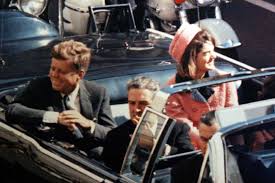
I Remember Exactly
Where I Was When . . .
On November 22, 1963 I was in an 8th-grade study hall at Bay Shore Junior High School, 393 Brook Avenue, when Harry Anderson, my English teacher, came into the room and walked over to Tom Ford, another English teacher who was our study-hall teacher, and whispered something to Mr. Ford. Mr. Anderson left and Mr. Ford looked at us, quite seriously. Now, we were all aware of the hi-jinks Ford and Anderson played on each other. They were two relatively young --- and very smart --- teachers who would run in and out of each other’s rooms playing practical jokes on one another, to the delight of the freshmen class (my group). We were attending the Junior High as freshman because an addition was being built to our high school to accommodate the Baby Boom. We would have to wait a year to go to the “real” high school. At any rate, Mr. Ford levels an extremely serious look at us and says, “The President has been shot.” It’s about 2:30 in the afternoon. Our first freshman dance of the year is scheduled for that evening. We break into laughter, figuring this is another of the Ford/Anderson practical jokes. Of course, it’s not. Mr. Ford rises, angry now, and assures us this is not a joke; the President, our beloved JFK, has been shot. Our dance is cancelled and a group of us walk back to my friend, Gil Schaeffer’s house, to watch Walter Cronkite announce the President is, in fact, dead. It is difficult to describe the sense of shock, disbelief and disorientation.
Where I Was When . . .
On November 22, 1963 I was in an 8th-grade study hall at Bay Shore Junior High School, 393 Brook Avenue, when Harry Anderson, my English teacher, came into the room and walked over to Tom Ford, another English teacher who was our study-hall teacher, and whispered something to Mr. Ford. Mr. Anderson left and Mr. Ford looked at us, quite seriously. Now, we were all aware of the hi-jinks Ford and Anderson played on each other. They were two relatively young --- and very smart --- teachers who would run in and out of each other’s rooms playing practical jokes on one another, to the delight of the freshmen class (my group). We were attending the Junior High as freshman because an addition was being built to our high school to accommodate the Baby Boom. We would have to wait a year to go to the “real” high school. At any rate, Mr. Ford levels an extremely serious look at us and says, “The President has been shot.” It’s about 2:30 in the afternoon. Our first freshman dance of the year is scheduled for that evening. We break into laughter, figuring this is another of the Ford/Anderson practical jokes. Of course, it’s not. Mr. Ford rises, angry now, and assures us this is not a joke; the President, our beloved JFK, has been shot. Our dance is cancelled and a group of us walk back to my friend, Gil Schaeffer’s house, to watch Walter Cronkite announce the President is, in fact, dead. It is difficult to describe the sense of shock, disbelief and disorientation.
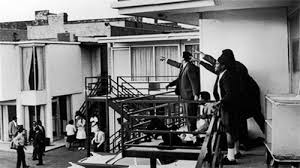
On Thursday, April 4, 1968, I was in 68 Vanderbilt Hall, a freshman dormitory room at Yale University. We were watching Steve Dillon’s rabbit-eared black-and-white t.v. Less than a week earlier we had been sitting there together, about 5 or 6 of us, as LBJ announced he “would not seek, nor will I accept, the nomination of my party for President of the United States.” We were excited, feeling as though our anti-war movement was gaining momentum. I was particularly thrilled because I believed this paved the way for my candidate, Bobby Kennedy, to run --- and win --- in ’68. But on this evening a bulletin interrupted whatever it was we were watching (to avoid doing our coursework), informing us that Marin Luther King, Jr. had been assassinated in Memphis, Tennessee. The pall that fell over that usually jovial room was palpable. We were shocked. Once again, disbelief and disorientation. The world was making less and less sense.
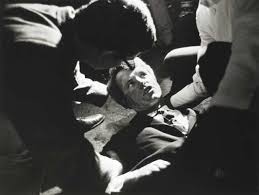
On another Thursday that spring, June 6, 1968, I was at my parent’s house in Bay Shore (NY) watching the results of the California Democratic primary come in. I had begun working for Bobby Kennedy and his victory in California would make him the front-runner for the Democratic nomination. Another Kennedy-Nixon campaign was in the offing. A little past 3 a.m. Eastern Time, RFK was assassinated, crashing the hopes and dreams of millions. On Friday, June 7th, Susie Furey and I took the Long Island Railroad to New York City to line up 25 blocks from St. Patrick’s Cathedral, where a closed, flag-draped coffin lay in state. We moved forward slowly over an 8-hour period before we reached the coffin, silently shuffling past it, paying our respects to our hero. Shock, disbelief, disorientation --- the world was making even less sense as 1968 progressed, culminating in Nixon’s election that November.

On a clear, cold Tuesday morning, January 28, 1986, around 11 a.m. My colleagues in the English Department at Winchester (MA) High School informed me that we were going to take our 4th period classes out into the Commons Area to watch the launch of the space shuttle Challenger. That Christa McAuliffe, a teacher from neighboring New Hampshire, was a crewmember made the flight historic and we were excited to share that with our students. There was a big old tube television set mounted on an “audio-visual” cart placed at the front of the area; students and teachers were sitting and standing around the Area, filling it up. At 11:39 a.m., 73 seconds into liftoff, the unthinkable happened right before our eyes. We watched the Challenger vaporize in an instant. There was dead silence and slowly you could hear crying, muffled sobs and see tears streaming down the faces of teachers and students. Many of us just stood in disbelief. Once again, I was disoriented and disconsolate.

Tuesday morning, September 11, 2001, I was on the way to my office in the Education Department at Brown University (Providence, Rhode Island) listening, as I did in those days, to “Imus in the Morning.” It was just past 8:45 a.m. as I headed up Angel Street when Warner Wolf, Imus’s sports reporter, was on the phone from his Greenwich Village apartment describing a plane crash at the World Trade Center. He made it clear that it was an airliner and the damage was significant. I turned my Toyota Rav4 around and went back to my apartment to watch the news on television. As I watched the first tower billowing smoke, a truly frightening image emerged on the screen --- a second plane. It was like watching a horror film. The plane sped down the Hudson and banked left. You knew what was going to happen and you were helpless to do anything about it. The crash was horrific, witnessed live, in living color. I immediately thought about my friend, Tom Leslie (married to the aforementioned Susie Furey), whose law firm had offices in the Towers. Tom split time between the Towers and White Plains offices. I called Susie to see if he was okay and she told me he was in a car on the way to LaGuardia when the first plane hit. Tom was safe and on his way home. My other New York City friends lived on the Upper West Side, so I assumed they were safe, as long as no other attacks occurred. Of course, as the morning went on, we learned of the Pentagon attack and the crash of United Airlines Flight 93 in Pennsylvania. Once again, shock, disbelief, disorientation. How do we make sense of a world that makes no sense?
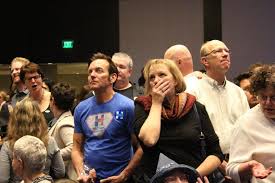
Tuesday, November 8, 2016, proved to be a day equal to those I’ve described above. Even now, a full ten days later, I am still in shock, shaking my head in disbelief. As with each of the earlier events that have spanned my lifetime, I am disoriented. Down is up and I cannot make sense of the world around me. Even though more of my fellow citizens voted for Hillary Clinton (by over ONE MILLION votes!) Donald Trump is the President-elect. As the daily newspapers inform me of his possible choices for various cabinet positions, I feel as though I am still in some bad dream that can’t be happening. As last Tuesday night unfolded, and the Electoral Map shifted to red, red, and more red, my heart sank. I was 15 when JFK was killed, and only 19 when Martin and Bobby were assassinated. These were shocks, but I was young and resilient. The Challenger was a tragedy but I knew we would recover gracefully. 9/11 was horrific and tore at the city I love most in the world --- I was there about two weeks later, in October, in Queens, and looked at a skyline the reminded me of my youth, before the Twin Towers were constructed, with the Empire State Building once again dominating the horizon. There was something wrong with that, like going backward in time. In much the same way, this election feels like going backward in time. I can only think of the first verse in W.B. Yeats’s “The Second Coming:”
Turning and turning in the widening gyre
The falcon cannot hear the falconer;
Things fall apart; the centre cannot hold;
Mere anarchy is loosed upon the world,
The blood-dimmed tide is loosed, and everywhere
The ceremony of innocence is drowned;
The best lack all conviction, while the worst
Are full of passionate intensity.
As I look around it does seem “the worst are full of passionate intensity” and we are in for a difficult, at best, four years. The center did not hold and the rest, as they say, remains to be seen.
Turning and turning in the widening gyre
The falcon cannot hear the falconer;
Things fall apart; the centre cannot hold;
Mere anarchy is loosed upon the world,
The blood-dimmed tide is loosed, and everywhere
The ceremony of innocence is drowned;
The best lack all conviction, while the worst
Are full of passionate intensity.
As I look around it does seem “the worst are full of passionate intensity” and we are in for a difficult, at best, four years. The center did not hold and the rest, as they say, remains to be seen.
Thursday, November 17th
Blast #75
Born to Ramble
I’m enough of a Bruce Springsteen fan to have gone out and bought this 510-page tome of an autobiography but, as I read it, I realized that I pretty much stopped listening to his music in 1985 or so. As the MTV generation took root in the 80s, and rock and roll headed in new directions, I started moving toward blues and jazz and, while a big fan of “the Boss,” only bought “greatest hits” or “live” CDs until I could stream all the albums I missed on Amazon Prime --- and I still haven't really given them a good listen. I bring this up because much of this autobiography is Springsteen discussing the making of various albums and writing certain songs and, to be honest, I was at sea regarding “The Ghost of Tom Joad,” “Nebraska,” “The Rising,” “Wrecking Ball,” “The Promise,” “Tracks” and others. I really only know the first 15 years of his 45 year career, musically. Nonetheless, I was very interested in reading his book because I do believe he is one of the great singer/songwriters in rock history (while not knowing the albums, I was still aware of some of his songs --- you couldn’t miss “Philadelphia,” right?). And I wanted to hear what he had to say about composing music. Good luck on that.
The strength of this book is that the chapters are short. It’s like an LP from the 60s, before FM radio and people started using drugs heavily. Remember those albums, with ten to twelve songs that were only about two and half to three minutes each? That’s kind of what this book is like. The fact that it runs over 500 pages, however, requires a genuine commitment on a reader’s part because there is a lot of circling back to some primary issues (his father, being a bandleader, New Jersey, etc.) and there is more than a little sentimentality that, happily for listeners, doesn’t appear in his music. There is not much insight into his artistic process and, despite the book’s length, there is a great deal that is left out.
While I understand Mr. Springsteen’s decision to be “discreet,” his “subtle” allusions to life on the road with a rock and roll band is pretty sketchy and not particularly useful to his narrative (he could have used a more demanding editor). Not that I was looking for a peek through that keyhole (there are plenty of other books for that) but he says that he spends a lot of time “in the wee, wee hours” working on songs he’s brought along that are unfinished, or seminal ideas. Yet, he provides no more than that. For all those great songs, Springsteen only tells his reader he was influenced by this or that (early rock, Elvis, Motown, etc.) and wanted to capture a particular sound or rhythm, but we are given no insight beyond that.
More frustrating for me, is that Springsteen never reveals where his far-reaching vocabulary and world view really come from. In the second half of the book he alludes to various texts and authors (Flannery O’Connor, Nathanael West, Jim Thompson) but we, the readers, are never privy to when Springsteen is acquiring all the knowledge he has. We learn that he graduated from high school in 1968 and attended a community college for about a semester. But we are given no peek into what was going on, intellectually, for the author. The vision projected is an obsessive, highly focused young musician intent on honing his skills as a guitarist and perfecting his craft as an artist --- traits that continue throughout his life, and in the book. However, when talking about Darkness at the Edge of Town he states: “Film became a great influence, and my title, Darkness at the Edge of Town was straight out of American noir.” (p.262) This is 1978. When was he going to the movies or watching those old classics on television? And which ones? He alludes to film noir again later in the book (as well as to James Cain, the author of The Postman Always Rings Twice & Double Indemnity) but gives us no insight into which films were influential and why? By page 267, my margin notes read, “He talks more about motivation and political philosophy than process --- creating the music is still alchemy for Springsteen’s readers. AND we have no clue as to how he became so erudite, 'hyper literate,' and adroit with vocabulary.” Now, this could be my problem and not the author’s.
Springsteen and I are essentially the same age (1949 – me, May; him, September). I did not have a “come to Jesus” moment seeing Elvis on The Ed Sullivan Show, as he did, and, obviously, I did not pursue the same career path. However, I lived through the same times (exactly) and was subject to many of the same influences. My bass playing in The Durations at the Bayway Beach and Cabana Club in 1965 was probably not as good as his guitar playing with The Castiles in Freehold or Asbury Park but we were both pursuing that rock and roll fantasy. I quit within a year and he’s had a brilliant career. The real point here is not that I believe I could have had Springsteen’s life, it’s that I know I was reading Ferlinghetti and Gregory Corso and Ezra Pound, along with my required Robert Frost and T.S. Eliot, and that led to me writing reams of poetry (that I still have!). Were those influences for Springsteen? He alludes to someone being his “Dean Moriarty” but where did he pick up that reference? From Kerouac or Tom Wolfe? We know nothing about the life of Springsteen’s mind beyond the squirrels that make him clinically depressed.
Ah, yes, we finally learn, in the last 20% or so of the tome, that Bruce needs to take antidepressants. He spends a lot of the book wrestling with his relationship with his father and it led me to write “drama queen” more than once in the margins. His Freudian exorcism of his father is prominent throughout the book, clearly something he had to work out here and let us know. It’s a little over the top for my taste, but judge for yourself. He also spends a bit too much time describing sunrises and sunsets, riding his motorcycle, and dealing with various band members.
In all, I find it amazing how little I really know about Bruce Springsteen after reading 500 plus pages of autobiography. He was obsessed with becoming a rock and roll star and finally gets to perform with the Rolling Stones, a dream come true, and that’s great. He grew up in extreme, hardscrabble circumstances and proves to be a true “American Dream” story, who has a wonderfully altruistic, humanistic heart and soul. But didn’t we already know that? Just observing from a distance and listening to his music, most of that story has been beautifully, poetically rendered in song. Maybe it’s the teacher in me, or the desire to know how someone really learns his craft beyond the endless hours of practice (10,000 according to Malcolm Gladwell --- and Bruce has clearly done that) but I wanted to know more about that part of “the Boss.” Whenever he discusses his internal monologue it is invariably about his struggles with his father or simply “how will I tell this story through music?” But we never get to find out about the real process of the latter --- and that’s very frustrating for me.
If you are a diehard Bruce Springsteen fan, you should definitely read this book. You’ll probably enjoy it more than I. If you are curious about the life of our preeminent rock and roll star, prior to Kanye or Taylor or whomever, it’s not a difficult read, so have at it. However, if you’re looking for some kind of insight as to how Springsteen, whose demographic history fits a Trump voter, became a wordsmith and poetic musical craftsman, I’m afraid Born to Run will not prove very satisfying.
Wednesday, November 16th
Blast #74
Music
Well, we lost Leonard Cohen last week and now Leon Russell and Mose Allison are gone. Leonard was 82, Mose 89, and Leon “only” 74. I wrote an “obit” for Leonard last week and Mose and Leon deserve the same. I am currently finishing Bruce Springsteen’s autobiography (Born to Run) and want to say a little bit about that, too, since Bruce is a direct descendent of these, now late, musicians.
Leon Russell is pretty well known to most pop/rock music fans. His presence in the late 60s and early 70s, as Joe Cocker’s bandleader for the Mad Dogs and Englishmen tour, as well as his composing Delta Lady and his significant solo career made him a popular figure, indeed. His long hair and beard (growing white over time), along with his top hat, comprised Russell’s signature look. Few knew that he was a well-established, in-demand studio musician long before the screaming Sixties hit. A member of “the Wrecking Crew,” the studio band behind the Beach Boys(Pet Sounds), the Mamas & Papas, Sonny & Cher, and even Frank Sinatra, Russell’s piano playing, arranging, and band leadership skills were well regarded among the music industry’s cognoscenti. We were lucky enough to see Leon in February of this year at the Fairfield Theater Club’s Warehouse, an intimate venue, seating a few hundred. His show was fabulous, replete with stories about working with great musicians over the years and finishing up by telling the audience he was not going to exit the stage and wait for unending applause before coming back out to do an encore. Basically, he said, “Let’s make believe I’ve done that, and here are the encore songs.” He was in good voice, his musicians (bass, guitar/mandolin/keyboard, drums) were superb and it was a fabulous evening.
Russell suffered a heart attack in early July, but was already booked to perform shows in early 2017. Sadly, we’ll not get to see Leon play again but certainly his music lives on. Last summer, the Lovely Carol Marie and I went to NYC’s Film Forum to see Les Blank’s 1974 documentary “A Poem is a Naked Person,” which Leon Russell commissioned in 1973. It is a beautiful documentary about a year in Leon Russell’s life that he would not let Blank release until this past year. When asked in an NPR interview why that was , Russell said that, when he screened it in 1974 he felt it was too “artsy” and Blank had taken some excursions into avant-garde filmmaking that Russell didn’t care for at the time. Upon reviewing the film in 2014 or so, he decided it was finally okay to release it. If you get a chance to see it, do! Much of it is shot in Russell’s hometown in Oklahoma, where he was building a personal recording studio in 1973-74 and the documenatry has some great live concert footage as well as Leon playing for a friend’s wedding. It is a beautiful and insightful film, providing a peek into Russell’s virtuosity as a musician and his charm as a person.
Mose Allison may not be as familiar to people as Leon Russell but to any serious jazz/blues fan he is/was a giant in the field. Allison’s distinctive piano style and his clever, intelligent songwriting is well-respected in the music community. A younger generation may well know Allison’s Everybody’s Cryin’ Mercy by way of Bonnie Raitt, or the hilarious Your Mind is on Vacation(But your Mouth is Working Overtime) thanks to Elvis Costello. Songs like “If You’re Goin’ to the City” had great satiric bite and Allison continued to write topical songs (“Certified Senior Citizen”) through his late 70s. I had the good fortune to see him play (accompanied only by a double bass) at the old Town Crier in Peekskill, New York (the site where Daryl’s House now stands) around a dozen years ago and, like Leon Russell, folksy charm was mixed with great piano playing and witty, interesting songs. Mose Allison consciously chose to remain a “lesser-known” jazz/blues artist who simply loved to create and play his music. His recording career began in 1957 and continued for a half century, influencing countless musicians along the way.
The September 5th “Blast” was about songwriters and I ranked Bruce Springsteen as only about a half-step down from Bob Dylan (and Joni Mitchell and Leonard Cohen) --- ranking him as a storytelling/songwriter, as opposed to a poet/songwriter. Presently, I’m reading Springsteen’s autobiography and I’ll give that a full-blown Blast Review in a day or two. Given the recent losses (Cohen, Russell, Allison), I thought a quote from Springsteen (who is only 4 months younger than I, having turned 67 in September) was particularly appropriate. At an early Rock and Roll Hall of Fame induction ceremony Springsteen and his close friend Steve Van Zandt found themselves standing among Dylan, George Harrison, B.B. King, Mick Jagger, Les Paul and other rock/music luminaries. His quote could well serve as the thoughts many of our generation have had:
Steve and I often ruminated on how we felt we’d been born at exactly
the right moment. We were teenagers in the sixties, when rock and radio
had their golden age, when the best pop music was also the most popular,
when a new language was being formed and spoken to young people
all across the world, when it remained an alien dialect to most parents,
when it defined a community of souls wrapped in the ecstasy and
confusions of their time but connected in blood brotherhood by the
disciple’s voice of their local deejay. (p.429, Born to Run)
I have often reflected on how lucky I feel to have been born in 1949, living through the last 50 years of the 20th century as the world --- and the United States in particular --- turned in wondrous new directions. Despite our present condition (more on that some other time), when I look back at living through the Sixties --- seeing Dylan in 1966 during his first acoustic/electric tour with “the Hawks” (The Band) backing him, going to Woodstock, hearing Hendrix, Joplin, Cream; being introduced to the great blues players when they were still around, it was an incredible time and the music reflected it. So now, as that first generation of great musicians passes from the scene, we should reflect on the good fortune we have had in being able to share in the wonder of the work of great artists, right before our eyes.
Sunday Blast, November 13th
Blast #73
Photo on left: 1964 Bay Shore High School Junior Varsity Football Team - heroes in the making
Top Right: Me (#21) with Gil Schaeffer (#82) and Coach Joe Cuozzo
Bottom Right: Coach's sideline huddle.
Top Right: Me (#21) with Gil Schaeffer (#82) and Coach Joe Cuozzo
Bottom Right: Coach's sideline huddle.
Tempus Fugit: Bay Shore H.S. 1966
A Totally Self-Indulgent Blast
Sunday morning I watched a team of 3rd, 4th & 5th graders complete an undefeated (tackle) football season and win a championship. I am no proponent of kids that age playing tackle football, but that’s not what this Blast is about. The game was played on a high school football field --- a perfect, sunny morning. Blue sky as far as you could see with a wispy cloud here and there. As I squinted into the glaring autumn sunlight to watch the game I was transported back half a century. Fifty years ago yesterday --- November 12, 1966 --- my Bay Shore High School football team completed an undefeated season on our home field, ending a journey we had started four years earlier as freshmen.
The BSHS Class of ’67 was unlike any of the classes before or after us. We had a large number of very fine athletes, as well as a significant number of excellent students. I spent four years playing basketball and football with guys who not only had talent but also an unrivaled work ethic. We lost 4 football games in four years and only one in our final two years (a 7-6 defeat during our junior year). Our senior year we scored 253 points in 8 games while yielding only 55. What’s incredible to me, as I remember that autumn, are two things: 1) how clear some memories of that season are; and 2) that there are friendships I have maintained, with consistency, for 50 years. Some of those friendships actually stretch back to Little League and Middle School, before we ever even put on pads together. So, this Blast is a stroll down memory lane or, better, a trip in Mr. Peabody’s Way-Back Machine (compliments of Rocky and Bullwinkle).
This morning, I listened to the coach of the elementary school team give his post-game talk to the victorious squad. He told them that they had set out not to be undefeated and win the championship but to work hard together and become better friends with one another. Obviously, if you connect those dots (hard work and genuine friendship) you stand a chance of having a good, if not great, team (talent does enter the equation, of course). As he spoke, I saw the faces and heard the names of the guys I played with in the fall of 1966 and it confirmed what the young coach told his charges. I have never, in the 50 years since that autumn, worked with such a large group of people who, for four months, sacrificed everything, personally and physically, for the good of the team.
We had come away from our junior year with a bad taste in our collective mouth. We had lost a 7-6 game because the seniors ahead of us allowed an interception to be run back for a touchdown and couldn’t drive the ball into the end zone for an extra point that would have tied the game. In August of 1966 we arrived on the Bay Shore football field for “captains’ practices” with only one goal in mind: an undefeated, untied season in which no one would come close to us. Lest I give too much credit to my class of seniors, we were blessed by the presence of a junior, the late Wayne Huff who, at 6’2” and about 215 pounds, became a first-team All Long Island running back that year, amassing 120 points (that’s 20 touchdowns!) in an 8 game season. Nonetheless, the line that blocked for Wayne was comprised of 6 seniors. As quarterback, I not only had Wayne but also a group of both fleet and strong running backs to spread the ball around to. As noted in the summative point totals (253 to 55) our defense was equally ferocious.
It’s hard to explain how much fun it was to play with that group of guys. Practice was fun! Our coaches had instituted several innovate ideas starting our junior year. One was isometric conditioning drills, another was an “I” formation offense (not seen anywhere in our League or even in Suffolk County at that time) and, finally, they instituted a 4-4 defense (four down lineman, four linebackers), allowing our defense to confuse and overwhelm our opponents. Being given the flexibility of the “I” formation as a quarterback was like being given the keys to a very adept and powerful vehicle --- all I had to do was steer it in the right direction.
Luckily for me, as quarterback, I had Gil Schaeffer (a friend to this day --- check out the “California Streamin’” tab on this website) playing end and Roy Sandstrom at guard. These were two very, very smart young men who, after almost every play, would walk back to the huddle informing me about what was going on in the defensive line and backfield --- with insight and suggestions! What fun. It was like a wonderful push-button offense that often provided fabulous results.
What I know about that season, and that group of teammates, is reminiscent of that moment in Casablanca (if you haven’t seen the movie, you are missing an important piece of cinematic history) when Rick (Humphrey Bogart) tells Ilsa (Ingrid Bergman), “We’ll always have Paris.” Melodramatic as that is, the 1966 Bay Shore Marauders football team will always have that season together.
Lo, these many years later, in conversations with Gil, and Dougie Tagner, and Michael Lynch, and Bob Dancik, we fondly recall not just that fall but see it through the prism of the four years of preparation for that fall. If you go to YouTube (https://www.youtube.com/watch?v=5PvJYqpJHAs) you can see Michael (Semi-Pro Sarasota football player defies his age) still suiting up and playing football --- but mentioning our team in his interview. Gil and I still revel in the down-and-out-and-up pass pattern that totally fooled Bobby Wentzel and Hutch Hodgson (the West Islip defenders) in our first game that season, resulting in a 31-yard touchdown throw and catch. We had many incredible moments together, as a team, which are hard to describe. It’s one of those “you had to be there” experiences.
So, watching those little kids wrap up their undefeated season today, and hearing their coach congratulate them on their hard work and friendship, I was shuttled back an entire half-century, reminded by a text I received from Doug yesterday about another teammate, Trent Germano (who was an elementary school buddy, living around the corner), posting pictures of “the team” on Facebook, celebrating the 50th anniversary of our undefeated season.
We’re old now. Grey hair and beards, bald, hearing aids, false teeth, expanded waistlines. Some have, undoubtedly, shuffled off this mortal coil. But there’s something about being on one of those teams that stays with you. Watching the Cubs win the World Series triggered the memory the same way Giants Super Bowl victories did. Sure, we weren’t on “the big stage” but it was our stage and it was just grand. I want to thank those teammates and friends from 1966 and say, simply, “we’ll always have Paris.”
Tempus Fugit: Bay Shore H.S. 1966
A Totally Self-Indulgent Blast
Sunday morning I watched a team of 3rd, 4th & 5th graders complete an undefeated (tackle) football season and win a championship. I am no proponent of kids that age playing tackle football, but that’s not what this Blast is about. The game was played on a high school football field --- a perfect, sunny morning. Blue sky as far as you could see with a wispy cloud here and there. As I squinted into the glaring autumn sunlight to watch the game I was transported back half a century. Fifty years ago yesterday --- November 12, 1966 --- my Bay Shore High School football team completed an undefeated season on our home field, ending a journey we had started four years earlier as freshmen.
The BSHS Class of ’67 was unlike any of the classes before or after us. We had a large number of very fine athletes, as well as a significant number of excellent students. I spent four years playing basketball and football with guys who not only had talent but also an unrivaled work ethic. We lost 4 football games in four years and only one in our final two years (a 7-6 defeat during our junior year). Our senior year we scored 253 points in 8 games while yielding only 55. What’s incredible to me, as I remember that autumn, are two things: 1) how clear some memories of that season are; and 2) that there are friendships I have maintained, with consistency, for 50 years. Some of those friendships actually stretch back to Little League and Middle School, before we ever even put on pads together. So, this Blast is a stroll down memory lane or, better, a trip in Mr. Peabody’s Way-Back Machine (compliments of Rocky and Bullwinkle).
This morning, I listened to the coach of the elementary school team give his post-game talk to the victorious squad. He told them that they had set out not to be undefeated and win the championship but to work hard together and become better friends with one another. Obviously, if you connect those dots (hard work and genuine friendship) you stand a chance of having a good, if not great, team (talent does enter the equation, of course). As he spoke, I saw the faces and heard the names of the guys I played with in the fall of 1966 and it confirmed what the young coach told his charges. I have never, in the 50 years since that autumn, worked with such a large group of people who, for four months, sacrificed everything, personally and physically, for the good of the team.
We had come away from our junior year with a bad taste in our collective mouth. We had lost a 7-6 game because the seniors ahead of us allowed an interception to be run back for a touchdown and couldn’t drive the ball into the end zone for an extra point that would have tied the game. In August of 1966 we arrived on the Bay Shore football field for “captains’ practices” with only one goal in mind: an undefeated, untied season in which no one would come close to us. Lest I give too much credit to my class of seniors, we were blessed by the presence of a junior, the late Wayne Huff who, at 6’2” and about 215 pounds, became a first-team All Long Island running back that year, amassing 120 points (that’s 20 touchdowns!) in an 8 game season. Nonetheless, the line that blocked for Wayne was comprised of 6 seniors. As quarterback, I not only had Wayne but also a group of both fleet and strong running backs to spread the ball around to. As noted in the summative point totals (253 to 55) our defense was equally ferocious.
It’s hard to explain how much fun it was to play with that group of guys. Practice was fun! Our coaches had instituted several innovate ideas starting our junior year. One was isometric conditioning drills, another was an “I” formation offense (not seen anywhere in our League or even in Suffolk County at that time) and, finally, they instituted a 4-4 defense (four down lineman, four linebackers), allowing our defense to confuse and overwhelm our opponents. Being given the flexibility of the “I” formation as a quarterback was like being given the keys to a very adept and powerful vehicle --- all I had to do was steer it in the right direction.
Luckily for me, as quarterback, I had Gil Schaeffer (a friend to this day --- check out the “California Streamin’” tab on this website) playing end and Roy Sandstrom at guard. These were two very, very smart young men who, after almost every play, would walk back to the huddle informing me about what was going on in the defensive line and backfield --- with insight and suggestions! What fun. It was like a wonderful push-button offense that often provided fabulous results.
What I know about that season, and that group of teammates, is reminiscent of that moment in Casablanca (if you haven’t seen the movie, you are missing an important piece of cinematic history) when Rick (Humphrey Bogart) tells Ilsa (Ingrid Bergman), “We’ll always have Paris.” Melodramatic as that is, the 1966 Bay Shore Marauders football team will always have that season together.
Lo, these many years later, in conversations with Gil, and Dougie Tagner, and Michael Lynch, and Bob Dancik, we fondly recall not just that fall but see it through the prism of the four years of preparation for that fall. If you go to YouTube (https://www.youtube.com/watch?v=5PvJYqpJHAs) you can see Michael (Semi-Pro Sarasota football player defies his age) still suiting up and playing football --- but mentioning our team in his interview. Gil and I still revel in the down-and-out-and-up pass pattern that totally fooled Bobby Wentzel and Hutch Hodgson (the West Islip defenders) in our first game that season, resulting in a 31-yard touchdown throw and catch. We had many incredible moments together, as a team, which are hard to describe. It’s one of those “you had to be there” experiences.
So, watching those little kids wrap up their undefeated season today, and hearing their coach congratulate them on their hard work and friendship, I was shuttled back an entire half-century, reminded by a text I received from Doug yesterday about another teammate, Trent Germano (who was an elementary school buddy, living around the corner), posting pictures of “the team” on Facebook, celebrating the 50th anniversary of our undefeated season.
We’re old now. Grey hair and beards, bald, hearing aids, false teeth, expanded waistlines. Some have, undoubtedly, shuffled off this mortal coil. But there’s something about being on one of those teams that stays with you. Watching the Cubs win the World Series triggered the memory the same way Giants Super Bowl victories did. Sure, we weren’t on “the big stage” but it was our stage and it was just grand. I want to thank those teammates and friends from 1966 and say, simply, “we’ll always have Paris.”
Saturday, November 12th
Blast #72
The Territory Ahead
I wrote a speculative piece on Wednesday morning, only to discover Garrison Keillor (late of Prairie Home Companion fame) had written a better piece for The Washington Post. Since it's my website, I'm posting my piece first, and then Keillor's.
The Morning After
for Trump Voters
What is the reaction going to be from those wearing the “Make America Great Again” caps when, during the next year, the following happens (or fails to happen):
- Taxes are cut for the rich and corporations/businesses, but not for the working class in any significant way.
- When jobs do not “come back,” because The Trump Organization and other businesses continue to make more profit with foreign labor, what will the excuse be?
- When our economy drops precipitously because of all the immigrants who are deported --- leaving behind jobs “real Americans” will not do --- will there be a workable alternative plan?
- What happens when the “Wall” isn’t built and Mexico doesn’t pay for anything.
- When Health Care premiums go through the roof as Obamacare is gutted and private insurers are in charge again; and those 20 million who now have Health Care are back without coverage --- skyrocketing all health costs --- how will that be spun to make America look “great?”
- And what about how the national debt will climb --- if Trump actually does fund the military as he promised and really tries to enact his promise to repair our infrastructure,; what then?
- And what if the Veterans Administration continues to languish and not serve our troops properly?
- And what about fracking, creating more earthquakes and poisoning more drinking water?
- And what if his proposed 32% tax on imports starts a trade war that causes U.S. consumer prices to go through the roof?
The list could go on and on, of course, from the ridiculous (every Wofford College student would get a job at graduation) to the sublime (?) (allowing concealed carry in all 50 states while declaring no schools or military bases would be gun-free zones.) The point is simple and obvious --- Trump made a million promises that will be impossible to keep and, if some of them are enacted, they may well bankrupt America like one of his Atlantic City casinos.
There are also the frightening promises: deporting undocumented immigrants, including children; banning Muslims (and even deporting some, while instituting surveillance of mosques nationwide); creating libel laws that would destroy first amendment protections for the press; violating international law to interrogate suspected terrorist, while killing their families. There is a red-meat faction among Trump’s supporters who love these ideas but is there widespread endorsement of this across the Republican Party? Or is it truly the Trump Party now, with no turning back?
During the closing week of the campaign Trump tried to get early voters to change their ballot, if they had “buyer’s remorse” because they voted for Hillary. I’m wondering if Trump voters, like many of the Brexit supporters, will wake up one morning and say, “Oh, shit, is this what I voted for?” Buyer’s remorse.
I hope I’m wrong but I see no reason to believe otherwise. Trump is a shallow, ignorant, narcissistic misogynist at his core and, at 70 years old, there’s no reason to believe this leopard will change his spots. Progressives and fair-minded people across the political spectrum have to begin organizing now to meet the challenges we will face in the coming four years. “Mr. Unpredictable” should prove to be a true wild card in all the worst possible ways, wreaking havoc with both the left and the right. Preparing for the unimaginable is the challenge ahead and we need to be clear-eyed and well-rested for the battles we will undoubtedly begin waging on January 20th.
Trump voters will not like what happens next
By Garrison Keillor - Washington Post, November 9th
.
So he won. The nation takes a deep breath. Raw ego and proud illiteracy have won out, and a severely learning-disabled man with a real character problem will be president. We are so exhausted from thinking about this election, millions of people will take up leaf-raking and garage cleaning with intense pleasure. We liberal elitists are wrecks. The Trumpers had a whale of a good time, waving their signs, jeering at the media, beating up protesters, chanting “Lock her up” — we elitists just stood and clapped. Nobody chanted “Stronger Together.” It just doesn’t chant.
The Trumpers never expected their guy to actually win the thing, and that’s their problem now. They wanted only to whoop and yell, boo at the H-word, wear profane T-shirts, maybe grab a crotch or two, jump in the RV with a couple of six-packs and go out and shoot some spotted owls. It was pleasure enough for them just to know that they were driving us wild with dismay — by “us,” I mean librarians, children’s authors, yoga practitioners, Unitarians, bird-watchers, people who make their own pasta, opera-goers, the grammar police, people who keep books on their shelves, that bunch. The Trumpers exulted in knowing we were tearing our hair out. They had our number, like a bratty kid who knows exactly how to make you grit your teeth and froth at the mouth.
Alas for the Trump voters, the disasters he will bring on this country will fall more heavily on them than anyone else. The uneducated white males who elected him are the vulnerable ones, and they will not like what happens next.
To all the patronizing B.S. we’ve read about Trump expressing the white working-class’s displacement and loss of the American Dream, I say, “Feh!” — go put your head under cold water. Resentment is no excuse for bald-faced stupidity. America is still the land where the waitress’s kids can grow up to become physicists and novelists and pediatricians, but it helps a lot if the waitress and her husband encourage good habits and the ambition to use your God-given talents and the kids aren’t plugged into electronics day and night. Whooping it up for the candidate of cruelty and ignorance does less than nothing for your kids.
We liberal elitists are now completely in the clear. The government is in Republican hands. Let them deal with him. Democrats can spend four years raising heirloom tomatoes, meditating, reading Jane Austen, traveling around the country, tasting artisan beers, and let the Republicans build the wall and carry on the trade war with China and deport the undocumented and deal with opioids, and we Democrats can go for a long , brisk walk and smell the roses.
I like Republicans. I used to spend Sunday afternoons with a bunch of them, drinking Scotch and soda and trying to care about NFL football. It was fun. I tried to think like them. (Life is what you make it. People are people. When the going gets tough, tough noogies.) But I came back to liberal elitism.
Don’t be cruel. Elvis said it, and it’s true. We all experienced cruelty back in our playground days — boys who beat up on the timid, girls who made fun of the homely and naive — and most of us, to our shame, went along with it, afraid to defend the victims lest we become one of them. But by your 20s, you should be done with cruelty. Mr. Trump was the cruelest candidate since George Wallace. How he won on fear and bile is for political pathologists to study. The country is already tired of his noise, even his own voters. He is likely to become the most intensely disliked president since Herbert Hoover. His children will carry the burden of his name. He will never be happy in his own skin. But the damage he will do to our country — who knows? His supporters voted for change, and boy, are they going to get it.
Back to real life. I went up to my home town the other day and ran into my gym teacher, Stan Nelson, looking good at 96. He commanded a landing craft at Normandy on June 6, 1944, and never said a word about it back then, just made us do chin-ups whether we wanted to or not. I saw my biology teacher Lyle Bradley, a Marine pilot in the Korean War, still going bird-watching in his 90s. I was not a good student then, but I am studying both of them now. They have seen it all and are still optimistic. The past year of politics has taught us absolutely nothing. Zilch. Zero. Nada. The future is scary. Let the uneducated have their day. I am now going to pay more attention to teachers.
By Garrison Keillor - Washington Post, November 9th
.
So he won. The nation takes a deep breath. Raw ego and proud illiteracy have won out, and a severely learning-disabled man with a real character problem will be president. We are so exhausted from thinking about this election, millions of people will take up leaf-raking and garage cleaning with intense pleasure. We liberal elitists are wrecks. The Trumpers had a whale of a good time, waving their signs, jeering at the media, beating up protesters, chanting “Lock her up” — we elitists just stood and clapped. Nobody chanted “Stronger Together.” It just doesn’t chant.
The Trumpers never expected their guy to actually win the thing, and that’s their problem now. They wanted only to whoop and yell, boo at the H-word, wear profane T-shirts, maybe grab a crotch or two, jump in the RV with a couple of six-packs and go out and shoot some spotted owls. It was pleasure enough for them just to know that they were driving us wild with dismay — by “us,” I mean librarians, children’s authors, yoga practitioners, Unitarians, bird-watchers, people who make their own pasta, opera-goers, the grammar police, people who keep books on their shelves, that bunch. The Trumpers exulted in knowing we were tearing our hair out. They had our number, like a bratty kid who knows exactly how to make you grit your teeth and froth at the mouth.
Alas for the Trump voters, the disasters he will bring on this country will fall more heavily on them than anyone else. The uneducated white males who elected him are the vulnerable ones, and they will not like what happens next.
To all the patronizing B.S. we’ve read about Trump expressing the white working-class’s displacement and loss of the American Dream, I say, “Feh!” — go put your head under cold water. Resentment is no excuse for bald-faced stupidity. America is still the land where the waitress’s kids can grow up to become physicists and novelists and pediatricians, but it helps a lot if the waitress and her husband encourage good habits and the ambition to use your God-given talents and the kids aren’t plugged into electronics day and night. Whooping it up for the candidate of cruelty and ignorance does less than nothing for your kids.
We liberal elitists are now completely in the clear. The government is in Republican hands. Let them deal with him. Democrats can spend four years raising heirloom tomatoes, meditating, reading Jane Austen, traveling around the country, tasting artisan beers, and let the Republicans build the wall and carry on the trade war with China and deport the undocumented and deal with opioids, and we Democrats can go for a long , brisk walk and smell the roses.
I like Republicans. I used to spend Sunday afternoons with a bunch of them, drinking Scotch and soda and trying to care about NFL football. It was fun. I tried to think like them. (Life is what you make it. People are people. When the going gets tough, tough noogies.) But I came back to liberal elitism.
Don’t be cruel. Elvis said it, and it’s true. We all experienced cruelty back in our playground days — boys who beat up on the timid, girls who made fun of the homely and naive — and most of us, to our shame, went along with it, afraid to defend the victims lest we become one of them. But by your 20s, you should be done with cruelty. Mr. Trump was the cruelest candidate since George Wallace. How he won on fear and bile is for political pathologists to study. The country is already tired of his noise, even his own voters. He is likely to become the most intensely disliked president since Herbert Hoover. His children will carry the burden of his name. He will never be happy in his own skin. But the damage he will do to our country — who knows? His supporters voted for change, and boy, are they going to get it.
Back to real life. I went up to my home town the other day and ran into my gym teacher, Stan Nelson, looking good at 96. He commanded a landing craft at Normandy on June 6, 1944, and never said a word about it back then, just made us do chin-ups whether we wanted to or not. I saw my biology teacher Lyle Bradley, a Marine pilot in the Korean War, still going bird-watching in his 90s. I was not a good student then, but I am studying both of them now. They have seen it all and are still optimistic. The past year of politics has taught us absolutely nothing. Zilch. Zero. Nada. The future is scary. Let the uneducated have their day. I am now going to pay more attention to teachers.
Friday, November 11th
Blast #71
DARKNESS AND LIGHT
I'm including two pieces in the Friday Blast.
The "Darkness" is not the election results but the passing of Leonard Cohen and my personal obituary for a great writer.
The "Light" is an e-mail I received Wednesday from my colleague and friend, Bill Meyer, who is the History Department Chair at Marin Academy in the Bay Area. I've simply cut and pasted the entire e-mail which is a wonderful testimony to how "a child will lead them."
Thanks for reading.
I'm including two pieces in the Friday Blast.
The "Darkness" is not the election results but the passing of Leonard Cohen and my personal obituary for a great writer.
The "Light" is an e-mail I received Wednesday from my colleague and friend, Bill Meyer, who is the History Department Chair at Marin Academy in the Bay Area. I've simply cut and pasted the entire e-mail which is a wonderful testimony to how "a child will lead them."
Thanks for reading.
Leonard Cohen, R.I.P.
I did my best, it wasn't much
I couldn't feel, so I tried to touch
I've told the truth, I didn't come to fool you
And even though
It all went wrong
I'll stand before the Lord of Song
With nothing on my tongue but Hallelujah
I came to Leonard Cohen late –-- in the late 70s & early 80s --- and not because I was drawn to his music but because my dear friend, John Lissauer, produced two of Cohen’s best albums (New Skin for the old Ceremony, Various Positions). I was well aware of “Suzanne” and “Bird on a Wire” but I initially had trouble with Cohen’s voice and wanted more rhythmically “upbeat” numbers (given my rock’n’roll soul). I recognized the genius of his lyrics and his crafting of simple but complicated music, but was never a big fan until years later.
“Hallelujah,” of course, has become an iconic anthem (and John produced it!). Everyone famously knows by now Columbia records passed on it in 1984, not believing it was glitzy enough (commercially) for the 80s. Such is corporate wisdom. With John’s connection, we were able to see Cohen live at Radio City Music Hall in December 2012. The Lovely Carol Marie, being a lifelong, passionate fan, was beside herself and the show was stunning. The sound system, the musicians and back up singers, the respectful audience, along with Cohen’s consummate showmanship (he was, in his early years, filled with stage fright) made for a great show. Shortly thereafter Cohen’s hypnotic “Nevermind” became the theme music for the second season of “True Detective” and I was reminded, again, of what a great songwriter he was.
So, while I started the week grieving the presidential election, I end it in a different frame of mind. I’m not grieving the loss of Leonard Cohen but celebrating a life well-spent that added a richness to those who listened to his haunting, probing lyrics and his simple yet transfixing music. Leonard’s gone but the songs live on --- Hallelujah!
I did my best, it wasn't much
I couldn't feel, so I tried to touch
I've told the truth, I didn't come to fool you
And even though
It all went wrong
I'll stand before the Lord of Song
With nothing on my tongue but Hallelujah
I came to Leonard Cohen late –-- in the late 70s & early 80s --- and not because I was drawn to his music but because my dear friend, John Lissauer, produced two of Cohen’s best albums (New Skin for the old Ceremony, Various Positions). I was well aware of “Suzanne” and “Bird on a Wire” but I initially had trouble with Cohen’s voice and wanted more rhythmically “upbeat” numbers (given my rock’n’roll soul). I recognized the genius of his lyrics and his crafting of simple but complicated music, but was never a big fan until years later.
“Hallelujah,” of course, has become an iconic anthem (and John produced it!). Everyone famously knows by now Columbia records passed on it in 1984, not believing it was glitzy enough (commercially) for the 80s. Such is corporate wisdom. With John’s connection, we were able to see Cohen live at Radio City Music Hall in December 2012. The Lovely Carol Marie, being a lifelong, passionate fan, was beside herself and the show was stunning. The sound system, the musicians and back up singers, the respectful audience, along with Cohen’s consummate showmanship (he was, in his early years, filled with stage fright) made for a great show. Shortly thereafter Cohen’s hypnotic “Nevermind” became the theme music for the second season of “True Detective” and I was reminded, again, of what a great songwriter he was.
So, while I started the week grieving the presidential election, I end it in a different frame of mind. I’m not grieving the loss of Leonard Cohen but celebrating a life well-spent that added a richness to those who listened to his haunting, probing lyrics and his simple yet transfixing music. Leonard’s gone but the songs live on --- Hallelujah!
And here's the LIGHT
Woke up to this from one of my incredible students today. If you like, please share in the blog...as we know, the kids are much wiser than we are, and they have said more here than i could ever have thought of to say today. Thought you might appreciate it. Solidarity, brother.
(Bill Meyer's intro to the following e-mail)
Hi awesome Marin Academy community,
The past 24 hours have been incredibly impactful and emotional. If you’re like us, it feels pretty weird to carry on as usual.
We are proposing a walk in solidarity to give our community the opportunity to take action together and show support for every member of Marin Academy. This walk will be about solidarity. We feel that this election has validated racism, sexism, xenophobia, and many other forms of discrimination, and we would like to march together to show that we will not stand for this intolerance. That even when it seems this country won’t accept our diversity, our community will celebrate it.
This walk is for everyone. It will be for all of us who may no longer feel we have a place in the direction America is headed. It will be for all of us who are passionate about standing with those feeling underrepresented and afraid. We are not trying to focus on hating Trump or protesting the results of the election. We are not trying to make a stand against Trump or divide people along political lines, but rather unite our school and show that as a community we will not tolerate discrimination. Whether you feel personally impacted by the results or not, please practice empathy and think about the importance of being an ally, of showing your support for your classmates, many of which are fearful for their futures.
Details
When: 10:15 A.M. for the last 20 minutes of F Block (maybe let your teachers know you are planning on leaving early)
Where: Meet in the courtyard under the BBLC bridge
Bring: Signs that have appropriate and positive messages (refrain from political statements, focus on solidarity, strength, and unity)
Other ways to show support:
We hope that this will be an opportunity to engage in current events and partake in the critical thinking and out of the classroom experience our school emphasizes so much. We understand that you spend a lot of time planning out classes on a schedule, and are very appreciative of all of the work that you put in. Yet, in this moment of pain and fear for so many people, we hope that as a community we can find 30 minutes of the school year to show our support and partake in the discourse and democratic process that you all have prepared us for. We encourage not just your students but also YOU to join us in our march.
We hope that this will be a place where people can express love for one another, empathize in both fears and hopes, and become the change we hope to see. This is a way for us to move forward without feeling like we are alone.
See you all at 10:00 am in the courtyard!!!
Peace and Love,
Members of the senior class.
POSTSCRIPT: I wrote and asked Bill how the event went. Here's his response.
Awesome. The event was great (save for the guy who came out of a building to flip us all off...even in Marin); and so you know for context, the seniors apparently hashed this whole thing out on their class Facebook page last night -- with lots of conversation about why it was important to not go negative. Amazing what kids can accomplish where their elders fail...
Woke up to this from one of my incredible students today. If you like, please share in the blog...as we know, the kids are much wiser than we are, and they have said more here than i could ever have thought of to say today. Thought you might appreciate it. Solidarity, brother.
(Bill Meyer's intro to the following e-mail)
Hi awesome Marin Academy community,
The past 24 hours have been incredibly impactful and emotional. If you’re like us, it feels pretty weird to carry on as usual.
We are proposing a walk in solidarity to give our community the opportunity to take action together and show support for every member of Marin Academy. This walk will be about solidarity. We feel that this election has validated racism, sexism, xenophobia, and many other forms of discrimination, and we would like to march together to show that we will not stand for this intolerance. That even when it seems this country won’t accept our diversity, our community will celebrate it.
This walk is for everyone. It will be for all of us who may no longer feel we have a place in the direction America is headed. It will be for all of us who are passionate about standing with those feeling underrepresented and afraid. We are not trying to focus on hating Trump or protesting the results of the election. We are not trying to make a stand against Trump or divide people along political lines, but rather unite our school and show that as a community we will not tolerate discrimination. Whether you feel personally impacted by the results or not, please practice empathy and think about the importance of being an ally, of showing your support for your classmates, many of which are fearful for their futures.
Details
When: 10:15 A.M. for the last 20 minutes of F Block (maybe let your teachers know you are planning on leaving early)
Where: Meet in the courtyard under the BBLC bridge
Bring: Signs that have appropriate and positive messages (refrain from political statements, focus on solidarity, strength, and unity)
Other ways to show support:
- If you cannot make the march for whatever reason, we encourage you to wear purple tomorrow as a symbol of solidarity
- There will be chalk in the circle all of tomorrow. Feel free to use it to express yourself and spread the love
We hope that this will be an opportunity to engage in current events and partake in the critical thinking and out of the classroom experience our school emphasizes so much. We understand that you spend a lot of time planning out classes on a schedule, and are very appreciative of all of the work that you put in. Yet, in this moment of pain and fear for so many people, we hope that as a community we can find 30 minutes of the school year to show our support and partake in the discourse and democratic process that you all have prepared us for. We encourage not just your students but also YOU to join us in our march.
We hope that this will be a place where people can express love for one another, empathize in both fears and hopes, and become the change we hope to see. This is a way for us to move forward without feeling like we are alone.
See you all at 10:00 am in the courtyard!!!
Peace and Love,
Members of the senior class.
POSTSCRIPT: I wrote and asked Bill how the event went. Here's his response.
Awesome. The event was great (save for the guy who came out of a building to flip us all off...even in Marin); and so you know for context, the seniors apparently hashed this whole thing out on their class Facebook page last night -- with lots of conversation about why it was important to not go negative. Amazing what kids can accomplish where their elders fail...
Thursday, November 10th
Blast #70
What Would I Tell My Students?
I spent the last six years of my teaching career working in New York City. 99% of my students were "of color" (Latino/Hispanic, African American, Asian American) with a high percentage of immigrant or first generation Americans. If I were teaching this week, I don't know, exactly, what I would tell them about this election. Personally, I'm going through the Kubler-Ross stages of grief. Tuesday night was denial and now the anger phase is seeping in (though there is still a strong dose of denial and un-reality lingering).
Nonetheless, one of the things teachers (the unheralded and under-appreciated people trying to educate what now appears to be an uneducatable populus) do is show up and try to help young people make sense of the world. And, even if the world makes no sense, you figure out some way to help them think critically about it.
With that in mind, I think I would probably share with them an article from Slate by Jamelle Bouie, forwarded to me by Jim Moyer. It's not a particularly upbeat piece but I believe it is something we all need to reflect on.
White Won
We are still the country that produced George Wallace. We are still the country that killed Emmett Till.
By Jamelle Bouie
Around 11:30 on Tuesday night, I left CBS News studios in New York City to take a walk and call my wife. We talked about the election. We talked about the very real chance of President Donald Trump. We talked, just to talk. But we didn’t talk long. We had to do work. I had to write. And she had to figure out what she would say to her students, many of them Hispanic, most of them young children of immigrants.
Heading back, I walked past a conversation between two cops. They were outside the building, on duty. They were black. And out of some need to keep talking, I walked over and jumped into their conversation. Neither officer questioned me or shooed me away. Instead, they invited me to commiserate with them.
“I can’t believe this. I just can’t believe it,” said one of the officers, the younger of the two. The other just shook his head. I asked the younger officer what he thought about all of this—about President Donald Trump. “This is deep, man. This is deep. Who am I supposed to be protecting now?” He looked down at his uniform. “Why am I wearing this?” He didn’t need to explain. The Donald Trump who won the presidency on Tuesday is the Donald Trump who demanded execution for five boys, wrongly accused of a crime. He is the Trump who ran on a platform of “law and order.” The age of Trump will be an age in which police can act with impunity. And as an officer of color, he knew, perhaps better than anyone, that it’s people who look like us—who are brown and black—who will face the brunt of that impunity.
Pundits and observers will attribute Trump’s win to “populism” or his “anti-elite” message. This is nonsense. Trump ran for president as a nationalist fighter for white America. He promised to deport Hispanic immigrants. He promised to ban Muslims from the United States. He refused to acknowledge Barack Obama’s legitimacy, casting him—until the end—as a kind of usurper of rightful authority. When faced with the fetid swamps of white reaction—of white supremacists and white nationalists and anti-Semites—he winked, and they cheered in response. And for good reason.
More than anything, Trump promises a restoration of white authority. After eight years of a black president—after eight years in which cosmopolitan America asserted its power and its influence, eight years in which women leaned in and blacks declared that their lives mattered—millions of white Americans said enough. They had their fill of this world and wanted the old one back. And although it’s tempting to treat this as a function of some colorblind anti-elitism, that cannot explain the unity of white voters in this election. Trump didn’t just win working-class whites—he won the college-educated and the affluent. He even won young whites. Seventeen months after he announced his candidacy, millions of white Americans flocked to the ballot box to put Trump into the White House. And they did so as a white herrenvolk, racialized and radicalized by Trump.
There’s an easy rejoinder here: How can this be about race when Trump won some Obama voters? There’s an equally easy answer: John McCain indulged racial fears, and Mitt Romney played on racial resentment, but they refused to go further. To borrow from George Wallace, they refused to cry “nigger.” This is important. By rejecting the politics of explicit racism and white backlash, they moved the political battleground to nominally colorblind concerns. Race was still a part of these clashes—it’s unavoidable—but neither liberals nor conservatives would litigate the idea of a pluralistic, multiracial democracy. Looking back, I thought this meant we had a consensus. It appears, instead, that we had a detente. And Trump shattered it. With his jeremiads against Hispanics and Muslims—with his visions of dystopian cities and radicalized refugees—Trump told white Americans that their fears and anger were justified. And that this fear and anger should drive their politics. Trump forged a politics of white tribalism, and white people embraced it.
Here’s what we need to understand: This has happened before. For 10 brief years after the Civil War, a coalition of ex-slaves and white farmers worked to forge democracy in the former Confederacy. With the help of the federal government, they scored real victories and made significant gains. But their success spurred a backlash of angry whites, furious at sharing power with blacks and their Northern allies, murderous at the very idea of social equality. Those whites fought a war against Reconstruction governments, and when they won, they declared the South redeemed.
Trump forged a politics of white tribalism, and white people embraced it.
Decades later, another group of blacks and whites—this time in North Carolina—banded together to topple reactionaries and establish democracy. For a short moment, they succeeded. Working together as “fusionists,” they built schools, brought relief, and established true representative government in the South. And the backlash came. Some whites would relinquish white supremacy. Most wouldn’t. Using violence and terrorism, they toppled the fusionists and established a rigid white rule that would last into the 20th century, eventually dismantled during our Second Reconstruction, the civil rights movement.
As soon as that Reconstruction ended, there was a backlash. But it wasn’t as strong as previous ones. It brought leaders who nodded to problems of racism and racial discrimination, even as they played on white fears and white anxieties. After years of struggle, we had come to some agreement: We believed in equality. And when a black man won the presidency—the symbolic pinnacle of white power and white prerogative—we celebrated as a nation.
Fifty years after the black freedom movement forced the United States to honor its ideals, at least on paper, it’s clear this was premature. Like clockwork, white Americans embraced a man who promised a kind of supremacy. We haven’t left our long cycle of progress and backlash. We are still the country that produced George Wallace. We are still the country that killed Emmett Till.
Americans are stubbornly, congenitally optimistic. And the millions who backed Trump see something in his visage. Something that gives them hope. Here’s what I see. I see a man who empowered white nationalists and won. I see a man who demanded the removal of nonwhite immigrants and won. I see a man who pledged war crimes against foreign enemies and won. I see a man who empowers the likes of Rudy Giuliani and others who see blacks as potential criminals to control, not citizens to respect.
After the redemption of the South, black Americans—and nonwhites around the country—faced the nadir. Whites imposed new kinds of discrimination and turned a blind eye to the pogroms and racial terrorism that was scarring the American landscape.
In a few hours, millions of Americans will wake up in the age of Trump. I, and millions who look like me, will open our eyes to a second redemption. We can only hope—we can only pray—that we won’t reach a new nadir.
Wednesday, November 9th
Blast #69
This was forwarded to me by Yvette Nachmias-Baeu and expresses, far more articulately than I ever could right now, how I'm (and I know many others) are feeling --- and seeing the future.
Out of desperaton and hope-
From the New Yorker-
An American Tragedy
AN AMERICAN TRAGEDY By David Remnick
The electorate has, in its plurality, decided to live in Trump’s world.The election of Donald Trump to the Presidency is nothing less than a tragedy for the American republic, a tragedy for the Constitution, and a triumph for the forces, at home and abroad, of nativism, authoritarianism, misogyny, and racism. Trump’s shocking victory, his ascension to the Presidency, is a sickening event in the history of the United States and liberal democracy. On January 20, 2017, we will bid farewell to the first African-American President—a man of integrity, dignity, and generous spirit—and witness the inauguration of a con who did little to spurn endorsement by forces of xenophobia and white supremacy. It is impossible to react to this moment with anything less than revulsion and profound anxiety.
There are, inevitably, miseries to come: an increasingly reactionary Supreme Court; an emboldened right-wing Congress; a President whose disdain for women and minorities, civil liberties and scientific fact, to say nothing of simple decency, has been repeatedly demonstrated. Trump is vulgarity unbounded, a knowledge-free national leader who will not only set markets tumbling but will strike fear into the hearts of the vulnerable, the weak, and, above all, the many varieties of Other whom he has so deeply insulted. The African-American Other. The Hispanic Other. The female Other. The Jewish and Muslim Other. The most hopeful way to look at this grievous event—and it’s a stretch—is that this election and the years to follow will be a test of the strength, or the fragility, of American institutions. It will be a test of our seriousness and resolve.
Early on Election Day, the polls held out cause for concern, but they provided sufficiently promising news for Democrats in states like Pennsylvania, Michigan, North Carolina, and even Florida that there was every reason to think about celebrating the fulfillment of Seneca Falls, the election of the first woman to the White House. Potential victories in states like Georgia disappeared, little more than a week ago, with the F.B.I. director’s heedless and damaging letter to Congress about reopening his investigation and the reappearance of damaging buzzwords like “e-mails,” “Anthony Weiner,” and “fifteen-year-old girl.” But the odds were still with Hillary Clinton.
All along, Trump seemed like a twisted caricature of every rotten reflex of the radical right. That he has prevailed, that he has won this election, is a crushing blow to the spirit; it is an event that will likely cast the country into a period of economic, political, and social uncertainty that we cannot yet imagine. That the electorate has, in its plurality, decided to live in Trump’s world of vanity, hate, arrogance, untruth, and recklessness, his disdain for democratic norms, is a fact that will lead, inevitably, to all manner of national decline and suffering.
In the coming days, commentators will attempt to normalize this event. They will try to soothe their readers and viewers with thoughts about the “innate wisdom” and “essential decency” of the American people. They will downplay the virulence of the nationalism displayed, the cruel decision to elevate a man who rides in a gold-plated airliner but who has staked his claim with the populist rhetoric of blood and soil. George Orwell, the most fearless of commentators, was right to point out that public opinion is no more innately wise than humans are innately kind. People can behave foolishly, recklessly, self-destructively in the aggregate just as they can individually. Sometimes all they require is a leader of cunning, a demagogue who reads the waves of resentment and rides them to a popular victory. “The point is that the relative freedom which we enjoy depends of public opinion,” Orwell wrote in his essay “Freedom of the Park.” “The law is no protection. Governments make laws, but whether they are carried out, and how the police behave, depends on the general temper in the country. If large numbers of people are interested in freedom of speech, there will be freedom of speech, even if the law forbids it; if public opinion is sluggish, inconvenient minorities will be persecuted, even if laws exist to protect them.”
Trump ran his campaign sensing the feeling of dispossession and anxiety among millions of voters—white voters, in the main. And many of those voters—not all, but many—followed Trump because they saw that this slick performer, once a relative cipher when it came to politics, a marginal self-promoting buffoon in the jokescape of eighties and nineties New York, was more than willing to assume their resentments, their fury, their sense of a new world that conspired against their interests. That he was a billionaire of low repute did not dissuade them any more than pro-Brexit voters in Britain were dissuaded by the cynicism of Boris Johnson and so many others. The Democratic electorate might have taken comfort in the fact that the nation had recovered substantially, if unevenly, from the Great Recession in many ways—unemployment is down to 4.9 per cent—but it led them, it led us, to grossly underestimate reality. The Democratic electorate also believed that, with the election of an African-American President and the rise of marriage equality and other such markers, the culture wars were coming to a close. Trump began his campaign declaring Mexican immigrants to be “rapists”; he closed it with an anti-Semitic ad evoking “The Protocols of the Elders of Zion”; his own behavior made a mockery of the dignity of women and women’s bodies. And, when criticized for any of it, he batted it all away as “political correctness.” Surely such a cruel and retrograde figure could succeed among some voters, but how could he win? Surely, Breitbart News, a site of vile conspiracies, could not become for millions a source of news and mainstream opinion. And yet Trump, who may have set out on his campaign merely as a branding exercise, sooner or later recognized that he could embody and manipulate these dark forces. The fact that “traditional” Republicans, from George H. W. Bush to Mitt Romney, announced their distaste for Trump only seemed to deepen his emotional support.
The commentators, in their attempt to normalize this tragedy, will also find ways to discount the bumbling and destructive behavior of the F.B.I., the malign interference of Russian intelligence, the free pass—the hours of uninterrupted, unmediated coverage of his rallies—provided to Trump by cable television, particularly in the early months of his campaign. We will be asked to count on the stability of American institutions, the tendency of even the most radical politicians to rein themselves in when admitted to office. Liberals will be admonished as smug, disconnected from suffering, as if so many Democratic voters were unacquainted with poverty, struggle, and misfortune. There is no reason to believe this palaver. There is no reason to believe that Trump and his band of associates—Chris Christie, Rudolph Giuliani, Mike Pence, and, yes, Paul Ryan—are in any mood to govern as Republicans within the traditional boundaries of decency. Trump was not elected on a platform of decency, fairness, moderation, compromise, and the rule of law; he was elected, in the main, on a platform of resentment. Fascism is not our future—it cannot be; we cannot allow it to be so—but this is surely the way fascism can begin.
Hillary Clinton was a flawed candidate but a resilient, intelligent, and competent leader, who never overcame her image among millions of voters as untrustworthy and entitled. Some of this was the result of her ingrown instinct for suspicion, developed over the years after one bogus “scandal” after another. And yet, somehow, no matter how long and committed her earnest public service, she was less trusted than Trump, a flim-flam man who cheated his customers, investors, and contractors; a hollow man whose countless statements and behavior reflect a human being of dismal qualities—greedy, mendacious, and bigoted. His level of egotism is rarely exhibited outside of a clinical environment.
For eight years, the country has lived with Barack Obama as its President. Too often, we tried to diminish the racism and resentment that bubbled under the cyber-surface. But the information loop had been shattered. On Facebook, articles in the traditional, fact-based press look the same as articles from the conspiratorial alt-right media. Spokesmen for the unspeakable now have access to huge audiences. This was the cauldron, with so much misogynistic language, that helped to demean and destroy Clinton. The alt-right press was the purveyor of constant lies, propaganda, and conspiracy theories that Trump used as the oxygen of his campaign. Steve Bannon, a pivotal figure at Breitbart, was his propagandist and campaign manager.
It is all a dismal picture. Late last night, as the results were coming in from the last states, a friend called me full of sadness, full of anxiety about conflict, about war. Why not leave the country? But despair is no answer. To combat authoritarianism, to call out lies, to struggle honorably and fiercely in the name of American ideals—that is what is left to do. That is all there is to do.
Tuesday, November 8th
Blast #68
Planning Ahead
Well, you may have heard that plans for Donald J. Trump’s cabinet are shaping up and, what we’ve heard is that, under a President Trump we would see the following: Secretary of State – Newt Gingrich; Attorney General – Rudy Giuliani; Secretary Defense or National Security Agency Director – (ret.) General Michael Flynn. It’s a real dream team given Trump’s temperament, isn’t it? The raving Giuliani, the frothing Flynn, and the bloviating Newt are all cut from the same cloth as the serial liar at the top of their party’s ticket. So, this got me to thinking I should recommend possible Cabinet nominees to Hillary Clinton.
One way Clinton might bring America together after this horribly divisive election campaign is to think “out of the box” when appointing a cabinet so, here are my suggestions.
Well, you may have heard that plans for Donald J. Trump’s cabinet are shaping up and, what we’ve heard is that, under a President Trump we would see the following: Secretary of State – Newt Gingrich; Attorney General – Rudy Giuliani; Secretary Defense or National Security Agency Director – (ret.) General Michael Flynn. It’s a real dream team given Trump’s temperament, isn’t it? The raving Giuliani, the frothing Flynn, and the bloviating Newt are all cut from the same cloth as the serial liar at the top of their party’s ticket. So, this got me to thinking I should recommend possible Cabinet nominees to Hillary Clinton.
One way Clinton might bring America together after this horribly divisive election campaign is to think “out of the box” when appointing a cabinet so, here are my suggestions.
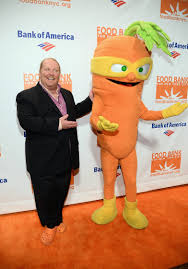
Secretary of Agriculture
A surprising but brilliant choice here would be Mario Batali --- the wildly popular Iron Chef speaks several languages, is conversant with farm-to-table agricultural concepts and would be a great ambassador for the Clinton administration.
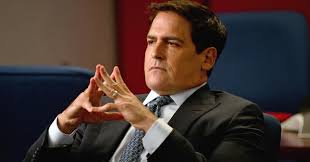
Secretary of Commerce
This is a no-brainer --- Mark Cuban. The Dallas Maverick’s owner has been a big Clinton supporter and would bring his telegenic style and Shark Tank acumen to the Commerce Department.
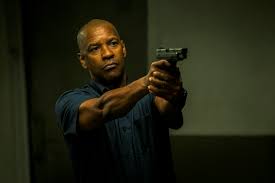
Secretary of Defense
Now, this will be a bit of a surprise, but I think if you reflect on it, you’ll agree. Denzel Washington. Now, I know you’re thinking: WTF? Denzel? But think about this: if Trump thinks he can be president because of his Apprentice experience, consider all of Denzel’s military and weapons experience on screen. Case closed.
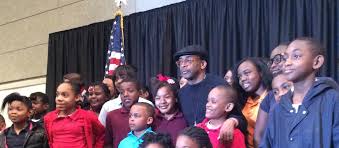
Secretary of Education
We are all slaves (bad term) to our screens in 2016 and media/technology seems an important direction for our 21st century education goals. Who better to guide that than Spike Lee? Here’s someone who knows urban education, who knows how to educate via the big (and small) screen (remember those Michael Jordan/Mars Blackmon ads?). Perfect choice.

Secretary of Energy
Here’s a perfect curveball --- and one that reaches across the aisle. Jeb Bush! Jeb’s a guy who’s got a lot to prove about “energy” after this campaign and I don’t doubt he’ll throw himself into the job with enormous energy!
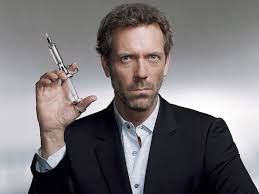
Secretary of Health and Human Services
Okay, this is pretty far “out of the box” --- and may require some naturalization papers --- but don’t you think Hugh “House” Laurie would be a great pick here? The iconoclastic thinker would surely bring new solutions to our Health & Human Services Department.
Secretary of Housing and Urban Development
This will be a dual appointment because Housing is certainly different than “urban development.” So, for the Housing part, I’d appoint Bob “This Old House” Vila, who has a background in housing like no one else. Regarding Urban Development, my choice would be Cory Booker, the former mayor of Newark, New Jersey, and now a senator from that state. A great team, Vila & Booker.
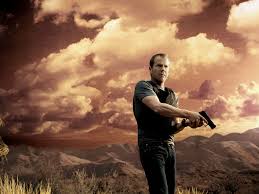
Secretary of Homeland Security
This is probably an obvious choice but I believe Kiefer Sutherland’s experience with “24” and, now, “Designated Survivor,” makes him the perfect candidate for this job.
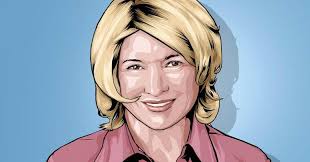
Secretary of the Interior
Obviously we have a male-dominated cabinet but here’s a chance to not only appoint a woman but also present a great “second chance” story. The perfect Secretary of the Interior? Ex-con Martha Stewart. I don’t think the brilliance of this selection needs any elaboration.

Secretary of Transportation
Thinking about the future, I’d go with a great immigrant story here and choose Elon Musk (South Africa via Canada to U.S. citizenship). Between the Tesla and SpaceX, Mr. Musk is clearly thinking about transportation and the future. His brother Kimbal, by the way, would make a great Undersecretary of Agriculture (Google him).

Secretary of the Treasury
The only person I can think of for this position is the MIT/Princeton professor and Nobel Laureate,
Paul Krugman. If you don’t read his column in the N.Y.Times you are missing out on a great Economics education. A simple and perfect choice.

Attorney General
(Head of the Justice Department)
Well, Julianna Margulies's experience on The Good Wife makes her a pretty clear choice. Sam Waterston’s name was bandied about, but he’s 75 and even too old for a Supreme Court nomination.
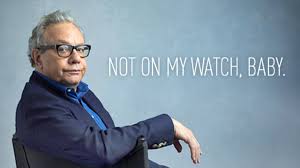
Secretary of State
This may seem like a crazy idea, but could prove one of the best ever: Lewis Black! Yes, he’s a little volatile but he’s quite brilliant and would bring a great sense of humor to the job --- and world diplomacy.

Chief of Staff
I think a great choice here would be Jon Stewart. He can clearly organize and direct great talent (Steve Carell, Stephen Colbert, Larry Wilmore, Samantha Bee, et al) and would prove a great right-hand-man to President Clinton 2.

Press Secretary
I’d love to see John Oliver (another Stewart Daily Show alum) as the Press Secretary. Imagine what fun those press conferences would be!
Possible Supreme Court Nominations
Here’s my short list of possible Supreme Court appointments Clinton could make --- you probably know these people and, if not, Google them. Chris Rock, Rachel Maddow, Cornel West, and Bill Maher.
Here’s my short list of possible Supreme Court appointments Clinton could make --- you probably know these people and, if not, Google them. Chris Rock, Rachel Maddow, Cornel West, and Bill Maher.
So, those are my suggestions for the new Clinton Administration. Please let me know if you have other ideas ([email protected]), I’d love to hear what they are.
Monday, November 7th
Blast #67
You Heard It Here First
There’s a very fun site you might want to play with today: www.270towin.com. The site allows you to play with the electoral votes, awarding a state to the Republicans or Democrats (or 3rd party candidates). It is great fun and you can play out your fantasies, hopes, and fears without any repercussions. So, I played with the map this morning --- for both the Presidential and Senate races and I’m ready to make my predictions --- without providing any scientific or rational reasoning, which seems only appropriate given what we’ve lived through for the last year and a half.
In the Presidential race I think Clinton will win 349 electoral votes, Trump will garner 183, and Evan McMullin will take Utah and its 6 electoral votes. I believe Clinton will take Florida, North Carolina, Arizona, Nevada, Wisconsin, Minnesota, Michigan and even Ohio. I think Trump is so repugnant to the Mormons in Utah that Evan McMullin will squeak out the victory there.
In the Senate, my prognostication is, admittedly, more a wish list but it could happen. The long shot/battleground races I think the Democrats can (not necessarily will) win include Pennsylvania, North Carolina, Nevada, Missouri, Wisconsin, and Indiana, giving the Democrats a 52-48 edge in the Senate. I’ll grant that Missouri is an extreme long shot but I think the others, given the “over-performing“ Latino community, as well as the disaffection of moderate Republicans, will deliver the Senate to the Democrats.
So, there’s the prediction for all my “Chicken Little” friends (and lovely wife) who believe there will be some science fiction groundswell of support for Trump at the last minute that will somehow deliver the Presidency to the Orange Menace. That is not going to happen. I’m hoping my Senate predictions come true (and maybe even add New Hampshire to the “D” column). Either way, playing with www.270towin.com might be a good way to distract yourself until the real results are announced.
Finally, what I am most curious about is how, exactly, Donald J. Trump will deal with a crushing public defeat like this. I assume he’ll claim the election was “rigged,” etc. but the reality of an overwhelming electoral and popular vote defeat cannot be denied, no matter how delusional Trump and his supporters are. It will also be interesting to watch how the Republican Party picks up its pieces as a major political organization.
I expect the small-minded Jason Chaffetz will rail about investigations and impeachment, and the neutered/spayed Republican Senators will decry the Clinton appointments to the Supreme Court, but the die will be cast, the Rubicon crossed, and the second Clinton presidency, the first female President, will begin a new chapter in U.S. History on January 20, 2017.
Sunday, November 6th
Blast #66
“My Family Didn’t Own Slaves”
As we are about to vote to return the Presidency of the United States to an American of Western European descent, I cannot help but comment on the deep, deep fissure in our society that still divides us. Race has been an issue in this country since 1619, when the first African slaves were delivered to Virginia to work the tobacco farms and it continues to be a gut-wrenching, soul-searching issue in 2016, some 399 years later.
I recently watched an HBO documentary called “The Loving Story”--- the current, fictionalized theatrical-release Loving movie uses the documentary as the base of its story. If you are not familiar with the story, in 1958 Richard Loving, a white man, married Mildred Jeter, an African-American/Native-American woman, in Washington, D.C. They lived in Virginia, however, where the first miscegenation law against black/white marriage was passed in 1691! Long story short, their local, racist sheriff arrested them and they challenged the law, getting their case to the Supreme Court in 1967 with the help of Robert Kennedy and the American Civil Liberties Union. In a 9-0 landmark decision, the Warren Court struck down the Virginia law, which, in turn, tore down similar statutes in 16 other states. As a point of fact, the state of Alabama finally took the law off the books in 2000. And that’s where my commentary begins.
We are an inherently racist nation and I believe Trump’s campaign has made that racism all too visible. Stephen Colbert’s turn as a political talk show host on Comedy Central brilliantly parodied those who claim, “I don’t see color.” If you live in the United States and claim you “don’t see color” you are either a liar or an intellectually challenged individual. We live in a highly segregated society which, despite a sea change of progress since the 1960s, still has an institutionalized core that is inherently racist. The Black Lives Matter movement, the numerous police shootings of the past few years, reading TaNehisi Coates’s Between the World and Me (please check out the “Culture” tab for my June 10th essay on that) as well as Colson Whitehead’s The Underground Railroad, along with seeing movies like Nate Parker’s The Birth of a Nation, has brought me to a point of internalizing the concept of American racism that I had never previously realized.
Now, as a point of fact, I joined the NAACP in 1964 (yes, white people can belong!) at the age of 15 and participated in voter registration drives on Long Island, sponsored by the local Methodist Church and pastor Fred Jones of Bay Shore, Long Island. And, in the spring of 1970 I worked with student activists and members of the Black Panther Party to organize the student strike and demonstrations in New Haven, Connecticut. As an undergraduate I took as many courses as I could in the newly created “Afro-American” Studies Department at Yale, reading W.E.B. DuBois, John Hope Franklin, Ralph Ellison, Richard Wright, James Baldwin, Nikki Giovanni, and scores of others. This led to a commitment to the idea of defeating racism in our society as much as I could. That, in turn, led to a career in teaching. I think my students, over the years, whether high school, undergraduate, or graduate, would say, at the very least, my politics were transparent.
Yet, as I noted in the Coates essay in June, I am only now beginning to realize what being black in America really entails --- and I believe other white people, and especially well-meaning white people like myself, may be in the same boat. When Donald Trump caricatures the black community as “hell,” many white people believe him, no questions asked. When young black men are gunned down in various cities, the media is always quick to point out their previous criminal record (if there is one). That the advent of cell-phone cameras and technology have now allowed us to see what African Americans have been asserting for decades (about their “relationship” with local law enforcement) is just the beginning of opening a window to a history of the United States that we white Americans have had the privilege of ignoring.
Some people ran to fact check if Michelle Obama was correct in stating she lived in a “house built by slaves,” because we honestly don’t want to believe that the White House, of all places, employed slave labor (it did). Yet the history of America and the situation African Americans find themselves in every day is thoroughly woven around the master-slave relationships that were forged in the infancy of this nation.
We hesitate to equate today’s police shootings with good old-fashioned lynchings --- but how are they different? How is George Zimmerman’s execution of Trayvon Martin not a 21st century lynching? Or Philando Castile? Eric Garner was selling individual cigarettes on a street in Staten Island --- a “crime” of such magnitude it led to four officers subduing (and killing) him. The list goes on and on --- yet that list has been there for hundreds of years. The random killing of black men goes back to colonial America --- and the source of it all is slavery, pure and simple.
One race assumed supremacy over another by virtue of brute force and more advanced technology (if you haven’t read Jared Diamond’s brilliant Guns, Germs, and Steel you should get it, posthaste!). The Europeans created the system, for sure, but the American colonists, and later United States, "perfected" it, creating national myths that persist to this day. Please note:
Nearly half of Trump's supporters described African Americans as more "violent" than whites. The same proportion described African Americans as more "criminal" than whites, while 40 percent described them as more "lazy" than whites.
In smaller, but still significant, numbers, Clinton backers also viewed blacks more critically than whites with regard to certain personality traits. Nearly one-third of Clinton supporters described blacks as more "violent" and "criminal" than whites, and one-quarter described them as more "lazy" than whites.
http://www.reuters.com/ June 28, 2016
That’s where we stand in 2016. There is no rational way to justify those numbers because, given our segregated housing patterns, many, if not most, of the white people making those “judgments” probably do not genuinely know any black people, other than what they see or hear from the media.
Consider the history, please. You have one group in control of all the powerful institutions in the country --- most particularly the government and business. You have another group that, historically, is denied education, denied decent housing, denied good paying jobs, denied the right to vote, and discriminated against at every turn in every feasible way. There is no even playing field here. As soon as the Supreme Court struck down provisions in the 1965 Voting Rights Act --- what had been a monumental Civil Rights victory --- here’s what happened:
States that were previously covered in some part by Section 5 moved quickly after it (the Voting Rights Act) was invalidated. Within two hours of the Shelby decision, Republican Texas Attorney General Greg Abbott announced that the state's voter identification law—which had previously been blocked by a federal court—would be immediately implemented. Alabama Attorney General Luther Strange, another Republican, also immediately instated his state's voter ID law. About one month after the Shelby decision, Republicans in North Carolina pushed through a package of extreme voting restrictions, including ending same-day registration, shortening early voting by a week, requiring photo ID, and ending a program that encourages high schoolers to sign up to vote when they turn 18. In October, Virginia purged more than 38,000 names from the voter rolls. Mississippi's Republican secretary of state, Delbert Hosemann, told the Associated Press in November that the state was going to start implementing its voter ID law by the June 2014 elections. (This proposal was undergoing Justice Department review when the Shelby decision came down.) In January, Republican Gov. Rick Scott attempted again (unsuccessfully) to purge noncitizens from Florida's voting rolls, a move he had tried previously in 2012, before being blocked by Section 5. And thanks to the Supreme Court ruling, South Carolina was able to implement a stricter photo identification requirement.
http://www.motherjones.com/ April 8, 2014
It is not a shock that all the states noted in that excerpt were members of the Confederacy, right? And that we are hearing there is active voter suppression against African-American voters occurring right now as the 2016 election is happening is not a shock, right?
And that’s my point, I guess. I don’t have answers or solutions, other than American’s doing some serious soul-searching --- and, yes, I’m taking a good, hard look at all the supposed “Christians” who support Muslim bans, who cheer when told blacks live in “hell,” etc. --- where’s all that “brotherhood” and cheek-turning that Jesus talked about? Of course, that's only one group that needs to reflect on our history. We need to educate the rural and white working class in ways that allows people to see how the powers-that-be play poor white groups off against poor black (and Latino, and Asian) groups --- there's a lot of history there to point to.
Race is the most uncomfortable subject we have to deal with because it’s right in our face, every day. But an equally vexing problem is ignorance and blind prejudice (they go hand-in-hand). America’s “low-information” voters are on the Trump bandwagon, with FoxNews and InfoWars supplying the music. How do we, after November 8th, begin to heal the scar that has blistered our skin since 1619? How do we initiate the conversations, the legislation, the humane path toward healing this sorely divided country?
The Millennials, for all the criticism they take, seem an open-minded and inclusive bunch. Maybe our hope is in the future with them. I certainly hope so.
Friday, November 4th
Blast #65
The Home Stretch
(Finally!)
Okay, our long national nightmare is almost over and I’d like to use the final Friday of this seemingly endless presidential campaign for some commentary about three items that struck me as significant this week. One was Melania Trump’s appearance on the campaign trail for the first time since the Republican National Convention (and, no, it was not to clarify her immigration status, as we were promised by The Donald six weeks ago). Second, I want to take one last look at Trump’s mindset, regarding women, based on his own quotes and what we can infer. Finally, I'd like to take one last look at the FBI’s pursuit of Hillary Clinton, based on the last week or two’s “revelations.” So, without further ado, here we go.
#1 - Melania
Melania Trump’s speech on Thursday was baffling, when one could understand what she was saying. Without trying to sound too critical --- what the fuck? Here’s a quote from the BBC.
She announced her big idea if she becomes First Lady - a crusade against cyber-bullying. "Our culture has gotten too mean and too rough, especially for children and teenagers," she opined, seemingly forgetting the pugnacious campaign that her husband has run. http://www.bbc.com/news/election-us-2016-37865154
Indeed, it is hard to fathom what genius in the Trump campaign thought that this would be the ideal crusade for Melania as First Lady. A cursory sample of The Donald’s Tweets (below) fly in the face of everything Melania spoke about. Worse, though, was her mechanical, cyborg-like delivery. For a woman who can speak five languages and has been in the United States for twenty years, she rivals Dr. Henry (“Strangelove”) Kissinger in not being able to shake her native Slovenian accent (but maybe that’s because she speaks it at home with 10 year old Barron ). So, my glib and offensive (?) take on Melania’s speech --- regarding both style and content --- is one of my final takes on the election.
The Home Stretch
(Finally!)
Okay, our long national nightmare is almost over and I’d like to use the final Friday of this seemingly endless presidential campaign for some commentary about three items that struck me as significant this week. One was Melania Trump’s appearance on the campaign trail for the first time since the Republican National Convention (and, no, it was not to clarify her immigration status, as we were promised by The Donald six weeks ago). Second, I want to take one last look at Trump’s mindset, regarding women, based on his own quotes and what we can infer. Finally, I'd like to take one last look at the FBI’s pursuit of Hillary Clinton, based on the last week or two’s “revelations.” So, without further ado, here we go.
#1 - Melania
Melania Trump’s speech on Thursday was baffling, when one could understand what she was saying. Without trying to sound too critical --- what the fuck? Here’s a quote from the BBC.
She announced her big idea if she becomes First Lady - a crusade against cyber-bullying. "Our culture has gotten too mean and too rough, especially for children and teenagers," she opined, seemingly forgetting the pugnacious campaign that her husband has run. http://www.bbc.com/news/election-us-2016-37865154
Indeed, it is hard to fathom what genius in the Trump campaign thought that this would be the ideal crusade for Melania as First Lady. A cursory sample of The Donald’s Tweets (below) fly in the face of everything Melania spoke about. Worse, though, was her mechanical, cyborg-like delivery. For a woman who can speak five languages and has been in the United States for twenty years, she rivals Dr. Henry (“Strangelove”) Kissinger in not being able to shake her native Slovenian accent (but maybe that’s because she speaks it at home with 10 year old Barron ). So, my glib and offensive (?) take on Melania’s speech --- regarding both style and content --- is one of my final takes on the election.
#2 – The Donald and Women
Clearly, since the Access Hollywood bus tapes there has been increased discussion of Donald Trump’s misogyny. More than that, though, I have to say, “Did that tape really tell us anything we didn’t already know?” Weren’t we pretty clearly aware of Trump’s attitude toward women based on his actions (the end of his marriage to Ivana) as well as his statements (all those Howard Stern tapes). But I’d also put together a couple of quotes that I believe go hand-in-hand. First, a Trump Tweet from May of 2013:
26,000 unreported sexual assaults in the military-only 238 convictions. What did these geniuses expect when they put men & women together?
And then, the Access Hollywood “hot mike” tape:
I better use some Tic Tacs just in case I start kissing her. You know, I’m automatically attracted to beautiful — I just start kissing them. It’s like a magnet. Just kiss. I don’t even wait. And when you’re a star, they let you do it. You can do anything.
Here we see, in the first quote, Trump’s total expectation that when you put men and women together, how can you not expect sexual assault? In Trump’s world, men are uncontrollable sexual predators --- if you put women in the midst of men (in the armed forces or anywhere else, we are left to assume) of course there will be sexual assault! The second quote simply confirms Trump’s admission that he is a “real guy” who just can’t help himself when he sees a beautiful woman. This is man who gives another guy permission to call his daughter a “piece of ass.” It reveals all we need to know about his views on women. “Nuff said.
#3 – The F.B.I.
While F.B.I. agents are not allowed to discuss any cases that are under investigation, we know that the Bureau is a leaky sieve these days and multiple sources have revealed the following:
The interworkings of the FBI have been generously described as “chaotic” since Director James Comey declined not to recommend Hillary Clinton face criminal charges over her private email server, and this is because, as one current FBI agent described, “the FBI is Trumpland.”
http://occupydemocrats.com/2016/11/04/fbi-agent-just-admitted-bosses-pro-trump-hate-antichrist-hillary/
Based on Comey’s “bombshell” revelation about the Anthony Weiner/Huma Abedin laptop containing “hundreds of thousands” emails that might be pertinent to the Clinton investigation occurring during the last ten days of the election campaign (a total breach of Justice Department policy and protocol), this “Trumpland” notion is very disturbing. Worse was Rudy Guiliani’s appearance on the Trump/FoxNews Network two days before that saying:
“I think he’s (Trump) got a surprise or two that you’re going to hear about in the next few days. I mean, I’m talking about some pretty big surprises.”
Now, everyone knows Guiliani loves to brag about his F.B.I. connections. On November 3rd, the New York Times reported:
Since August, Mr. Giuliani has publicly claimed that F.B.I. agents were telling him that Mrs. Clinton should have been criminally charged for the email server. “It perplexes numerous F.B.I. agents who talk to me all the time,” Mr. Giuliani said during an August interview with Chris Cuomo on CNN. “And it embarrasses some F.B.I. agents.”
Again, Bureau agents are not allowed to publicly discuss cases but Rudy has made it pretty clear that he has connections, which would not be surprising given his background as a U.S. Attorney and NYC Mayor (during 9/11). Nonetheless, it does make the Comey “revelation” seem tainted, at best, and grossly political, at worst.
PostScript
This has been a brutal election campaign to watch – and it has seemed never-ending. Starting with the primaries, we have been incessantly assaulted by a barrage of downward spiraling words, actions, advertisements, debates, and punditry. I am exhausted, fatigued, and ready for it to end. This past week I have tried to focus on Netflix, Amazon, HBO and the like, tired of the false equivalencies, the arguing commentators, the grotesque twisting of the news media, all the while grossly missing Jon Stewart’s Daily Show.
So, as Republicans have already promised to not confirm Clinton Supreme Court appointees while continuing to investigate her every action, the future does not look much brighter. I’m hoping, of course, the Democrats take the Senate, turning the Supreme Court liberal for (at least) a generation to come and some kind of virus, that only fatally strikes politicians, breaks out. Beyond that, it’s only 105 days until Spring Training and a new baseball season, 148 days until the Final Four Men’s NCAA College basketball championship, and 196 days until my 68th birthday (meaning, I start my 69th year!), so there are some things to look forward to!
Until then, find "other" things to do this weekend, . . . and Monday, . . .and Tuesday and you’ll wake up Wednesday to a “new” world. Oh, yeah, also remember to “fall back” this weekend as we go back to Standard Time (is there some symbolism in that?).
#3 – The F.B.I.
While F.B.I. agents are not allowed to discuss any cases that are under investigation, we know that the Bureau is a leaky sieve these days and multiple sources have revealed the following:
The interworkings of the FBI have been generously described as “chaotic” since Director James Comey declined not to recommend Hillary Clinton face criminal charges over her private email server, and this is because, as one current FBI agent described, “the FBI is Trumpland.”
http://occupydemocrats.com/2016/11/04/fbi-agent-just-admitted-bosses-pro-trump-hate-antichrist-hillary/
Based on Comey’s “bombshell” revelation about the Anthony Weiner/Huma Abedin laptop containing “hundreds of thousands” emails that might be pertinent to the Clinton investigation occurring during the last ten days of the election campaign (a total breach of Justice Department policy and protocol), this “Trumpland” notion is very disturbing. Worse was Rudy Guiliani’s appearance on the Trump/FoxNews Network two days before that saying:
“I think he’s (Trump) got a surprise or two that you’re going to hear about in the next few days. I mean, I’m talking about some pretty big surprises.”
Now, everyone knows Guiliani loves to brag about his F.B.I. connections. On November 3rd, the New York Times reported:
Since August, Mr. Giuliani has publicly claimed that F.B.I. agents were telling him that Mrs. Clinton should have been criminally charged for the email server. “It perplexes numerous F.B.I. agents who talk to me all the time,” Mr. Giuliani said during an August interview with Chris Cuomo on CNN. “And it embarrasses some F.B.I. agents.”
Again, Bureau agents are not allowed to publicly discuss cases but Rudy has made it pretty clear that he has connections, which would not be surprising given his background as a U.S. Attorney and NYC Mayor (during 9/11). Nonetheless, it does make the Comey “revelation” seem tainted, at best, and grossly political, at worst.
PostScript
This has been a brutal election campaign to watch – and it has seemed never-ending. Starting with the primaries, we have been incessantly assaulted by a barrage of downward spiraling words, actions, advertisements, debates, and punditry. I am exhausted, fatigued, and ready for it to end. This past week I have tried to focus on Netflix, Amazon, HBO and the like, tired of the false equivalencies, the arguing commentators, the grotesque twisting of the news media, all the while grossly missing Jon Stewart’s Daily Show.
So, as Republicans have already promised to not confirm Clinton Supreme Court appointees while continuing to investigate her every action, the future does not look much brighter. I’m hoping, of course, the Democrats take the Senate, turning the Supreme Court liberal for (at least) a generation to come and some kind of virus, that only fatally strikes politicians, breaks out. Beyond that, it’s only 105 days until Spring Training and a new baseball season, 148 days until the Final Four Men’s NCAA College basketball championship, and 196 days until my 68th birthday (meaning, I start my 69th year!), so there are some things to look forward to!
Until then, find "other" things to do this weekend, . . . and Monday, . . .and Tuesday and you’ll wake up Wednesday to a “new” world. Oh, yeah, also remember to “fall back” this weekend as we go back to Standard Time (is there some symbolism in that?).
Thursday, November 3rd
Blast #64
Finally, Joy in Mudville!
Well, the Cubbies did it in classic fashion. A ten inning, rain-delayed 8-7 victory over the valiant Cleveland Indians. It was a great World Series and baseball fans around the country should be feeling pretty good today. The Cubs first World Series championship since 1908 in their first World Series appearance since 1945 meant this was the first time the Cubs appeared in the World Series with black and Latino players on their roster. Cleveland’s last championship, in 1948, featured the American League’s first African-American player, Larry Doby, and the ageless Satchel Paige. So, this Series was historic in many ways and I think it deserves some perspective, while also applauding miracle workers Theo Epstein and Joe Maddon (not to sell Terry Francona short, by the way, who is a fabulous manager).
Here are some facts about 1908. Teddy Roosevelt was in the last year of his presidency and William Howard Taft would be elected that fall (November 3rd, in fact). Fittingly, regarding our current news cycle, the FBI was created. Henry Ford introduced his first Model T and General Motors and the Fisher (auto) Body companies were established, as was the Converse Rubber Shoe Company. 1908 also marked the first year “the ball” dropped in Times Square, the creation of Harvard Business School, the first upright vacuum cleaner and the first observance of Mother’s Day. It was also the Cubs second consecutive World Series victory, that year beating the Detroit Tigers. There was also a significant race riot in Springfield, Illinois, which left 7 dead (5 whites, 2 blacks). A gaggle of famous names from 20th century U.S. history were born in 1908, including Walter Annenberg, Bette Davis, Edward R. Murrow (and Joe McCarthy!), Nelson Rockefeller, Adam Clayton Powell, Jr., James Stewart, Lionel Hampton and Harry Blackmun, to name but a few. None of those people ever saw the Cubs win a World Series.
The chief architects behind this championship, aside from Tom Ricketts who had the foresight and $$$ (from TD Ameritrade) to hire them, are Theo Epstein and Joe Maddon. Epstein comes from a very literary family in Brookline, Massachusetts (where his twin brother is a guidance counselor at the high school). His grandfather was a co-writer of the Casablanca screenplay and his father is the head of Boston University’s Creative Writing department. Epstein graduated with an American Studies degree from Yale (as did I!) in 1995 having already done three years of interning with the Baltimore Orioles and serving as Sports Editor of the Yale Daily News. Any baseball fan worth his salt knows that Theo became the youngest General Manager ever (at age 28) when the Red Sox hired him and that he assembled the team that broke the 86 year “curse” on the Red Sox.
Joe Maddon is one of the great stories in baseball and, with this World Series win (and others to come?), will probably be a strong contender for the Hall of Fame. Never making it as a major league catcher (Class A was the highest level he competed at), Maddon became a scout, a coach, a hitting instructor, etc. while spending 35 years in the Los Angeles (California) Angels organization, finally getting a break in 1999, becoming Mike Scoscia’s bench coach and right hand man. The Angels won the World Series in 2002 (with current Cubs pitcher John Lackey a rookie sensation). In 2006 Maddon became the Tampa Bay (Devil) Rays manager and, with one of the lowest payrolls in baseball, made a perennial winner out of that team, taking them to the World Series in 2008 (losing to the Phillies). Along the way, Maddon made a name for himself as a wildly creative manager. He created “dress up” road trips for his team (getting the whole squad to dress up as Nerds, Disney Princesses, clowns, or wearing onesies for long plane rides). He hired DJ’s for the locker room and did media interviews with a cockatoo on his shoulder. He warmed up an outfielder until his real reliever was ready in the bullpen and, with the Cubs, often bats his pitcher in the 8th spot, breaking baseball orthodoxy. When an umpire threatened to throw him out if he said one more word, Maddon looked him in the eye and said, “I love you,” getting ejected immediately. That’s the kind of guy Joe Maddon is --- not a Sabremetric, go by the data manager (though Epstein certainly buys into much of that). Whatever. These two have brought the Cubs and their fans and the City of Chicago the championship they waited so long for.
A quick word about the Indians (whose name and mascot, of course, are controversial). First, Terry (Tito) Francona is a great manager (having led Epstein’s Red Sox to two World Championships, 2004 and 2007) and should be given enormous credit for getting Cleveland so close (10 innings, one run? Heartbreaking). Second, it would have been really cool to see the Indians win a championship right on the heels of the LeBron-led Cavaliers, but it wasn’t in the cards. Maybe next year.
In all, let’s appreciate how much a baseball team can lift the spirits of an entire city, how it can bring diverse groups of people together through a common belief. I hope this serves as more than a simple “distraction” from the insanity of the election year. Reflecting on how, in fact, people can come together so beautifully over what some might say is a silly --- even boring --- game, should be a source of hope and inspiration in its own way. The pride Chicago and Cleveland have felt this year should be something we all aspire to --- not just for our favorite sports franchises but for our country. Not in a superficial “America First” (or “great again”) way but in a way that appreciates the history and progress of an experiment that is still transitioning before our eyes. While 1908 did see the Springfield Race Riot and the “Gentlemen’s Agreement,” limiting Japanese immigration, it was also a year in the midst of enormous progressive change in the country. TR had led the charge against monopolies, had begun the conservation movement by declaring vast areas of U.S. wilderness as “national treasures,” saw minimum wage and maximum hour laws passed, the Pure Food and Drug and Meat Inspection acts were also passed and the NAACP was created in 1909. The ensuing years saw the institution of the graduated income tax, direct election of Senators, and the right to vote for women --- all Constitutional Amendments.
While we worry about the mess we’re in, it may be a good time to enjoy the moment with the Cubs, to reflect on our history, and begin to reassess how we might go forward in a positive and progressive manner.
Or not.
Finally, Joy in Mudville!
Well, the Cubbies did it in classic fashion. A ten inning, rain-delayed 8-7 victory over the valiant Cleveland Indians. It was a great World Series and baseball fans around the country should be feeling pretty good today. The Cubs first World Series championship since 1908 in their first World Series appearance since 1945 meant this was the first time the Cubs appeared in the World Series with black and Latino players on their roster. Cleveland’s last championship, in 1948, featured the American League’s first African-American player, Larry Doby, and the ageless Satchel Paige. So, this Series was historic in many ways and I think it deserves some perspective, while also applauding miracle workers Theo Epstein and Joe Maddon (not to sell Terry Francona short, by the way, who is a fabulous manager).
Here are some facts about 1908. Teddy Roosevelt was in the last year of his presidency and William Howard Taft would be elected that fall (November 3rd, in fact). Fittingly, regarding our current news cycle, the FBI was created. Henry Ford introduced his first Model T and General Motors and the Fisher (auto) Body companies were established, as was the Converse Rubber Shoe Company. 1908 also marked the first year “the ball” dropped in Times Square, the creation of Harvard Business School, the first upright vacuum cleaner and the first observance of Mother’s Day. It was also the Cubs second consecutive World Series victory, that year beating the Detroit Tigers. There was also a significant race riot in Springfield, Illinois, which left 7 dead (5 whites, 2 blacks). A gaggle of famous names from 20th century U.S. history were born in 1908, including Walter Annenberg, Bette Davis, Edward R. Murrow (and Joe McCarthy!), Nelson Rockefeller, Adam Clayton Powell, Jr., James Stewart, Lionel Hampton and Harry Blackmun, to name but a few. None of those people ever saw the Cubs win a World Series.
The chief architects behind this championship, aside from Tom Ricketts who had the foresight and $$$ (from TD Ameritrade) to hire them, are Theo Epstein and Joe Maddon. Epstein comes from a very literary family in Brookline, Massachusetts (where his twin brother is a guidance counselor at the high school). His grandfather was a co-writer of the Casablanca screenplay and his father is the head of Boston University’s Creative Writing department. Epstein graduated with an American Studies degree from Yale (as did I!) in 1995 having already done three years of interning with the Baltimore Orioles and serving as Sports Editor of the Yale Daily News. Any baseball fan worth his salt knows that Theo became the youngest General Manager ever (at age 28) when the Red Sox hired him and that he assembled the team that broke the 86 year “curse” on the Red Sox.
Joe Maddon is one of the great stories in baseball and, with this World Series win (and others to come?), will probably be a strong contender for the Hall of Fame. Never making it as a major league catcher (Class A was the highest level he competed at), Maddon became a scout, a coach, a hitting instructor, etc. while spending 35 years in the Los Angeles (California) Angels organization, finally getting a break in 1999, becoming Mike Scoscia’s bench coach and right hand man. The Angels won the World Series in 2002 (with current Cubs pitcher John Lackey a rookie sensation). In 2006 Maddon became the Tampa Bay (Devil) Rays manager and, with one of the lowest payrolls in baseball, made a perennial winner out of that team, taking them to the World Series in 2008 (losing to the Phillies). Along the way, Maddon made a name for himself as a wildly creative manager. He created “dress up” road trips for his team (getting the whole squad to dress up as Nerds, Disney Princesses, clowns, or wearing onesies for long plane rides). He hired DJ’s for the locker room and did media interviews with a cockatoo on his shoulder. He warmed up an outfielder until his real reliever was ready in the bullpen and, with the Cubs, often bats his pitcher in the 8th spot, breaking baseball orthodoxy. When an umpire threatened to throw him out if he said one more word, Maddon looked him in the eye and said, “I love you,” getting ejected immediately. That’s the kind of guy Joe Maddon is --- not a Sabremetric, go by the data manager (though Epstein certainly buys into much of that). Whatever. These two have brought the Cubs and their fans and the City of Chicago the championship they waited so long for.
A quick word about the Indians (whose name and mascot, of course, are controversial). First, Terry (Tito) Francona is a great manager (having led Epstein’s Red Sox to two World Championships, 2004 and 2007) and should be given enormous credit for getting Cleveland so close (10 innings, one run? Heartbreaking). Second, it would have been really cool to see the Indians win a championship right on the heels of the LeBron-led Cavaliers, but it wasn’t in the cards. Maybe next year.
In all, let’s appreciate how much a baseball team can lift the spirits of an entire city, how it can bring diverse groups of people together through a common belief. I hope this serves as more than a simple “distraction” from the insanity of the election year. Reflecting on how, in fact, people can come together so beautifully over what some might say is a silly --- even boring --- game, should be a source of hope and inspiration in its own way. The pride Chicago and Cleveland have felt this year should be something we all aspire to --- not just for our favorite sports franchises but for our country. Not in a superficial “America First” (or “great again”) way but in a way that appreciates the history and progress of an experiment that is still transitioning before our eyes. While 1908 did see the Springfield Race Riot and the “Gentlemen’s Agreement,” limiting Japanese immigration, it was also a year in the midst of enormous progressive change in the country. TR had led the charge against monopolies, had begun the conservation movement by declaring vast areas of U.S. wilderness as “national treasures,” saw minimum wage and maximum hour laws passed, the Pure Food and Drug and Meat Inspection acts were also passed and the NAACP was created in 1909. The ensuing years saw the institution of the graduated income tax, direct election of Senators, and the right to vote for women --- all Constitutional Amendments.
While we worry about the mess we’re in, it may be a good time to enjoy the moment with the Cubs, to reflect on our history, and begin to reassess how we might go forward in a positive and progressive manner.
Or not.
Wednesday, November 2nd
Blast #63
The Paulie-Ant’ny Report
Those who are acquainted with me would probably note that I have a fairly strong streak of skepticism --- some might even say cynicism. Nonetheless, as we (finally) approach Election Day, I have to say that I have consistently been a Pollyanna (or, in my gender corrected fashion, a Paulie-Ant’ny). Numerous friends have emailed and messaged me, asking I reassure them that Hillary Clinton will win the election. I have, from the start, assured them she will. And I will continue to do so.
Now I know some who read that will immediately jump up and say, “Have you been watching the news? Do you see how close the polls are getting?” And I will try to get people to calm down and take note that the MEDIA wants, indeed needs, us to be on the edge of our seats through November 8th so their ratings will soar! Oh, my god, the Lovely Carol Marie told me yesterday, Nate Silver says Clinton is down to 68%! That’s right, Trump has a 32% chance of winning. Hmm, last time I checked the only time you are really successful at 32% is if you are a major league hitter --- beyond that you, oh, what do you call it? Oh, that’s right, you’re a LOSER!
All sarcasm aside, over 20 million people have already voted and, most notably, a TargetSmart/William&Mary poll released this morning, based on 3.6 million Florida voters who have already cast their votes had Clinton with 53% in her pocket, including 28% of registered Republicans! Now, things can change, but Tom Bonier, the CEO of TargetSmart (a highly reputable data group) reported on MSNBC’s Lawrence O’Donnell show Tuesday night that they expect Clinton to win Florida 48% to 40%. TargetSmart also has Clinton ahead in Ohio by 3%.
Moody’s Analytic, which has correctly picked all the Presidential races from 1980 through 2012, has Clinton winning 332-206 (which was exactly the Obama-Romney vote in 2012). Moody’s uses an interesting criterion:
1. The two parties’ share of the popular vote in previous elections. This captures some of the noneconomic factors affecting election results, such as states’ general political leanings.
2 “Voter fatigue”—the tendency to turn out an incumbent party that has held the White House for two or more terms.
3 Changes in economic conditions before the election, specifically trends in gas prices, house prices, and real personal income.
Moody’s considers an array of factors that even the “best” scientific polls do not. For example, they see “gas prices” as important because, they contend, the average citizen uses gas prices as his/her indicator of how the economy’s doing (hence, in 1980 when gas prices were sky-high, it worked against Carter. In 2016, when gas prices are at historic lows – since 1980 – it favors Clinton). In all, it is clearly a more complex constellation of factors than even the most sophisticated polling ---- which is probably why they have been right in NINE consecutive presidential elections.
Finally, let me warn about what I call the “Chicken Little” effect in your household. CNN, MSNBC, FoxNews, et al, love to start the day cherry-picking the polls, saying, “Well, in the latest NBC/NYTimes poll, Clinton’s lead is only 1%.” That may be, as it was yesterday. Of course, TEN other polls had Clinton with anywhere from a 3% to 7% lead! Do not get suckered into reacting to ONE poll! The media want you to panic, particularly if you’re a Democrat or left-leaning voter. They also want to buoy up the Trumpists and right-wingers so they can say, “See, we’re still in this!” Of course, the FBI has proven a great boon to the Trump campaign but it’s all pretty empty bluster if you really examine it (Bill Clinton’s pardon of Mark Rich is an issue in the 2016 campaign? Really?).
There is always a last-week tightening in the polls, but I would advise folks to do the following:
#1. Watch LESS, not more, NEWS.
#2. Take a look at 538 and other sites that detail the Electoral College Map as you guide, NOT the televised news reporting.
#3. Watch Game Seven of the World Series tonight, it promises to be exciting and dramatic.
#4. Do NOT live in fear of a Trump Planet. Donald lives in his own world and even though several million of our fellow-citizens want to live there, too, it is not part of our solar system. The 28% Republican crossover in Florida (compared to 6% Democratic crossover votes for Trump) may prove the most significant indicator of where this race is going.
#5. Prepare to watch the second historic Presidential Election in your lifetime.
So, that’s my advice, Pollyanna/Paulie-Ant’ny that I am. I do not have a high regard for the general populous --- as much as I might aspire to the Jeffersonian ideal of embracing the common man, I have to own up to a far more Hamiltonian negative view of the vast, “unwashed herd.” Nonetheless, I will say that I do believe Hillary Clinton will not only win the Electoral College vote but will also score a significant victory in the popular vote, despite the media’s (and FBI’s) attempts at making this a much closer election than it should be.
Finally, I’m hoping Ricky “Wild Thing” Vaughn will throw the first pitch out at the seventh game of the Cleveland-Chicago game tonight at Progressive Field --- and I will take the name of that stadium as the good omen for our future. Cheers --- and don’t forget to go out and vote next Tuesday (and not November 28th, as Trump told one rally!).
Those who are acquainted with me would probably note that I have a fairly strong streak of skepticism --- some might even say cynicism. Nonetheless, as we (finally) approach Election Day, I have to say that I have consistently been a Pollyanna (or, in my gender corrected fashion, a Paulie-Ant’ny). Numerous friends have emailed and messaged me, asking I reassure them that Hillary Clinton will win the election. I have, from the start, assured them she will. And I will continue to do so.
Now I know some who read that will immediately jump up and say, “Have you been watching the news? Do you see how close the polls are getting?” And I will try to get people to calm down and take note that the MEDIA wants, indeed needs, us to be on the edge of our seats through November 8th so their ratings will soar! Oh, my god, the Lovely Carol Marie told me yesterday, Nate Silver says Clinton is down to 68%! That’s right, Trump has a 32% chance of winning. Hmm, last time I checked the only time you are really successful at 32% is if you are a major league hitter --- beyond that you, oh, what do you call it? Oh, that’s right, you’re a LOSER!
All sarcasm aside, over 20 million people have already voted and, most notably, a TargetSmart/William&Mary poll released this morning, based on 3.6 million Florida voters who have already cast their votes had Clinton with 53% in her pocket, including 28% of registered Republicans! Now, things can change, but Tom Bonier, the CEO of TargetSmart (a highly reputable data group) reported on MSNBC’s Lawrence O’Donnell show Tuesday night that they expect Clinton to win Florida 48% to 40%. TargetSmart also has Clinton ahead in Ohio by 3%.
Moody’s Analytic, which has correctly picked all the Presidential races from 1980 through 2012, has Clinton winning 332-206 (which was exactly the Obama-Romney vote in 2012). Moody’s uses an interesting criterion:
1. The two parties’ share of the popular vote in previous elections. This captures some of the noneconomic factors affecting election results, such as states’ general political leanings.
2 “Voter fatigue”—the tendency to turn out an incumbent party that has held the White House for two or more terms.
3 Changes in economic conditions before the election, specifically trends in gas prices, house prices, and real personal income.
Moody’s considers an array of factors that even the “best” scientific polls do not. For example, they see “gas prices” as important because, they contend, the average citizen uses gas prices as his/her indicator of how the economy’s doing (hence, in 1980 when gas prices were sky-high, it worked against Carter. In 2016, when gas prices are at historic lows – since 1980 – it favors Clinton). In all, it is clearly a more complex constellation of factors than even the most sophisticated polling ---- which is probably why they have been right in NINE consecutive presidential elections.
Finally, let me warn about what I call the “Chicken Little” effect in your household. CNN, MSNBC, FoxNews, et al, love to start the day cherry-picking the polls, saying, “Well, in the latest NBC/NYTimes poll, Clinton’s lead is only 1%.” That may be, as it was yesterday. Of course, TEN other polls had Clinton with anywhere from a 3% to 7% lead! Do not get suckered into reacting to ONE poll! The media want you to panic, particularly if you’re a Democrat or left-leaning voter. They also want to buoy up the Trumpists and right-wingers so they can say, “See, we’re still in this!” Of course, the FBI has proven a great boon to the Trump campaign but it’s all pretty empty bluster if you really examine it (Bill Clinton’s pardon of Mark Rich is an issue in the 2016 campaign? Really?).
There is always a last-week tightening in the polls, but I would advise folks to do the following:
#1. Watch LESS, not more, NEWS.
#2. Take a look at 538 and other sites that detail the Electoral College Map as you guide, NOT the televised news reporting.
#3. Watch Game Seven of the World Series tonight, it promises to be exciting and dramatic.
#4. Do NOT live in fear of a Trump Planet. Donald lives in his own world and even though several million of our fellow-citizens want to live there, too, it is not part of our solar system. The 28% Republican crossover in Florida (compared to 6% Democratic crossover votes for Trump) may prove the most significant indicator of where this race is going.
#5. Prepare to watch the second historic Presidential Election in your lifetime.
So, that’s my advice, Pollyanna/Paulie-Ant’ny that I am. I do not have a high regard for the general populous --- as much as I might aspire to the Jeffersonian ideal of embracing the common man, I have to own up to a far more Hamiltonian negative view of the vast, “unwashed herd.” Nonetheless, I will say that I do believe Hillary Clinton will not only win the Electoral College vote but will also score a significant victory in the popular vote, despite the media’s (and FBI’s) attempts at making this a much closer election than it should be.
Finally, I’m hoping Ricky “Wild Thing” Vaughn will throw the first pitch out at the seventh game of the Cleveland-Chicago game tonight at Progressive Field --- and I will take the name of that stadium as the good omen for our future. Cheers --- and don’t forget to go out and vote next Tuesday (and not November 28th, as Trump told one rally!).
Tuesday, November 1st
Blast #62
The Beetlejuice Election
So, Paul Ryan cast his "early vote" for "the Republican nominee," also known as "he who shall not be named." John Kasich at least had the decency to announce that his early vote was a write in for John McCain. Ryan, in his continued display of cowardice in which he believes his party is far more important than his country, will not call Donald J. Trump by name. This reminds me of my favorite Tim Burton movie, Beetlejuice.
If you are familiar with that film, you may remember Michael Keaton's brilliant turn as the demon/devil "Beetlejuice." Alec Baldwin and Geena Davis are homeowners who die in a car crash and want to drive the pretentious new owners (Jeffrey Jones & Katherine O'Hara) out. When their own efforts at being scary ghosts fails to drive the new owners out (but does elicit the help of their rebellious daughter, Winona Ryder), they seek the aid of a real demon/devil, "Beetlejuice." To conjure his appearance they must say his name three times, in quick succession ("Beetlejuice, Beetlejuice, Beetlejuice"). They do it, of course, and all kinds of bizarre hilarity ensues, as only Tim Burton can create it.
In a similar fashion, it seems Paul Ryan fears that if he actually says Donald Trump's name aloud, the demon will appear. Such is the state we have reached in the 2016 election. The Speaker of the House of Representatives, an accepted leader of his party, is so conflicted over supporting his nominee that he has been reduced to imitating a comic movie from the 1980s. But this is not a joke. In the continuing saga of "ABC" (Anybody But Clinton) that began in the 1990s, we are forced to listen to Trump's rants about Hillary's "criminality" (all based on ideas rampant on the delusional planet Trump inhabits) and watch Republican politicians, like Ryan and the ever-sleazy Jason Chaffetz, contend they won't endorse but will vote for their own version of Beetlejuice.
Trump has his committed electorate (which I would gauge, generously, as 38% based on my highly unscientific eyeballing of this campaign from June, 2015, to the present) who now believe Hillary Clinton is determined to take their guns away (through house to house searches, apparently), will be (personally?) ripping babies out of wombs in the 9th month of pregnancy (no one ever informed Trump that we call that "birth," I guess, and will be colluding with the International Jewish Banking Cartel to sell the United States down the river. Okay, there is an audience for that demagoguery and the host of The Apprentice is well suited to spew his rancorous venom wherever. It certainly worked against the 16 milquetoasts he faced in the Republican primaries (where, it will be good to recall, he garnered 14 million votes as compared to Hillary's 16.8 million AND Bernie's 13.2 million). But we're in a national election now and the landscape has shifted.
It is baffling to understand how someone cannot "endorse" but can vote for a candidate. Yet numerous Republican "leaders" are doing it. Not only that, but knowing Trump will probably lose, we have already heard that John McCain will not accept any Supreme Court nominee Hillary Clinton puts forward. Jason, the Unctuous One, Chaffetz, is already gearing up to hold hearings against Clinton with his House Oversight Committee, based on Hurricane Comey's Friday letter. Now that's leadership alright.
What will the Republicans do if the Democrats take the Senate --- even if it's 50-50 (with the VP having the tie-breaking vote)? What if they can't block those Court nominees? What other arcane legislative maneuvers might they dream up to keep our government totally dysfunctional?
That's the state we've reached. It's not just Trump, he is simply a glaring symptom of a far worse disease. Starting with the rise of the Tea Party and continuing through the Republican party's dog-whistling (ignoring their own "autopsy") that resulted in this presidential candidate, we have seen (from both parties) less and less desire to compromise, to engage in civil debate and discourse, and a general denigration of our political system. When Ted Cruz, who basically wants to eviscerate the Federal government, is the candidate who came closest to beating Trump, it says a lot about where that party stands. It has made the Democrats less amenable to compromise and has, in many ways, rendered the federal government useless.
Monday, October 31st
Blast #61
Trump’s Staggering Ignorance
&
The Brilliance of Hamilton
We spent Sunday driving back and forth to Stroudsburg, Pennsylvania (where my mother & brother live), listening to the original Broadway cast soundtrack of Hamilton. Earlier in the week we had watched a PBS documentary about the show and were, to say the least, impressed. I will return to Hamilton in a moment --- and with good cause --- but must first address the staggering ignorance of Donald J. Trump.
With James Comey’s 166-word statement about uncovering Huma Abedin/Hillary Clinton (maybe) emails on Anthony Weiner’s laptop Friday, Trump immediately made the following statement at a campaign rally.
“This is bigger than Watergate. This is bigger than Watergate. In my opinion. This is bigger than Watergate.”
What this reveals, to me, is that Donald Trump has no idea what the Watergate scandal was about --- he only knows that “Watergate” means “a big scandal that brought a president down.” I would love to see a journalist from any organization ask Trump, “Exactly, how is this even like the Watergate scandal?” I am quite sure Trump, like many Americans (including the students who took American History from me and let the facts about Watergate wash away with their next morning’s shower), does not know anything about the details of the scandal. How, exactly, is Hillary Clinton having a private email server, which was found with some classified documents among thousands on it, anything like not only the illegal break-in of Democratic Headquarters (at the Watergate Hotel) but then the ongoing criminal conspiracy to cover-up the laundering of money to, essentially, fix the 1972 election for the Republicans? I would defy Mr. Trump to explain how this is “bigger than Watergate.” Is he implying there is some kind of cover-up? After Clinton sat in front of House and Senate committee hearings for countless hours and turned her emails over to the FBI? What, exactly, is being covered up? Where, exactly, is the “criminal enterprise” Trump keeps touting? And, how, please tell me, how is there any reasonable connection to Watergate?
Well, of course, there isn’t, and once again we are left with Donald Trump “shooting from the hip” and “telling it like it is” to thousands of equally ignorant supporters (yes, I will say that because Trump is preying on the helpless and hopeless, turning frustration and fear into bigotry, hate, misogyny, and anger). He is, by any stretch, a false prophet whose overwhelming and stunning ignorance, not only of current issues but also of United States History, is frightening when one considers he is running for President of the United States!
And this brings me back to Lin-Manuel Miranda and Hamilton. Having only seen video about the show, but having listened to the entire score (twice), I will unabashedly say it is a singular work of genius. In the PBS documentary, Oskar Eustis, the Artistic Director of the Public Theater in New York, parallels Hamilton to Shakespeare. “I think Lin’s ambitions are Shakespearean, and I think his achievement is Shakespearean,” is how he put it --- and I certainly agree. I want to compare this to Donald Trump’s vast ignorance. As I listened to the brilliant musical storytelling of Hamilton I kept thinking, “Oh, my god, I would so use this if I were still teaching American History!” Miranda not only captures Hamilton’s role as a “Founding Father” but also highlights incredibly important historical moments in fledgling America’s creation. With a wonderful array of music (though often billed as a “hip-hop” musical, Miranda employs a variety of musical genres to excellent effect throughout the show) Hamilton’s story is told with a strong dose of facts about the Revolutionary War and the Constitution’s creation as well as Washington’s administration (1789-1797). In the process, equally significant commentary is made about the contributions of immigrants, the divisive issue of slavery, and the creation of what has remained our two-party system, with Hamilton and Jefferson presented as the clear forbears of today’s liberal and conservative philosophies. It is a magnificent achievement, inspiring to listen to --- I can’t wait to actually see it (by way of a road company in New Haven or eventual TDF affordable tickets). The point is, Miranda did his homework and the show is easily as educational as it is entertaining. We cannot say the same for The Apprentice or its star.
What is irksome (and loathsome) about Trump is his supreme self-satisfaction. Like George W. Bush, he is stunningly un-curious. If something does not focus on him, he could care less. You can detect what a dullard he is when he has to read off the teleprompter. You know he did not compose what he is reading and you can see there is little about it that energizes him (or that he even deeply understands, at times). It is only when he is “free-styling” and ranting about Clinton’s “criminality” or some other far-fetched delusional topic (the “creators” of ISIS, the thousands of cheering Muslims in Jersey City on 9/11, the million$ he gives to charities --- the list goes on and on) that we see the real Trump. A paragon of ignorance and proud of it. He does sound like the kid who didn’t read the book who’s giving the book report, believing he can bullshit his way through it, fooling someone. Well, Donald, mission accomplished.
Abraham Lincoln is attributed with saying “You can fool all the people some of the time and some of the people all the time, but you cannot fool all the people all the time,” and, of course, that’s where we find ourselves on Halloween 2016. Trump has fooled “some of the people all of the time” and they love him. He could shoot someone on 5th Avenue and his diehards would testify it was self-defense. But next Tuesday the chickens will come home to roost. Women, college graduates, Muslims, African-Americans, Latinos, Asian-Americans, Native-Americans, and even moderate Republicans will not vote for Donald J. Trump and he will lose the election. We will then have to deal with an aftermath that will include the whiny and obtuse Jason Chaffetz claiming President Clinton should be investigated, Republican Senators digging their heels in to prevent a “liberal” takeover of the Supreme Court, and numerous head butts from the seriously overrated Paul Ryan. It will be good to get back to normal, won’t it?
Trump’s Staggering Ignorance
&
The Brilliance of Hamilton
We spent Sunday driving back and forth to Stroudsburg, Pennsylvania (where my mother & brother live), listening to the original Broadway cast soundtrack of Hamilton. Earlier in the week we had watched a PBS documentary about the show and were, to say the least, impressed. I will return to Hamilton in a moment --- and with good cause --- but must first address the staggering ignorance of Donald J. Trump.
With James Comey’s 166-word statement about uncovering Huma Abedin/Hillary Clinton (maybe) emails on Anthony Weiner’s laptop Friday, Trump immediately made the following statement at a campaign rally.
“This is bigger than Watergate. This is bigger than Watergate. In my opinion. This is bigger than Watergate.”
What this reveals, to me, is that Donald Trump has no idea what the Watergate scandal was about --- he only knows that “Watergate” means “a big scandal that brought a president down.” I would love to see a journalist from any organization ask Trump, “Exactly, how is this even like the Watergate scandal?” I am quite sure Trump, like many Americans (including the students who took American History from me and let the facts about Watergate wash away with their next morning’s shower), does not know anything about the details of the scandal. How, exactly, is Hillary Clinton having a private email server, which was found with some classified documents among thousands on it, anything like not only the illegal break-in of Democratic Headquarters (at the Watergate Hotel) but then the ongoing criminal conspiracy to cover-up the laundering of money to, essentially, fix the 1972 election for the Republicans? I would defy Mr. Trump to explain how this is “bigger than Watergate.” Is he implying there is some kind of cover-up? After Clinton sat in front of House and Senate committee hearings for countless hours and turned her emails over to the FBI? What, exactly, is being covered up? Where, exactly, is the “criminal enterprise” Trump keeps touting? And, how, please tell me, how is there any reasonable connection to Watergate?
Well, of course, there isn’t, and once again we are left with Donald Trump “shooting from the hip” and “telling it like it is” to thousands of equally ignorant supporters (yes, I will say that because Trump is preying on the helpless and hopeless, turning frustration and fear into bigotry, hate, misogyny, and anger). He is, by any stretch, a false prophet whose overwhelming and stunning ignorance, not only of current issues but also of United States History, is frightening when one considers he is running for President of the United States!
And this brings me back to Lin-Manuel Miranda and Hamilton. Having only seen video about the show, but having listened to the entire score (twice), I will unabashedly say it is a singular work of genius. In the PBS documentary, Oskar Eustis, the Artistic Director of the Public Theater in New York, parallels Hamilton to Shakespeare. “I think Lin’s ambitions are Shakespearean, and I think his achievement is Shakespearean,” is how he put it --- and I certainly agree. I want to compare this to Donald Trump’s vast ignorance. As I listened to the brilliant musical storytelling of Hamilton I kept thinking, “Oh, my god, I would so use this if I were still teaching American History!” Miranda not only captures Hamilton’s role as a “Founding Father” but also highlights incredibly important historical moments in fledgling America’s creation. With a wonderful array of music (though often billed as a “hip-hop” musical, Miranda employs a variety of musical genres to excellent effect throughout the show) Hamilton’s story is told with a strong dose of facts about the Revolutionary War and the Constitution’s creation as well as Washington’s administration (1789-1797). In the process, equally significant commentary is made about the contributions of immigrants, the divisive issue of slavery, and the creation of what has remained our two-party system, with Hamilton and Jefferson presented as the clear forbears of today’s liberal and conservative philosophies. It is a magnificent achievement, inspiring to listen to --- I can’t wait to actually see it (by way of a road company in New Haven or eventual TDF affordable tickets). The point is, Miranda did his homework and the show is easily as educational as it is entertaining. We cannot say the same for The Apprentice or its star.
What is irksome (and loathsome) about Trump is his supreme self-satisfaction. Like George W. Bush, he is stunningly un-curious. If something does not focus on him, he could care less. You can detect what a dullard he is when he has to read off the teleprompter. You know he did not compose what he is reading and you can see there is little about it that energizes him (or that he even deeply understands, at times). It is only when he is “free-styling” and ranting about Clinton’s “criminality” or some other far-fetched delusional topic (the “creators” of ISIS, the thousands of cheering Muslims in Jersey City on 9/11, the million$ he gives to charities --- the list goes on and on) that we see the real Trump. A paragon of ignorance and proud of it. He does sound like the kid who didn’t read the book who’s giving the book report, believing he can bullshit his way through it, fooling someone. Well, Donald, mission accomplished.
Abraham Lincoln is attributed with saying “You can fool all the people some of the time and some of the people all the time, but you cannot fool all the people all the time,” and, of course, that’s where we find ourselves on Halloween 2016. Trump has fooled “some of the people all of the time” and they love him. He could shoot someone on 5th Avenue and his diehards would testify it was self-defense. But next Tuesday the chickens will come home to roost. Women, college graduates, Muslims, African-Americans, Latinos, Asian-Americans, Native-Americans, and even moderate Republicans will not vote for Donald J. Trump and he will lose the election. We will then have to deal with an aftermath that will include the whiny and obtuse Jason Chaffetz claiming President Clinton should be investigated, Republican Senators digging their heels in to prevent a “liberal” takeover of the Supreme Court, and numerous head butts from the seriously overrated Paul Ryan. It will be good to get back to normal, won’t it?
Saturday, October 29th
Blast #60
Comey, Prince of the G.O.P.
A Tragedy in Two Scenes
(with apologies to Will Shakespeare)
A Ghost roams the halls of the J. Edgar Hoover Building. In these two scenes he haunts the FBI Director before revealing “new” investigative material, leaving the Director, essentially, inchoate.
This is a dramatization of what happened this past Thursday night October 27, 2016. (An early draft of Comey: Prince of the GOP)
Scene I: A darkened hallway of the FBI Hoover Building.
Trey Gowdy and Jason Chaffetz, the Director’s watchmen, are on guard, patrolling the halls.
Chaffetz
Comey says 'tis but our fantasy,
And will not let belief take hold of him
Touching this dreaded sight, twice seen of us:
Therefore I have entreated him along
With us to watch the minutes of this night;
That if again this apparition come,
He may approve our eyes and speak to it.
Gowdy
We will beseech him,
“Sit down awhile, Comey
And let us once again assail your ears,
That are so fortified against our story
What we have two nights seen.”
Enter Ghost
Chaffetz:
Peace, break thee off; look, where it comes again!
Gowdy:
In the same figure, like the Great Senator that's dead.
Chaffetz:
Thou art a scholar; speak to it, Gowdy.
Gowdy:
See, it stalks away!
Chaffetz:
Stay! speak, speak! I charge thee, speak!
Exit Ghost
Enter Comey
Chaffetz:
Two nights together had these gentlemen,
McConnell and Ryan, on their watch,
In the dead vast and middle of the night,
Been thus encounter'd. A figure like the Senator, Joe McCarthy,
Appears before them, and with solemn march
Goes slow and stately by them: thrice he walk'd
By their oppress'd and fear-surprised eyes,
Within his truncheon's length; whilst they, distilled
Almost to jelly with the act of fear,
Stand dumb and speak not to him. This to me
In dreadful secrecy impart they did;
And I with them the third night kept the watch;
Where, as they had deliver'd, both in time,
Form of the thing, each word made true and good,
The apparition comes: I knew of Senator McCarthy
And it was him!
Gowdy:
Look, my lord, it comes!
Enter Ghost of Joe McCarthy
Comey:
Angels and ministers of grace defend us!
Be thou a spirit of health or goblin damn'd,
Bring with thee airs from heaven or blasts from hell,
Be thy intents wicked or charitable,
Thou comest in such a questionable shape
That I will speak to thee: I'll call thee Joe,
Senator, visionary, loyal American: O, answer me!
Let me not burst in ignorance; but tell
Why thy canonized bones, hearsed in death,
Have burst their cerements; why the sepulchre,
Wherein we saw thee quietly inurn'd,
Hath oped his ponderous and marble jaws,
To cast thee up again. What may this mean,
That thou, dead corpse, again in complete steel
Revisit'st thus the glimpses of the moon,
Making night hideous; and we fools of nature
So horridly to shake our disposition
With thoughts beyond the reaches of our souls?
Say, why is this? wherefore? what should we do?
Ghost beckons Comey
Chaffetz
It beckons you to go away with it,
As if it some impartment did desire
To you alone.
Comey:
My fate cries out,
And makes each petty artery in this body
As hardy as the lion's nerve.
Still am I call'd. Unhand me, gentlemen.
By heaven, I'll make a ghost of him that lets me!
I say, away! Go on; I'll follow thee.
Exeunt Ghost and COMEY
SCENE II. A different hallway in the Hoover Building.
Enter GHOST and Comey
Comey:
Where wilt thou lead me? speak; I'll go no further.
Ghost
Mark me.
COMEY
I will.
Ghost
My hour is almost come,
When I to sulphurous and tormenting flames
Must render up myself.
COMEY
Alas, poor ghost!
Ghost
Pity me not, but lend thy serious hearing
To what I shall unfold.
COMEY
Speak; I am bound to hear.
Ghost
So art thou to revenge, when thou shalt hear.
COMEY
What?
Ghost
I am thy kindred spirit,
Doom'd for a certain term to walk the night,
And for the day confined to fast in fires,
Till the foul crimes done in the days of this election
Are burnt and purged away. But that I am forbid
To tell the secrets of my prison-house,
I could a tale unfold whose lightest word
Would harrow up thy soul, freeze thy young blood,
Make thy two eyes, like stars, start from their spheres,
Thy knotted and combined locks to part
And each particular hair to stand on end,
Like quills upon the fretful porcupine:
But this eternal blazon must not be
To ears of flesh and blood. List, list, O, list!
If thou didst ever thy dear Senator love--
COMEY
O God!
Ghost
Revenge my foul and most unnatural censure.
COMEY
Censure!
Ghost
Censure most foul, as in the best it is;
But this most foul, strange and unnatural.
COMEY
Haste me to know't, that I, with wings as swift
As meditation or the thoughts of love,
May sweep to my revenge.
Ghost
I find thee apt;
Now, Comey, hear:
'Tis given out that, sleeping in my orchard,
A serpent stung me; so the whole ear of D.C.
Is by a forged process of my censure
Rankly abused: but know, thou noble youth,
The serpent that did sting thy Senator's life
Now wants her country’s crown.
COMEY:
O my prophetic soul! The she-devil!
Ghost:
Ay, that interloper, married to that adulterate beast,
With witchcraft of her wit, with traitorous gifts,--
O wicked wit and gifts, that have the power
So to seduce!--won to her shameful lust
The will of the most seeming American people:
O, Comey, what a falling-off was there!
From me, whose love was of that dignity
That it went hand in hand even with the vow
I made to our country, and to see it lost
Upon a wretch who wants such liberal goals!
But virtue, as it never will be moved,
And prey on garbage.
But, soft! methinks I scent the morning air;
Brief let me be. There is a computer, a laptop,
possessed by the lecherous Weiner, but shared
with his exotic wife, which holds the key!
You can, swift as quicksilver,
And with a sudden vigour,
like eager droppings into milk,
thin the wholesome blood of the She-Devil;
Using the excuse of emails, with vile and loathsome
intent, you can regain the momentum
for the Cloven Hooved Orange-Hued bigot!
O, horrible! O, horrible! most horrible!
If thou hast nature in thee, bear it not;
Let not the right wing of America be
A couch for luxury and damned sin!
But, howsoever thou pursuest this act,
be sure to make it seem upright and proper,
however foul the deed truly is.
Adieu, adieu! Comey, remember me.
Exit Ghost
COMEY:
O all you host of heaven! O earth! what else?
And shall I couple hell? O, fie! Hold, hold, my heart;
And you, my sinews, grow not instant old,
But bear me stiffly up. Remember thee!
Ay, thou poor ghost, while memory holds a seat
In this distracted globe. Remember thee!
Yea, from the table of my memory
I'll wipe away all trivial fond records,
All saws of books, all emails, all pressures past,
That youth and observation copied there;
And thy commandment all alone shall live
Within the book and volume of my brain,
with baser matters foremost: yes, by heaven!
O most pernicious woman!
O villain, villain, smiling, damned villain!
My tables,--meet it is I set it down,
That one may smile, and smile, and be a villain;
At least I'm sure it may be so in Chappagqua:
Writing
So, Congress, there you are. Now to my word;
It is 'Adieu, adieu! remember me.'
I have sworn 't.
Now, Chaffetz, you reveal it.
And so, without more circumstance at all,
I hold it fit that we shake hands and part:
You, as your business and desire shall point you;
For every man has business and desire,
Such as it is; and for mine own poor part,
Look you, I'll go release three paragraphs.
So, gentlemen,
With all my love I do commend me to you:
And what so poor a man as Comey is
May do, to express his love and friending to you,
God willing, shall not lack. Let us go in together;
And still your fingers on your lips, I pray.
The time is out of joint: O cursed spite,
That ever I was born to set it right!
Nay, come, let's go together.
Exeunt
And, thus, Friday, October 28th, we received news of James Comey’s new
investigation of emails indirectly related to former Secretary of State Hillary Clinton, throwing the media into a weekend feeding frenzy that, ultimately, will prove “much ado about nothing.”
Friday, October 28th
Blast #59
“I won’t endorse him, but I’ll vote for him . . . “
What?
I don’t know if anyone else is having trouble with this but can someone explain to me how one can say he won’t endorse Donald J. Trump but will vote for him? In recent days I have watched two Republicans, one congressman and one Senator, announce exactly that position as their stance regarding the Republican nominee. Representative Jason Chaffetz (R-Utah) and Senator Marco Rubio (R-Florida) have expressed their displeasure with Donald Trump, saying they could not possibly endorse him (meaning what, exactly?) but they will vote for him --- because they just can’t imagine having Hillary Clinton as their President. Does anyone else see a certain flagrant hypocrisy in this?
Rubio, of course, ran a totally incompetent Presidential campaign against Trump, calling him a “con man” and “unfit” to be President, to no avail. “Little Marco” was verbally abused by Trump for months and, after hearing the Access Hollywood tape, Rubio “called the comments ‘vulgar, egregious & impossible to justify.’” (http://www.cbsnews.com/). Nonetheless, Rubio says he will vote for Trump because with another Clinton presidency the Republicans need to have strong Senators to oppose the incipient leftist takeover. An interesting claim, since Rubio had one of the highest absentee voting rates (14.5% according to Politifact) in recent Senate memory (it shot up to 64.4% when he was on the presidential primary campaign trail) and said he hated the job. Rubio’s hypocrisy is clear: he needs the Trump base voters (who soundly thrashed him in the Florida Republican Primary by nearly 20%). Without those voters, Rubio may not hold his Senate seat, preventing him from stopping qualified Justices from being appointed to the Supreme Court. It is a sad state of affairs when our elected officials can blatantly present themselves as so extremely two-faced to the voters --- and still (probably) win an election.
Jason Chaffetz got a lot of TV time during the numerous, contentious Hillary Clinton/Benghazi hearings, even though “Chaffetz has been criticized for politicizing the Benghazi incident, acknowledging in an interview with CNN anchor Soledad O'Brien that he had ‘voted to cut the funding for embassy security’ and that House Republicans had consciously voted to reduce the funds allocated to the State Department for embassy security since winning the majority in 2010. ‘Absolutely,’ he said. ‘Look, we have to make priorities and choices in this country.’"(Wikipedia) Now, here is Chaffetz’s reaction to hearing Trump’s Access Hollywood tape:
Utah Rep. Jason Chaffetz, who first endorsed Rubio in the primaries and then later endorsed Trump, retracted the Trump endorsement on Fox 13. “I’m out. I can no longer in good conscience endorse this person for president. It is some of the most abhorrent and offensive comments that you can possibly imagine,” Chaffetz said. ( http://www.cbsnews.com/news/republicans-rebuke-trump-after-access-hollywood-tape-released/ )
That was October 7th. Suddenly, yesterday, October 27th, Jason announced on Twitter:
I will not defend or endorse @realDonaldTrump, but I am voting for him. HRC is that bad. HRC is bad for the USA.
9:05 PM - 26 Oct 2016
Without ever being specific, Chaffetz, like Rubio, declares that “HRC is bad for the USA” and, just like that, reverses himself on Trump.
Okay, let’s just take a simple look at this. Does anyone really care about a Marco Rubio or Jason Chaffetz endorsement? Will that swing any voter? Whom did they endorse in 2012 (and what difference did it make)? But, consider announcing that you will vote for a dog-whistling misogynist. What does that say about you and your values? If this isn’t the height of hypocrisy, I don’t know what is. Yet this is where we find ourselves in late October 2016.
And now we have (Republican) FBI Director James Comey checking back in with a ridiculous three-paragraph statement about investigating whether an Anthony Weiner/Huma Abedin shared computer may contain classified information related to the Clinton investigation! Really? Anthony Weiner? Apparently selfie dick-pix are being considered classified information now --- because that’s how much credibility Comey has with this “October Surprise.” Ten days and counting; only ten states don’t have early voting, so people are already casting ballots. Will Senatorial and Congressional “endorsements” make a difference? Will there be more about “those damned emails?” (B. Sanders) Is this ever really going to end?
I don’t know about you but I’m far more interested in the Cleveland/Chicago World Series at this point.
Have a good weekend!
What?
I don’t know if anyone else is having trouble with this but can someone explain to me how one can say he won’t endorse Donald J. Trump but will vote for him? In recent days I have watched two Republicans, one congressman and one Senator, announce exactly that position as their stance regarding the Republican nominee. Representative Jason Chaffetz (R-Utah) and Senator Marco Rubio (R-Florida) have expressed their displeasure with Donald Trump, saying they could not possibly endorse him (meaning what, exactly?) but they will vote for him --- because they just can’t imagine having Hillary Clinton as their President. Does anyone else see a certain flagrant hypocrisy in this?
Rubio, of course, ran a totally incompetent Presidential campaign against Trump, calling him a “con man” and “unfit” to be President, to no avail. “Little Marco” was verbally abused by Trump for months and, after hearing the Access Hollywood tape, Rubio “called the comments ‘vulgar, egregious & impossible to justify.’” (http://www.cbsnews.com/). Nonetheless, Rubio says he will vote for Trump because with another Clinton presidency the Republicans need to have strong Senators to oppose the incipient leftist takeover. An interesting claim, since Rubio had one of the highest absentee voting rates (14.5% according to Politifact) in recent Senate memory (it shot up to 64.4% when he was on the presidential primary campaign trail) and said he hated the job. Rubio’s hypocrisy is clear: he needs the Trump base voters (who soundly thrashed him in the Florida Republican Primary by nearly 20%). Without those voters, Rubio may not hold his Senate seat, preventing him from stopping qualified Justices from being appointed to the Supreme Court. It is a sad state of affairs when our elected officials can blatantly present themselves as so extremely two-faced to the voters --- and still (probably) win an election.
Jason Chaffetz got a lot of TV time during the numerous, contentious Hillary Clinton/Benghazi hearings, even though “Chaffetz has been criticized for politicizing the Benghazi incident, acknowledging in an interview with CNN anchor Soledad O'Brien that he had ‘voted to cut the funding for embassy security’ and that House Republicans had consciously voted to reduce the funds allocated to the State Department for embassy security since winning the majority in 2010. ‘Absolutely,’ he said. ‘Look, we have to make priorities and choices in this country.’"(Wikipedia) Now, here is Chaffetz’s reaction to hearing Trump’s Access Hollywood tape:
Utah Rep. Jason Chaffetz, who first endorsed Rubio in the primaries and then later endorsed Trump, retracted the Trump endorsement on Fox 13. “I’m out. I can no longer in good conscience endorse this person for president. It is some of the most abhorrent and offensive comments that you can possibly imagine,” Chaffetz said. ( http://www.cbsnews.com/news/republicans-rebuke-trump-after-access-hollywood-tape-released/ )
That was October 7th. Suddenly, yesterday, October 27th, Jason announced on Twitter:
I will not defend or endorse @realDonaldTrump, but I am voting for him. HRC is that bad. HRC is bad for the USA.
9:05 PM - 26 Oct 2016
Without ever being specific, Chaffetz, like Rubio, declares that “HRC is bad for the USA” and, just like that, reverses himself on Trump.
Okay, let’s just take a simple look at this. Does anyone really care about a Marco Rubio or Jason Chaffetz endorsement? Will that swing any voter? Whom did they endorse in 2012 (and what difference did it make)? But, consider announcing that you will vote for a dog-whistling misogynist. What does that say about you and your values? If this isn’t the height of hypocrisy, I don’t know what is. Yet this is where we find ourselves in late October 2016.
And now we have (Republican) FBI Director James Comey checking back in with a ridiculous three-paragraph statement about investigating whether an Anthony Weiner/Huma Abedin shared computer may contain classified information related to the Clinton investigation! Really? Anthony Weiner? Apparently selfie dick-pix are being considered classified information now --- because that’s how much credibility Comey has with this “October Surprise.” Ten days and counting; only ten states don’t have early voting, so people are already casting ballots. Will Senatorial and Congressional “endorsements” make a difference? Will there be more about “those damned emails?” (B. Sanders) Is this ever really going to end?
I don’t know about you but I’m far more interested in the Cleveland/Chicago World Series at this point.
Have a good weekend!
Thursday, October 27th
Blast #58B
Me and Mr. Jones
Ah, you've been with the professors and they've all liked your looks
With great lawyers you have discussed lepers and crooks
You've been through all of F. Scott Fitzgerald's books
You're very well-read, it's well-known
But something is happening here and you don't know what it is
Do you, Mr. Jones?
Bob Dylan, Ballad of a Thin Man
Steve Jones and I have been close friends since the summer of 1972 --- that's a long time. We went to Colgate together, shared a town house, I was best man at his wedding, and we got our first teaching jobs together at Blind Brook High School in September, 1973. Our friendship has lasted over these many years ( kind of like Neil Young and Stephen Stills?) and he has been a regular reader of the Blast since its inception. After reading yesterday’s blast, Mr. Jones messaged a response and a comment --- and he’s given me permission to print them here. Enjoy!
“Having not seen the play The Humans,” I will still take some exception to your Blast observation:
There is an initial appearance of a ‘normal’ family that slowly
descends into a morass of old and new grievances, resentments,
and disappointments.
Isn’t that, really, the trajectory NORMAL families follow at holiday dinners?
Gee, for some it’s an annual tradition, almost like a Christmas pageant --- but on acid!
NO Donna Reed, Cleaver, or Anderson family carves of the roast turkey. We are what we eat --- and the next course is Y. O. U. The first cut is the deepest, but save some room for dessert --- Jell-O.”
Now, for younger readers, or Boomers who don’t remember or didn’t watch TV in the early sixties, The Donna Reed Show, Leave it to Beaver (the Cleavers), and Father Knows Best (the Andersons) were idealized white-bread American families living perfect lives in what appeared to be ideal (all white!) suburbs. These shows were instrumental in fomenting the countercultural revolt of Baby Boomers in the late 60s and early 70s --- you can look it up.
At any rate, Steve continued in another text.
“Here’s another thought I’d like to see you run with: that Julian Assange’s (Putin-inspired) Wiki Leaks of Hillary’s (and Podesta’s) supposedly incriminating emails is a fascinating riff on the 1950s (Joe) McCarthy ‘list in my pocket’ that somehow never appeared! While we all wait in suspense for what may, in the end, be a dull surprise rather than some election-shifting revelation, we have forgotten about those 30K ‘deleted emails’ that Trump kept harping on; wouldn’t (the lack of) earth-shattering revelations in Assange’s releases have somehow cleared Hillary of the former charges of clandestine wrongdoing? “Signifying nothing.’”
With a nice reference to Macbeth’s “Tomorrow and tomorrow” speech there (always the English teacher), Mr. Jones is correct in questioning this whole Wiki Leaks brouhaha. Even with the latest emails (implicating Bill Clinton in some very questionable money-making schemes) there is more of an unethical stink than any “criminal” actions. Anyone who doesn’t know that these kinds of things are part of the usual Clinton baggage has clearly not been paying attention the last 35 years. That’s not to excuse them. I agree with Lewis Black: “They spent too much time in Arkansas.” That said, I hope you enjoyed Mr. Jones’s insights and thanks for reading!
Ah, you've been with the professors and they've all liked your looks
With great lawyers you have discussed lepers and crooks
You've been through all of F. Scott Fitzgerald's books
You're very well-read, it's well-known
But something is happening here and you don't know what it is
Do you, Mr. Jones?
Bob Dylan, Ballad of a Thin Man
Steve Jones and I have been close friends since the summer of 1972 --- that's a long time. We went to Colgate together, shared a town house, I was best man at his wedding, and we got our first teaching jobs together at Blind Brook High School in September, 1973. Our friendship has lasted over these many years ( kind of like Neil Young and Stephen Stills?) and he has been a regular reader of the Blast since its inception. After reading yesterday’s blast, Mr. Jones messaged a response and a comment --- and he’s given me permission to print them here. Enjoy!
“Having not seen the play The Humans,” I will still take some exception to your Blast observation:
There is an initial appearance of a ‘normal’ family that slowly
descends into a morass of old and new grievances, resentments,
and disappointments.
Isn’t that, really, the trajectory NORMAL families follow at holiday dinners?
Gee, for some it’s an annual tradition, almost like a Christmas pageant --- but on acid!
NO Donna Reed, Cleaver, or Anderson family carves of the roast turkey. We are what we eat --- and the next course is Y. O. U. The first cut is the deepest, but save some room for dessert --- Jell-O.”
Now, for younger readers, or Boomers who don’t remember or didn’t watch TV in the early sixties, The Donna Reed Show, Leave it to Beaver (the Cleavers), and Father Knows Best (the Andersons) were idealized white-bread American families living perfect lives in what appeared to be ideal (all white!) suburbs. These shows were instrumental in fomenting the countercultural revolt of Baby Boomers in the late 60s and early 70s --- you can look it up.
At any rate, Steve continued in another text.
“Here’s another thought I’d like to see you run with: that Julian Assange’s (Putin-inspired) Wiki Leaks of Hillary’s (and Podesta’s) supposedly incriminating emails is a fascinating riff on the 1950s (Joe) McCarthy ‘list in my pocket’ that somehow never appeared! While we all wait in suspense for what may, in the end, be a dull surprise rather than some election-shifting revelation, we have forgotten about those 30K ‘deleted emails’ that Trump kept harping on; wouldn’t (the lack of) earth-shattering revelations in Assange’s releases have somehow cleared Hillary of the former charges of clandestine wrongdoing? “Signifying nothing.’”
With a nice reference to Macbeth’s “Tomorrow and tomorrow” speech there (always the English teacher), Mr. Jones is correct in questioning this whole Wiki Leaks brouhaha. Even with the latest emails (implicating Bill Clinton in some very questionable money-making schemes) there is more of an unethical stink than any “criminal” actions. Anyone who doesn’t know that these kinds of things are part of the usual Clinton baggage has clearly not been paying attention the last 35 years. That’s not to excuse them. I agree with Lewis Black: “They spent too much time in Arkansas.” That said, I hope you enjoyed Mr. Jones’s insights and thanks for reading!
Wednesday, October 26th
Blast #58
All in the Family
The Twentieth Century produced a memorable array of family dramas. From Eugene O’Neill’s Tyrones (Long Day’s Journey into Night) to Arthur Miller’s Lomans (Death of a Salesman), to any of Sam Shepard’s no-surname families (Curse of the Starving Class, Buried Child, A Lie of the Mind), the family was often the crucible of American dreams and nightmares throughout the 1900’s. Now, in the 21st century, we have Stephen Karam’s The Humans, a drama that is a direct descendant of those earlier works.
The Blake family Thanksgiving Day dinner is a 95 minute roller coaster of comic dialogue peaks that descend into the darkness of family tragedy. We find ourselves in younger daughter Brigid’s Chinatown apartment in New York City (staged beautifully by David Zinn), entertaining her Irish-American parents (Erik & Deirdre) and grandmother (“Momo”) who have driven in from Scranton, PA. Bridgid’s older (lesbian) sister, Aimee, has come up from Philadelphia, where she is a lawyer, and the cast is completed by Brigid’s boyfriend/fiancée(?), Richard. The play begins as a lighthearted holiday affair, with great dialogue and jokes about New York, the apartment, marriage, and family history. Grandmother “Momo” is an Alzheimer’s victim and wheelchair bound, requiring the use of the hallway elevator to get her up and downstairs to use the bathroom. The apartment becomes a 7th character, as its two floors (connected by a spiral staircase), lack of natural light, failing light bulbs, and resounding thuds from an upstairs neighbor, all become metaphoric and symbolic of the family’s displacement and disarray.
In the course of the Thanksgiving dinner being served and eaten, we learn about the situations the characters find themselves in. Older daughter Aimee, suffering from ulcerative colitis, has lost her law firm position and her lover while mother Deidre is battling with Weight Watchers. Dad is waiting to break ground on their lake property until sewers are installed, and Brigid is employed in a patchwork of occupations to pay back college loans and make ends meet in NYC. Richard, her beau, is 38 years old, in school for Social Work, and waiting for a trust fund to kick in when he turns 40. “Momo,” for her part, rambles incoherently, occasionally has lucid moments, sleeps (reminiscent of “Dodge” in Buried Child), and has violent fits. There is an initial appearance of a “normal” family that slowly descends into a morass of old and new grievances, resentments, and disappointments.
Karam’s drama comments on the economy, religion, class, therapy, and family values with a tight knit narrative unfolding seamlessly. In presenting a multigenerational portrait, the playwright reveals separate parent-child agonies (taking care of an aged parent, resentment over not receiving economic help with college loans). We also watch the interactions of two couples, the parental Blakes and the entitled Richard & Brigid, wrestling with their relationships before our eyes. Then there’s the sibling connection between the struggling Aimee and the younger and spoiled Brigid. There are also several reflexive “love of family” moments involving “Momo,” a paean to society’s lip service to the elderly. In other words, the play has it all regarding the delicacy of family life in 21st century America, including a dramatic twist at the end I won’t divulge. Go see it.
One last note: the cast was fabulous. Reed Birney (Dad) and Jayne Houdyshell (Mom) appropriately won Tony awards (as did the play itself) and the rest of the cast --- Cassie Beck as Aimee, Lauren Klein as “Momo,” Sarah Steele as Brigid, and Arian Moayed as Richard --- are all outstanding. Their struggles, conceits, foibles, and frailties often make them unlikable but never unwatchable. This is a wonderful piece of writing, beautifully directed (by Joe Mantello) and performed. It is well worth seeing and, if you are like us, you can join TDF (the Theater Development Fund --- $34 yearly fee) and find yourself in Orchestra seats for $41.00 (our seats go for anound $183.00 on ticket sites)!
Oh, one last, last thing. The title. At one point early in the play, Richard tells a story about loving a comic book series about aliens in which The Humans from earth were portrayed as the true monsters of the universe. Take that, foreshadowing!
All in the Family
The Twentieth Century produced a memorable array of family dramas. From Eugene O’Neill’s Tyrones (Long Day’s Journey into Night) to Arthur Miller’s Lomans (Death of a Salesman), to any of Sam Shepard’s no-surname families (Curse of the Starving Class, Buried Child, A Lie of the Mind), the family was often the crucible of American dreams and nightmares throughout the 1900’s. Now, in the 21st century, we have Stephen Karam’s The Humans, a drama that is a direct descendant of those earlier works.
The Blake family Thanksgiving Day dinner is a 95 minute roller coaster of comic dialogue peaks that descend into the darkness of family tragedy. We find ourselves in younger daughter Brigid’s Chinatown apartment in New York City (staged beautifully by David Zinn), entertaining her Irish-American parents (Erik & Deirdre) and grandmother (“Momo”) who have driven in from Scranton, PA. Bridgid’s older (lesbian) sister, Aimee, has come up from Philadelphia, where she is a lawyer, and the cast is completed by Brigid’s boyfriend/fiancée(?), Richard. The play begins as a lighthearted holiday affair, with great dialogue and jokes about New York, the apartment, marriage, and family history. Grandmother “Momo” is an Alzheimer’s victim and wheelchair bound, requiring the use of the hallway elevator to get her up and downstairs to use the bathroom. The apartment becomes a 7th character, as its two floors (connected by a spiral staircase), lack of natural light, failing light bulbs, and resounding thuds from an upstairs neighbor, all become metaphoric and symbolic of the family’s displacement and disarray.
In the course of the Thanksgiving dinner being served and eaten, we learn about the situations the characters find themselves in. Older daughter Aimee, suffering from ulcerative colitis, has lost her law firm position and her lover while mother Deidre is battling with Weight Watchers. Dad is waiting to break ground on their lake property until sewers are installed, and Brigid is employed in a patchwork of occupations to pay back college loans and make ends meet in NYC. Richard, her beau, is 38 years old, in school for Social Work, and waiting for a trust fund to kick in when he turns 40. “Momo,” for her part, rambles incoherently, occasionally has lucid moments, sleeps (reminiscent of “Dodge” in Buried Child), and has violent fits. There is an initial appearance of a “normal” family that slowly descends into a morass of old and new grievances, resentments, and disappointments.
Karam’s drama comments on the economy, religion, class, therapy, and family values with a tight knit narrative unfolding seamlessly. In presenting a multigenerational portrait, the playwright reveals separate parent-child agonies (taking care of an aged parent, resentment over not receiving economic help with college loans). We also watch the interactions of two couples, the parental Blakes and the entitled Richard & Brigid, wrestling with their relationships before our eyes. Then there’s the sibling connection between the struggling Aimee and the younger and spoiled Brigid. There are also several reflexive “love of family” moments involving “Momo,” a paean to society’s lip service to the elderly. In other words, the play has it all regarding the delicacy of family life in 21st century America, including a dramatic twist at the end I won’t divulge. Go see it.
One last note: the cast was fabulous. Reed Birney (Dad) and Jayne Houdyshell (Mom) appropriately won Tony awards (as did the play itself) and the rest of the cast --- Cassie Beck as Aimee, Lauren Klein as “Momo,” Sarah Steele as Brigid, and Arian Moayed as Richard --- are all outstanding. Their struggles, conceits, foibles, and frailties often make them unlikable but never unwatchable. This is a wonderful piece of writing, beautifully directed (by Joe Mantello) and performed. It is well worth seeing and, if you are like us, you can join TDF (the Theater Development Fund --- $34 yearly fee) and find yourself in Orchestra seats for $41.00 (our seats go for anound $183.00 on ticket sites)!
Oh, one last, last thing. The title. At one point early in the play, Richard tells a story about loving a comic book series about aliens in which The Humans from earth were portrayed as the true monsters of the universe. Take that, foreshadowing!
Tuesday, October 25th
Blast #57
In Praise of Lewis Black
If you have been a fan of “The Daily Show” for the last 20 years, you’ve probably enjoyed the rants from Lewis Black in his “Back in Black” segments. A fixture on the standup comedy scene for a quarter century now, Black, an avowed socialist, is never short on political and social commentary and, while his style is different, he is the logical heir to George Carlin’s role of “satirist in chief.” We had the pleasure of catching Black’s final show at the Marriott Marquis Theater on Broadway last night --- he had a six week, Monday night “residency” (as they now dub these things) and played to a packed house (1,611 seats). This was probably my fifth or sixth time seeing Mr. Black over the years and I am always impressed at how he updates his act while remaining a clear eyed critic of the world around us, delivering laughs with incisive observations.
In this latest incarnation, called “Black to the Future,” Mr. Black used some of his usual bits (reading real stories from newspapers) with election coverage and more general takes on the insanity of the world we live in. His ability to weave his material into a seamless ninety-minute to two hour, non-stop performance never ceases to impress. Last night he began with a newspaper poll that cited 13% of people surveyed who would rather have the earth hit by a deadly meteor than vote in this year’s election. That simple article provided Black’s theme for the evening: Mr. Black is leaving comedy (“My job is done.”) because we now live “at the intersection of satire and reality . . . we are living in fictional times” --- so he no longer needs to bring his comic insights to us. His alternative occupation, as he shared it with audience, was to own a gun shop in Alabama called “Jewy Jew’s Gun Shop,” an idea he returned to periodically during the evening (while slicing and dicing the NRA).
Themes Mr. Black has effectively used over the years --- being Jewish, weathermen, American politics, and the general bizarre behavior of people --- were all revisited during the evening, each in new ways. He used to talk about the “best job in the world” was being a weatherman in San Diego (“Today’s weather?” ---wait a beat --- “Nice. Back to you, Bob.”). Last night he described how the threat of a blizzard coming up the East Coast last winter seemed to require weather people to get rabies shots because of their unmitigated enthusiasm for possible natural disaster. He combined the Jewish theme with a political commentary on the fact that Americans spent $650 million on their pets on Valentine’s Day last year (money that people would grouse about being “taken” from them in taxes to repair infrastructure), relating a story of someone who had a bar mitzvah for his dog! After describing how the man put peanut butter on the roof of the dog’s mouth while he played his own childhood bar mitzvah recording --- making it look like the dog was reciting the Torah --- Black seemed to excuse the insanity because the invitations to friends (encouraging them to bring their pets) called it a Bark mitzvah. Such are the “meanderings” of Lewis Black.
He did a wonderful segment on mental illness, berating our politicians for abandoning the problem (even though Congress is the “greatest mental health out-patient facility in the world”), while explaining that we all understand mental illness because, at some point, we learned about it through dating. He pointed out that if you want to truly understand clinical depression, just listen to Sarah McLachlan’s singing “on the SPCA” commercial. From there he moved back to the Jewish theme, using a newspaper article that said a mayor in a Mississippi town, who is also a pastor, believed they could fix the town’s potholes by praying! The mayor compared the idea to Moses’s parting the Red Sea and that’s where Black went off on a brilliant rant asserting that Christians should “stay away from our book!” Black explained that Jews understand the Old Testament is just “stories” that were created to move the Israelites from polytheism to monotheism, while Christians are far too literal about the bible. He also pointed out that Jews never reference the New Testament!
Mr. Black wove in material about Copenhagen (“most livable city in the world”) and Danish socialism, the incredible skill wearing eye make-up requires, and that watching CNN is great preparation for anticipating having a stroke. He finished up, of course, by discussing the election (“I have to. . .” he lamented), and couldn’t believe that neither side could come up with someone else. He pointed out that Hillary Clinton “has never gone away” for the past 35 years and she was like “that woman in your car pool that you have to pick up every morning for 10 years!” Trump, in Black’s view, is a guy who started throwing turds in the Republican punch bowl with his Mexican rapist comments and kept doing it, one turd at a time, until the Access Hollywood bus tape revealed there was no punch left but only a bowl full of shit!
Throughout the evening Mr. Black sarcastically commented on the “hipness” of the New York audience, pointing out certain political jokes, especially, had received much bigger laughs in Alabama and Mississippi --- New Yorkers were insufferably hip and couldn’t be bothered to be more than slightly amused. He noted that for once he had an audience more sarcastic than he. At the end of the evening, though, he talked about how great it was to play the last six weeks in New York and how grateful he was to have the opportunity to perform on Broadway. Likewise, it was great to see Lewis Black in action. He is our premiere satiric voice and a proud, socialist, Baby Boomer ranting in fine form, helping us laugh and think at the same time --- a rare gift.
Monday, October 24th
Blast #56
Party Foul? WTF?
As part of National Teen Driver Safety Week, the National Highway Traffic Safety Administration and the Ad Council announced today their first national public service campaign designed to prevent underage drinking and driving. Following the success of iconic campaigns including “Friends Don’t Let Friends Drive Drunk” and “Buzzed Driving is Drunk Driving,” the new public service ads (PSAs) were unveiled this morning by Mark Rosekind, Administrator for the U.S. Department of Transportation’s National Highway Traffic Safety Administration (NHTSA), at the National Organizations for Youth Safety (NOYS) Teen Safe Driving Summit in Washington, DC.
“One teenage death from drinking and driving is too many,” said NHTSA Administrator Mark Rosekind. “Our goal with this campaign is to raise awareness among teenagers that drinking and driving is one of the worst mistakes they can ever make, with deadly consequences that can’t be undone.”
Motor vehicle crashes are the leading cause of death among teens in America, and almost half of teens killed in crashes are the drivers themselves. Despite a minimum legal drinking age of 21 in all 50 states, almost one-quarter of young drivers involved in fatal traffic crashes had alcohol in their systems according to data from NHTSA.
Despite what the National Highway Traffic Safety Administration says in the statement above, the video that accompanies this statement (please go to: https://www.youtube.com/watch?v=BqD5hp4exI8 entitled “The Ultimate Pary Foul” on YouTube.com).does not AT ALL mention anything about ”teenage death from drinking and driving.” In fact, it rather cavalierly compares “underage drinking and driving” to other “party fouls” and only says that “you could lose your license.” WTF!
First of all, when did this notion of “Party Foul” enter the lexicon and social discourse? What is depicted in the 30 second spot are rather outrageous actions committed by teenagers at unsupervised parties (we hope adults aren’t around and permitting this!) where drinking is going on. The actions of the teenagers seem more like a Joe Walsh hotel room demolition than some innocent sounding “Party Foul.” The video shows, in rapid succession, a boy bouncing on a huge exercise ball, off a couch, doing a flip, crashing and destroying a coffee table. Next there’s a young man wolfing down food while hot sauce is being shot in his mouth and, understandably, spewing it all over the kitchen table. We then see a girl taking a stroke with a golf club, which slips out of her hand, flies across a living room, and smashes what appears to be a very expensive mirror, to bits. The penultimate scene is a young man diving on a long beer-pong table, crushing it into the floor. After each of these actions (vandalism bordering on misdemeanors, at the very least) a white, blocked “stamp” appears saying, “PARTY FOUL.” The final scene has a narrator saying ‘Most Party Fouls are pretty dumb, but if you decide to drink and drive underage you could lose your license and your freedom. Underage drinking and driving, the ULTIMATE PARTY FOUL.” (with another big white stamp and a loud thumping sound). The visual that accompanies this narration are kids piling into a car and preparing to back out of a driveway.
I have a question for Administrator Rosekind --- who said, “Our goal with this campaign is to raise awareness among teenagers that drinking and driving is one of the worst mistakes they can ever make, with deadly consequences that can’t be undone.” Where are the “deadly consequences” in this ad? Basically it compares underage drinking and driving with the “playful” destruction of someone’s parents’ property. I won’t even start ranting about the whole notion that wrecking a house is only a “party foul.” Knowing suburban teenagers (and I taught in affluent Westchester suburbs for 17 years) there were definitely kids who see see this ad and think, “Whoa, that would be cool to try!” without giving a second thought to the drinking and driving “message” with which the announcement so weakly concludes. This is an irresponsible Public Service Announcement, at best, and it is the one I have seen most often! The others, referred to in the NHTSA statement above --- the “buzzed driving is drunk driving” --- seems aimed at the college/20s crowd, whereas this “underage drinking” PSA is clearly designated for high school teenagers. Again, knowing those teens pretty well, this PSA comes off as more of a challenge than a warning and is highly irresponsible in that sense.
Having lost more than a few students to car crashes (alcohol related and otherwise) it is imperative to warn young people about underage drinking and the potential fatal consequences of drinking and driving. This PSA does not even come close! The recent Subaru ads, showing smashed cars with teary youngsters calling their parents, are scarier than this ad. If the NHTSA Board wants to impress upon teenagers the consequences of underage drinking and driving, use a slideshow of automobiles that have been in drunk driving accidents, listing the age of the drivers who didn’t survive those crashes. Yes, that’s gruesome. But it’s far more impressive than lightly calling this problem a “Party Foul.”
As part of National Teen Driver Safety Week, the National Highway Traffic Safety Administration and the Ad Council announced today their first national public service campaign designed to prevent underage drinking and driving. Following the success of iconic campaigns including “Friends Don’t Let Friends Drive Drunk” and “Buzzed Driving is Drunk Driving,” the new public service ads (PSAs) were unveiled this morning by Mark Rosekind, Administrator for the U.S. Department of Transportation’s National Highway Traffic Safety Administration (NHTSA), at the National Organizations for Youth Safety (NOYS) Teen Safe Driving Summit in Washington, DC.
“One teenage death from drinking and driving is too many,” said NHTSA Administrator Mark Rosekind. “Our goal with this campaign is to raise awareness among teenagers that drinking and driving is one of the worst mistakes they can ever make, with deadly consequences that can’t be undone.”
Motor vehicle crashes are the leading cause of death among teens in America, and almost half of teens killed in crashes are the drivers themselves. Despite a minimum legal drinking age of 21 in all 50 states, almost one-quarter of young drivers involved in fatal traffic crashes had alcohol in their systems according to data from NHTSA.
Despite what the National Highway Traffic Safety Administration says in the statement above, the video that accompanies this statement (please go to: https://www.youtube.com/watch?v=BqD5hp4exI8 entitled “The Ultimate Pary Foul” on YouTube.com).does not AT ALL mention anything about ”teenage death from drinking and driving.” In fact, it rather cavalierly compares “underage drinking and driving” to other “party fouls” and only says that “you could lose your license.” WTF!
First of all, when did this notion of “Party Foul” enter the lexicon and social discourse? What is depicted in the 30 second spot are rather outrageous actions committed by teenagers at unsupervised parties (we hope adults aren’t around and permitting this!) where drinking is going on. The actions of the teenagers seem more like a Joe Walsh hotel room demolition than some innocent sounding “Party Foul.” The video shows, in rapid succession, a boy bouncing on a huge exercise ball, off a couch, doing a flip, crashing and destroying a coffee table. Next there’s a young man wolfing down food while hot sauce is being shot in his mouth and, understandably, spewing it all over the kitchen table. We then see a girl taking a stroke with a golf club, which slips out of her hand, flies across a living room, and smashes what appears to be a very expensive mirror, to bits. The penultimate scene is a young man diving on a long beer-pong table, crushing it into the floor. After each of these actions (vandalism bordering on misdemeanors, at the very least) a white, blocked “stamp” appears saying, “PARTY FOUL.” The final scene has a narrator saying ‘Most Party Fouls are pretty dumb, but if you decide to drink and drive underage you could lose your license and your freedom. Underage drinking and driving, the ULTIMATE PARTY FOUL.” (with another big white stamp and a loud thumping sound). The visual that accompanies this narration are kids piling into a car and preparing to back out of a driveway.
I have a question for Administrator Rosekind --- who said, “Our goal with this campaign is to raise awareness among teenagers that drinking and driving is one of the worst mistakes they can ever make, with deadly consequences that can’t be undone.” Where are the “deadly consequences” in this ad? Basically it compares underage drinking and driving with the “playful” destruction of someone’s parents’ property. I won’t even start ranting about the whole notion that wrecking a house is only a “party foul.” Knowing suburban teenagers (and I taught in affluent Westchester suburbs for 17 years) there were definitely kids who see see this ad and think, “Whoa, that would be cool to try!” without giving a second thought to the drinking and driving “message” with which the announcement so weakly concludes. This is an irresponsible Public Service Announcement, at best, and it is the one I have seen most often! The others, referred to in the NHTSA statement above --- the “buzzed driving is drunk driving” --- seems aimed at the college/20s crowd, whereas this “underage drinking” PSA is clearly designated for high school teenagers. Again, knowing those teens pretty well, this PSA comes off as more of a challenge than a warning and is highly irresponsible in that sense.
Having lost more than a few students to car crashes (alcohol related and otherwise) it is imperative to warn young people about underage drinking and the potential fatal consequences of drinking and driving. This PSA does not even come close! The recent Subaru ads, showing smashed cars with teary youngsters calling their parents, are scarier than this ad. If the NHTSA Board wants to impress upon teenagers the consequences of underage drinking and driving, use a slideshow of automobiles that have been in drunk driving accidents, listing the age of the drivers who didn’t survive those crashes. Yes, that’s gruesome. But it’s far more impressive than lightly calling this problem a “Party Foul.”
Sunday, October 23rd
Blast #55
Suddenly, It All Makes Sense
As I was watching "Jack Reacher: Never Go Back" the day after I had seen "Keeping Up with the Joneses" I had an epiphany --- and, of course, it had to do with presidential election. If you're not familiar with "Jack Reacher" or the "Jones" movies, that's understandable as neither is particularly good. "Reacher" features Tom Cruise and the "Joneses" has Jon Hamm ---star power.
More than that, though, they are connected by a common theme --- and one we saw this summer in "War Dogs" (Jonah Hill) --- that theme is government/business related conspiracies. All three of these movies are about gun-running/arms dealing conspiracies
but, as I reflected on it, they are just a continuation of ideas we have been immersed in for quite some time, media wise: the
ubiquitous political/corporate corruption/conspiracy!
Examining the cable/television/subscription landscape for the last fifteen years, starting with 24 on Fox TV and continuing through the years with Homeland, The Americans, Burn Notice, Mr. Robot, and House of Cards, to name but a few, the public has been bombarded with government & corporate corruption/conspiracy tales. Movies, too, reinforce the notion that there are conspiracies and government/business corruption everywhere we turn (Enemy of the State, State of Play, The Manchurian Candidate, et al). In other words, these tales say that we, the public, don't know what's really going on and that's the way the "elites" --- politicians, media outlets, and the 1% --- want it. And that's where my epiphany manifested itself.
With this steady diet of corruption/conspiracy mythology, it's no wonder the public was ready for the star of "The Apprentice" to emerge as their natural leader. "Reality" television has also conditioned a large segment of the public to misconstrue shows like "The Apprentice" and Kardashians for actual real life --- or to at least accept the blurred lines between fantasy and reality --- fact and fiction have become permeable. Add Fox News to the mix and your basic "low information" voters (thank you, Jim Moyer, for that term) were ripe for the picking. And along came Donald J. Trump.
Trump arrived in the midst of this political "perfect storm." Those 15 to 20 million people who basically do not read to get their information but rely primarily on their television sets for news, weather, entertainment, and infotainment are Donald Trump's "base." Add to that Republicans who should know better but originally believed Rubio or Cruz or Bush would displace Trump --- and then were left with the Kremlin Kandidate, like him or not.
In a nation where only 20% of the people can identify the Chief Justice (John Roberts) and 10% ( of college graduates!) believed Judith Scheindlin (Judge Judy) was on the Supreme Court, it becomes easier to see how there is a significant segment of our population who will buy Donald Trump’s outrageous lies. “Hundreds of thousands are crossing our borders.” “Illegal aliens are registered to vote.” There may be movies or television shows that promote these fantasies but there is not a shred of evidence Trump can cite for his crazy assertions. Certainly there is a significant number of (primarily white, male) Americans who are feeling dispossessed in their own country, who are hurting economically because the economy has changed, who want to go back to a 1950s America when Westerns ruled TV and white men with their white hats were in control.
What is most disturbing in this turn of events is how Trump’s war on “political correctness” has provided permission for heightened levels of racism, anti-Semitism, and disregard for the First Amendment. While his supporters love that Trump “tells it like it is” the fact of the matter is that Trump only “tells it like we wish it was.” This fact-free campaign that began by charging Mexicans with rape, then accused Obama and Clinton of creating ISIS, and continued through a Republican primary season where none of Trump’s opponents did any effective opposition research while exhibiting a spinelessness seldom seen in American politics, is finally drawing to a close.
Will Trump, after being defeated, accept the loss and start his own television network? (Please read Blast # 7, August 25th, about that) Will the Democrats gain a Senate majority? Will Trump’s supporters fade into the background or coalesce into a significant opposition force in the Republican --- or some independent --- party? All of that remains to be seen. Me, I’m headed out to see “The Accountant,” another corporate conspiracy movie. See you there!
Saturday, October 22nd
Blast #54
White Male Disability
Well, Saturday’s newspapers make it impossible for me not to reflect, once again, on the great good fortune I have enjoyed simply through the accident of being born a white male in the United States of America. An article in The New York Times entitled “Letting Go of the Secrets” is about couples who are now discussing sexual abuse because of the Access Hollywood bus tapes. It reveals how oblivious men can be about what women live through regularly in our society. The Saturday New York Daily News ran columnist Shaun King’s article with this headline: “If Josh Brown of the Giants were black or took a knee against police brutality, he'd be despised right now.” Both these stories address topics that have been in the news for quite a while now but, once again, they made me realize that unless I am constantly vigilant about my white male privilege, things can slide by without receiving the outrage they deserve.
In the first instance, the Times article led to a discussion with my wife (the Lovely and Brilliant Carol Marie) about how, as New Yorkers, we grew up understanding that men abused women regularly --- on the subway, in the streets, at night clubs, and pretty much anywhere and everywhere. Carol Marie likened women getting “the talk” the way black boys do; warning of the precautions and awareness young women, girls, must have all the time, every day. My mother (at 89) still tells the story of riding a subway with her “girlfriends,” in her teens In the 1940s, avoiding the guy in the trench coat at the end of car with no one sitting near him --- and Mom knew why! This abuse of women is not a new phenomena but it has been brought into high relief by Donald J. Trump’s presidential candidacy. Yet today’s Times article, and the ensuing conversation with my wife, made me aware, once again, of a daily threat half of our population has to be wary of as I stroll along without any such concern. Another benefit of white, male privilege --- brilliantly articulated by Peggy McIntosh at Wellesley in 1988 (Go read this, please - http://www.collegeart.org/pdf/diversity/white-privilege-and-male-privilege.pdf) --- and still accurate today.
Now, on to the Josh Brown debacle. If you are not an NFL fan, or if your local paper has not taken this story off the sports page and you don’t happen to go there --- Josh Brown is the kicker for the New York Football Giants NFL team who received a one-game suspension for spousal abuse at the beginning of the season. We are now discovering that the Giants organization was aware of the abuse before re-signing him to a lucrative contract and his abuse was far more extensive than we were first led to believe. If you are not a sports fan, again, you may not be aware that the NFL has a problem with its players and sexual abuse --- the most infamous case being running back Ray Rice who was caught on videotape knocking out his fiancée in an elevator. He originally received a four-game suspension before the public outcry led to pariah status. Unlike Josh Brown, though, Ray Rice is African-American and was relentlessly vilified. Josh Brown is white, and Shaun King’s NY Daily News piece clearly relates how Colin Kaepernick, who is black, is the most hated player in the NFL for taking a knee during the national anthem, protesting violence, while Josh Brown has received no outcry or public condemnation for abusing his wife (whom he referred to as his “slave”) for years. Once again, it is hard to deny the blatant white privilege in action here. Kaepernick’s jersey is being burned in parking lots because he has the "nerve" to publicly take a stance against the violence young black men face in our country. But Josh Brown was still kicking for the Giants last Sunday, despite the uproar surrounding the Trump tapes and his accusers. (Let’s not even imagine what it would be like if Barack Obama had an Access Hollywood tape!)
Those who deny white male privilege need to reconsider their position. I’m starting to believe we might be able to categorize being a white male as a societal disability! Having lived as long as I have as a white male, I have often noted that I knew I had exceptional “luck,” a euphemistic descriptor for “privilege.” It’s 2016 and it’s overtime for those of us with this lifelong disability to own up to it and take responsibility for all the unconscious slights, insults, and micro-aggressions we have probably committed over a lifetime of enjoying our privilege. I am not expressing white liberal guilt here but simply trying to say that I hope I’m still able to learn, grow, and be more self-aware of my white male privilege in these, my twilight years. I am excited, not fearful, about the changes we are seeing in our society and hope to, even in small ways, contribute to the progress in the our society’s growth.
Well, Saturday’s newspapers make it impossible for me not to reflect, once again, on the great good fortune I have enjoyed simply through the accident of being born a white male in the United States of America. An article in The New York Times entitled “Letting Go of the Secrets” is about couples who are now discussing sexual abuse because of the Access Hollywood bus tapes. It reveals how oblivious men can be about what women live through regularly in our society. The Saturday New York Daily News ran columnist Shaun King’s article with this headline: “If Josh Brown of the Giants were black or took a knee against police brutality, he'd be despised right now.” Both these stories address topics that have been in the news for quite a while now but, once again, they made me realize that unless I am constantly vigilant about my white male privilege, things can slide by without receiving the outrage they deserve.
In the first instance, the Times article led to a discussion with my wife (the Lovely and Brilliant Carol Marie) about how, as New Yorkers, we grew up understanding that men abused women regularly --- on the subway, in the streets, at night clubs, and pretty much anywhere and everywhere. Carol Marie likened women getting “the talk” the way black boys do; warning of the precautions and awareness young women, girls, must have all the time, every day. My mother (at 89) still tells the story of riding a subway with her “girlfriends,” in her teens In the 1940s, avoiding the guy in the trench coat at the end of car with no one sitting near him --- and Mom knew why! This abuse of women is not a new phenomena but it has been brought into high relief by Donald J. Trump’s presidential candidacy. Yet today’s Times article, and the ensuing conversation with my wife, made me aware, once again, of a daily threat half of our population has to be wary of as I stroll along without any such concern. Another benefit of white, male privilege --- brilliantly articulated by Peggy McIntosh at Wellesley in 1988 (Go read this, please - http://www.collegeart.org/pdf/diversity/white-privilege-and-male-privilege.pdf) --- and still accurate today.
Now, on to the Josh Brown debacle. If you are not an NFL fan, or if your local paper has not taken this story off the sports page and you don’t happen to go there --- Josh Brown is the kicker for the New York Football Giants NFL team who received a one-game suspension for spousal abuse at the beginning of the season. We are now discovering that the Giants organization was aware of the abuse before re-signing him to a lucrative contract and his abuse was far more extensive than we were first led to believe. If you are not a sports fan, again, you may not be aware that the NFL has a problem with its players and sexual abuse --- the most infamous case being running back Ray Rice who was caught on videotape knocking out his fiancée in an elevator. He originally received a four-game suspension before the public outcry led to pariah status. Unlike Josh Brown, though, Ray Rice is African-American and was relentlessly vilified. Josh Brown is white, and Shaun King’s NY Daily News piece clearly relates how Colin Kaepernick, who is black, is the most hated player in the NFL for taking a knee during the national anthem, protesting violence, while Josh Brown has received no outcry or public condemnation for abusing his wife (whom he referred to as his “slave”) for years. Once again, it is hard to deny the blatant white privilege in action here. Kaepernick’s jersey is being burned in parking lots because he has the "nerve" to publicly take a stance against the violence young black men face in our country. But Josh Brown was still kicking for the Giants last Sunday, despite the uproar surrounding the Trump tapes and his accusers. (Let’s not even imagine what it would be like if Barack Obama had an Access Hollywood tape!)
Those who deny white male privilege need to reconsider their position. I’m starting to believe we might be able to categorize being a white male as a societal disability! Having lived as long as I have as a white male, I have often noted that I knew I had exceptional “luck,” a euphemistic descriptor for “privilege.” It’s 2016 and it’s overtime for those of us with this lifelong disability to own up to it and take responsibility for all the unconscious slights, insults, and micro-aggressions we have probably committed over a lifetime of enjoying our privilege. I am not expressing white liberal guilt here but simply trying to say that I hope I’m still able to learn, grow, and be more self-aware of my white male privilege in these, my twilight years. I am excited, not fearful, about the changes we are seeing in our society and hope to, even in small ways, contribute to the progress in the our society’s growth.
Friday, October 21st
Blast #53
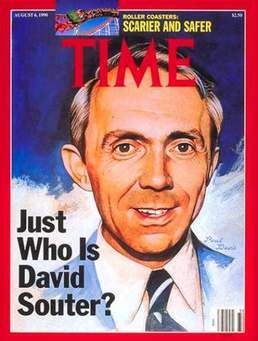
Public Education
&
Civic Ignorance
Teaching United States History most of my career, I used to try to develop an appreciation for being in a public school classroom in my students. When the Founding Fathers created the United States Constitution, there was a belief (as evidenced in Jefferson’s quote, above) that the citizenry of this new republic would need to be educated to understand and exercise their rights properly. Jefferson’s “Northwest Ordinance of 1787,” which detailed the settlement of the new nation’s territories (today’s Ohio, Indiana, Illinois, Michigan, and Wisconsin), also included a provision stating “schools and the means of education shall forever be encouraged." The Federalists (Hamilton’s party) were less trusting of the masses and instituted protections to curtail the popular will --- like the Electoral College and election of U.S. Senators by state legislatures (finally changed to direct election by the people in 1913 through the 17th Amendment). This incredible democratic political experiment was accompanied by an equally radical civic experiment based on the idea of free, public education for all citizens. There had never been any society that attempted to educate all its people (and, yes, it took time for the inclusion of women, African-Americans, etc.). Fittingly, the public school was at the heart of the landmark 1954 Supreme Court Brown v. Board of Education civil rights decision.
Since that time, however, we have seen a shift in the role of public education in our country and that shift is glaring in this year’s presidential election. The ever-erudite English educator, Delbert Shortliffe, recently passed the autumn, 2016, issue of The American Scholar, a publication from Phi Delta Kappa (the international organization for education innovators and leaders) along to me. The cover story was billed as “How Did We Get Here? The founders warned that uneducated voters make us vulnerable to reckless demagogues.” written by Alan Taylor. The article’s actual title is “The Virtue of an Educated Voter” and Taylor traces the development of public education from Jefferson’s original dream to the present ubiquitous system. In Taylor’s words, the founders recognized that “republics depended on a broad electorate of common men, who, to keep their new rights had to protect them with attentive care.” (p.20) He also notes, “To override the selfishness assumed to be innately human, people had to be taught the value of virtue.” In the early years of our republic, virtue meant, among other things, that you valued the community’s interest as essential to your own. In keeping with that notion, James Madison noted: “Being a public concern (education) ought to be provided for by the government itself.” (p.21) And there are the roots of our public school system.
The explosion in U.S. public school education began in earnest in the early 20th century, as waves of immigrants needed assimilation to become “Americans.” The schools clearly had a civic component focused on teaching American citizenship to new members of the society. It was only after World War II, with its Baby Boom and growth of suburbs, as well as a new vision that college education was an attainable goal for everyone, that the focus of the public schools shifted. As Taylor puts it, “The shift to an economic justification for education has led to its redefinition as a private, individual benefit instead of public good.” (p. 25) Continuing, Taylor notes, “We have come to think and speak of education as primarily economic (rather than political) and individual (rather than social) in its rewards. (p.26) As recently as this morning, the New York Times ran an article about ranking U.S. colleges with an essential criteria (40%) being “earnings” and “return on investment.” Nary a mention of “virtue.”
I recently saw a 2012 interview with retired Supreme Court Justice David Souter (you can find a wonderful cartoon version of it at https://livefreeanddraw.com/2012/09/29/souter-civic-knowledge/ which is where the following quotes come from. You can also find it on YouTube.com, of course) in which he talked about what he calls “civic ignorance.” According to Souter, there is “pervasive civic ignorance of the Constitution and the structure of the government.” If we listen to Donald Trump disparage Hillary Clinton for not changing tax laws when she was a Senator, it seems to confirm that one of our candidates has no working knowledge of how our national legislature operates. Trump, of course, has displayed stunning (or willing?) ignorance of the Constitution. His blatant attacks on first amendment rights of journalists, along with his religious ban on Muslims, fly in the face of the First Amendment. His belief in waterboarding and other forms of torture stands in direct opposition to the Eighth Amendment. His notion that judges should do the bidding of the executive (his castigation of Judge Curiel and intimating that his Supreme Court appointees would do what he ordered) speaks to his lack of understanding regarding Constitutional separations of power.
In a prescient moment of the interview, Souter stated, “when the problems get bad enough . . . some one person will come forward and say, give me total power and I will solve this problem.” Remember Trump’s speech at the Republican National Convention? “I alone can fix it.” No trusting the American public. No rallying cry about making America great again by working together. Nope. As noted in The Atlantic, “I am your voice, said Trump. I alone can fix it. I will restore law and order. He did not appeal to prayer, or to God. He did not ask Americans to measure him against their values, or to hold him responsible for living up to them. He did not ask for their help. He asked them to place their faith in him.” This eerily sounds like Souter’s prediction. And I believe we have to look at Trump’s supporters in light of this notion of “civic ignorance.”
One of the most repeated statistics throughout this campaign has been Trump’s strength among white men with only a high school diploma (a 4 to 1 advantage). Justice Souter’s major concern in his interview was that Civics was no longer required in public school education. He strongly believes this leads to the widespread “civic ignorance” we are witnessing. After watching this presidential campaign, his words seem prophetic. Even if college education is focused on “earnings,” there seems to be some civic education reaching those graduates (osmosis?) that is not imbued in their non-college neighbors. That Trump is able to conduct a fact-free campaign without fazing his supporters or losing any of his “base” speaks to the level of civic ignorance that is now pervasive in our society.
As a final note, this is not just a plea for better “civics” education. Public education is under attack around this country and has been since the Reagan administration. The charter school movement, which began as a legitimate attempt at reforming public education, has been co-opted and exploited. Funding for schools has always been a whipping boy, where the voters can take out their state and national frustrations about taxes, civil servants, “the elites,” etc. --- by not funding the schools. Governors push for tax cuts (to please the voters), often cutting education budgets. As Taylor notes in his article, “This reverses the priorities of the founders.” (p. 27) Our citizenry does not seem to understand the connection between education and civic responsibility, much less the notion that public education is, ultimately, for the community’s benefit.
As a lifelong educator, I clearly have a bias and advocate for improving our education system at every level, all the time. It is crucial that people see the connection between education and our government. That (according to Souter) 2/3rds of our citizens don’t understand the three branches of government with their separation of powers and checks and balances is, as he puts it, “the way democracy dies. That is what we should worry about at night.”
&
Civic Ignorance
Teaching United States History most of my career, I used to try to develop an appreciation for being in a public school classroom in my students. When the Founding Fathers created the United States Constitution, there was a belief (as evidenced in Jefferson’s quote, above) that the citizenry of this new republic would need to be educated to understand and exercise their rights properly. Jefferson’s “Northwest Ordinance of 1787,” which detailed the settlement of the new nation’s territories (today’s Ohio, Indiana, Illinois, Michigan, and Wisconsin), also included a provision stating “schools and the means of education shall forever be encouraged." The Federalists (Hamilton’s party) were less trusting of the masses and instituted protections to curtail the popular will --- like the Electoral College and election of U.S. Senators by state legislatures (finally changed to direct election by the people in 1913 through the 17th Amendment). This incredible democratic political experiment was accompanied by an equally radical civic experiment based on the idea of free, public education for all citizens. There had never been any society that attempted to educate all its people (and, yes, it took time for the inclusion of women, African-Americans, etc.). Fittingly, the public school was at the heart of the landmark 1954 Supreme Court Brown v. Board of Education civil rights decision.
Since that time, however, we have seen a shift in the role of public education in our country and that shift is glaring in this year’s presidential election. The ever-erudite English educator, Delbert Shortliffe, recently passed the autumn, 2016, issue of The American Scholar, a publication from Phi Delta Kappa (the international organization for education innovators and leaders) along to me. The cover story was billed as “How Did We Get Here? The founders warned that uneducated voters make us vulnerable to reckless demagogues.” written by Alan Taylor. The article’s actual title is “The Virtue of an Educated Voter” and Taylor traces the development of public education from Jefferson’s original dream to the present ubiquitous system. In Taylor’s words, the founders recognized that “republics depended on a broad electorate of common men, who, to keep their new rights had to protect them with attentive care.” (p.20) He also notes, “To override the selfishness assumed to be innately human, people had to be taught the value of virtue.” In the early years of our republic, virtue meant, among other things, that you valued the community’s interest as essential to your own. In keeping with that notion, James Madison noted: “Being a public concern (education) ought to be provided for by the government itself.” (p.21) And there are the roots of our public school system.
The explosion in U.S. public school education began in earnest in the early 20th century, as waves of immigrants needed assimilation to become “Americans.” The schools clearly had a civic component focused on teaching American citizenship to new members of the society. It was only after World War II, with its Baby Boom and growth of suburbs, as well as a new vision that college education was an attainable goal for everyone, that the focus of the public schools shifted. As Taylor puts it, “The shift to an economic justification for education has led to its redefinition as a private, individual benefit instead of public good.” (p. 25) Continuing, Taylor notes, “We have come to think and speak of education as primarily economic (rather than political) and individual (rather than social) in its rewards. (p.26) As recently as this morning, the New York Times ran an article about ranking U.S. colleges with an essential criteria (40%) being “earnings” and “return on investment.” Nary a mention of “virtue.”
I recently saw a 2012 interview with retired Supreme Court Justice David Souter (you can find a wonderful cartoon version of it at https://livefreeanddraw.com/2012/09/29/souter-civic-knowledge/ which is where the following quotes come from. You can also find it on YouTube.com, of course) in which he talked about what he calls “civic ignorance.” According to Souter, there is “pervasive civic ignorance of the Constitution and the structure of the government.” If we listen to Donald Trump disparage Hillary Clinton for not changing tax laws when she was a Senator, it seems to confirm that one of our candidates has no working knowledge of how our national legislature operates. Trump, of course, has displayed stunning (or willing?) ignorance of the Constitution. His blatant attacks on first amendment rights of journalists, along with his religious ban on Muslims, fly in the face of the First Amendment. His belief in waterboarding and other forms of torture stands in direct opposition to the Eighth Amendment. His notion that judges should do the bidding of the executive (his castigation of Judge Curiel and intimating that his Supreme Court appointees would do what he ordered) speaks to his lack of understanding regarding Constitutional separations of power.
In a prescient moment of the interview, Souter stated, “when the problems get bad enough . . . some one person will come forward and say, give me total power and I will solve this problem.” Remember Trump’s speech at the Republican National Convention? “I alone can fix it.” No trusting the American public. No rallying cry about making America great again by working together. Nope. As noted in The Atlantic, “I am your voice, said Trump. I alone can fix it. I will restore law and order. He did not appeal to prayer, or to God. He did not ask Americans to measure him against their values, or to hold him responsible for living up to them. He did not ask for their help. He asked them to place their faith in him.” This eerily sounds like Souter’s prediction. And I believe we have to look at Trump’s supporters in light of this notion of “civic ignorance.”
One of the most repeated statistics throughout this campaign has been Trump’s strength among white men with only a high school diploma (a 4 to 1 advantage). Justice Souter’s major concern in his interview was that Civics was no longer required in public school education. He strongly believes this leads to the widespread “civic ignorance” we are witnessing. After watching this presidential campaign, his words seem prophetic. Even if college education is focused on “earnings,” there seems to be some civic education reaching those graduates (osmosis?) that is not imbued in their non-college neighbors. That Trump is able to conduct a fact-free campaign without fazing his supporters or losing any of his “base” speaks to the level of civic ignorance that is now pervasive in our society.
As a final note, this is not just a plea for better “civics” education. Public education is under attack around this country and has been since the Reagan administration. The charter school movement, which began as a legitimate attempt at reforming public education, has been co-opted and exploited. Funding for schools has always been a whipping boy, where the voters can take out their state and national frustrations about taxes, civil servants, “the elites,” etc. --- by not funding the schools. Governors push for tax cuts (to please the voters), often cutting education budgets. As Taylor notes in his article, “This reverses the priorities of the founders.” (p. 27) Our citizenry does not seem to understand the connection between education and civic responsibility, much less the notion that public education is, ultimately, for the community’s benefit.
As a lifelong educator, I clearly have a bias and advocate for improving our education system at every level, all the time. It is crucial that people see the connection between education and our government. That (according to Souter) 2/3rds of our citizens don’t understand the three branches of government with their separation of powers and checks and balances is, as he puts it, “the way democracy dies. That is what we should worry about at night.”
Thursday, October 20th
Blast #52
A Shout Out to Teachers
This BLAST is not going to be about last night’s debate. Maybe tomorrow. I was trying to figure out what to write this morning when I opened the website email address ([email protected]), where I seldom get mail, and received this note from a former student.
Hey Mr.Johnson its (M. H.) from your used-to-be AP His. Class from about 3-4 years ago. Im just sitting in a class currently as im writing this and i just got to thinking.."what ever happend to Mr.Johnson?" ; Bil "with one L!!" (I remember that day) I managed to find you on the web as well as this address nd just wanted to let you know that you've been a huge influence on the person I am today. "You have to know about the history of your community to understand why it is the way it is now". Knowing more is always best. I just wanted to thank you for always reminding me and your former students to be more than what others see and assume(minorities). Thank you. You are a great man who's done more than he thought he did. And I thank you again for having a positive effect on th e way I see things today. Its been a while hasn't it?
It’s hard to describe how touching it is to receive a note like this. But made me want to write about teachers and teaching, something near and dear to my heart.
My wife was a teacher, my brother was a teacher, I was a teacher. Many of my closest friends, to this day, are teachers. Not all of them work in classrooms (some are musicians and judges) but there is a common goal for all and that is to help others learn something about the world and themselves.
We live in a society that is bi-polar about teachers --- they are either “those who can’t” or sacrificing civil servants. Movies and television, likewise, tend to portray teachers as autocrats and fools (The Breakfast Club, Ferris Bueller, Fast Times at Ridgemont High) or as dedicated, extraordinary saviors (Dead Poet’s, Dangerous Minds, Freedom Writers). The truth, of course, is somewhere in between. My experience is that very few get into teaching because of the “time off” (summer vacation, three day weekends and holidays), a common criticism, but probably too many get into teaching because they “like kids.” When I was working as a teacher-educator at Brown University, interviewing candidates for the teacher preparation program, my favorite question was: “Tell me why you want to be a teacher --- and don’t tell me it’s because you ‘like kids.’” My point was that it should be a “given” that anyone who wants to teach should “like kids.” That’s not enough to be a good teacher, though, and the average person (the “civilians” who have never taught) are generally oblivious as to what being good at this profession requires.
I won’t go off on a rant about what becoming a good teacher requires, or start a seminar about student-centered education (you can check out Amazon.com or Eye on Education publishing for my book, The Student-Centered Teaching Classroom if you want the Full Monty on that --- an unabashed commercial!). What I will say is that there is great misunderstanding about what is required to be a good teacher (not just a charismatic personality, storyteller or artistic bullshitter). Because almost everyone has gone to school, there’s a misconception that “teaching” is simply standing in front of the room and talking for 40 to 50 minutes, giving quizzes and tests, and preparing kids to take exams. If you know any teachers, I’m sure they will tell you it’s far more than that. Here’s all I want to say about teaching, if you do it “right.”
Teaching is a grueling profession. No good teacher I know worked or works fewer than 60 hours a week, but I’d guess it’s closer to 80 for most. There is no way to get the job out of your mind --- whether it is creating ideas for lessons, a struggling student, or school politics. I have always been amazed that most of my colleagues could do the job and be good parents, spouses, citizens. Here’s what I know about good teachers.
(1) They did not get into the profession with any illusion that they would make a lot of money.
(2) Their primary concern is always their students.
(3) They believe teaching is an important profession and often describe themselves as “educators,” not just “teachers.”
(4) They never stop being students themselves.
The desire to be a good teacher requires that one remain curious, committed, creative.
(5) They are, ultimately, optimists who, on a daily basis, invest in the future.
As a final word, let me say this (and it’s something I’ve said many, many times). I believe teaching is the most important profession in our society (which is not to denigrate doctors or others, but hear me out). Consider this: walk out on the street, anywhere, any time, and ask random people to tell you about a teacher they remember, one who had an impact on his/her life. I will pretty much guarantee that over 90% will not only relate a story but it will be a positive story (like my note from M.H. above). There is no other profession you can say that about. “Tell me about an accountant who had an impact on your life.” “Tell me about a lawyer who had an impact on your life.” Yes, some folks may have those stories, because they’ve had some unusual circumstance (life-saving surgery, for example) but, overall, there is no other profession that just about everyone has a story about. Think about it. Try it out. But, at the very least, after reading this, consider a teacher who had an impact or your life and, if you can track her/him down, send them an email like the one I received. I can’t even begin to describe how much they will love it. It is, in fact, the reason one begins teaching, hoping you can help others, just as you were helped along the way --- by a teacher.
Tuesday Note:
There will NOT be a Pop Quiz on yesterday's reading assignment.
When I was a teacher-educator I used to emphatically tell my student teachers NOT to use "pop quizzes," insisting they were, in fact, immoral. I firmly a believe that. Pop quizzes are the worst kind of "gotcha" trap a teacher can set for students. It is abusive and a form of psychological punishment that demonstrates the power the teacher has over his/her students, little more. The idea that the "little bastards" will learn some kind of lesson about doing the reading homework totally ignores that some (in urban schools, "many") students have to work, take care of siblings, and also have homework given by 3 or 4 or even 5 other teachers that same evening. What difference would it make if you actually told the students they were going to have a quiz? They might read the assignment, be prepared, know the material, and do well? Wow, that would be horrible, right? NO POP QUIZZES!
Tuesday, October 18th
Blast #51
Full Bore Cray-Cray
Crazy #1: New “revelation” of Quid Pro Quo
Quid pro quo
ˌkwid ˌprō ˈkwō/
noun
All of a sudden, after 15 months of listening to what a great “deal-maker” Trump is, we are now shocked that members of the U.S. government do the same kind of wheeling and dealing as business? If I’m reading the various accounts of this “scandalous” quid pro quo (non) deal, it went something like this. The State Department (headed by John Kerry) asked for a document from Clinton’s private e-mail server be left “unclassified” rather than be given the “classified” label after the fact. Apparently, an enterprising FBI bureaucrat dangled the idea that the Bureau might consider leaving the document “unclassified” if the State Department would increase the number of FBI agents in Iraq. That’s the quid pro quo we’re talking about --- and it didn’t happen! It’s not the Clinton Foundation taking millions of dollars from foreign donors to allow them access to the State Department, it’s not Hillary currying favor from American donors while in office --- it’s essentially nothing. Does anyone, in this day and age, not think that government agencies internally operate this way all the time – just like wheeler-dealers like Donald Trump? Please.
Crazy #1: New “revelation” of Quid Pro Quo
Quid pro quo
ˌkwid ˌprō ˈkwō/
noun
- a favor or advantage granted or expected in return for something.
All of a sudden, after 15 months of listening to what a great “deal-maker” Trump is, we are now shocked that members of the U.S. government do the same kind of wheeling and dealing as business? If I’m reading the various accounts of this “scandalous” quid pro quo (non) deal, it went something like this. The State Department (headed by John Kerry) asked for a document from Clinton’s private e-mail server be left “unclassified” rather than be given the “classified” label after the fact. Apparently, an enterprising FBI bureaucrat dangled the idea that the Bureau might consider leaving the document “unclassified” if the State Department would increase the number of FBI agents in Iraq. That’s the quid pro quo we’re talking about --- and it didn’t happen! It’s not the Clinton Foundation taking millions of dollars from foreign donors to allow them access to the State Department, it’s not Hillary currying favor from American donors while in office --- it’s essentially nothing. Does anyone, in this day and age, not think that government agencies internally operate this way all the time – just like wheeler-dealers like Donald Trump? Please.
Crazy #2: The “rigged election”
Donald Trump has now gone totally around the bend, making speech after speech about how the election is “rigged” and wide scale voter fraud is already occurring in early voting states. Justin Levitt, a Loyola (LA, CA) School of Law professor conducted a study, completed in 2014, examining voter fraud. His study was undertaken in response to the widespread voter suppression laws that were being passed in states with Republican legislatures and governors (many overturned in court by 2016). In studying elections from 2000 to 2014 Professor Levitt found 31 instances of voter fraud in over 1 BILLION votes cast.
As the NY Daily News published this morning (October 18), you are more likely to be hit by lightning twice at a Milwaukee Brewers World Series game than to find voter fraud. (The Brewers, btw, have only appeared in one World Series, in 1982) The News goes on to point out that the odds of voter fraud are less likely than: a fatal shark attack; dying from ingesting flesh-eating bacteria; making a hole in one; or hitting the same roulette color 20 times in a row! In other words, Trump and his surrogates are, once again, LYING while preparing their base voters to distrust the election results on November 8th. This is beyond irresponsible on Trump’s part. Al Gore, the winner of the 2000 election lost because of one Supreme Court Justice’s vote (I’m looking at YOU, Clarence Thomas). But Gore understood that we need to be a nation that respects the electoral process, no matter how tainted we might believe it to be. Nixon conceded in 1960, despite persistent rumors that hundreds of dead people voted for JFK in Richard Daly’s Cook County/Chicago district. Yet Trump, before we have any results, is already screaming “Foul.” His campaign is melting down and burning up and Trump, who will never admit that he is a “loser,” is already creating his mythology.
I can’t even imagine what Wednesday night’s debate is going to be like, amid charges of quid pro quo and the "fixed" election. It will undoubtedly be ugly and who knows what Chris Wallace will bring to the table. Recent polls show that 41% of the electorate believes the election might be “rigged,” but the breakdown of that polling is that 73% of Republicans believe it, while only 17% of Democrats do. In this fact free election, who knows what we’ll hear on Wednesday night. Another poll showed that 92% of voters have made up their minds about for whom they’re voting and it’s doubtful that "undecided" 8% will make any difference. At this point I just want to get to November 9th, putting this “long national nightmare” behind us.
Donald Trump has now gone totally around the bend, making speech after speech about how the election is “rigged” and wide scale voter fraud is already occurring in early voting states. Justin Levitt, a Loyola (LA, CA) School of Law professor conducted a study, completed in 2014, examining voter fraud. His study was undertaken in response to the widespread voter suppression laws that were being passed in states with Republican legislatures and governors (many overturned in court by 2016). In studying elections from 2000 to 2014 Professor Levitt found 31 instances of voter fraud in over 1 BILLION votes cast.
As the NY Daily News published this morning (October 18), you are more likely to be hit by lightning twice at a Milwaukee Brewers World Series game than to find voter fraud. (The Brewers, btw, have only appeared in one World Series, in 1982) The News goes on to point out that the odds of voter fraud are less likely than: a fatal shark attack; dying from ingesting flesh-eating bacteria; making a hole in one; or hitting the same roulette color 20 times in a row! In other words, Trump and his surrogates are, once again, LYING while preparing their base voters to distrust the election results on November 8th. This is beyond irresponsible on Trump’s part. Al Gore, the winner of the 2000 election lost because of one Supreme Court Justice’s vote (I’m looking at YOU, Clarence Thomas). But Gore understood that we need to be a nation that respects the electoral process, no matter how tainted we might believe it to be. Nixon conceded in 1960, despite persistent rumors that hundreds of dead people voted for JFK in Richard Daly’s Cook County/Chicago district. Yet Trump, before we have any results, is already screaming “Foul.” His campaign is melting down and burning up and Trump, who will never admit that he is a “loser,” is already creating his mythology.
I can’t even imagine what Wednesday night’s debate is going to be like, amid charges of quid pro quo and the "fixed" election. It will undoubtedly be ugly and who knows what Chris Wallace will bring to the table. Recent polls show that 41% of the electorate believes the election might be “rigged,” but the breakdown of that polling is that 73% of Republicans believe it, while only 17% of Democrats do. In this fact free election, who knows what we’ll hear on Wednesday night. Another poll showed that 92% of voters have made up their minds about for whom they’re voting and it’s doubtful that "undecided" 8% will make any difference. At this point I just want to get to November 9th, putting this “long national nightmare” behind us.
Monday, October 17th
Blast #50
It was reported on MSNBC (part of the "rigged media") that Donald Trump has re-tweeted 2500 Tweets since the election campaign began. As we know, some of those have been Tweets that originated on white supremacist and anti-Semitic sites. Trying to use more reputable sources, as one who doesn't Tweet, I thought I would simply post a couple of articles that deserve reading in this crazy election year. One is from Psychology Today magazine, written by neuroscience PhD. Bobby Azarian, and focuses on "The Psychology Behind Donald Trump's Voters." It is interesting and, more important, informative. Well worth reading, it can be found at www.psychologytoday.com.
Yesterday's New York Times featured Nicholas Kristof's Op-Ed column entitled: If Hillary Clinton Groped Men. In his usual, logical and systematic fashion, Kristof simply ticks off Trump's offenses with the "What if Hillary . . . ?" preceding each item. What was incredible, to me, was that he easily filled a long three column article with Trump's laundry list of offensive statements and actions.
Go to the October 16th nytimes.com and simply use the title above or Kristof's name to get the article. A perspective providing piece.
There will be a quiz tomorrow.
Yesterday's New York Times featured Nicholas Kristof's Op-Ed column entitled: If Hillary Clinton Groped Men. In his usual, logical and systematic fashion, Kristof simply ticks off Trump's offenses with the "What if Hillary . . . ?" preceding each item. What was incredible, to me, was that he easily filled a long three column article with Trump's laundry list of offensive statements and actions.
Go to the October 16th nytimes.com and simply use the title above or Kristof's name to get the article. A perspective providing piece.
There will be a quiz tomorrow.
Sunday, October 16th
Blast #49
A Reflection on the Blues
When you think of the blues, you think about misfortune, betrayal and regret. You lose your job, you get the blues. Your mate falls out of love with you, you get the blues. Your dog dies, you get the blues.
While blues lyrics often deal with personal adversity, the music itself goes far beyond self-pity. The blues is also about overcoming hard luck, saying what you feel, ridding yourself of frustration, letting your hair down, and simply having fun. The best blues is visceral, cathartic, and starkly emotional. From unbridled joy to deep sadness, no form of music communicates more genuine emotion.
The blues has deep roots in American history, particularly African-American history. The blues originated on Southern plantations in the 19th Century. Its inventors were slaves, ex-slaves and the descendants of slaves—African-American sharecroppers who sang as they toiled in the cotton and vegetable fields. It's generally accepted that the music evolved from African spirituals, African chants, work songs, field hollers, rural fife and drum music, revivalist hymns, and country dance music.
The blues grew up in the Mississippi Delta just upriver from New Orleans, the birthplace of jazz. Blues and jazz have always influenced each other, and they still interact in countless ways today.
Ed Kopp at www.allaboutjazz.com
For the last 25 years I have been addicted to the blues. My early musical tastes were honed by pop music and rock’n’roll --- starting with Elvis (with a dash of Hank Williams) and The Everly Brothers, then gaining momentum in my teen years with the Beatles, Bob Dylan, and the whole ‘60’s tidal wave (Jimi Hendrix, Cream, The Doors, Stevie Wonder, The Four Tops, etc., etc., etc.); music was always a great source of pleasure and release for me. After those early accordion lessons, I learned the guitar from my brother and it has been a source of pleasure all these years. Blues, by its simple, pentatonic nature, is an easy genre to play and it is the backbone of rock’n’roll --- the influence on Dylan, Lennon & McCartney, Jagger & Richards, Jim Morrison, Hendrix & Clapton, is clear.
So, as I grew older, I gravitated toward the blues (and jazz) more and more. I am neither a musical scholar nor a musician of any exceptional skill (I refer to my music inclinations as those of a “hobbyist”). Nonetheless, I am that level of dilettante whose little knowledge is probably a dangerous thing. But, after watching Tommy Castro and the Painkillers at Daryl’s House in Pawling, New York, last night (photos above), I thought I should write something about why this genre of music is such a wonderful expression of the range of human experience presented in a thoroughly enjoyable and accessible form.
More than any other musicians (though I’ve only seen video of Springsteen in action), blues musicians always seem to be having a great time when they are performing. And, because they are often performing in small venues (as opposed to arenas or stadiums), the interaction with their audience is intimate and exceedingly crowd-friendly. Even when I have seen blues players in larger venues (that is, 1000 to 1500 person audiences), their connection to the people and the sheer joy of playing their songs, no matter how sad, is always palpable.
While many blues songs, like its rock and roll offspring, focus on the heartbreak of relationships they are far more poetic and symbolic than most pop or rock songs. When you listen to “Texas Flood” or “Spoonful” or “Crossroads” they are, on the surface, laments. Left by their woman (the blues are overwhelmingly male, but we should see the universality in all of it), the singer is bemoaning his loss. Yet the titles alone speak to larger themes. The overwhelming power of a flood, the lethality of the addict’s spoon, the inevitable crossroads we all find ourselves at, speak to these greater themes. Tommy Castro, introducing his song “Ride” last night, explained what that phrase meant in the Bay Area blues community in the early 1990’s (that performing musicians were reaching a level of total connection with their audience and grooving together). But in the song itself, with references to Kerouac and North Beach beat poets, we are all taken on a "ride" beyond the simple tale of a band and its audience. Historically the blues have always presented its listeners with several levels of artistic interpretation.
Maybe it’s because one of the roots of the blues are those field hollers, where slaves communicated to each other in subversive ways --- the meanings of the songs were deeply layered with messages. The call-and-response so often heard in blues music reflects this, too, where, very often, questions drive the storyline. And, of course, the universality of betrayal, abandonment, and loss often transcend the immediate and personal. Therein lies the beauty of the blues.
Anytime is a good time to listen to the blues, whether it’s seminal Robert Johnson, Muddy Waters, Lightnin’ Hopkins, or the more "modern" interpretations of Stevie Ray Vaughn, Johnny Winter, Buddy Guy, B.B. King, or Jimi Hendrix. Sit back and listen carefully. Committed blues artists convey a great deal through their voice and their instrument (most often the guitar), far beyond the lyrics. I recommend you find a blues venue in your neighborhood or area and go hear the music live, because that’s its real element, where you can feel it beyond the lyrics. I can pretty much guarantee you won’t be disappointed.
Saturday, October 15th
Blast #48
The Cerebral Pleasure of W. Kamau Bell
If you are not familiar with W. Kamau Bell, the Bay Area based stand-up comic and television host, I highly recommend you check him out. Aside from YouTube, you can find him on several podcasts (Kamau Right Now, Politically Re-Active, and Denzel Washington is the Greatest Actor of all Time Period). It is well worth it. I have been a fan since religiously watching his short-lived but brilliant satirically comic Totally Biased on FX. More recently, you could see him hosting CNN’s United Shades of America (which might still be accessible On Demand or CNNgo.com), where he travelled around the country interviewing KKK members, doing ride-alongs with Camden, N.J. police officers, and following the lives of undocumented Latinos --- well worth a look. Friday night (October 14th) Bell performed at New York’s Gramercy Theater on East 23rd Street and we went to see him, highly anticipating the show.
We were not disappointed. Starting with a strong statement about the National Anthem and Colin Kaepernick, Mr. Bell was comic and biting. He talked about Kaepernick’s former buzz cut growing out into his present Afro as a reflection that this was now a “book-reading Afro.” While weaving his reflections about the anthem (which included wondering why it often is not broadcast before games and, when it is, no one at home stops eating his/her Doritos to stand with hand over heart in the living room!), Mr. Bell managed to sing several lines from the song American Pie (saying he was trying to do something before Kevin Hart does) while weaving together hilarious remarks about George Wallace and RuPaul. The range and cleverness of his intellect is impressive.
He then moved on to Michelle Obama’s moving speech and dubbed it “hashtag, Come Get Your Boy” for white people. While discussing Trump’s infamous Billy Bush conversation, Bell’s musings included his astonishment that there was an Access Hollywood bus! Who knew? He then employed some very effective physical comedy imitating how Republicans contort themselves to explain their support of Trump, comparing it to his own contortions when he has to talk about police, explaining that his “cousin and other family members are police but . . .” When discussing the touchy subject of policing he took issue with the notion that being a policeman is “hard.” Bell’s point is that we know that (which is why many of us don’t do it!) but it is a “given.” Imagine, Bell conjectured, if we went to a surgeon who told us “this being a surgeon is really hard.” Would we be likely to book a surgery with that doctor?
All of Bell’s comedy has an undercurrent about racism, of course (when it isn’t right up front), and relating his personal story of renting a “co-working” space in Berkeley was both hilarious and telling (I won’t spoil it by relating it here --- go see him!). He also reflected on Obama’s presidency, initially remarking that “the presidency is like a used car --- ‘as is’” and that Obama inherited quite a clunker with its financial crisis and wars in Iraq and Afghanistan. He was also quite sanguine about the lack of scandal during the last eight years. The only thing close, he noted, was Obama declaring that the policeman who arrested Harvard Professor Henry Louis (“Skip”) Gates for “breaking into” his own house was “stupid.” You may remember, Bell noted, that Obama and Gates then “had a beer” with that officer on the White House lawn, letting by-gones be by-gones. In a classic lament, Bell wondered how this policeman, who arrested a black man for “breaking into” his own home got to have a beer with the first black president before that long line of every black person in the U.S.!
Finally, Bell was able to mine comic gold about the booking agent for The View who scheduled him (when he was hosting Totally Biased) along with Taylor Swift! Pointing out that he was new to “broadcast television” and was not keen on being on The View to begin with, he went on to recount what an unmitigated disaster his appearance was. What makes Bell such an effective comedian and political satirist is that he has “relate-ability.” One feels as though (s)he is in a conversation with Bell, sitting around your living room. He has a casual ease as a performer combined with a razor sharp intellect and great eye for the truly comic aspects of what’s going on around us. His insistent prodding about race in a way that white people can understand it (the audience at the Gramercy was overwhelmingly white) makes him an important voice and one worth seeking out.
Friday, October 14th
Blast #47
1960 Magnificent Seven
meets
2016 Multicultural Seven
"Life imitates Art far more than Art imitates Life”
Oscar Wilde essay, The Decay of Lying
Whether you believe art imitates life or Wilde’s view, comparing John Sturges’s 1960 The Magnificent Seven with Anton Fuqua’s 2016 version may be interesting, if not instructive. Let's look at the films “side by each” (as my Dad used to joke). Each reflects its time, not only visually, but also culturally and politically.
The 1960 Seven starred Yul Brenner, Steve McQueen, James Coburn, Charles Bronson, Robert Vaughn, Horst Buchholz, and Eli Wallach (as well as the little known Brad Dexter). The story is a simple one, adapted from Akira Kurosawa’s The Seven Samurai, and recounts how a group of men (“hired guns") are recruited to save a Mexican village from banditos, led by Eli Wallach, who regularly take over the town for food and supplies. The “Seven” are all white men --- although Brynner and Buchholz have traces of odd “immigrant” accents --- with shadowy back-stories. Brynner, a hero dressed in black (a la Richard Boone’s “Paladin” character on the popular TV series Have Gun, Will Travel) organizes the group, convincing the men they need to do this good deed to, essentially, redeem their ne’er-do-well lives (although Dexter’s “Harry Luck” believes there’s some monetary payoff in the offing). Bronson’s “Bernardo O’Reilly”, half Mexican and half Irish, becomes a hero to the Mexican children in the town, teaching them to respect their fathers as courageous and foreshadowing the concept of bi-racial role models(?). Eli Wallach’s villain is a practical autocrat, taking care of his men while affecting a Mexican accent --- not seen as racist or demeaning at the time. The Mexican villagers are stereotypical docile farmers and senoras who need to be saved by the heroic Gringos. One of the striking features of the 1960 film (which I watched without commercial interruption on PBS last Saturday night) was how much of the movie is carried by visuals and Elmer Bernstein’s truly magnificent score (popularized for years in Marlboro cigarette commercials). The dialogue is sparse and to the point.
The film is also remembered for giving an early glimpse at future superstars (McQueen, Coburn, Bronson --- and even Vaughn, in his own small screen right) while spinning a pretty good Western yarn. Politically and culturally it fits its time well. Neighbors across a border are threatened by Bad Guys (remember the Cold War?) and expert gun slinging Americans have to be called in to save the day (Korea & Vietnam but, more significantly, WW's I & II). That they are white men fighting Mexican villains also fit the time, despite the growing Civil Rights movement. There are no women of significance in the movie and certainly no African Americans. 1960 America was on the cusp of electing Jack Kennedy and leaving the “bland” Eisenhower years behind. It was an America that had not yet fully looked its racism in the face or confronted its government for making bad decisions. The period is often described as “innocent” or “naïve” (or, maybe, willfully oblivious?). Certainly The Magnificent Seven represents that. In a time when the Western was the dominant form of visual storytelling/mythology --- America’s television landscape was overrun by cowboys and John Wayne was cranking out one after another (Rio Bravo, McClintock, True Grit) ---The Magnificent Seven was in keeping with its time, for better and for worse.
Anton Fuqua has teamed very successfully with Denzel Washington before (Training Day, The Equalizer) and said he was inspired by the idea of seeing Denzel riding a horse as a cowboy. Whatever the case, the social and cultural landscape has drastically shifted since 1960 and the 2016 Seven reflects it. Aside from Denzel, whose star power is unquestionable, Ethan Hawke (Washington’s Training Day co-star) has some star glow, as does Chris Pratt. Maybe some of the other Seven will achieve future star status. What is significant about this “magnificent” group is its diversity. Aside from Denzel, we have Byung-hun Lee as “Billy Rocks,” an Asian knife-throwing specialist (a la Coburn 1960) who is Hawkes’s/"Goodnight Robicheaux’s" partner in crime. Manuel Garcia-Rulfo plays “Vasquez” a notorious Mexican outlaw recruited by Washington’s “duly sworn Warrant Officer,” Sam Chisholm. And then there’s Martin Sensmeier playing “Red Harvest,” a Comanche warrior who lethally employs a bow and arrow. The Seven is rounded out by the evangelical wilderness tracker “Jack Horn,” played with a high pitched whistling voice by Vincent D’Onofrio, who quotes the Bible and formerly made a living selling scalps to the U.S. Army. The widowed “Emma Cullen,” is a strong farming/pioneer wife played by Haley Bennett, whose husband is cold-bloodedly gunned down by villain “Benjamin Bogue" (Peter Sarsgaard). She recruits the Seven. Bogue is a mining robber baron who takes what he wants, exploits workers to the point of slavery, and ruthlessly hires killers. He has taken over the farming community of Rose Creek and, we learn later, killed Chisholm’s mother and sister years earlier in Lincoln, Kansas. So, Fuqua’s updating of the tale incorporates today’s American diversity along with a commentary about a ruthless, heartless businessman running roughshod over common people. Haley Bennett’s “Emma” gets a backseat in the film but, unlike the original, is at least a significant character. The musical score is a genuine character in the original. It is rather forgettable in this version and, while I understand Fuqua's not wanting to reprise Bernstein, he would have been better served to have taken a lesson about “less is more” regarding dialogue, expanding his visual storytelling, and better recognizing the power of captivating music.
In all, as a fan of Westerns, action movies, the 1960’s cast, and Denzel Washington, I enjoyed both films. Fuqua uses all the “realism” of today’s graphics, make-up, and CGI and, as a result, the film is more visually powerful in its action scenes. But I love the old school 1960 film’s reliance on simple visuals, simple values, and great music. I equally like 2016’s charming, if eccentric, characters. If you love Westerns, as I do, you won’t be disappointed by either of these.
(As a footnote, I happened to catch Martin Ritt’s 1967 Hombre, starring Paul Newman, Richard Boone, Diane Cilento, and Frederic March --- one of the finest, most existential, and symbol-rich Westerns ever made --- on TBS Wednesday night. If you’ve never seen it, put it on your “Watch” list and let me know what you think.)
Thursday, October 13th
Blast #46
The Death of Discourse?
The 1860 presidential election found the United States in a precarious and untenable crisis. The nation was clearly divided over the issue of slavery and had reached a point where compromises were no longer possible. The Southern states were determined to keep their "peculiar institution" and the North had passed a tipping point, no longer accepting the concept of human servitude. The result, of course, was a four-year war that cost 600,000 to 700,000 lives. It also left a legacy of de facto segregation, Jim Crowism, and racial issues we are still struggling with.
It's 2016 and the political landscape looks eerily familiar to 1860. After 8 years of Republican obstructionism to the Obama administration, the Trump candidacy has revealed some deep divisions in our body politic that may not be reconcilable. I am certainly guilty of not being willing to listen when I hear Fox News, Donald Trump (or any of his surrogates), or even Paul Ryan. I know people who support them feel the same way about me. How did we reach this point and is there any way to become a post-polarized society?
How did we get this way? I’m not sure there’s an easy answer to this but here’s how I see the historical path. The 1960’s revealed the tectonic plates beneath American politics. Though losing in a landslide in 1964, Barry Goldwater’s conservative ideology did appeal to a large segment of the U.S. population over time. Combined with the Civil Rights movement (and LBJ’s legislation), the rift between “states’ rights” conservatives and “big government” liberals emerged more starkly. Richard Nixon’s Southern Strategy, appealing to segregationists and states-righters, as well as his “Silent Majority,” striking a responsive chord with white working-class Americans, began to consolidate the conservative right that Ronald Reagan rode into office. Since the Reagan/H.W. Bush years, the Republican Party continued to move right, invoking Reagan, but becoming more extreme with the emergence of the Tea Party and its all out rebellion against big government and liberalism (as well as against the first African American President). On the left, New Deal liberalism remained the core until 1992, when Bill Clinton introduced the Democratic Party to Republican Lite, spurred by the 1994 “Republican Revolution” led by Newt Gingrich. The rifts between the parties, despite Clinton’s moving center-right in many cases, intensified here, with the ongoing war on the Clintons (which are still watching in 2016) taking center stage. The most interesting explanation I’ve seen explaining Clinton hatred is this:
He was the tangible symbol of the Baby Boom, its conceits, its self-absorption, its lack of discipline and failures of responsibility. He was a child of the 1960's preaching to millions of people who had never came to terms with the 1960's and didn't want to be reminded of them. (http://historynewsnetwork.org/)
This opened a wound that still infects our public discourse. The fire was fueled with the 2000 election of George W. Bush, under “unique” circumstances (the Supreme Court, with 5 conservative and 4 liberal Justices, decided Bush won, 5-4). Another Baby Boomer, Bush was the other end of the Boomer spectrum --- a prep school frat boy born with a silver spoon and Presidential daddy. The Left displayed their animus toward Bush equal to the Right’s against Clinton. The War in Iraq, begun under false pretenses, added fuel to the polarization, as did the economic crash in 2008. By the time Barack Obama was elected in November 2008, we had already reached a point where the Left and Right were no longer listening to one another. Senate Majority Leader Mitch McConnell’s vow to make Obama a one-term president added fuel to that fire and the 2010 Tea Party “Revolution” brought us to our present state.
Is there anything we can do? The core issues that divide the parties look as irreconcilable as slavery in 1860. It doesn’t seem there is any room for discourse or compromise, from either side, on issues like same-sex marriage, gun control/2nd Amendment, abortion, or economics/government regulation & taxation.
As we survey the landscape of elected officials, do we see any centrists --- on either side --- who could bring enough reasonable people to the table to effectively govern the country? That seems to be the $64,000 Question. There is talk that policy wonks Clinton and Ryan may be able to “work together.” That might be our only hope, as far as moving beyond this impasse of living with a government that doesn’t govern.
Tuesday, October 11th
Blast #45
Election 2016 and The Implicit Sexism Card
The brouhaha over Donald Trump’s grotesque “locker room talk” continues to dominate the news in its sensationalistic way but I’m concerned that a deeper, more important issue is being overlooked amid the sturm und drang. Absent over the weekend was Trump surrogate Chris Christie. He emerged yesterday to explain how he was upset with the Trump audio/video tape but insisted he was still supporting the Republican nominee. “I’m still supporting Donald… I’m really upset about what I heard, but in the end this election is about bigger issues.” (http://www.mediaite.com/) That’s become the party line for those who are still behind the ego driven dumpster fire at the head of their ticket. On CNN this morning, Dr. Ben Carson contended that Trump’s statement about his sexual predation was not as important as the national debt. He had the balls to say that eleven years ago “(Trump was) a billionaire playboy,” as if claiming, “what would you expect?” But I want to challenge this idea that there are “bigger issues.” I believe there has been an unspoken undercurrent of implicit sexist bias this entire election season.
Starting with Trump claiming Clinton would pull “the woman card” (whatever that is) and continuing with his declaring she doesn’t “look presidential,” and is “weak,” Trump has steadily pounded his sexist drum. While he shouts at his audiences, only Hillary’s volume and tone is criticized. Trump has been blowing his “locker room” whistle throughout this campaign and a society that suffers from implicit sexism has reacted.
Now let’s be clear about the term “implicit bias” --- because we know at least one candidate for Vice President is not. During the VP debate, dim bulb Mike Pence stated the following: “Enough of this seeking every opportunity to demean law enforcement broadly by making the accusation of implicit bias every time tragedy occurs,” Pence said. Implicit bias, whether racist or sexist, has actually been a subject of academic study for many years (not that I expect Pence to be reading scientific studies). Jack Glaser, a psychologist at UC Berkeley’s Goldman School of Public Policy said “It’s a shame that a national figure would push the discourse backward.” Glaser explained “In fact, he missed the most important part. It’s not demeaning at all to point out implicit bias. That’s the whole idea: The people who study implicit bias say just about everybody has it, to some degree, and pointing it out may be the first, best step to beating it.” (all quotes from https://www.wired.com) With that in mind, let’s focus on the implicit sexist bias in this election.
Donald Trump’s physical stalking during the debate seemed creepy to some, but outright threatening to others. The funniest Tweet about it, also addressing Trump’s demand that Muslims should police their communities better, came from Moustafa Bauoumi who wrote: “I would like to report a crazy man threatening a woman on a stage in Missouri. #debate.” Humorous, but true. Trump’s pre-debate “press conference” staging of Bill Clinton’s accusers was a classic shaming tactic but also implicitly spoke to Hillary’s “inability” to “satisfy” her husband or “keep him home.”
Donald Trump’s three marriages, including the public humiliation of first wife Ivana, have not been subject of any discussion in this election (where are those Evangelicals, exactly?). We are just now hearing he told Howard Stern it was okay to refer to the (then-22 year-old) Ivanka as a “piece of ass.” His creepy statement that if he weren’t her father “perhaps I’d be dating her.” (www.truthorfiction.com) speaks to just how perverse this man is! He also told Stern (in 1999): “I have a deal with her. She’s 17 and doing great ― Ivanka. She made me promise, swear to her that I would never date a girl younger than her,” Trump said. “So as she grows older, the field is getting very limited.” (Huff Post) This was, of course, when Trump ran beauty pageants and “Trump told radio host Howard Stern in 2005 that he would often go into the dressing rooms while the contestants were naked, saying in the recordings that he could ’sort of get away with things like that’.” (http://fortune.com/) But that’s Trump. Trump’s objectification and demeaning of women is nothing new. Let’s get back to implicit sexism in the campaign.
Trump’s early harping about Benghazi, reinforced by 8 investigations (costing upwards of $7 million and finding no culpability regarding Clinton), were aimed at showing Hillary, unlike a powerful man, could not protect people, that she was too “weak” as Secretary of State to prevent the tragedy. That Trump supporters wear tee shirts that declare Hillary is a “bitch” and a “cunt” and should be “in prison” speaks to how Trump has struck responsive chords for sexists!
That Chris Christie and Ben Carson want to say there are “bigger issues” is one of the most sexist statements yet. Women’s issues aren’t as “important” as the economy and trade or the military and defense, right? Think about what’s being said in that declaration. Oh, yeah, Donald indulges in "locker room talk" that’s offensive but let’s talks about “important” issues, he was just a “billionaire (59 year-old, married!) playboy” when he said those things. Trump’s attitudes toward women are no different than his views on African-Americans, Muslims, immigrants, or any “Other” group. His words are not just offensive. It is not just about sexual assault. This is a political campaign led by a genuine misogynistic bigot and we should never lose sight of that. Forget about these lame Republicans who are now jumping ship because they have “daughters” and “sisters” --- that’s sexist, too. So, if you have sons you aren’t equally repulsed by this man? It might be okay for them to talk or act like Trump?
The only good that might come from Trump’s candidacy is that we, as a nation, may (slowly) have our antennae more attuned to the implicit biases that research says we can’t avoid. At least “pointing it out may be the first, best step to beating it.” Let’s hope so. And let's keep implicit sexist bias an "important" issue!
The brouhaha over Donald Trump’s grotesque “locker room talk” continues to dominate the news in its sensationalistic way but I’m concerned that a deeper, more important issue is being overlooked amid the sturm und drang. Absent over the weekend was Trump surrogate Chris Christie. He emerged yesterday to explain how he was upset with the Trump audio/video tape but insisted he was still supporting the Republican nominee. “I’m still supporting Donald… I’m really upset about what I heard, but in the end this election is about bigger issues.” (http://www.mediaite.com/) That’s become the party line for those who are still behind the ego driven dumpster fire at the head of their ticket. On CNN this morning, Dr. Ben Carson contended that Trump’s statement about his sexual predation was not as important as the national debt. He had the balls to say that eleven years ago “(Trump was) a billionaire playboy,” as if claiming, “what would you expect?” But I want to challenge this idea that there are “bigger issues.” I believe there has been an unspoken undercurrent of implicit sexist bias this entire election season.
Starting with Trump claiming Clinton would pull “the woman card” (whatever that is) and continuing with his declaring she doesn’t “look presidential,” and is “weak,” Trump has steadily pounded his sexist drum. While he shouts at his audiences, only Hillary’s volume and tone is criticized. Trump has been blowing his “locker room” whistle throughout this campaign and a society that suffers from implicit sexism has reacted.
Now let’s be clear about the term “implicit bias” --- because we know at least one candidate for Vice President is not. During the VP debate, dim bulb Mike Pence stated the following: “Enough of this seeking every opportunity to demean law enforcement broadly by making the accusation of implicit bias every time tragedy occurs,” Pence said. Implicit bias, whether racist or sexist, has actually been a subject of academic study for many years (not that I expect Pence to be reading scientific studies). Jack Glaser, a psychologist at UC Berkeley’s Goldman School of Public Policy said “It’s a shame that a national figure would push the discourse backward.” Glaser explained “In fact, he missed the most important part. It’s not demeaning at all to point out implicit bias. That’s the whole idea: The people who study implicit bias say just about everybody has it, to some degree, and pointing it out may be the first, best step to beating it.” (all quotes from https://www.wired.com) With that in mind, let’s focus on the implicit sexist bias in this election.
Donald Trump’s physical stalking during the debate seemed creepy to some, but outright threatening to others. The funniest Tweet about it, also addressing Trump’s demand that Muslims should police their communities better, came from Moustafa Bauoumi who wrote: “I would like to report a crazy man threatening a woman on a stage in Missouri. #debate.” Humorous, but true. Trump’s pre-debate “press conference” staging of Bill Clinton’s accusers was a classic shaming tactic but also implicitly spoke to Hillary’s “inability” to “satisfy” her husband or “keep him home.”
Donald Trump’s three marriages, including the public humiliation of first wife Ivana, have not been subject of any discussion in this election (where are those Evangelicals, exactly?). We are just now hearing he told Howard Stern it was okay to refer to the (then-22 year-old) Ivanka as a “piece of ass.” His creepy statement that if he weren’t her father “perhaps I’d be dating her.” (www.truthorfiction.com) speaks to just how perverse this man is! He also told Stern (in 1999): “I have a deal with her. She’s 17 and doing great ― Ivanka. She made me promise, swear to her that I would never date a girl younger than her,” Trump said. “So as she grows older, the field is getting very limited.” (Huff Post) This was, of course, when Trump ran beauty pageants and “Trump told radio host Howard Stern in 2005 that he would often go into the dressing rooms while the contestants were naked, saying in the recordings that he could ’sort of get away with things like that’.” (http://fortune.com/) But that’s Trump. Trump’s objectification and demeaning of women is nothing new. Let’s get back to implicit sexism in the campaign.
Trump’s early harping about Benghazi, reinforced by 8 investigations (costing upwards of $7 million and finding no culpability regarding Clinton), were aimed at showing Hillary, unlike a powerful man, could not protect people, that she was too “weak” as Secretary of State to prevent the tragedy. That Trump supporters wear tee shirts that declare Hillary is a “bitch” and a “cunt” and should be “in prison” speaks to how Trump has struck responsive chords for sexists!
That Chris Christie and Ben Carson want to say there are “bigger issues” is one of the most sexist statements yet. Women’s issues aren’t as “important” as the economy and trade or the military and defense, right? Think about what’s being said in that declaration. Oh, yeah, Donald indulges in "locker room talk" that’s offensive but let’s talks about “important” issues, he was just a “billionaire (59 year-old, married!) playboy” when he said those things. Trump’s attitudes toward women are no different than his views on African-Americans, Muslims, immigrants, or any “Other” group. His words are not just offensive. It is not just about sexual assault. This is a political campaign led by a genuine misogynistic bigot and we should never lose sight of that. Forget about these lame Republicans who are now jumping ship because they have “daughters” and “sisters” --- that’s sexist, too. So, if you have sons you aren’t equally repulsed by this man? It might be okay for them to talk or act like Trump?
The only good that might come from Trump’s candidacy is that we, as a nation, may (slowly) have our antennae more attuned to the implicit biases that research says we can’t avoid. At least “pointing it out may be the first, best step to beating it.” Let’s hope so. And let's keep implicit sexist bias an "important" issue!
Monday, October 10th
Blast #44
Maybe I’m Getting This Wrong, but
Watching post-debate and morning after “analysis” we’ve heard a great deal about Trump’s “lurking,”(above left) as well as the focus on personal attacks by the candidates. What I haven’t heard, from MSNBC or CNN (knowing I won’t hear it from Fox News), is what Donald Trump’s basic defense for his Access Hollywood remarks was. Parading out Bill Clinton accusers from the 90’s, (above right) the thrust of Trump’s argument, implicitly, was: “You let him get away with all this and you’re making me the villain here?” Trump, showing no sign of contrition, held a pre-debate press conference with three women who were “Bill Clinton accusers.” His purpose, it seemed, was to show that Hillary Clinton condoned her husband’s behavior and is far more dishonest and immoral than he. He also had a woman who was raped when she was 12 on his panel (all these women were vouching for Mr. Trump’s character and explaining their support for him). The rapist’s court appointed attorney was Hillary Clinton. Trump claims Clinton “got the rapist off” and “laughed” about it. According to today’s New York Times:
The prosecution’s case was problematic, and Mrs. Clinton’s
client pleaded guilty to a lesser offense. In the mid-1980’s, Mrs.
Clinton was interviewed at length about the case by a reporter.
In the interview, she said with a laugh that after her client passed
a lie-detector test, it destroyed her faith in polygraphs. She did
not laugh in the recorded interview about winning the man’s acquittal.
As usual, Trump has a passing acquaintance with facts and the truth and, ultimately, seems to be making a whiner’s case for “equal treatment.” Essentially, Trump seems to be saying, “Why can’t I get away with this the way her husband did?”
Bill Clinton’s actions were deplorable and denigrated the highest office in the land. There is no defense for his actions. But Donald Trump’s claim that “No one has more respect for women than I have” is ludicrous, given his track record. By essentially making a case for “equal treatment” to Bill, and tarring Hillary with Bill’s brush, Donald Trump reveals his character. He is a playground bully and has shown his misogynistic, bigoted self on many occasions.
Donald Trump is unfit to be president not only because of his character but also for his incredible ignorance about economics (despite his claims to the contrary) and foreign policy (his Syrian conflict “analysis” was frightening in its lack of understanding). The debate was a spectacle, reinforcing the Bread and Circus atmosphere of this entire campaign, starting with Trump descending that golden escalator in Trump Tower. With 29 days to go, and only 9 days until the final debate in Las Vegas, who knows what else we will see and hear. Will WikiLeaks release more anti-Clinton documents? Will we see and hear The Apprentice outtakes that incriminate Trump? Does any of that matter any longer?
The choice is clear: we have an experienced, capable woman running against a bigoted, ignorant man-child. This election has revealed more about the heart and soul of the American electorate than anything else. I’m looking forward to November 9th with the hope that the noise will subside, Trump will slink off the scene, the Senate (and maybe House) will be Democratic, and we can go back to being apathetic citizens. (Please note: sarcasm)
Watching post-debate and morning after “analysis” we’ve heard a great deal about Trump’s “lurking,”(above left) as well as the focus on personal attacks by the candidates. What I haven’t heard, from MSNBC or CNN (knowing I won’t hear it from Fox News), is what Donald Trump’s basic defense for his Access Hollywood remarks was. Parading out Bill Clinton accusers from the 90’s, (above right) the thrust of Trump’s argument, implicitly, was: “You let him get away with all this and you’re making me the villain here?” Trump, showing no sign of contrition, held a pre-debate press conference with three women who were “Bill Clinton accusers.” His purpose, it seemed, was to show that Hillary Clinton condoned her husband’s behavior and is far more dishonest and immoral than he. He also had a woman who was raped when she was 12 on his panel (all these women were vouching for Mr. Trump’s character and explaining their support for him). The rapist’s court appointed attorney was Hillary Clinton. Trump claims Clinton “got the rapist off” and “laughed” about it. According to today’s New York Times:
The prosecution’s case was problematic, and Mrs. Clinton’s
client pleaded guilty to a lesser offense. In the mid-1980’s, Mrs.
Clinton was interviewed at length about the case by a reporter.
In the interview, she said with a laugh that after her client passed
a lie-detector test, it destroyed her faith in polygraphs. She did
not laugh in the recorded interview about winning the man’s acquittal.
As usual, Trump has a passing acquaintance with facts and the truth and, ultimately, seems to be making a whiner’s case for “equal treatment.” Essentially, Trump seems to be saying, “Why can’t I get away with this the way her husband did?”
Bill Clinton’s actions were deplorable and denigrated the highest office in the land. There is no defense for his actions. But Donald Trump’s claim that “No one has more respect for women than I have” is ludicrous, given his track record. By essentially making a case for “equal treatment” to Bill, and tarring Hillary with Bill’s brush, Donald Trump reveals his character. He is a playground bully and has shown his misogynistic, bigoted self on many occasions.
Donald Trump is unfit to be president not only because of his character but also for his incredible ignorance about economics (despite his claims to the contrary) and foreign policy (his Syrian conflict “analysis” was frightening in its lack of understanding). The debate was a spectacle, reinforcing the Bread and Circus atmosphere of this entire campaign, starting with Trump descending that golden escalator in Trump Tower. With 29 days to go, and only 9 days until the final debate in Las Vegas, who knows what else we will see and hear. Will WikiLeaks release more anti-Clinton documents? Will we see and hear The Apprentice outtakes that incriminate Trump? Does any of that matter any longer?
The choice is clear: we have an experienced, capable woman running against a bigoted, ignorant man-child. This election has revealed more about the heart and soul of the American electorate than anything else. I’m looking forward to November 9th with the hope that the noise will subside, Trump will slink off the scene, the Senate (and maybe House) will be Democratic, and we can go back to being apathetic citizens. (Please note: sarcasm)
Monday's Bonus Blast!
Profiles in Cowardice
Is the Republican Party ripping apart at the seams? While they are harping on Hillary Clinton’s lying, what do we call someone who endorses Trump but won’t campaign with him? Oh, yeah, we call him Paul Ryan. This is your Republican “leadership.” He will not “defend Trump” but will not withdraw his endorsement of the Hollywood Access candidate. Ryan, incredibly overrated by the media as some kind of wonky economic savant (run his numbers, you’ll see how well his plans work out), has been “uncomfortable” with Trump’s candidacy but his ABC (Anyone But Clinton) mentality prevents him from forgoing country and conscience over his party loyalty. Think about that. Driven by the fear of losing his majority in the House of Representatives, Ryan is willing to endorse the “pussy”-grabbing Republican nominee but won’t appear in public with him! How are we to put any credence in a political party whose leadership conducts itself this way?
Is the Republican Party ripping apart at the seams? While they are harping on Hillary Clinton’s lying, what do we call someone who endorses Trump but won’t campaign with him? Oh, yeah, we call him Paul Ryan. This is your Republican “leadership.” He will not “defend Trump” but will not withdraw his endorsement of the Hollywood Access candidate. Ryan, incredibly overrated by the media as some kind of wonky economic savant (run his numbers, you’ll see how well his plans work out), has been “uncomfortable” with Trump’s candidacy but his ABC (Anyone But Clinton) mentality prevents him from forgoing country and conscience over his party loyalty. Think about that. Driven by the fear of losing his majority in the House of Representatives, Ryan is willing to endorse the “pussy”-grabbing Republican nominee but won’t appear in public with him! How are we to put any credence in a political party whose leadership conducts itself this way?
Another Profile in Cowardice is Mitch McConnell, the Senate Majority Leader. After learning of the Hollywood Access video/audio tape, McConnell issued the following statement:
"These comments are repugnant, and unacceptable in any circumstance. As the father of three daughters, I strongly believe that Trump needs to apologize directly to women and girls everywhere, and take full responsibility for the utter lack of respect for women shown in his comments on that tape." http://www.cnbc.com/
Apparently Trump’s tepid “apology” video on Saturday, as well as his statement during the debate --- which was hardly a contrite apology and immediately changed the topic --- was good enough for Senator McConnell. Here are Trump’s words:
I don't think you understood what was -- this was locker room talk. I'm not proud of it. I apologize to my family. I apologize to the American people. Certainly I'm not proud of it. But this is locker room talk.
You know, when we have a world where you have ISIS chopping off heads, where you have -- and, frankly, drowning people in steel cages, where you have wars and horrible, horrible sights all over, where you have so many bad things happening, this is like medieval times. We haven't seen anything like this, the carnage all over the world.
Apparently Mitch McConnell, three daughters notwithstanding, is okay with that malarkey. Trump’s rambling stupidity are the coattails McConnell (and Ryan) are willing to ride on --- but at a distance. Leadership?
While I am clearly partisan I can barely contain that I am appalled that the people who have blocked the appointment of a Supreme Court Justice for 8 months while obstructing everything President Obama has proposed, thwarting his ability to govern effectively, are willing to be such public cowards --- and a segment of the American public think that’s okay. It’s a sad state of affairs but we have clearly been heading here for this entire new century. As the Democratic Party elects the first African-American and, soon, the first woman President, the Republicans are in the throes of a death spiral before our very eyes. Like the Know-Nothings of the 1840’s (remember Scorsese’s Gangs of New York? Think Bill the Butcher/Daniel Day-Lewis) the party may disappear or fragment before our very eyes. Forget Trump. With “leadership” like McConnell and Ryan, this is a party of shallow ideas and regressive thinking. Like other parties that have not recognized a changing world, the Republicans may slowly but surely become yet another footnote in the dustbin of history.
Sunday, October 9th
Blast #43
A Pence Candidacy: Really?
Now that Donald Trump has essentially self-immolated, we hear that he should step down and Mike Pence should assume the Republican Party candidacy. Let’s be perfectly clear about Mike Pence’s record --- he is a hard right conservative whose voting record as a congressman (http://www.ontheissues.org/IN/Mike_Pence.htm) and leadership as Indiana’s governor reflect his hard line, right wing positions. I am not writing this to convince anyone they shouldn’t vote for Pence --- I really don’t think many (if any) readers are even leaning toward voting for Trump or Pence. But I do think we should look at where the Republican Party stands in terms of their standard bearers, reflecting their “base” and their core values.
Keep in mind, first and foremost, that Pence accepted being Trump’s vice presidential running mate and, at the RNC, referred to Trump, time and again, as “this good man.” What does that say about Mike Pence’s judgment? But Pence is an ambitious man, make no mistake, and he is already eying the 2020 race. Here’s where Pence stands on the issues of the day.
On womens’ reproductive rights: Pence is a staunch right-to-lifer, against funding Planned Parenthood, and is against embryonic stem cell research.
On economic issues: He is for widescale de-regulation, he voted against shareholders or stockholders voting on executive compensation, he voted to terminate the Home Affordable Mortgage Program, and he gets a 96% pro-business approval rating from the U.S. Chamber of Commerce.
On Civil Liberties: Pence voted NO against enforcing anti-gay hate crimes, voted NO against prohibiting job discrimination based on sexual preference, voted YES on a “traditional marriage” amendment, declared Indiana off-limits to Syrian refugees (overturned in court), voted YES on school prayer and allowing “God Bless America” displays in schools, and voted NO on grants for $84 million for black and Hispanic colleges.
I could go on, but just check the website cited above or look at his record in Indiana. Under Pence’s “leadership” Indiana “quality of life plummeted to 46th in the nation , the state’s workforce rank(ed) 42nd. (www.ontheissues.org/IN/Mike_Pence.html)". He cut funding to urban and rural schools. It goes on and on, but it’s easy to see that Pence is a Tea Party Republican who, basically, is as anti-progressive & pro-business as they come.
Trump is a dumpster fire but Pence, who willingly signed on to be that dumpster fire’s running mate, is not someone who should be considered “presidential timber” (as we used to call it). Mike Pence is a reactionary who wants to roll America back to some pre-1960’s white male dominated world. If the Republicans want to replace Trump with Pence, be my guest. The fallout from Trump’s chickens coming home to roost may well be the Senate and even the House --- certainly the Supreme Court will have a different composition based on the winner November 8th. Would we really want Mike Pence making those appointments any more than Donald Trump? That’s a rhetorical question ---LOL.
Saturday, October 8th
Blast #42
Grope-A-Dope
Let's start with Ivanka Trump's statement about her father last May.
“Look, I’m not in every interaction my father has, but he’s not a groper,” Ivanka Trump said in an interview broadcast Wednesday on “CBS This Morning.” “It’s not who he is. And I’ve known my father obviously my whole life and he has total respect for women.”
(Read more: http://www.politico.com/story/2016/05/trump-no-groper-ivanka-223316#ixzz4MV1PtiQL)
Knowing that Pictures are worth a thousand words, I'll just post a few here and you can decide if Ivanka really does know her Daddy.
Commentary: Grope-A-Dope
At the Republican National Convention, Mike Pence, over and over again, referred to Donald J. Trump as “this good man.” At the Vice Presidential debate last week he insisted Trump didn’t say things we have seen and heard on audio and video recordings. But Friday, October 7th, the Hollywood Access “hot mike” audio/video of Trump, bragging that he can “do anything” he wants to women because he is a “star” confirmed that anyone who will still support this man is an “irredeemable deplorable.”
What Trump said is NOT “the way men talk.” I was an athlete for many, many years and I know “locker room banter.” Even the worst “Lothario” braggart would be hard pressed to match Trump’s relentless insistence about his “right” (it seems) to treat women as he will. Should we really be shocked that this tape has surfaced? And do we think it was an outlier, that there isn’t a stack of The Apprentice outtakes and Hollywood Access archives waiting to hit the airwaves? The man has established, over years and years, that he is a misogynistic chauvinist who objectifies women and believes he is , somehow, entitled to use them as he will. Combined with his notions about white supremacy and privilege (calling the Central Park Five guilty yesterday, even after their exoneration), his questionable record as a businessman, his refusal to release his taxes, and his pathological lying, how can anyone consider this man suited to ascend to role of Commander-in-Chief?
As a preview to Sunday Night’s Town Hall debate, we already saw Trump’s “strategy” in both of his (lame) “apologies.” His claim that Bill Clinton has said worse things “on the golf course,” and “I’ve said some foolish things. But there’s a big difference between the words and actions of other people. Bill Clinton has actually abused women, and Hillary has bullied, attacked, shamed and intimidated his victims.” That makes Trump’s transgression palatable? The man is incapable of grasping the concept that he can be wrong or that anything he does is objectionable.
Donald J. Trump has spent his whole life with a Permanent Hall Pass. Since the “small loan of one million dollars” from his father, as well as the millions more Daddy gave him throughout his business career (once illegally buying $3 million in chips at a failing casino!); through his philandering marriages and bragging on Howard Stern’s show; through the Republican primaries (where, somehow, none of his incompetent opponents could find any materials or make arguments about this man’s character stick?). The media enjoyed this electoral circus so much they allowed him to blatantly lie, they let slide his gross ignorance and lack of knowledge about important national issues. The Republican Party, frothing at the mouth in hope of defeating Hillary Clinton, was willing to accept this charlatan as their nominee, reminding us they are the “party of Lincoln.”
While the media is crowing that Trump’s campaign is over, that the Republican Party should consider urging Trump to step down and let Pence be the standard bearer --- none of that is going to happen. Trump will show up Sunday night in St. Louis and attack Hillary Clinton as an abuser of the women that her husband abused first, he will continue to dodge the tax return issue, he will insist that Obama is admitting illegal immigrants and registering them up to vote in November, and he will continue to make a farce of our electoral process. We will have one more month of watching this shitstorm, far more devastating than Hurricane Matthew, rip at our national character until, on November 9th, we are a shredded and severely divided nation, facing a world that is equally tenuous. More and more I realize (in my 68th year), if you live long enough, you really do see everything.
At the Republican National Convention, Mike Pence, over and over again, referred to Donald J. Trump as “this good man.” At the Vice Presidential debate last week he insisted Trump didn’t say things we have seen and heard on audio and video recordings. But Friday, October 7th, the Hollywood Access “hot mike” audio/video of Trump, bragging that he can “do anything” he wants to women because he is a “star” confirmed that anyone who will still support this man is an “irredeemable deplorable.”
What Trump said is NOT “the way men talk.” I was an athlete for many, many years and I know “locker room banter.” Even the worst “Lothario” braggart would be hard pressed to match Trump’s relentless insistence about his “right” (it seems) to treat women as he will. Should we really be shocked that this tape has surfaced? And do we think it was an outlier, that there isn’t a stack of The Apprentice outtakes and Hollywood Access archives waiting to hit the airwaves? The man has established, over years and years, that he is a misogynistic chauvinist who objectifies women and believes he is , somehow, entitled to use them as he will. Combined with his notions about white supremacy and privilege (calling the Central Park Five guilty yesterday, even after their exoneration), his questionable record as a businessman, his refusal to release his taxes, and his pathological lying, how can anyone consider this man suited to ascend to role of Commander-in-Chief?
As a preview to Sunday Night’s Town Hall debate, we already saw Trump’s “strategy” in both of his (lame) “apologies.” His claim that Bill Clinton has said worse things “on the golf course,” and “I’ve said some foolish things. But there’s a big difference between the words and actions of other people. Bill Clinton has actually abused women, and Hillary has bullied, attacked, shamed and intimidated his victims.” That makes Trump’s transgression palatable? The man is incapable of grasping the concept that he can be wrong or that anything he does is objectionable.
Donald J. Trump has spent his whole life with a Permanent Hall Pass. Since the “small loan of one million dollars” from his father, as well as the millions more Daddy gave him throughout his business career (once illegally buying $3 million in chips at a failing casino!); through his philandering marriages and bragging on Howard Stern’s show; through the Republican primaries (where, somehow, none of his incompetent opponents could find any materials or make arguments about this man’s character stick?). The media enjoyed this electoral circus so much they allowed him to blatantly lie, they let slide his gross ignorance and lack of knowledge about important national issues. The Republican Party, frothing at the mouth in hope of defeating Hillary Clinton, was willing to accept this charlatan as their nominee, reminding us they are the “party of Lincoln.”
While the media is crowing that Trump’s campaign is over, that the Republican Party should consider urging Trump to step down and let Pence be the standard bearer --- none of that is going to happen. Trump will show up Sunday night in St. Louis and attack Hillary Clinton as an abuser of the women that her husband abused first, he will continue to dodge the tax return issue, he will insist that Obama is admitting illegal immigrants and registering them up to vote in November, and he will continue to make a farce of our electoral process. We will have one more month of watching this shitstorm, far more devastating than Hurricane Matthew, rip at our national character until, on November 9th, we are a shredded and severely divided nation, facing a world that is equally tenuous. More and more I realize (in my 68th year), if you live long enough, you really do see everything.
Friday, October 7th
Blast #41
What Do We Do AFTER
The Archie Bunker Election?
Gen X-ers and Millennials probably know little about Archie Bunker and Norman Lear’s brilliant “All in the Family” which ran from 1971 to 1979, moving television in a new direction by tackling societal issues head on. The main character, Archie Bunker, played with comic style and lack-of-grace by Carroll O’Connor, was often described as a “lovable bigot” but, for our purposes here, the focus is on “bigot.” Archie had something negative to say about everyone: blacks, Jews, “spics,” “queers,” and hippies. The show primarily pitted Archie, a World War II veteran and member of the “Greatest Generation,” against his leftist, Baby Boomer graduate-student son-in-law (played by Rob Reiner), focusing on topics like race, class, gender, sexuality, and so on. Archie staunchly defended “the good, old days,” when white men (educated or not) were preeminent and unchallenged and “Others” “knew their place(s).” He did not like the shifting landscape evolving around him in the 1970’s and made his opinions about progressive change known. It was brilliant television and O’Connor’s tour de force portrayal created a character that men like my father identified with. “I’m an Archie Bunker” was a phrase men of a certain age used to let you know where they stood politically, socially, and culturally.
That (overwrought?) introduction is my way of making what, to people of my Baby Boomer generation, is clear: there is a disturbing parallel between Archie Bunker and Donald Trump. I’m not claiming this to be an original idea --- I think many Boomers have seen this and I know from my high school peer group, some have proudly become “Archies” themselves, supporting The Donald. But I’d like to look at the parallel in an analytical way, particularly because the polls, along with the electoral map, are showing Trump has little or no chance of pulling out this election in 5 short weeks. Clinton’s overwhelming support from minorities and women, along with her surprising strength among educated white men, have all but assured her the requisite 270 electoral votes. The Republican Party’s concern, according to Thursday morning’s New York Times, is that the down ballot races for the Senate, in particular, may well be lost in this Trump shitstorm.
So, how did this happen? Well, let’s consider this quote from Trump (source: Trumped , quote told by Trump Plaza Hotel & Casino President John R. O’Donnell): I’ve got black accountants at the Trump Castle and at Trump Plaza. Black guys counting my money! I hate it. The only kind of people I want counting my money are short guys that wear yarmulkes every day. Those are the kind of people I want counting my money. No one else.” Now, that’s a classic Archie Bunker quote, describing stereotypes that white guys could toss around with impunity before our age of, God forbid, “political correctness.” Here are a couple of other quotes from Archie:
"Hey, Sammy, I know there was nothing you could do about being born black, but what made you turn Jew?"-- Archie Bunker (to Sammy Davis Jr.)
If you liberals keep gettin' your way - we're all gonna hear one big loud flush. The sound of the U.S. of A. goin' straight down the toilet.
Classic Archie and Classic Trump. Starting on June 16, 2015, with his declaration that the United States is being overrun by Mexican rapists, we have had 15 months of an “All in the Family” 21st century reality show! Like Archie, the Donald has displayed his intolerance and ignorance time and again --- and has struck a responsive chord with a segment of the population that the Republican Party has courted since Nixon’s “Southern Strategy” and “Silent Majority.” The non-college educated, disenfranchised white men (predominantly) who believe they have been receiving the short end of the stick since the 1960’s, essentially, have finally found their hero (even better than Ronald Reagan!). Here’s another Archie quote, in an exchange with Rob Reiner’s character.
-"If your spics and your spades want their rightful share of the American dream, let 'em get out there and hustle for it like I done."--Archie Bunker
--"So now you're going to tell me the black man has just as must chance as the white man to get a job?"-- Michael Stivic
-- "More, he has more... I didn't have no million people marchin' and protestin' to get me my job."-- Archie Bunker
--"No, his uncle got it for him."-- Edith Bunker(Archie’s wife)
Trump’s attacks on “political correctness” and the entire Republican Party’s disavowal of the concept of white privilege is epitomized in that exchange. I’m not denying that there are reasons to be angry, particularly because the economy is not rewarding white working class men the way it once did --- but can we look at why that might be? Factory and mining jobs have been shipped overseas (by business people like Trump, btw) or are now using robots, while energy employment is shifting to wind and solar, away from coal. Oh, and just as an aside, workers are not making the income they might because the Republican Party has done its best to dismantle unions while voting against a rise in the minimum wage. The allegiance of the Republican Party to corporate and business interests, claiming it is the only engine that can drive the economy has hurt working class people as much as any “government regulation” or Obamacare. Just look at Trump’s 900 Million Dollar “loss” to see how fat cats are privileged by the economic system --- a process that started in colonial America and a system that “originalists” would love to keep in place.
But our real concern now should be: What are we going to do after November 8th? Now that Trump has clearly ripped off the bandage of societal “harmony” and we have seen America's angry, white (supremacist?) face, how do we reconcile after the election. Assuming Clinton wins, will she face an intransigent House of Representatives? If the Democrats don’t win enough seats to have a majority (or Vice Presidential tie-break vote), will we continue to see a crippled 8-member Supreme Court? Will Mitch McConnell pronounce (again) that his only mission is to ensure that President Clinton is a one-term executive? The historic election of our first woman President may not be any better than the historic election of our first African American President. The Bill of Rights was written to protect minorities from being overrun by the tyranny of the majority but the Constitution basically protected white, wealthy landowners, outlining a government that was one step removed from genuine democracy (the Electoral College, the election of U.S. Senators by State Legislatures --- changed, finally, in 1913 --- we won't even talk about the 3/5ths Compromise). And while checks and balances are a great idea, the Senate is an institution that may have outlived its effectiveness, given the disproportionate power low-population states now wield. But those are ancillary issues. What do we do after November 8th and how do we do it?
Trump is already ‘ginning up his base to expect a “rigged” election. What might that mean and what will its ultimate residual effect be on the fabric of our societal life starting in 2017? How do we get Black Lives Matter people and Trump supporters to even begin some kind of civil dialogue? If the Democrats do take the Senate and Hillary does appoint several judges, what will the howling be like in the flyover states? Right now it appears the Democrats have 19 states in their pocket that total 272 electoral votes in the Presidential contest. If Clinton should carry North Carolina, Florida, and (long shot) Ohio, we may be approaching landslide territory and, at the very least, her right to claim a “mandate.” But, as Obama quickly learned, a significant numerical win in November does not mean you any kind of mandate in the new year. We live in a fractured country that more and more looks like what the Kerner Report (1968) described as a nation “moving toward two societies, one black, one white—separate and unequal.” Reading a summary of that report (http://historymatters.gmu.edu/d/6545/) is akin to reading a Black Lives Matter position paper. And our nation seems even more divided because when we talk about “two societies” we are now talking about white/non-white (not just black) and have's/have-not’s. Mrs. Clinton will have her hands full starting January 20, 2017 so we need to consider how, as a nation, we can move in directions that bring us together and don’t simply align us as Archie Bunkers vs. “liberals” in a continuing death spiral.
Wednesday, October 5th
Blast #40
Topic One: The Veep Debate - So, the Vice Presidential debate is over and Mike Pence won, whatever that means. Certainly Tim Kaine’s attack dog approach, incessantly interrupting from the get-go, was off-putting to many people (myself included), while Pence’s “measured” and robotic, not-touched-by-reality performance was seen as more “presidential.” In all, it will not move the applause meter in any direction for either Clinton or Trump, but it gives the 24/7 cycle something to babble on about until “Only Five Days” from now, the next head-to-head Town Hall “debate" is on our screens.
Kaine had his talking points and peppered Pence throughout the evening with the litany of Trump’s outrageous statements and Pence, in a most otherworldly fashion, simply denied everything, as if we didn’t have audio and video recordings of all those transgressions! Amazing. Pence’s years as a talk-show host, though, proved useful and reinforced how both he and Trump, “The Apprentice” master, are very slick celebrity personalities who know how to work the camera and don’t need to have more than shallow knowledge and simplistic ideas. Frank Bruni summed it up nicely in today’s New York Times (left-wing rag that it is), saying Pence has always declared he is “a Christian, a conservative, and a Republican, in that order.” Bruni opines that Pence has clearly inverted the order, putting his Republicanism ahead of his Christianity. In sum, I have to admit that I kept flipping over to the Orioles-Toronto American League Wild Card game, which was more dramatic and engaging than the Kaine-Pence imbroglio.
Kaine had his talking points and peppered Pence throughout the evening with the litany of Trump’s outrageous statements and Pence, in a most otherworldly fashion, simply denied everything, as if we didn’t have audio and video recordings of all those transgressions! Amazing. Pence’s years as a talk-show host, though, proved useful and reinforced how both he and Trump, “The Apprentice” master, are very slick celebrity personalities who know how to work the camera and don’t need to have more than shallow knowledge and simplistic ideas. Frank Bruni summed it up nicely in today’s New York Times (left-wing rag that it is), saying Pence has always declared he is “a Christian, a conservative, and a Republican, in that order.” Bruni opines that Pence has clearly inverted the order, putting his Republicanism ahead of his Christianity. In sum, I have to admit that I kept flipping over to the Orioles-Toronto American League Wild Card game, which was more dramatic and engaging than the Kaine-Pence imbroglio.
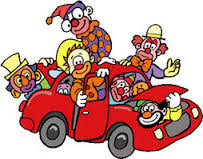
Topic Two: The Trump Clown Car- If you watch CNN and/or MSNBC you are subjected to hearing from Donald Trump “surrogates” on a regular basis, and it is difficult not to flip the remote to another channel. I won’t discuss Kellyanne Conway, Trump’s latest campaign manager, whose starry-eyed infatuation with her boss’s infallibility is impressive in its ability at defying reality. Likewise, Corey Lewandowski, Trump’s former campaign manager now on CNN’s payroll (objective reporting?), whose delusional spin on all things Trump makes one wonder if he is still on Trump’s payroll as well. But I want to briefly unload the Clown Car of “surrogates” that wheels around from tv studio to tv studio defending their indefensible candidate. Let’s take a look at the “Who’s Who” of the Ringling Brothers Trumpists.
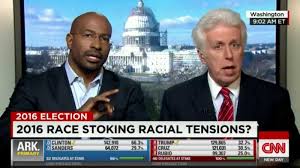
CNN’s Jeffrey Lord (white guy on the left): A former Reagan and Jack Kemp underling, Lord works for a variety of publications and has spent the last few years trying to pin slavery, Jim Crowism, and segregation on the Democratic Party, claiming the present day party should apologize and take responsibility for those sins. Overall, he is a babbling idiot --- but fun to watch when he has to pair off with Van Jones (other guy on the left), a far more intelligent and deft debater.
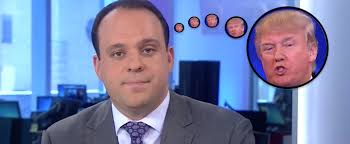
Boris Epstheyn (pronounced Ep-Stine): This genius, who appears most often on MSNBC, has claimed that Russia did not seize Crimea and the Trump Foundation’s purchase of a Donald Trump portrait and hanging it in a Trump golf course was “storage” and within the law (it’s not). This heavy lidded dimwit is totally impervious to facts, as are many of the Trumpists.
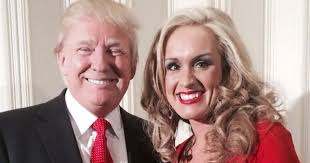
CNN’s extreme wing-nut, Scottie Nell Hughes: The self-described “God-fearing, gun-toting, baby-loving, traditional marriage believing, SUV I don’t care about my carbon imprint driving, border securing, Benghazi truth seeking...lame stream media smacking, sip my sweet tea from a Big Gulp drinking, RINO hunting, target of IRS auditing, ‘one nation under God’ pledging mom." That kind of says it all. She is distressed that Tim Kaine is fluent in Spanish and uses a “foreign” language to communicate with voters. After the RNC, she stated: “What Mr. Trump did, he spoke in a language that all Americans can understand. That is English.” Enough said.
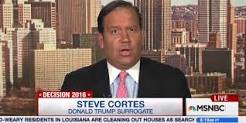
MSNBC’s Steve Cortes. Trump’s favorite Latino, Cortes has defended not only Trump’s outrageous xenophobia but has claimed that Breitbart is a reputable journalistic enterprise! His ability to deny facts and reality makes him one of the most cringe-worthy of the surrogates. Google his exchange with MSNBC's Joy Reid --- who wouldn't let him off his delusional hook!
|
Saving the best for last: Chris Christie, Rudy Guiliani, and Sean Hannity. Ah, where to begin? Did any of the Republican Primary Nominees do a 180 faster than Chris Christie? If you check out http://talkingpointsmemo.com/ you get a complete list of all of Christie’s attacks on Trump during the primaries. Now, of course, Mr. Bridgegate is calling the “entertainer-in-chief” (Christie’s phrase) a “genius.” Need we say more? Rudy Guiliani is so thrilled to finally be back in the spotlight he has even forgotten which party was in power when 9/11, his signature event, occurred! His incoherent ranting and screaming is the best example of how unhinged the Trump bandwagon has become. Guiliani also thinks Trump’s legal maneuvering with the tax code is “genius,” which simply illustrates how low their bar is set. Finally, we have to mention Sean Hannity, the most extreme Trump butt-boy in the Clown Car. Alex Baldwin’s SNL Trump impersonation summed it up beautifully when he said, “It was just me and Sean late at night. I leaned over and I whispered in his ear, ‘Sean, I’m against the war in Iraq,” and then he whispered in my ear, ‘I’m against the war too.’ And then the next thing I knew I was kissing Sean Hannity.” Given how much truth we hear from Hannity and the rest of the surrogates, maybe Baldwin’s flight of fancy is closer to the truth than we know? |
Tuesday, October 4th
Blast #39
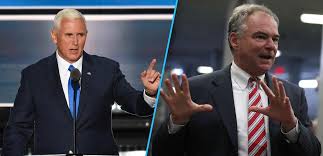
The Older White Man
Undercard Debate
Tonight is the Vice Presidential debate and it’s generating far less interest than Hurricane Matthew --- and rightly so. While the Hurricane could be devastating to millions of people, the debate will make little or no difference to anyone. While it may spawn a “You’re no Jack Kennedy” moment, there’s little else of consequence for us to expect from this lightweight bout. Both men are 5’10” or 11” and 208 pounds, so it’s a fair fight, in that sense, and, each is a 57 (Pence) and 58 (Kaine) year old white man. Beyond that, there’s not much else making them similar. Pence is a classic conservative, supporting de-funding of public schools, supporting businesses not serving LGBT people, he denies climate change, and he contended smoking was not harmful to your health. Kaine, a moderate Democrat who is fluent in Spanish, supports free trade (NAFTA and TPP), opposes the FX pipeline but supports natural gas fracking. Both have been the governor of their home state (Pence in Indiana, Kaine in Virginia) but Kaine has more government experience (mayor, congressman, governor, senator --- Pence was a congressman, radio talk-show host, and then governor). These are two “traditional” politicians heading into this debate. We can expect Kaine to be on the offensive, after Clinton’s performance last week, and Pence will be left to defend not only Trump but his own policy of denying Syrian refugees moving into Indiana --- a decision overturned by the Indiana Supreme Court as unconstitutional this week. Neither of these guys is a riveting speaker but I think Kaine is a bit more of a stem-winder than Pence but we should probably be more concerned about that Hurricane headed up the coast.
The Older White Man
Undercard Debate
Tonight is the Vice Presidential debate and it’s generating far less interest than Hurricane Matthew --- and rightly so. While the Hurricane could be devastating to millions of people, the debate will make little or no difference to anyone. While it may spawn a “You’re no Jack Kennedy” moment, there’s little else of consequence for us to expect from this lightweight bout. Both men are 5’10” or 11” and 208 pounds, so it’s a fair fight, in that sense, and, each is a 57 (Pence) and 58 (Kaine) year old white man. Beyond that, there’s not much else making them similar. Pence is a classic conservative, supporting de-funding of public schools, supporting businesses not serving LGBT people, he denies climate change, and he contended smoking was not harmful to your health. Kaine, a moderate Democrat who is fluent in Spanish, supports free trade (NAFTA and TPP), opposes the FX pipeline but supports natural gas fracking. Both have been the governor of their home state (Pence in Indiana, Kaine in Virginia) but Kaine has more government experience (mayor, congressman, governor, senator --- Pence was a congressman, radio talk-show host, and then governor). These are two “traditional” politicians heading into this debate. We can expect Kaine to be on the offensive, after Clinton’s performance last week, and Pence will be left to defend not only Trump but his own policy of denying Syrian refugees moving into Indiana --- a decision overturned by the Indiana Supreme Court as unconstitutional this week. Neither of these guys is a riveting speaker but I think Kaine is a bit more of a stem-winder than Pence but we should probably be more concerned about that Hurricane headed up the coast.
How Many White People
Can Eat Chowder at the Same Time?
So, last year we discovered the Chowdafest at Sherwood Island State Park in Westport, Connecticut. The Chowdafest brings 30 to 40 restaurants together, mostly from New England, to compete in four categories: Best New England Clam Chowder, Best Creative Chowder, Best Traditional (Manhattan/Rhode Island) Chowder, and Best Soup/Bisque. Attendees, for a $15 entry fee, are given a spoon and a map of the grounds, showing which restaurant is at each numbered stall. You are encouraged to visit all the stalls and rate each on a 7.0 to 10.5 scale. The contestants provide you with a small cup of their best chowder or soup, you rate them and turn in your ballot before leaving the grounds. The Chowdafest has been going on for 9 years and its proceeds go to alleviating hunger in Fairfield County (400,000 people were fed after last year’s event). We were there, last year and this, for a little over an hour, visited (and rated) all the stalls, and left with full bellies and big smiles.
One of the sponsors of this event is Mini-Cooper automobiles and, from what we observed both years, this seems to be a Mini-Cooper destination gathering for Fairfield County. Last year we saw rows and rows of Minis in the parking lot (see photos) and this year there was a plethora of “Mini” baseball caps. I never see many Mini-Coopers driving around Fairfield, so I’m trying to figure out their connection to Chowder!
The big takeaway from the Chowdafest, aside from enjoying the array of chowders and bisques, is that this is an overwhelmingly white event. That shouldn’t be a surprise, really, since the 2010 U.S. Census shows that of Fairfield County’s almost 917,000 residents, 75% are white, 11% are African-American, and 16% are Latino/Hispanic (I know, that’s 102% -- take it up with the Census Bureau). There are no demographic statistics on Mini-Cooper owners but I can say, offering only my observation, they seem to be exclusively white. There’s no big conclusion to draw from this; it’s more a commentary on my adjusting from life on West 82nd Street, where the Amsterdam Avenue street fairs looked like a Rainbow Coalition gala, and now living in suburban luxury with a different demographic landscape. Whatever. The chowder and bisque were great and we actually picked three of the four winners! Woohoo.
Can Eat Chowder at the Same Time?
So, last year we discovered the Chowdafest at Sherwood Island State Park in Westport, Connecticut. The Chowdafest brings 30 to 40 restaurants together, mostly from New England, to compete in four categories: Best New England Clam Chowder, Best Creative Chowder, Best Traditional (Manhattan/Rhode Island) Chowder, and Best Soup/Bisque. Attendees, for a $15 entry fee, are given a spoon and a map of the grounds, showing which restaurant is at each numbered stall. You are encouraged to visit all the stalls and rate each on a 7.0 to 10.5 scale. The contestants provide you with a small cup of their best chowder or soup, you rate them and turn in your ballot before leaving the grounds. The Chowdafest has been going on for 9 years and its proceeds go to alleviating hunger in Fairfield County (400,000 people were fed after last year’s event). We were there, last year and this, for a little over an hour, visited (and rated) all the stalls, and left with full bellies and big smiles.
One of the sponsors of this event is Mini-Cooper automobiles and, from what we observed both years, this seems to be a Mini-Cooper destination gathering for Fairfield County. Last year we saw rows and rows of Minis in the parking lot (see photos) and this year there was a plethora of “Mini” baseball caps. I never see many Mini-Coopers driving around Fairfield, so I’m trying to figure out their connection to Chowder!
The big takeaway from the Chowdafest, aside from enjoying the array of chowders and bisques, is that this is an overwhelmingly white event. That shouldn’t be a surprise, really, since the 2010 U.S. Census shows that of Fairfield County’s almost 917,000 residents, 75% are white, 11% are African-American, and 16% are Latino/Hispanic (I know, that’s 102% -- take it up with the Census Bureau). There are no demographic statistics on Mini-Cooper owners but I can say, offering only my observation, they seem to be exclusively white. There’s no big conclusion to draw from this; it’s more a commentary on my adjusting from life on West 82nd Street, where the Amsterdam Avenue street fairs looked like a Rainbow Coalition gala, and now living in suburban luxury with a different demographic landscape. Whatever. The chowder and bisque were great and we actually picked three of the four winners! Woohoo.
Photos: Top Row - the Lovely Carol Marie, 2015 then 2016.
Row Two: Wilbur, 2015 & 2016
Row Three: The Mini-Coopers, 2015
Row Four: The Chowdafest Multitudes, 2016
Row Two: Wilbur, 2015 & 2016
Row Three: The Mini-Coopers, 2015
Row Four: The Chowdafest Multitudes, 2016
Monday, October 3rd
Blast #38
Saturday, October 1st
Blast #37
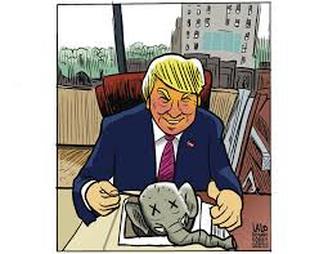
Country or “Conscience”?
As we get closer to the election there are two stories that are very similar but only one is getting significant coverage and the other is barely a blip on the media radar screen. In both cases, we have people who are so self-absorbed and self-centered that they are willing to sacrifice the best interests of our country rather than make themselves “uncomfortable.” I’m speaking, of course, about Millennials --- who are garnering the lion’s share of attention in the media lately --- and the rank-and-file Republican Party led by Paul Ryan and Mitch McConnell, who willingly endorse the train wreck that is the Donald Trump campaign.
The Republican Party has sold its soul to the Devil and the genuinely sad part is how their “leadership” has willingly acceded to the madness. Their disdain for President Obama and unmitigated hatred for Hillary Clinton are reason enough, from their perspective, to allow the hostile takeover of their party by an authoritarian demagogue. While McConnell and Ryan are quiet, but approving Trump in their silence, more vocal Republicans, like Representative Steve King from Iowa, are flying their Trump banner high --- and it illustrates where Trump’s true base is. In an interview with Charlie Pierce (the lead political blogger for Esquire magazine) King said the following:
"This 'old white people' business does get a little tired, Charlie," King said. "I'd ask you to go back through history and figure out, where are these contributions that have been made by these other categories of people that you're talking about, where did any other subgroup of people contribute more to civilization?"
When asked: "Than white people?"
"Than, than Western civilization itself," King said. "It's rooted in Western Europe, Eastern Europe and the United States of America and every place where the footprint of Christianity settled the world. That's all of Western civilization." (http://www.desmoinesregister.com/)
Apparently King played hooky when the World or Global History teacher taught about how Muslims in the Middle East and North Africa not only preserved the history of Greece and Rome but, as important, were crucial in the development of modern mathematics (check out the decimal point and zero origins), where we still use Arabic numerals! That the Republican leadership, as well as the rank and file, support this white supremacist candidacy is shameful and speaks to the self-serving nature of a party that, years ago, hung its future on its white, male base, while relying on scaring enough college-educated suburban women to vote for their party. This self-centered, privileged party is willing to support Trump --- the first candidate to receive NO newspaper editorial endorsements --- rather than make a choice that would be in the interest of our country. Shame on them.
As bad, if not worse, than those Republicans are the naïve and ignorant Millennials who believe they are pursuing some “noble” cause in voting for Libertarian Gary (“I really don’t know anything”) Johnson or Green Party candidate, Dr. Jill (“I do know everything”) Stein. The New York Times recently reported an interview with a Millennial voter in which the NYT reporter asked if the young voter was concerned that a vote for Stein might be like a vote for Ralph Nader in 2000. The response was, “Ralph who?” Now, I’m sure all Millennials are not that ignorant, but I’m not sure they truly have a clear historical perspective and understanding of what’s genuinely at stake in this election. Many, it seems, have bought into the false equivalency that Clinton’s flaws (the Foundation, the emails) are essentially the same as Trump’s (Trump University, the Trump Foundation, his pathological lying). Listening to interviews on NPR (WNYC 93.9 in New York City) this week, I heard one Millennial after another admit that their adherence to their “conscience” was more important that the welfare of the country (Brian Lehrer Show, Thursday, Sept. 29th). I also heard a Millennial declare the he had trouble with Hillary because she had been a “Goldwater girl” in 1964 (when she was in high school)! This kind of superficial knowledge --- driving an important voting choice --- is the kind of thing one hears more than occasionally from Millennials. Certainly Bernie Sanders’s primary run against Clinton, with his YUGE Millennial following, damaged the Democratic candidate’s campaign. The Goldman Sachs speaking fees, that she is part of the “establishment” and represents the monied interests of super PACs, and that she supported the TPP and the Keystone Pipeline are all issues that alienated these younger voters. Combine that with Bernie’s (magical) “free college” for all platform and Millennials flocked to the Vermont Pied Piper. Now, even with Sanders campaigning for Clinton and pointing out that the Democratic platform supports many of his issues, Millennials now seem more comfortable supporting the unelectables, Johnson or Stein.
This generation that needs “safe spaces” and “trigger warnings” might just need a strong dose of the real world. The idea that controversial topics or speakers would be disallowed on a college campus seems antithetical to the notion of a “marketplace of ideas” but, I guess, is perfectly in keeping with a generation that has lived in one protective bubble after another. And, because the world has always revolved around them, they do not seem to be able to fathom that Donald Trump is an existential threat to all of us --- with a vote for Stein or Johnson being the same as a vote for Trump.
I know, I sound like that cranky old liberal who never “felt the Bern.” I wrote (not very kindly) about Bernie during the springtime (check the “Op-Ed” and “Politics” tabs) saying I didn’t think he was doing the Democrats any favors then and I it seems his chickens are coming home to roost now. Certainly, everyone has a right to his/her own vote and her/his own opinion. The wild-eyed Trump supporters have again and again proven their ignorance and prejudice --- and/or selfish adherence to party over country. The Millennials, in the same way, are relishing the limelight and somehow seeing their potential “spoiler” role as some kind of accomplishment! That is the kind of thinking we should expect from a generation raised on everyone getting a trophy and never being inconvenienced by the vagaries of the real world. Their love for start-ups might be genuinely tested if we have to deal with the “Trump Government” start-up in January, 2017, and the Millennials realize they don’t get the “do over” they have grown so accustomed to.
Saturday, October 1st
Blast #36
“Ragtime”: 2016
I am not a huge fan of musicals. And I’m always a bit skeptical about Community Theater. That said, I was very impressed with Curtain Call Theatre’s production of Ragtime in Stamford (The Kweskin Theater) on Friday night. A nonprofit, primarily volunteer group, Curtain Call spares no expense in staging their shows and the amateur cast was an extremely talented troupe. That said, it’s the content of the show itself that I want to focus on.
Ragtime, as you may remember, was the 1975 novel by E.L. Doctorow that became a best-selling sensation, mixing fiction with historiography and to say “the story holds up” would be an understatement. I never read the novel and may have seen the movie version at some point (it was made in 1981, directed by Milos Forman and produced by Dino DiLaurentis, running 155 minutes!) but honestly don’t recall. I remembered the basic plot and mostly recalled that Doctorow mixed notable historic figures --- Henry Ford, J.P. Morgan, Stanford White, Harry Houdini --- to spice up a novel filled with extremely relevant social commentary about immigration, race, and class at the turn of the 20th century. Watching the musical version of the novel, adapted by Terrence McNally, it was hard not to see the striking parallels to our current political situation and the presidential race.
From the initial moment that Coalhouse Walker, Jr., a black jazz musician and one of the main characters, is confronted by white, Irish firemen in New Rochelle, NY, (because he owns a Ford automobile) I had a visceral reaction that immediately screamed “This is what African-Americans (and particularly African American men) are still going through on a regular basis in the United States.” Walker, by the story’s end, is shot to death while surrendering to the police with his hands up! That Ragtime was written 40 years ago makes this murder all the more distressing. The other storylines about immigrants (personified by a Jewish Latvian) and workers (represented by Emma Goldman) are also highly relevant to what is going on around us.
Other symbolism throughout the story is relevant, too. The wealthy white family who live in New Rochelle and are only identified as “Father,” “Mother,” “Younger Brother,” and “the little boy” are clearly designed to epitomize the privileged upper class whites who controlled early 20th century U.S. society. That Walker and his gang take over the Morgan Library, threatening to blow it up (with Younger Brother’s help and his expertise in explosives), strikes at the heart of white power and privilege (Morgan bemoans the potential loss of his Gutenberg Bible). This privately owned repository of Western Culture (overwhelming in its conspicuous consumption!) presents the struggle between the have’s and have-nots in high relief. Other themes reflect those times, as well as foreshadowing the development of 20th century United States --- the Jewish immigrant becoming a prominent filmmaker, the sensationalism of the “trial of the century” involving Stanford White’s murder over his affair with Evelyn Nesbitt, as well as the fascination with celebrity/ illusionist Harry Houdini. The novel also has ancillary characters that include Sigmund Freud, Henry Ford, Jacob Riis, and Booker T. Washington --- all representative and symbolic of themes in 20th century American History.
Ragtime foreshadowed our 21st century in disturbing ways --- and particularly this presidential contest, proving once again that artists often foresee the world before the rest of us. The Curtain Call production, McNally’s adaptation, by necessity cuts large swaths out of the original work and puts it all to music ( by Stephen Flaherty and Lynn Ahrens) but still strongly conveys the larger messages about racism and classism. It is a chilling reminder of the pressing nature of these issues in today’s world --- and should give all of us pause as we approach November 8th.
I am not a huge fan of musicals. And I’m always a bit skeptical about Community Theater. That said, I was very impressed with Curtain Call Theatre’s production of Ragtime in Stamford (The Kweskin Theater) on Friday night. A nonprofit, primarily volunteer group, Curtain Call spares no expense in staging their shows and the amateur cast was an extremely talented troupe. That said, it’s the content of the show itself that I want to focus on.
Ragtime, as you may remember, was the 1975 novel by E.L. Doctorow that became a best-selling sensation, mixing fiction with historiography and to say “the story holds up” would be an understatement. I never read the novel and may have seen the movie version at some point (it was made in 1981, directed by Milos Forman and produced by Dino DiLaurentis, running 155 minutes!) but honestly don’t recall. I remembered the basic plot and mostly recalled that Doctorow mixed notable historic figures --- Henry Ford, J.P. Morgan, Stanford White, Harry Houdini --- to spice up a novel filled with extremely relevant social commentary about immigration, race, and class at the turn of the 20th century. Watching the musical version of the novel, adapted by Terrence McNally, it was hard not to see the striking parallels to our current political situation and the presidential race.
From the initial moment that Coalhouse Walker, Jr., a black jazz musician and one of the main characters, is confronted by white, Irish firemen in New Rochelle, NY, (because he owns a Ford automobile) I had a visceral reaction that immediately screamed “This is what African-Americans (and particularly African American men) are still going through on a regular basis in the United States.” Walker, by the story’s end, is shot to death while surrendering to the police with his hands up! That Ragtime was written 40 years ago makes this murder all the more distressing. The other storylines about immigrants (personified by a Jewish Latvian) and workers (represented by Emma Goldman) are also highly relevant to what is going on around us.
Other symbolism throughout the story is relevant, too. The wealthy white family who live in New Rochelle and are only identified as “Father,” “Mother,” “Younger Brother,” and “the little boy” are clearly designed to epitomize the privileged upper class whites who controlled early 20th century U.S. society. That Walker and his gang take over the Morgan Library, threatening to blow it up (with Younger Brother’s help and his expertise in explosives), strikes at the heart of white power and privilege (Morgan bemoans the potential loss of his Gutenberg Bible). This privately owned repository of Western Culture (overwhelming in its conspicuous consumption!) presents the struggle between the have’s and have-nots in high relief. Other themes reflect those times, as well as foreshadowing the development of 20th century United States --- the Jewish immigrant becoming a prominent filmmaker, the sensationalism of the “trial of the century” involving Stanford White’s murder over his affair with Evelyn Nesbitt, as well as the fascination with celebrity/ illusionist Harry Houdini. The novel also has ancillary characters that include Sigmund Freud, Henry Ford, Jacob Riis, and Booker T. Washington --- all representative and symbolic of themes in 20th century American History.
Ragtime foreshadowed our 21st century in disturbing ways --- and particularly this presidential contest, proving once again that artists often foresee the world before the rest of us. The Curtain Call production, McNally’s adaptation, by necessity cuts large swaths out of the original work and puts it all to music ( by Stephen Flaherty and Lynn Ahrens) but still strongly conveys the larger messages about racism and classism. It is a chilling reminder of the pressing nature of these issues in today’s world --- and should give all of us pause as we approach November 8th.
Thursday, September 29th
Blast #35
This will be a short and random blast because I don't have a lot of time to think, organize, and turn anything else out. I've mentioned my fortunate life and once again, here's proof! After writing my Blast deriding David "Big Papi" Ortiz and his 2003 PED use, my former #1 singles player (from my tennis coaching days at Winchester High School, 1984-87) Shawn Herlihy, a diehard Red Sox fan, not only got in touch with me but has come up with tickets to the Yankee/Red Sox game tonight --- the NY Yankee Tribute to Big Papi! So, I've got a ton of things to do before heading off on the Metro North Yankee Clipper this afternoon. Nonetheless, I want to Blast a few ideas out there before leaving.
The Vice Presidential Debate
Tuesday, October 4th, 9 p.m.
Is anybody really going to watch this? Can anyone believe this debate will tip the balance of the election either way? I found this photo (above) when I went to the dictionary and looked up "Lightweight." It also cross-referenced, as synonyms, "dull" and "Really?" While these milquetoasts are going to probably present their best "fired up" appearence, who's kidding whom? Pence has a room temperature IQ and insists on referring to Donald Trump as a "good man" while Kaine, not as mentally challenged, is about as thrilling a speaker as white noise. Clinton and Trump had to go up against Monday Night Football and still drew an audience of 84 million. These two will be lucky to draw 84. The frightening thought, of course, is that if Trump (god forbid) should win, Pence is the proverbial heartbeat away. "W" redux?
Tuesday, October 4th, 9 p.m.
Is anybody really going to watch this? Can anyone believe this debate will tip the balance of the election either way? I found this photo (above) when I went to the dictionary and looked up "Lightweight." It also cross-referenced, as synonyms, "dull" and "Really?" While these milquetoasts are going to probably present their best "fired up" appearence, who's kidding whom? Pence has a room temperature IQ and insists on referring to Donald Trump as a "good man" while Kaine, not as mentally challenged, is about as thrilling a speaker as white noise. Clinton and Trump had to go up against Monday Night Football and still drew an audience of 84 million. These two will be lucky to draw 84. The frightening thought, of course, is that if Trump (god forbid) should win, Pence is the proverbial heartbeat away. "W" redux?
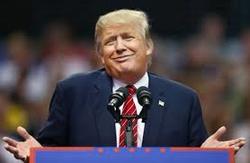
The Donald's Post-Mortem
It's generally agreed that Trump lost the debate Monday night but, of course, not according to the Donald. He proudly told Fox and Friends (talk about being a few cards short of a deck!) that he had, in fact, won according to the CBS poll. Of course, there was no CBS poll! The man lies with every other breath and is somehow making this a close presidential race. It makes one wonder about the electorate (realizing, of course, that I'm part of that East Coast, New York "elite" commie/leftie).
It's generally agreed that Trump lost the debate Monday night but, of course, not according to the Donald. He proudly told Fox and Friends (talk about being a few cards short of a deck!) that he had, in fact, won according to the CBS poll. Of course, there was no CBS poll! The man lies with every other breath and is somehow making this a close presidential race. It makes one wonder about the electorate (realizing, of course, that I'm part of that East Coast, New York "elite" commie/leftie).
SNOWDEN
Speaking of commie/lefties, I went to see Oliver Stone's Snowden yesterday and found it to be an interesting, though fairly humdrum, movie. Unlike his JFK, Stone pretty much sticks to the facts while making his case for Edward Snowden as a committed patriot and not a treasonous rat. Joseph Gordon-Levitt is his usual competent self presenting us with the evolution of the conservative Snowden's shift to whistleblower and fugitive. Rhys Ifans turns in a gem of a performance as Corbin O'Brian, Snowden's CIA mentor and godfather and we're certainly given insight into the machinations of the national security apparatus. The movie uses Laura Poitras's Citizen Four (the Oscar winning documentary about Snowden) as its framing device and relates the story through flashbacks in the midst of Snowden's spilling the beans to the British newspaper The Guardian and Poitras's camera as they help him leave Hong Kong for Russia. It is engaging, while not gripping, cinema and maybe it will convince some people that Snowden was a patriot, as it surely aims to do.
Speaking of commie/lefties, I went to see Oliver Stone's Snowden yesterday and found it to be an interesting, though fairly humdrum, movie. Unlike his JFK, Stone pretty much sticks to the facts while making his case for Edward Snowden as a committed patriot and not a treasonous rat. Joseph Gordon-Levitt is his usual competent self presenting us with the evolution of the conservative Snowden's shift to whistleblower and fugitive. Rhys Ifans turns in a gem of a performance as Corbin O'Brian, Snowden's CIA mentor and godfather and we're certainly given insight into the machinations of the national security apparatus. The movie uses Laura Poitras's Citizen Four (the Oscar winning documentary about Snowden) as its framing device and relates the story through flashbacks in the midst of Snowden's spilling the beans to the British newspaper The Guardian and Poitras's camera as they help him leave Hong Kong for Russia. It is engaging, while not gripping, cinema and maybe it will convince some people that Snowden was a patriot, as it surely aims to do.
Wednesday, September 28th
Blast #34
Bald Man and Responsible Boy is a four-panel cartoon strip I created during a summer workshop at the New York Public Library led by graphic artist Gary Panter in the summer of 2013. Bald Man is a "super" hero with no superpowers but he does have a great costume! (You can see his genesis in the "Art" tab above). Responsible Boy is his young sidekick who tries to keep Bald Man, a morally questionable individual, on the straight and narrow. The cartoon below was created on the Metro-North to Manhattan on Tuesday morning, September 27th, after the first Presidential debate.
Tuesday, September 27th
Blast #33
The Reality of Change
I’m not going to discuss the debate. If you watched it, you saw the clear disparity between the two candidates. I’m more interested in talking about this notion of “change” that Donald Trump says he represents. Hearing people saying the “system” is broken and needs an “outsider” like Trump to fix it illustrates how little the American people have been paying attention to the “system” for the past eight years.
There is no doubt that our political system has been highly dysfunctional for the past four years, in particular, and it is clear, if you examine the facts, why that is. Since the “Tea Party” revolution began, coinciding with Barack Obama’s presidency --- and particularly since the 2010-midterm elections --- the House and the Senate have been totally ineffective in governing the country. Let’s keep in mind that Mitch McConnell, in 2009, stated: “The single most important thing we want to achieve is for President Obama to be a one-term president.” While McConnell’s strategy to win that battle failed, he and the Republicans have managed to develop a “strategy” of obstructionism that has tried to thwart every initiative Obama has introduced. To varying degrees, they have been successful in putting their party’s interests ahead of the country’s.
Obama’s agenda is too far “left” for many conservatives but the way they have held the budget hostage, have refused to appoint a Supreme Court justice, and have tried to dismantle health care, Roe v. Wade, and any other progressive action that have been part of our political landscape for a generation, has been irresponsible, at the least, and unpatriotic from another point of view. I grew up in an age when there were actually “liberal”(moderate?) Republicans (Nelson Rockefeller, Jacob Javits, Kenneth Keating, Edward Brooke, John Lindsay) and the Congress saw a modicum of bipartisanship. Yes, there were the Dixiecrats (who ultimately became the conservative Republicans of today) but even there, Lyndon Johnson got the Voting Rights and Civil Rights Acts passed. Richard Nixon introduced environmental protection and the Republican Party platforms ( until 1980) supported public transportation and the Equal Rights Amendment. Beginning with the “Reagan Revolution” to the present, the Republican Party has moved further and further right and, worse, become more unyielding in supporting their agenda.
Mitch McConnell and Paul Ryan do not seem to have any appetite for compromise and, as a result, have created a bunker mentality among the Reid-Pelosi Democrats. I know that I am out of step with many of my fellow citizens --- the majority of legislatures and governorships in the nation are conservative and Republican --- but I do not understand the rigid adherence to ideology that, in fact, prevents our government from functioning in any kind of practical way. Can any President change that?
I believe that the Republican Party cannot accept that an African American actually won the presidency twice while they were winning state, local, and Congressional seats around the country. However, if the Congress continues to simply continue in its obstructionist fashion, can we accomplish anything substantial as a nation? Obama was not able to deliver his “Change you can believe in,” in large part because of the obstructionist Congress. The present Republican Party, following Donald Trump, seems to want “Change at any cost.”
If McConnell and Ryan honestly believe that a Trump presidency will clear the way for their agenda, that is quite a deal with the devil to be struck. Willingness to put the executive branch of the United States government in the hands of a pathological liar and narcissist so that their political agenda might be realized is quite a trade-off, revealing more than I really care to know about the character of both McConnell and Ryan.
The Reality of Change
I’m not going to discuss the debate. If you watched it, you saw the clear disparity between the two candidates. I’m more interested in talking about this notion of “change” that Donald Trump says he represents. Hearing people saying the “system” is broken and needs an “outsider” like Trump to fix it illustrates how little the American people have been paying attention to the “system” for the past eight years.
There is no doubt that our political system has been highly dysfunctional for the past four years, in particular, and it is clear, if you examine the facts, why that is. Since the “Tea Party” revolution began, coinciding with Barack Obama’s presidency --- and particularly since the 2010-midterm elections --- the House and the Senate have been totally ineffective in governing the country. Let’s keep in mind that Mitch McConnell, in 2009, stated: “The single most important thing we want to achieve is for President Obama to be a one-term president.” While McConnell’s strategy to win that battle failed, he and the Republicans have managed to develop a “strategy” of obstructionism that has tried to thwart every initiative Obama has introduced. To varying degrees, they have been successful in putting their party’s interests ahead of the country’s.
Obama’s agenda is too far “left” for many conservatives but the way they have held the budget hostage, have refused to appoint a Supreme Court justice, and have tried to dismantle health care, Roe v. Wade, and any other progressive action that have been part of our political landscape for a generation, has been irresponsible, at the least, and unpatriotic from another point of view. I grew up in an age when there were actually “liberal”(moderate?) Republicans (Nelson Rockefeller, Jacob Javits, Kenneth Keating, Edward Brooke, John Lindsay) and the Congress saw a modicum of bipartisanship. Yes, there were the Dixiecrats (who ultimately became the conservative Republicans of today) but even there, Lyndon Johnson got the Voting Rights and Civil Rights Acts passed. Richard Nixon introduced environmental protection and the Republican Party platforms ( until 1980) supported public transportation and the Equal Rights Amendment. Beginning with the “Reagan Revolution” to the present, the Republican Party has moved further and further right and, worse, become more unyielding in supporting their agenda.
Mitch McConnell and Paul Ryan do not seem to have any appetite for compromise and, as a result, have created a bunker mentality among the Reid-Pelosi Democrats. I know that I am out of step with many of my fellow citizens --- the majority of legislatures and governorships in the nation are conservative and Republican --- but I do not understand the rigid adherence to ideology that, in fact, prevents our government from functioning in any kind of practical way. Can any President change that?
I believe that the Republican Party cannot accept that an African American actually won the presidency twice while they were winning state, local, and Congressional seats around the country. However, if the Congress continues to simply continue in its obstructionist fashion, can we accomplish anything substantial as a nation? Obama was not able to deliver his “Change you can believe in,” in large part because of the obstructionist Congress. The present Republican Party, following Donald Trump, seems to want “Change at any cost.”
If McConnell and Ryan honestly believe that a Trump presidency will clear the way for their agenda, that is quite a deal with the devil to be struck. Willingness to put the executive branch of the United States government in the hands of a pathological liar and narcissist so that their political agenda might be realized is quite a trade-off, revealing more than I really care to know about the character of both McConnell and Ryan.
Monday, September 26th
Blast #32
The Great Debate?
OMG! It seems some combination of the Super Bowl, Superstorm Sandy, the premiere of a new Star Wars movie and a presidential assassination attempt is descending upon the nation! 100 million viewers, every major news outlet, widescreen viewings and “debate” parties across the nation will watch the first (and possibly only) presidential debate between Hillary Clinton and Donald Trump. The wall-to-wall coverage, the incessant punditry, the advertisements, leads one to believe this will be THE event that turns the election.
Bunk.
Unless Donald Trump (verbally) flashes the cameras or Hillary admits that she still has classified emails on her Blackberry, there is probably little that is going to happen tonight that will swing the election either way. More significant will be how the media covers this debate tomorrow. That is what will determine what “happened” in this debate. The impulse to declare a “winner” and “loser” in the post-mortem, the running and re-running of one or two moments of what transpires, will be what people remember most and, possibly, has some effect on the election.
I’m old enough to remember that Kennedy “won” the first televised debate over Richard Nixon (though the people who listened on radio thought Nixon “won”) and I’ve watched many of the televised debates since then. Until I see the clips run on t.v., I don’t recall any of them. And no televised debate determined how I was going to vote. I honestly don’t believe that 25-34% of the voting electorate is still undecided about this election, as the media is reporting. I think there are a lot of people who don’t want to go public with their support of Trump or Clinton and I’m pretty sure that, by September 26th, , the majority of voters know whom they’re voting for. And, even as cynical as I am, I see the electoral map and it favors Clinton and I believe the Democrats will prevail. The debate will not determine how that goes.
In the meantime, the debate hype is like a NASCAR event, with a secret hope that there will be a horrific, maiming accident we get to see. I’m tired of hearing about “the optics” and I don’t need a rundown about how stylish their clothes are (or aren’t). Do we really need to be reminded that we have a schoolyard bullyboy facing off against the valedictorian girl? How much more about Clinton’s arduous preparation and Trump’s supposed lack of it do we need to know?
There are other stories in the news today. Interesting news about how the economy has improved for poor people, continued coverage of the Charlotte police shooting case, “active” shooters in Washington state and Houston, and so on. If you don’t happen to read the papers, or if you manage not to watch CNN or MSNBC (as I tend to do) you might have no idea there is anything else is going on in the world.
The NFL, of course, is not suspending their Monday Night moneymaker. Major League baseball has a full schedule. HBO, ShowTime, NetFlix, and HULU are all going strong without carrying the debate.
There’s no doubt this is an important election. It is stunning to me that the polls are showing it will be close but I know, from studying history, it is difficult to get a “third term” for the party in power, even with a carnival barker con man as the Republican candidate. But tonight’s debate will not be the factor that tips the election one way or another.
Will I watch it? Of course. You never know when that speeding car will hit the wall and careen into the pack racing for the checkered flag. Wouldn’t want to miss that.
Sunday, September 25th
Blast #31
"I Read the News Today . . . oh, boy"
It’s Sunday, September 25th, and there is a confusing array of materials and ideas strewn across my desk, all of which have my mind roiling. I’m not sure where this Blast is going. There is the ongoing story of the Charlotte, NC, police shooting of Keith Lamont Scott; Colin Kaepernick is on the cover of Time Magazine (above, left) with a story about his protest against that police violence; and Bill Nunn, an actor best known for playing Radio Raheem (above, center) in Spike Lee’s iconic Do The Right Thing is on today’s NY Times obituary page. If you have not seen Lee’s movie, Raheem is a gentle giant who wears four rings on each hand, one spelling LOVE and one HATE, and carries a huge boom box (remember those days?). Raheem, in a frightening precursor to the Eric Garner event (above, right), is choked to death with a police baton, inciting the final, riotous scene in the movie. When all of that is thrown at me first thing in the morning, I feel compelled to write about where we find ourselves just 43 days from the presidential election and on the eve of Monday night’s presidential debate.
Starting with the Charlotte shooting, it now seems the police story raises more questions (for me) than answers. There is no conclusive evidence that Scott had a gun in his hand (one video clearly shows his right hand is empty --- he was right-handed). My deeper question is, why was Keith Scott approached by the police at all? They were in the area to serve a warrant on someone else in the housing complex. Their claim, in today’s NY Times, is that “as they were preparing to serve a warrant on another person, . . .he was rolling a marijuana cigarette inside his S.U.V. --- and (they) had observed him ‘hold a gun up,’ according to a news release.” Number one, North Carolina is an “open carry” state, so I’m not sure how holding a gun up suddenly becomes a confrontation (unless, of course, you are a black person with a gun?). Numerous comedians have gotten huge laughs describing how people act when they use marijuana: like getting pulled over for driving 8 miles an hour! The Scott video also shows the victim walking slowly (he had a TBI and had just taken his meds, as his wife shouted to the police) and certainly did not seem, in any footage, to be acting aggressively. We will have to see what is revealed today but I am feeling, more and more, that if Keith Scott were a white man he would be alive this morning.
Which leads to NFL Week 3. As we head into today’s NFL games we know Kaepernick and others will take a knee during the national anthem, protesting events like those that occurred in Tulsa and Charlotte this week. Whether this movement gains momentum because of Tulsa and Charlotte remains to be seen. What is at the heart of this controversy, as I see it, is the conflict between the competing notions of patriotism and protest. As during the Vietnam War, we are once again hearing people being told to “love it or leave it” if they don’t stand for the anthem. And I believe we are seeing some of the same kneejerk patriotism behind that “my country right or wrong” mentality, just as we did during the Vietnam era. I had trouble with it then and I have trouble with it now. Blind patriotism has always nettled me, particularly since I have too often engaged with people who demand I be more patriotic and who, when asked to explain their understanding of history or the issue, have little more than some emotional rejoinder. To demand that anyone waive his/her First Amendment right because of an obsession with the playing the national anthem before sporting events (something that doesn’t occur in other countries, btw) seems to be the unpatriotic act. My hope is that Kaepernick’s protest gains momentum among other athletes, black and white, in other sports and those high paid celebrity/athletes begin to engage in a serious discussion about the schisms in our society.
Finally, Bill Nunn’s passing is sad but noteworthy at this particular time in our national history. Spike Lee, against all odds, has been a successful and important filmmaker for 30 years --- too often, referred to as a “black” filmmaker. Why? It has bothered me, particularly as the years go on, that Lee is classified this way (at the expense of #Oscarssowhite nominations?). His films, particularly in the early years, certainly featured black actors and themes that had to do with the black community --- but how is that any different than what Woody Allen has done for neurotic, white, Jewish New Yorkers over the years? Mr. Lee has proven to be a versatile filmmaker, as well, creating a great documentary about New Orleans and Katrina (When the Levees Broke: A Requiem in Four Acts) and also making films starring white actors like Edward Norton (Day 25) and Clive Owen (Inside Man). Do the Right Thing remains a great American film and is as important today as it was in 1989 when first released. The character Bill Nunn played, Radio Raheem, is “a towering young black man who always carries around a huge boom box blasting only Public Enemy's ‘Fight the Power.’” (http://dotherightthing.wikia.com/wiki/Radio_Raheem) As noted earlier, Raheem, in the climactic scene of the movie, has his boom box smashed by Sal (Danny Aiello), the pizza store owner, and, in the ensuing fight, the police choke Raheem to death, leading to the manic riot that concludes the movie. I believe it is noteworthy that Lee’s film, and Raheem’s character, are still so relevant to our daily lives in 2016 America.
It’s Sunday, September 25th. “I read the news today, oh, boy . . . “
"I Read the News Today . . . oh, boy"
It’s Sunday, September 25th, and there is a confusing array of materials and ideas strewn across my desk, all of which have my mind roiling. I’m not sure where this Blast is going. There is the ongoing story of the Charlotte, NC, police shooting of Keith Lamont Scott; Colin Kaepernick is on the cover of Time Magazine (above, left) with a story about his protest against that police violence; and Bill Nunn, an actor best known for playing Radio Raheem (above, center) in Spike Lee’s iconic Do The Right Thing is on today’s NY Times obituary page. If you have not seen Lee’s movie, Raheem is a gentle giant who wears four rings on each hand, one spelling LOVE and one HATE, and carries a huge boom box (remember those days?). Raheem, in a frightening precursor to the Eric Garner event (above, right), is choked to death with a police baton, inciting the final, riotous scene in the movie. When all of that is thrown at me first thing in the morning, I feel compelled to write about where we find ourselves just 43 days from the presidential election and on the eve of Monday night’s presidential debate.
Starting with the Charlotte shooting, it now seems the police story raises more questions (for me) than answers. There is no conclusive evidence that Scott had a gun in his hand (one video clearly shows his right hand is empty --- he was right-handed). My deeper question is, why was Keith Scott approached by the police at all? They were in the area to serve a warrant on someone else in the housing complex. Their claim, in today’s NY Times, is that “as they were preparing to serve a warrant on another person, . . .he was rolling a marijuana cigarette inside his S.U.V. --- and (they) had observed him ‘hold a gun up,’ according to a news release.” Number one, North Carolina is an “open carry” state, so I’m not sure how holding a gun up suddenly becomes a confrontation (unless, of course, you are a black person with a gun?). Numerous comedians have gotten huge laughs describing how people act when they use marijuana: like getting pulled over for driving 8 miles an hour! The Scott video also shows the victim walking slowly (he had a TBI and had just taken his meds, as his wife shouted to the police) and certainly did not seem, in any footage, to be acting aggressively. We will have to see what is revealed today but I am feeling, more and more, that if Keith Scott were a white man he would be alive this morning.
Which leads to NFL Week 3. As we head into today’s NFL games we know Kaepernick and others will take a knee during the national anthem, protesting events like those that occurred in Tulsa and Charlotte this week. Whether this movement gains momentum because of Tulsa and Charlotte remains to be seen. What is at the heart of this controversy, as I see it, is the conflict between the competing notions of patriotism and protest. As during the Vietnam War, we are once again hearing people being told to “love it or leave it” if they don’t stand for the anthem. And I believe we are seeing some of the same kneejerk patriotism behind that “my country right or wrong” mentality, just as we did during the Vietnam era. I had trouble with it then and I have trouble with it now. Blind patriotism has always nettled me, particularly since I have too often engaged with people who demand I be more patriotic and who, when asked to explain their understanding of history or the issue, have little more than some emotional rejoinder. To demand that anyone waive his/her First Amendment right because of an obsession with the playing the national anthem before sporting events (something that doesn’t occur in other countries, btw) seems to be the unpatriotic act. My hope is that Kaepernick’s protest gains momentum among other athletes, black and white, in other sports and those high paid celebrity/athletes begin to engage in a serious discussion about the schisms in our society.
Finally, Bill Nunn’s passing is sad but noteworthy at this particular time in our national history. Spike Lee, against all odds, has been a successful and important filmmaker for 30 years --- too often, referred to as a “black” filmmaker. Why? It has bothered me, particularly as the years go on, that Lee is classified this way (at the expense of #Oscarssowhite nominations?). His films, particularly in the early years, certainly featured black actors and themes that had to do with the black community --- but how is that any different than what Woody Allen has done for neurotic, white, Jewish New Yorkers over the years? Mr. Lee has proven to be a versatile filmmaker, as well, creating a great documentary about New Orleans and Katrina (When the Levees Broke: A Requiem in Four Acts) and also making films starring white actors like Edward Norton (Day 25) and Clive Owen (Inside Man). Do the Right Thing remains a great American film and is as important today as it was in 1989 when first released. The character Bill Nunn played, Radio Raheem, is “a towering young black man who always carries around a huge boom box blasting only Public Enemy's ‘Fight the Power.’” (http://dotherightthing.wikia.com/wiki/Radio_Raheem) As noted earlier, Raheem, in the climactic scene of the movie, has his boom box smashed by Sal (Danny Aiello), the pizza store owner, and, in the ensuing fight, the police choke Raheem to death, leading to the manic riot that concludes the movie. I believe it is noteworthy that Lee’s film, and Raheem’s character, are still so relevant to our daily lives in 2016 America.
It’s Sunday, September 25th. “I read the news today, oh, boy . . . “
Saturday, September 24th
Blast #30
Warren G. Harding/ Calvin Coolidge Calvin Coolidge/ Herbert Hoover John G. Stumpf The Trumps
Do We Really Want a “Businessman” as President?
I periodically watched the CEO and Chairman of Wells Fargo Bank, John G. Stumpf, withstand the withering slings and arrows of a Senate hearing for his bank’s unscrupulous practices and thought about how one argument for Donald J. Trump’s election is that the nation would be better off in the hands of a “businessman.” Examining the charges against Mr. Stumpf, we can see that he is clearly a man who, while claiming he accepts “full responsibility” for years of allowing his bank to create bogus bank and credit card accounts (for great profit), he was not about to deny himself one cent of his significant compensation ($19 million). Rather, 5,300 employees (some working for $12.00 per hour) were fired while the upper echelons of the corporation, which had created this culture of corruption, remained in their positions, fat and happy. Mr. Stumpf’s assurances that he was remorseful did not impress the Senate and it should not be acceptable to us, either. More than that, though, as we hear more and more about the Trump Organization’s wheeling and dealing, too much of which is undisclosed because the candidate and his slimy progeny won’t reveal its workings, we need to look at Mr. Stump’s performance as a precursor to what we might expect from a Trump Administration. Not accepting genuine responsibility for one’s actions seems endemic in Mr. Trump’s “business” and we need to consider what that might mean in his dealings as Commander-in-Chief.
As a retired high school United States History teacher, my initial instinct is always to look back and see if we have historical precedents. What have we seen from businessmen in the White House? We had a run of three business Republicans at 1600 Pennsylvania Avenue from 1921-1933: Harding, Coolidge, Hoover. Coolidge, of course, is famous for his quote, ”the chief business of America is business.” It may be instructive for us to note that the administrations of Harding, Coolidge, and Hoover, throughout the “Roaring Twenties,” saw unregulated business self-destruct to create the greatest worldwide economic calamity in modern history. That, of course, was almost, matched in 2007 when another (failed) businessman, George W. Bush, was at the helm. Unregulated banking run amok (again), led to a near collapse of the U.S. (and global) economy. Under George H. W. Bush, another former businessman (Texas oil), the stock market soared while unemployment steadily rose and consumer confidence sank over his four years (1989-1993). Finally, we had Harry Truman, failed haberdasher, from 1945-1953 but, as a Democrat, he was less business oriented (maybe because of his own failure?). So, Truman introduced a number of progressive ideas (civil rights, health insurance, welfare, education, veterans rights, minimum wage), making some gains (he integrated the armed forces and the postal service), but was seen primarily as an “enemy” to business, so probably shouldn’t be on this list of businessmen/presidents.
Overall, then, we see that business people do not do a particularly good job in the White House. Harding’s administration was grossly corrupt (remember that Teapot Dome scandal?), Coolidge’s sat back while the KKK regenerated (40,000 marched in Washington, D.C. in 1925!), and poor Hoover, left with their mess to clean up, could not bring himself to do what came natural to FDR --- using the federal government to serve the entire nation and not leave it up to the states to bail themselves out (take a look at how Kansas is doing in 2016, btw). What might we expect from a President Trump?
Assuming we won’t see a miraculous transformation from a man who is a narcissistic pathological liar, we should be very, very scared. Trump’s disregard for the Constitution (water boarding and stop-and-frisk are okay?), his gross ignorance about diplomacy (we can use nuclear weapons to settle disputes in the Middle East?), and his absurd economic proposals (spiking the national debt trillions of dollars!) should disqualify him. Beyond that, his refusal to release his taxes and business information, his promise to put the Trump Organization in a “blind trust,” run by Beavis, Butthead & Marilyn Munster, and his clear racist whistle blowing should be other disqualifying factors. Should we even revisit the entire “birther” travesty?
We are looking at a businessman who has overseen bankruptcies, publicly cheated on his wife, who brags about taking advantage of the tax code (while not releasing his returns), and who lies at a 71-91% rate (according to PolitiFact). Are people so hungry for “change” that they will elect such a person? Is Hillary Clinton so loathsome that this alternative is preferable?
Maybe a businessman in the White House would be a good thing. But it is certainly not this businessman. In the same way that those who won’t vote for Hillary say they don’t object to a woman being elected president, they just don’t want this woman, we should do the same. That Donald Trump is grossly ignorant and unfit to be President seems manifestly clear. His appeal to dissatisfied white people who hate Obama and Clinton should be noted, indeed. He has exposed a fault line in our culture that needs to be addressed. But electing him President is not the way to do that. We may need a businessperson in the White House but Donald J. Trump is not the one.
I periodically watched the CEO and Chairman of Wells Fargo Bank, John G. Stumpf, withstand the withering slings and arrows of a Senate hearing for his bank’s unscrupulous practices and thought about how one argument for Donald J. Trump’s election is that the nation would be better off in the hands of a “businessman.” Examining the charges against Mr. Stumpf, we can see that he is clearly a man who, while claiming he accepts “full responsibility” for years of allowing his bank to create bogus bank and credit card accounts (for great profit), he was not about to deny himself one cent of his significant compensation ($19 million). Rather, 5,300 employees (some working for $12.00 per hour) were fired while the upper echelons of the corporation, which had created this culture of corruption, remained in their positions, fat and happy. Mr. Stumpf’s assurances that he was remorseful did not impress the Senate and it should not be acceptable to us, either. More than that, though, as we hear more and more about the Trump Organization’s wheeling and dealing, too much of which is undisclosed because the candidate and his slimy progeny won’t reveal its workings, we need to look at Mr. Stump’s performance as a precursor to what we might expect from a Trump Administration. Not accepting genuine responsibility for one’s actions seems endemic in Mr. Trump’s “business” and we need to consider what that might mean in his dealings as Commander-in-Chief.
As a retired high school United States History teacher, my initial instinct is always to look back and see if we have historical precedents. What have we seen from businessmen in the White House? We had a run of three business Republicans at 1600 Pennsylvania Avenue from 1921-1933: Harding, Coolidge, Hoover. Coolidge, of course, is famous for his quote, ”the chief business of America is business.” It may be instructive for us to note that the administrations of Harding, Coolidge, and Hoover, throughout the “Roaring Twenties,” saw unregulated business self-destruct to create the greatest worldwide economic calamity in modern history. That, of course, was almost, matched in 2007 when another (failed) businessman, George W. Bush, was at the helm. Unregulated banking run amok (again), led to a near collapse of the U.S. (and global) economy. Under George H. W. Bush, another former businessman (Texas oil), the stock market soared while unemployment steadily rose and consumer confidence sank over his four years (1989-1993). Finally, we had Harry Truman, failed haberdasher, from 1945-1953 but, as a Democrat, he was less business oriented (maybe because of his own failure?). So, Truman introduced a number of progressive ideas (civil rights, health insurance, welfare, education, veterans rights, minimum wage), making some gains (he integrated the armed forces and the postal service), but was seen primarily as an “enemy” to business, so probably shouldn’t be on this list of businessmen/presidents.
Overall, then, we see that business people do not do a particularly good job in the White House. Harding’s administration was grossly corrupt (remember that Teapot Dome scandal?), Coolidge’s sat back while the KKK regenerated (40,000 marched in Washington, D.C. in 1925!), and poor Hoover, left with their mess to clean up, could not bring himself to do what came natural to FDR --- using the federal government to serve the entire nation and not leave it up to the states to bail themselves out (take a look at how Kansas is doing in 2016, btw). What might we expect from a President Trump?
Assuming we won’t see a miraculous transformation from a man who is a narcissistic pathological liar, we should be very, very scared. Trump’s disregard for the Constitution (water boarding and stop-and-frisk are okay?), his gross ignorance about diplomacy (we can use nuclear weapons to settle disputes in the Middle East?), and his absurd economic proposals (spiking the national debt trillions of dollars!) should disqualify him. Beyond that, his refusal to release his taxes and business information, his promise to put the Trump Organization in a “blind trust,” run by Beavis, Butthead & Marilyn Munster, and his clear racist whistle blowing should be other disqualifying factors. Should we even revisit the entire “birther” travesty?
We are looking at a businessman who has overseen bankruptcies, publicly cheated on his wife, who brags about taking advantage of the tax code (while not releasing his returns), and who lies at a 71-91% rate (according to PolitiFact). Are people so hungry for “change” that they will elect such a person? Is Hillary Clinton so loathsome that this alternative is preferable?
Maybe a businessman in the White House would be a good thing. But it is certainly not this businessman. In the same way that those who won’t vote for Hillary say they don’t object to a woman being elected president, they just don’t want this woman, we should do the same. That Donald Trump is grossly ignorant and unfit to be President seems manifestly clear. His appeal to dissatisfied white people who hate Obama and Clinton should be noted, indeed. He has exposed a fault line in our culture that needs to be addressed. But electing him President is not the way to do that. We may need a businessperson in the White House but Donald J. Trump is not the one.
Thursday, September 22nd
(Happy Autumnal Equinox)
Blast #29
And now, another Voice
Those who know me can attest to the fact that I have had a most fortunate life. I have always managed, it seems, to be in the right place at the right time. This has led to some wonderful Zelig like moments, as well as some Forrest Gump scenarios. What has accompanied that good fortune has also been a long list of incredible individuals with whom I am still friends after many, many years. I say all this by way of introducing a short but thoughtful piece emailed today by the recently retired United States Court for the Western Kentucky District, Federal Magistrate Judge James D. Moyer. Jim served as a Federal Magistrate from April 29, 1996 until December 31, 2015, an incredible record of public service. In that time he sat on the bench hearing a far ranging array of cases. I have known Jim since September, 1967, and we were even roommates for a brief time at Morse College. He is one of the most intelligent and thoughtful people you will ever meet, as I think his succinct email here demonstrates.
At the risk of being the boring guy who says that reality is complicated and messy and granular, let me just say that: it is not clear that the Tulsa and Charlotte shootings are factually equivalent. Tulsa: white officer shoots black motorist who is broken down, and has his hands up (apparently). Charlotte: black officer shoots black man who apparently (but not conclusively) has gun, with a police force chief who's black. I respectfully suggest that we don't know whether the Charlotte shooting is an example of "racist cops shoot black men all the time." No one wants to hear that word of moderation and deliberate suspension of conclusions, but I will offer the comment that we do not know enough ... yet. That doesn't mean that there isn't a systemic problem with police -- there is. But we don't know enough in Charlotte to resort to riots and shooting innocent people, either.
I think Jim's call for "moderation and deliberate suspension of conclusions" perfectly demonstrates why he was an excellent juror for almost 20 years. I only hope if I end up in court (you never know) I'm brought before someone as thoughtful and conscientious. And I only wish I wasn't such a skeptic as to think our courtrooms are not populated by enough Justices like Jim.
Wednesday, September 21st
Blast #28
The Ghost in the Machine
After two more police shootings of black men, I’m wondering if white people are starting to understand that we white folks have lived in denial all these years. As well as why black people shake their heads when white people (even today!) say that the police would never brutalize people of color? Our digitized age has finally opened the Pandora’s Box of racial injustice for all to see. That may not mean that everyone agrees or believes the institutional racism that began in 1619 is really there, or “as bad as you’re making it out to be.” But it is hard to deny what we can now clearly see on an all too regular basis. And please don’t discount how much of the racism, the Trumpian dog whistles, and this now visible violence is a result of the country having had the audacity to elect a black man President!
White people live very insulated lives (I am not exempting myself here, believe me) and even though we will probably remain the “dominant” culture through the middle of this century (though steadily losing power and influence) it is time to look into our national mirror and take a real accounting. The American narrative is controlled by predominantly white, male voices and we (white people) need to not only recognize this fact but also consider how that skews our entire view of the world. Rigid and debilitating school segregation is explained as “the achievement gap.” Displacement of the working poor is simply “gentrification.” There is always an assumption that black men who are shot by police have a weapon. We immediately hear if these victims have some kind of criminal record, as if to justify their murder. And too many white people look at those last four sentences and basically say, “Yeah, so?” --- like, "What’s your point?"
Here’s a first, simple problem: white people believe the police protect and serve. Black people are more skeptical, based on history and reality. If we have been paying attention since the Trayvon Martin shooting in 2012, we (white people) have to honestly begin to question the narrative that pervades our society. As a U.S. History teacher, I can tell you that the Holocaust is taught (as it should be!) but the systematic elimination of Native Americans and the massacres of African Americans at Rosewood, Florida (1923), in Tulsa, Oklahoma (1921), and East St. Louis (1917), not to mention the brutality of the NY City Draft riots (1863), get little to no play in high school history classes --- and certainly aren’t required knowledge for the A.P. U. S. History exam! Slavery, of course, is noted, but there is little to nothing describing the terrorism and brutality of the KKK in the post Civil War, Jim Crow South. If you live in the North (or any of the predominantly white flyover states) you feel a certain satisfaction that “we” were on the “right” side during the Civil War. U.S. History texts contain little or nothing about Northern or Midwestern discrimination in employment and housing --- even during the sainted FDR’s New Deal, where redlining, a housing scourge which persists today, began --- to make Yankees feel guilty. “We” helped “them” up!
That’s an extreme characterization but far less so than most might think. And that’s been the blade white America has used to inflict the thousand little cuts on any who are not like “us.” People dispute the notion of “white privilege” without seriously, critically examining what, exactly, it is. Tim Wise, who has taught, lectured, and written about white privilege for years, puts it succinctly: Whites have the luxury of not having to worry that our race is going to mark us negatively when looking for work, going to school, shopping, looking for a place to live, or driving for that matter: things that folks of color can’t take for granted. (http://www.timwise.org/2008/09/explaining-white-privilege-or-your-defense-mechanism-is-showing/) Wise goes on to use a simple analogy --- think about the challenges a disabled person faces compared to an able-bodied one, every day. Without consideration for that disability, the playing field is far from even. (If you are a person who needs to wear prescription glasses --- imagine going through a day, much less a week, month, or year(s) without them! ---a great analogy I learned from my brother, who began wearing glasses at age 8 or 9 – and then taught Special Education). The point is, white privilege is being the able bodied person in a society that has, quite intentionally and systematically, guaranteed that the disabled population is quite intentionally penalized. And, yes, the Stephen Hawking’s and FDR’s and others have accomplished great things --- but they are exceptions, not the rule, because the world and its rules are established by, and for, the able-bodied people.
Throughout my life I have been fond of asking white people if, given the choice, they would ever be black in this country (stipulating that you couldn’t say “Yes, Michael Jordan,” or “Yes, Barack Obama,”). As a blue-eyed white man named “Johnson,” my answer should be pretty obvious ( “Never!”). It’s time for white people to deal with the reality that exists in this country, like it or not. Trump’s dog whistles about making America “great” (read “white”) again and the incredible backlash we have witnessed throughout the Obama presidency has been bad enough. But now that we are seeing, on a regular basis, how our fellow citizens are treated --- not only by the police but also by retail stores that profile and businesses that don’t hire those with “black” names, and so on. Isn’t it time to step up to the plate and begin a civil discourse about how to right this Ship of State? The Civil Rights movement and Dr. King only started the discussion. Obama’s election showed that we do have people of good faith throughout this country. The challenge now will be to see how we can marshal our will and energy to form that “more perfect union” our Founders aspired to all those years ago.
After two more police shootings of black men, I’m wondering if white people are starting to understand that we white folks have lived in denial all these years. As well as why black people shake their heads when white people (even today!) say that the police would never brutalize people of color? Our digitized age has finally opened the Pandora’s Box of racial injustice for all to see. That may not mean that everyone agrees or believes the institutional racism that began in 1619 is really there, or “as bad as you’re making it out to be.” But it is hard to deny what we can now clearly see on an all too regular basis. And please don’t discount how much of the racism, the Trumpian dog whistles, and this now visible violence is a result of the country having had the audacity to elect a black man President!
White people live very insulated lives (I am not exempting myself here, believe me) and even though we will probably remain the “dominant” culture through the middle of this century (though steadily losing power and influence) it is time to look into our national mirror and take a real accounting. The American narrative is controlled by predominantly white, male voices and we (white people) need to not only recognize this fact but also consider how that skews our entire view of the world. Rigid and debilitating school segregation is explained as “the achievement gap.” Displacement of the working poor is simply “gentrification.” There is always an assumption that black men who are shot by police have a weapon. We immediately hear if these victims have some kind of criminal record, as if to justify their murder. And too many white people look at those last four sentences and basically say, “Yeah, so?” --- like, "What’s your point?"
Here’s a first, simple problem: white people believe the police protect and serve. Black people are more skeptical, based on history and reality. If we have been paying attention since the Trayvon Martin shooting in 2012, we (white people) have to honestly begin to question the narrative that pervades our society. As a U.S. History teacher, I can tell you that the Holocaust is taught (as it should be!) but the systematic elimination of Native Americans and the massacres of African Americans at Rosewood, Florida (1923), in Tulsa, Oklahoma (1921), and East St. Louis (1917), not to mention the brutality of the NY City Draft riots (1863), get little to no play in high school history classes --- and certainly aren’t required knowledge for the A.P. U. S. History exam! Slavery, of course, is noted, but there is little to nothing describing the terrorism and brutality of the KKK in the post Civil War, Jim Crow South. If you live in the North (or any of the predominantly white flyover states) you feel a certain satisfaction that “we” were on the “right” side during the Civil War. U.S. History texts contain little or nothing about Northern or Midwestern discrimination in employment and housing --- even during the sainted FDR’s New Deal, where redlining, a housing scourge which persists today, began --- to make Yankees feel guilty. “We” helped “them” up!
That’s an extreme characterization but far less so than most might think. And that’s been the blade white America has used to inflict the thousand little cuts on any who are not like “us.” People dispute the notion of “white privilege” without seriously, critically examining what, exactly, it is. Tim Wise, who has taught, lectured, and written about white privilege for years, puts it succinctly: Whites have the luxury of not having to worry that our race is going to mark us negatively when looking for work, going to school, shopping, looking for a place to live, or driving for that matter: things that folks of color can’t take for granted. (http://www.timwise.org/2008/09/explaining-white-privilege-or-your-defense-mechanism-is-showing/) Wise goes on to use a simple analogy --- think about the challenges a disabled person faces compared to an able-bodied one, every day. Without consideration for that disability, the playing field is far from even. (If you are a person who needs to wear prescription glasses --- imagine going through a day, much less a week, month, or year(s) without them! ---a great analogy I learned from my brother, who began wearing glasses at age 8 or 9 – and then taught Special Education). The point is, white privilege is being the able bodied person in a society that has, quite intentionally and systematically, guaranteed that the disabled population is quite intentionally penalized. And, yes, the Stephen Hawking’s and FDR’s and others have accomplished great things --- but they are exceptions, not the rule, because the world and its rules are established by, and for, the able-bodied people.
Throughout my life I have been fond of asking white people if, given the choice, they would ever be black in this country (stipulating that you couldn’t say “Yes, Michael Jordan,” or “Yes, Barack Obama,”). As a blue-eyed white man named “Johnson,” my answer should be pretty obvious ( “Never!”). It’s time for white people to deal with the reality that exists in this country, like it or not. Trump’s dog whistles about making America “great” (read “white”) again and the incredible backlash we have witnessed throughout the Obama presidency has been bad enough. But now that we are seeing, on a regular basis, how our fellow citizens are treated --- not only by the police but also by retail stores that profile and businesses that don’t hire those with “black” names, and so on. Isn’t it time to step up to the plate and begin a civil discourse about how to right this Ship of State? The Civil Rights movement and Dr. King only started the discussion. Obama’s election showed that we do have people of good faith throughout this country. The challenge now will be to see how we can marshal our will and energy to form that “more perfect union” our Founders aspired to all those years ago.
Tuesday, September 20th
Blast #27
This is a musical satire written in an easily recognized blues tradition. Hope you enjoy it and maybe get a chuckle or two out of it.
Pants on Fire
I’m getting pretty tired of the daily nightly news,
Those talking heads keep yakking and giving me the blues,
Most don’t do their homework and call a lie a fact,
They don’t know where they’re goin’, callin’ white things black…..
And then the politicians, they’re just as bad or worse,
Every time I hear one speak I feel just like I’m cursed,
They scream and shout and stomp and yell and bring us all to tears,
Because they’re saying nothing, they’ve been doing it for years.
Pants on Fire, Pants on Fire,/ I’m so tired of these flaming Liars,
Why can’t these folks just tell what’s true/Why do they all lie and make us so blue?
Pants on Fire, Pants on Fire,/ I’m so damn tired of these flaming Liars.
You wake up in the morning and there they go again,
Telling all these stories, who knows where or when
Things they say have happened, or even if they’re real,
You just have to question how they do it with such zeal.
I’m turning off the t.v., I’m tired of it all,
I’m going to take time off and just stare at the wall,
I don’t think we can stop it, no matter what we do,
They’ll just keep on yapping and making us feel blue.
Pants on Fire, Pants on Fire,/ I’m so tired of these flaming Liars,
Why can’t these folks just tell what’s true/Why do they all lie and make us so blue?
Pants on Fire, Pants on Fire,/ So damned tired of these flaming Liars!
Pants on Fire, Pants on Fire,/Can we get rid of these flaming Liars!
©BlackDogMusic2016
September 15/20, 2016
Monday, September 19th
Blast #26
Bill Buckner, 1986 World Series Buckner and Mookie Wilson Today Chase Headley
Chase Headley, Bill Buckner, and Perspective
Watching the Yankee game the other night, the Lovely Carol Marie and I were assessing the value of New York’s 32-year-old third baseman, Chase Headley. We were appreciating t his fielding this season but bemoaning his batting stats. As of this writing, he is hitting .257 with 14 home runs and 50 runs batted in. Headley is finishing the second season of a four-year deal with the Yankees and he is a serviceable, journeyman player. He had an aberrant year in 2012, when he won both the Gold Glove (best fielder at this position) and Silver Slugger (best hitter at his position) Awards and came in fifth in the Most Valuable Player voting while playing for the San Diego Padres. I say “aberrant” year because his 10-year lifetime statistics show that he is a .264 hitter who, on average, hits 15 home runs and drives in 69. Given that average, Carol Marie and I should not bemoan his current status --- it basically reflects who he is as a player.
What this led me to think about, though, was how harsh the public can be toward teams and athletes (and others in the public eye, of course) and how one bad event can lead to a lasting, pejorative stain on one’s reputation. The Buffalo Bills went to four consecutive Super Bowls, a feat no other team has ever accomplished, but are remembered as “losers” because they never won that final game. Even a spectator, like Steve Bartman in Chicago, can be so reviled by the fans (for messing up a possible Moises Alou catch contributing to a Cubs playoff loss) that you have to move out of town! The worst instance, though, is Bill Buckner and the 1986 World Series. Red Sox fans just cringed when they read the previous sentence, and every other fan of the game knows exactly what I’m referring to.
On October 25, 1986, the Boston Red Sox were one strike away from ending a 68-year championship drought. The New York Mets were batting in the bottom of the tenth inning with the Red Sox leading, 5-3. But the Mets, an ever-gritty group, hit three consecutive singles (Gary Carter, Kevin Mitchell, and Ray Knight). Bob Stanley’s wild pitch tied the game and Mookie Wilson came to the plate. With a 3-2 count, Wilson bounced a ball toward first base, where Buckner, 37, was playing (on two bad ankles). I’m sure Red Sox fans have the image emblazoned in slow motion in their collective memory. Buckner reached down a moment too late, the ball rolled through his legs into shallow right field. Wilson ran safely to first and Ray Knight scored the winning run! The Mets went on to win the World Series two nights later (rain prevented the game from being played the next night, a Sunday). If you talk to any baseball fan about the 1986 World Series, Buckner’s error is the first thing that will be mentioned.
That is a sad fact, indeed. Bill Buckner was an outstanding major league baseball player who, over 22 seasons, averaged .289 and amassed 2715 hits. He was the National League batting champion in 1980 and led that league in doubles two times. He has been vilified since 1986 as the man who, singlehandedly, prevented the Red Sox from ending “The Curse.” It’s really not fair that a player with an illustrious career is remembered for one mistake. Buckner and Wilson, who became friends in the aftermath, are now on an MLB Network commercial together --- with Buckner catching a variety of objects as they walk along. None but the diehard fan watches MLB, however, and most remember Buckner only for that one moment.
What led me to all this rambling was really the conversation with Carol Marie about Chase Headley. As we continued, I said, “You know, if I were a retired major league baseball player right now, and not a retired high school teacher, I think I’d feel pretty good about a .264 career average with a Gold Glove and Silver Slugger on my mantle.” Perspective. I know how hard it is to hit a baseball --- though I have no idea what it would be like to see a 90 plus mile an hour pitch whiz by. But I do know that playing 10 years in “The Show” is a pretty special accomplishment in and of itself. So, while the Lovely Carol Marie and I might think Chase Headley should be better at the plate, we are really being unfair to a player who is doing the best he can.
And that led to the notion of perspective. I am the same age as Bill Buckner. I don’t have a major league baseball career to look back on, or a National League batting championship, nor did I ever play in a World Series game. And, after Little League, I didn’t aspire to those goals. But part of being 67 leads to reflecting on where you’ve been. When my father turned 60, I remember asking him what that felt like. An extremely taciturn man, he thought for a long moment, saying: “You realize you have fewer years left than you’ve already lived.” That was 1986, the year of Bill Buckner’s error. My dad went on to live until 2000, but didn’t get to see the Subway Series that year, passing away in July. Nonetheless, now, at 67, a day doesn't go by that I don’t wonder how much time is left. There are great memories, for sure, and I've often said I’ve had the most fortunate life I could have ever imagined. But I also know that, no matter how much time I have left (and I visited Mom, who is 89 this past weekend), I’ll never read everything I want to read, or see all the movies I want to see, or hear all the music that’s out there, and so on. So, I’m trying to careen ahead, writing Daily Blasts, reading and painting, and doing as many things as I can each day and week and month.
It’s interesting to get old(er) and have the time to reflect on all this. The time does fly by and my friend, Jed Lippard, explained it to me very clearly a few months ago, providing great perspective. Discussing his twin boys, who are eight years old, he said “Summer lasts forever for them because it’s less than 1/8th of their lives. For you, it’s more than 1/67th.” Brilliant! In those simple fractions I have the equation that explains why time passes faster and faster as I move slower and slower. Keeping perspective on life, Chase Headley, Bill Buckner, and all the rest, is something I’m trying to put first and foremost, as I start my third autumn without having to create lesson plans or correct papers. I’m looking forward to seeing how fast this 1/68th of my life flies by.
Saturday, September 17th
Blast #25
Why Journalists Should Act Like Teachers
I taught high school History and English for 42 years and was a consultant for about the last twenty of those. Doing professional development workshops with teachers, many focused on assessment, a topic that was extremely important was accountability. In particular, when teaching writing, be it in English or History, we had to make sure students knew they had to provide evidence, cite sources, and make their case as strong as possible with factual support. One of my running jokes was describing the countless History essays I had looked at over the years that began with the phrase “Many people have said . . . “. My question, rhetorically to teachers and in the margin of the student’s paper, always was: “Who are the ‘many’ who 'have said’ this?” Knowing laughs from teachers and some squirming and shrugs from the students. The lesson is simple: you cannot make claims that are not substantiated by facts. It is a basic principle in writing, in our legal system, and, until this campaign, in Presidential politics.
“People are saying, “ “I have heard,” and similar phrases are at the heart of basic claims, time and again, made by Donald J. Trump. And it was not until yesterday, September 16, 2016, that we finally heard the word “lie” used to describe the Republican candidate’s assertion that the President was not born in the United States. But what about his claim that he saw “thousands cheering” as the Twin Towers collapsed, or that he lost “hundreds of friends” in 9/11 tragedy? (Blatant lies) He constantly lies about his standing in polls and economic facts, about funding his own campaign, about giving to charity, about his “handpicked” instructors at (the bogus) Trump University, about “not knowing” David Duke (when he had made a statement about Duke as far back as 2000 --- somehow his “great” memory failed him?), that Mexico will pay for his “great wall,” and so on. If he were writing an essay in an English or History class any teacher worth her salt would demand he cite his sources --- and make sure they were credible! Yet our journalists have sat on their hands, claiming they have to be “objective” (?) during this campaign.
How is it not objective to differentiate the truth from a lie? Why has it taken over a year for the New York Times, the cable networks and other media outlets to finally call a lie a lie? The Huffington Post, to their credit, put a “warning label” on all Trump stories (after relegating his primary campaign to the Entertainment Page) “Note to our readers: Donald Trump is a serial liar, rampant xenophobe, racist, misogynist, birther and bully who has repeatedly pledged to ban all Muslims -- 1.6 billion members of an entire religion -- from entering the U.S.” Yet the HuffPost took criticism for not being “objective.” That they actually were the only outlet to tell the truth about Trump was challenged as bad journalism.
Why did the Media abandon telling the truth about a pathological liar? Was there a fear of proving (to the right) they were a “biased liberal media?” Now that we have finally pulled that finger from the dyke that has shielded Trump (much as the veterans did at the Trump Hotel “press conference” on Friday), maybe we will start to get genuine “objective” news reporting --- clearly identifying lies when they are told. Maybe we will now hear reporters demanding that Trump begin telling us who, exactly, these “people” he “heard” or “read about” are? Or asking where we can find the statistics he claims support his outlandish ideas? Maybe we will finally get the Media (and a presidential candidate) to do what any basic high school History or English student is required to do: cite your sources, prove what you claim with facts. Do that and your work will be acceptable.
Friday, September 16th
Blast #24
Donald Trump, the Moonwalk, and Apology/Regret
Five years ago Donald Trump began pedaling the idea that Barack Obama was not born in the United States and, therefore, is not a legitimate President. Even after Obama (and Seth Meyers) decimated him at the White House Correspondents Dinner in 2011, Trump persisted in claiming Obama was not a citizen. Typical of Trump, his lying has expanded to accusing the Hillary Clinton campaign of 2008 of starting this witch hunt --- with all evidence to the contrary --- and has also claimed that he did the nation “a service” in forcing the President to prove he is an American. It is noteworthy that 41% or Republicans still believe that Obama was not born in the United States. Trump’s claim is as credible as that of those who believe the July 20, 1969 NASA moonwalk was a hoax.
There is no way we can look at this claim and not see its implicit racism. That Trump, even in the current campaign, hints that Obama may be a Muslim (recently suggesting Obama would have attended Antonin Scalia’s funeral “if it were held in a mosque.”) is yet another example of how Trump’s “Make America Great Again” slogan is a thinly veiled plea to bring back a white, male, Christian run country that was only "great" when those men were at the helm. To deny the racism in Trump’s claims would be naïve, at best. To not make him accountable would be irresponsible.
Yet Trump, who seems incapable of admitting he is ever wrong, much less say “I’m sorry,” cannot bring himself to genuinely apologize for his Birther crusade. He may express “regret” but that is not the same as saying “I’m sorry.” A regret does not admit one is at fault, only that he is sorry he did something that may have bothered (or hurt) another. As Eric Schellhorn wrote in the April 8, 2001, SFGATE website (discussing the United States “regret” over flying into Chinese air space, when China demanded an apology):
From a semantic standpoint, regret or concern - "I'm sorry this happened" - is not at all the same thing as a full-fledged apology - "I'm sorry." The expression of regret sidesteps the central issue of fault, the admission of which is, after all, what an aggrieved party is seeking. (bold-mine)
An example I read somewhere used the scenario of a cheating husband who says to his spouse, “I regret that I cheated on you” as opposed to saying, “I’m sorry I did this and hurt you. I was wrong.” Trump, of course, ever the cheating/lying spouse (remember that Marla Maples thing?), cannot bring himself to ever admit that he is wrong. So, he twists the Birther conspiracy into a “service” to the country! Again, his claim that “many people” wanted to know about Obama’s nativity --- though none of those people are on record anywhere (but the far corners of the internet) claiming they wanted to know about Obama’s birthplace ---until Trump promoted the issue! Like those who disbelieve the NASA Moonwalk, Trump is susceptible to believing conspiracy theories that “people are saying” and that “I am hearing.” This is once again proof that this man is unfit to serve as Commander-in-Chief.
The Birther “movement” was as fraudulent as Trump University and just one more example of the pure audacity of this man to claim he is a legitimate candidate for the highest office in the land. That Trump has the cojones to claim:
Hillary Clinton and her campaign of 2008 started the birther controversy. I finished it. President Barack Obama was born in the United States, period.
Really? That’s his statement? No, “I’m sorry?” Not even “I regret” that I started this fraudulent and false conspiracy and witch hunt? Of course the Trump campaign will throw its hands up and ask, “What does the Liberal Media want?” because he finally said the President was, indeed, born in the U.S. They will not admit to yet another lie ("Clinton started the controversy") or dog-whistling white supremacist groups as well as those down-and-out working class Rust Belt voters who feel powerless in a rapidly changing America.
In the final analysis, Trump’s “announcement” today is only further confirmation that this man is a seriously disturbed narcissist who, at his core, is a small-minded (and tiny–handed) bigot. That millions of Americans are swayed by a Reality Show huckster who won’t release his taxes, who lies at a rate that PolitiFact scores at a 70-91% rate, is a genuine concern for all serious thinkers. While I don’t believe Donald Trump will be elected, I find it truly disturbing that he is not only the candidate of the Republican Party but also that millions of Americans will vote for him on November 8th.
Five years ago Donald Trump began pedaling the idea that Barack Obama was not born in the United States and, therefore, is not a legitimate President. Even after Obama (and Seth Meyers) decimated him at the White House Correspondents Dinner in 2011, Trump persisted in claiming Obama was not a citizen. Typical of Trump, his lying has expanded to accusing the Hillary Clinton campaign of 2008 of starting this witch hunt --- with all evidence to the contrary --- and has also claimed that he did the nation “a service” in forcing the President to prove he is an American. It is noteworthy that 41% or Republicans still believe that Obama was not born in the United States. Trump’s claim is as credible as that of those who believe the July 20, 1969 NASA moonwalk was a hoax.
There is no way we can look at this claim and not see its implicit racism. That Trump, even in the current campaign, hints that Obama may be a Muslim (recently suggesting Obama would have attended Antonin Scalia’s funeral “if it were held in a mosque.”) is yet another example of how Trump’s “Make America Great Again” slogan is a thinly veiled plea to bring back a white, male, Christian run country that was only "great" when those men were at the helm. To deny the racism in Trump’s claims would be naïve, at best. To not make him accountable would be irresponsible.
Yet Trump, who seems incapable of admitting he is ever wrong, much less say “I’m sorry,” cannot bring himself to genuinely apologize for his Birther crusade. He may express “regret” but that is not the same as saying “I’m sorry.” A regret does not admit one is at fault, only that he is sorry he did something that may have bothered (or hurt) another. As Eric Schellhorn wrote in the April 8, 2001, SFGATE website (discussing the United States “regret” over flying into Chinese air space, when China demanded an apology):
From a semantic standpoint, regret or concern - "I'm sorry this happened" - is not at all the same thing as a full-fledged apology - "I'm sorry." The expression of regret sidesteps the central issue of fault, the admission of which is, after all, what an aggrieved party is seeking. (bold-mine)
An example I read somewhere used the scenario of a cheating husband who says to his spouse, “I regret that I cheated on you” as opposed to saying, “I’m sorry I did this and hurt you. I was wrong.” Trump, of course, ever the cheating/lying spouse (remember that Marla Maples thing?), cannot bring himself to ever admit that he is wrong. So, he twists the Birther conspiracy into a “service” to the country! Again, his claim that “many people” wanted to know about Obama’s nativity --- though none of those people are on record anywhere (but the far corners of the internet) claiming they wanted to know about Obama’s birthplace ---until Trump promoted the issue! Like those who disbelieve the NASA Moonwalk, Trump is susceptible to believing conspiracy theories that “people are saying” and that “I am hearing.” This is once again proof that this man is unfit to serve as Commander-in-Chief.
The Birther “movement” was as fraudulent as Trump University and just one more example of the pure audacity of this man to claim he is a legitimate candidate for the highest office in the land. That Trump has the cojones to claim:
Hillary Clinton and her campaign of 2008 started the birther controversy. I finished it. President Barack Obama was born in the United States, period.
Really? That’s his statement? No, “I’m sorry?” Not even “I regret” that I started this fraudulent and false conspiracy and witch hunt? Of course the Trump campaign will throw its hands up and ask, “What does the Liberal Media want?” because he finally said the President was, indeed, born in the U.S. They will not admit to yet another lie ("Clinton started the controversy") or dog-whistling white supremacist groups as well as those down-and-out working class Rust Belt voters who feel powerless in a rapidly changing America.
In the final analysis, Trump’s “announcement” today is only further confirmation that this man is a seriously disturbed narcissist who, at his core, is a small-minded (and tiny–handed) bigot. That millions of Americans are swayed by a Reality Show huckster who won’t release his taxes, who lies at a rate that PolitiFact scores at a 70-91% rate, is a genuine concern for all serious thinkers. While I don’t believe Donald Trump will be elected, I find it truly disturbing that he is not only the candidate of the Republican Party but also that millions of Americans will vote for him on November 8th.
Wednesday, September 14th
Blast #23
Just Own It!
If you support a candidate in this election, I believe you have to “own” the whole package. That means warts and all. So, if you support Hillary Clinton,you have to accept that there is a history of circumspection; there are questions about the emails and the personal server that won’t go away. Not revealing she had pneumonia? Probably a bad decision that is blown up to a “more lying” story. If you are going to support Hillary, you will be tarred by the Clinton brush. Accept it. As Frank Bruni put it in September 14th’s NY Times:
We haven’t learned anything new about Hillary Clinton’s penchant for secrecy. We’ve had it confirmed --- for the
millionth time. Her self-protection is a perverse form of self-destruction. It’s borderline pathological. But it’s
something that most voters accepted or rejected somewhere along the quarter-century timeline from Travelgate
to her emails. A roadside crumpling and a round of antibiotics aren’t going to change that.
Then there’s Colin Powell’s email, which kind of represents my own view of Hillary: "Everything HRC touches she kind of screws up with hubris." But, if she’s “my” candidate, I have to own it . . . and consider whether those shortcomings disqualify her from being President of the United States --- particularly compared to the other candidate.
Look at Donald Trump and consider all that he has said (I can’t write “all that he stands for,” because he doesn’t stand for anything). Then ask those who are supporting Trump if they are “all in,” and willing to “own” Trump’s candidacy. Now, of course, we know that the “basketful of deplorables” who have sworn their allegiance to Trump are clearly “all in.” But, if you are Paul Ryan and Mitch McConnell, you must also believe there should be a ban on Muslims, that most Mexicans are rapists, that women should be judged on a 10 point scale, that we should turn away immigrants, and that you don’t have to release your tax returns or medical records. Trump is not a menu from which you pick what you want (“I’ll just take the Republican label and cutting taxes for rich people.”) while not ordering the broccoli (or xenophobia, or racism, or white supremacy, or sexism).
If you throw in with the Trump Train, you may be one of those “deplorable” shoes that Clinton put in her mouth Friday. Looking at the data, we see that a majority of Trump supporters (and a plurality of Republicans) in the North Carolina primary wanted a national database of all Muslims and all mosques in the U.S. shut down. 38% of Trump supporters in South Carolina, polled last week, wish the South had won the Civil War and 31% think homosexuals should be banned from entering the U.S. Now, that may not be the “half” that Hillary put in her “basket,” but it is still a significant number of people who are not only buying Trump’s racist and xenophobic agenda but actually want to move to further extremes. And that means Ryan, McConnell, Priebus, and all the rest of the Republicans supporting and endorsing Trump’s candidacy have to accept that means you, too, are supporting and endorsing all those claims about women, Muslims, Mexicans, immigrants, etc. You have to own it.
I could go on about “lying,” because both candidates are charged by the other as being the bigger Pinocchio but I really don’t think there’s a contest here. While Clinton is sneaky and pathologically private, Trump is simply a pathological liar --- stating last night that Clinton had “no plan” for child care/maternity leave and “never did.” Clinton’s plan, of course, was published on her campaign website last summer. But the truth never gets in the way of Trump’s bloviating.
Whomever you support, just own it. They’re both flawed but I honestly think any one-to-one comparison is one of the great false equivalencies ever. I can’t wait to see Trump’s tax returns and hear more about The Trump Organization’s business dealings (as revealed in Newsweek).
55 days to go --- enjoy each one as if it were your last, as they say --- because, with Kim-Jong-un out there, who knows.
Tuesday, September 13th
Blast #22
Big Papi, The Mick, & PED’s
David “Big Papi” Ortiz hit his 536th career home run last night (September 12th) to tie Mickey Mantle on the all-time list. Ortiz is an extremely likable character, even to a Yankee fan like myself, and has an impressive body of philanthropic work beyond his baseball heroics. He seems on his way, five years hence, to becoming the first Designated Hitter elected to baseball’s Hall of Fame in Cooperstown, N.Y. (although Edgar Martinez should have been elected years ago). And here’s where I take issue. This Blast will upset my dear friend and diehard Red Sox fan, Ed Abbott, because “Big Papi” has brought the Red Sox to the World Series promised land three times and I’m going to challenge his legitimacy.
It seems the power of Ortiz’s gap-toothed charm and winning personality has struck the baseball world with amnesia about the 2003 Mitchell Report. That report, leaked in 2009, lists of 104 players who tested positive on drug tests in 2003. We know some of the famous names (who may never make the Hall): Bonds, Clemens, Sosa, and Palmiero. And we know those have confessed publicly: Pettite, Giambi, Canseco. Whichever path they took, the entire group (including the recently departed multi-offender, Alex Rodriguez) has been tainted by that Report and its test results. Except, it seems, David Ortiz. Red Sox fans will argue there’s no definitive proof available and, indeed, beyond the 2003 proof, the only evidence is in the statistics we see. Bonds, as we know, finished his career with otherworldly home run numbers and Clemens’s stats make him an all-time great pitcher. But what percentage of their achievements was PED fueled? We’ll never know. And I will contend the same holds true for Mr. Ortiz.
On May 27, 2016, Martin Kleinbard, on cbslocal.com, wrote a piece entitled: Why Has David Ortiz Gotten A Free Pass From The PED Witch Hunt? In his article, Mr. Kleinbard claims he has no vendetta about steroid use in baseball and would vote for Bonds and Clemens to enter the Hall but he writes:
Even Ortiz’s most ardent supporters must admit that his career arc has been nothing short of improbable. He broke into the majors with Minnesota in 1997 and played sporadically and unspectacularly for parts of the subsequent six seasons. Through 2002, he had accumulated 58 career home runs at a solid but hardly noteworthy rate of one per 25.5 at bats. That winter – shortly after turning 27 – he signed a free agent contract with the Boston Red Sox. Ever since, he’s been one of the best power hitters in baseball history.
And, here’s where the evidence borne out in the numbers makes me wonder how Ortiz, unlike Bonds or Clemens or McGwire or Sosa, has escaped the scrutiny of MLB and its writers. Kleinbard points out that Ortiz’s post-age 27 production is more than unique.
Not only is Ortiz the most back-of-career-heavy 500-home run hitter of all-time, he’s in some pretty dubious company. The next three names on the list—Palmeiro, Bonds, and Sosa—speak for themselves.
Kleinbard goes on to point out that another statistic, at bats per home run, shows that the players to chalk up a 15/1 at bat to home run ratio after age 38 are: Babe Ruth, Ted Williams, Hank Aaron, Frank Thomas, and Rafael Palmiero (once), Darrell Evans and Barry Bonds (twice) and Ortiz, twice, going on three (this season)! Kleinbard concludes:
I’m not saying that David Ortiz definitely did steroids for most or all of his time with the Red Sox. What I am saying – or rather, what the data says – is that almost every other player with a remotely comparable career has been convicted of PED use either by hard evidence or by the court of public opinion. (italics/underline mine)
And that’s all I’m saying here. I don’t recognize Barry Bonds as the all-time home run leader --- Hank Aaron (755) is the champ, followed by Babe Ruth (714), and the incredible Willie Mays (660 – I will not recognize Alex Rodriguez’s 696). Cheating is cheating and PED’s, until the laws and rules are changed, is cheating. While David Ortiz seems to be a wonderful person, it is more than suspicious that his career statistics skyrocketed after that positive drug test. So, to me, he's not ahead of Mickey Mantle. Ever.
I’m just sayin’.
Big Papi, The Mick, & PED’s
David “Big Papi” Ortiz hit his 536th career home run last night (September 12th) to tie Mickey Mantle on the all-time list. Ortiz is an extremely likable character, even to a Yankee fan like myself, and has an impressive body of philanthropic work beyond his baseball heroics. He seems on his way, five years hence, to becoming the first Designated Hitter elected to baseball’s Hall of Fame in Cooperstown, N.Y. (although Edgar Martinez should have been elected years ago). And here’s where I take issue. This Blast will upset my dear friend and diehard Red Sox fan, Ed Abbott, because “Big Papi” has brought the Red Sox to the World Series promised land three times and I’m going to challenge his legitimacy.
It seems the power of Ortiz’s gap-toothed charm and winning personality has struck the baseball world with amnesia about the 2003 Mitchell Report. That report, leaked in 2009, lists of 104 players who tested positive on drug tests in 2003. We know some of the famous names (who may never make the Hall): Bonds, Clemens, Sosa, and Palmiero. And we know those have confessed publicly: Pettite, Giambi, Canseco. Whichever path they took, the entire group (including the recently departed multi-offender, Alex Rodriguez) has been tainted by that Report and its test results. Except, it seems, David Ortiz. Red Sox fans will argue there’s no definitive proof available and, indeed, beyond the 2003 proof, the only evidence is in the statistics we see. Bonds, as we know, finished his career with otherworldly home run numbers and Clemens’s stats make him an all-time great pitcher. But what percentage of their achievements was PED fueled? We’ll never know. And I will contend the same holds true for Mr. Ortiz.
On May 27, 2016, Martin Kleinbard, on cbslocal.com, wrote a piece entitled: Why Has David Ortiz Gotten A Free Pass From The PED Witch Hunt? In his article, Mr. Kleinbard claims he has no vendetta about steroid use in baseball and would vote for Bonds and Clemens to enter the Hall but he writes:
Even Ortiz’s most ardent supporters must admit that his career arc has been nothing short of improbable. He broke into the majors with Minnesota in 1997 and played sporadically and unspectacularly for parts of the subsequent six seasons. Through 2002, he had accumulated 58 career home runs at a solid but hardly noteworthy rate of one per 25.5 at bats. That winter – shortly after turning 27 – he signed a free agent contract with the Boston Red Sox. Ever since, he’s been one of the best power hitters in baseball history.
And, here’s where the evidence borne out in the numbers makes me wonder how Ortiz, unlike Bonds or Clemens or McGwire or Sosa, has escaped the scrutiny of MLB and its writers. Kleinbard points out that Ortiz’s post-age 27 production is more than unique.
Not only is Ortiz the most back-of-career-heavy 500-home run hitter of all-time, he’s in some pretty dubious company. The next three names on the list—Palmeiro, Bonds, and Sosa—speak for themselves.
Kleinbard goes on to point out that another statistic, at bats per home run, shows that the players to chalk up a 15/1 at bat to home run ratio after age 38 are: Babe Ruth, Ted Williams, Hank Aaron, Frank Thomas, and Rafael Palmiero (once), Darrell Evans and Barry Bonds (twice) and Ortiz, twice, going on three (this season)! Kleinbard concludes:
I’m not saying that David Ortiz definitely did steroids for most or all of his time with the Red Sox. What I am saying – or rather, what the data says – is that almost every other player with a remotely comparable career has been convicted of PED use either by hard evidence or by the court of public opinion. (italics/underline mine)
And that’s all I’m saying here. I don’t recognize Barry Bonds as the all-time home run leader --- Hank Aaron (755) is the champ, followed by Babe Ruth (714), and the incredible Willie Mays (660 – I will not recognize Alex Rodriguez’s 696). Cheating is cheating and PED’s, until the laws and rules are changed, is cheating. While David Ortiz seems to be a wonderful person, it is more than suspicious that his career statistics skyrocketed after that positive drug test. So, to me, he's not ahead of Mickey Mantle. Ever.
I’m just sayin’.
Monday, September 12th
Blast #21

Seeing Sully on 9/11
We didn’t plan on seeing Sully on 9/11, but that’s how it worked out. There’s a line in the movie (I may not get the quotes exactly right, so I apologize for that here) that the “Miracle on the Hudson,” on January 15, 2009 was “the first time New Yorkers have had good news about a plane in a long time,” a clear reference to 9/11. And, indeed, the film is an homage to the City and, even more so, those first responders in their NY Waterways ferries as well as the NYPD frog men. And, while I had some questions about Clint Eastwood’s mental stability when he spoke to that empty chair at the 2012 Republican National Convention, the man can make movies.
Sully is interesting on a number of levels. First, we all know the ending --- and we know it’s a happy ending --- indeed, the happiest of endings (155 people survive a crash!). Second, even if you were aware of the required hearings around the “forced water landing” (as Sully insists on referring to it), you may not have known (or remembered?) that there was serious questioning of Captain Sullenberger’s decision to “land” in the Hudson River. Finally, Eastwood’s fluid handling of time, with carefully crafted flashbacks and eerie dream sequences, makes a story we already think we know both a revelation and an engrossing drama. That he can take us through the “water landing” twice and make it exciting and fraught with tension each time is, in itself, a reflection of the director’s control of his material.
Which leads to a final observation. During the beginning of the investigation, Sully tells his First Officer Jeff Skiles (played with professional competence throughout by the always reliable Aaron Eckhart) “I don’t like not being in control of the process.” It’s a small line, early in the movie, as the two are jogging through an empty, late night/early a.m. Times Square but it’s really the heart of the film. Flying a plane, whether it’s the bi-plane Sully learns to pilot as a teenager, or a fighter jet we see him in at a later point, or a U.S. Airways passenger carrier in 2009, a pilot’s primary charge is to be in control. And part of the beauty of this movie is how Sully ultimately wrests control of the investigation from his inquisitors. In the same way, Eastwood, like a good pilot, maintains total and masterful control of his movie and delivers a pretty perfect landing. While the film may not be “Oscar material” Hanks will probably get a Best Actor nomination because, as one of the investigators says about Sullenberger at the end of the inquiry, “the X factor that made the difference was the Captain.” In the same way, it’s hard to imagine any other actor carrying this film the way Hanks does. Certainly this is a film worth seeing and, using my personal $y$tem for rating a movie, this was worth the $10.00 we paid to see it at a 6:30 p.m. Sunday show.
There was one question I had at the end of the movie, though, and that was: who the hell names a kid Chesley?
We didn’t plan on seeing Sully on 9/11, but that’s how it worked out. There’s a line in the movie (I may not get the quotes exactly right, so I apologize for that here) that the “Miracle on the Hudson,” on January 15, 2009 was “the first time New Yorkers have had good news about a plane in a long time,” a clear reference to 9/11. And, indeed, the film is an homage to the City and, even more so, those first responders in their NY Waterways ferries as well as the NYPD frog men. And, while I had some questions about Clint Eastwood’s mental stability when he spoke to that empty chair at the 2012 Republican National Convention, the man can make movies.
Sully is interesting on a number of levels. First, we all know the ending --- and we know it’s a happy ending --- indeed, the happiest of endings (155 people survive a crash!). Second, even if you were aware of the required hearings around the “forced water landing” (as Sully insists on referring to it), you may not have known (or remembered?) that there was serious questioning of Captain Sullenberger’s decision to “land” in the Hudson River. Finally, Eastwood’s fluid handling of time, with carefully crafted flashbacks and eerie dream sequences, makes a story we already think we know both a revelation and an engrossing drama. That he can take us through the “water landing” twice and make it exciting and fraught with tension each time is, in itself, a reflection of the director’s control of his material.
Which leads to a final observation. During the beginning of the investigation, Sully tells his First Officer Jeff Skiles (played with professional competence throughout by the always reliable Aaron Eckhart) “I don’t like not being in control of the process.” It’s a small line, early in the movie, as the two are jogging through an empty, late night/early a.m. Times Square but it’s really the heart of the film. Flying a plane, whether it’s the bi-plane Sully learns to pilot as a teenager, or a fighter jet we see him in at a later point, or a U.S. Airways passenger carrier in 2009, a pilot’s primary charge is to be in control. And part of the beauty of this movie is how Sully ultimately wrests control of the investigation from his inquisitors. In the same way, Eastwood, like a good pilot, maintains total and masterful control of his movie and delivers a pretty perfect landing. While the film may not be “Oscar material” Hanks will probably get a Best Actor nomination because, as one of the investigators says about Sullenberger at the end of the inquiry, “the X factor that made the difference was the Captain.” In the same way, it’s hard to imagine any other actor carrying this film the way Hanks does. Certainly this is a film worth seeing and, using my personal $y$tem for rating a movie, this was worth the $10.00 we paid to see it at a 6:30 p.m. Sunday show.
There was one question I had at the end of the movie, though, and that was: who the hell names a kid Chesley?
Sunday, September 11th
Blast #20
Do The Republicans Have a Nosferatu Problem?
Maybe it's just me but, watching the Sunday Morning Talking Heads, I've observed that notable Republicans --- in this case, Rudy Guiliani and Mary Matalin --- are looking more and more like Nosferatu! If you are not familiar with Nosferatu, it is the 1922 F. W. Murnau's German Expressionist vampire movie (the first cinematic Dracula, as it were) with Max Schreck as a frightening nocturnal monster (there is an interesting 2001 film, Shadow of the Vampire, with John Malkovich playing Murnau and Willem DaFoe portraying Schreck as a real vampire!). Shreck is the third photo below, in case you couldn't tell.
In my twisted mind, this is simply a Dorian Gray like transformation, with the Republican Party turning Trump supporters into manifestations of what the soul of their party is transmogrifying into!
Of course, this might be said of some Democrats (see below) but I only think it applies to those married to Matalin!
Saturday, September 10th
Blast #19
We went to NYC today, visiting the Society of Illustrators on East 63th Street to see a retrospective of Ralph Steadman's work, and hear a lecture from Anita O'Brien of the British Cartoon Museum (" thanks" to Jay Fasold for alerting us to this event!). Spectacular! And, if you're in NYC and like Steadman's work (famous for his illustrations of Hunter S. Thompson's writing), see it --- it runs until Ocotber 22nd.
All that "intro" is to explain why today's Blast is another political cartoon --- a bit more elaborate than yesterday's Gary Johnson sketches.
Hope you enjoy this one!
All that "intro" is to explain why today's Blast is another political cartoon --- a bit more elaborate than yesterday's Gary Johnson sketches.
Hope you enjoy this one!
Friday, September 9th
Blast #18
My take on Libertarian candidate Gary Johnson's staggering ignorance displayed on Morning Joe on Thursday, September 8th.
Johnson/Weld go down with The Ship!
Johnson/Weld go down with The Ship!
Wednesday, September 7th
Blast #17

Here's What Happens When I Go to Michael's Art Supply Store
So, the Lovely Carol Marie and I went to Michael's Art Supply store the other day, where they are already selling Halloween items (can turkeys be far behind?). Among those items was a little rictus skull that caught my eye. It was only $3.99 so I bought it and wandered over to the modeling clay aisle to buy a $3.99 package of clay (four colors) and some cheap plastic tools (all pictured at left.
The result, which will have to serve as today's Daily Blast, is shown, step by step, below. Anyone who has a request for a Daily Blast topic, please send them along ([email protected]). Thanks.
So, the Lovely Carol Marie and I went to Michael's Art Supply store the other day, where they are already selling Halloween items (can turkeys be far behind?). Among those items was a little rictus skull that caught my eye. It was only $3.99 so I bought it and wandered over to the modeling clay aisle to buy a $3.99 package of clay (four colors) and some cheap plastic tools (all pictured at left.
The result, which will have to serve as today's Daily Blast, is shown, step by step, below. Anyone who has a request for a Daily Blast topic, please send them along ([email protected]). Thanks.
Tuesday, September 5th
Blast #16
Trump’s Low Bar and the Liberal(?) Media
While there is concern about Russian hacking disturbing the 2016 election, I am far more concerned with a homegrown “threat:” the well-documented (and oft-berated) “liberal media.” While the right wing (which dominates the airwaves and, through Murdoch’s publishing empire, has a significant press & internet presence) continually bemoans “left-wing media bias,” I would contend that the only bias the cable news media has is their bottom line. Donald Trump’s “genius” (I shudder to use those words In succession) is keeping his name in the news every day --- a firm believer in the old adage, “there is no such thing as bad publicity.” And the networks gobble it up. As Paul Krugman noted in the Monday, September 5th New York Times, as far as the candidates are concerned, Trump is “being graded on a curve” and there is a “presumption that anything Hillary Clinton does must be corrupt.” He warns of “weasel words” that foster innuendo (an action “raises questions” or “creates shadows”) and pleads for an examination of facts.
Aeschylus is credited with the aphorism “The first casualty of war is the truth.” I’d borrow from that to say that the first casualty of a Presidential campaign are the facts! While we are continually flogged with stories about Clinton’s emails and (less so, lately) the “questions raised” by the Clinton Foundation, we barely hear about Donald Trump’s passing acquaintance with facts. Starting with the primaries, Trump has been continually cited (mostly in little-read online sources) with outright lying 70-91% of the time. In interviewers I have seen few, if any, “reporters” stop Trump and ask for concrete evidence to support claims he tosses out like confetti. Trump provides daily pathological claims that he has “heard” or “people are saying” things --- without ever providing any attribution on video or audio recording. Nonetheless, the press continues to treat him as a serious candidate, shaking their heads and smiling as if watching a four year old destroying their living room and somehow thinking it’s “cute.”
The cable networks are saying that if Trump doesn’t do anything too outrageous at the debates he will be declared “the winner” (MSNBC, Sept. 6th, Morning Joe). That the cable news talking heads are lowering the bar yet again --- and smiling about it --- is a sad commentary on where we find our electoral politics in 2016.
It is well known how unpopular both these candidates are but is there any question as to who is more qualified to be commander-in-chief? Yet the race remains close (although electorally, Clinton has a substantial lead, based on Washington Post 50 state polling data released this morning). Despite finding no criminal wrong-doing with the Foundation there has been incessant questioning when, a mere decade ago, we heard next to nothing about Vice President Cheney’s connection to Halliburton and its billion dollar profiting from the Iraq war. That he had taken a “leave of absence” from his executive role at Halliburton miraculously absolved him from the fat no-bid contracts the company received. Yet, Clinton’s meetings with donors who have given to a humanitarian Foundation is seen as a moral, ethical, and/or criminal action. Trump’s use of illegal immigrant labor (the Bonwit Teller tear down), exploitation of foreign models (August 30th Mother Jones), bilking people through his phony “university,” producing his branded products in at least 12 foreign countries, illegally contributing to the Florida Attorney General’s campaign (when she was investigating Trump University), the housing discrimination case, his refusal to submit his taxes for public scrutiny, and his numerous “settlements” (some in Federal cases) and bankruptcies are barely on the public’s radar. It seems a “balanced” media might try to present both sides when questioning the character of each candidate. When was the last time we heard about any of those Trump scandals on a daily basis, as we do the Clinton emails?
Trump’s already low bar seems to be sinking even lower as we approach the debates at the end of this month and the media’s feet is not being held to the fire! Is there no sense of responsibility here? I know many people do not like Hillary Clinton, and have not liked the Clintons for a quarter century, but that is no excuse to not demand that the media present a measured and factual account of this campaign. But, of course, for the cable networks, in particular, the campaign is about ratings and not necessarily fact-checking or truth telling. I know those on the right will continue to claim the Clintons are guilty, guilty, guilty. However, if there were any truth in those claims, are we then saying we have a justice system that is so ineffectual and/or corrupt (ah, yes, how’s Ken Starr doing these days?) that it hasn’t been able to provide any conclusive evidence leading to even one conviction in 25 years? Yet Clinton stories dominate the news and probably will continue to do so until Trump makes another outrageous move, which will be covered with glee by the networks, as the dollar $ign$ light up their eye$.
Tuesday, September 5th
Blast #16
Trump’s Low Bar and the Liberal(?) Media
While there is concern about Russian hacking disturbing the 2016 election, I am far more concerned with a homegrown “threat:” the well-documented (and oft-berated) “liberal media.” While the right wing (which dominates the airwaves and, through Murdoch’s publishing empire, has a significant press & internet presence) continually bemoans “left-wing media bias,” I would contend that the only bias the cable news media has is their bottom line. Donald Trump’s “genius” (I shudder to use those words In succession) is keeping his name in the news every day --- a firm believer in the old adage, “there is no such thing as bad publicity.” And the networks gobble it up. As Paul Krugman noted in the Monday, September 5th New York Times, as far as the candidates are concerned, Trump is “being graded on a curve” and there is a “presumption that anything Hillary Clinton does must be corrupt.” He warns of “weasel words” that foster innuendo (an action “raises questions” or “creates shadows”) and pleads for an examination of facts.
Aeschylus is credited with the aphorism “The first casualty of war is the truth.” I’d borrow from that to say that the first casualty of a Presidential campaign are the facts! While we are continually flogged with stories about Clinton’s emails and (less so, lately) the “questions raised” by the Clinton Foundation, we barely hear about Donald Trump’s passing acquaintance with facts. Starting with the primaries, Trump has been continually cited (mostly in little-read online sources) with outright lying 70-91% of the time. In interviewers I have seen few, if any, “reporters” stop Trump and ask for concrete evidence to support claims he tosses out like confetti. Trump provides daily pathological claims that he has “heard” or “people are saying” things --- without ever providing any attribution on video or audio recording. Nonetheless, the press continues to treat him as a serious candidate, shaking their heads and smiling as if watching a four year old destroying their living room and somehow thinking it’s “cute.”
The cable networks are saying that if Trump doesn’t do anything too outrageous at the debates he will be declared “the winner” (MSNBC, Sept. 6th, Morning Joe). That the cable news talking heads are lowering the bar yet again --- and smiling about it --- is a sad commentary on where we find our electoral politics in 2016.
It is well known how unpopular both these candidates are but is there any question as to who is more qualified to be commander-in-chief? Yet the race remains close (although electorally, Clinton has a substantial lead, based on Washington Post 50 state polling data released this morning). Despite finding no criminal wrong-doing with the Foundation there has been incessant questioning when, a mere decade ago, we heard next to nothing about Vice President Cheney’s connection to Halliburton and its billion dollar profiting from the Iraq war. That he had taken a “leave of absence” from his executive role at Halliburton miraculously absolved him from the fat no-bid contracts the company received. Yet, Clinton’s meetings with donors who have given to a humanitarian Foundation is seen as a moral, ethical, and/or criminal action. Trump’s use of illegal immigrant labor (the Bonwit Teller tear down), exploitation of foreign models (August 30th Mother Jones), bilking people through his phony “university,” producing his branded products in at least 12 foreign countries, illegally contributing to the Florida Attorney General’s campaign (when she was investigating Trump University), the housing discrimination case, his refusal to submit his taxes for public scrutiny, and his numerous “settlements” (some in Federal cases) and bankruptcies are barely on the public’s radar. It seems a “balanced” media might try to present both sides when questioning the character of each candidate. When was the last time we heard about any of those Trump scandals on a daily basis, as we do the Clinton emails?
Trump’s already low bar seems to be sinking even lower as we approach the debates at the end of this month and the media’s feet is not being held to the fire! Is there no sense of responsibility here? I know many people do not like Hillary Clinton, and have not liked the Clintons for a quarter century, but that is no excuse to not demand that the media present a measured and factual account of this campaign. But, of course, for the cable networks, in particular, the campaign is about ratings and not necessarily fact-checking or truth telling. I know those on the right will continue to claim the Clintons are guilty, guilty, guilty. However, if there were any truth in those claims, are we then saying we have a justice system that is so ineffectual and/or corrupt (ah, yes, how’s Ken Starr doing these days?) that it hasn’t been able to provide any conclusive evidence leading to even one conviction in 25 years? Yet Clinton stories dominate the news and probably will continue to do so until Trump makes another outrageous move, which will be covered with glee by the networks, as the dollar $ign$ light up their eye$.
Monday, September 5th
Blast #15
Mellow Music Monday
It’s Labor Day Monday and over this weekend, listening to the Fordham University radio station (WFUV) I heard a brilliant medley of the West Side Story Overture followed by Bruce Sprinsteen’s Jungleland (self-program it, it’s beautiful and brilliant) which got me to thinking. Who are other songwriters, like Springsteen, that I would consider “great?” So, I sat down this morning thinking I’d knock out a “Five Best” or maybe “Top Ten” songwriters list (in my opinion, of course). As I began jotting down notes I realized that I would have to categorize writers several ways. So this is what I came up (and I’d love to hear what people think --- at [email protected] or “comment” on Facebook Fan Page: BilJohnson71).
The first, obvious category to me was “songwriting teams.” Where would we be without Lennon/McCartney and Jagger/Richards, right? But, as significant in my pantheon of greats are Hollland/Dozier/Holland, the Motown geniuses behind all those great 1960’s hits from The Supremes, The Four Tops, Martha and the Vandellas, and Marvin Gaye (check out their Wikipedia page for a complete list!). The other two teams that had the most impact on me were Walter Becker/Donald Fagin (Steely Dan) and Don Henley/ Glenn Frey (The Eagles). Just straight ahead great rock’n’roll from those teams.
The next category I thought appropriate was poet/songwriters. Dylan, of course, heads the list --- and really is the progenitor of all this, right? --- followed by Joni Mitchell, Leonard Cohen, and Paul Simon. Almost in this category (and Paul Simon may be a bit of a “straddler” here) would be what I call storyteller/songwriters. Here’s where Springsteen, Neil Young, Warren Zevon, Jackson Browne, Robbie Robertson (The Band) and Bill Withers are favorites for me. Some of their work borders on poetry, too, but not with the consistent artistry of the “poet/songwriters”. Nonetheless, these are exceptional songwriters whose lyrics consistently create characters, scenes, and tales that are engaging and infectious when paired with their exceptional musical compositions. (Tom Waits, Bob Marley, and Van Morrison get “honorable mentions” in this category --- James Taylor is a minstrel --- and please don't bring up Bill Joel!)
(A quick aside here: I am not a country music fan but I have an endearing love for Hank Williams and Johnny Cash as singer/songwriters and am putting space aside here for their own category.)
Finally, the last category is reserved for what I can only describe as “genius.” While I know some of the earlier artists certainly could have a case made for their genius, these three are on another plane when it comes to conceiving and then executing music that is original, unique, and brilliant at once. Here’s where I think Stevie Wonder, Brian Wilson, and Prince (and, maybe, Joni and David Bowie?) are distinct from the rest of the group. Beyond their multi-instrumentalist ability the complex creations, beautiful sounds, and fascinating lyrics is music for the ages (McCartney certainly has that talent, but his composing, without Lennon around, is “less than”).
So, my “Top Five” morphed into a top 25 (almost) but it’s music --- and, in this case, pop/rock from my 1960 to (about) 1990 perspective (when I essentially stopped listening --- so Tears for Fears and Nirvana missed the cut). Reflecting my age (and the historic crankiness of older people) I have little or no tolerance for Dave Matthews, Mumford and Sons, The Weeknd, or any of the current derivative and mostly banal pop/rock that I occasionally try to listen to. This list was created to generate buzz and maybe create some reflection by others to consider their own “Top” whatever musical lists (Top Singers? Top Guitarists? Top Groups?). Have fun with it!
Friday, September 1st
Blast #14
Oh, Say, Will We Ever See?
Here we go again. Colin Kaepernick refuses to stand during the “Star Spangled Banner” at the beginning of NFL games and America loses its collective mind. I have yet to hear anyone discuss why Kaepernick is doing this and how that issue should be a national priority. No, we hear about his socks (cartoon pigs dressed as police), about other NFL players (current and retired) who are telling him he should “respect the flag,” and the media, in general, shining its light on everything but the reason Kaepernick is not standing during the anthem.
Ebenezer Samuel, in today’s New York Daily News, notes that the entire purpose of a protest is to agitate. “There is really no ‘right’ place for a protest, because then it wouldn’t be a protest, would it?” Samuel writes --- and I agree wholeheartedly. I also love what Harry Belafonte said in a TV One interview: “To mute the slave has always been to the best interests of the slave owner.” Let’s recognize this furor for what it is: Colin Kaepernick, a man of color, an NFL quarterback, is being “uppity.” Instead of being grateful for playing in the NFL (as if he didn’t work to achieve that) Kaepernick has the nerve to disrupt our mindless viewing of a football game and demand, in his way, that we confront a grave national problem. In the last three years we (particularly white America) have seen police gun down defenseless black men. Are we to believe that these were aberrations that just began happening three years ago with Michael Brown? All those years that African Americans told us that the police brutality in their community was real, that arrests, beatings, and, indeed, killings of black men was a systemic problem that needed to be addressed has been proven in our digital age, where everything goes viral. That’s the issue. That’s why Colin Kaepernick is refusing to stand for the national anthem --- to bring attention to the issue that concerns him as a man of color in 2016 U.S.A.
The backlash has been swift and severe. His first amendment right suddenly becomes “disrespect” for our troops. Really? Where’s the connection, other than in the minds of people who do not want a person of color having the nerve to confront them with an uncomfortable reality. If we look at the rise of Trump, and the eight-year Republican Party refusal to work with the first African-American president, we shouldn’t be surprised at this reaction to Colin Kaepernick. The nexus of racism and “patriotism” is the hot button that Kaepernick has pushed.
Historically, “patriotism” in the United States has been the property of those who run the country --- which means white men, of course, and to dispute that fact is to deny the history of this nation. (If you don’t believe that, see me after class) We have watched this drama before. The late, great Muhammad Ali valiantly stood his ground, sacrificing three years in his prime, to exercise his right to follow his conscience and speak his mind. In the recent celebrations of Ali’s life and greatness there was little coverage of just how vilified that man was. Jim Brown, walking away from the NFL in his prime and standing with Ali and leading Civil Rights struggles himself, was another who faced the kind of attacks we now see leveled at Kaepernick. John Carlos and Tommie Smith lost their Olympic medals because of their protest in Mexico City in 1968. And here we go again.
I support Kaepernick (for what that’s worth) but what I’d love to see is more of his teammates, as well as players all over the NFL and NBA (black and white), employ similar tactics to provoke a very public conversation about why African-American athletes would protest so visibly. Athletes have a unique platform, as Ali proved, and they have an advantage granted by their privilege (formerly reserved to white men, only --- and don’t for a minute believe the response to Kaepernick is not rooted there!) to speak out about problems that tear our society apart. The Miami Heat wore hoodies after Trayvon Martin was murdered by George Zimmerman, players in the NFL and NBA have entered their arenas with the “Hands Up, Don’t Shoot” pose, and “I Can’t Breathe” (Eric Garner’s last words) has appeared on warm up shirts --- all protests aimed at raising awareness. But Kaepernick’s solitary action during the National Anthem (which has a third stanza that says, “No refuge could save the hireling and slave /From the terror of flight or the gloom of the grave, /And the star-spangled banner in triumph doth wave/ O’er the land of the free and the home of the brave” written about the black British Colonial Marines who were former slaves fighting for Great Britain in exchange for freedom) has sparked controversy because, as the NFL season is about to start those millions of fans do not want the “real” world to interfere with their Sunday entertainment/religion. It will be interesting to see what happens when Kaepernick persists and the media loses its short attention span once the “real” games start. Please stand (or not) for the National Anthem.
Wednesday, August 31st
Blast #13
Who plays Trump in Hillary’s Mock Debate?
Here's my idea.
Monday, September 26th will be the first Presidential debate and Hillary Clinton’s campaign team is trying to find someone to play Donald Trump in the preparatory mock debates. A number of names have been tossed about, including Mark Cuban, Al Franken, Ed Rendell, Tim Kaine, Brian Schweitzer, and even Vice President Biden. Others have proposed Darrell Hammond and John Stewart and I heard (but can’t remember where) Alec Baldwin’s name, too. Looking at that list, I think I know who would provide the most realistic Trump for Hillary to spar with.
Mark Cuban is an outspoken businessman who might be okay as Trump, and his ownership of the NBA’s Dallas Maverick’s has probably taught him a thing or two about trash talking. His tenure on Shark Tank also gives him an “Apprentice” like experience that might help his Trump impersonation --- but Mr. Cuban would be my second choice.
I don’t think Al Franken or Ed Rendell or the VP would quite hit hard enough or with the gusto Trump relishes in his playground bullying. Tim Kaine? No. Just “no.” I don’t even think that one needs an explanation. Brian Schweitzer, former Democratic governor of Montana, might be a good choice, though you may not have heard of him. Aaron Black, in the July 30th Washington Post, reported “He was talked up as a potential 2016 presidential candidate, but then he offered a careless metaphor in which Sen. Dianne Feinstein (D-Calif.) was a prostitute and mused about former GOP House majority leader Eric Cantor (Va.) setting off his "gaydar." (Note: These are actual things he said -- in one interview.)" That kind of popping off might make for a great faux-Trump to practice with but Schweitzer doesn’t seem to like Hillary much, so it’s probably not going to happen.
No, I think Alec Baldwin would be the best choice. (You’re saying, “What? What’s wrong with you? " --- But hear me out!) Alec Baldwin is a professional actor and political activist. Baldwin knows how to inhabit a character and I believe he would relish the opportunity to play Trump! It’s the role of a lifetime --- and one that would fulfill his desire to contribute to this election campaign in more than a fiduciary way. Baldwin might even go so far as to do hair and make-up to truly present the most realistic Trump to the practice podium. A crazy idea . . . but maybe a pretty good one.
That said, I’m guessing they’ll go with Cuban but it’s anybody’s guess. Whoever it is, we’ll see the result of the practice stage Monday night, September 26th. Enjoy!
Tuesday, August 30th
Blast #12

Why Do We “Root, Root, Root for the Home Team?”
My parents grew up as Brooklyn Dodger fans so their perennial phrase was “wait ‘til next year,” as the oft-hapless “Bums” failed to win the World Series year after year --- if they even made it to the Series (which did not require today’s arcane Wild Card, endless playoff system). I grew up a Yankee fan in the late 1950’s, so waiting until next year generally meant “wait until the next World Series” to see if we’d be “World Champs” or not. Starting with 1965 the Yankees suffered through some long marches in the desert (1965-1975, 1982-1994) but their run from 1995 through 2009 once again spoiled a generation of Yankee fans with Great Expectations. Last year’s meager Wild Card one-game playoff humiliation hardly looked like the resurrection of a dynasty and this year’s performance reinforced that the team is not a Mantle/Maris, Munson/Jackson, Core Four juggernaut. As a lifelong, diehard Yankee fan, I was glad to see Brian Cashman wheel and deal at the trading deadline, making the Bronx Bombers younger, as well as creating a real “wait ‘til next year” buzz. So, while the Yanks will probably finish with a better than .500 record, anything short of the playoffs and World Series is, of course, failure for the Yankees. What I want to take a look at here, though, is why sports team allegiance (be it baseball, football, basketball, hockey) is such an important part of the U.S. cultural scene.
When I was teaching at Brown my colleague, Eileen Landay, who could care less about sports, often needled me and Larry Wakeford (my other close colleague and another diehard Yankee fan) for our “tribal” allegiance to our team. She often offered a sociological treatise on how sports team rooting was a male brainstem instinct descending from cavemen and primitively tribal in nature. We, of course, would protest and point out why rooting for a team was important and, indeed, patriotic! Upon reflection, however, I have to give Eileen her due and need to consider the psychological/sociological implications of “diehard” fandom.
There has been, in fact, quite a bit of study about the nature of being a fan (short, of course, for the word “fanatic,” which tells you quite a bit right there). Some researchers go back to Emile Durkheim’s studies of aboriginal peoples and liken sports rooting to religion. Michael Serazio, in The Atlantic of Jan. 29, 2013, noted: “In other words, our religious totems, while "officially" symbolizing deities, also implicitly offer vessels for fellowship; licenses to congregate together. As social creatures, there is something universal—and still enduring—in that tribal yearning. “ Nowadays, that pinstripe jersey or cap might be your totem, granting membership in a unique community. Serazio continues: “The notion that sports remain our civic religion is truer than we often let on: In fandom, as in religious worship, our social connections are brought to life, in the stands as in the pews.” You strike up conversations with veritable strangers in the stands (because you share the “Yankee” religion) and, sometimes chant or do “the Wave” with people you will never see again. Stadiums are our modern cathedrals? More people “attend” the The Game than they do houses of worship on Super Sunday!
Researchers have even developed unique terms to describe fan behavior. Susan Kraus, in Psychology Today (Dec. 30, 2011) noted "BIRGing." This term is not a typo of an eating disorder but applies to the phenomenon called "Basking In Reflected Glory.” In contrast, "CORFing" means that you "Cut Off Reflected Failure." Your team was trounced and now you want to distance yourself from them and their disgrace as much as possible. It's not "we," who lost, it's "they." Anyone who has been a fan and/or spent time with fans is very familiar with BIRGing and CORFing. Kraus also describes one of my favorite sports fan habits (originally discovered in B.F. Skinner’s pigeon studies) – superstitious behavior. Kraus says: “Whether you attend the game, watch or listen to it, or follow the scores on line, sports fans are particularly subject to the effect known as superstitious conditioning. Sports fans will claim that by turning on the game and watching it, they caused the team to start scoring and eventually winning the game. Others will claim the opposite, avoiding any real-time action because they can "cause" the team to lose just by tuning in. Then there are the lucky jerseys, hats, sneakers, t-shirts, etc., etc., that sports fans will wear (or not) to help their teams win. Wearing a hat facing forward? Turn it backward and maybe the team will score. If they do, you'll never wear that hat with the brim facing forward ever again during a game.” I will confess to engaging in superstitious conditioning on more than one occasion.
So, there are lots of reasons why sports enthusiasts are so fanatical about their teams and some of them do seem to be based in age-old instincts and a basic human inclination toward superstition, mythology, and totems. It makes sense and it gives sports fanaticism a scientific, if not totally rational, explanation. So, the next time you’re sitting around with friends, eating nachos and swilling beer, shouting at the television screen as if the players, managers, and coaches can hear you, take a minute to reflect on what you’re doing and thank your aboriginal ancestors for the pleasure you’re taking in watching the game.
My parents grew up as Brooklyn Dodger fans so their perennial phrase was “wait ‘til next year,” as the oft-hapless “Bums” failed to win the World Series year after year --- if they even made it to the Series (which did not require today’s arcane Wild Card, endless playoff system). I grew up a Yankee fan in the late 1950’s, so waiting until next year generally meant “wait until the next World Series” to see if we’d be “World Champs” or not. Starting with 1965 the Yankees suffered through some long marches in the desert (1965-1975, 1982-1994) but their run from 1995 through 2009 once again spoiled a generation of Yankee fans with Great Expectations. Last year’s meager Wild Card one-game playoff humiliation hardly looked like the resurrection of a dynasty and this year’s performance reinforced that the team is not a Mantle/Maris, Munson/Jackson, Core Four juggernaut. As a lifelong, diehard Yankee fan, I was glad to see Brian Cashman wheel and deal at the trading deadline, making the Bronx Bombers younger, as well as creating a real “wait ‘til next year” buzz. So, while the Yanks will probably finish with a better than .500 record, anything short of the playoffs and World Series is, of course, failure for the Yankees. What I want to take a look at here, though, is why sports team allegiance (be it baseball, football, basketball, hockey) is such an important part of the U.S. cultural scene.
When I was teaching at Brown my colleague, Eileen Landay, who could care less about sports, often needled me and Larry Wakeford (my other close colleague and another diehard Yankee fan) for our “tribal” allegiance to our team. She often offered a sociological treatise on how sports team rooting was a male brainstem instinct descending from cavemen and primitively tribal in nature. We, of course, would protest and point out why rooting for a team was important and, indeed, patriotic! Upon reflection, however, I have to give Eileen her due and need to consider the psychological/sociological implications of “diehard” fandom.
There has been, in fact, quite a bit of study about the nature of being a fan (short, of course, for the word “fanatic,” which tells you quite a bit right there). Some researchers go back to Emile Durkheim’s studies of aboriginal peoples and liken sports rooting to religion. Michael Serazio, in The Atlantic of Jan. 29, 2013, noted: “In other words, our religious totems, while "officially" symbolizing deities, also implicitly offer vessels for fellowship; licenses to congregate together. As social creatures, there is something universal—and still enduring—in that tribal yearning. “ Nowadays, that pinstripe jersey or cap might be your totem, granting membership in a unique community. Serazio continues: “The notion that sports remain our civic religion is truer than we often let on: In fandom, as in religious worship, our social connections are brought to life, in the stands as in the pews.” You strike up conversations with veritable strangers in the stands (because you share the “Yankee” religion) and, sometimes chant or do “the Wave” with people you will never see again. Stadiums are our modern cathedrals? More people “attend” the The Game than they do houses of worship on Super Sunday!
Researchers have even developed unique terms to describe fan behavior. Susan Kraus, in Psychology Today (Dec. 30, 2011) noted "BIRGing." This term is not a typo of an eating disorder but applies to the phenomenon called "Basking In Reflected Glory.” In contrast, "CORFing" means that you "Cut Off Reflected Failure." Your team was trounced and now you want to distance yourself from them and their disgrace as much as possible. It's not "we," who lost, it's "they." Anyone who has been a fan and/or spent time with fans is very familiar with BIRGing and CORFing. Kraus also describes one of my favorite sports fan habits (originally discovered in B.F. Skinner’s pigeon studies) – superstitious behavior. Kraus says: “Whether you attend the game, watch or listen to it, or follow the scores on line, sports fans are particularly subject to the effect known as superstitious conditioning. Sports fans will claim that by turning on the game and watching it, they caused the team to start scoring and eventually winning the game. Others will claim the opposite, avoiding any real-time action because they can "cause" the team to lose just by tuning in. Then there are the lucky jerseys, hats, sneakers, t-shirts, etc., etc., that sports fans will wear (or not) to help their teams win. Wearing a hat facing forward? Turn it backward and maybe the team will score. If they do, you'll never wear that hat with the brim facing forward ever again during a game.” I will confess to engaging in superstitious conditioning on more than one occasion.
So, there are lots of reasons why sports enthusiasts are so fanatical about their teams and some of them do seem to be based in age-old instincts and a basic human inclination toward superstition, mythology, and totems. It makes sense and it gives sports fanaticism a scientific, if not totally rational, explanation. So, the next time you’re sitting around with friends, eating nachos and swilling beer, shouting at the television screen as if the players, managers, and coaches can hear you, take a minute to reflect on what you’re doing and thank your aboriginal ancestors for the pleasure you’re taking in watching the game.
Monday, August 29th
Blast #11
The Artistry of Richard Price
If you subscribe to HBO you may already be familiar with Richard Price’s writing from The Wire. If you are a moviegoer you might recall that he wrote the screenplays for Sea of Love (Al Pacino, Ellen Barkin), Ransom (Mel Gibson), The Color of Money (Paul Newman, Tom Cruise), and Shaft (Samuel L. Jackson) as well as several other, lesser-known films (Night and the City, Mad Dog and Glory). More than anything else, though, Richard Price is a novelist and one of the best we have. If you are not familiar with his work, it all started in 1974 (when he was 25!) with The Wanderers and eight more followed. His most recent novels, Clockers (1992), Freedomland (1998), Samaritan (2003), Lush Life (2008) and The Whites (2015, as Harry Brandt) are often classified as “police procedurals” but, as with any great writing, they are far more than that. Price has an eye and ear not only for creating characters with great depth but also for settings that are gritty to the touch. If you have not read Price’s novels (and I highly recommend that you do) but only know him from The Wire (a scary-realistic show) you are aware of his gifts. His most recent offering (with Steve Zaillian) The Night Of on HBO, an 8 hour extended series starring John Turturro, Michael Kenneth Williams (Omar of The Wire fame) and Riz Ahmed (better known as Riz MC to rap fans) is a brilliant, dark examination of the criminal justice system, particularly in New York City. The writing is terse, graphic, and demonstrates, again, Price’s ability to create realistic characters in a hardboiled, unsentimental setting . Steve Zaillian’s direction perfectly complements Price’s talent for unsentimental characterization and the harsh realities of the correctional and court systems.
If you are not familiar with The Night Of it is, as noted, set in New York City (Price’s wheelhouse) and involves a Pakistani-American college student, Nazir Khan, who takes his father’s yellow cab (without permission) to go to a party in Lower Manhattan. He gets lost, a mysterious young woman gets in his cab (thinking he’s a real cabbie), they drive, then drink and take drugs at her Upper West Side townhouse and, when Naz wakes up hours later, he discovers the woman has been brutally stabbed to death. Panicking, he races out and, long story short, is arrested (initially for a traffic violation) with a bloodied knife and drugs in his pockets. While in a holding cell, a down-at-the-heels attorney, John Stone (Turturro), notices Naz and offers to defend him. And that’s the launch point for the rest of the story: Naz’s incarceration at Riker’s (where he meets career criminal and mentor Freddy Knight {Williams}), his questioning by detective Dennis Box (brilliantly played by Bill Camp), the creation of the prosecution’s case (by the assistant DA played with heartless perfection by Jeannie Berlin) and Stone’s attempt at defending him with the assistance of a young Indian attorney, Chandra (vulnerably played by Amara Karan).
Twists, turns, and tensions ensue. The film feels as if it’s shot in black and white, and it is more than simply a noir tale. It is a dark investigation of the failures and foibles of our urban culture, post-9/11 NYC, our flawed criminal justice system and it is classic Price. The acting and directing perfectly complement the provocative and disturbing writing Price brings to the page.
If you haven’t seen The Night Of, try to. If you haven’t seen Price’s screenplays, check them out. If you haven’t read his novels, particularly the later ones (starting with Clockers) do so ASAP! Price is one of our great living writers and deserves recognition for his work.
If you subscribe to HBO you may already be familiar with Richard Price’s writing from The Wire. If you are a moviegoer you might recall that he wrote the screenplays for Sea of Love (Al Pacino, Ellen Barkin), Ransom (Mel Gibson), The Color of Money (Paul Newman, Tom Cruise), and Shaft (Samuel L. Jackson) as well as several other, lesser-known films (Night and the City, Mad Dog and Glory). More than anything else, though, Richard Price is a novelist and one of the best we have. If you are not familiar with his work, it all started in 1974 (when he was 25!) with The Wanderers and eight more followed. His most recent novels, Clockers (1992), Freedomland (1998), Samaritan (2003), Lush Life (2008) and The Whites (2015, as Harry Brandt) are often classified as “police procedurals” but, as with any great writing, they are far more than that. Price has an eye and ear not only for creating characters with great depth but also for settings that are gritty to the touch. If you have not read Price’s novels (and I highly recommend that you do) but only know him from The Wire (a scary-realistic show) you are aware of his gifts. His most recent offering (with Steve Zaillian) The Night Of on HBO, an 8 hour extended series starring John Turturro, Michael Kenneth Williams (Omar of The Wire fame) and Riz Ahmed (better known as Riz MC to rap fans) is a brilliant, dark examination of the criminal justice system, particularly in New York City. The writing is terse, graphic, and demonstrates, again, Price’s ability to create realistic characters in a hardboiled, unsentimental setting . Steve Zaillian’s direction perfectly complements Price’s talent for unsentimental characterization and the harsh realities of the correctional and court systems.
If you are not familiar with The Night Of it is, as noted, set in New York City (Price’s wheelhouse) and involves a Pakistani-American college student, Nazir Khan, who takes his father’s yellow cab (without permission) to go to a party in Lower Manhattan. He gets lost, a mysterious young woman gets in his cab (thinking he’s a real cabbie), they drive, then drink and take drugs at her Upper West Side townhouse and, when Naz wakes up hours later, he discovers the woman has been brutally stabbed to death. Panicking, he races out and, long story short, is arrested (initially for a traffic violation) with a bloodied knife and drugs in his pockets. While in a holding cell, a down-at-the-heels attorney, John Stone (Turturro), notices Naz and offers to defend him. And that’s the launch point for the rest of the story: Naz’s incarceration at Riker’s (where he meets career criminal and mentor Freddy Knight {Williams}), his questioning by detective Dennis Box (brilliantly played by Bill Camp), the creation of the prosecution’s case (by the assistant DA played with heartless perfection by Jeannie Berlin) and Stone’s attempt at defending him with the assistance of a young Indian attorney, Chandra (vulnerably played by Amara Karan).
Twists, turns, and tensions ensue. The film feels as if it’s shot in black and white, and it is more than simply a noir tale. It is a dark investigation of the failures and foibles of our urban culture, post-9/11 NYC, our flawed criminal justice system and it is classic Price. The acting and directing perfectly complement the provocative and disturbing writing Price brings to the page.
If you haven’t seen The Night Of, try to. If you haven’t seen Price’s screenplays, check them out. If you haven’t read his novels, particularly the later ones (starting with Clockers) do so ASAP! Price is one of our great living writers and deserves recognition for his work.
Sunday, August 28th
Blast #10

Who are these people? And . . . am I jealous?
During my freshman year in college my football/ lacrosse teammate and friend Kurt Schmoke got a bunch of us into the habit of going through the Sunday New York Times society page and keeping track of how many Yale graduates were listed on the marriage page (compared to Harvard and Princeton grads). This was 1967 and Yale was still an all-male bastion (George W. was a senior that year) just beginning the transition to a more diverse campus (led by people like Rhodes Scholar and future Baltimore mayor Schmoke). We were the first group to have more public school graduates than private (prep) school guys and became the first to graduate as a co-ed class. But, as freshmen, we were still caught in the aura of the “Old Yale” and Kurt’s score sheet on Yale marriages in the New York Times society pages was a carryover from that earlier era.
So maybe that’s why, almost 50 years later, I still leaf through the “Sunday Styles” section of the Times and sometimes actually read the wedding announcements, counting the Ivy League --- and particularly Yale --- grads there. As David Brooks (a Yale grad) noted in his opening chapter in the 2001 Bobos in Paradise:The New Upper Class and How They Got There, the NY Times Sunday wedding announcements have become more diverse --- Stanford-Oberlin and Williams-Bowdoin unions, with some UCLA and Ohio State grads tossed in, were the new upper class of Bourgeois Bohemians (the Bobos of his title) moving into power positions in U.S. society. What has caught my eye in 2016, though, is the page that precedes the wedding announcements called “Scene City” remains a pretty entrenched “old” society vestige and a source of wonder for me. I have to admit that as I peruse this page each Sunday I wonder how one gets an invitation to these events --- as it seems that retired public school teachers are never among those photographed enjoying the well-catered galas.
The August 21st “Scene City” (above) featured the following:
Elephants and Artists Have Their Night
There’s something new on the Hamptons charity circuit. Trunks of Love, benefitting Asian elephants and spotlighting the work of Veterinarians International, honored Christie Brinkley and Richard Lair on Aug. 12 at the Baker House. Also that night Guild Hall drew artists like Chuck Close and Cindy Sherman to its gala. The action migrated from the arts center to nearby Mulford Farm, where the dancing went late. Denny Lee
The page is replete with photos featuring the honored guests as well as many people I have never heard of, like Madeline Stuart, Meredith O’Connor, Scarlett Magda, Antonella Bertello and Maude Davis. Have you heard of Patrick McMullan, Christy Ferer, Lisa Philips, Ron Kaplan, Rosalind Devon, and Sandy Batkin? These are also names I’ve never seen in the news or on television or even on the internet --- but there they are, at the Trunks of Love and Mulford Farm galas! So, how do they get to go to these parties and why don’t we, the common working folks, ever even know about these goings-on? Of course, I get that it’s “the Hamptons” and only rich people have access to the real estate and the parties but I have to say that my working-class kid has that approach/avoidance reaction to all this. It’s why I accepted that tap for Skull and Bones senior year and then resigned (and found out “you can’t, you’re a member for life”) and then tried to get women admitted (it took 20 years!). I want the access and the choice of leaving because I can’t “relate” to those people.
So, when I saw the August 28 “Scene City”(below) featuring a 100th Anniversary gala for the National Parks system, a “Save Saint Sava” to restore the Serbian Orthodox Cathedral that burned down in NYC last year and a “Taste of Tennis” culinary event benefitting Wellness in the Schools (at an undisclosed location --- though I’d assume it was the National Tennis Center in Flushing). The photos featured an unusual percentage of people of color (though most were celebrities like the Williams sisters and Marcus Samuelsson and QuestLove) but the headline may explain why I didn’t get an invitation: Summer Celebrations and Fund-Raisers. That “fund-raisers” thing is a definite non-starter for me, and I get why I wasn’t invited to the Serbian Orthodox event, but the Parks celebration was at Brooklyn Bridge Park --- where was that advertised? It seems there was music for the public but there was Bill Nye and people named Sally Jewell and Will Shafroth in what looked like a VIP area. Once again, I’m repulsed by the clear classist overtones of these events and I also want to be there --- if only to make a scene and walk out!
Well, that’s it. My Sundays pretty clearly reveal what I should probably be talking to a therapist about: my boundless status anxiety over my working class mentality and Ivy League education. I know I don’t really want to be at those events (my god, if it weren’t for a few old and dear friends at my 45th Yale Reunion in June I could have become a raving mass assaulter!) but I am still offended by not ever being invited. This probably ties in to my distress at knowing I won’t have an obituary in the NY Times, either (and how would I know anyway). There’s some kind of nagging “what if . . . ?” I had done some things differently --- would I then have my picture in “Scene City” or get my Times obit? In my weirdest moments I actually think about things like that. Happily, the rest of the time, I just don’t give a flying ……
During my freshman year in college my football/ lacrosse teammate and friend Kurt Schmoke got a bunch of us into the habit of going through the Sunday New York Times society page and keeping track of how many Yale graduates were listed on the marriage page (compared to Harvard and Princeton grads). This was 1967 and Yale was still an all-male bastion (George W. was a senior that year) just beginning the transition to a more diverse campus (led by people like Rhodes Scholar and future Baltimore mayor Schmoke). We were the first group to have more public school graduates than private (prep) school guys and became the first to graduate as a co-ed class. But, as freshmen, we were still caught in the aura of the “Old Yale” and Kurt’s score sheet on Yale marriages in the New York Times society pages was a carryover from that earlier era.
So maybe that’s why, almost 50 years later, I still leaf through the “Sunday Styles” section of the Times and sometimes actually read the wedding announcements, counting the Ivy League --- and particularly Yale --- grads there. As David Brooks (a Yale grad) noted in his opening chapter in the 2001 Bobos in Paradise:The New Upper Class and How They Got There, the NY Times Sunday wedding announcements have become more diverse --- Stanford-Oberlin and Williams-Bowdoin unions, with some UCLA and Ohio State grads tossed in, were the new upper class of Bourgeois Bohemians (the Bobos of his title) moving into power positions in U.S. society. What has caught my eye in 2016, though, is the page that precedes the wedding announcements called “Scene City” remains a pretty entrenched “old” society vestige and a source of wonder for me. I have to admit that as I peruse this page each Sunday I wonder how one gets an invitation to these events --- as it seems that retired public school teachers are never among those photographed enjoying the well-catered galas.
The August 21st “Scene City” (above) featured the following:
Elephants and Artists Have Their Night
There’s something new on the Hamptons charity circuit. Trunks of Love, benefitting Asian elephants and spotlighting the work of Veterinarians International, honored Christie Brinkley and Richard Lair on Aug. 12 at the Baker House. Also that night Guild Hall drew artists like Chuck Close and Cindy Sherman to its gala. The action migrated from the arts center to nearby Mulford Farm, where the dancing went late. Denny Lee
The page is replete with photos featuring the honored guests as well as many people I have never heard of, like Madeline Stuart, Meredith O’Connor, Scarlett Magda, Antonella Bertello and Maude Davis. Have you heard of Patrick McMullan, Christy Ferer, Lisa Philips, Ron Kaplan, Rosalind Devon, and Sandy Batkin? These are also names I’ve never seen in the news or on television or even on the internet --- but there they are, at the Trunks of Love and Mulford Farm galas! So, how do they get to go to these parties and why don’t we, the common working folks, ever even know about these goings-on? Of course, I get that it’s “the Hamptons” and only rich people have access to the real estate and the parties but I have to say that my working-class kid has that approach/avoidance reaction to all this. It’s why I accepted that tap for Skull and Bones senior year and then resigned (and found out “you can’t, you’re a member for life”) and then tried to get women admitted (it took 20 years!). I want the access and the choice of leaving because I can’t “relate” to those people.
So, when I saw the August 28 “Scene City”(below) featuring a 100th Anniversary gala for the National Parks system, a “Save Saint Sava” to restore the Serbian Orthodox Cathedral that burned down in NYC last year and a “Taste of Tennis” culinary event benefitting Wellness in the Schools (at an undisclosed location --- though I’d assume it was the National Tennis Center in Flushing). The photos featured an unusual percentage of people of color (though most were celebrities like the Williams sisters and Marcus Samuelsson and QuestLove) but the headline may explain why I didn’t get an invitation: Summer Celebrations and Fund-Raisers. That “fund-raisers” thing is a definite non-starter for me, and I get why I wasn’t invited to the Serbian Orthodox event, but the Parks celebration was at Brooklyn Bridge Park --- where was that advertised? It seems there was music for the public but there was Bill Nye and people named Sally Jewell and Will Shafroth in what looked like a VIP area. Once again, I’m repulsed by the clear classist overtones of these events and I also want to be there --- if only to make a scene and walk out!
Well, that’s it. My Sundays pretty clearly reveal what I should probably be talking to a therapist about: my boundless status anxiety over my working class mentality and Ivy League education. I know I don’t really want to be at those events (my god, if it weren’t for a few old and dear friends at my 45th Yale Reunion in June I could have become a raving mass assaulter!) but I am still offended by not ever being invited. This probably ties in to my distress at knowing I won’t have an obituary in the NY Times, either (and how would I know anyway). There’s some kind of nagging “what if . . . ?” I had done some things differently --- would I then have my picture in “Scene City” or get my Times obit? In my weirdest moments I actually think about things like that. Happily, the rest of the time, I just don’t give a flying ……
Saturday, August 27th
Blast #9
Are the Clintons the Stupidest Smart People We Know?
The private email server. The Clinton Foundation. These are the issues that will haunt Hillary Clinton throughout this 2016 presidential race. And rightly so. No matter how Hillary and the Democrats try to deflect these issues, they are legitimate. While I hear what the Clintons say in response to accusations about the server and the Foundation, it is clear that the attacks send them into a bunker mentality and that’s a reaction we’ve grown accustomed to seeing since the first Whitewater investigation.
I am not a registered Democrat, but I have voted for Democrats since 1972 (given the Republican alternatives). I will vote for Hillary Clinton and not “hold my nose,” as some say they will. Nonetheless, I am always stunned at how two highly educated, seemingly intelligent people can be so stupid! I think I can explain why they do these things --- but an explanation is not an excuse and it does not absolve actions. There has been no hard evidence that anything illegal went on with the server or the Foundation (and I know there are those who will contend it is a “vast criminal conspiracy”) yet questions linger. Why did the Secretary of State need a private server in her home? How could the Foundation take huge donations from people who might want “access” to the upper echelons of U.S. government? Here’s what I think.
Let’s start with the server. Since 1992 their enemies have pursued the Clintons relentlessly and, while there may not be a formal “vast right-wing conspiracy” there certainly has been attack after attack that have, for the most part (except Lewinsky), resulted in nothing, zero, nada. Going back to 1993 the assaults began: Vince Foster’s death, Travelgate, Whitewater, Filegate, the Lincoln bedroom “scandal” --- all of these controversies still swirl on right wing websites as “proof” of the Clintons’ corruption (three or four "Clinton" books are in the NY Times top-ten nonfiction bestsellers). The only problem is, none of these events, after countless investigations, produced any hard evidence of wrongdoing. However, I believe this constant assault at least partially explains Hillary’s decision to have a private email server when she was Secretary of State. It may not make sense to us but I believe the Clintons have been driven to a level of paranoia that we average folks can’t conceive. Again, that’s no excuse, just an explanation. That she may have misused the server, regarding government emails, is inexcusable and “careless,” but mostly it’s just foolish and the FBI issued no indictment. But, what the hell was she thinking?
The Foundation is something else. While there is no “criminal” quid pro quo anywhere to be found, that’s not going to stop the opposition from barking. Yet, again, why would the Clintons maintain the Foundation while Hillary was Secretary of State? And here’s where I believe they are not as unthinking as they are naïve. I honestly think their mindset is: “This Foundation is doing such great work all over the world, how could anyone believe there is something nefarious going on?” Apparently the Clintons have some form of inexplicable, selective amnesia that allows them to honestly believe their good intentions would never be questioned! Despite 25 years of pummeling and constant attack, I think they actually believed this Foundation should be above reproach and their actions should be unassailable. (After all, granting meetings because of donations is common practice for foundations, lobbyists, and political donors, isn't it?) But, why wouldn't they think they would be held to a different standard by their numerous enemies? Stupid, stupid, stupid.
So, to what can we attribute such senseless behavior? We’re looking at Georgetown and Wellesley educations, a Rhodes Scholar, Yale Law School graduates --- “stupid” isn’t the first word that comes to mind. But I think these sterling working class products of Sixties meritocracy are hard charging Arkansas hayseeds (particularly Bill) who subscribe to an intellectual elitism that belongs to those who have achieved a level of excellence in their scholarly and career endeavors. There is a sense of entitled privilege which blurs their vision, particularly when confronted with the possibility of soaring upward mobility and undreamed-of monetary gain. Again, not an excuse, simply an explanation. There’s no “criminality” but there is a strong case for extreme hubris.
As one who came out of a Sixties working class family and went to Yale and Colgate and Columbia, I can identify, on some level, with Bill and Hill. If Goldman Sachs offered me $50,000 to speak about education for an hour or two would I take it? Probably. Would I have moral qualms? Maybe. Could I figure out a way to tell them they need to put money into public school education and clean up their greedy ass act? Possibly --- certainly enough to take the check and run. A silly example, maybe, but I’m trying to get at what I think is the Clinton’s mindset (and maybe Achilles' Heel for their enemies). While believing they are well meaning and care about changing the world for the better (a belief not shared by their haters, who are legion) I can see (and understand) the air of entitlement that permeates Ivy League graduates like cheap perfume (I generalize, but I know whereof I speak). They are beyond naïve in expecting their “good intentions” should provide them with a shield from criticism and attack. This has been going on for a quarter century and to not expect every move to be scrutinized and every action to be questioned is like looking at some alien universe. Yet, I can truly identify with any working class kid who “achieves” at a level unknown by generations of his/her family and then parades around with an arrogant, entitled air --- trying to show “I’m just as ‘much’ as those ‘legacies’ (like the Bushes) I went to that Ivy League school with --- and I’m certainly more than those jealous haters who begrudge me my deserved attainment.” I’m not going to defend that position at all --- but will freely admit to being a victim of it myself and, therefore, understanding it. It does not absolve the Clintons, or me, for catching well-earned hubris-hell along the way.
Looking at the current situation, I can only conclude that the Clintons, like a number of our working class, well-educated peers, are just the stupidest smart people around.
Thanks for very helpful editing by CMB on this Blast.
Friday, August 26th
Blast #8
Donald Trump, George Foreman, and Imaginary Friends
Have you seen those InventHelp commercials featuring George Foreman? The ones where the Champ is looking straight at the camera and says, “People ask me all the time, ‘George, how do I get my idea in front of people? How do I get a patent? What do I do next?” Foreman, of course, tells them all to get in touch with InventHelp, but that’s not the point here. Think about the premise of this advertisement. Random people, inventors, walk up to George Foreman (on the street, presumably?) and ask his advice about their creations. Do we really believe that? Do we honestly think George Foreman knows the ins and outs of patent law? And, in fact, do we actually believe that George Foreman invented that grill?
In much the same way, Donald Trump stands before thousands at a rally, with millions watching on television, and says that concerned voters have approached him and “They’ve said, ‘Mr. Trump, I love you, but to take a person that has been here for 15 or 20 years and throw them out and the family out. It’s so tough, Mr. Trump.” (NY Times, August 26, 2016) A compelling scene, no doubt. But how is it, in our age of uber-surveillance, how is it that “Mr. Trump” is never captured on video when he is having these conversations? Wouldn’t this make wonderful footage for campaign ads? Yet we have NO evidence, ever, of conversations like these. In the same way, the Donald, regularly states, “I heard . . . ,” “People are saying . . . ,” always creating his own narrative about the world he hopes to lead. How about this one: “Right now, we don’t have a good relationship,” Trump said of the U.S. and Russia. “Putin has said things over the last year that are really bad things, OK? He mentioned the N-word one time. I was shocked to hear him mention the N-word. You know what the N-word is, right? He mentioned it. I was shocked.” (July 26, 2016 – Robert Mackey’s webpage, The Intercept) “I was shocked to hear . . . “ says Mr. Trump. And where, exactly, did he hear this? (And how does the N-word translate into Russian?) Yet, like any good con man, Trump makes his assertions with great authority, implying he shouldn’t be questioned on such things. And this one, from the June 13, 2016, Washington Post, talking about Obama and ISIS: “Well,” Trump said on the “Today Show” Monday morning, “there are a lot of people that think maybe he doesn’t want to get it. A lot of people think maybe he doesn’t want to know about it. I happen to think that he just doesn’t know what he’s doing, but there are many people that think maybe he doesn’t want to get it. He doesn’t want to see what’s really happening. And that could be.” (Bold-mine) Who, exactly, are these people? These "many people?" Where are “a lot of people” who are saying this? Yet Trump contends with conviction that all these blatant fabrications are true!
Here’s my conspiracy theory. I think that all those people who are asking George Foreman for advice on their inventions and patent law are the same people that Donald Trump “hears” and who approach “Mr. Trump” with those sincere inquiries. Maybe all "these people" are from Hillary Clinton’s “vast right-wing conspiracy” and have now materialized to find out about inventions and immigration! Whoever they are, it would be nice if we could actually see some hard evidence that these imaginary friends exist.
Thursday, August 25th
Blast #7B
The Trump Media Empire?
With the hiring of Stephen Bannon (of Breitbart News) and the “unofficial” signing on of Roger “Hey, Babe” Ailes, there has been talk that Donald J. Trump is not as interested in becoming President (too much work!) as he is in becoming a Murdoch-like Media Mogul. Even if he suffers a humiliating defeat, you know that the Trump brand will survive with flying colors and it’s not all that hard to imagine Trump creating his own network. With that in mind, here is what that might look like.
The following is a roster of potential programming for what I believe will be the Trump International Telecommunications System (TITS). Starting with Sunday, the lineup will be: 12 am to 6 am infomercials for, of course, Trump products. We can expect to see hour-long infomercials dedicated to selling Trump Steaks, Trump Ties, Trump Water, Trump Fragrance, Trump Magazine, and Trump University. From 6 am to 9 am there will be “news” delivered in a folksy format called “Where’s the Action?”, sponsored by Trump Casinos and hosted by Jeffrey Lord and Scottie Nell Hughes. Sunday morning, starting at 9, will feature a series of news panel shows, starting with The Sean Hannity Hour, in which the former Fox News sycophant will tell whatever outrageous stories Trump/Bannon/Ailes pass along (“Obama Started AIDS” “Chelsea Clinton is Married to a Black Man,” etc.). 10 a.m. will bring on “the Man” himself, with Meet Mr. Trump, a quasi-news “interview” show and then the 11 a.m. hour will be The Trump Group (an homage to the late John McLaughlin), featuring Mr. Trump as the host discussing the news of the week with Dick Cheney, Jim Gilmore, Rick Santorum and Rick Perry. From 12 pm to 11:59 pm the network will feature re-runs of “The Apprentice.”
The weekly scheduling will feature a wonderful variety of News, Entertainment and Sports programming. On the news front, there will be the nightly NRA Hour, hosted by Wayne LaPierre and, on Tuesdays and Thursdays, a live, call-in show, Here’s Vlad, featuring Russian President Vladimir Putin. The nightly news will see Jeffrey Lord and Scottie Nell Hughes as anchors with a special segment called “Point-Point” featuring Rudy Giuliani and Newt Gingrich. A documentary-style news program will be Uncaptured Heroes, hosted by Jesse Ventura. Finally, there will also be a nightly feature hosted by Ann Coulter called “You’re the Bitch!” in which Ann will castigate various liberals and communists who refuse to appear on her show.
The Entertainment roster is bursting with great shows! There is the usual array of game shows, with all-new stars and approaches. Wheel of Fortune will be hosted by Michael “Sez who?” Cohen and Tiffany Trump pitting people’s real fortunes against each other's as prizes. Family Feud, hosted by Stephen Baldwin (with his classic Eric Trump hairdo), puts Donald, Jr. against Eric with their hand-picked teams; the winner gets to spend the weekend at Mar-a-lago with Dad. The Price is Right, hosted by Chris Christie, will auction off national park lands, offshore oil drilling as well as pipeline rights, throwing in some sweet government contracts “for services.” Let’s Make a Deal is hosted by Paul Manafort and involves numerous international “men of mystery” as contestants. Al Baldasaro will host an oirignal show called Firing Squad!, in which contestants shoot at effigies of Democratic politicians and whoever has the most "hits" wins a weekend with the host in his backwoods New Hampshire cabin.
As we head into the pure entertainment programming there is some exciting original programming as well as re-boots with great twists. Two fun, animated shows, created by the brilliant Seth McFarflung, are “The Towel Heads,” a raucous comedy about a Sikh family that moves into a “whites only” Queens neighborhood and “We Love That Wall,” about a heavily armed Texas family that lives in the shadow of a Mexican border wall. There is a wonderful travelogue, Sarah Palin’s Road Show, in which the former vice-presidential candidate travels around the country in a tricked-out RV looking for “the real America.” Then there's the reality show about the Mogul and his family called Traipsing with the Trumps. An afternoon talk show, Babes with a View, features Melania, Ivanka, Ivana, and Marla Maples as hostesses --- just watch the furs fly there. The remainder of the programming are shows like Duck Dynasty (as is), Scott Baio in “Chachi Loves Tila Tequila;” The Oddest Couple stars Wayne Newton and Gary Busey (arguing over who's more heterosexual); a family comedy called Eyes Right!, with Jon Voight, an aging Army patriarch (ret.), and Kirstie Alley a Marine matriarch (ret.) and their extended military family si guaranteed laughs! There will also be a hilarious re-invention of Anger Management, starring Bob "The General" Knight, the legendary basketball coach. Another original comedy stars Antonio Sabato, Jr., as Tony Black, in The Blacks, about a young family that has trouble finding housing in a neighborhood they want to live in (because of their name) until a kindly Real Estate Agent helps them out, becoming their best friend and mentor. Each show concludes with kindly Mr. Donaldson's catch phrase, "I love the Blacks!" Laudably, the TITS network has revamped a TV classic, calling it The Huxtables, starring Ben Carson and Omorosa Manigault as Cliff and Clair, now “empty-nesters” whose children never visit. Another re-boot, hearkening back to “I Dream of Jeannie” is The Sorcerer’s Apprentice, starring Katrina Pierson as a raccoon eyed political wannabe who falls under the spell of a handsome and charming billionaire (played by Tom Selleck, with a blond wig). Then, in a brilliant piece of original programming, Stephen Bannon produces, directs, writes, and stars in Whitish, a satiric and charming comedy about an alt-right Internet publisher who rails against the increasing diversity in his Upper East Side neighborhood. Two new music shows will be Ted Nugent's So You Think You Can Shoot --- AND Sing? which features gun-toting musicians who target-shoot while singing popular Nugent hit tunes. Loretta Lynn hosts a gospel/country hour called Grand Ole Plantation, which brings back mintrelsy, blackface and all! Talk about Blockbuster TV!
And then there is the Sports programming. John Rocker, with his show, Only the Baseball is White, covers America's pastime. Mike Ditka, the football guru, hosts Can’t Live with Them, No Wide-Outs or Running Backs Without Them. Basketball is covered by Dennis Rodman, who makes a case in N.B.A. – No Blacks Allowed highlighting great white players like Bob Cousy, Pete Maravich, and Larry Bird. Boxing programming has Mike Tyson offering insightful tips on his show, The Pigeon Whisperer. There will also be a Sports Quiz Show, hosted by Pete Rose. It will be a sports version of the old Groucho Marx program, You Bet Your Life! Finally, the TITS wrestling show, Peter Thiel’s WW-WTF! stars Hulk Hogan and Lou Ferrigno.
In all, one can see that the Trump International Telecommunications System, with a variety of platforms on-air and online, has potential to be a genuine media force that will immediately rival Fox, providing a substantive counterpoint to the extreme liberal media that surrounds us. Happy viewing!
Wednesday, August 24th
Blast #7
My Summer at the Movies
I’ve gone to 10 (ten) movies so far this summer. There are a couple of movie “reviews” in that Tab, so there will be a bit of redundancy here but what I’m going to present is my “Top Ten” list, in ascending order. This is a summary (summery?) judgment, as it were. Please feel free to comment ([email protected]).
#10/9: (a tie) Suicide Squad and Sausage Party. These were BOTH so bad, I couldn’t decide which to rank lower so they are tied at the bottom of the list. Suicide Squad is a mess of barely coherent plotting (I’m not sure I could relate it to you --- and it certainly defies logic or reason) which relies mostly on Margot Robbie prancing around in panties while some otherwise reputable actors (Will Smith, Jared Leto, Viola Davis) go casting about incoherently in this total mess of a movie. Sausage Party is equally dreadful and I am still trying to figure out how A.O. Scott, in the NY Times, gave this piece of dreck a decent review. It is a puerile and callous debacle indulging the fantasies of a barely-pubescent tween via cartoon. These were both a waste of time and money and should be avoided at all cost.
#8. Café Society. Woody Allen is 80 and it shows. This is a rehashed (again) Allen “romance” featuring a May/December/May triangle. While Kristen Stewart received rave reviews, I’m still trying to figure out why. She is competent, for the most part, but pretty mediocre overall. Steve Carell, as the older paramour, is good with what he has to work with (not much), and Jessie Eisenberg, Woody Allen’s stand-in (b/c the “master” is too old), is his usual bland, annoying self. (Mr. Eisenberg makes my list of “How do these people have careers?” along with Seth Rogen, Adam Sandler, and a host of others). Check your streaming services for Manhattan to see a far superior version of Café Society.
#7. Captain Fantastic. While I love Viggo Mortensen this is a pretty bad movie. A hippie/survivalist family (of 6 children & their dad) is forced to deal with the realities of techno-homogeneous America, 2015. There are some laughs, some attempts at pulling heartstrings, and mostly predictable stuff. At best, wait for this to be on HBO or Netflix or wherever.
#6. War Dogs. Another “based on a true story” movie (what isn’t?) this one features Jonah Hill (who is getting big enough to have his own gravitational pull!) and Miles Teller (this Fall’s flavor-of-the-month young charmer) as a pair of twenty-something Miami stoners who get into the gun-running business and make millions off the U.S. government’s loosey-goosey “regulations” before crossing too many legal lines to be ignored. This film had potential to be a “Big Short” satire with bite but settles for tv-movie-of-the-week predictability. Not horrible but another “wait” for HBO/Netflix, etc.
#5. Bad Moms Another predictable extended sitcom rather than a real movie. There are decent performances turned in by the “bad mothers” trio of Mila Kunis, Kristen Bell, and Kathryn Hahn but most of this is superficial. Christina Applegate’s villain mom is over the top and her control over all things school is beyond credible, as are other scenes throughout. Another “wait” movie.
#4. Jason Bourne I’m a huge Bourne fan (I even liked the Jeremy Renner “Bourne Legacy” movie --- which was generally panned), so there’s a bias here. This one follows the familiar Paul Greenglass/Matt Damon pattern of Jason being pursued, his friends being killed and threatened, his daring escapes and crazy car chases. It’s slam-bang from start to finish and lives up to all the Bourne expectations, if re-heated.
#3. Star Trek Beyond A fun ride and, if your are an old Trekker, as I am, this is a pretty satisfying version of Kirk, Spock, Bones, Scottie, Uhura, Mr. Sulu, Chekov and the Enterprise. Idris Elba provides a mighty villain and, while I am not a science fiction fan, this retains the old Shatner/Nimoy magic (thank you, Chris Pine & Zachary Quinto) with big screen pyrotechnics. The pacing is excellent and the ancillary characters effective. This, to me, was what a summer escapist movie should be and I was more than willing to pay for it.
#2. Ghostbusters Despite all the “controversy” about the all-female cast, this was a fun movie and Kate McKinnon steals the show. A flaw here is the lack of comic material for Melissa McCarthy but the performances are uniformly good and the film lives up to the original pretty much on all counts. Chris Hemsworth is very funny as the clueless, hunky receptionist and all the original ‘Busters make appearances (Harold Ramis as a golden bust at Columbia).
#1. The Infiltrator Another “based on a true story” movie and this one is an edge-of-the-seat thriller from start to finish. Brian Cranston lives up to his usual high standard and all the supporting cast (John Leguizamo & Benjamin Bratt, especially) are equally excellent. The directing and cinematography are top notch and, in some ways, it’s too bad this was a summer release because it was kind of lost in the din of all the “blockbuster” releases. It really didn’t receive the attention it deserved and is a movie I’d recommend without hesitation! See it.
I’ve gone to 10 (ten) movies so far this summer. There are a couple of movie “reviews” in that Tab, so there will be a bit of redundancy here but what I’m going to present is my “Top Ten” list, in ascending order. This is a summary (summery?) judgment, as it were. Please feel free to comment ([email protected]).
#10/9: (a tie) Suicide Squad and Sausage Party. These were BOTH so bad, I couldn’t decide which to rank lower so they are tied at the bottom of the list. Suicide Squad is a mess of barely coherent plotting (I’m not sure I could relate it to you --- and it certainly defies logic or reason) which relies mostly on Margot Robbie prancing around in panties while some otherwise reputable actors (Will Smith, Jared Leto, Viola Davis) go casting about incoherently in this total mess of a movie. Sausage Party is equally dreadful and I am still trying to figure out how A.O. Scott, in the NY Times, gave this piece of dreck a decent review. It is a puerile and callous debacle indulging the fantasies of a barely-pubescent tween via cartoon. These were both a waste of time and money and should be avoided at all cost.
#8. Café Society. Woody Allen is 80 and it shows. This is a rehashed (again) Allen “romance” featuring a May/December/May triangle. While Kristen Stewart received rave reviews, I’m still trying to figure out why. She is competent, for the most part, but pretty mediocre overall. Steve Carell, as the older paramour, is good with what he has to work with (not much), and Jessie Eisenberg, Woody Allen’s stand-in (b/c the “master” is too old), is his usual bland, annoying self. (Mr. Eisenberg makes my list of “How do these people have careers?” along with Seth Rogen, Adam Sandler, and a host of others). Check your streaming services for Manhattan to see a far superior version of Café Society.
#7. Captain Fantastic. While I love Viggo Mortensen this is a pretty bad movie. A hippie/survivalist family (of 6 children & their dad) is forced to deal with the realities of techno-homogeneous America, 2015. There are some laughs, some attempts at pulling heartstrings, and mostly predictable stuff. At best, wait for this to be on HBO or Netflix or wherever.
#6. War Dogs. Another “based on a true story” movie (what isn’t?) this one features Jonah Hill (who is getting big enough to have his own gravitational pull!) and Miles Teller (this Fall’s flavor-of-the-month young charmer) as a pair of twenty-something Miami stoners who get into the gun-running business and make millions off the U.S. government’s loosey-goosey “regulations” before crossing too many legal lines to be ignored. This film had potential to be a “Big Short” satire with bite but settles for tv-movie-of-the-week predictability. Not horrible but another “wait” for HBO/Netflix, etc.
#5. Bad Moms Another predictable extended sitcom rather than a real movie. There are decent performances turned in by the “bad mothers” trio of Mila Kunis, Kristen Bell, and Kathryn Hahn but most of this is superficial. Christina Applegate’s villain mom is over the top and her control over all things school is beyond credible, as are other scenes throughout. Another “wait” movie.
#4. Jason Bourne I’m a huge Bourne fan (I even liked the Jeremy Renner “Bourne Legacy” movie --- which was generally panned), so there’s a bias here. This one follows the familiar Paul Greenglass/Matt Damon pattern of Jason being pursued, his friends being killed and threatened, his daring escapes and crazy car chases. It’s slam-bang from start to finish and lives up to all the Bourne expectations, if re-heated.
#3. Star Trek Beyond A fun ride and, if your are an old Trekker, as I am, this is a pretty satisfying version of Kirk, Spock, Bones, Scottie, Uhura, Mr. Sulu, Chekov and the Enterprise. Idris Elba provides a mighty villain and, while I am not a science fiction fan, this retains the old Shatner/Nimoy magic (thank you, Chris Pine & Zachary Quinto) with big screen pyrotechnics. The pacing is excellent and the ancillary characters effective. This, to me, was what a summer escapist movie should be and I was more than willing to pay for it.
#2. Ghostbusters Despite all the “controversy” about the all-female cast, this was a fun movie and Kate McKinnon steals the show. A flaw here is the lack of comic material for Melissa McCarthy but the performances are uniformly good and the film lives up to the original pretty much on all counts. Chris Hemsworth is very funny as the clueless, hunky receptionist and all the original ‘Busters make appearances (Harold Ramis as a golden bust at Columbia).
#1. The Infiltrator Another “based on a true story” movie and this one is an edge-of-the-seat thriller from start to finish. Brian Cranston lives up to his usual high standard and all the supporting cast (John Leguizamo & Benjamin Bratt, especially) are equally excellent. The directing and cinematography are top notch and, in some ways, it’s too bad this was a summer release because it was kind of lost in the din of all the “blockbuster” releases. It really didn’t receive the attention it deserved and is a movie I’d recommend without hesitation! See it.
Monday, August 22nd
Blast #6
R.I.P. - John McLaughlin and “The Nightly Show”
In a weirdly ironic way, both John McLaughlin and “The Nightly Show” passed away last week and, in both cases, the viewing public suffered a loss.
McLaughlin, of course, was the long time host of his eponymous “Group” (shown on a variety of networks over the years) and created the appetite for political punditry that we can’t escape nowadays. His left/right panel’s intellectual & political brawling was must-see TV for politics junkies starting in 1982 (and the format was cleverly adapted by Bill Maher on “Politically Incorrect” and now with his “Real Time” show --- and reinvented on The Nightly Show). McLaughlin’s cranky curmudgeon persona proved a perfect moderator for panels that oversaw the political jousting of Pat Buchanan and George Will arguing with Clarence Page and Eleanor Clift. Chris Matthews cut his television teeth with McLaughlin (and now can’t shut the fuck up on his own show). In our now polarized polity, Fox News promotes its right-wing propaganda and MSNBC counters, while CNN can’t seem to decide which way to turn! John McLaughlin will be missed but his legacy lives on.
Will “The Nightly Show” have a legacy that lives on --- as Jon Stewart predicted on the program’s final night (Thursday, August 18th)? I’m not sure. Comedy Central cited poor ratings as the reason for the show’s cancellation --- though the ratings are no worse than “The Daily Show’s” (each are scoring about 50% of their predecessor’s audience numbers) --- and the fact that it wasn’t “resonating” on social media. Certainly the show was unabashedly focused on a single theme: race. As Jon Stewart said, “What you were tasked to do, you have done and done beautifully.” The show was intended, Mr. Stewart continued, to “provide a forum for ‘underserved voices.” (NY Times, August 20, 2016)
I will admit to being a diehard fan of “The Nightly Show;" Carol Marie and I watched it every night, seeing it as a window into Ta-Nehisi Coates’s world (Between the World and Me), as it were. “The Nightly Show,” with its predominantly non-white staff of writers, performers, and guests, provided a forum we see nowhere else on television (I don’t watch BET, so I can’t say it’s not there --- but Comedy Central is more “mainstream”/white). And, while Wilmore received criticism (the panel, designed like McLaughlin’s, was seen by some critics as too pat and without enough controversy), I believe the show offered a wonderfully satiric view of the U.S. Coverage of the 2016 presidential campaign, “The Unblackening,” as it was called, provided a nightly view from a perspective most of white America might not have considered. With its very able staff or writers and performers (Grace Parra, Holly Walker, Robin Thede, Rory Albanese, Jordan Carlos, Ricky Velez, Francesca Ramsey, and the always brilliant and forthright Mike Yard --- the on-air personalities) the show provided laughs with an always thoughtful undertow. The guest list included a range from Bernie Sanders and Bill Nye to 2 Chainz and Neil deGrasse Tyson, with everyone in between. While every show might not provide pyrotechnics (the NY Times “obit” cited the possible need for more of the volatility Mssrs. Colbert and Stewart brought to their shows) it invariably provoked thinking.
I can’t help but think “The Nightly Show” was cancelled, in the minds of the Comedy Central brass, on April 30, 2016, the day after the White House Correspondents Dinner. Wilmore’s “shocking” valedictory (“Yo, Barry, you did it, my nigga”) was probably the beginning of the end for The Nightly Show. Despite Wilmore being described as an “avuncular” host --- as well as being the oldest host on Late Night television at 54 --- he probably could never reel in the discomfort felt by white America (and Comedy Central execs) at that moment. The low ratings (though not any lower than Trevor Noah’s, percentage wise) provided a convenient excuse for Comedy Central to boot the show. There was some kind of “contract is up” excuse but I think it’s sad they couldn’t see fit to ride out the show at least until after the election was over. Hearing Wilmore and his talented staff comment on the events of the day, with a perspective we cannot get anywhere else in “mainstream” media, is a genuine loss.
So, John McLaughlin and The Nightly Show are now gone, items in our collective past. And each, in its own way, provided a look into the American political scene we didn’t get anywhere else. So, a cantankerous ex-Jesuit priest and a cerebral black satirist are gone, at least for the rest of this election year. We can hope (and expect?) Larry Wilmore will re-emerge (maybe with a weekly show like Samantha Bee or John Oliver --- The Nightly Show was originally going to be called “The Minority Report” --- maybe it’s time to resurrect that concept) and look forward to that day. In the meantime, I know I will wonder (aloud sometimes) how The Nightly Show would have reported the latest Trump outrage or Clinton misstep or police/BLM issue. And, as Jon Stewart noted: “You started a conversation that was not on television when you began. And you worked with a group of people who you invited to that conversation to collaborate with you, to sharpen that conversation, and what you don't realize is that when you walk out of this room, that conversation doesn't end." Let’s hope it doesn’t and let’s do our best to keep it alive.
In a weirdly ironic way, both John McLaughlin and “The Nightly Show” passed away last week and, in both cases, the viewing public suffered a loss.
McLaughlin, of course, was the long time host of his eponymous “Group” (shown on a variety of networks over the years) and created the appetite for political punditry that we can’t escape nowadays. His left/right panel’s intellectual & political brawling was must-see TV for politics junkies starting in 1982 (and the format was cleverly adapted by Bill Maher on “Politically Incorrect” and now with his “Real Time” show --- and reinvented on The Nightly Show). McLaughlin’s cranky curmudgeon persona proved a perfect moderator for panels that oversaw the political jousting of Pat Buchanan and George Will arguing with Clarence Page and Eleanor Clift. Chris Matthews cut his television teeth with McLaughlin (and now can’t shut the fuck up on his own show). In our now polarized polity, Fox News promotes its right-wing propaganda and MSNBC counters, while CNN can’t seem to decide which way to turn! John McLaughlin will be missed but his legacy lives on.
Will “The Nightly Show” have a legacy that lives on --- as Jon Stewart predicted on the program’s final night (Thursday, August 18th)? I’m not sure. Comedy Central cited poor ratings as the reason for the show’s cancellation --- though the ratings are no worse than “The Daily Show’s” (each are scoring about 50% of their predecessor’s audience numbers) --- and the fact that it wasn’t “resonating” on social media. Certainly the show was unabashedly focused on a single theme: race. As Jon Stewart said, “What you were tasked to do, you have done and done beautifully.” The show was intended, Mr. Stewart continued, to “provide a forum for ‘underserved voices.” (NY Times, August 20, 2016)
I will admit to being a diehard fan of “The Nightly Show;" Carol Marie and I watched it every night, seeing it as a window into Ta-Nehisi Coates’s world (Between the World and Me), as it were. “The Nightly Show,” with its predominantly non-white staff of writers, performers, and guests, provided a forum we see nowhere else on television (I don’t watch BET, so I can’t say it’s not there --- but Comedy Central is more “mainstream”/white). And, while Wilmore received criticism (the panel, designed like McLaughlin’s, was seen by some critics as too pat and without enough controversy), I believe the show offered a wonderfully satiric view of the U.S. Coverage of the 2016 presidential campaign, “The Unblackening,” as it was called, provided a nightly view from a perspective most of white America might not have considered. With its very able staff or writers and performers (Grace Parra, Holly Walker, Robin Thede, Rory Albanese, Jordan Carlos, Ricky Velez, Francesca Ramsey, and the always brilliant and forthright Mike Yard --- the on-air personalities) the show provided laughs with an always thoughtful undertow. The guest list included a range from Bernie Sanders and Bill Nye to 2 Chainz and Neil deGrasse Tyson, with everyone in between. While every show might not provide pyrotechnics (the NY Times “obit” cited the possible need for more of the volatility Mssrs. Colbert and Stewart brought to their shows) it invariably provoked thinking.
I can’t help but think “The Nightly Show” was cancelled, in the minds of the Comedy Central brass, on April 30, 2016, the day after the White House Correspondents Dinner. Wilmore’s “shocking” valedictory (“Yo, Barry, you did it, my nigga”) was probably the beginning of the end for The Nightly Show. Despite Wilmore being described as an “avuncular” host --- as well as being the oldest host on Late Night television at 54 --- he probably could never reel in the discomfort felt by white America (and Comedy Central execs) at that moment. The low ratings (though not any lower than Trevor Noah’s, percentage wise) provided a convenient excuse for Comedy Central to boot the show. There was some kind of “contract is up” excuse but I think it’s sad they couldn’t see fit to ride out the show at least until after the election was over. Hearing Wilmore and his talented staff comment on the events of the day, with a perspective we cannot get anywhere else in “mainstream” media, is a genuine loss.
So, John McLaughlin and The Nightly Show are now gone, items in our collective past. And each, in its own way, provided a look into the American political scene we didn’t get anywhere else. So, a cantankerous ex-Jesuit priest and a cerebral black satirist are gone, at least for the rest of this election year. We can hope (and expect?) Larry Wilmore will re-emerge (maybe with a weekly show like Samantha Bee or John Oliver --- The Nightly Show was originally going to be called “The Minority Report” --- maybe it’s time to resurrect that concept) and look forward to that day. In the meantime, I know I will wonder (aloud sometimes) how The Nightly Show would have reported the latest Trump outrage or Clinton misstep or police/BLM issue. And, as Jon Stewart noted: “You started a conversation that was not on television when you began. And you worked with a group of people who you invited to that conversation to collaborate with you, to sharpen that conversation, and what you don't realize is that when you walk out of this room, that conversation doesn't end." Let’s hope it doesn’t and let’s do our best to keep it alive.
Saturday, August 20th
Blast #5
The Low Bar
"Sir, a woman's preaching is like a dog's walking on his hind legs. It is not done well; but you are surprised to find it done at all." Samuel Johnson, on observing a Quaker service. (1791)
It’s interesting how little it takes for the media to get back on that Trump bandwagon, giving the renegade candidate the benefit of the doubt (again).
Trump’s simple utterance of “regret” for “pain” he “may have caused” is seen as a major turn, a “pivot,” toward acceptability. Is the bar really that low? Does anyone believe that Trump honestly feels regret for anything he has said?
This week, Trump unceremoniously dumped Russian ally Paul Manafort and appointed pollster Kellyanne Conway and alt-right Breitbart chief Stephen Bannon as his campaign manager and CEO, respectively. The immediate result of this Trump 3.0 shift were three teleprompter speeches (which looked like hostage videos) and a television ad which cites an extremist website as its source. The “new” Trump and the low bar.
Yet, by Friday evening, all the news channels were kvelling over Trump! His speeches, pandering to African-American voters (or, more likely, white Republican moderates & women --- who could then vote for him and not feel “racist”), his torturous reading from the prompters were still essentially claiming America needs to be made “great”(white?) again.
Of course we know that the news networks and websites need to attract people to sell their ads and Trump is always “news.” It profits them to keep him on the air, the front page, in their Twitter feeds, etc. Isn’t there a point, though, where the news coverage should point out, even in “objective” reporting, that this man traffics in lies --- BIG lies? When he claims that African Americans should see Hillary Clinton’s “bigotry” and that she only sees black people as votes to be counted for the Democratic Party he has crossed some lines. But with the low bar, no problem.
Trump's Monday speech in West Bend, a white suburb, where he said “here in Milwaukee," lamented the conditions of African Americans. It was hard to find the irony (and hypocrisy) in the news reporting of those facts (his real location and his message). This is all part of the web of lies Trump weaves --- and his reliance on the media to be his biggest ad buy. Because he actually read his speech from a teleprompter, Trump was seen as turning some kind of fictitious corner, making his message more palatable (at least we are not hearing that he is acting “presidential” simply by reading). Low bar, nonetheless.
Kellyanne Conway may soften the sound but the content --- judging from the first television ad --- is still anti-immigrant and “law and order” a la Nixon (and his Silent Majority). However, according to the news, Trump's getting through a week with three teleprompter speeches and a trip to Baton Rouge makes him a serious candidate trying to turn the polls around, which show him losing in historic proportions. Again, the low bar for Trump.
It’s August 20th and all indications, at the moment, are that Hillary Clinton will win the presidency and may have long enough coattails to carry the Senate and reduce the Republican majority in the House. Yet the media’s narrative, while pointing out that Trump is seriously losing in ALL polls taken, is still one of a possible horse race that could yet be, as Trump is born again (and again), and continues to clear the exceptionally low bars they set for him.
"Sir, a woman's preaching is like a dog's walking on his hind legs. It is not done well; but you are surprised to find it done at all." Samuel Johnson, on observing a Quaker service. (1791)
It’s interesting how little it takes for the media to get back on that Trump bandwagon, giving the renegade candidate the benefit of the doubt (again).
Trump’s simple utterance of “regret” for “pain” he “may have caused” is seen as a major turn, a “pivot,” toward acceptability. Is the bar really that low? Does anyone believe that Trump honestly feels regret for anything he has said?
This week, Trump unceremoniously dumped Russian ally Paul Manafort and appointed pollster Kellyanne Conway and alt-right Breitbart chief Stephen Bannon as his campaign manager and CEO, respectively. The immediate result of this Trump 3.0 shift were three teleprompter speeches (which looked like hostage videos) and a television ad which cites an extremist website as its source. The “new” Trump and the low bar.
Yet, by Friday evening, all the news channels were kvelling over Trump! His speeches, pandering to African-American voters (or, more likely, white Republican moderates & women --- who could then vote for him and not feel “racist”), his torturous reading from the prompters were still essentially claiming America needs to be made “great”(white?) again.
Of course we know that the news networks and websites need to attract people to sell their ads and Trump is always “news.” It profits them to keep him on the air, the front page, in their Twitter feeds, etc. Isn’t there a point, though, where the news coverage should point out, even in “objective” reporting, that this man traffics in lies --- BIG lies? When he claims that African Americans should see Hillary Clinton’s “bigotry” and that she only sees black people as votes to be counted for the Democratic Party he has crossed some lines. But with the low bar, no problem.
Trump's Monday speech in West Bend, a white suburb, where he said “here in Milwaukee," lamented the conditions of African Americans. It was hard to find the irony (and hypocrisy) in the news reporting of those facts (his real location and his message). This is all part of the web of lies Trump weaves --- and his reliance on the media to be his biggest ad buy. Because he actually read his speech from a teleprompter, Trump was seen as turning some kind of fictitious corner, making his message more palatable (at least we are not hearing that he is acting “presidential” simply by reading). Low bar, nonetheless.
Kellyanne Conway may soften the sound but the content --- judging from the first television ad --- is still anti-immigrant and “law and order” a la Nixon (and his Silent Majority). However, according to the news, Trump's getting through a week with three teleprompter speeches and a trip to Baton Rouge makes him a serious candidate trying to turn the polls around, which show him losing in historic proportions. Again, the low bar for Trump.
It’s August 20th and all indications, at the moment, are that Hillary Clinton will win the presidency and may have long enough coattails to carry the Senate and reduce the Republican majority in the House. Yet the media’s narrative, while pointing out that Trump is seriously losing in ALL polls taken, is still one of a possible horse race that could yet be, as Trump is born again (and again), and continues to clear the exceptionally low bars they set for him.
Friday, August 19th
Blast #4
An Old M/Fan’s Lament
This Blast is New York-centric and a nostalgic whine about “the good old days” regarding baseball in New York City. Growing up in the New York Metropolitan area in the late 1950s and early 1960s it was easy to be a Yankee fan. The Dodgers and Giants skipped town after the 1957 season and so, if you were 8 years old and loved baseball (as I was and did), there really was only one team in town --- the Yankees. Who couldn’t root for Mickey Mantle, Whitey Ford, Yogi Berra --- and a number of others who perpetuated New York’s domination of major league baseball from 1949 to 1964?* ( *From 1949 to 1964 a New York City team --- the Yankees, Brooklyn Dodgers, or New York Giants was in every World Series except 1959, when the Dodgers, now from Los Angeles, played the White Sox of Chicago. The Yankees were in the Series 14 of those 16 years.) Those dates mark the year of my birth through age 15 --- which includes the “life” of my organized baseball career (2 years of Little League and two years in Kiwanis Junior League --- with overlapping participation on my high school freshman team in 8th and 9th grades). But playing was simply a wan imitation at matching the feats of the Yankee heroes my brother and I adored. What made being a Yankee fan in those years a true pleasure was not only watching those great teams but listening to Mel Allen (“The Voice of the Yankees”) and Red Barber (formerly a Brooklyn Dodgers broadcaster who defected to the Yanks in 1954) call the games --- particularly over the radio.
The 24/7 sports mania we now take for granted (thanks, ESPN) was nowhere on the horizon in 1958 and, while WPIX-Channel 11 televised 140 home and away Yankee games (because the Giants & Dodgers left). I often listened to games on the radio because in our one t.v. household Dad determined the evening’s viewing. That wasn’t a hardship, though, because Allen and Barber were masters of their craft and could really bring a game to life through their narration. They were interrupted at times by the novice Phil Rizzuto, their “color analyst,” but Mel and Red were so good their commentary transcended Phil’s inanities (which later endeared him to Yankee fans). Countless hours between 1958 and 1962, especially, were spent watching and listening to Yankee games and, because I was a kid, I thought everyone everywhere received this exceptional level of baseball commentary (and I believe people did with Curt Gowdy in Boston, Jack Buck in St. Louis, and Vin Scully in L.A. ). It wasn’t until later in life, after returning to baseball after a hiatus of well more than a decade (1980-1996) I discovered just how exceptional Allen and Barber were.
In the mid-to-late 1990’s Yankee games were delivered primarily by Jim Kaat (who is very good) and Bobby Murcer (not so hot) and Michael “Big Head” Kay (barely competent). On radio the team the New York Daily News’s Bob Raismann refers to as “Ma and Pa Pinstripe,” John Sterling and Suzyn Waldman man the mikes. As we have reached the teen years of the 21st century Sterling and Waldman are still the radio team --- and more dreadful as time goes on (and, worse, Sterling has been anointed --- by whom I don’t know --- “the voice of the Yankees” and poor Mel Allen must be rolling over in his grave!). Sterling, of course, is known for his “signature,” “The Yankees win, the Yaaaaaannnnnkkkeees win!” as well as assigning “cute” nicknames to players, along with songs he torturously sings (Curtis Granderson, for example, became “The Grandy Man” and homers were followed by musical renditions of Sammy Davis’s “The Candy Man” song). It is repulsive.
On the t.v. side Kay has become the main man with assists from the human bobblehead, Paul O’Neill (a genuine imbecile) and the sometimes insightful (though often rambling) David Cone. Ken Singleton and John Flaherty, the most astute commentators, seem to be getting less and less air time. Yankee games, then, are best watched with the volume off.
So, I know this is not a particularly good Blast but, as a lifelong and dedicated Yankee fan, I just wanted to throw my historical two cents in for perusal. Maybe Allen and Barber weren't all that good. But, even now, when I catch Vin Scully (at 88 years old!) it reminds me of the old days and the magic of listening to the poetry of baseball narrated by a master.
Send any comments to: [email protected]
This Blast is New York-centric and a nostalgic whine about “the good old days” regarding baseball in New York City. Growing up in the New York Metropolitan area in the late 1950s and early 1960s it was easy to be a Yankee fan. The Dodgers and Giants skipped town after the 1957 season and so, if you were 8 years old and loved baseball (as I was and did), there really was only one team in town --- the Yankees. Who couldn’t root for Mickey Mantle, Whitey Ford, Yogi Berra --- and a number of others who perpetuated New York’s domination of major league baseball from 1949 to 1964?* ( *From 1949 to 1964 a New York City team --- the Yankees, Brooklyn Dodgers, or New York Giants was in every World Series except 1959, when the Dodgers, now from Los Angeles, played the White Sox of Chicago. The Yankees were in the Series 14 of those 16 years.) Those dates mark the year of my birth through age 15 --- which includes the “life” of my organized baseball career (2 years of Little League and two years in Kiwanis Junior League --- with overlapping participation on my high school freshman team in 8th and 9th grades). But playing was simply a wan imitation at matching the feats of the Yankee heroes my brother and I adored. What made being a Yankee fan in those years a true pleasure was not only watching those great teams but listening to Mel Allen (“The Voice of the Yankees”) and Red Barber (formerly a Brooklyn Dodgers broadcaster who defected to the Yanks in 1954) call the games --- particularly over the radio.
The 24/7 sports mania we now take for granted (thanks, ESPN) was nowhere on the horizon in 1958 and, while WPIX-Channel 11 televised 140 home and away Yankee games (because the Giants & Dodgers left). I often listened to games on the radio because in our one t.v. household Dad determined the evening’s viewing. That wasn’t a hardship, though, because Allen and Barber were masters of their craft and could really bring a game to life through their narration. They were interrupted at times by the novice Phil Rizzuto, their “color analyst,” but Mel and Red were so good their commentary transcended Phil’s inanities (which later endeared him to Yankee fans). Countless hours between 1958 and 1962, especially, were spent watching and listening to Yankee games and, because I was a kid, I thought everyone everywhere received this exceptional level of baseball commentary (and I believe people did with Curt Gowdy in Boston, Jack Buck in St. Louis, and Vin Scully in L.A. ). It wasn’t until later in life, after returning to baseball after a hiatus of well more than a decade (1980-1996) I discovered just how exceptional Allen and Barber were.
In the mid-to-late 1990’s Yankee games were delivered primarily by Jim Kaat (who is very good) and Bobby Murcer (not so hot) and Michael “Big Head” Kay (barely competent). On radio the team the New York Daily News’s Bob Raismann refers to as “Ma and Pa Pinstripe,” John Sterling and Suzyn Waldman man the mikes. As we have reached the teen years of the 21st century Sterling and Waldman are still the radio team --- and more dreadful as time goes on (and, worse, Sterling has been anointed --- by whom I don’t know --- “the voice of the Yankees” and poor Mel Allen must be rolling over in his grave!). Sterling, of course, is known for his “signature,” “The Yankees win, the Yaaaaaannnnnkkkeees win!” as well as assigning “cute” nicknames to players, along with songs he torturously sings (Curtis Granderson, for example, became “The Grandy Man” and homers were followed by musical renditions of Sammy Davis’s “The Candy Man” song). It is repulsive.
On the t.v. side Kay has become the main man with assists from the human bobblehead, Paul O’Neill (a genuine imbecile) and the sometimes insightful (though often rambling) David Cone. Ken Singleton and John Flaherty, the most astute commentators, seem to be getting less and less air time. Yankee games, then, are best watched with the volume off.
So, I know this is not a particularly good Blast but, as a lifelong and dedicated Yankee fan, I just wanted to throw my historical two cents in for perusal. Maybe Allen and Barber weren't all that good. But, even now, when I catch Vin Scully (at 88 years old!) it reminds me of the old days and the magic of listening to the poetry of baseball narrated by a master.
Send any comments to: [email protected]
Thursday, August 18th
Blast #3
What the Trump? Time to “Buckle Up!”
In the political equivalent of the current California conflagrations, Donald Trump has named Stephen Bannon, the Breitbart.com chairman, the “CEO” of his presidential campaign. In a move clearly designed to “let Trump be Trump” the Donald has thrown caution to the wind and hired an alt-con provocateur to guide his quest for the presidency.
Here’s what we should probably brace ourselves to expect: an onslaught of Benghazi and email ads; Clinton Foundation attacks; more questions about Hillary’s health (go for it, Sean Hannity!); attacks on Bill Clinton’s record (Monica, NAFTA, etc.) and Hillary’s “enabling;" as well as increased attacks on President Obama.
After Trump’s West Bend, Wisconsin, invocation of Richard Nixon’s “law and order” agenda as well as a Tricky Dick appeal to (the white) Silent Majority --- stating “here in Milwaukee” when he was 40 miles north in a lily white suburb --- he regrouped and proceeded to shake up his campaign staff yet again. Adding the bloated Bannon, and demoting Putin pal Paul Manafort, Trump seems to be going all in for his misogynistic, racist drive for the presidency. Sticking a thumb in the eye of the Republican establishment is certainly a major part of this move. (Bannon sent minions to harass Paul Ryan at his home in Wisconsin!)
Mark Cuban (a legitimate billionaire) recently stated “Trump is going to run a Seinfeld campaign --- a campaign about nothing.” That is true, certainly in terms of the lack of policy substance, but never mistake the message Trump has been spouting since he came down that escalator: Make America Great Again is the less than subtlety concealed “Make America White Again” message at the heart of this campaign.
That Trump is cratering in the polls, despite Hillary Clinton’s unfavorable ratings, reflects the reality that Trump’s 14 million primary voters will not be enough to carry the day in a general election. His narcissism is unbounded and his insistence that he run his campaign his way will, ultimately, be the final act of hubris in this tragicomedy of an election.
Please send comments, etc. to: [email protected]
August 16th
Blast #1
“Stars?” –WTF?
I will freely admit that the following screed is written because of a basic inequity in American society --- one that flies in the face of all the old Horatio Alger myths and the inherent belief in meritocracy many of us grew up with. There are people, particularly in the world of “entertainment” and sports reporting who are paid ridiculous sums of money despite having no apparent talent! This has been a growing irritation for me as the years have passed I have watched extremely hard working and talented people toil in the fields of education and the arts who receive little or no material wealth for their efforts. So, this is the first of an ongoing series of essays that will question why certain people become “stars” (celebrities is probably a more accurate term) and are showered with money when people with real talent just “make a living” or even struggle to get by.
Case in point: currently I cannot get away from Jim Gaffigan. Maybe you find him amusing (I cannot bring myself to say “funny” because, to my mind, he is NOT!). When he’s not selling something (automobiles, most recently) he’s all over the late-night talk shows flogging his show on TVLand, which couldn’t be un-funnier. Gaffigan’s entire schtick is based on a few simple premises: he is a practicing Irish-Catholic who has 5 children (his tv show, btw), his is a couch potato who is proud of being out of shape and he likes to talk about doughnuts. That none of this rises to “comic genius” levels is clearly an understatement. The current Chrysler Pacifica van commercial, in which he plays up his “lazy dad” image is not amusing but apparently Chrysler thinks it will sell those vans.
If you have not watched “The Jim Gaffigan Show” on TVLand (good for you), it is 30 minutes of autobiographical nonsense (he and his wife are the show’s head writers) that both CBS and NBC passed on (good for them!). It is an extension of his stand up routine (hmmm…..let’s see, Seinfeld, Louie….pretty original premise) which I find tepid, at best, so it’s no wonder the show, to me, is a nightmare. But let’s get back to the main point here: Jim Gaffigan’s net worth is 6 million dollars! Six . . . million . . . dollars! My head is spinning.
While I know, “no one ever went broke underestimating the intelligence of the American public” (attributed to H. L. Mencken) but I doggedly persist in believing that there should be some basic fairness in who we reward. And, yes, I know, living in a capitalist economy, markets drive everything and, in 2016, media drives those markets. So, the money follows the markets. Educating people is not particularly valued in this society, just as most public service jobs aren’t. BUT must we reward least-common-denominator people like Gaffigan so generously? That there are now so many networks and subscription services, along with YouTube and the internet, the need for “content” is boundless and, as Martin Mull told us years ago “Hollywood is like High School, with money.” So a schlub with limited talent like Gaffigan gets to be a millionaire and far more talented people, who work in public or human services, slog along with, at best, a “median” income.
So, please do me this one favor: when a Gaffigan commercial comes on, change the channel.
Please send comments, reactions, ideas --- and nominations for the “WTF?” list to: [email protected]
Next Target: Seth Rogen!
August 17th
Blast #2
Seth Rogen, Sausage Party, and where does it end?
A.O. Scott, the New York Times movie reviewer gave “Sausage Party” a good review.(August 11, 2016). Based on my inherent trust in Mr. Scott (though we don’t always agree), I went to see the movie. Let me say, right up front, I don’t hate Seth Rogen. It’s more like loathing. I detest his work and abhor his presence in anything. He is a simple minded man-child who suffers from arrested development and has acting chops that are far surpassed by Rin-Tin-Tin. In Sausage Party we only have to listen to him but he co-wrote the screenplay and i=to call it puerile would be a vast understatement. Having spent $9.50 to see it, I am inclined to write to Mr. Rogen and ask for the money back. Given that his net worth (on the internet) is around $45 million, he should have no trouble refunding my admission.
It’s the 45 million, really, that I want to examine here. How is it that Seth Rogen, who barely comes across as sentient in interviews, can be worth this astronomical sum? Most people know Rogen from the movies 40 year Old Virgin, Knocked-Up, Neighbors (and Neighbors 2), This is the End, Pineapple Express, Superbad, Zack & Miri Make a Porno, and numerous other mind-numbing debacles. In some (like Virgin & Superbad) his roles are small and not as offensive as the movies where Rogen is the “star.” We probably have Judd Apatow to blame for much of this (more on him another time) but, once again, I am left with only disgust and confusion when I have to face the reality that I live in a society that will make a rather dim-witted, pot-addicted, thoroughly unattractive Canadian multi-millionaire as our infrastructure collapses beneath us!
I know I am supposed to accept this as part of the world we live in but after being subjected to Sausage Party (yes, I know, I paid to see it, unlike A.O. Scott --- whom I will never forgive!) it is still difficult to reconcile how banal and moronic our society seems to be. Again, I know, I know. Donald Trump is the candidate of one of our major political parties. The cast of Friends are wealthy beyond imagination (I won’t even write about their monument to callow stupidity). David Muir is an anchor person on ABC News. The list goes on.
Nonetheless, I have trouble accepting this on a deep spiritual level. I will defer to a far more articulate observer.
THE SECOND COMING
Turning and turning in the widening gyre
The falcon cannot hear the falconer;
Things fall apart; the centre cannot hold;
Mere anarchy is loosed upon the world,
The blood-dimmed tide is loosed, and everywhere
The ceremony of innocence is drowned;
The best lack all conviction, while the worst
Are full of passionate intensity.
Surely some revelation is at hand;
Surely the Second Coming is at hand.
The Second Coming! Hardly are those words out
When a vast image out of Spiritus Mundi
Troubles my sight: a waste of desert sand;
A shape with lion body and the head of a man,
A gaze blank and pitiless as the sun,
Is moving its slow thighs, while all about it
Wind shadows of the indignant desert birds.
The darkness drops again but now I know
That twenty centuries of stony sleep
Were vexed to nightmare by a rocking cradle,
And what rough beast, its hour come round at last,
Slouches towards Bethlehem to be born?
William Butler Yeats
Please send comments, reactions, ideas --- and nominations for the “WTF?” list to: [email protected]
A.O. Scott, the New York Times movie reviewer gave “Sausage Party” a good review.(August 11, 2016). Based on my inherent trust in Mr. Scott (though we don’t always agree), I went to see the movie. Let me say, right up front, I don’t hate Seth Rogen. It’s more like loathing. I detest his work and abhor his presence in anything. He is a simple minded man-child who suffers from arrested development and has acting chops that are far surpassed by Rin-Tin-Tin. In Sausage Party we only have to listen to him but he co-wrote the screenplay and i=to call it puerile would be a vast understatement. Having spent $9.50 to see it, I am inclined to write to Mr. Rogen and ask for the money back. Given that his net worth (on the internet) is around $45 million, he should have no trouble refunding my admission.
It’s the 45 million, really, that I want to examine here. How is it that Seth Rogen, who barely comes across as sentient in interviews, can be worth this astronomical sum? Most people know Rogen from the movies 40 year Old Virgin, Knocked-Up, Neighbors (and Neighbors 2), This is the End, Pineapple Express, Superbad, Zack & Miri Make a Porno, and numerous other mind-numbing debacles. In some (like Virgin & Superbad) his roles are small and not as offensive as the movies where Rogen is the “star.” We probably have Judd Apatow to blame for much of this (more on him another time) but, once again, I am left with only disgust and confusion when I have to face the reality that I live in a society that will make a rather dim-witted, pot-addicted, thoroughly unattractive Canadian multi-millionaire as our infrastructure collapses beneath us!
I know I am supposed to accept this as part of the world we live in but after being subjected to Sausage Party (yes, I know, I paid to see it, unlike A.O. Scott --- whom I will never forgive!) it is still difficult to reconcile how banal and moronic our society seems to be. Again, I know, I know. Donald Trump is the candidate of one of our major political parties. The cast of Friends are wealthy beyond imagination (I won’t even write about their monument to callow stupidity). David Muir is an anchor person on ABC News. The list goes on.
Nonetheless, I have trouble accepting this on a deep spiritual level. I will defer to a far more articulate observer.
THE SECOND COMING
Turning and turning in the widening gyre
The falcon cannot hear the falconer;
Things fall apart; the centre cannot hold;
Mere anarchy is loosed upon the world,
The blood-dimmed tide is loosed, and everywhere
The ceremony of innocence is drowned;
The best lack all conviction, while the worst
Are full of passionate intensity.
Surely some revelation is at hand;
Surely the Second Coming is at hand.
The Second Coming! Hardly are those words out
When a vast image out of Spiritus Mundi
Troubles my sight: a waste of desert sand;
A shape with lion body and the head of a man,
A gaze blank and pitiless as the sun,
Is moving its slow thighs, while all about it
Wind shadows of the indignant desert birds.
The darkness drops again but now I know
That twenty centuries of stony sleep
Were vexed to nightmare by a rocking cradle,
And what rough beast, its hour come round at last,
Slouches towards Bethlehem to be born?
William Butler Yeats
Please send comments, reactions, ideas --- and nominations for the “WTF?” list to: [email protected]

